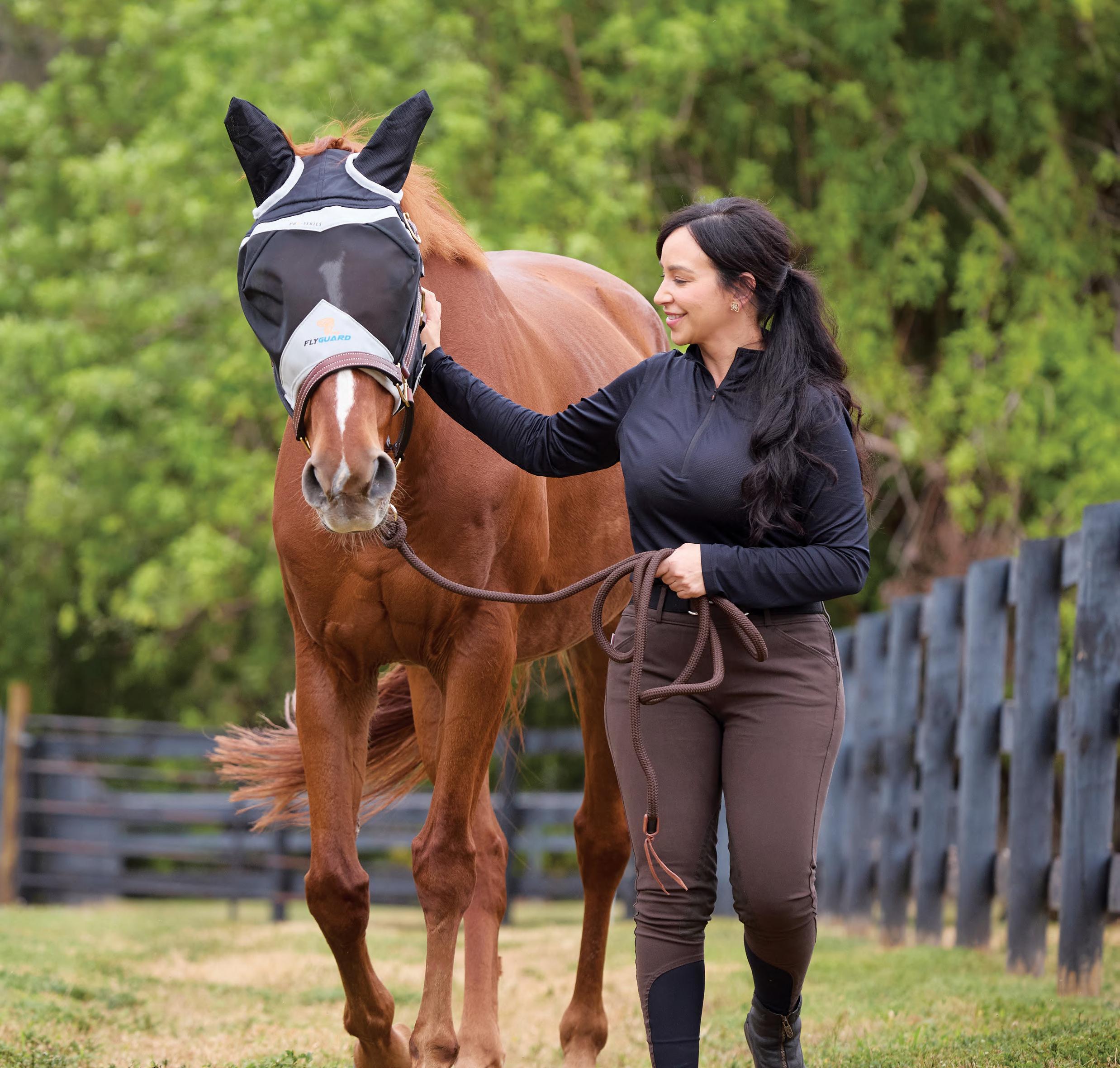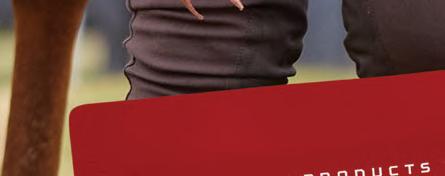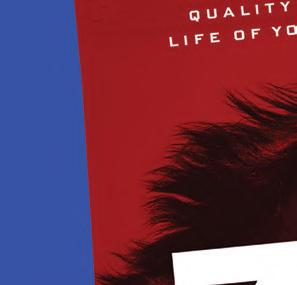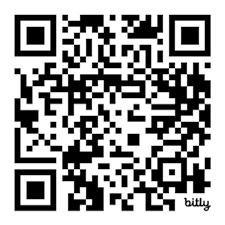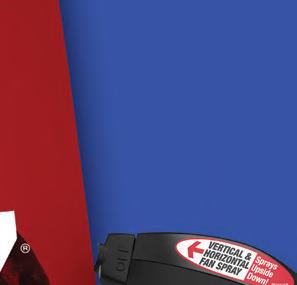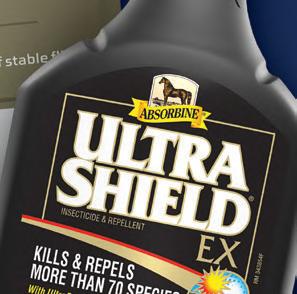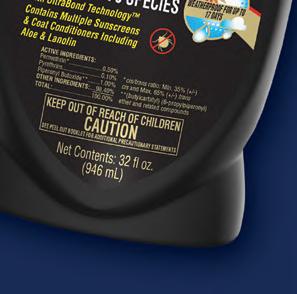
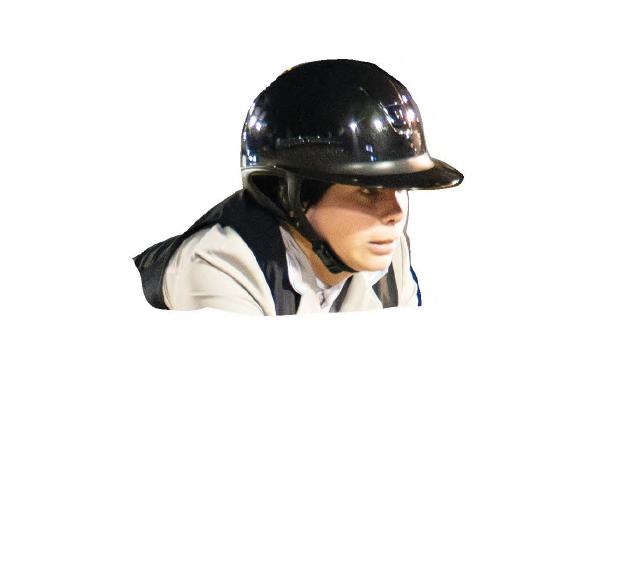






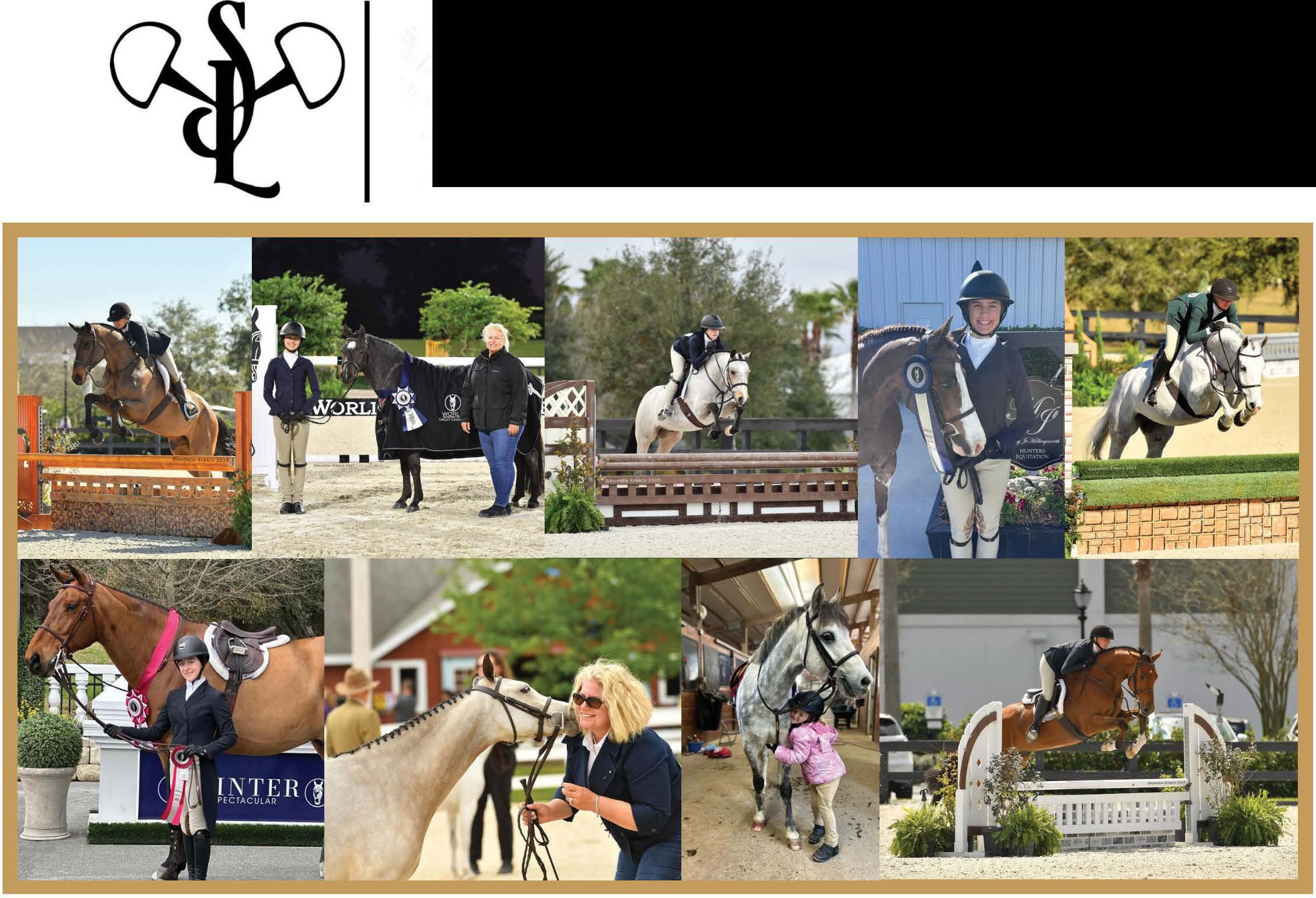
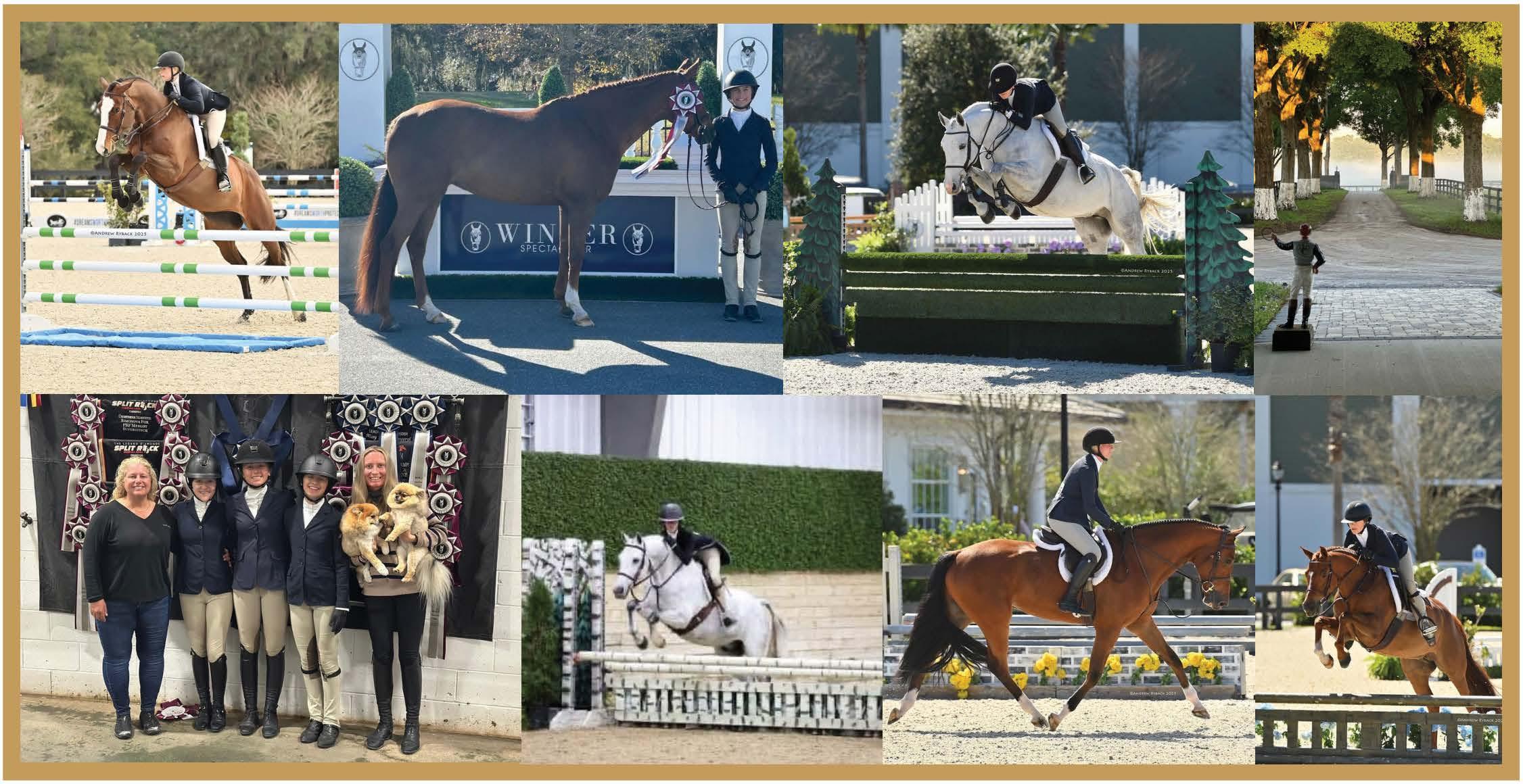
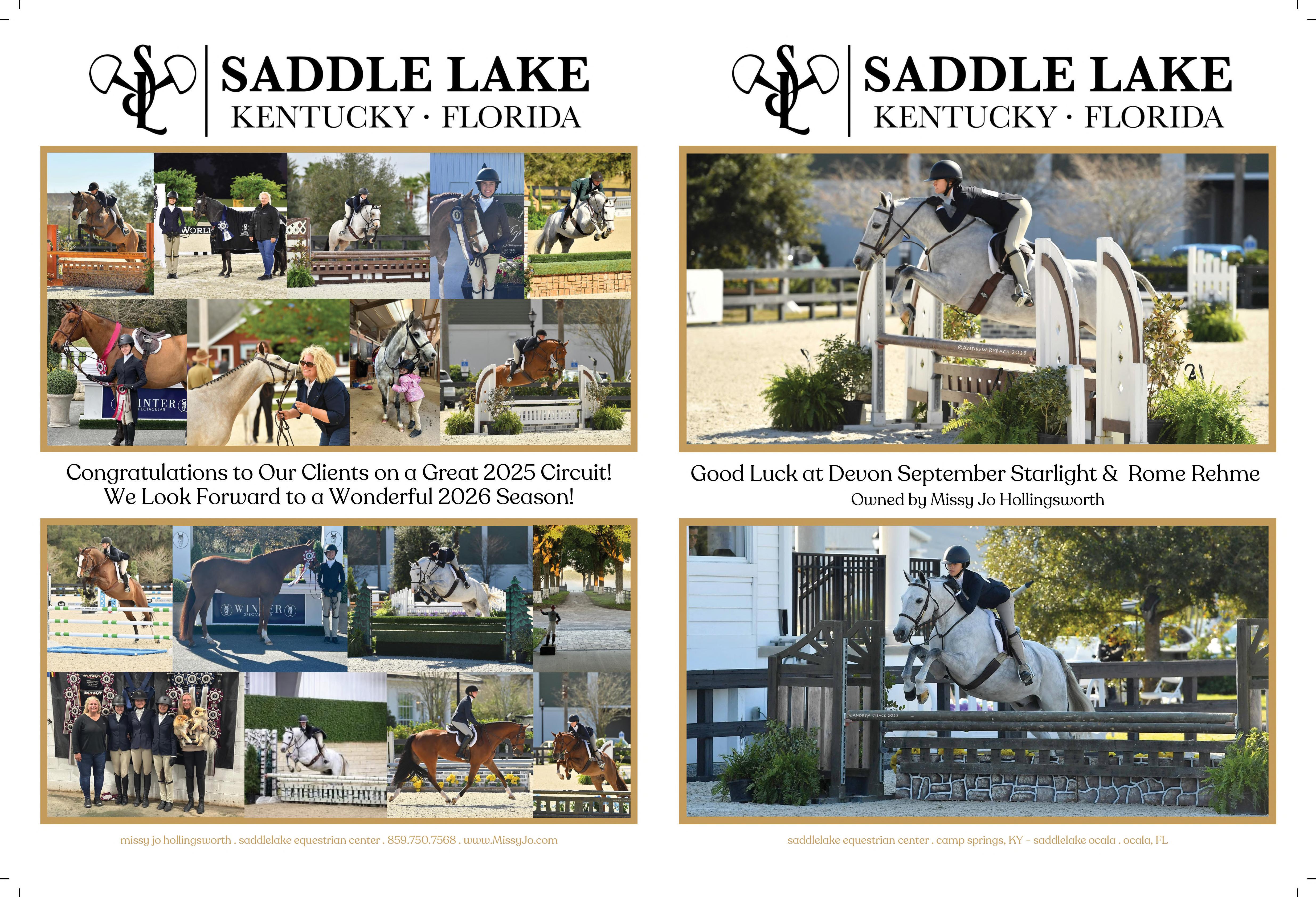

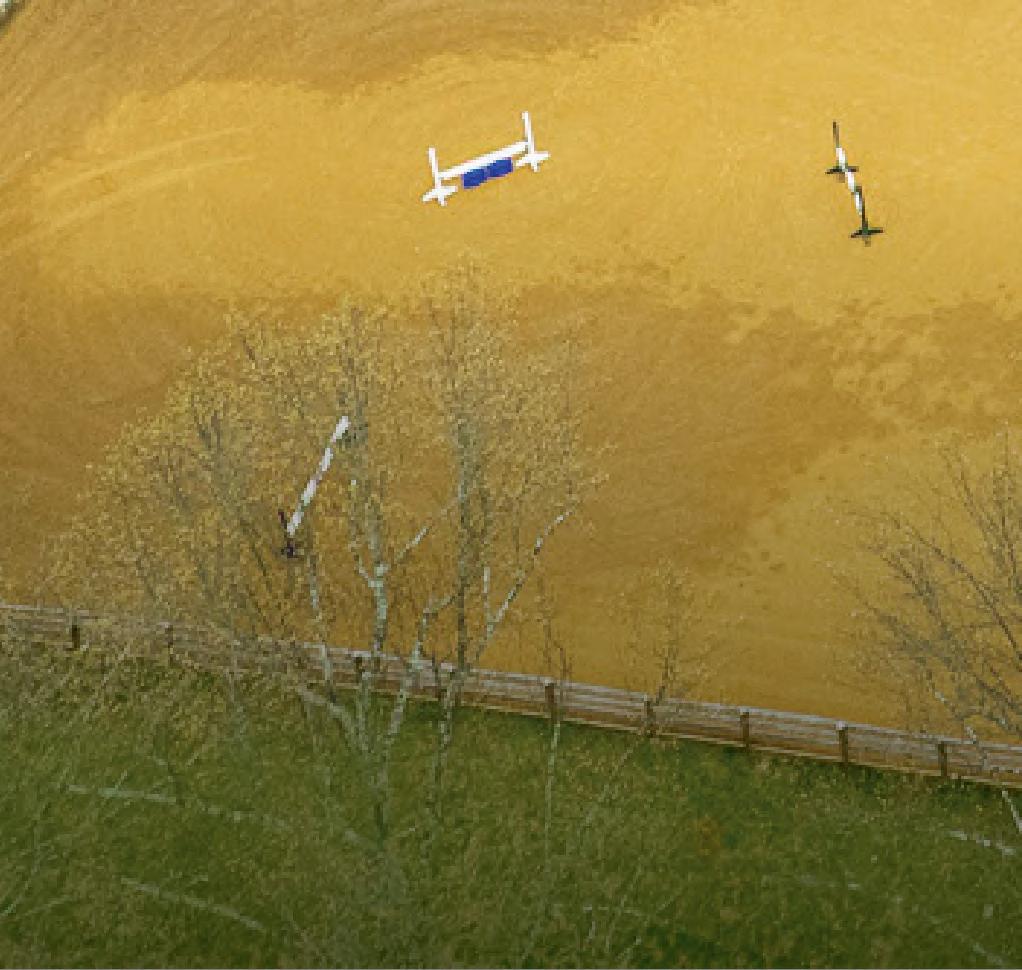
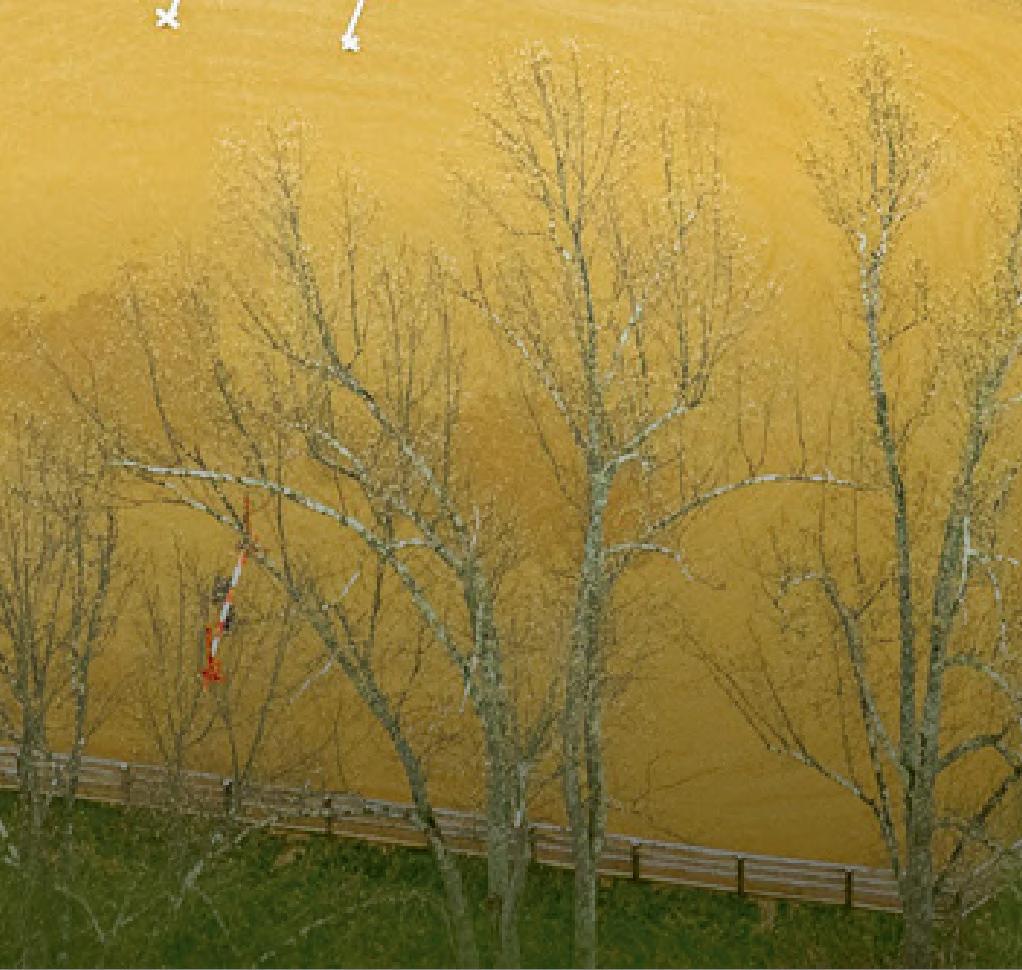
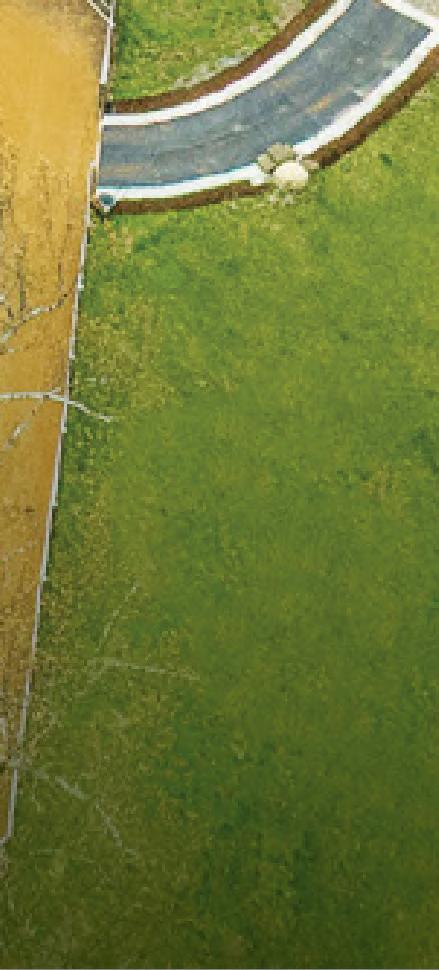
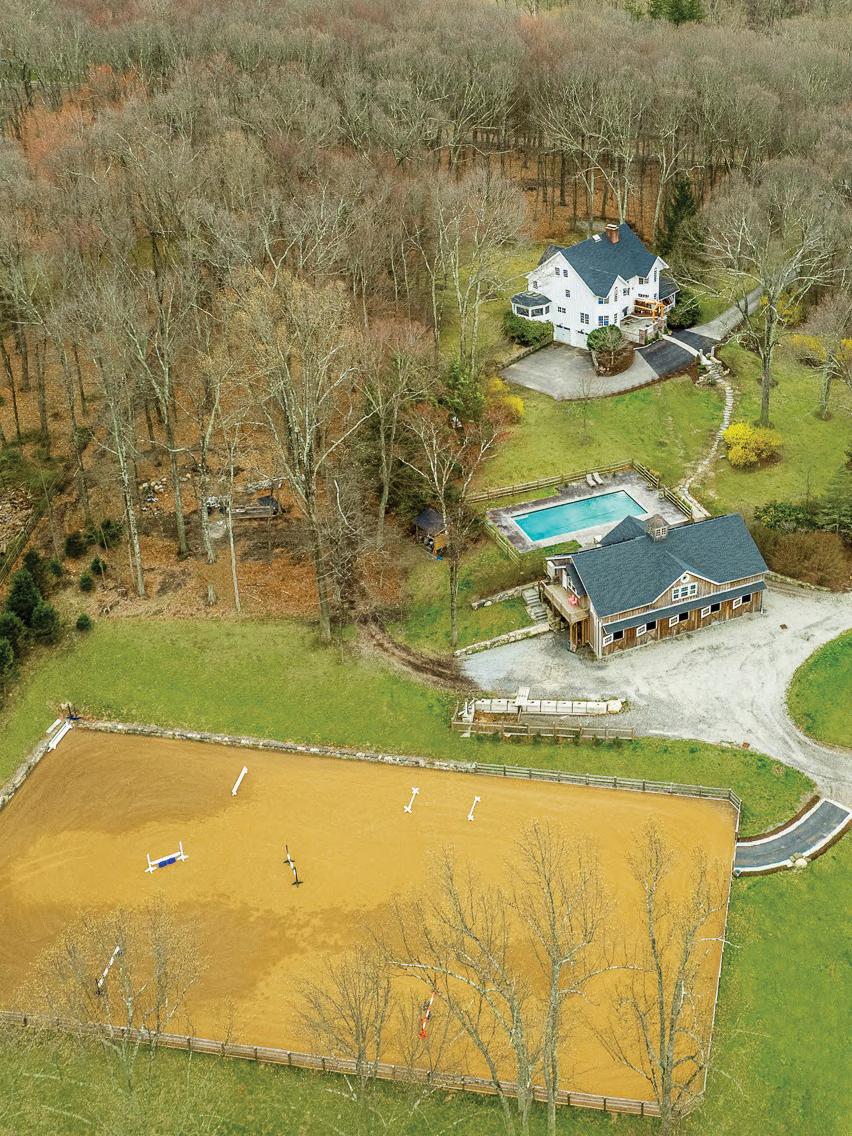





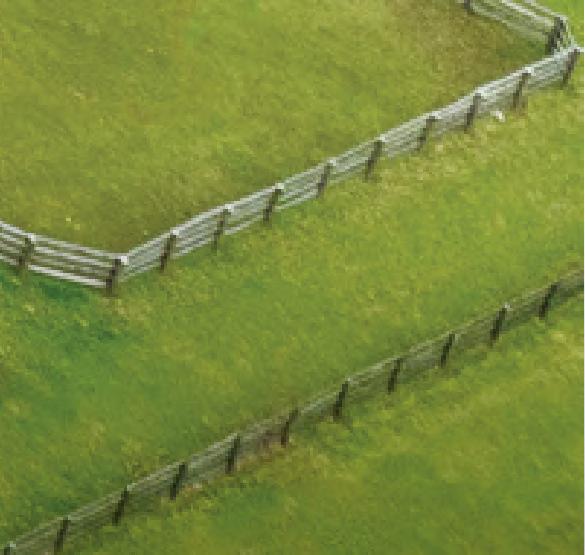




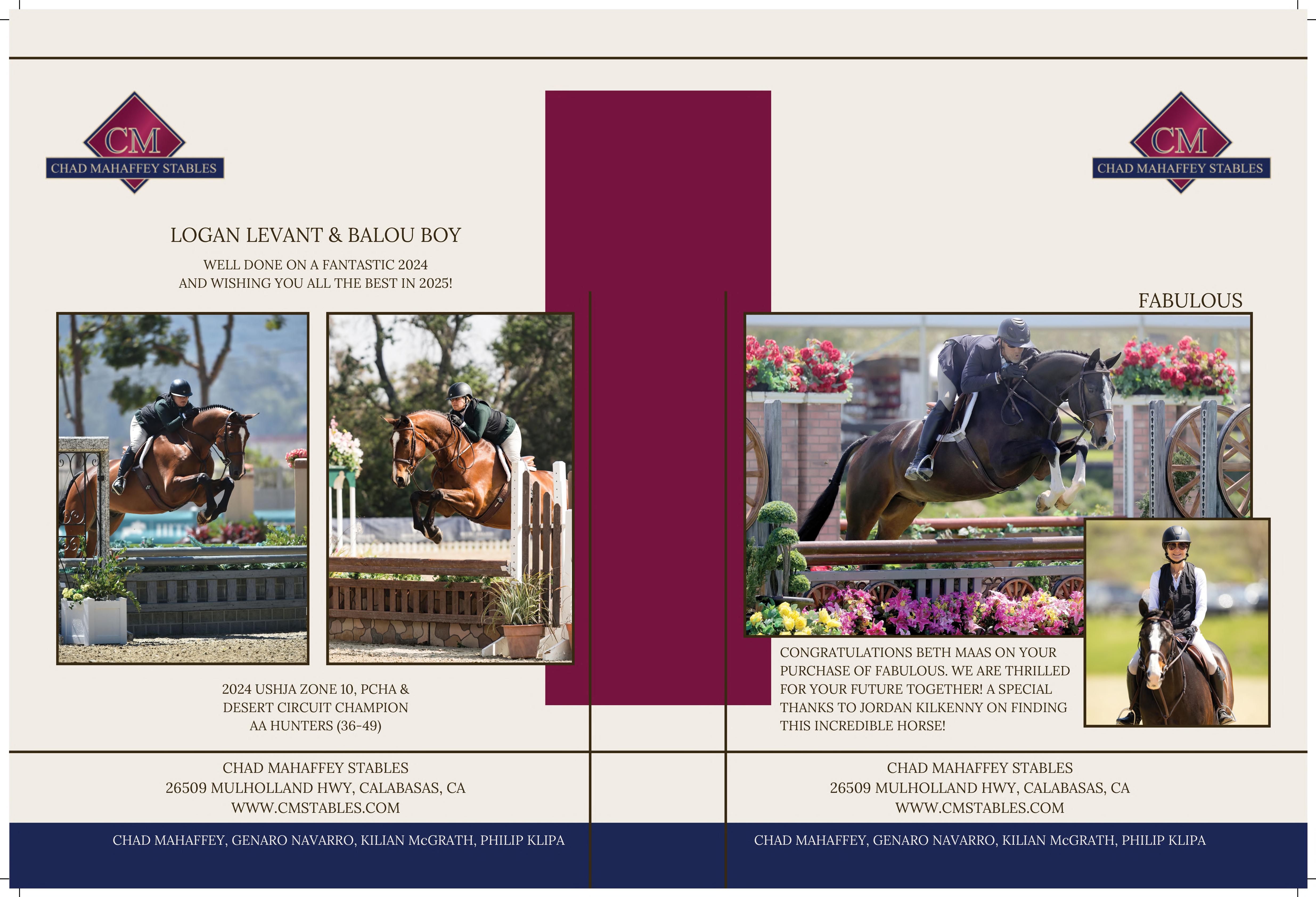



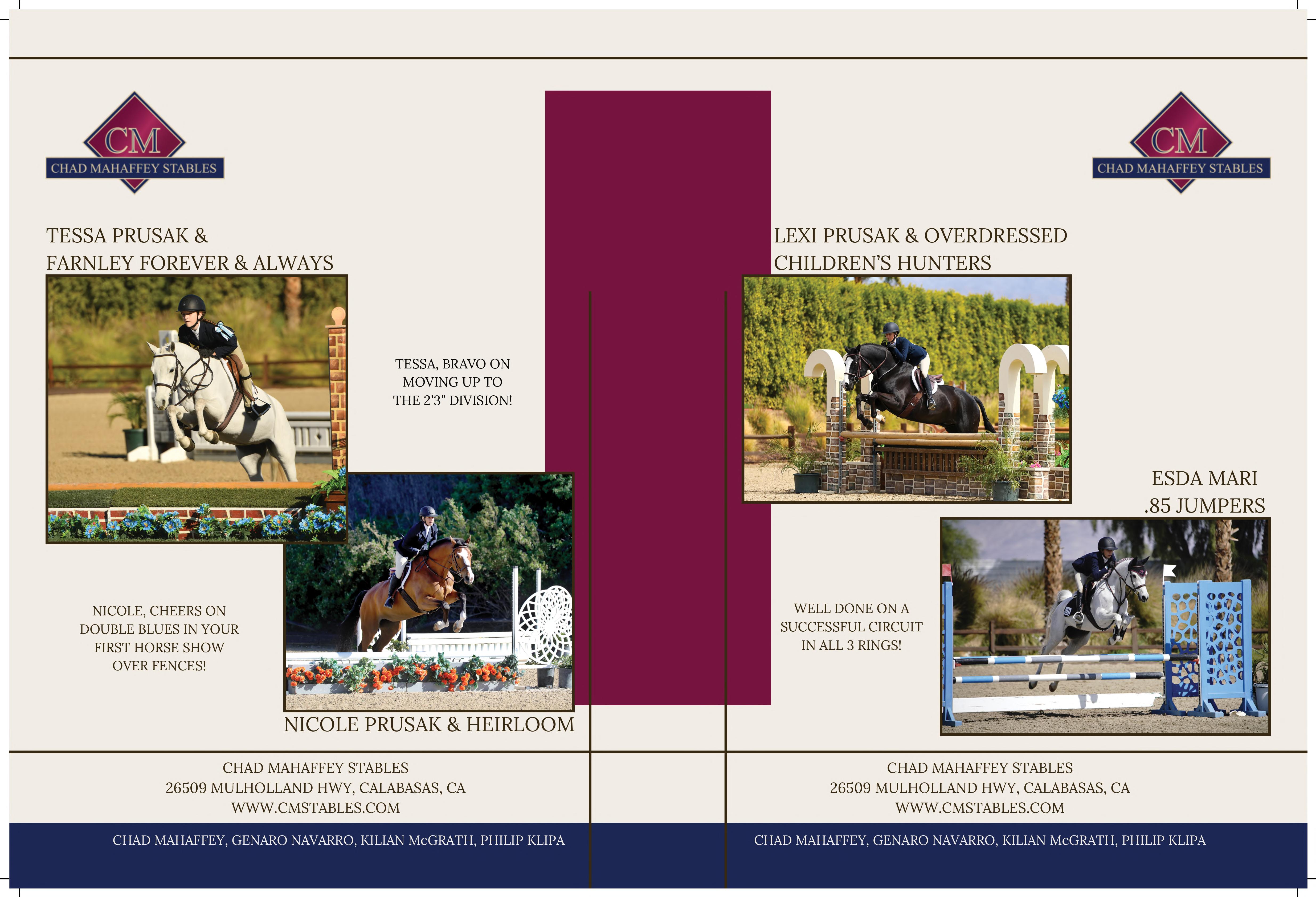

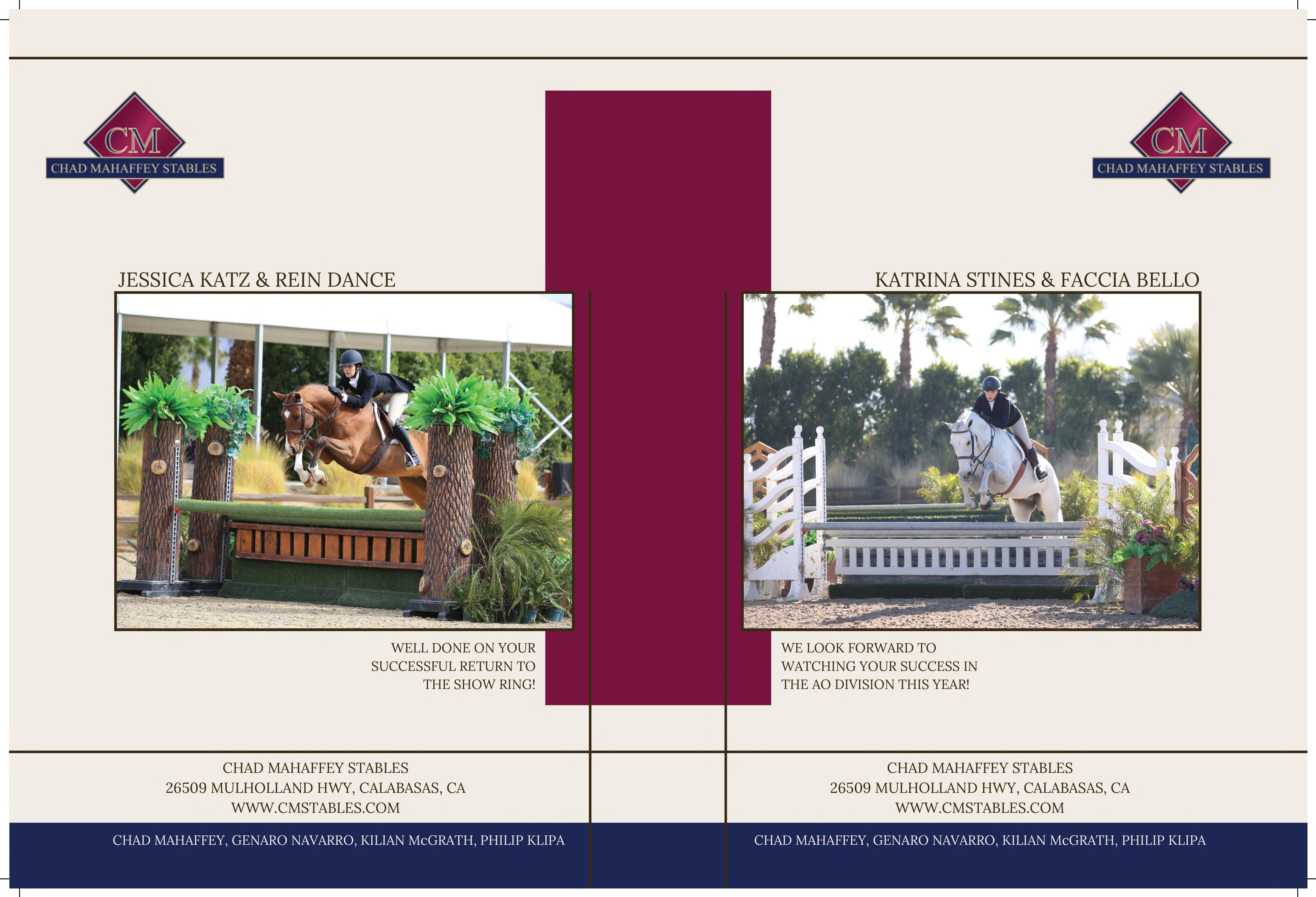

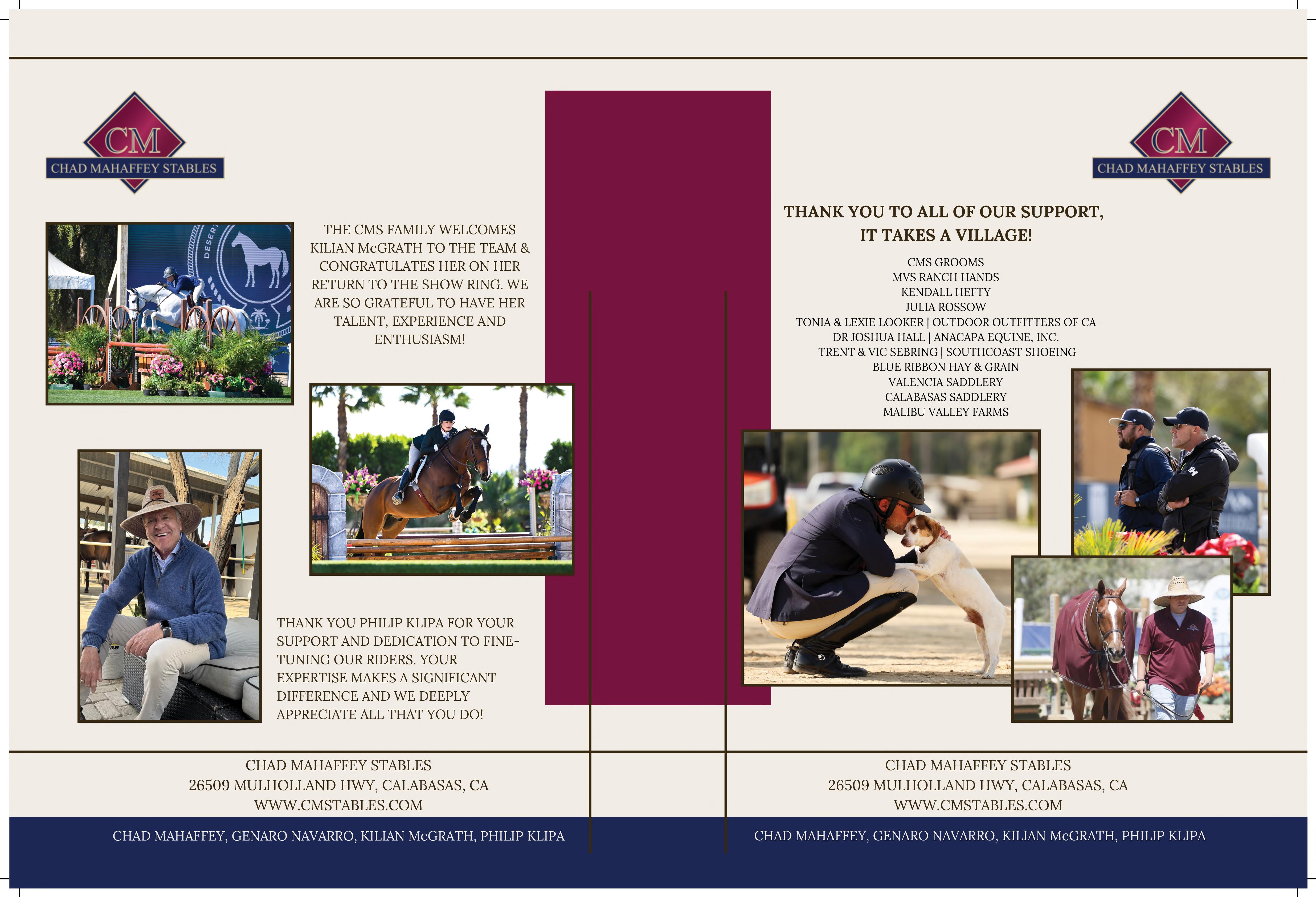



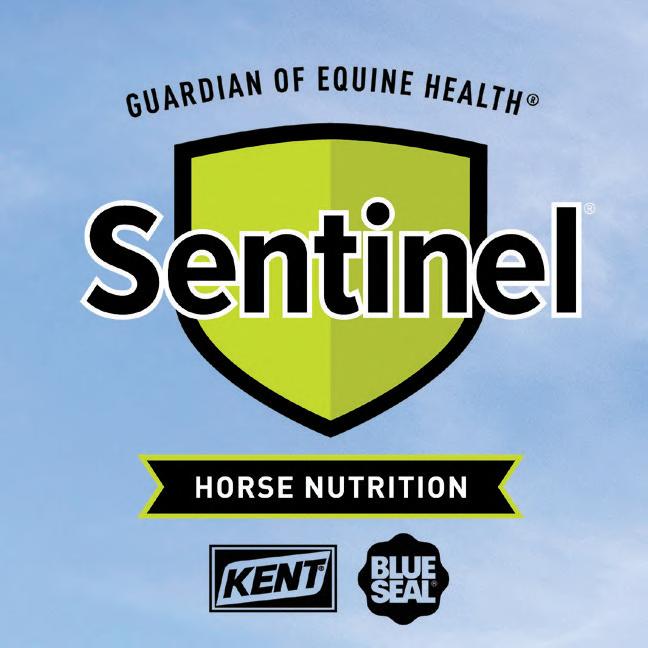
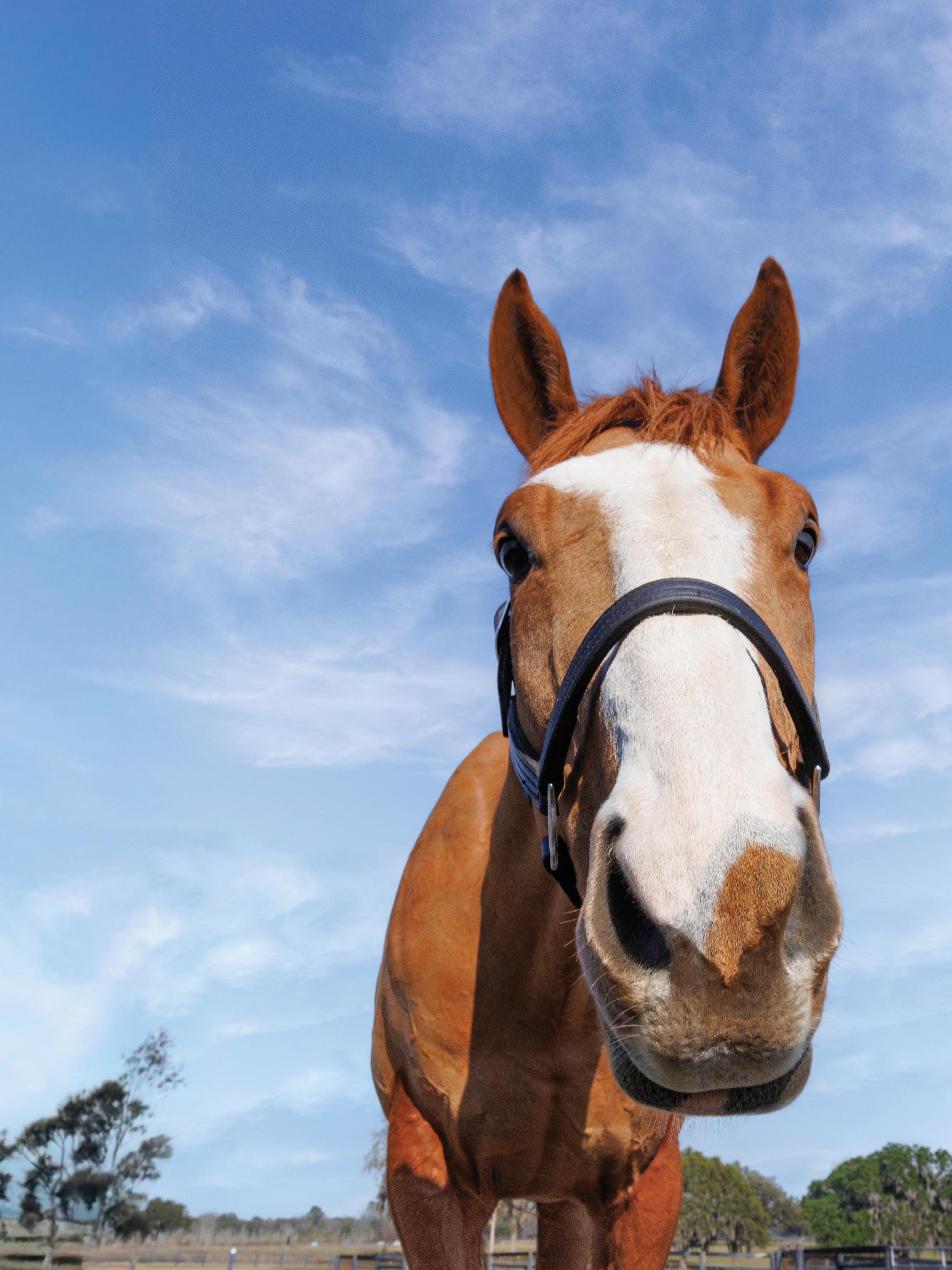


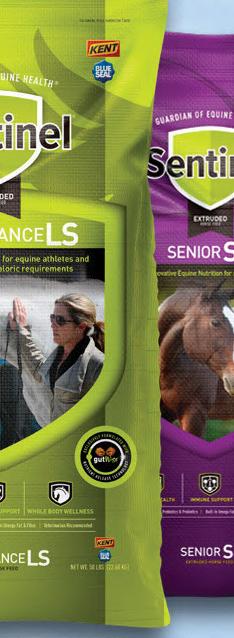
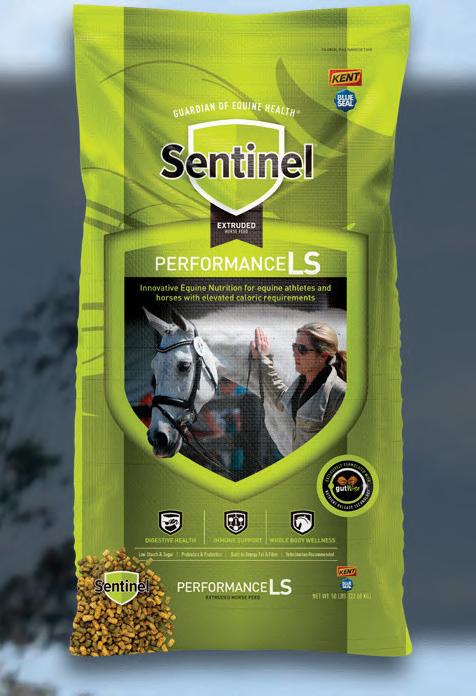




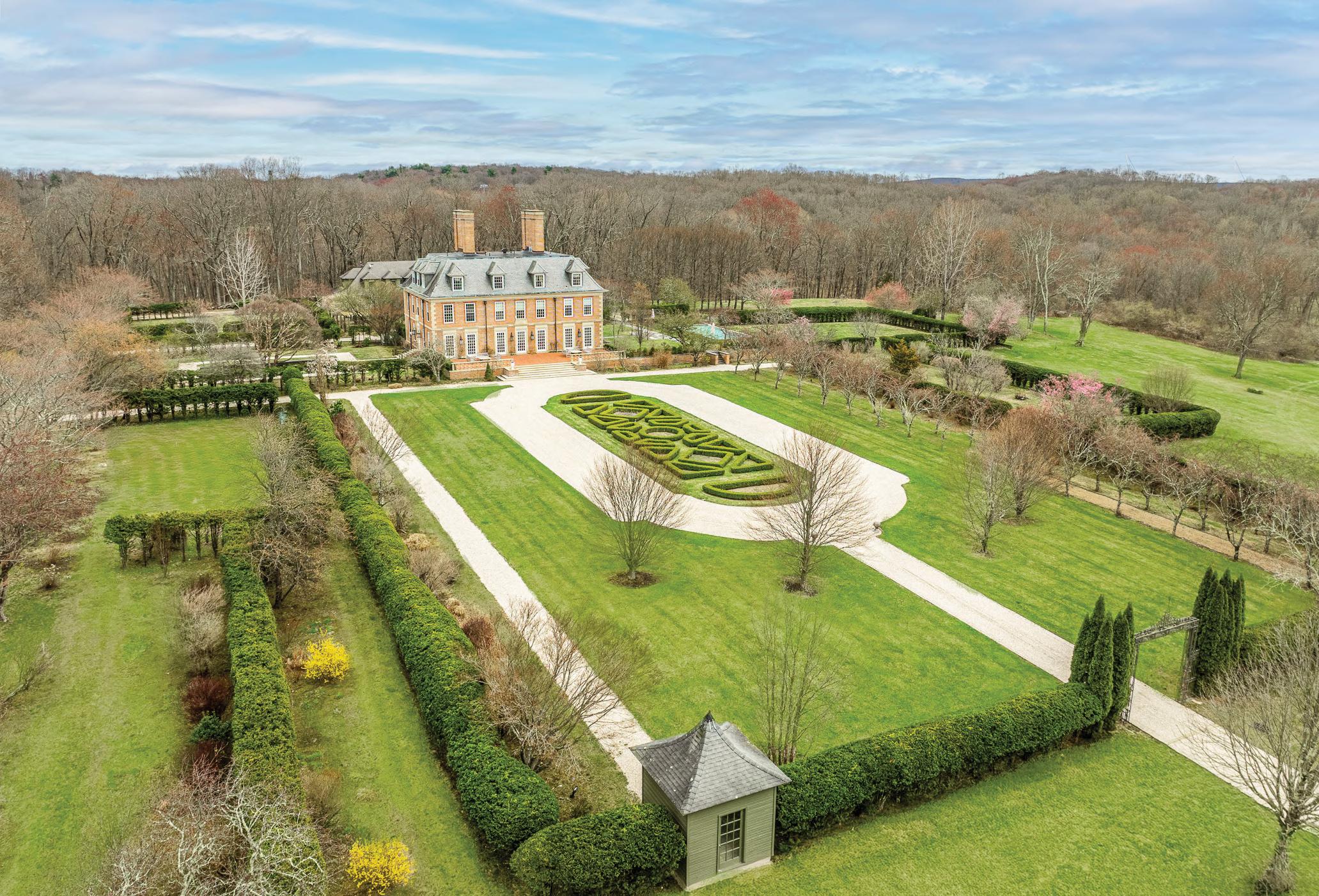
83 + ACRES | 10,700 SQ. FT. | 11 STALLS
DIRECT ACCESS TO BRIDLE TRAILS
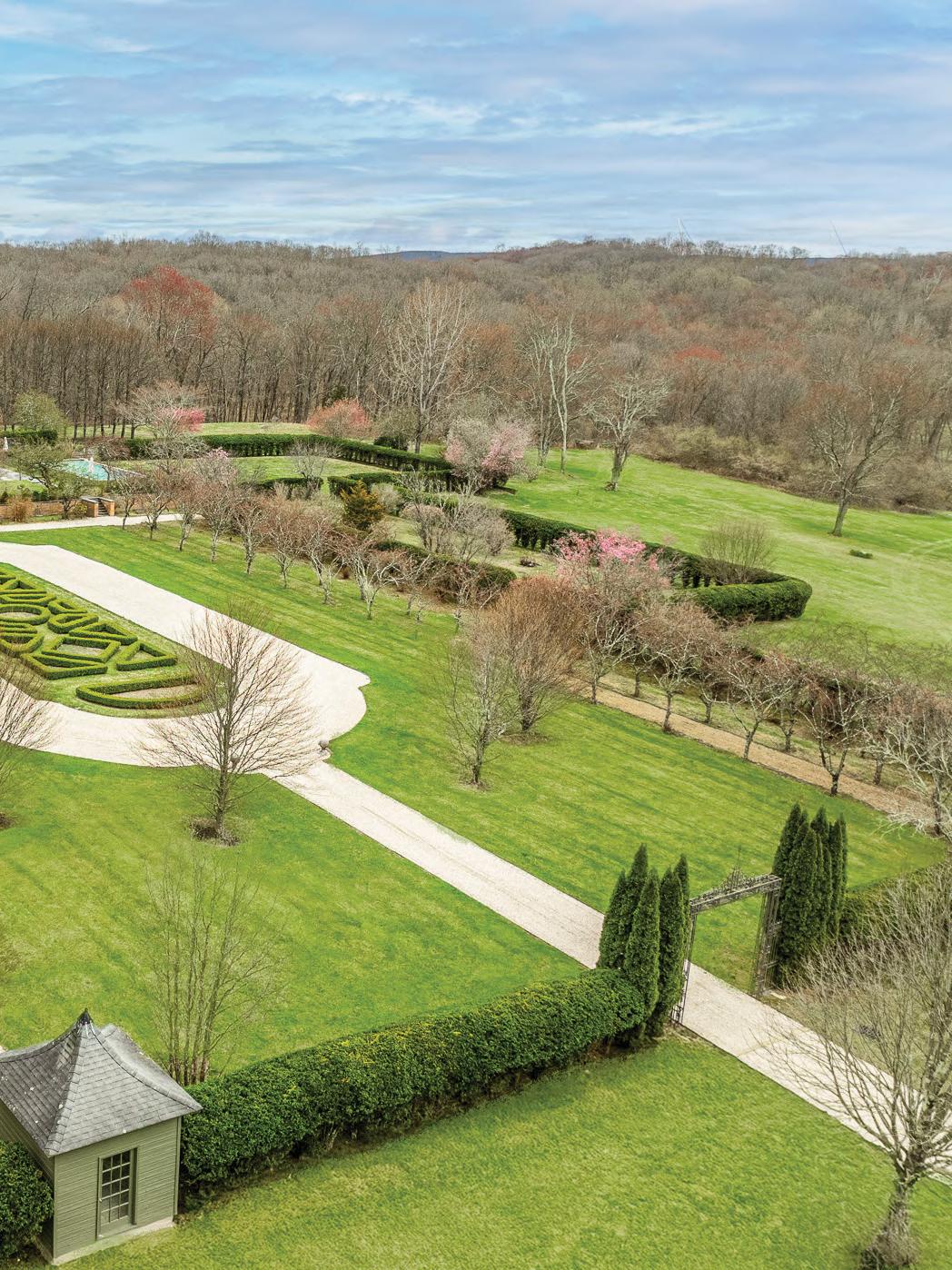

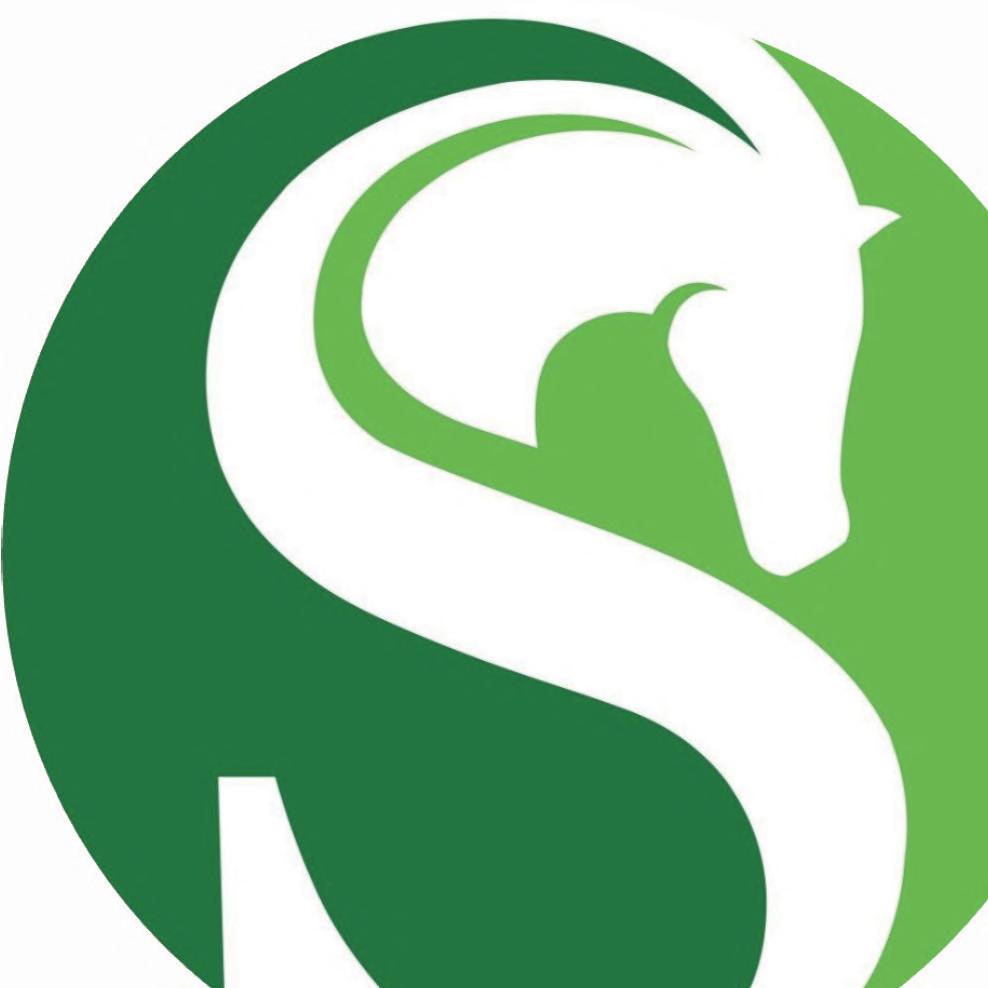

T h e H a m e l F a m i l y
R i c h f i e l d , W I a n d We l l i n g t o n , F L
I n p a r t n e r s h i p w i t h S e a C h a n g e F a r m
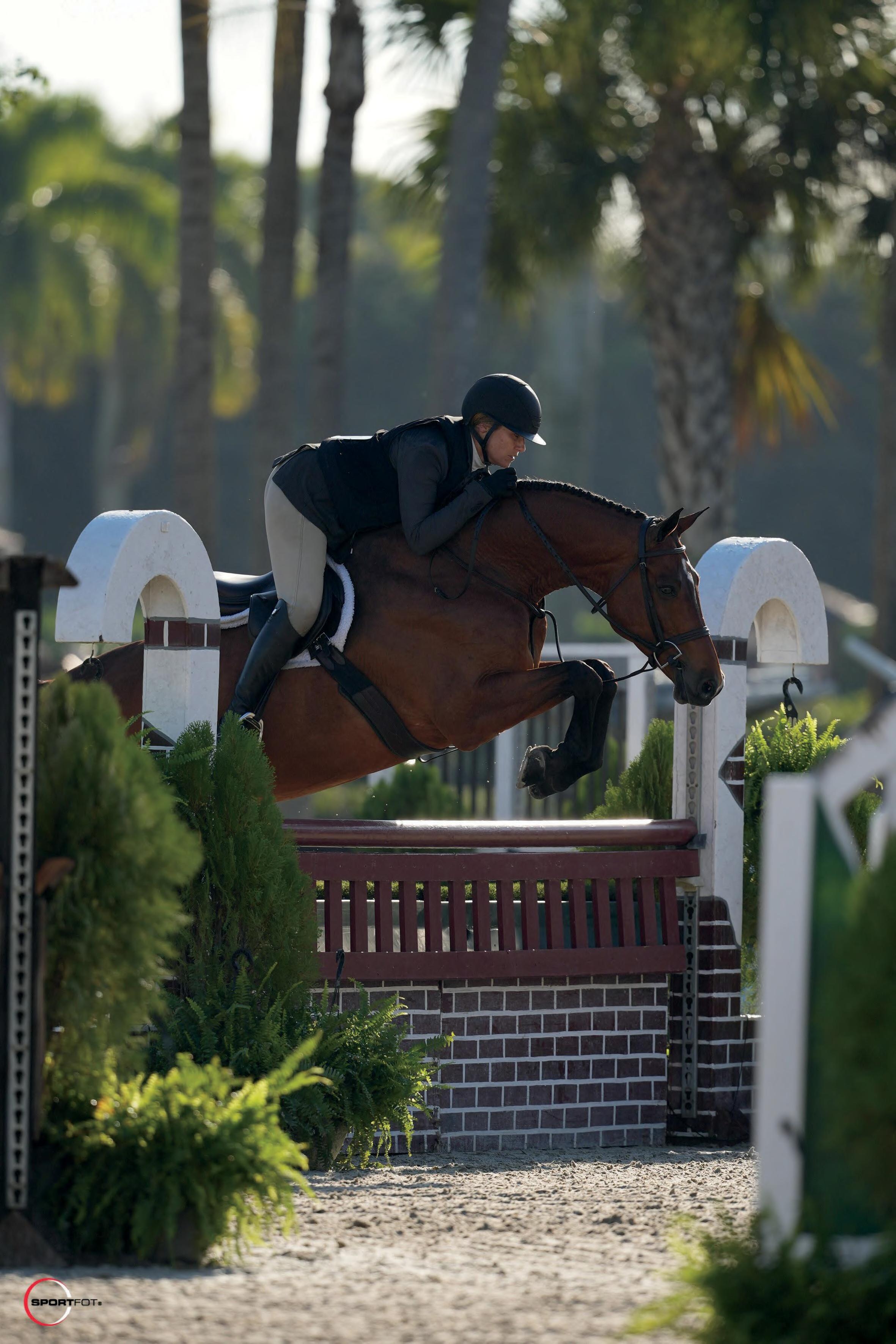
W o r t h y 2 0 1 1 H o l s t e i n e r G e l d i n g W E F 2 0 2 5 2 x Tr i c o l o r W i n n e r
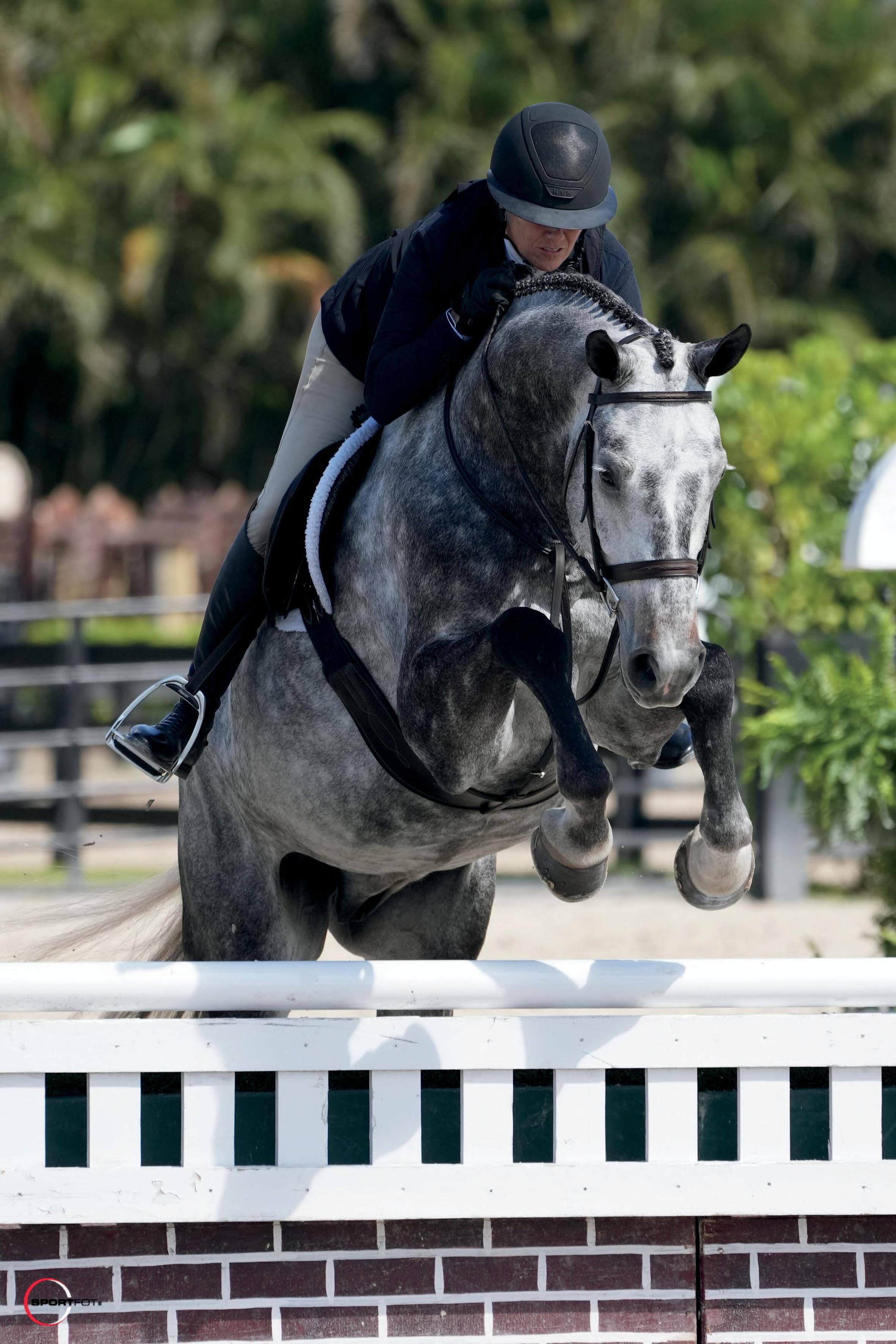
S V F C h a r l e s
2 0 1 8 H o l s t e i n e r G e l d i n g
W E F 2 0 2 5 Tr i c o l o r W i n n e r


S V F C h a n g e u p
2 0 1 7 K P W N G e l d i n g
W E F 2 0 2 5 C i r c u i t C h a m p i o n
P h o t o c r e d i t , S p o r t f o t
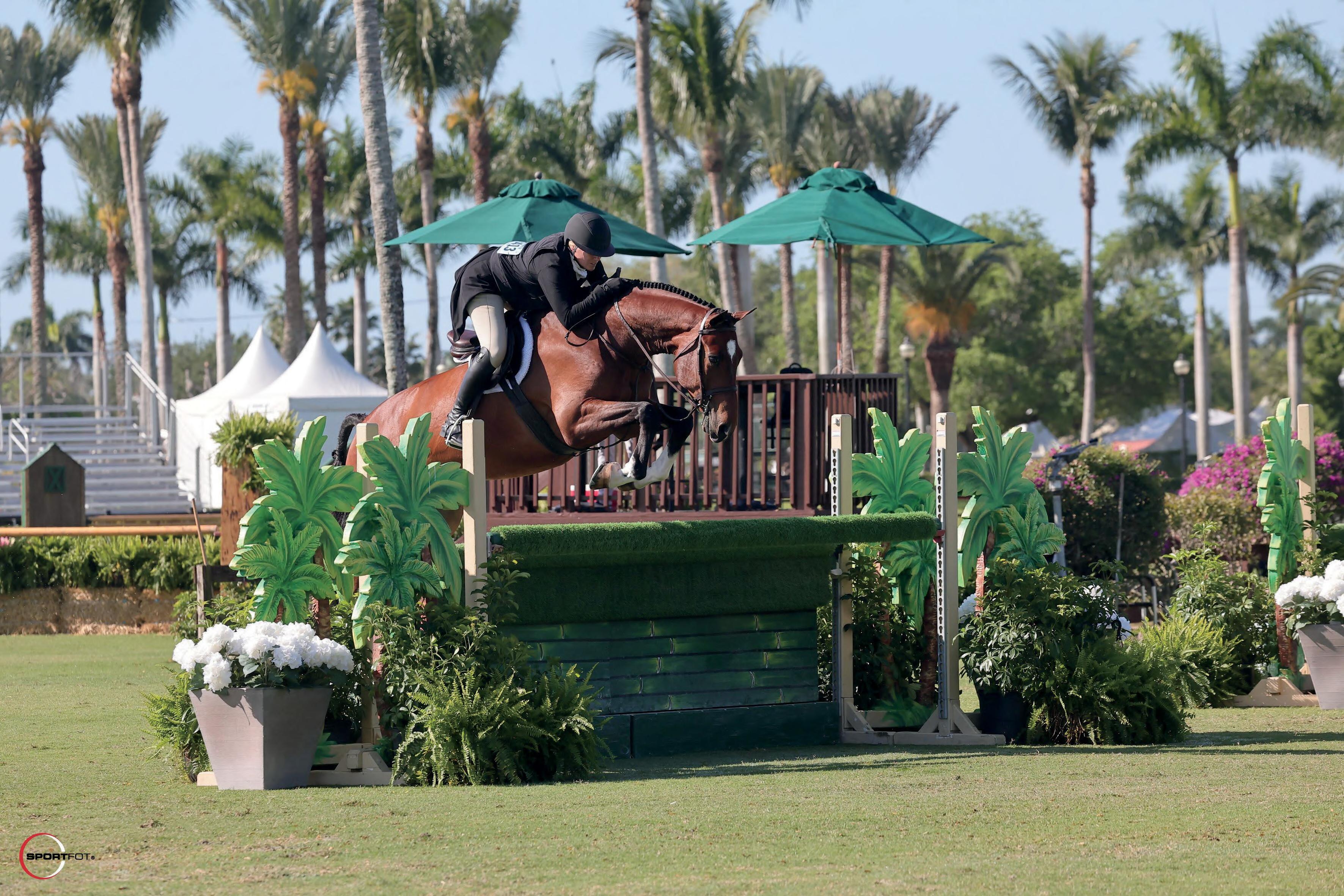
S V F R i c h i e
2 0 1 8 H o l s t e i n e r G e l d i n g
W E F 2 0 2 5 Tr i c o l o r W i n n e r
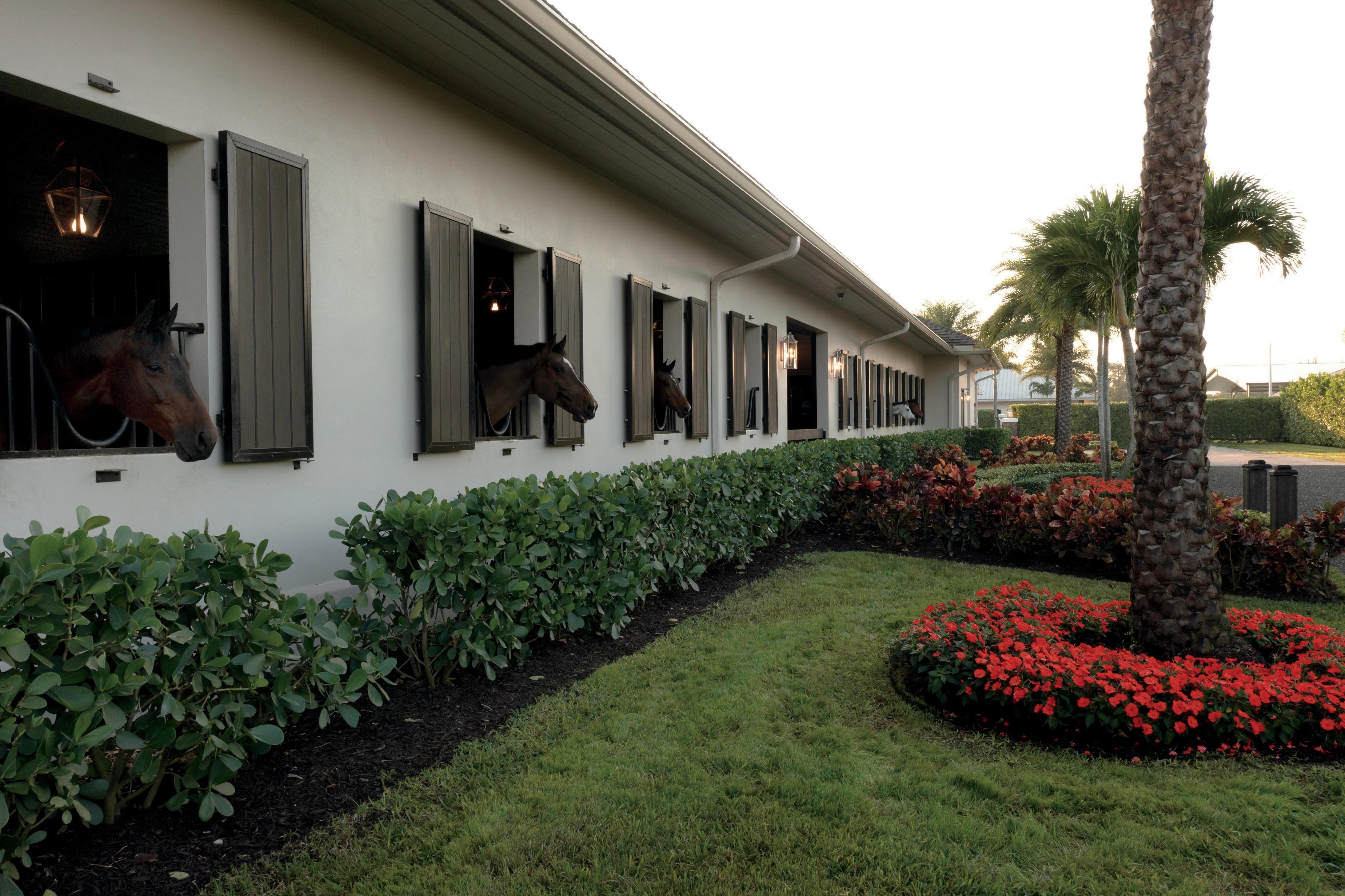
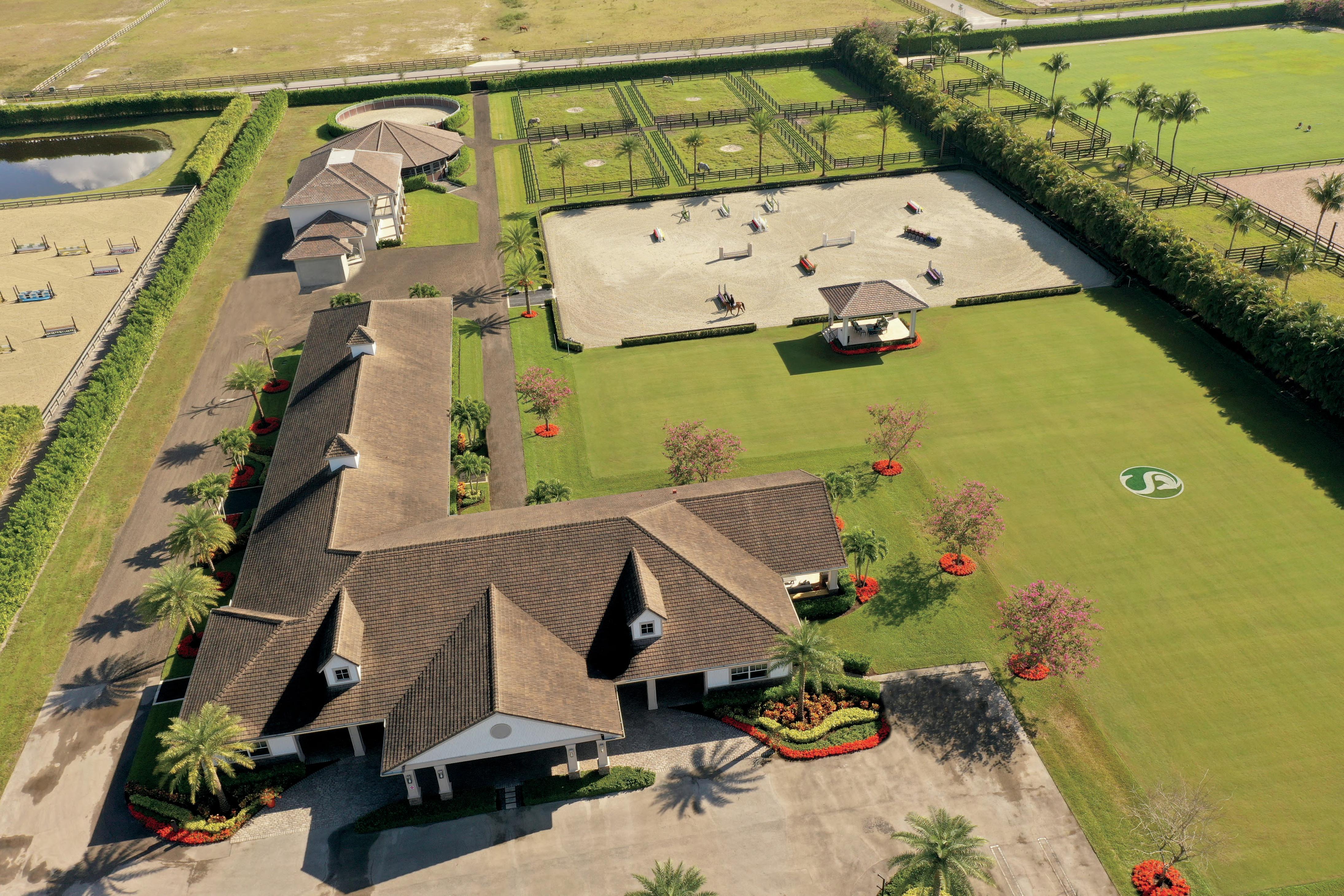


P
L o o k i n g f o r W E F
2 0 2 6 s t a l l s o r y o u r
n e x t h u n t e r ?

S U N S E T V I E W F A R M
F a c e b o o k
S u n s e t V i e w F a r m s L L C
I n s t a g r a m
@ s u n s e t v i e w f a r m s l l c
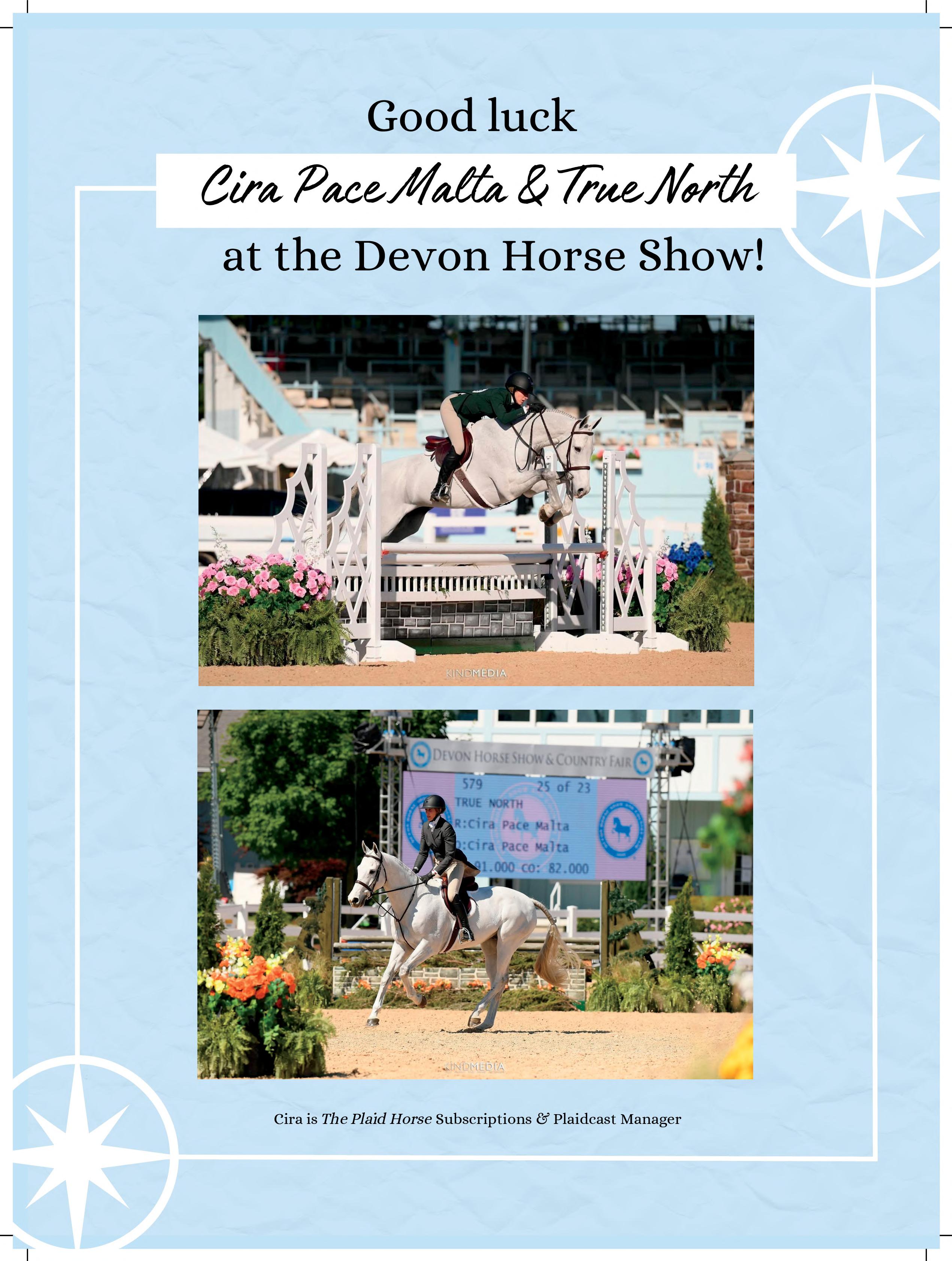
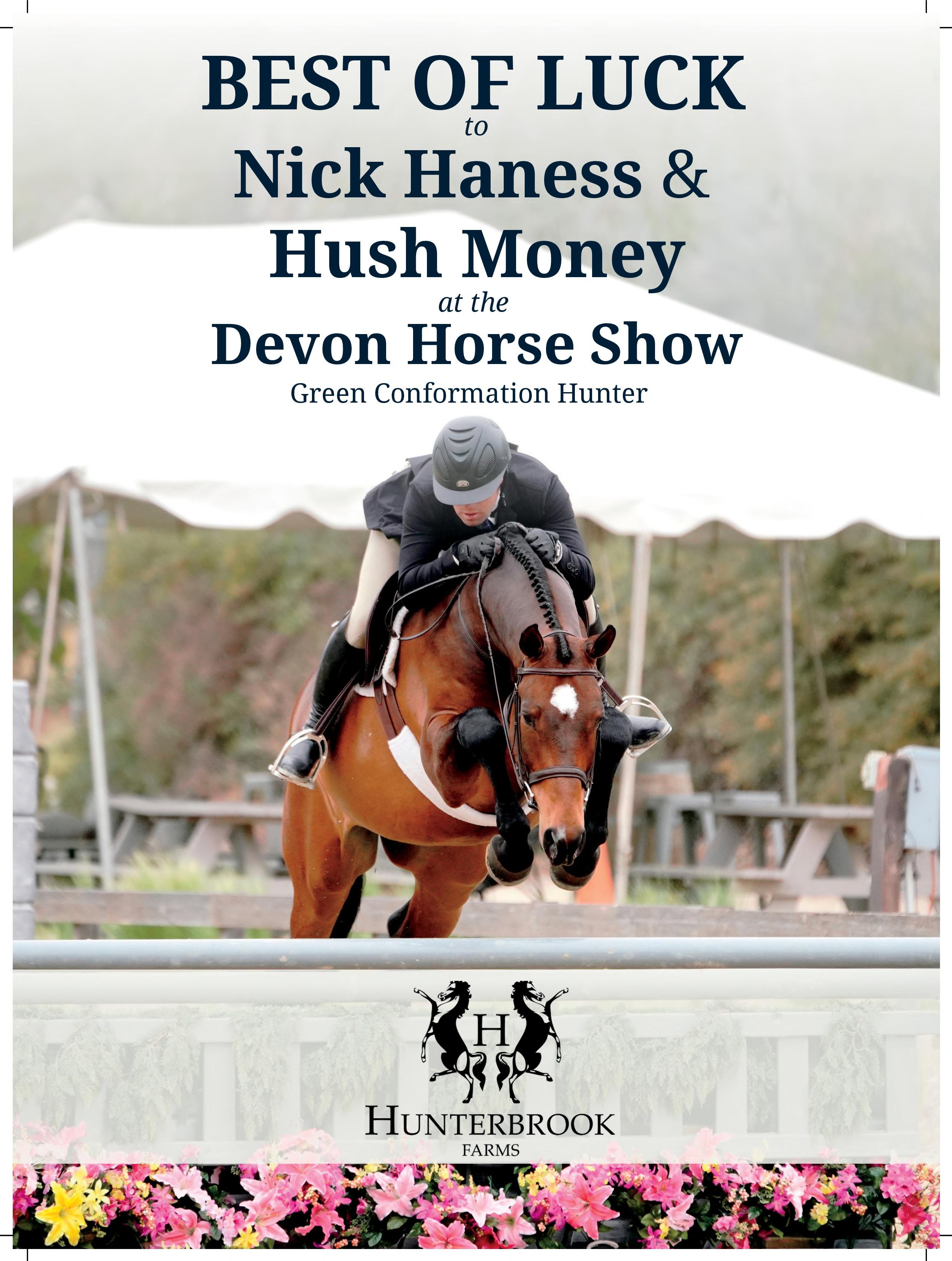
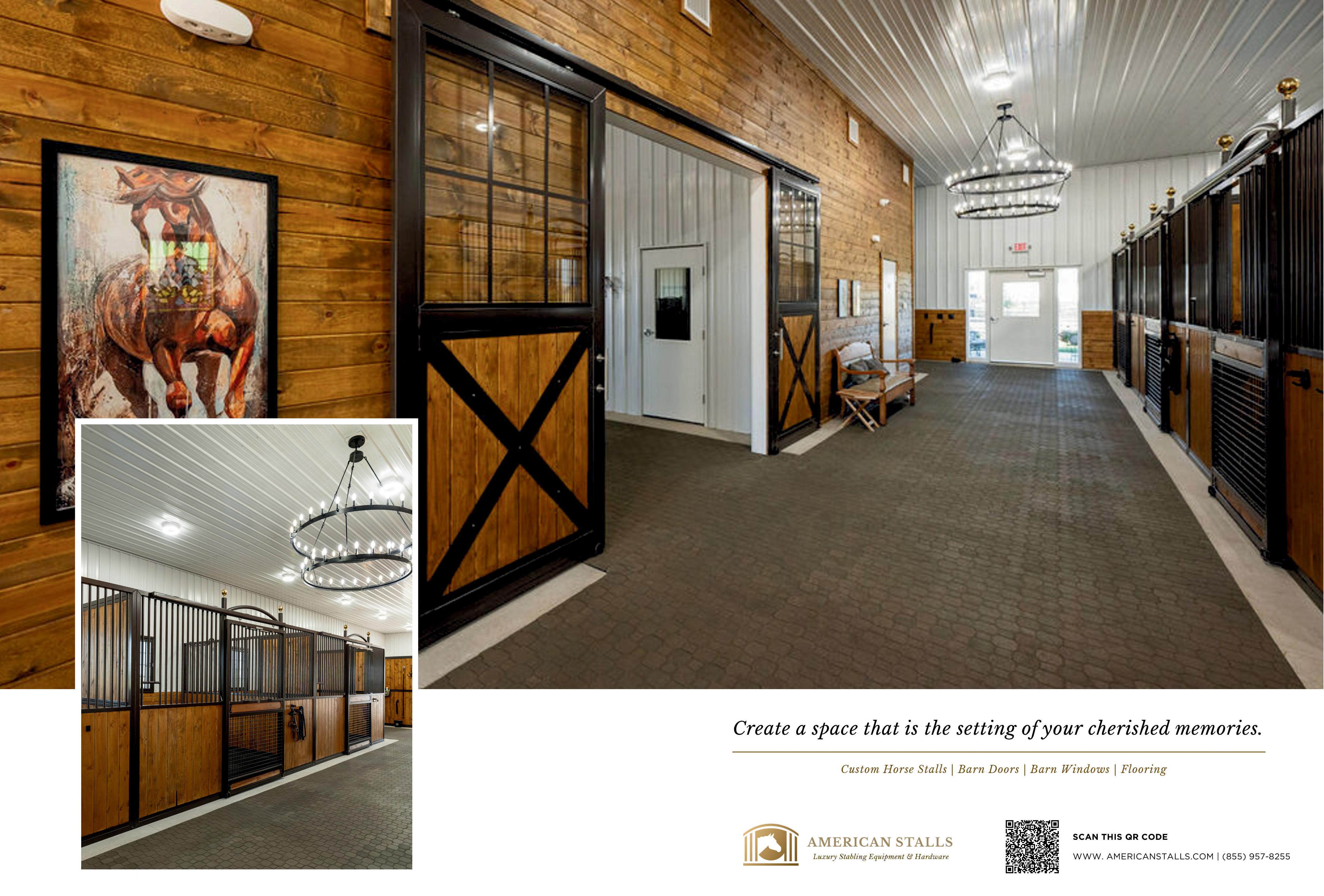


Publisher & Editor-in-Chief

Art Direction

Advertising

Subscriptions & Plaidcast Manager
Plaidcast Production
Online Editor
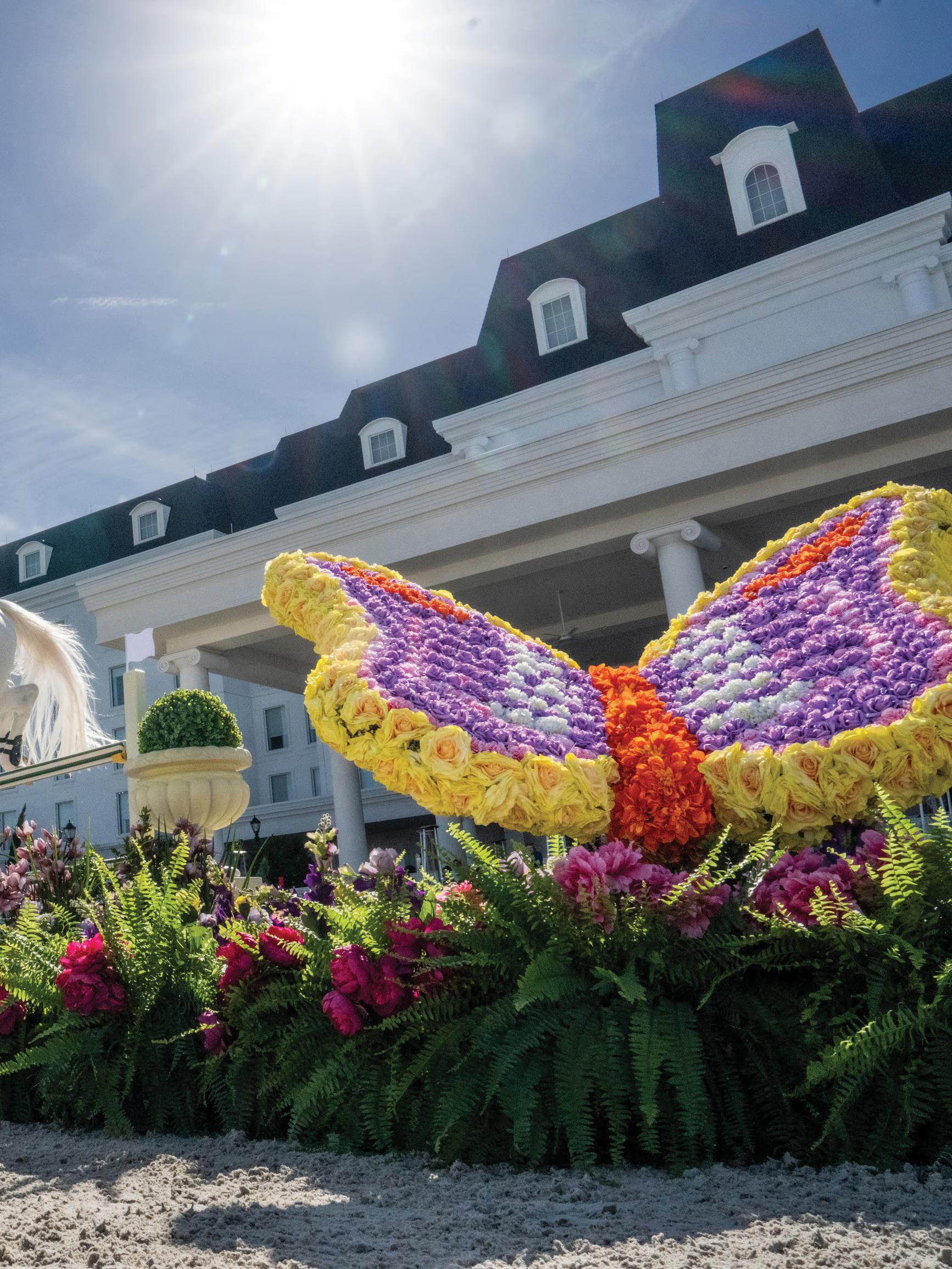
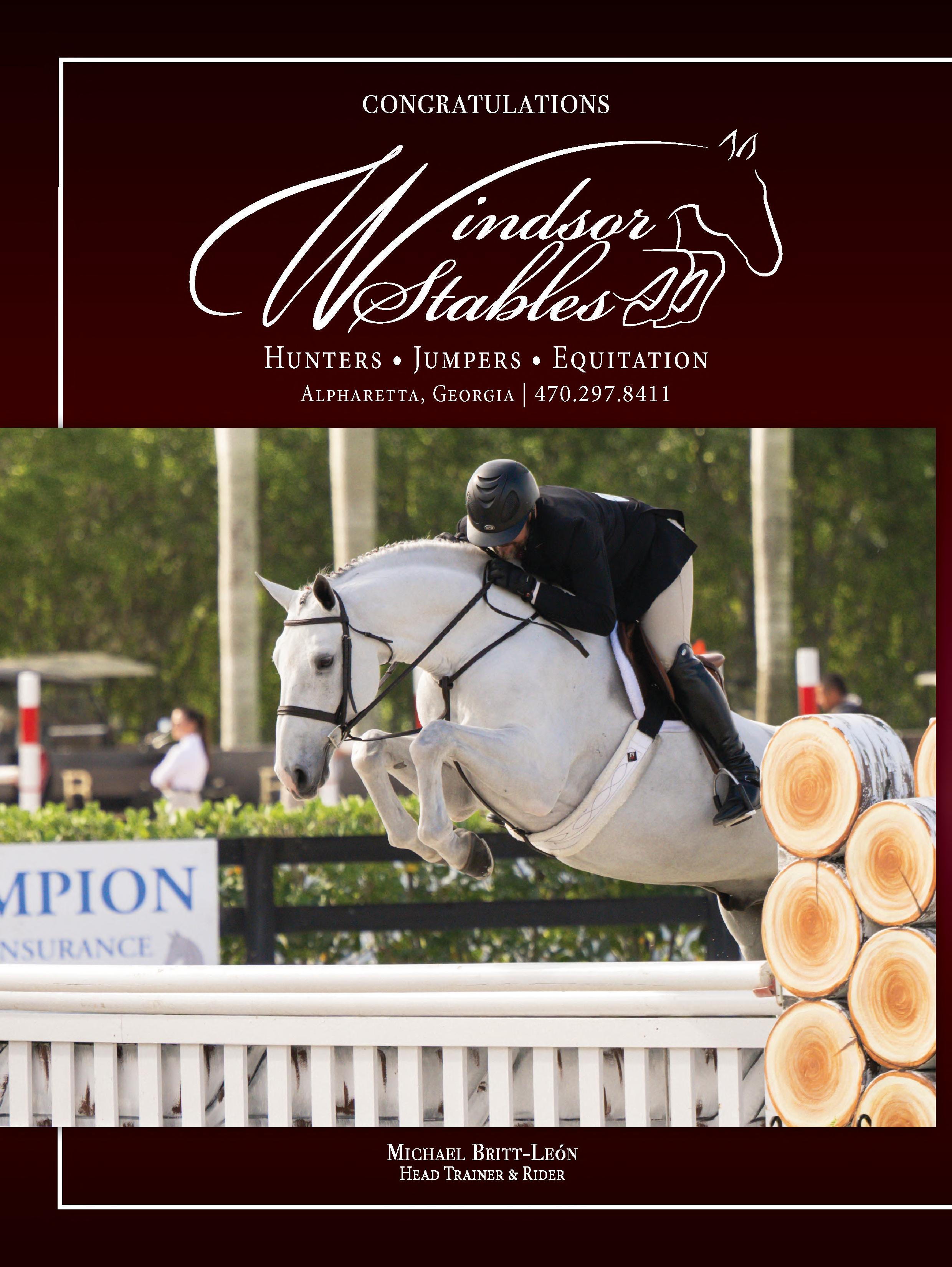
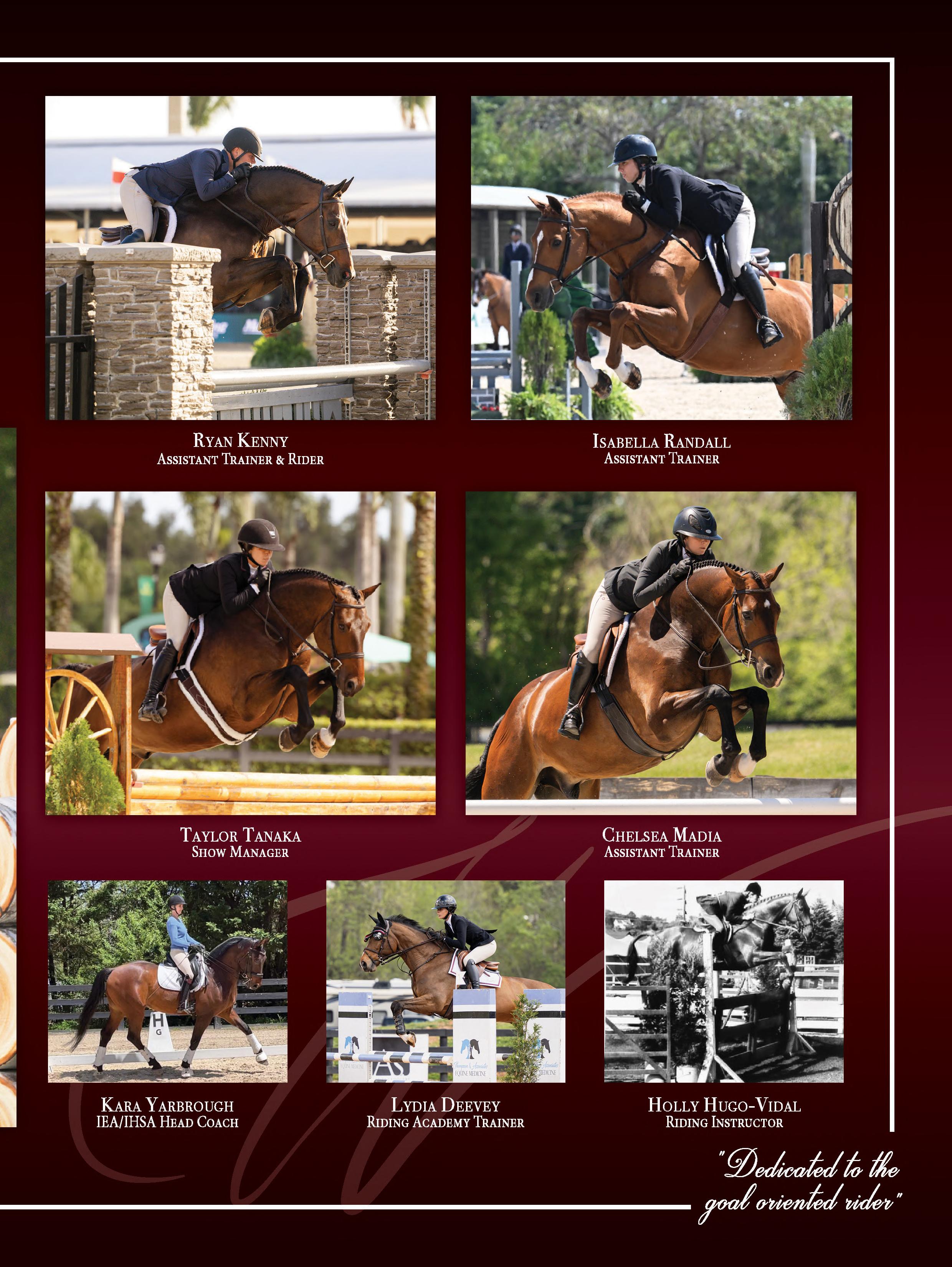
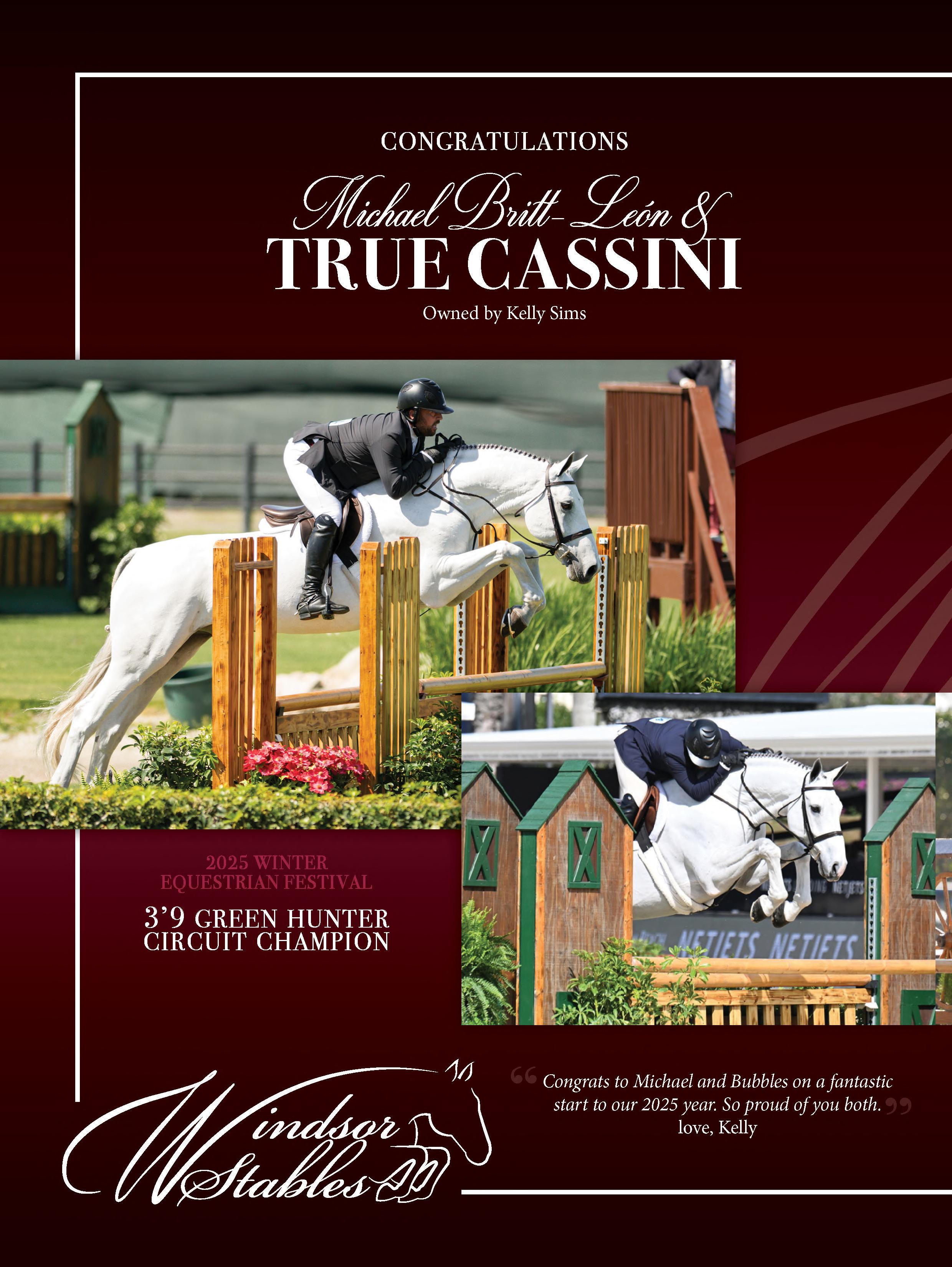
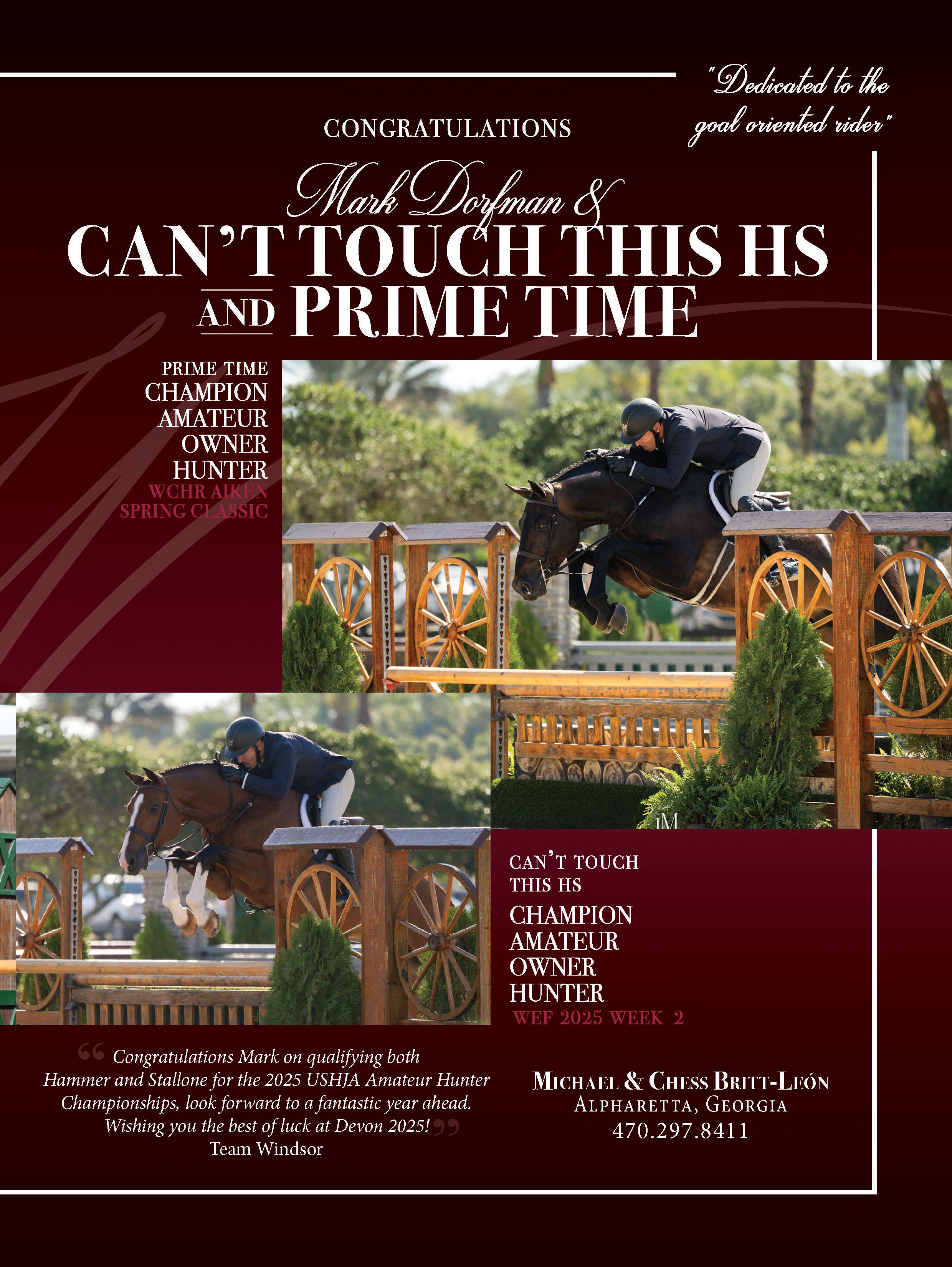
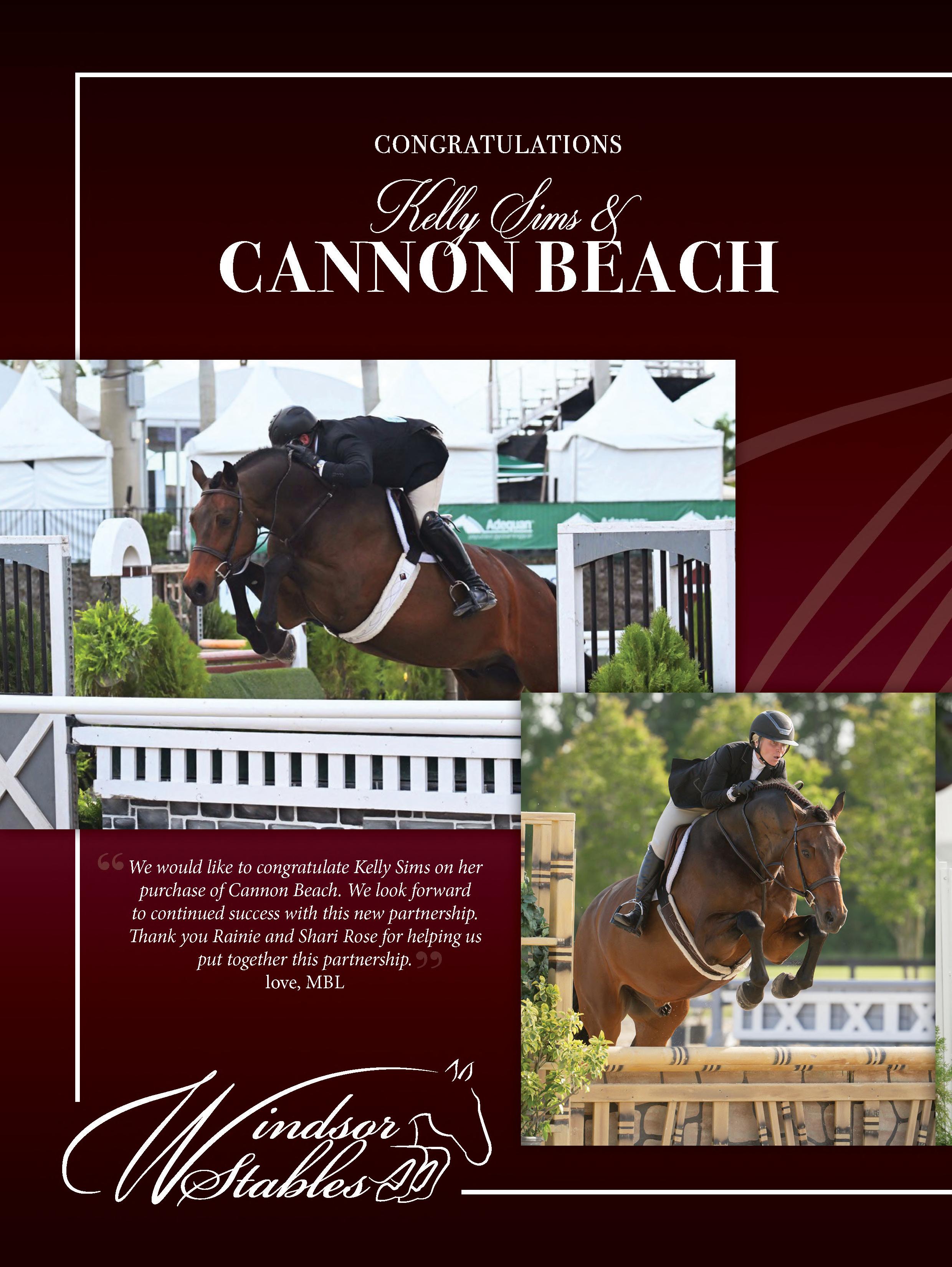
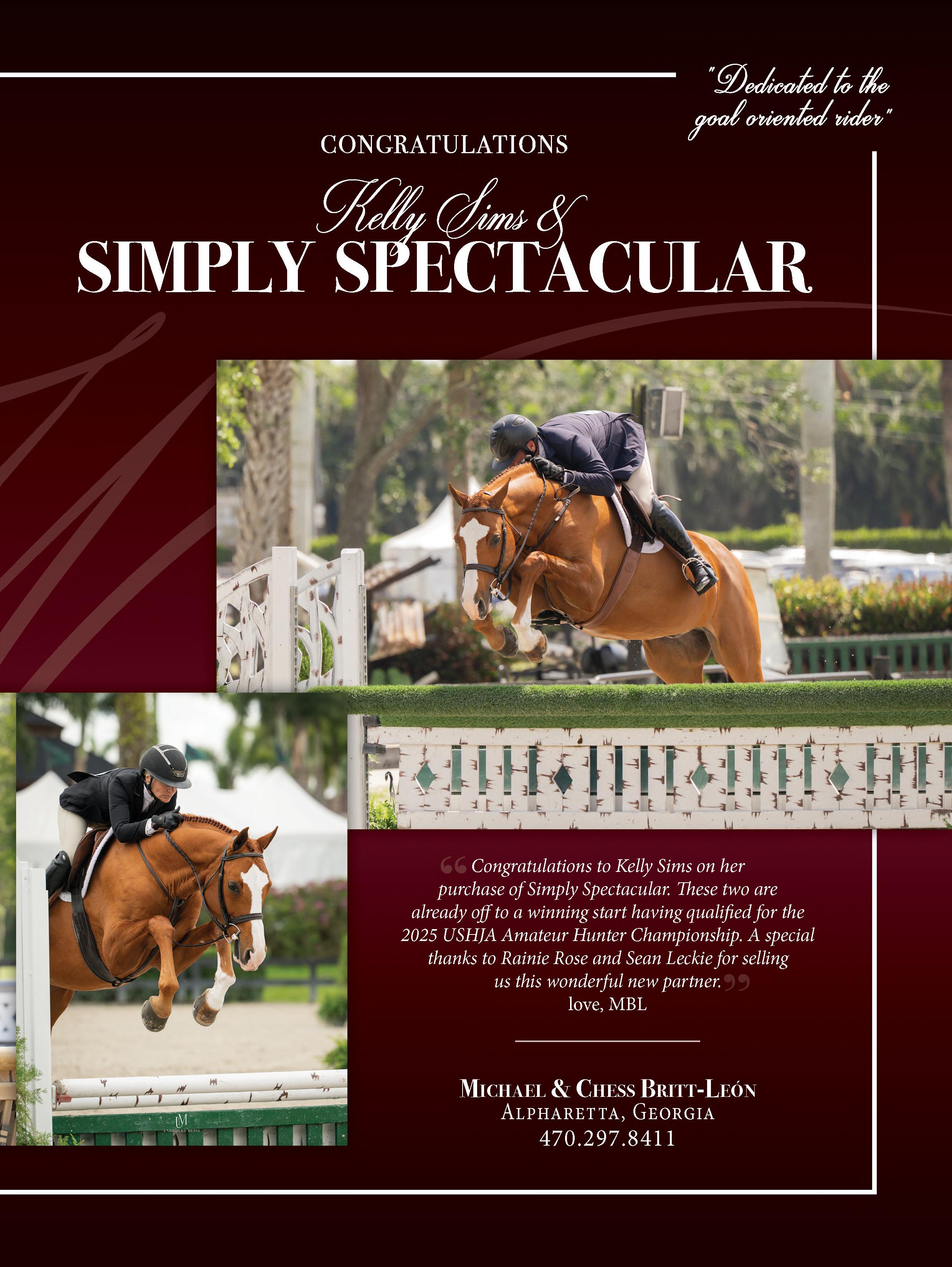
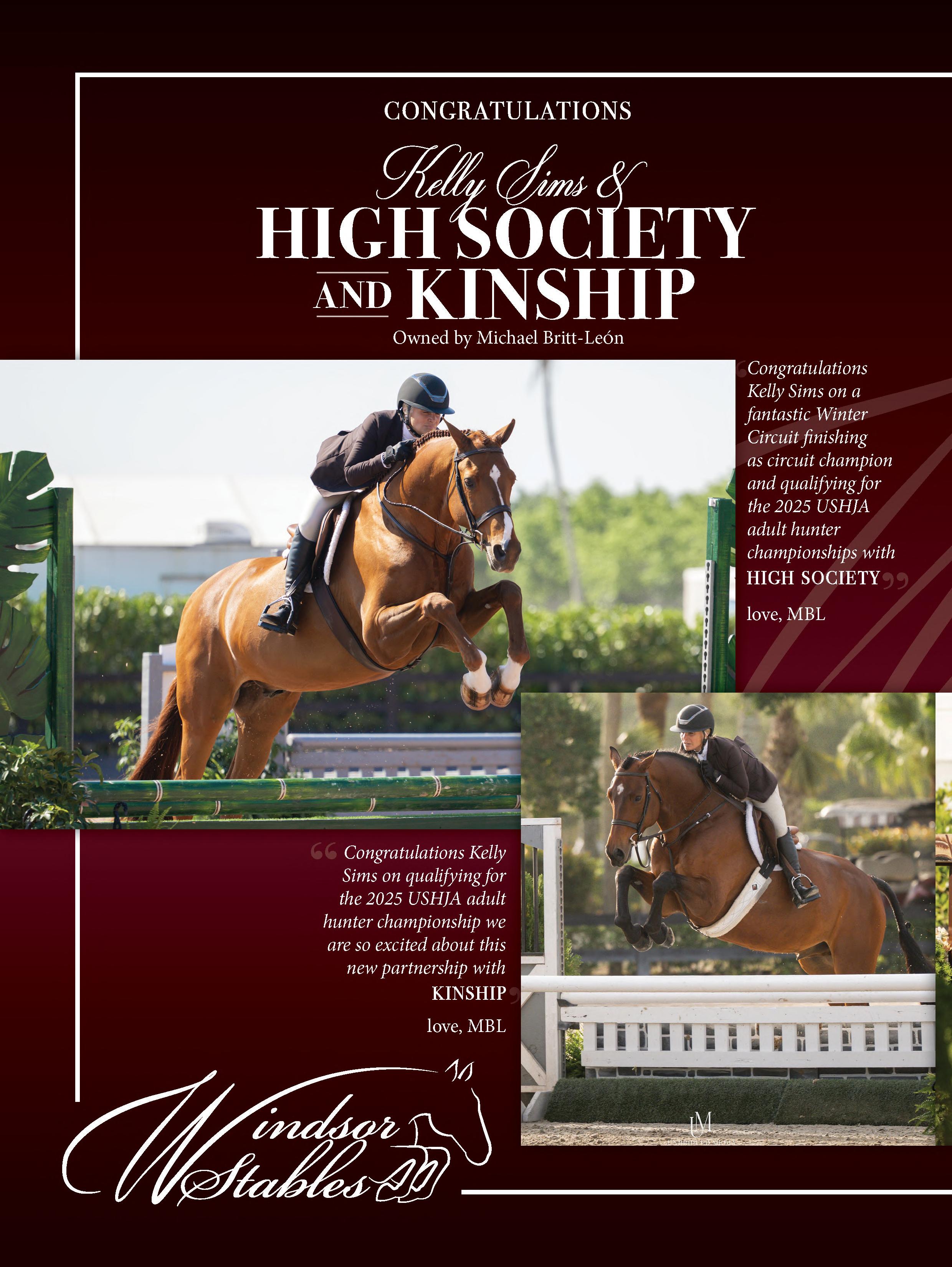

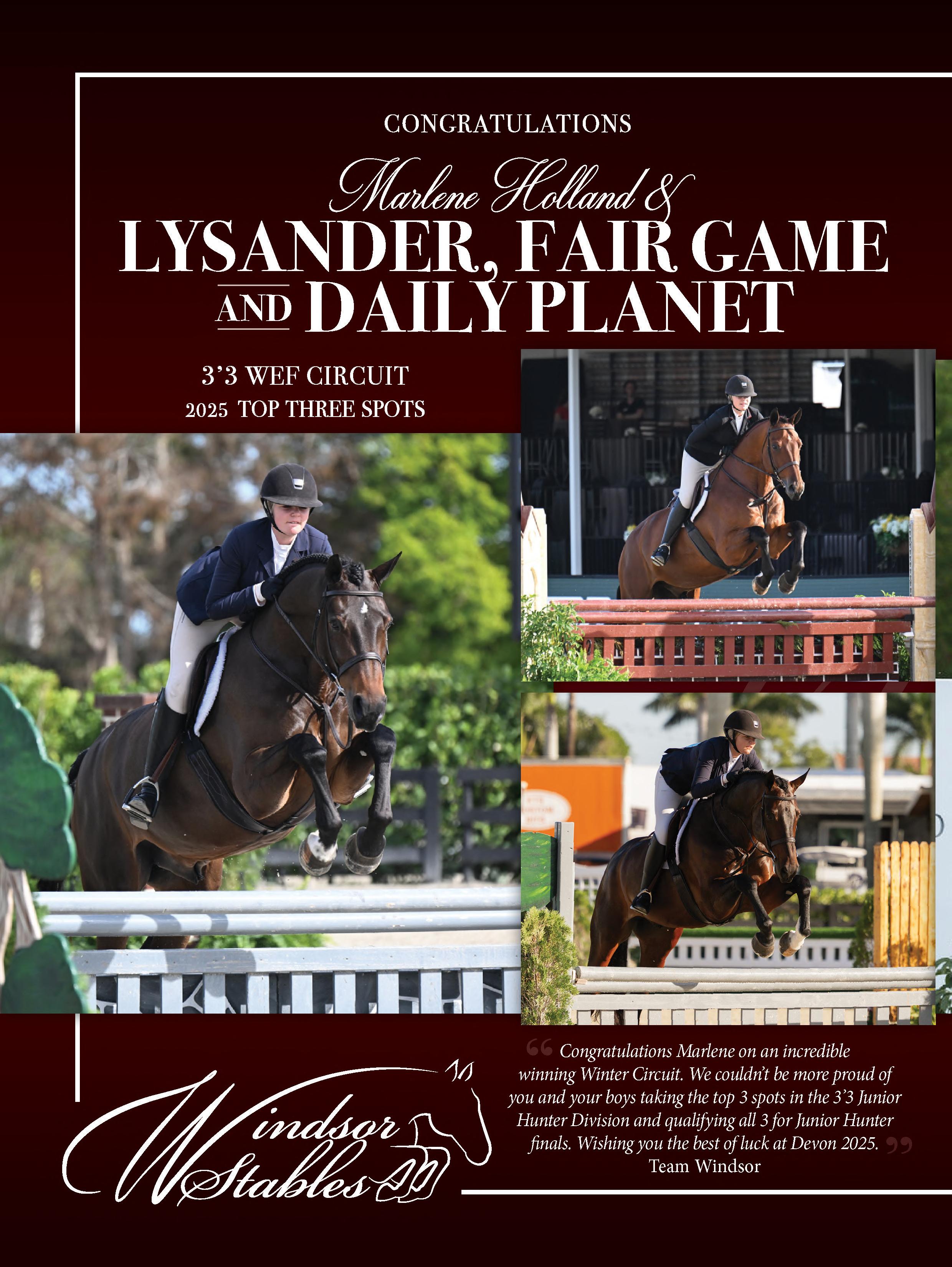
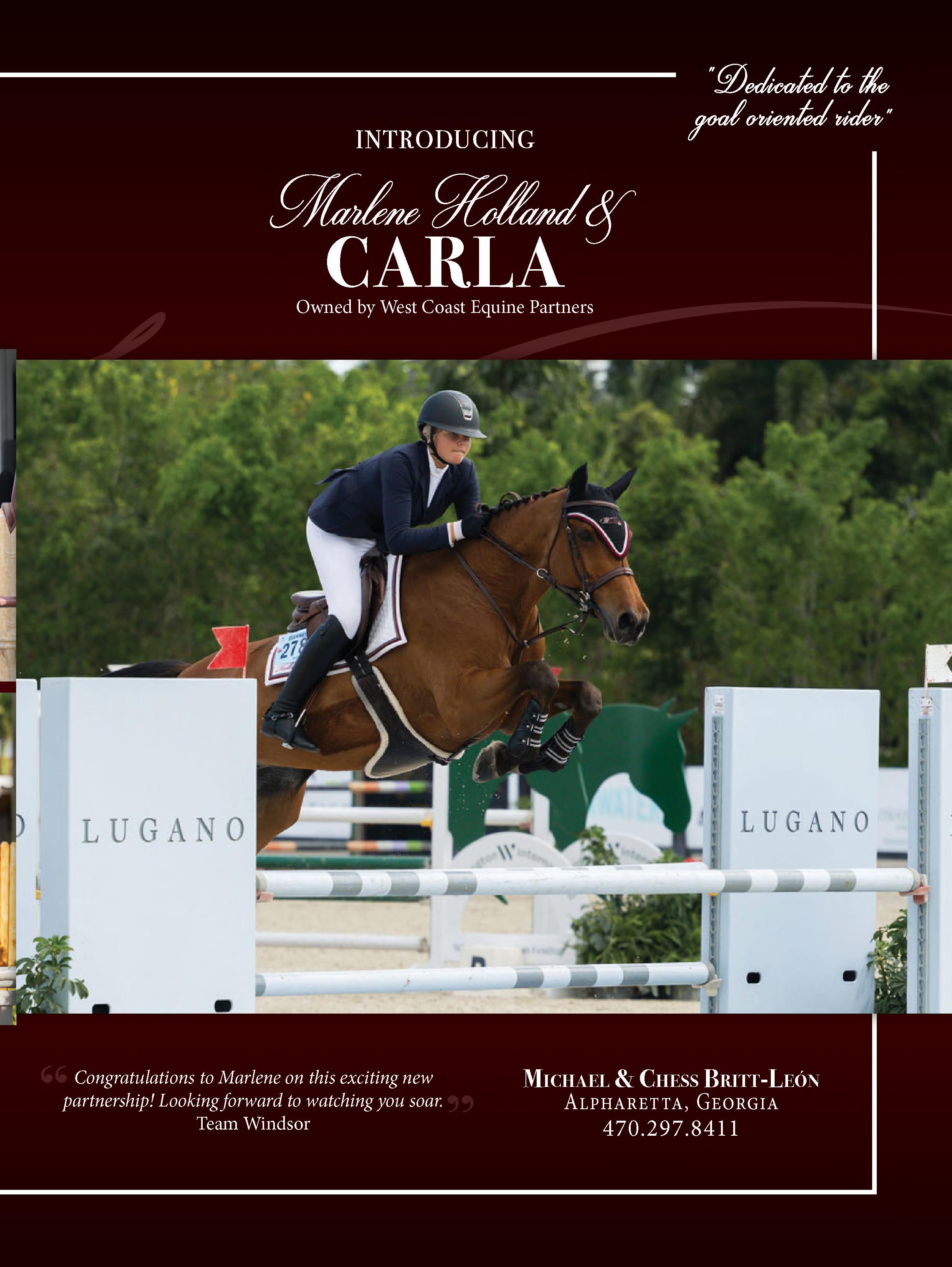






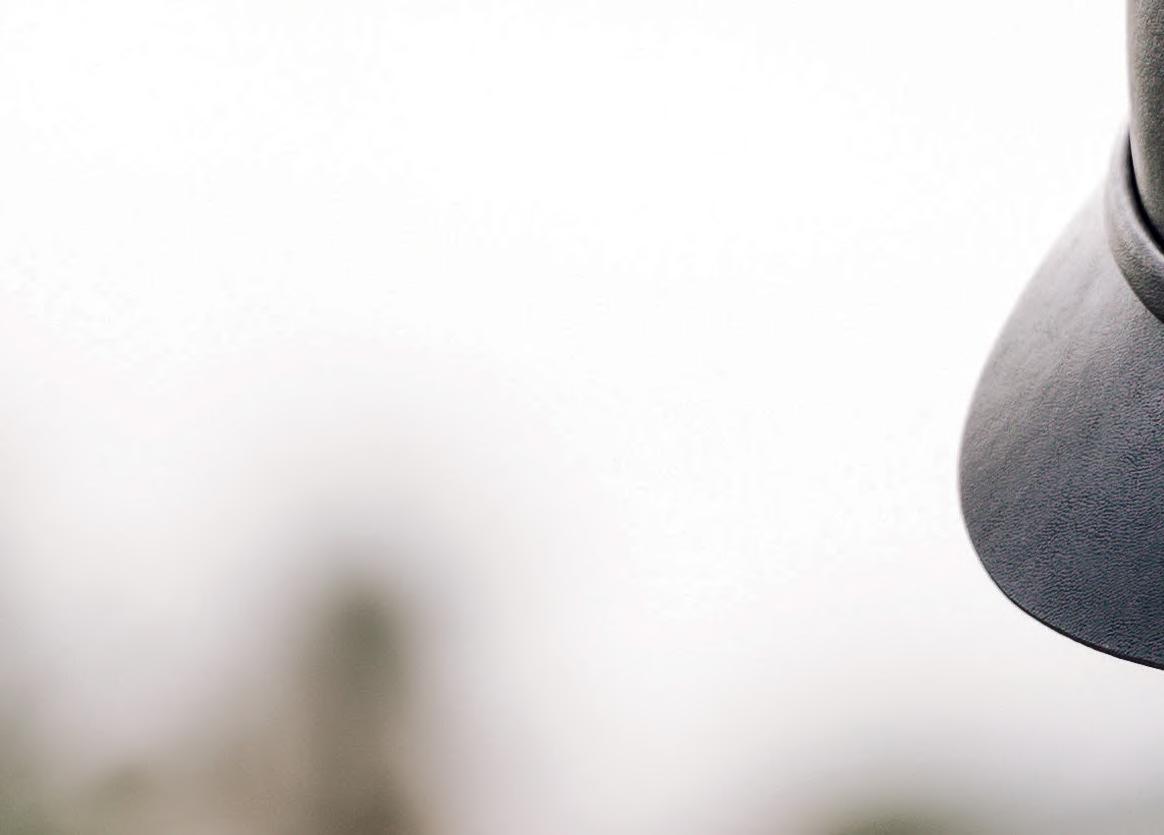
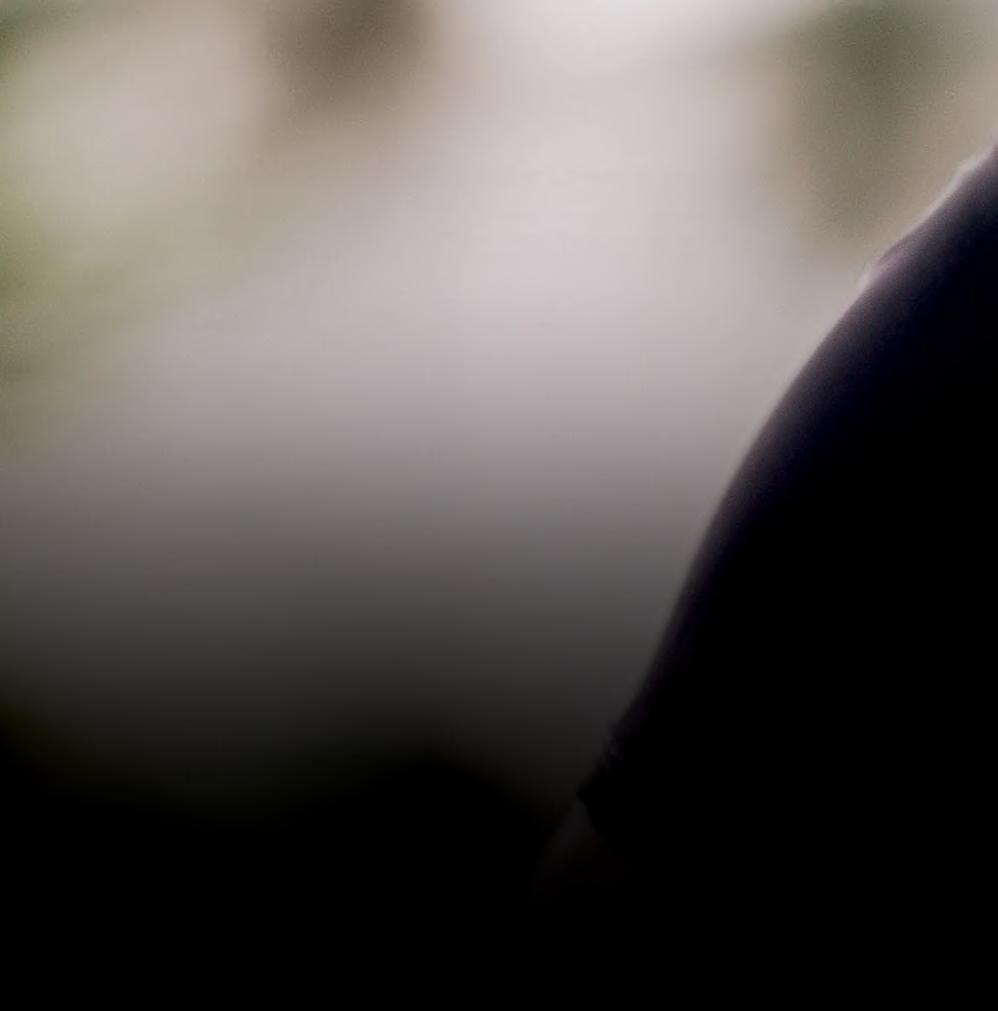
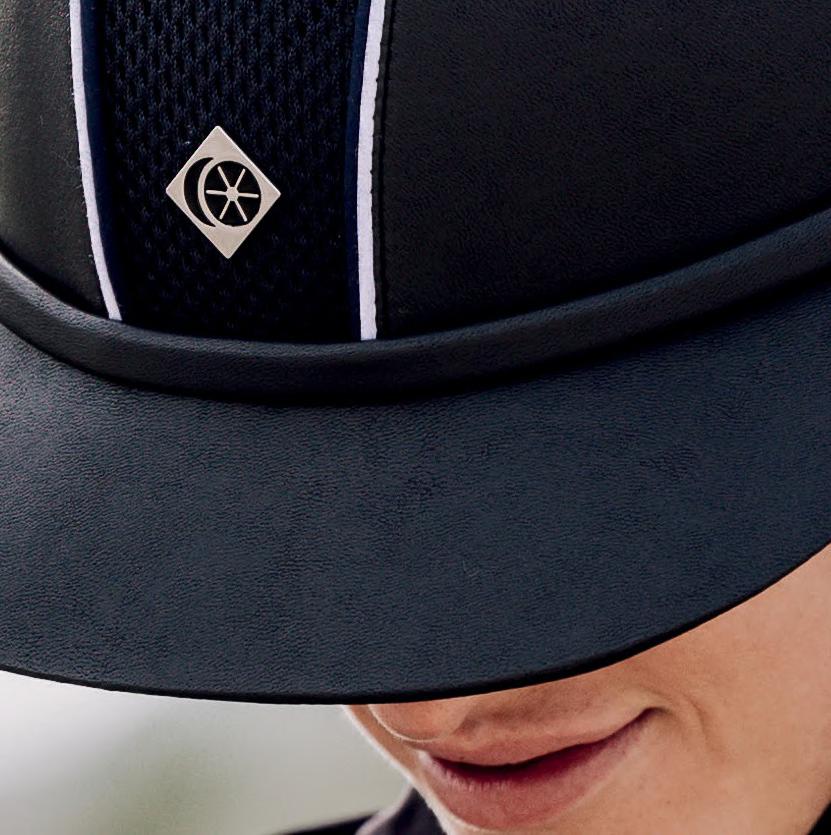
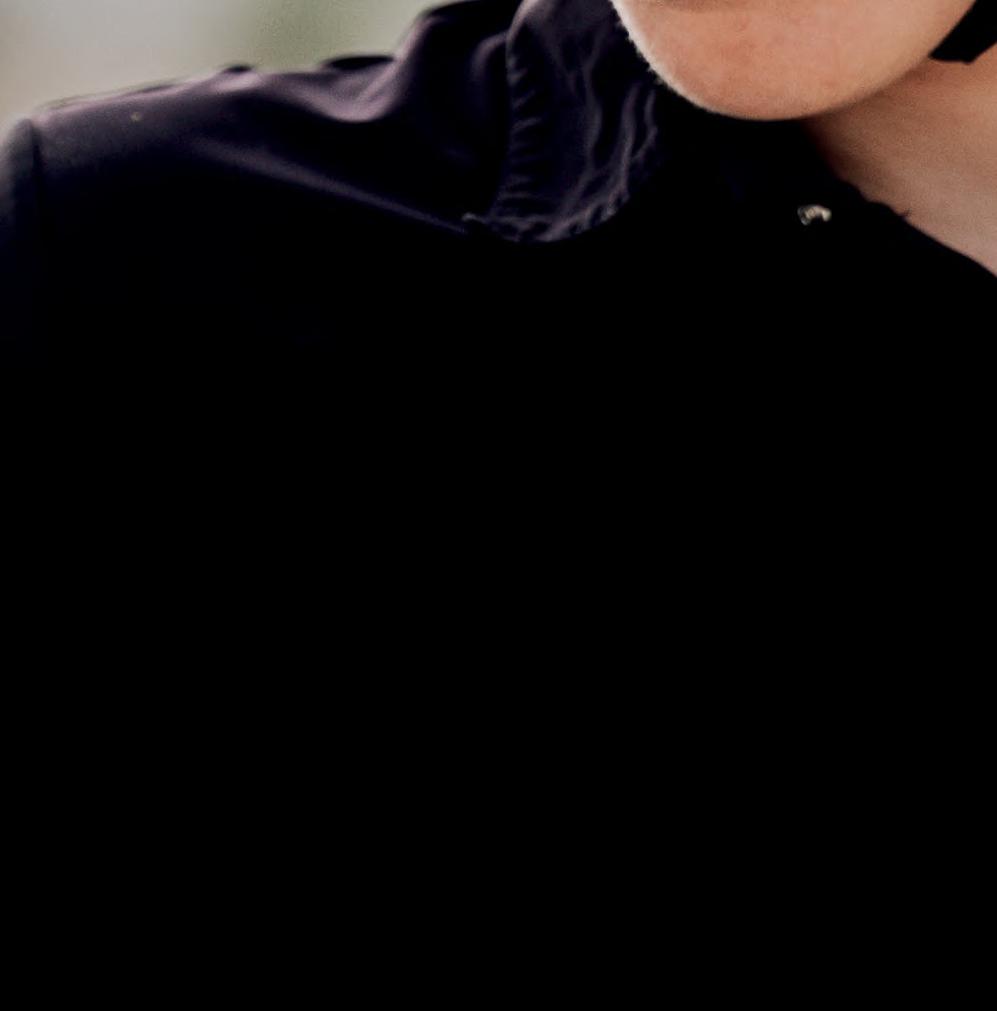

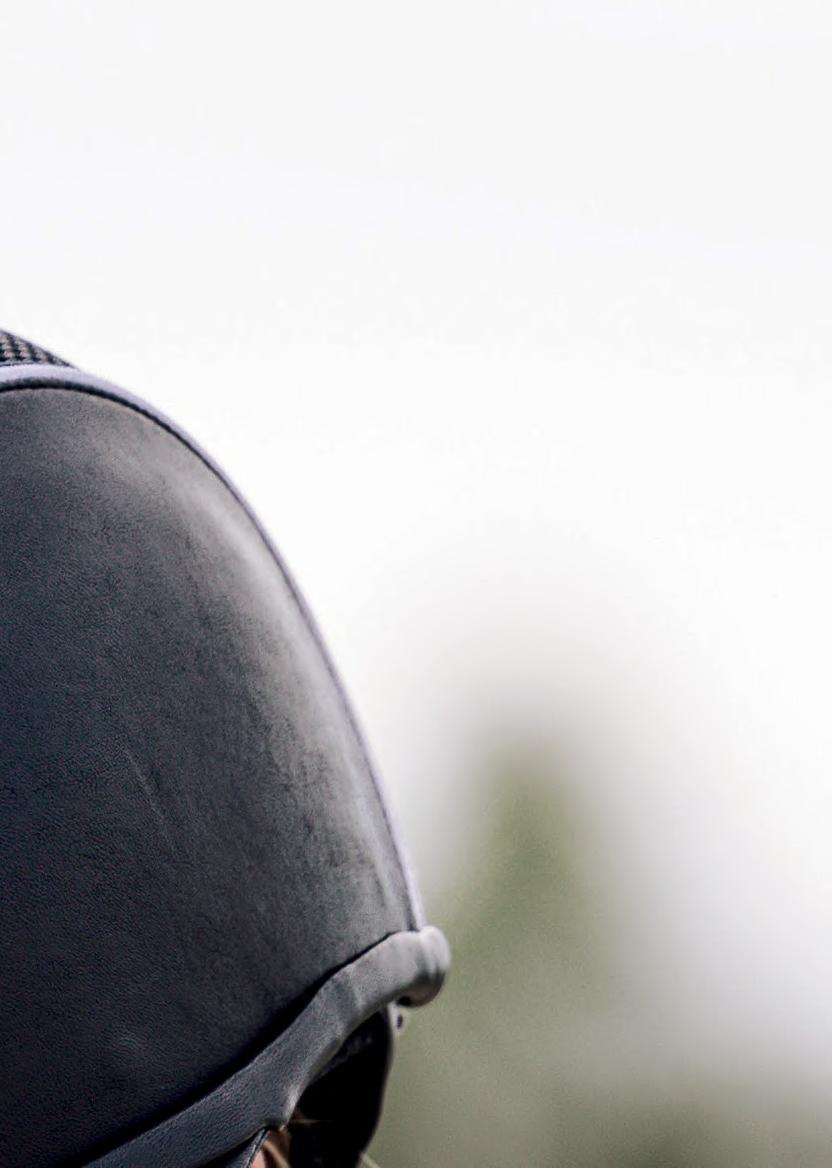
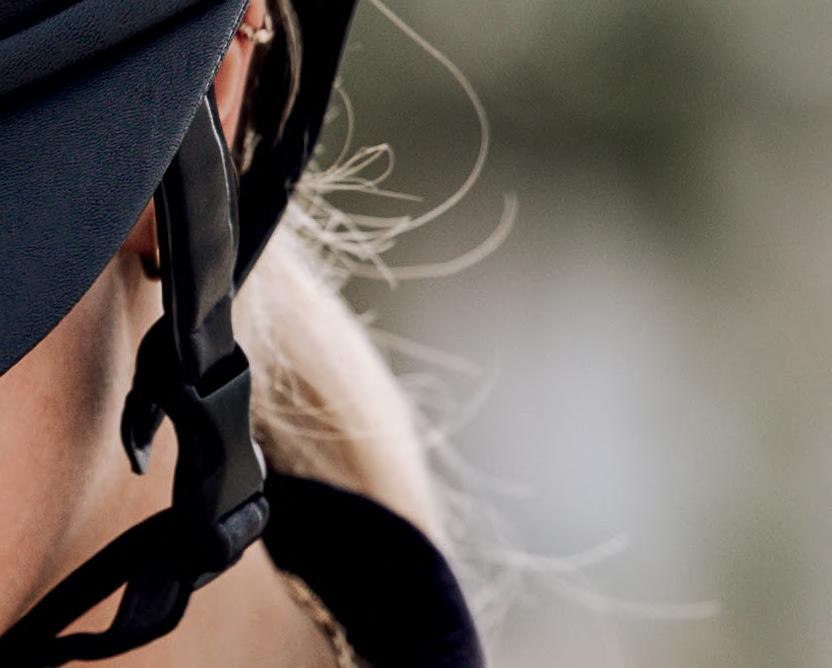
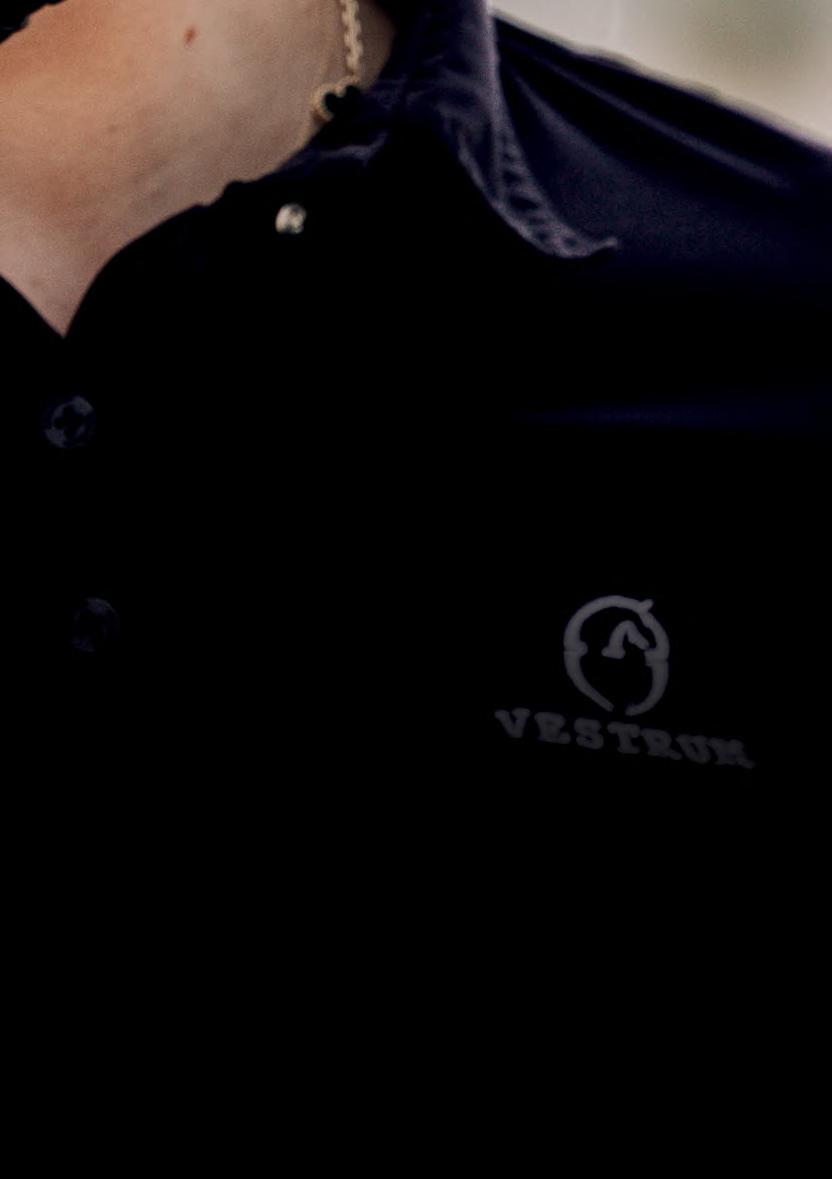



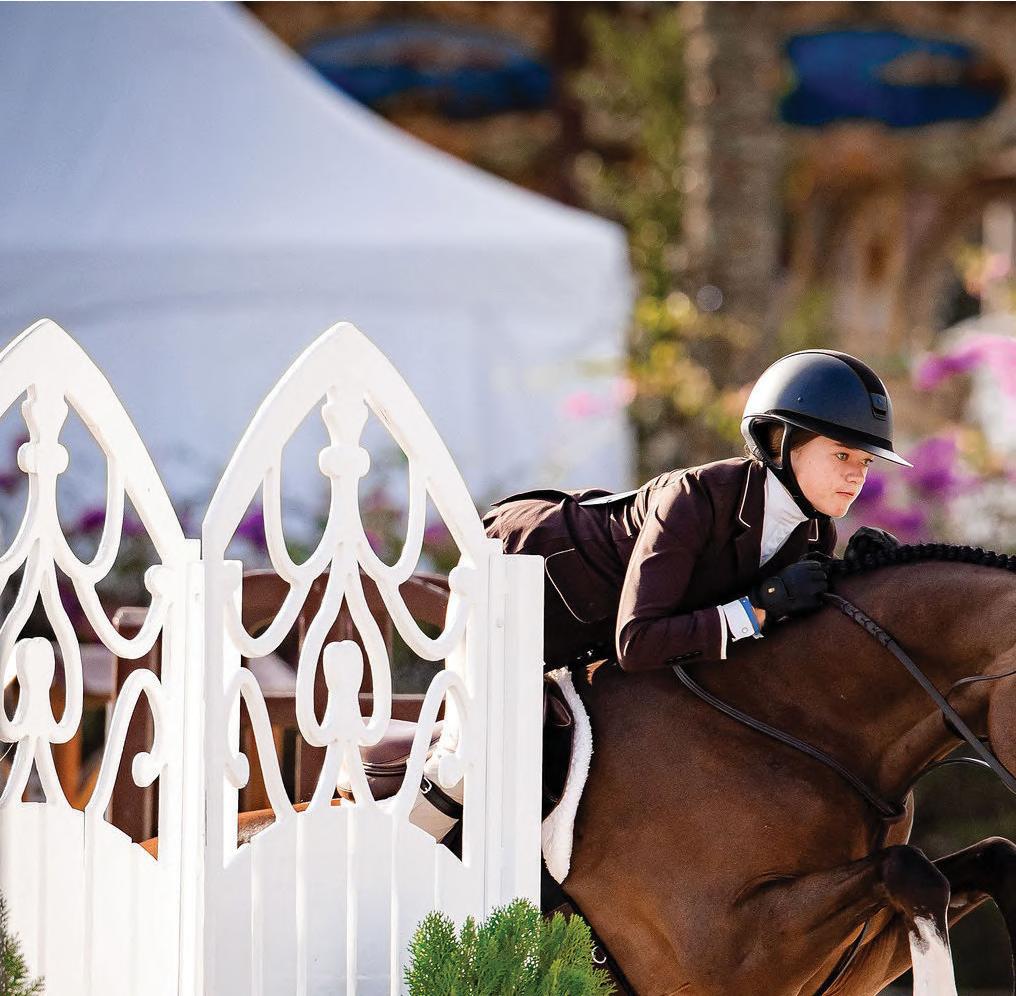
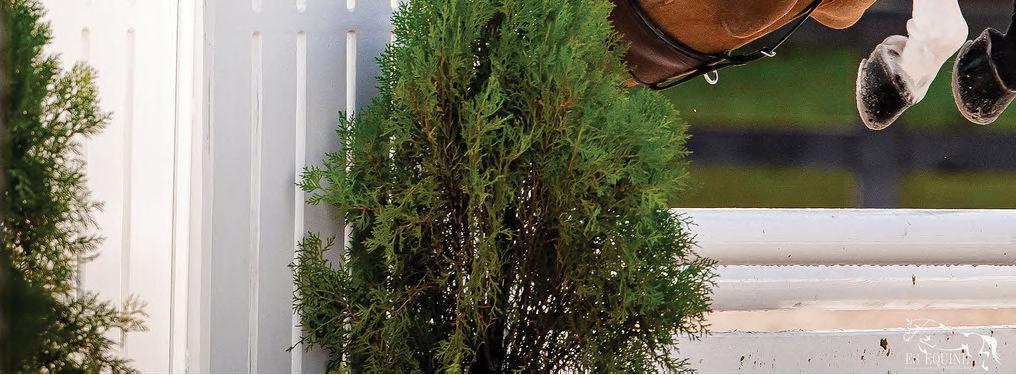
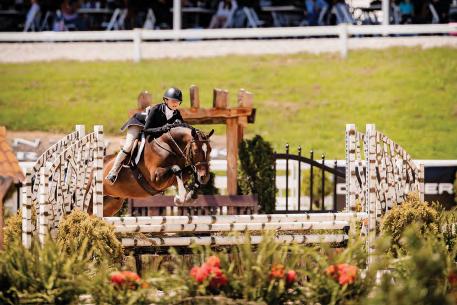
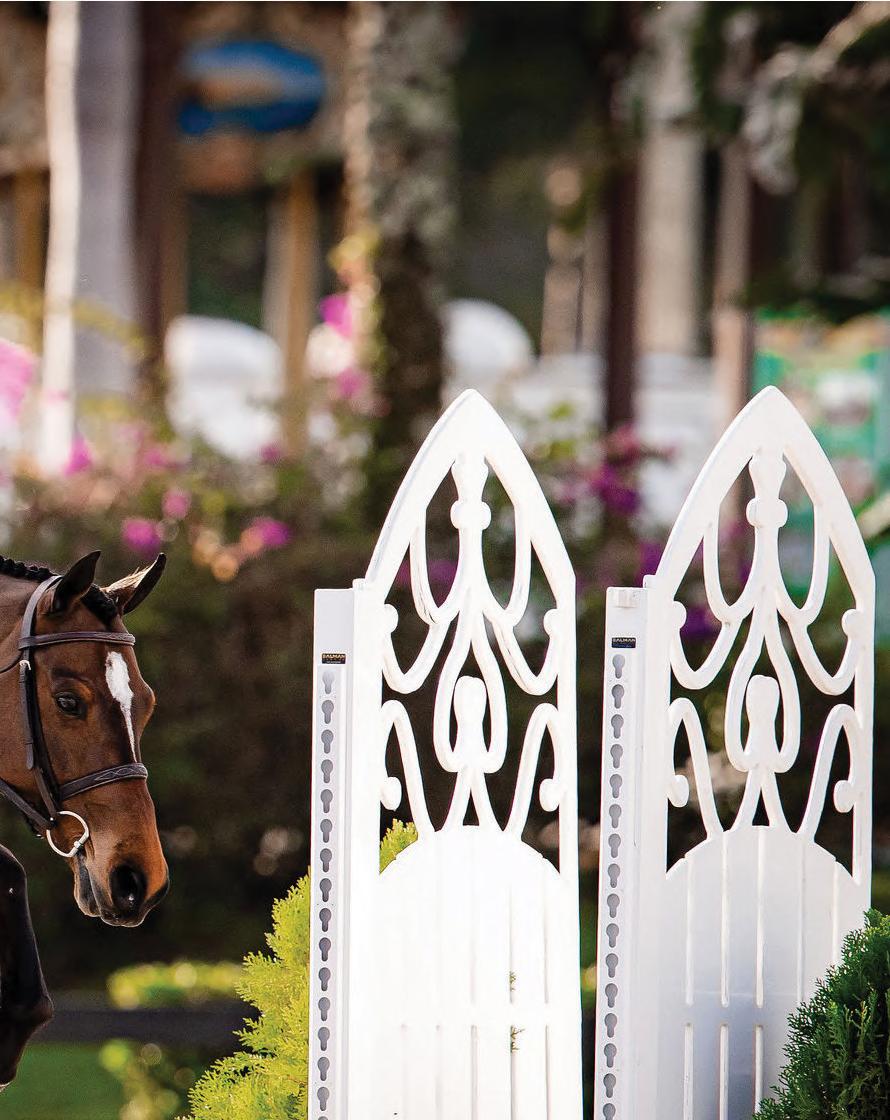

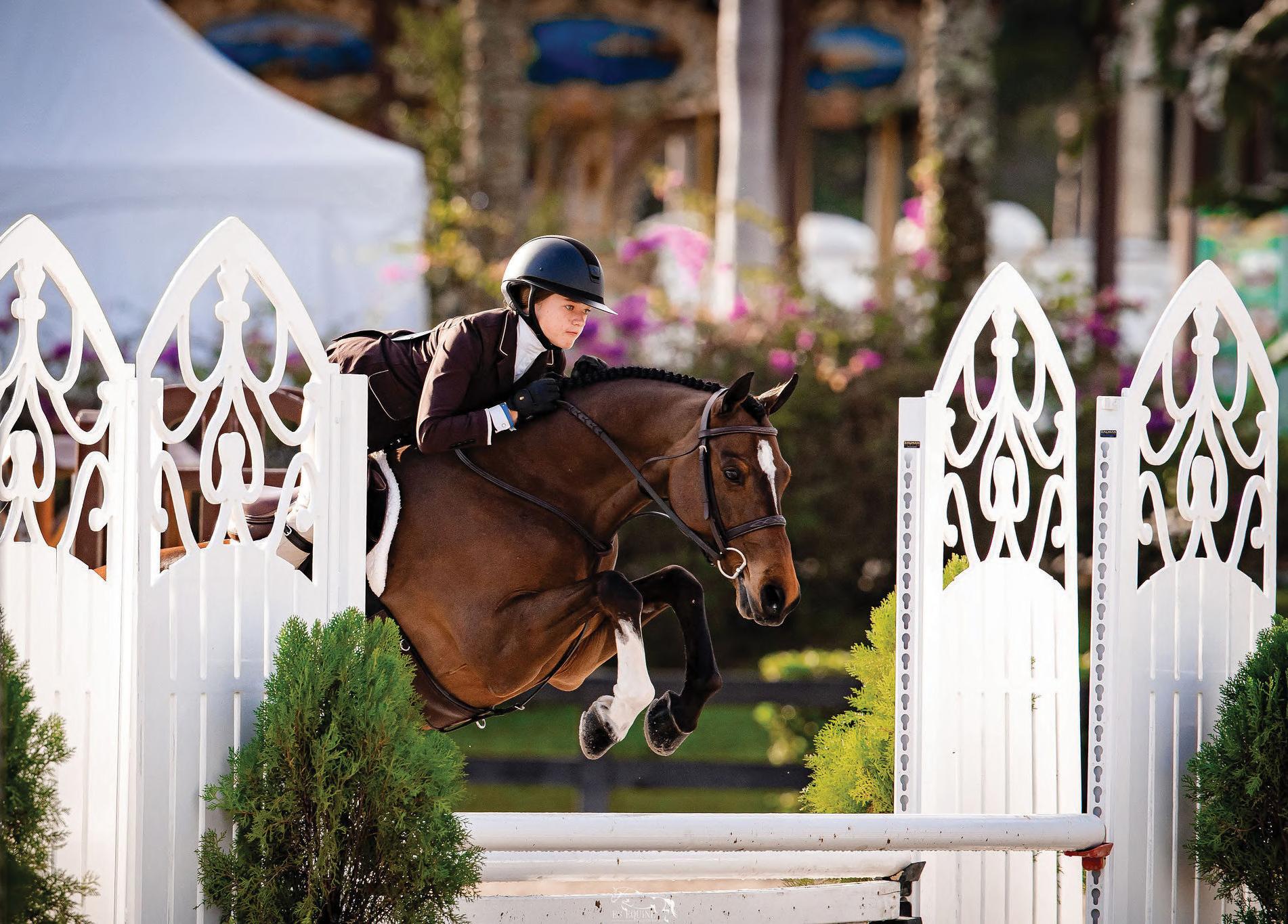
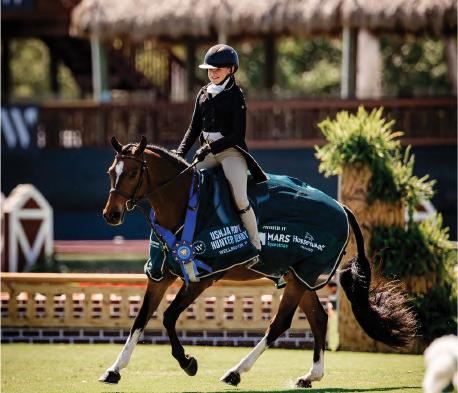


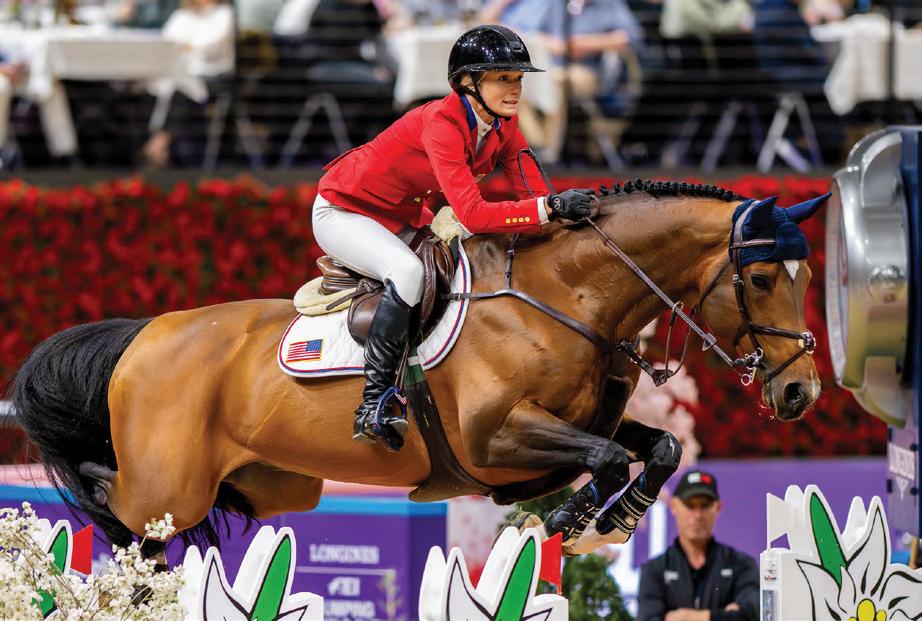

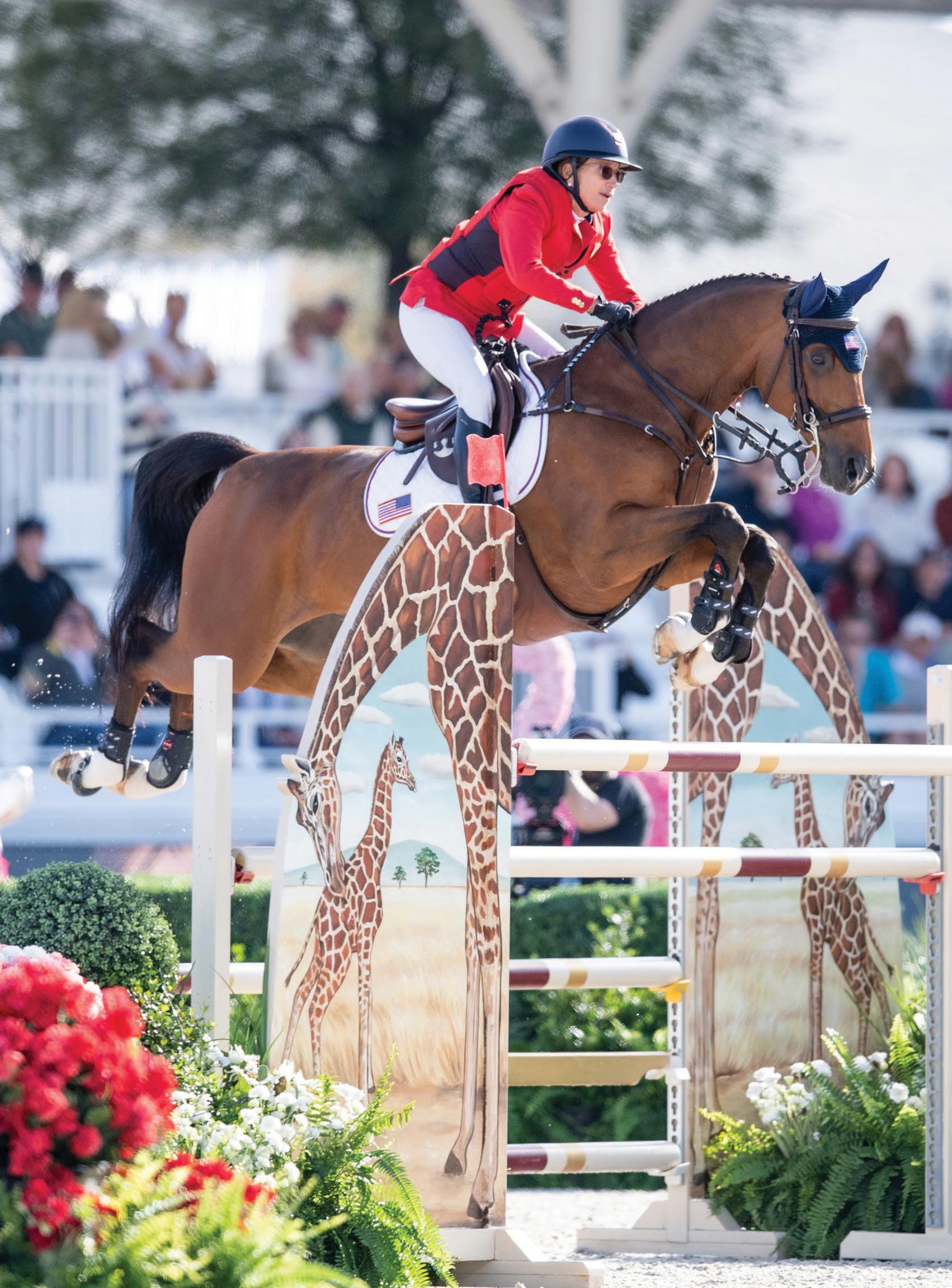
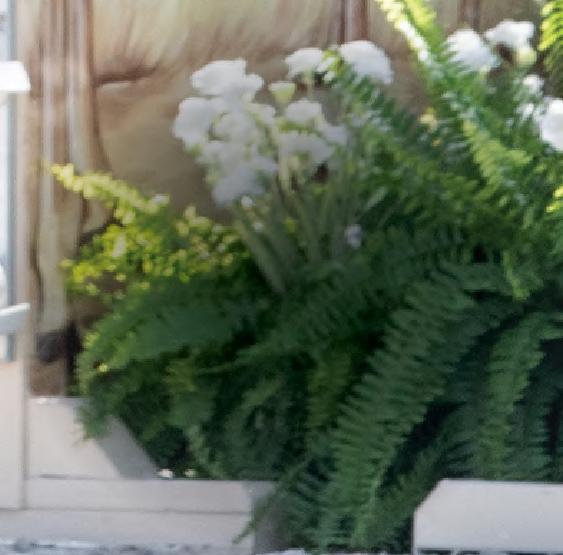
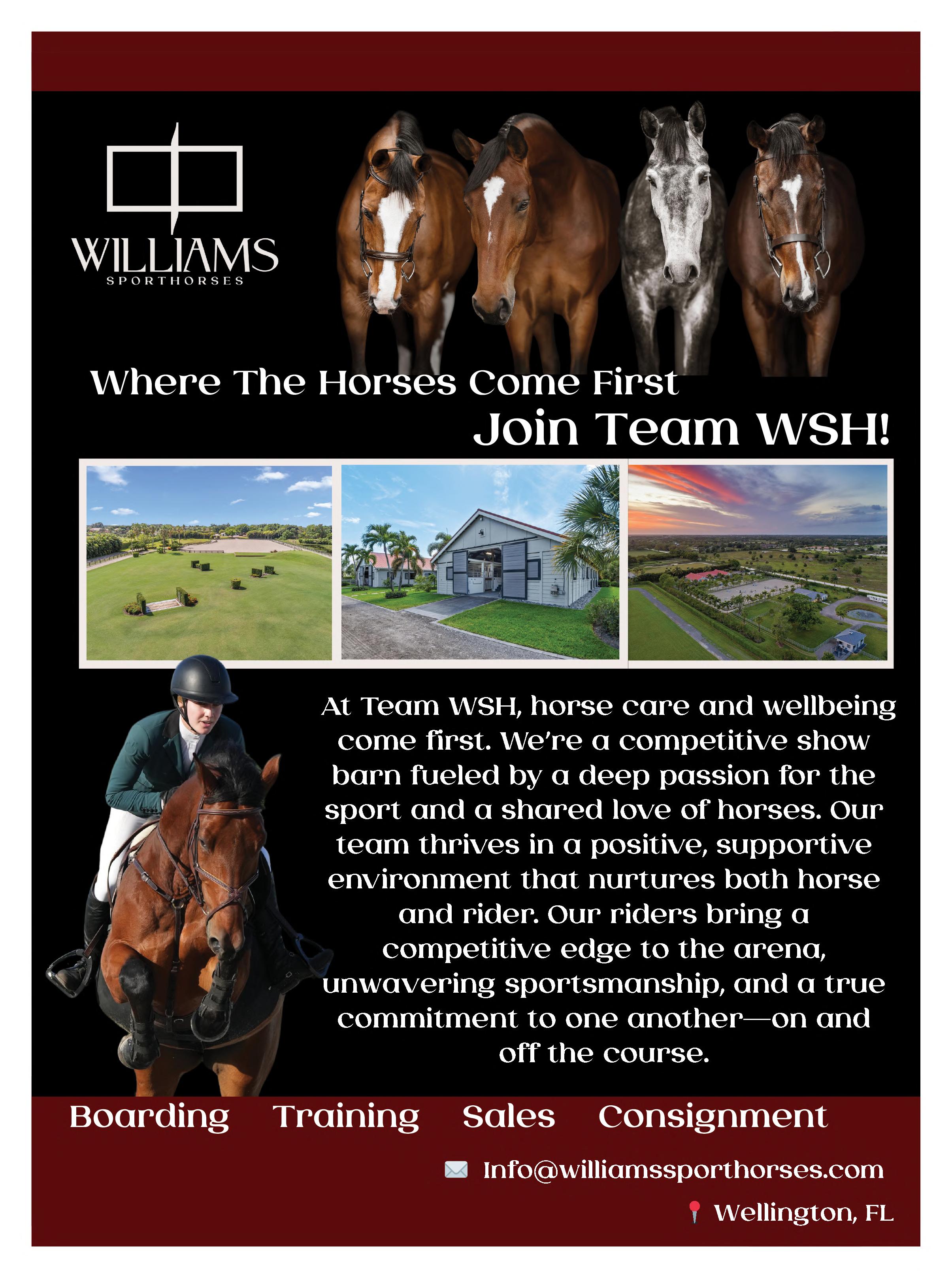
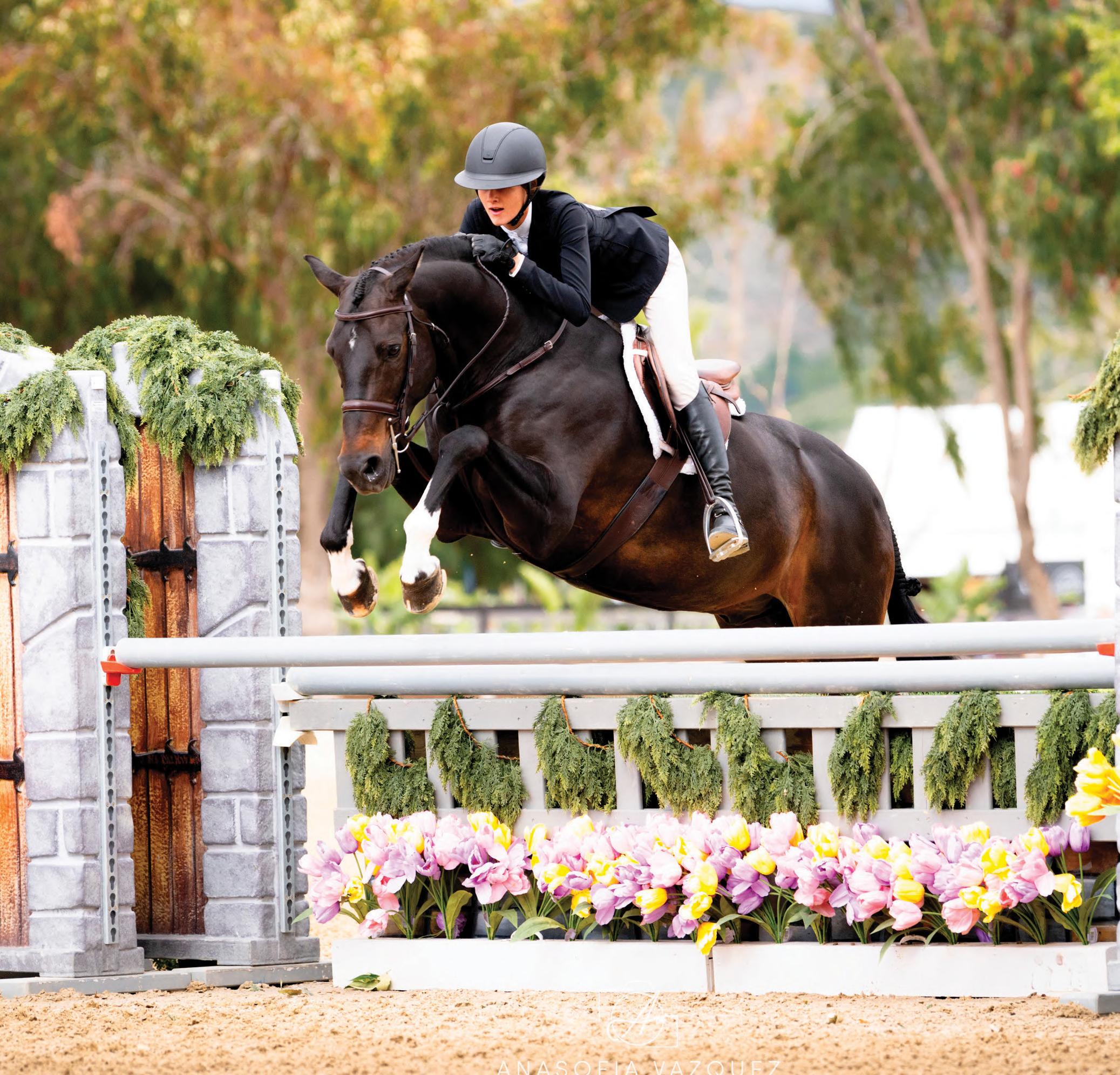
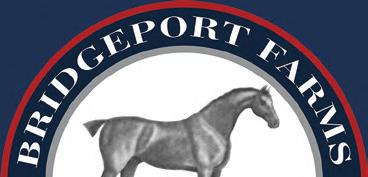
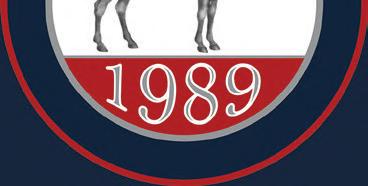
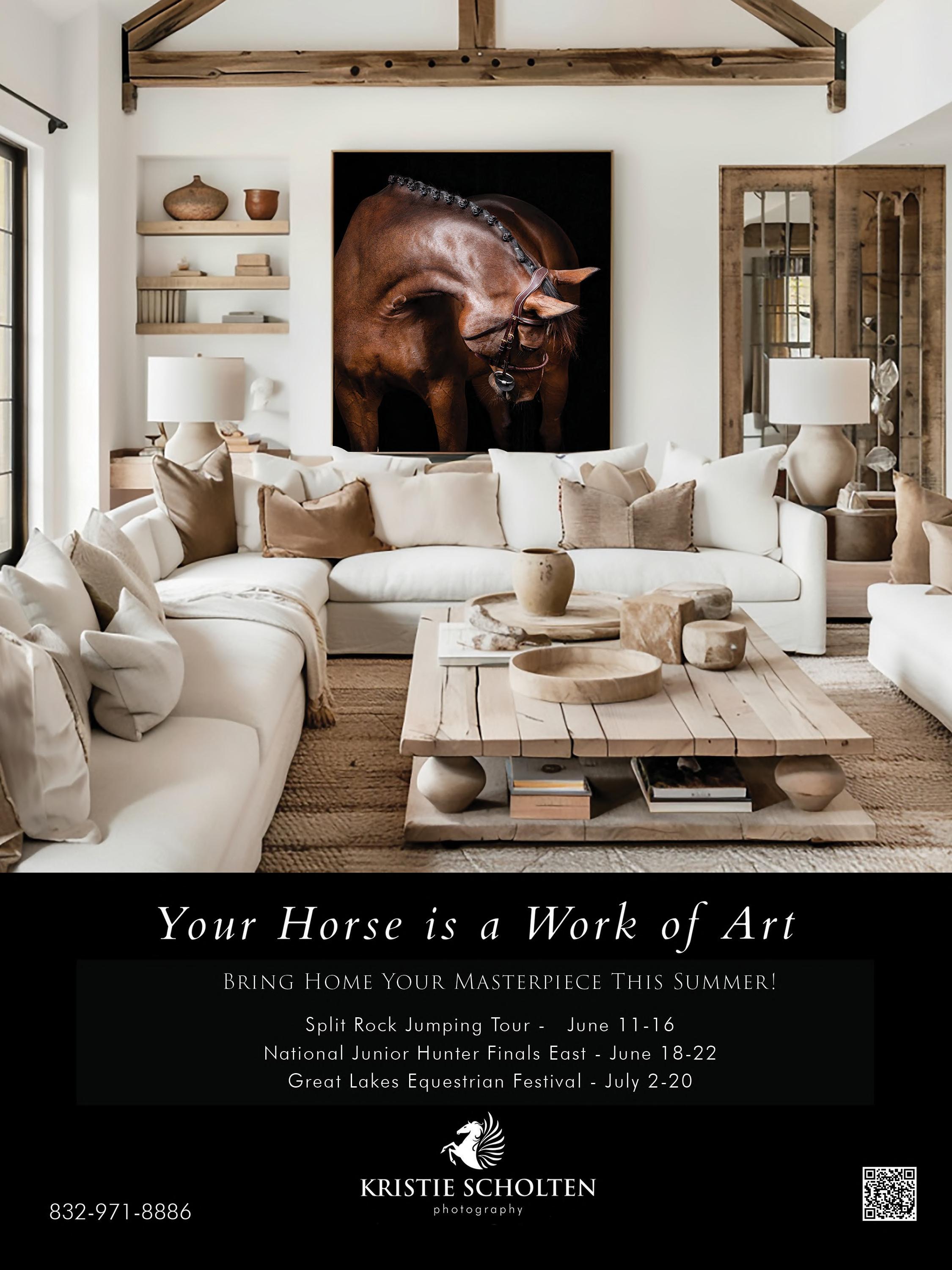







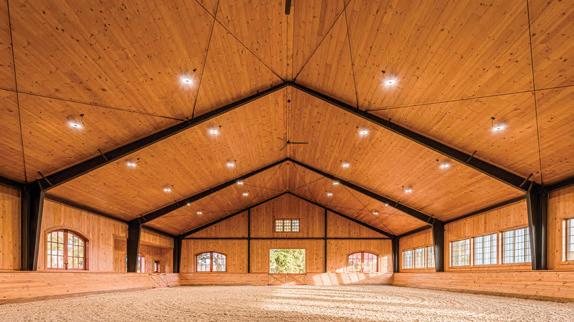

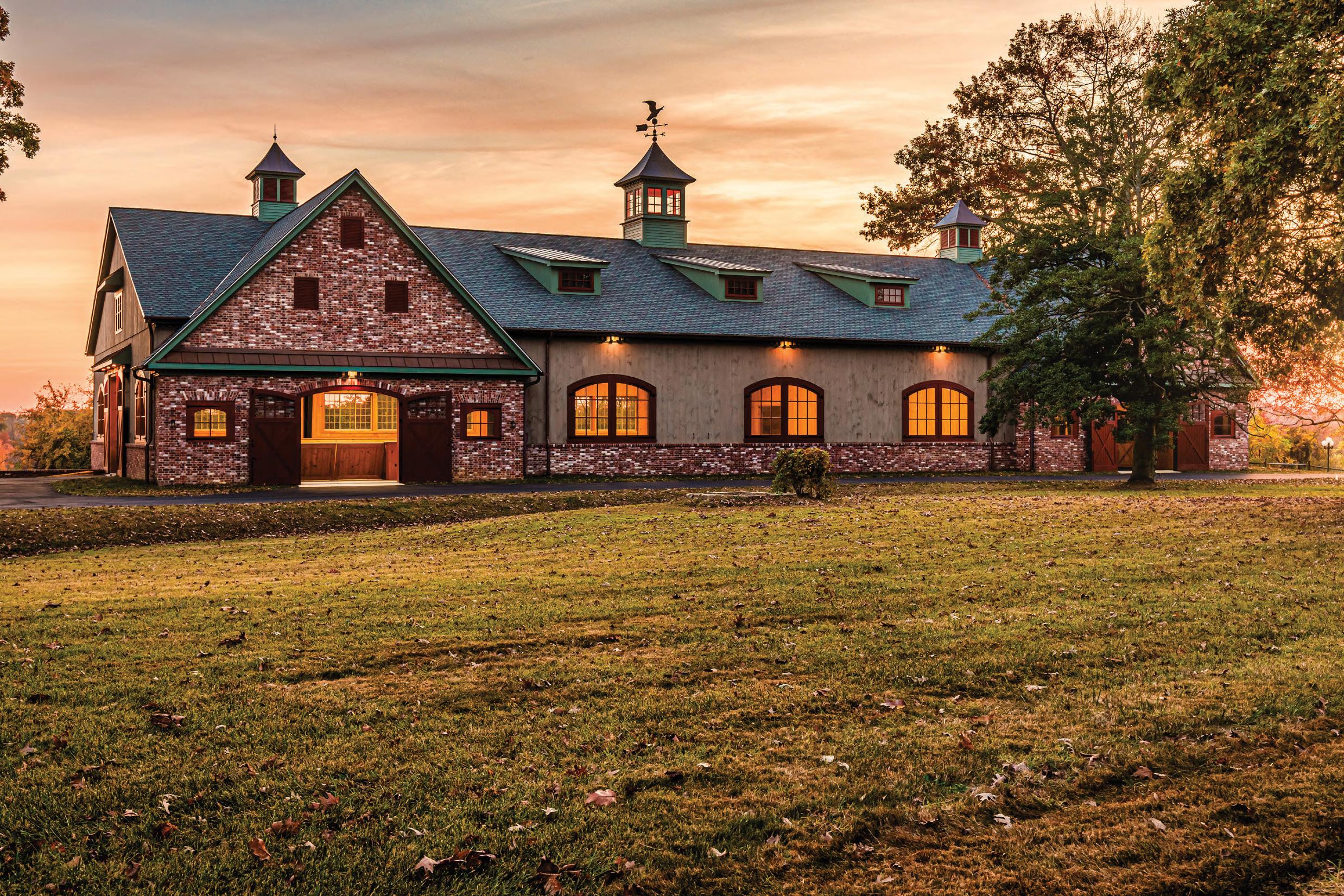
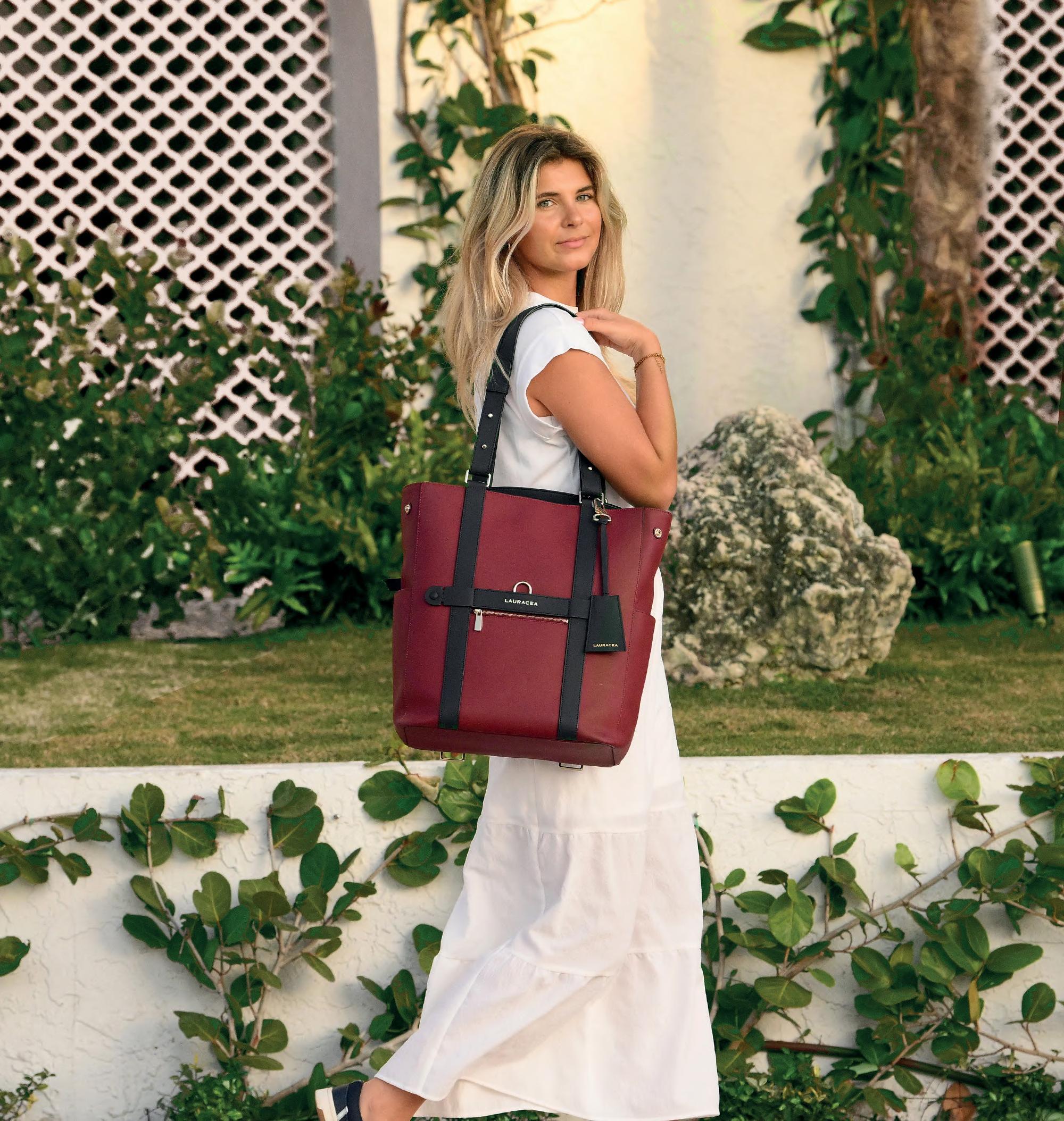


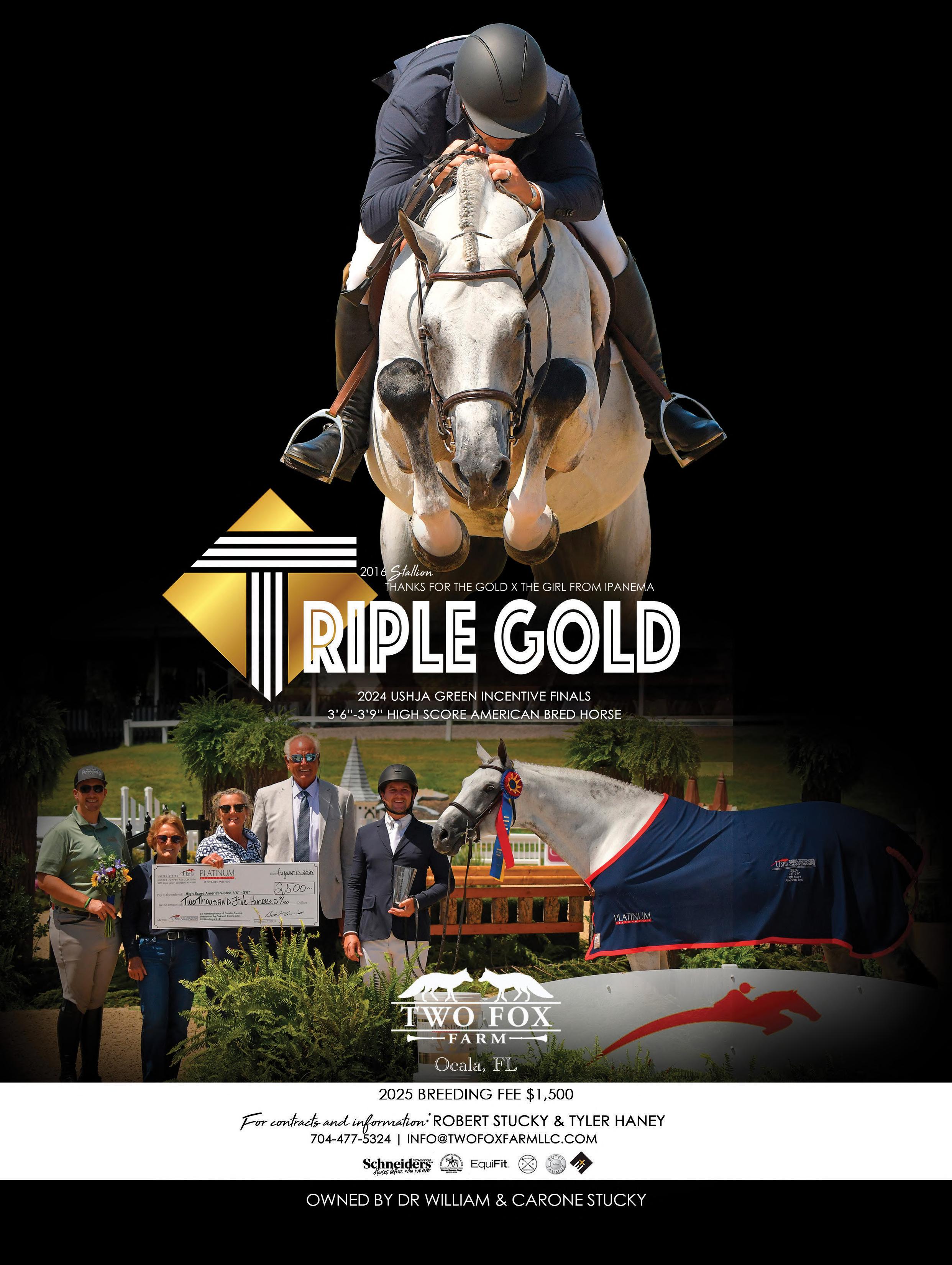
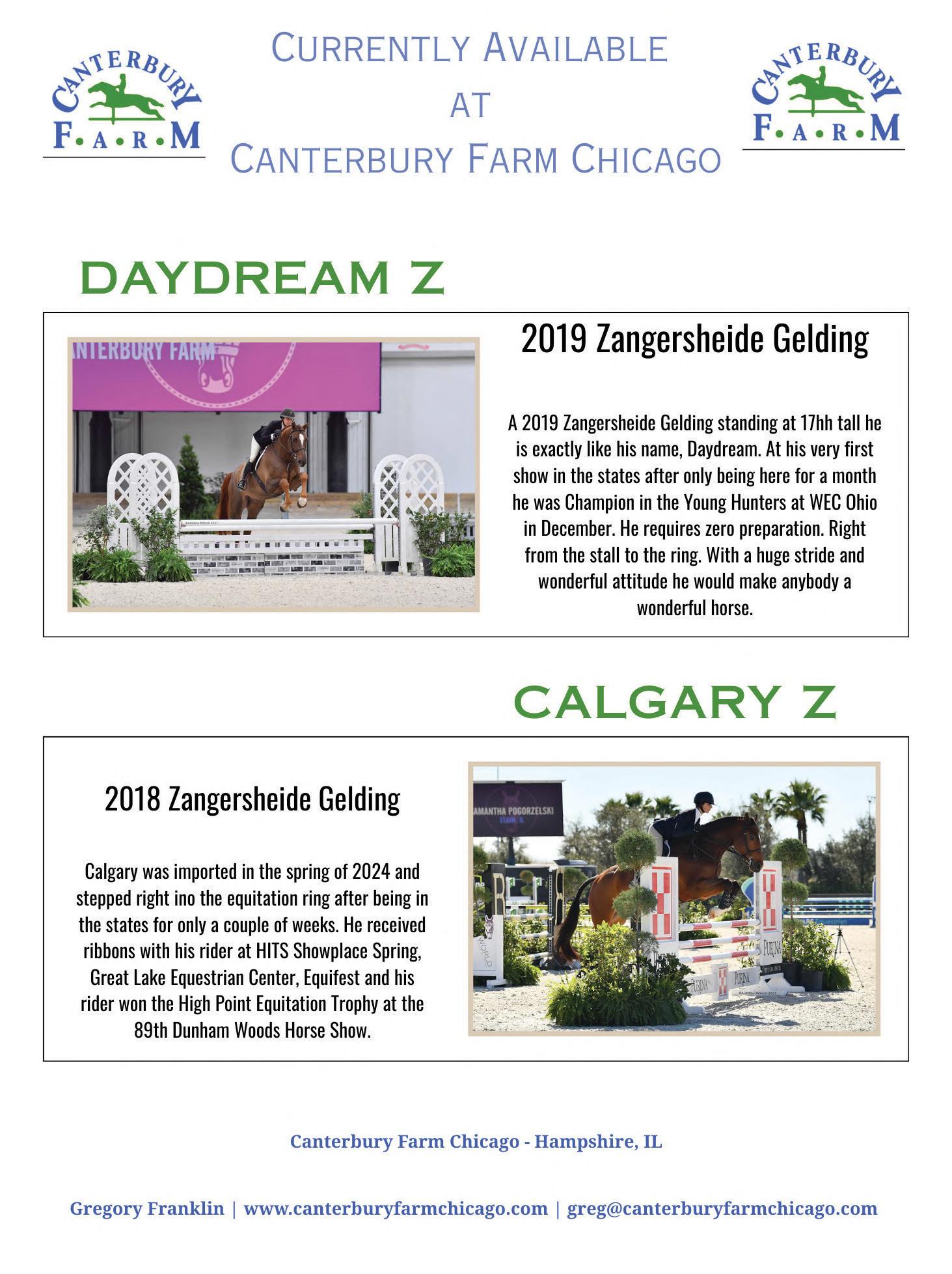
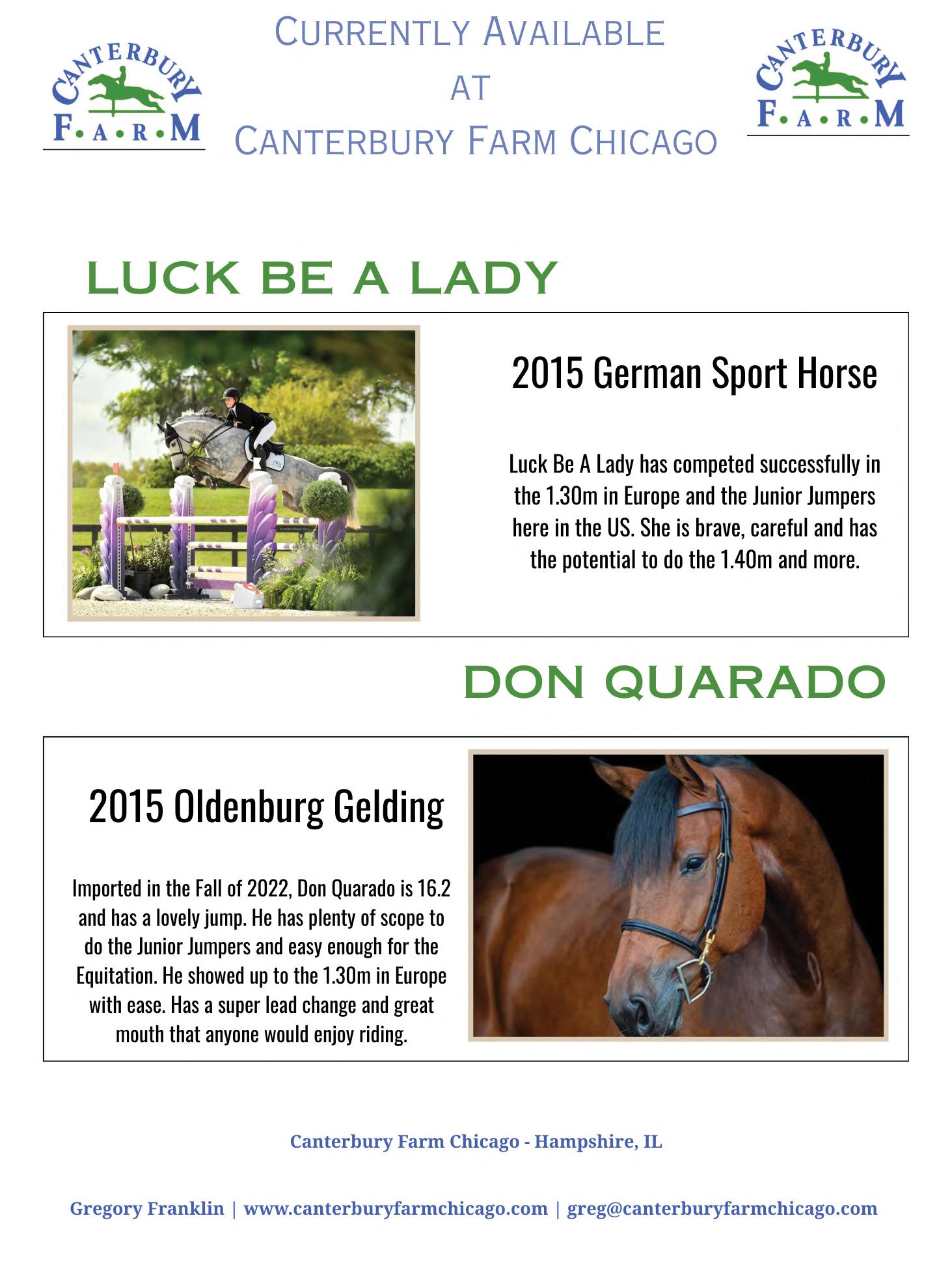
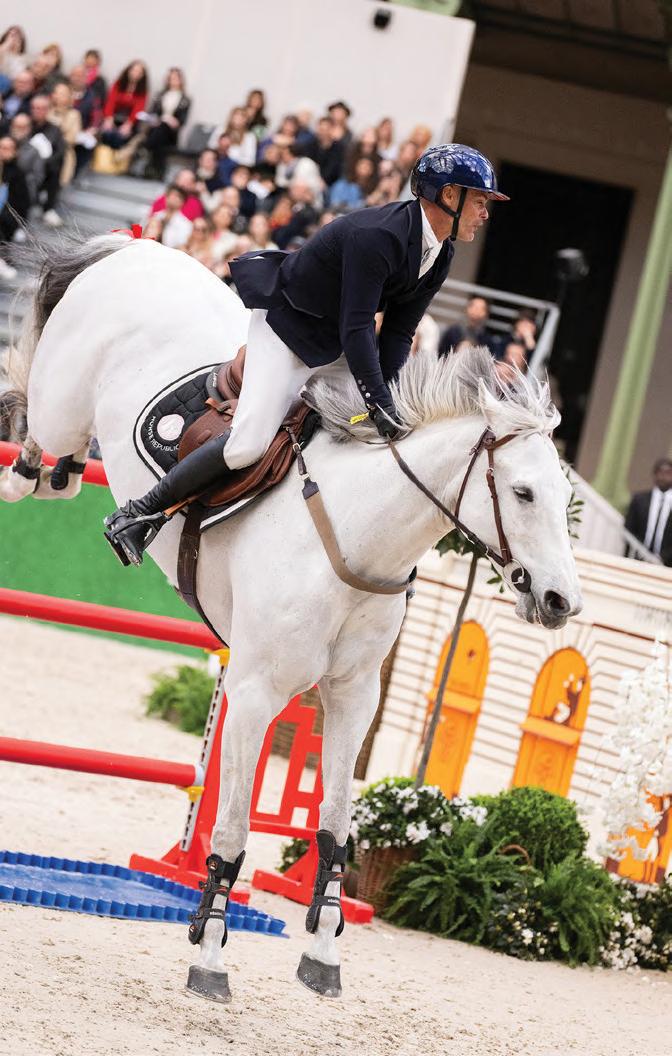
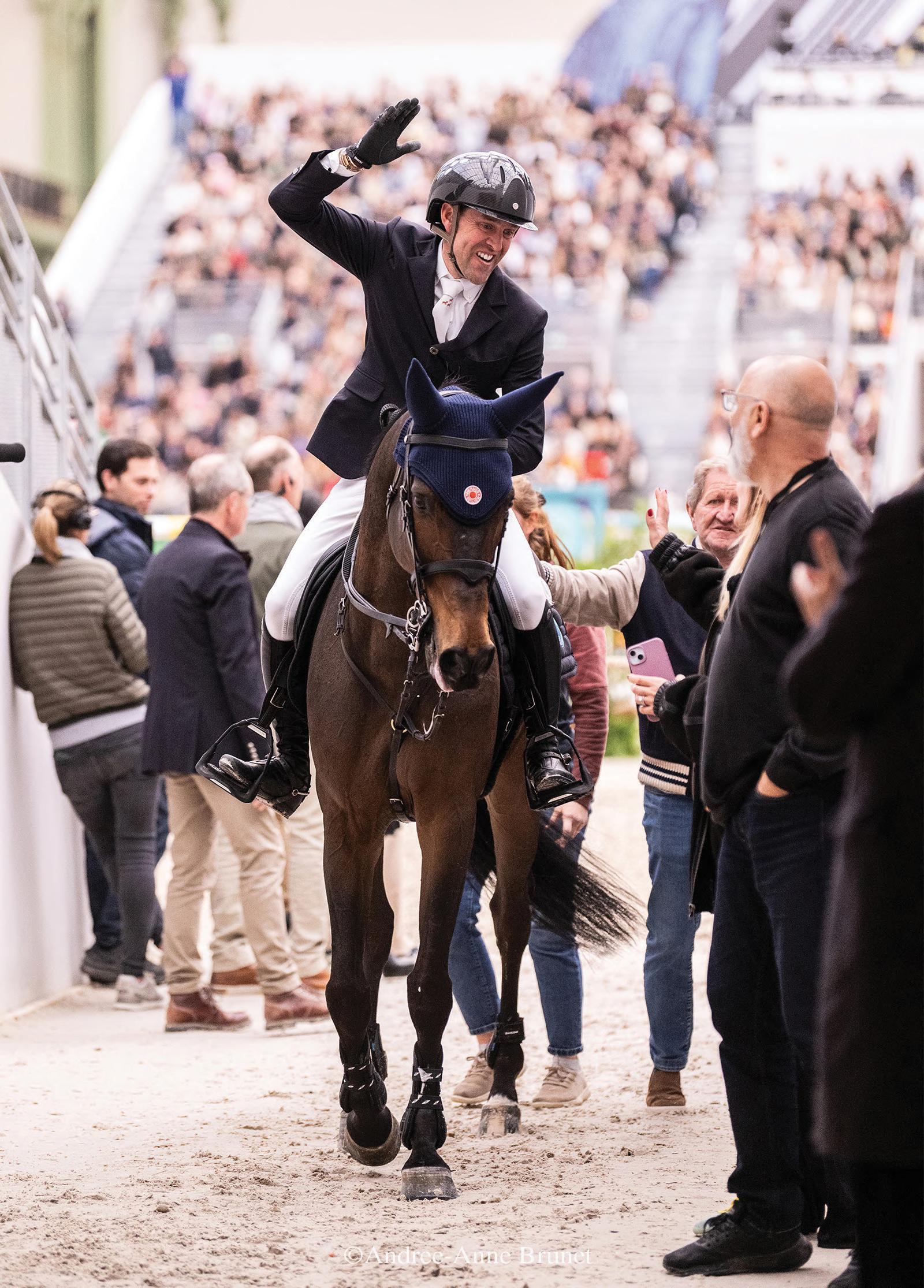
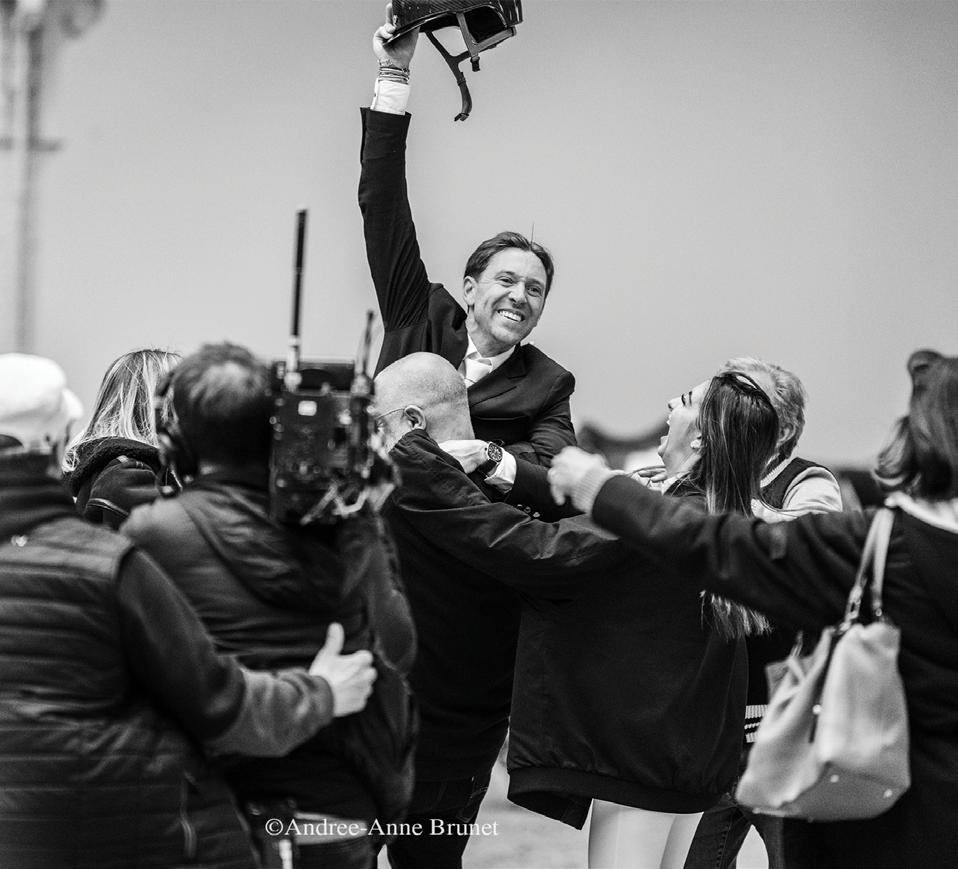
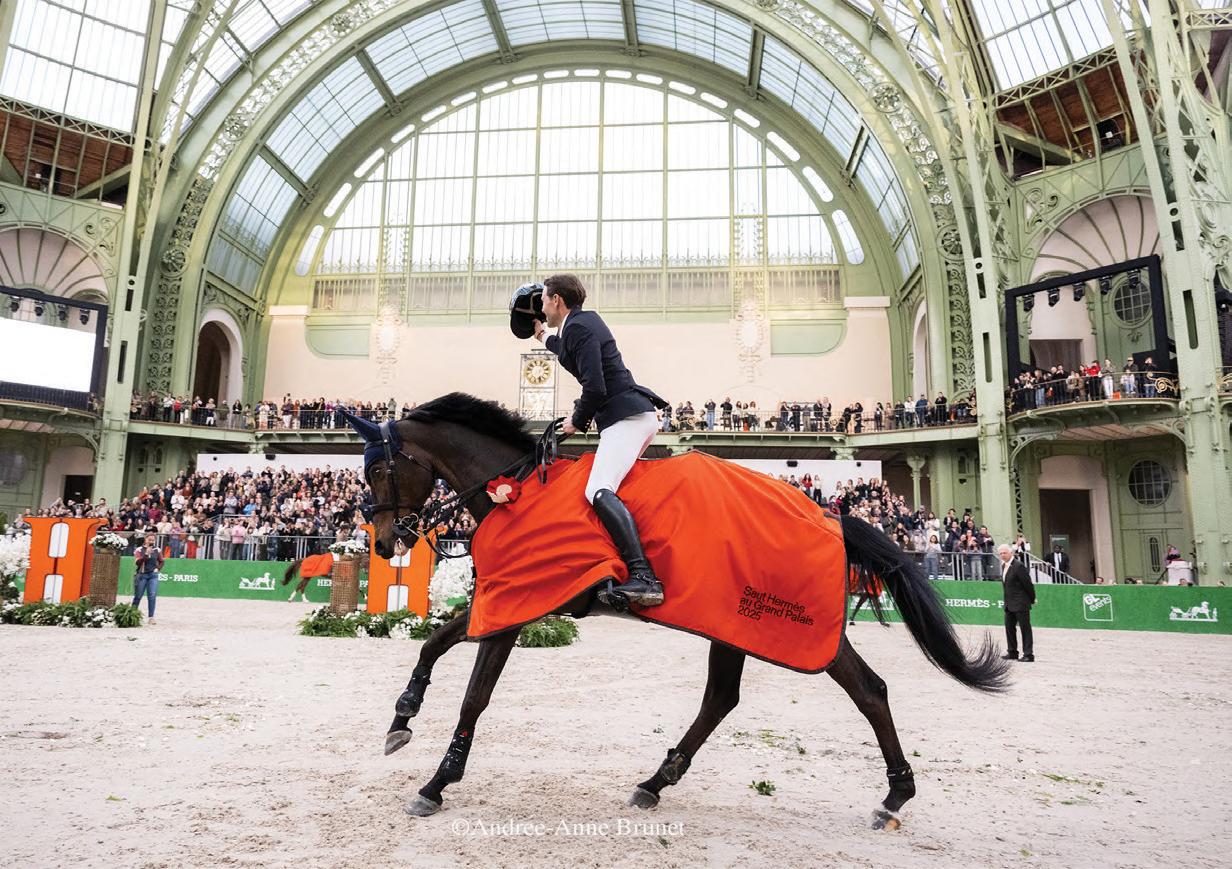
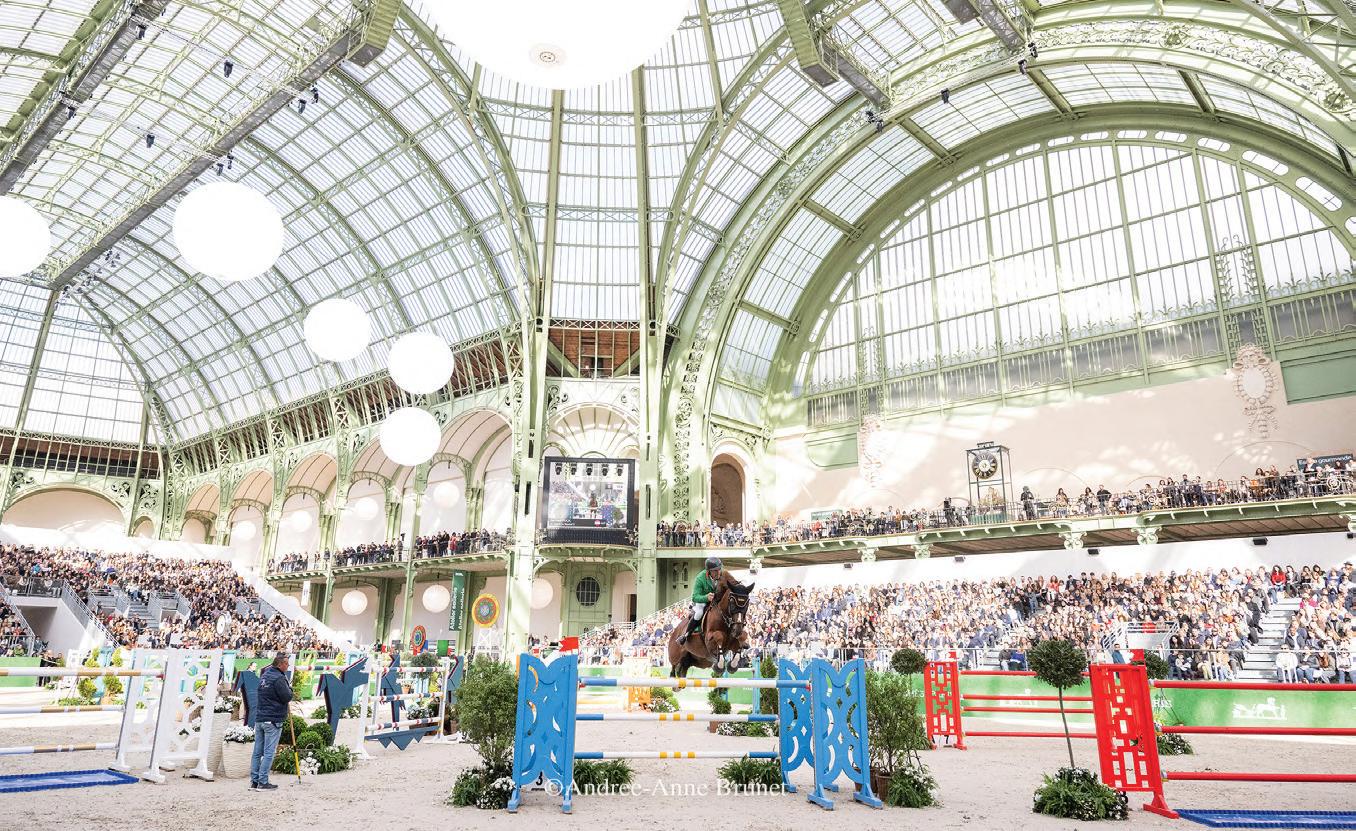
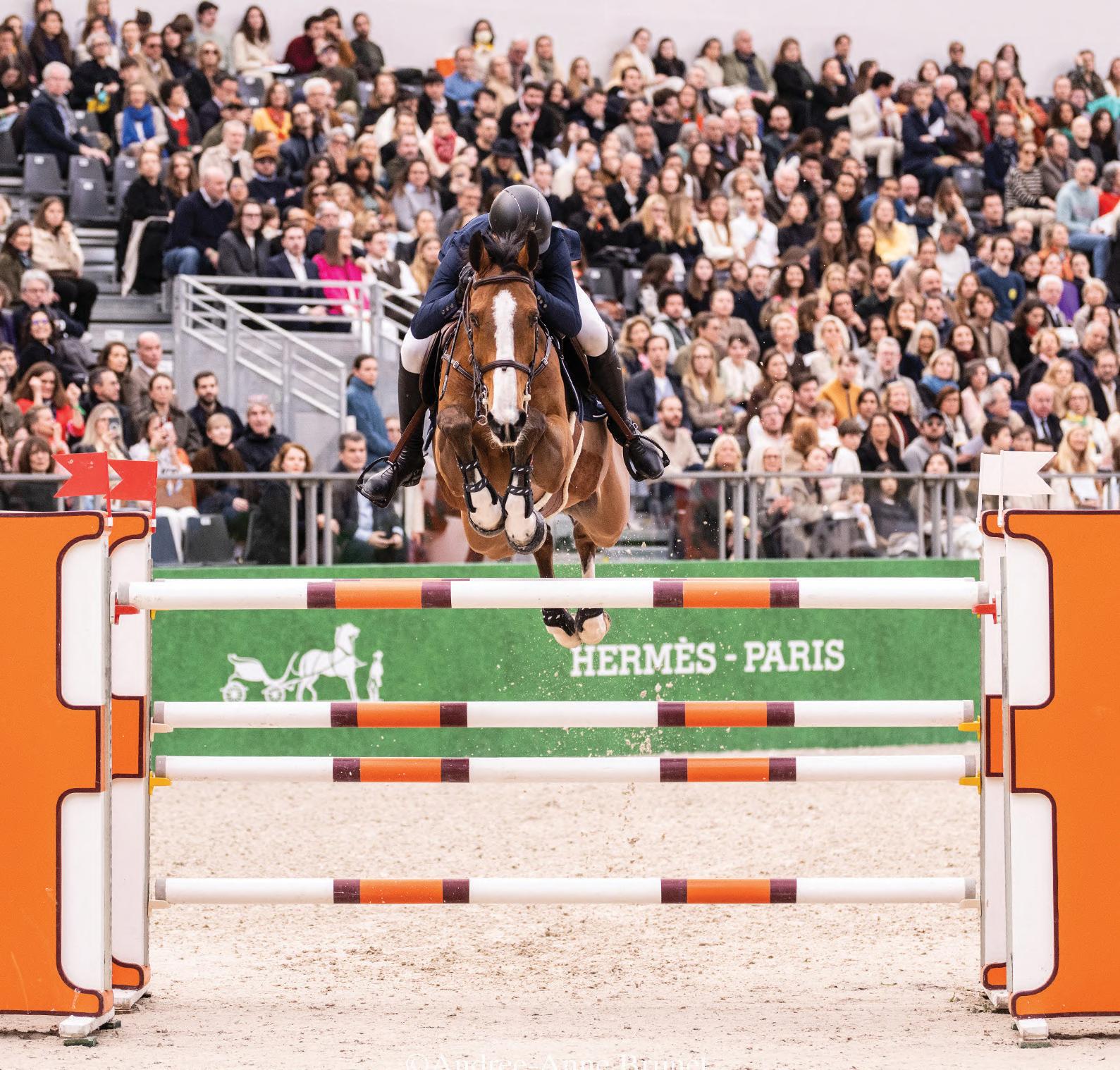
1 France’s Grégory Cottard riding 13-year old mare Cocaine du Val in the Grand Prix Hermés 2025 • 2 Ambassador of Hermés, Simon Delestre, pats his mount Cayman Jolly Jumper after securing their 3rd victory in Paris at the Grand Palais •
3 Austrian Olympic rider Gerfried Puck aboard chestnut stallion, Equitron Naxcel V
• 4 Belgium’s Gregory Wathelet riding Ace of Hearts to 6th place in the Grand Prix Hermés 2025 • 5 Simon Delestre and Cayman Jolly Jumper taking their victory gallop at Saut Hermès under the iconic glass dome of the Grand Palais Éphémère
• 6 French Olympian Simon Delestre celebrates winning the Grand Prix Hermés title at Saut Hermès 2025
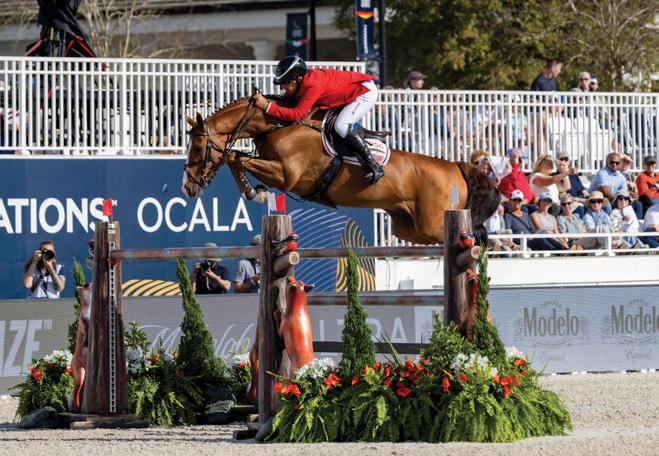


PHOTOS: ANDREE-ANNE BRUNET

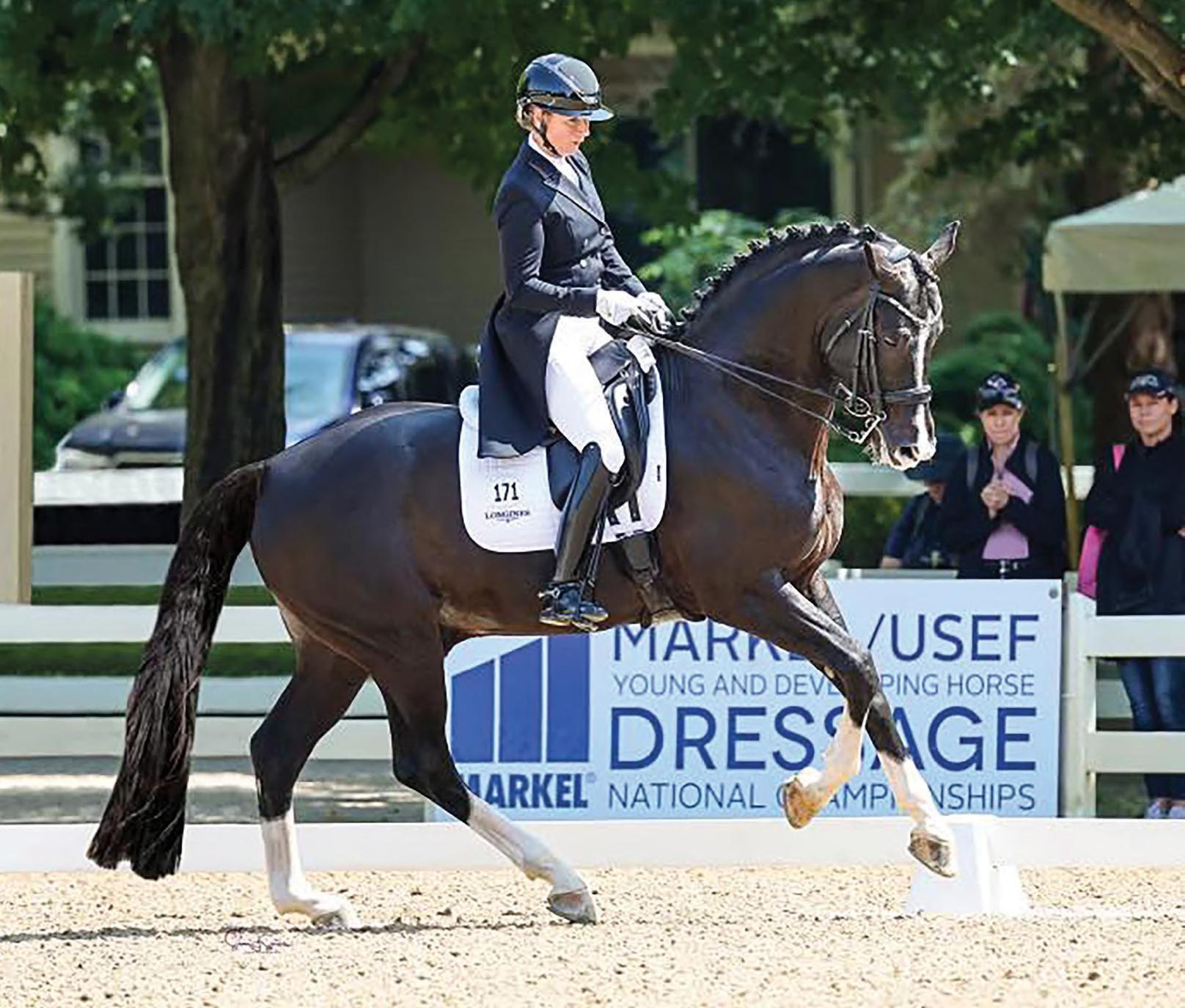
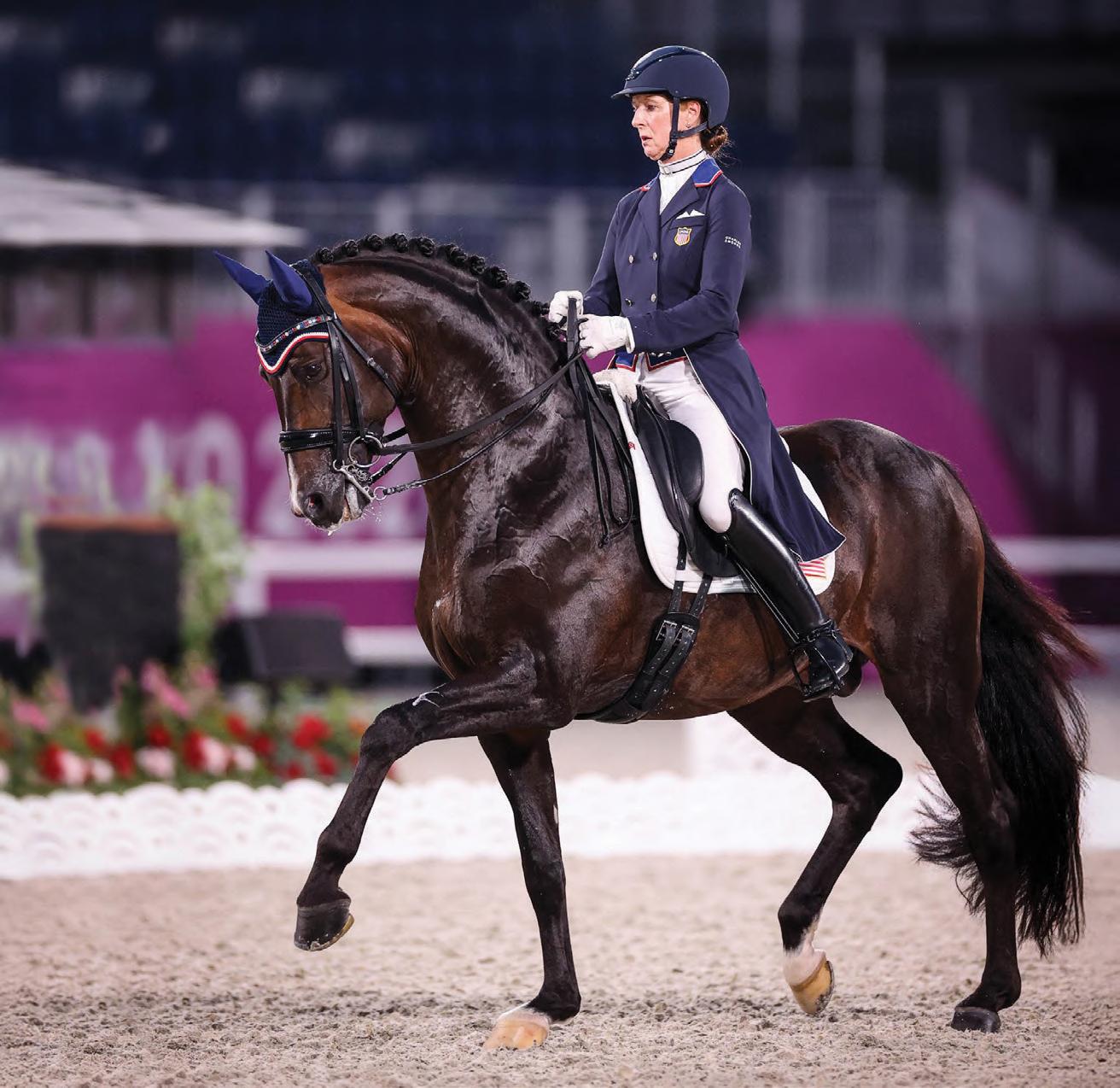


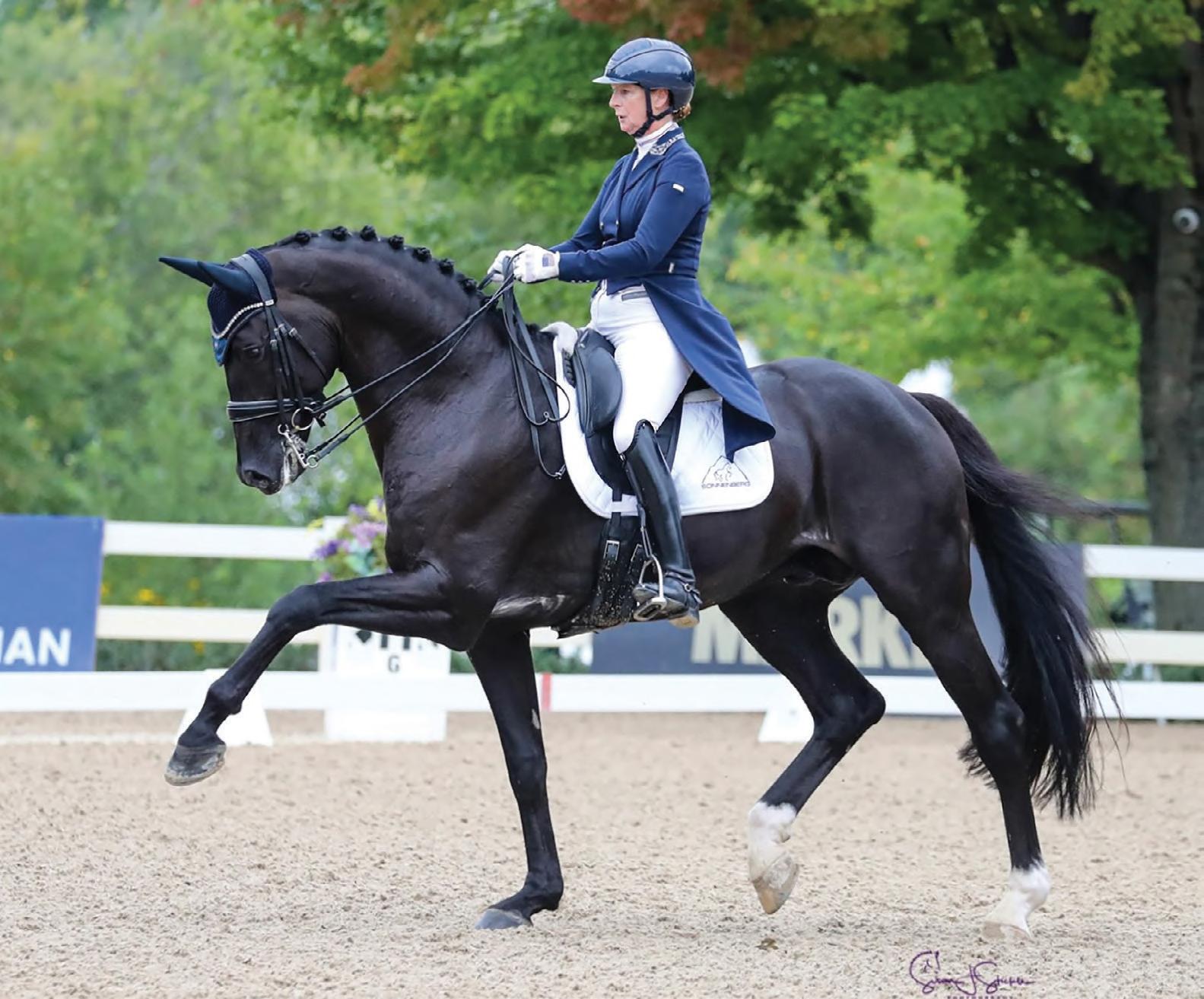


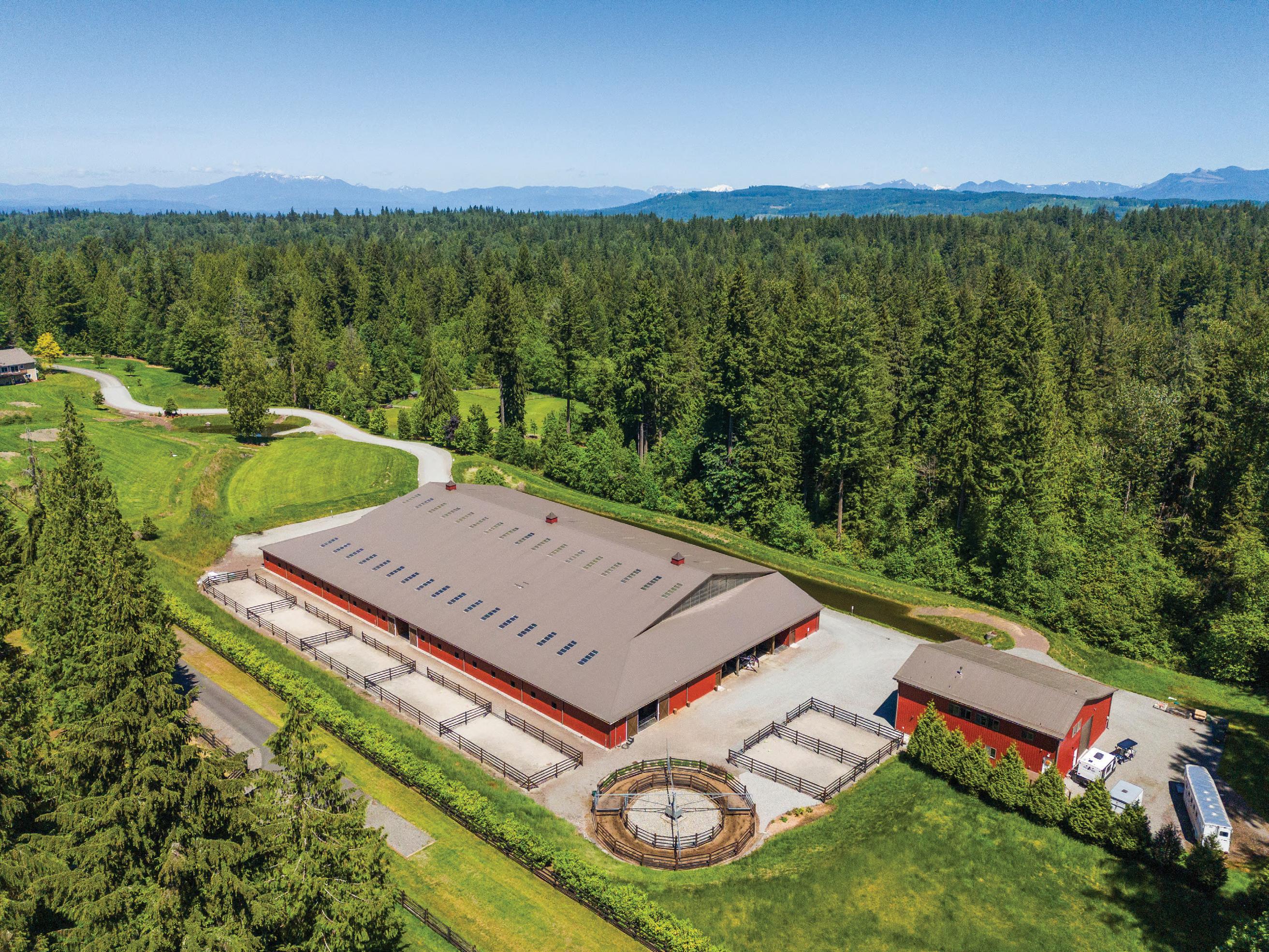
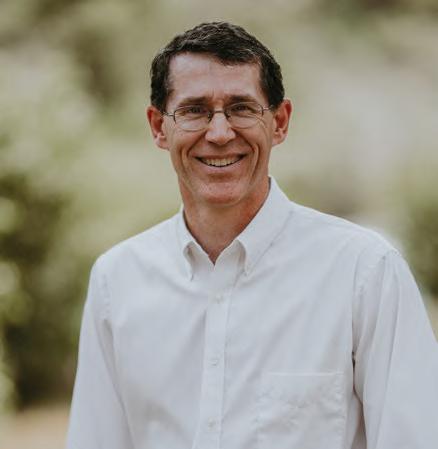


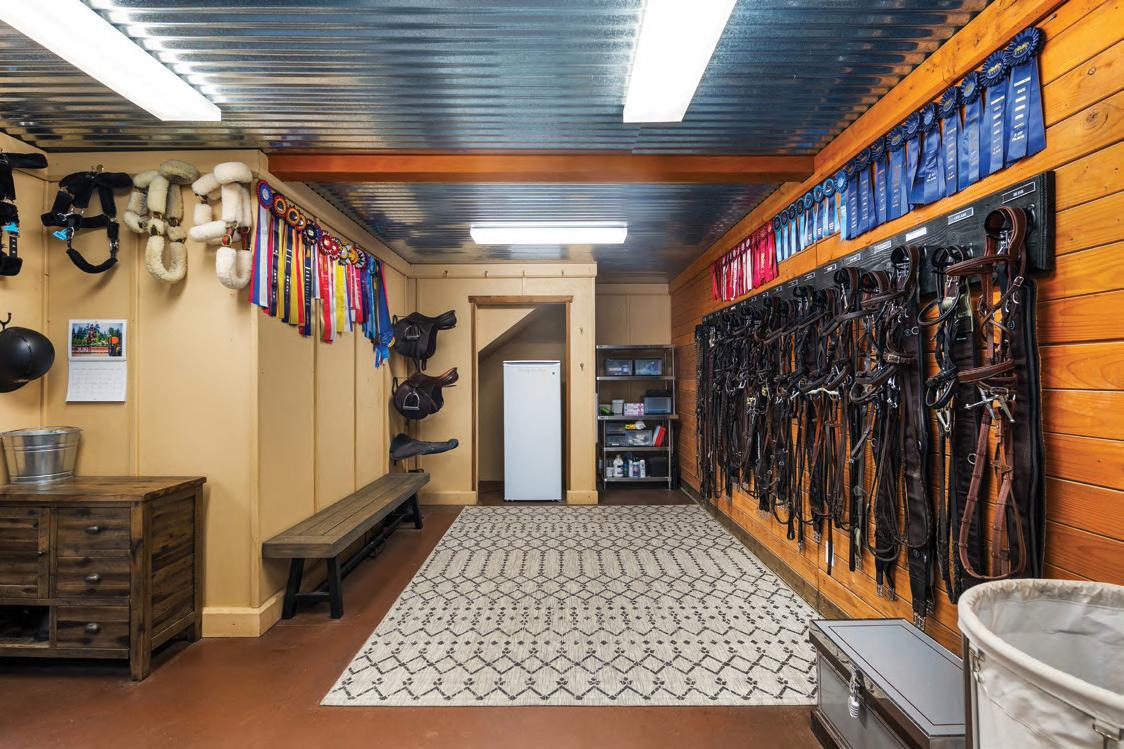

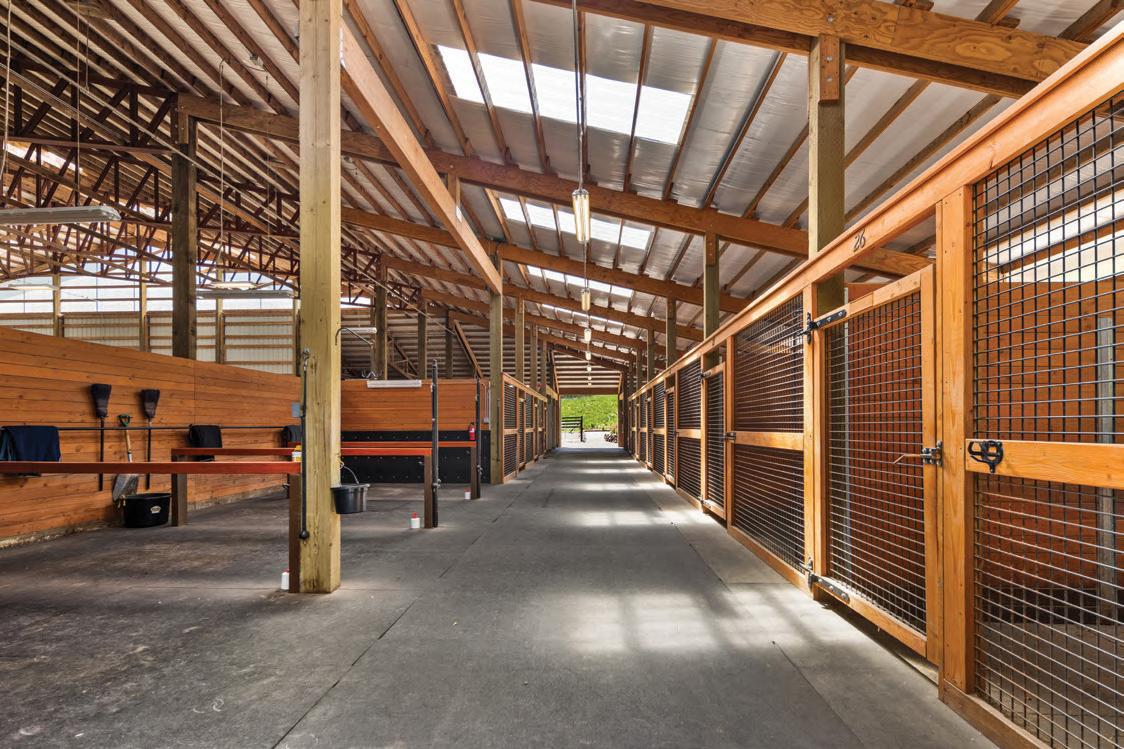
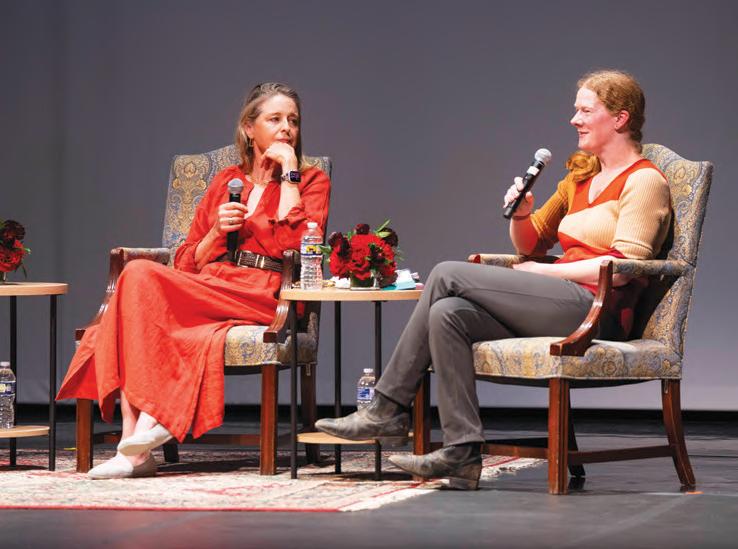
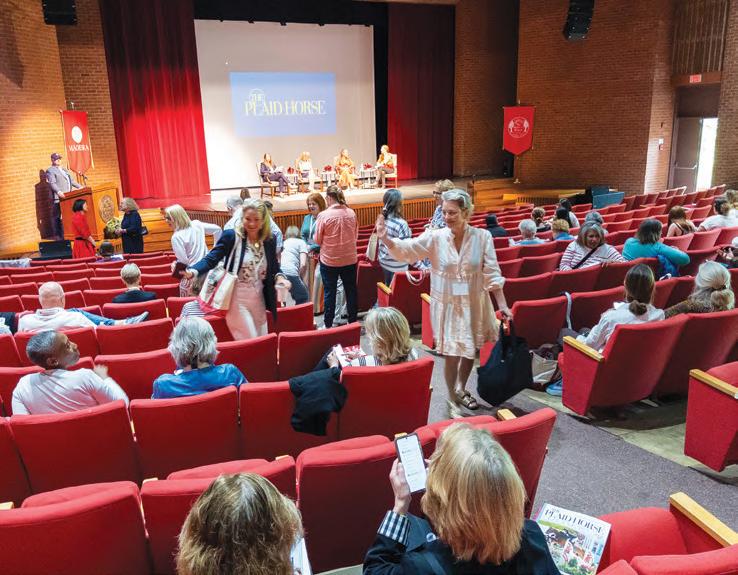
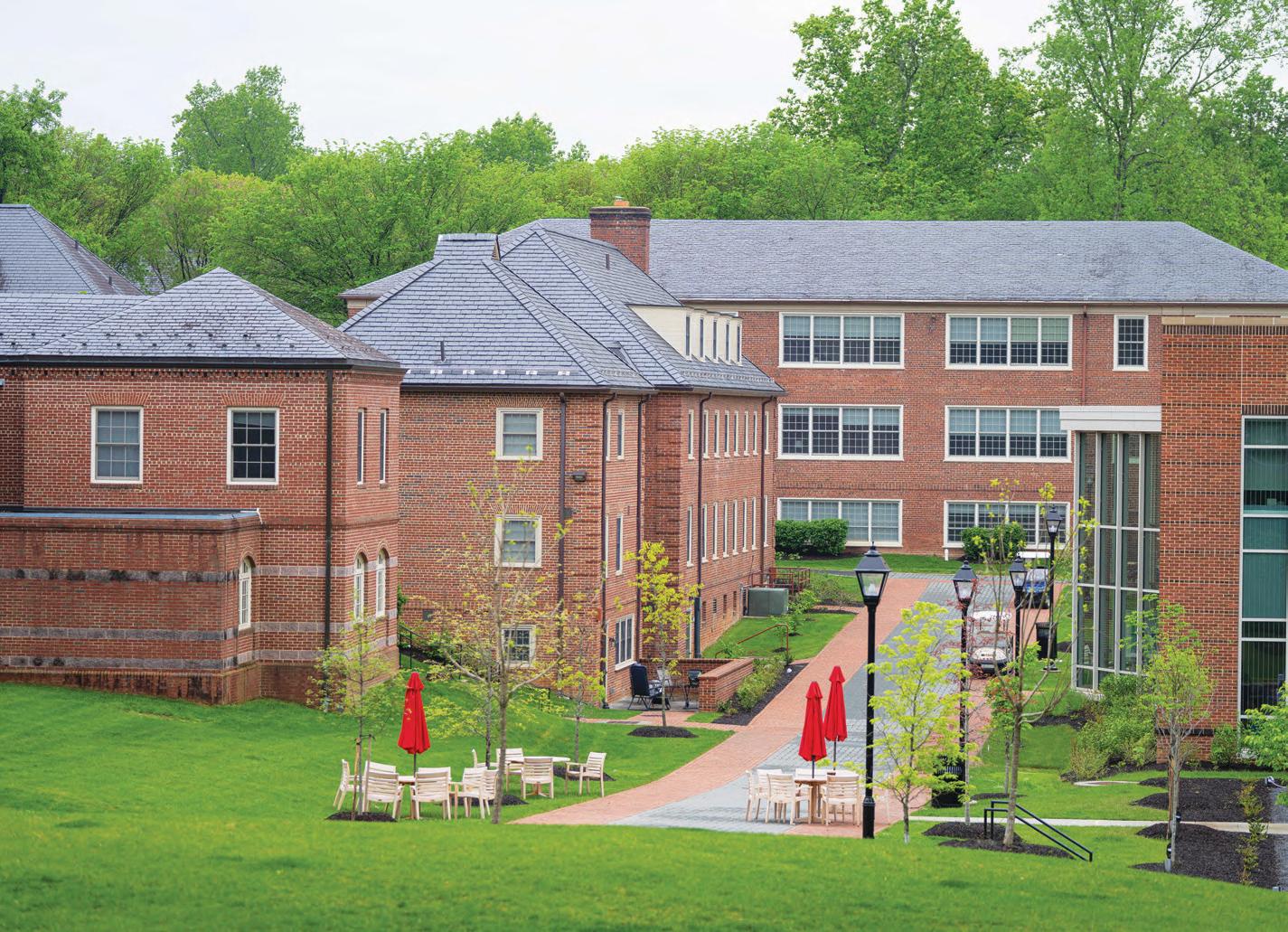
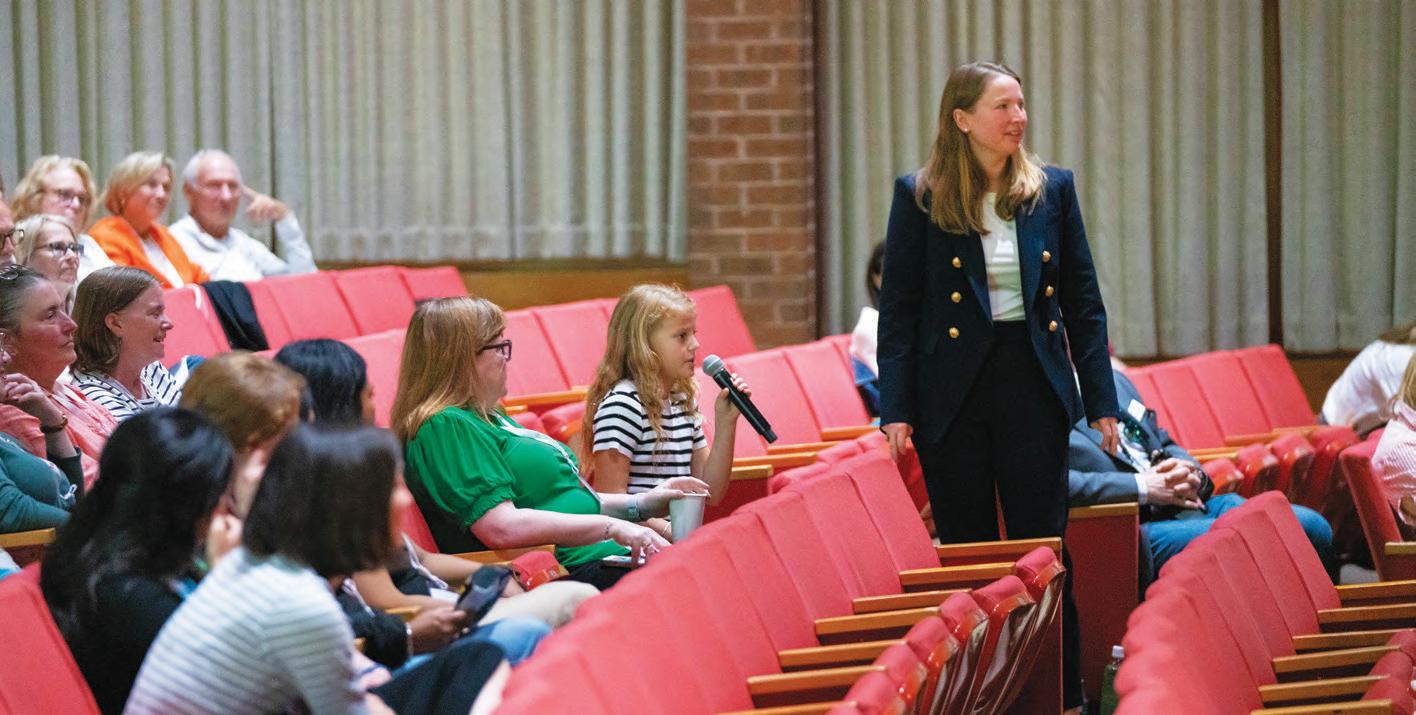
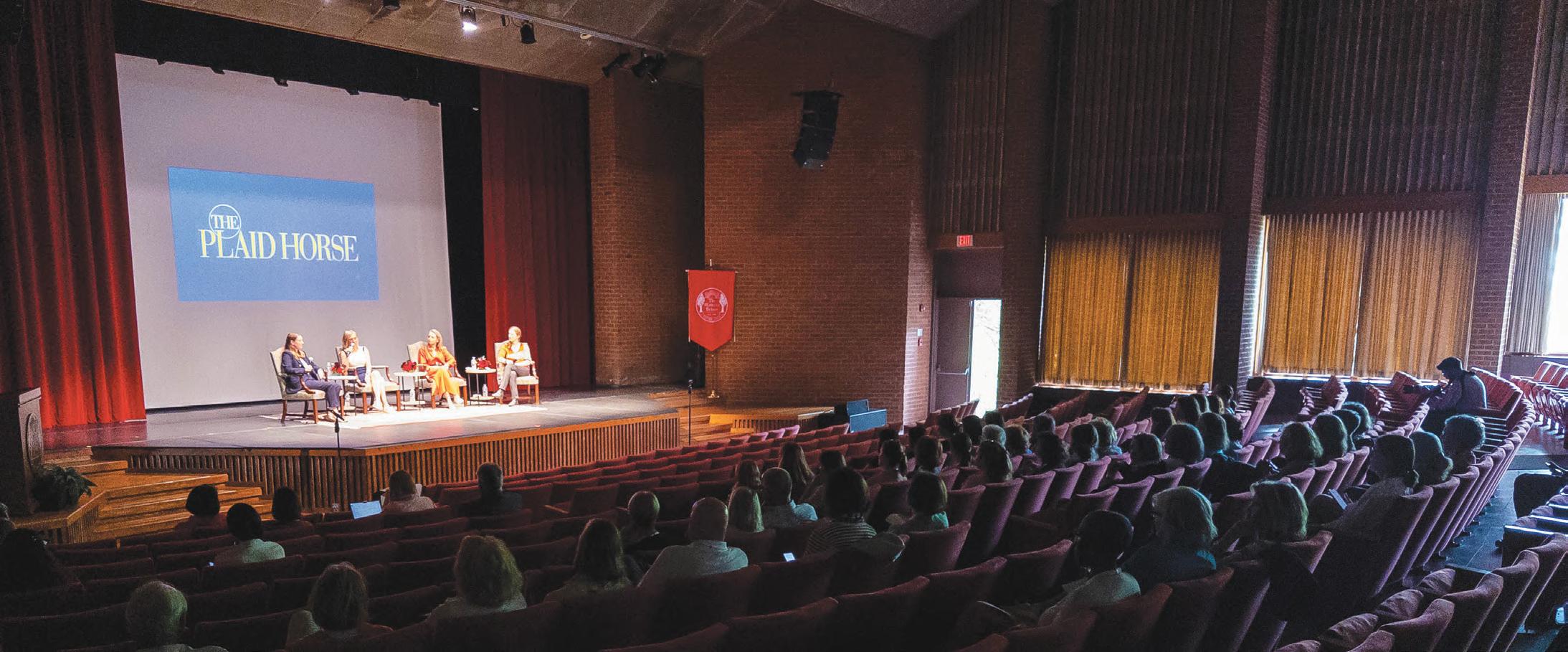

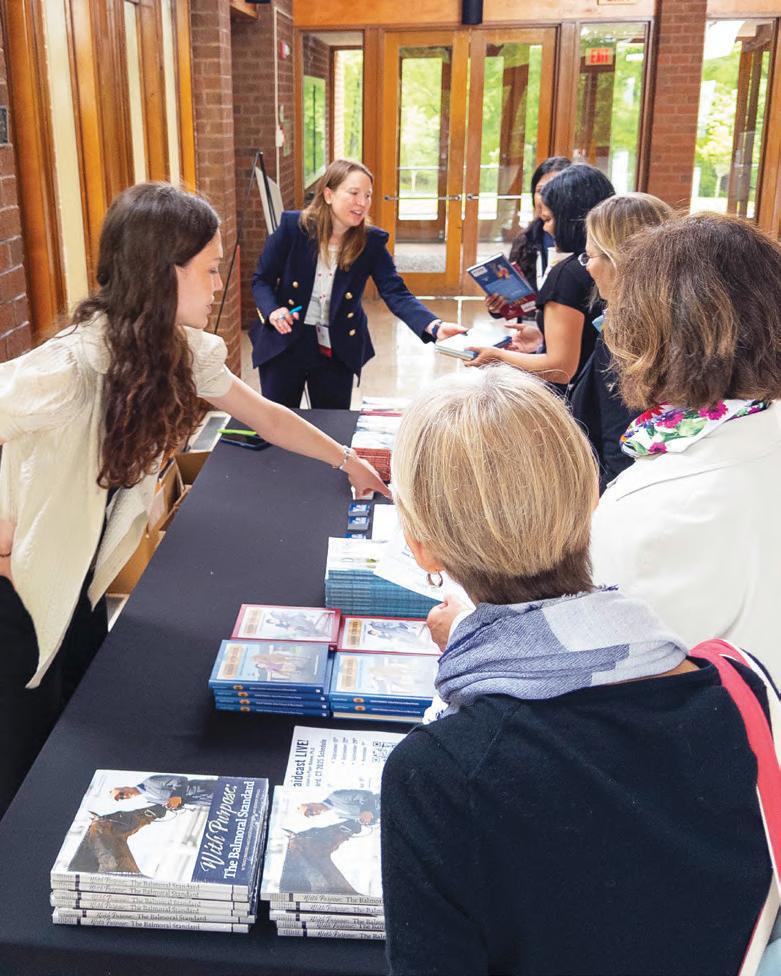
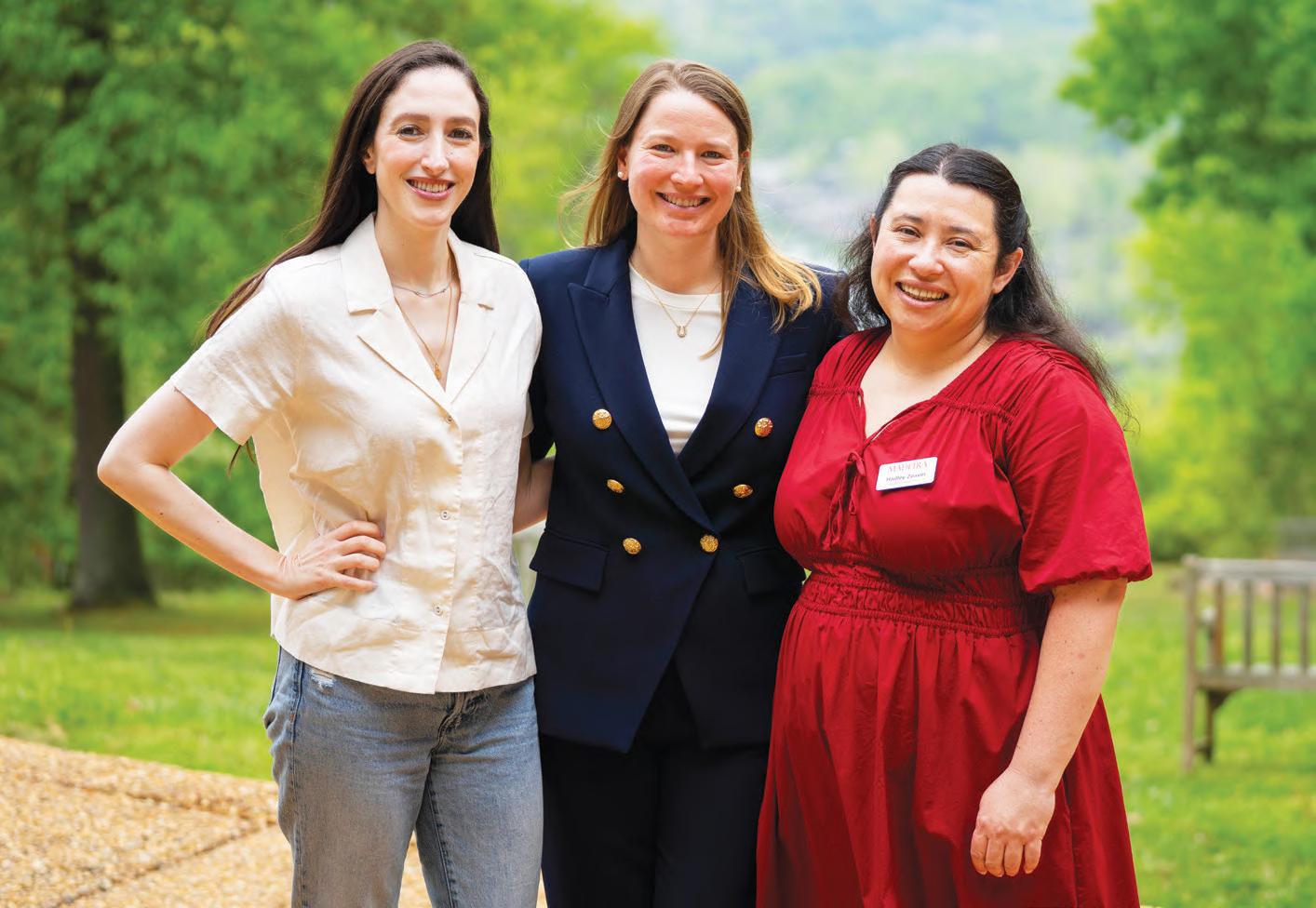
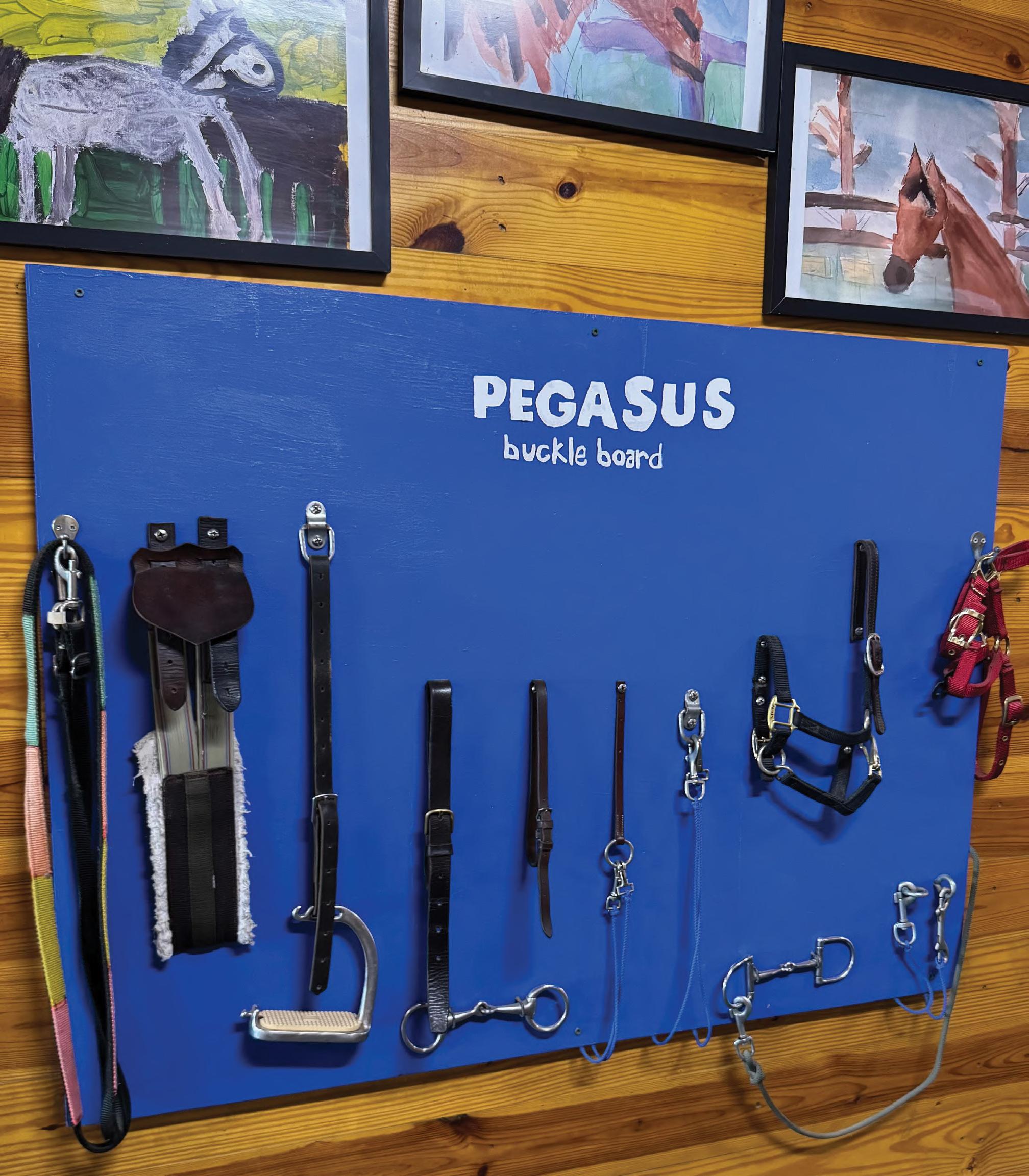
LIKE MOST of you, I have watched the recent “calling out” of people in our industry on TikTok and Facebook shall we say “with interest.” O en, but not always, what is being called out is a failure of the law or our governing bodies to do just about anything with reported instances. O en, but not always, the root of what is being done is probably something that person would redo with the data or information they have now. O en, but not always, the people are riding, training, and teaching in the moment with the best of intentions. O en, but not always, they have screwed up.
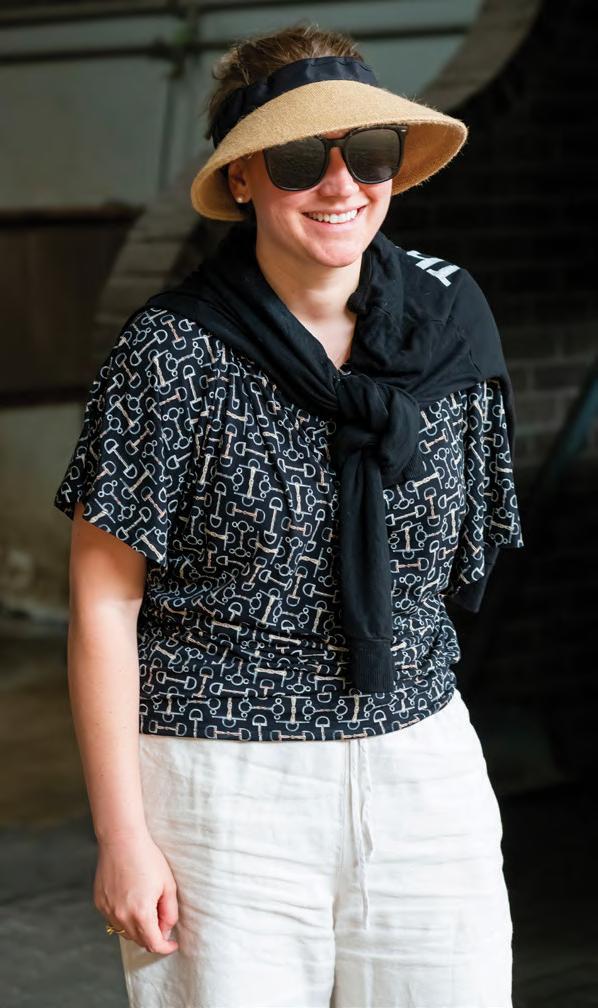
And then the internet dogpile begins. People are horri ed. Enraged. Engaged. They can’t stop clicking, watching, and sharing. The pages blow up. The hate starts- rst on the posts and then on the person’s personal pages, phones, and permeates into screenshots, texts, and an all out assault and demanded life sentence on everything they have ever done.
Do we have bad people in our industry? Yes. Does the court of public opinion o en feel like the only answer when governing bodies refuse to educate, rehabilitate, punish, be transparent, or generally seem to take anything seriously, especially in a reasonable timeframe? Yes. Do we truly want an industry run by a mob with pitchforks? No.
–
This morning, coincidentally I watched a horse being a turkey about getting on the horse trailer. A loading problem is a leading problem. Loading properly onto the trailer is a safety concern. This horse has had a good life, consistent training, has been trailered, and yet still, probably genetically, is hard
to manage in all situations. He is sensitive. He is careful. He is a winner many times over due to his excellent genetics, carefulness, and pizzazz. He also has that pizzazz in the barn which can make life hard to live with and too stressed in the barn to deal with correctly. It’s not his stomach, it’s not his turnout, his feet don’t hurt–it’s not anything external. His mother was anxious and wanted to bolt o when things didn’t go her way. His father ended up not being known for producing calm. He has the body and performance of a winning, expensive, and sought a er horse. He is special and by that I also mean “special.” A er so many positive years, he is hard to deal with. Watching this, I was not involved and I found myself getting frustrated. Seriously a er a decade of doing this, this horse still feels that some drama is necessary. And I say drama because it wasn’t fear or physical discomfort, it was emotional discomfort. Despite a lifetime of safe scenarios and every single meal delivered on time. I thought about how I was raised in the sport, which would be to grab a chain and a broom.
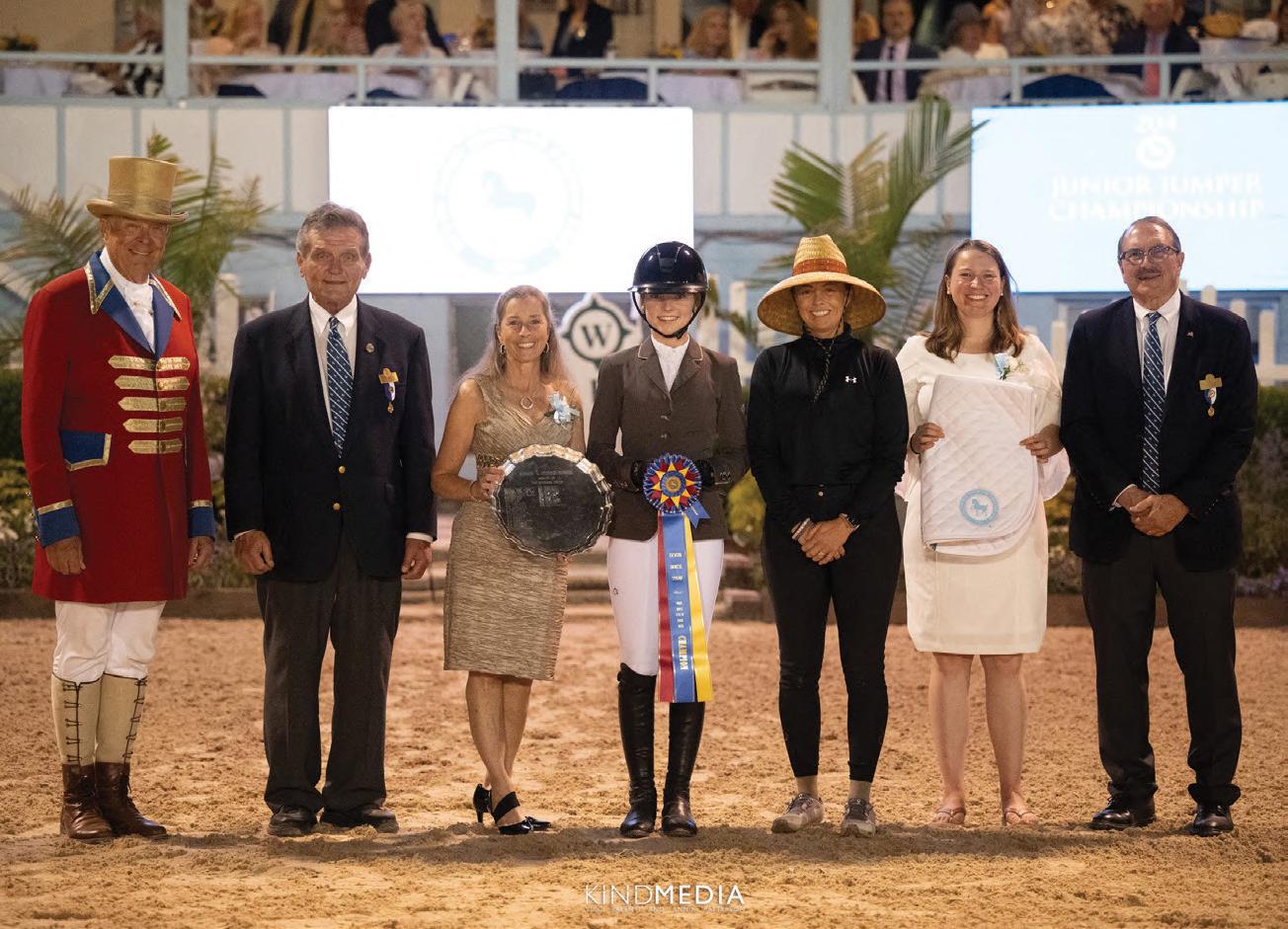
And then I watched a true horseperson take the time and have a response that was measured, practiced, and intuitive from hundreds of thousands of hours. It was calm, it addressed the leading issue, it was comforting, and it was e ective. It was not for people in a hurry or people who didn’t care about the future of the animal. It was the same thing that has been done a thousand times with this horse with the hopes that next time he will feel the reaction that would be helpful. Next time he will believe that there are no scary monsters, and the fundamental training belief that any horse, no matter how many years it takes, can get over their genetic suspiciousness and trust their situations.
I then watched every other horse in the same program calmly walk onto the trailer and stand civilly like a statue, clearly understanding their expectations and contently munching hay. I watched a horseperson who treated every one like an individual and every horse who had mastered this part of their life as calm and easy and doable. All horses, I will note, that were bred di erently.
–
How do we x our sport? We don’t x it in an internet dogpile. We don’t x it
on our phones. We might get inspired, but we don’t even x it by reading magazines. We x it by identifying the best horsepeople we can and spending as much time with them as we possibly can. We x it by providing opportunities to get kids and adults and everyone to the barn as much as possible to develop their own intuition. We make pathways for volunteers to get out to barns and groom and interact with horses. We make it possible that people-as many as possible-get to hang out with horses.
This is not a sexy answer. This will not raise your heartrate. This will not make you NEED text your friends. This will not make you irate and share and dis someone. This is the preventative care of our industry. We all want a delicious dessert, but we really need to eat a salad packed full of every fruit and vegetable under the sun. And the best part about this answer is that we can all do it. We can all be good at it. We can all participate. We can all improve our sport.
As a society we have bred many, many frustrating horses who are performers in all breeds and disciplines. So many people have an incredible athlete and a sta to handle their antics, further distancing people from their horses and the decisions
that are made on their behalf. Horses who are di cult to lead and turnout and tough for the average horseperson to handle are rampant in all industries.
Is it a top horses’ job to win or to be handlable? If the mistake is genetics, what do you do for the rest of the horses’ life? Do we train the best we can knowing the internet could tear us apart for fear responses at any moment? Do we use harsh training methods in the short term make sure they have routine care? Do we say someone screwed up too much and they’re dangerous and put them down?
But, maybe the questions we should all be asking is who honestly needs a top horse? What programs really have the time and calm to manage the “special” ones? How many should we be breeding (really inbreeding) out of the excitement to jump big sticks and win big classes? Who will honestly train all of them in a calm manner consistent with our collective values?
When I talk to young people, so many of them watch old television shows over and over. There are so many theories why Friends and its brethren persist into a new generation, but I truly believe that it is that the younger generation knows, they know in their bones, that good things can only happen to you in person. You can only burst into your friend’s apartment without a phone call with news. Big reveals simply cannot happen by text, they need to be told in real life to your people, your friends, and, most importantly, your horse. You have to be there.
And yet, in-person is terrifying. People are scary. Horses are huge and strong. Mistakes have consequences. You will be wrong more than any of us ever want to be. You can vilify anyone online and make a comment. It is so easy. Can you walk up to them and have a conversation with them? Can you be constructive? Can people learn? What behavior should merit a life sentence? Where are the lines and what do you do when someone crosses them in your presence? Or can you only say what “is right” when you’re in the majority and the dogpile has already begun?
–
Recently I did something so embarrassing. The type of thing we all
have literal nightmares about. It was so mortifying, it could go either way-I could bury my shame and never tell anyone or own it and make it a laugh and have a great cocktail party story. I decided to bury it and then later when I was talking to Emily Elek on the phone, I knew she would enjoy it, so I told her. If you see me a er reading this in real life, you are welcome to ask me and watch my face burn tomato red while I tell you.
I described my desire to just melt and disappear in detail with my face rosy, hot and bright. She cackled. She laughed. She giggled. I went on and on. At the end she said, “Well, that is objectively really funny.”
I laughed too. Yes, it was. I survived. I’m no worse for the wear. I might remember it in ve years, but I do not need to. I will never repeat it except if it happens to happen again.
She is the only one I told, I moved on with my day and my life and didn’t dwell. It didn’t need to consume my next day, it didn’t need to be thought about again. It was a mistake, it wasn’t indicative of my ability of, well, anything, and it was and wasn’t avoidable. It happened.
How we react to anything in life is important at training ourselves to be better horse people. Can every mistake be laughed o ? No. Are mistakes o en a learning moment to change your behavior for the better? Yes. Do most mistakes need any more thought than a few minute analysis? No. We make so many mistakes and we have to because there is no rulebook and every horse is an exception to all the rules we have ever learned. Every student is unique, every day is unknown, and every horse requires intuition to know if you make their life better in the long-term by catering to a neurosis or giving them the tools to manage their own emotions and environment.
Most people are doing their best, most people need great friends in private to be honest and help them hold themselves accountable, and most people could use the people around them to put down their phone and help make every situation better. We make our industry better by encouraging education, good habits, and quietly and politely being kindly, sincerely honest
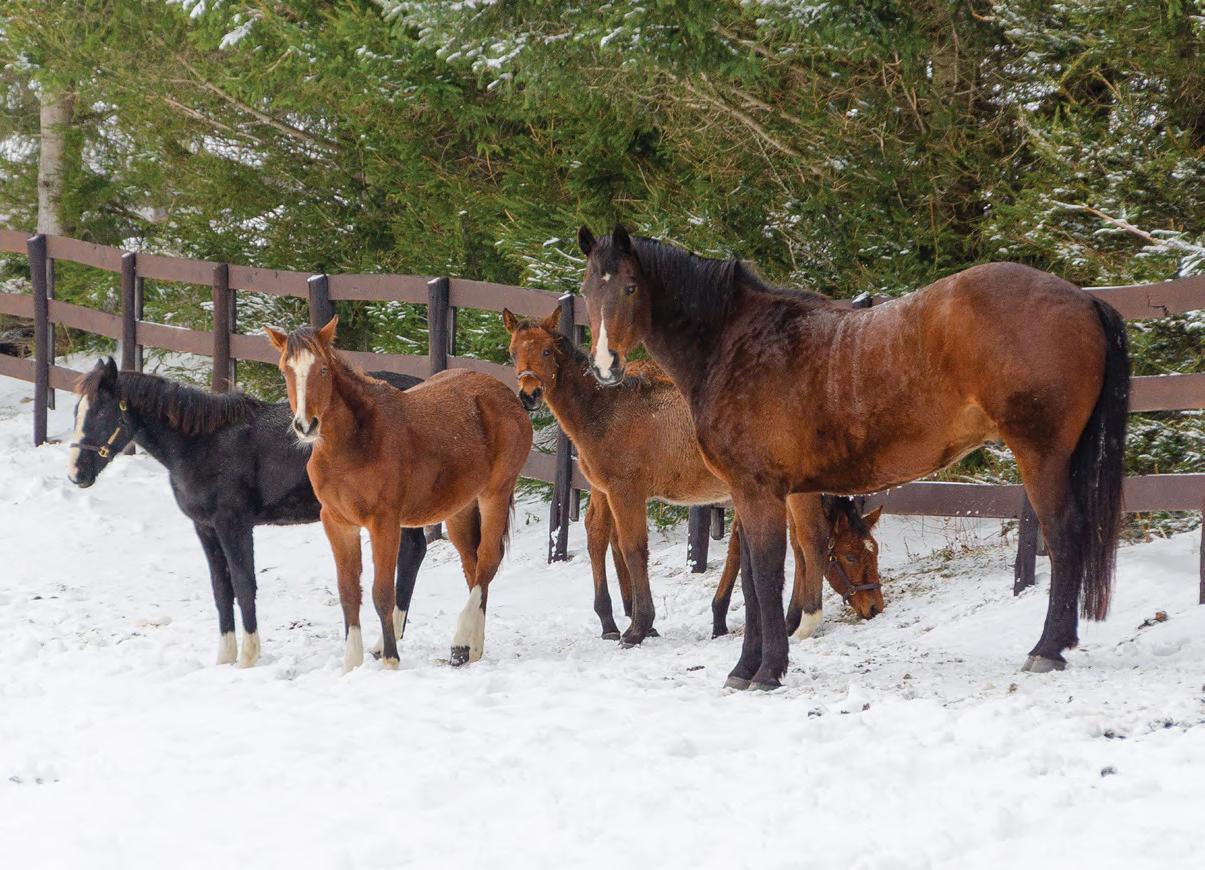
Passed away this spring at age 30. Fans of top sport fondly remembered his impressive career: team gold medals at two Olympic Games, two silver medals at the FEI World Equestrian Games, an individual Olympic bronze, and numerous class wins. When I thought of him, it wasn’t in those moments that my memory instantly transported me back to- it was a simple day in 2014 with a fresh snowfall that I navigated icy roads to head up to Madden Mountain.
On assignment in the early days, I was desperate to prove myself. My non-horse husband Adam Hill was on holiday break from school and I brought him along to photograph with me while I interviewed. We went over everything in the car. Everything not to say. Every way he could possibly embarrass me. I wanted to t in so badly.
We had the most gracious hosts and saw the most strategically horse-friendly farm, met babies and olympic medalists, went all over, and in the course of the tour came across a paddock with a very hairy horse with the snow gently falling upon him. The Dutch Warmblood was out with several babies and they were eating and hanging out. I didn’t recognize him at rst, but then John Madden said that it was Authentic, then comfortably retired in his late teens and supervising some youngsters.
“Authentically what?” asked Adam Hill, innocently.
I thought I might pass away. I tried to jump in, but before I even could, John explained to Adam who Authentic was. No judgment or shame, he just introduced a new fan to the sport to an unassuming horse who was a generational talent for our Team.
To this day, we laugh and joke regularly about “Authentically what?” because it is objectively hilarious and also because we are all in situations outside our element so regularly and we can all be kind and have grace and educate, no matter what we have accomplished or who we are. No one is too good to teach others about our sport, the horses, and all the good we have to celebrate.
to all those around us behind closed doors so that they have time and space to engage in deep learning outside the spotlight. There is no glamor in the dayto-day and no award for giving others the opportunity to develop their own horsemanship. There is no substitute for putting your ngers in a mane and getting cold and muddy and taking care of horses. You have to do it-you have to lead by example, by opportunity, and it
is every single one of our responsibilities to clean up our sport to top standards, one situation at a time.

Piper Klemm, Ph.D. TPH PUBLISHER
Follow me on Instagram at @piperklemm
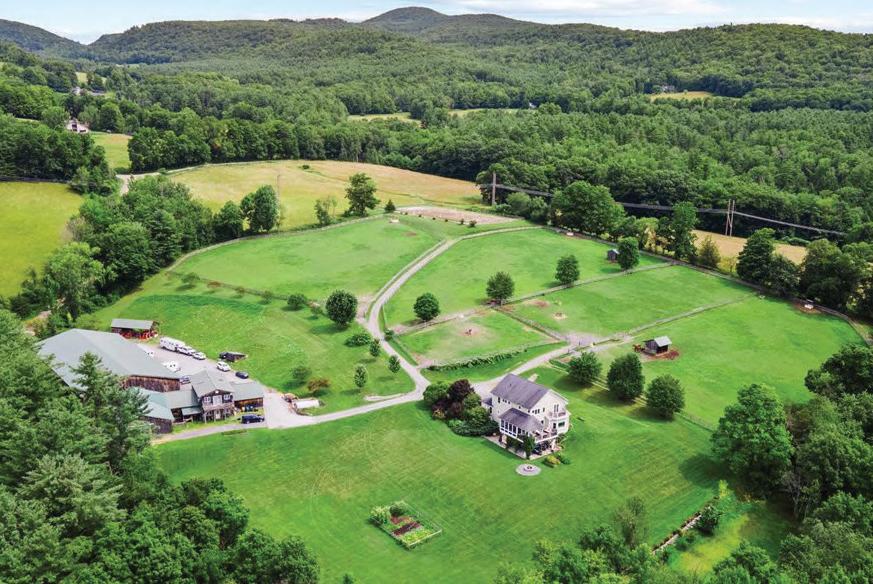

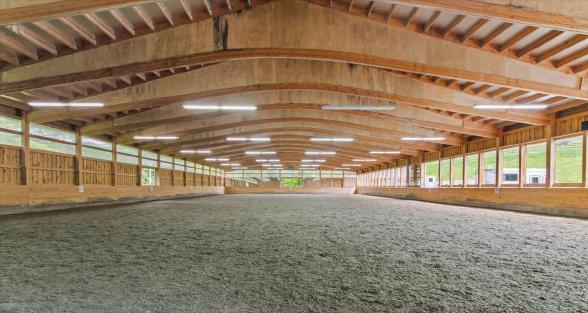



This stunning 30-acre farm is just minutes from Bennington, VT and Williamstown, MA.
This stunning 30-acre farm is just minutes from Bennington, VT and Williamstown, MA.
• 4 BR, 3 BA, 3780 sq ft home, + 2 BR barn apt
• 4 BR, 3 BA, 3780 sq ft home, + 2 BR barn apt
• State-of-the-art indoor arena, 13-stall barn, paddocks, outdoor arena, extensive trails with cross-country jumps and hills
• State-of-the-art indoor arena, 13-stall barn, paddocks, outdoor arena, extensive trails with cross-country jumps and hills
• Mountain views, quiet country road, close proximity to multiple competition venues
• Mountain views, quiet country road, close proximity to multiple competition venues

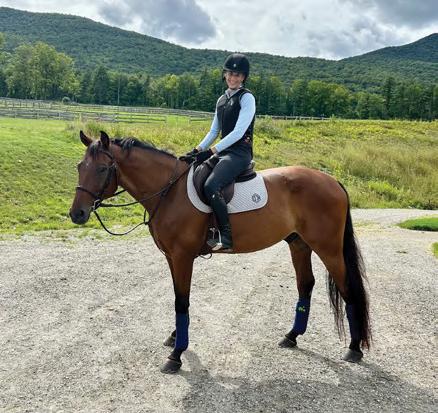







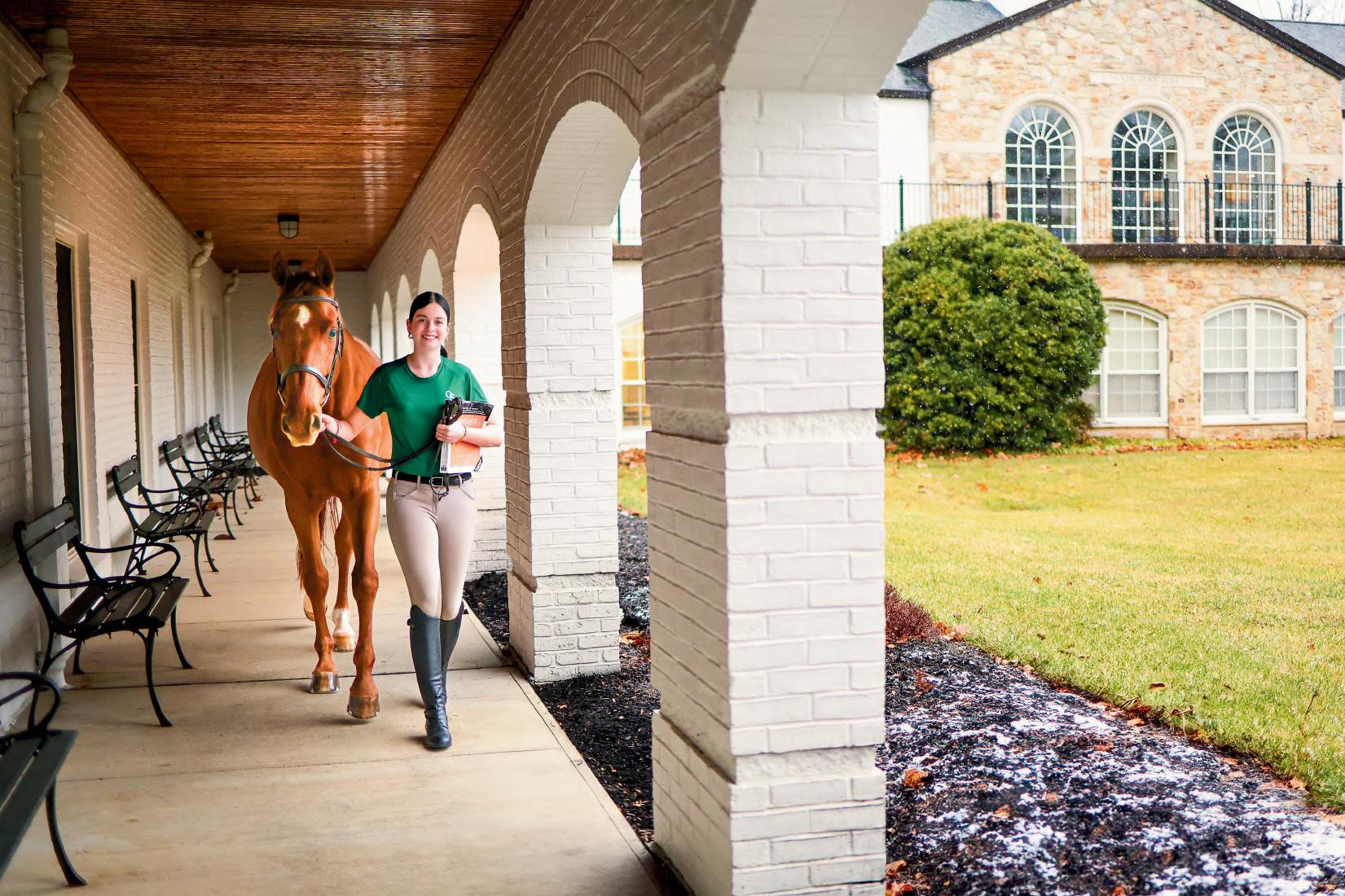






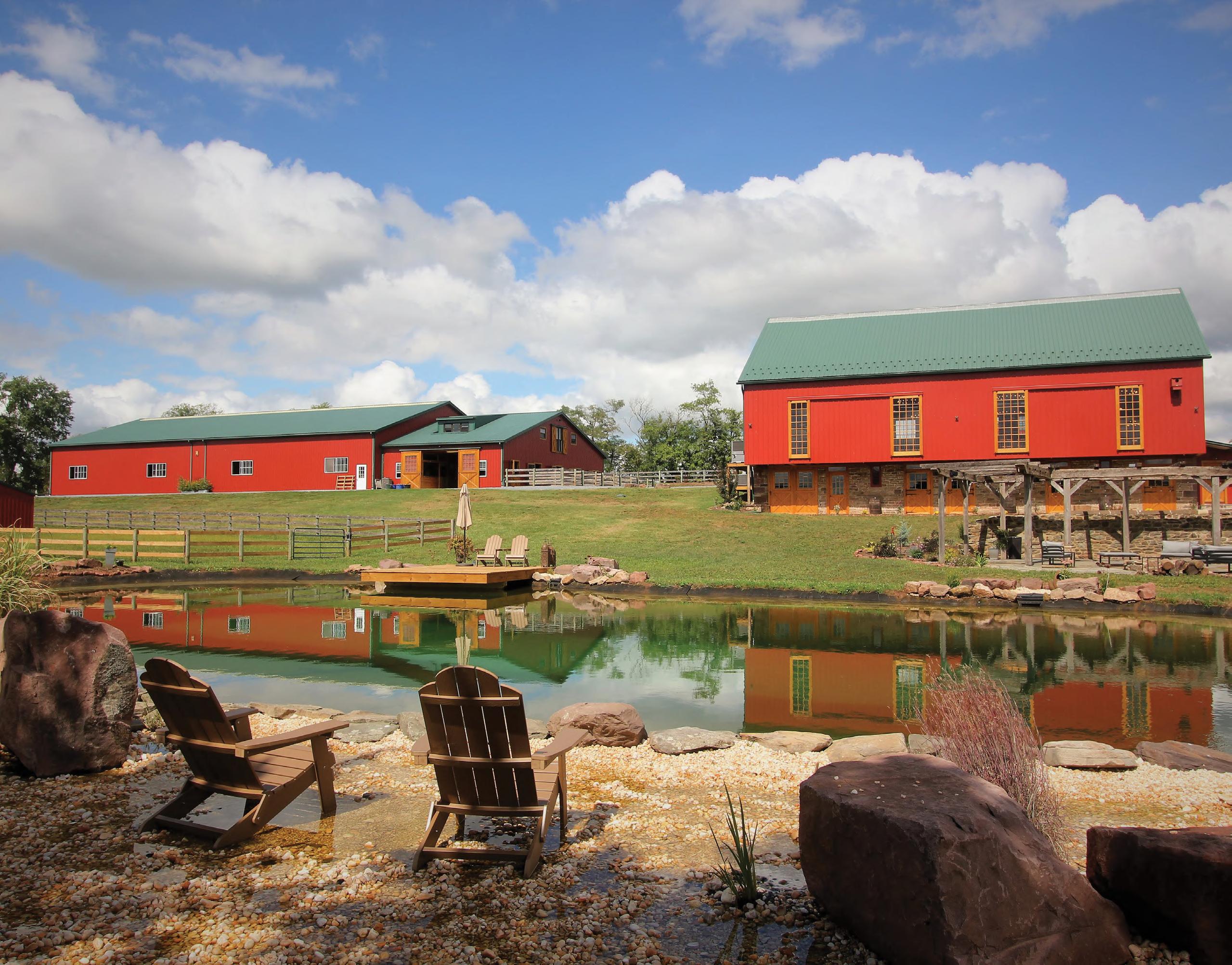
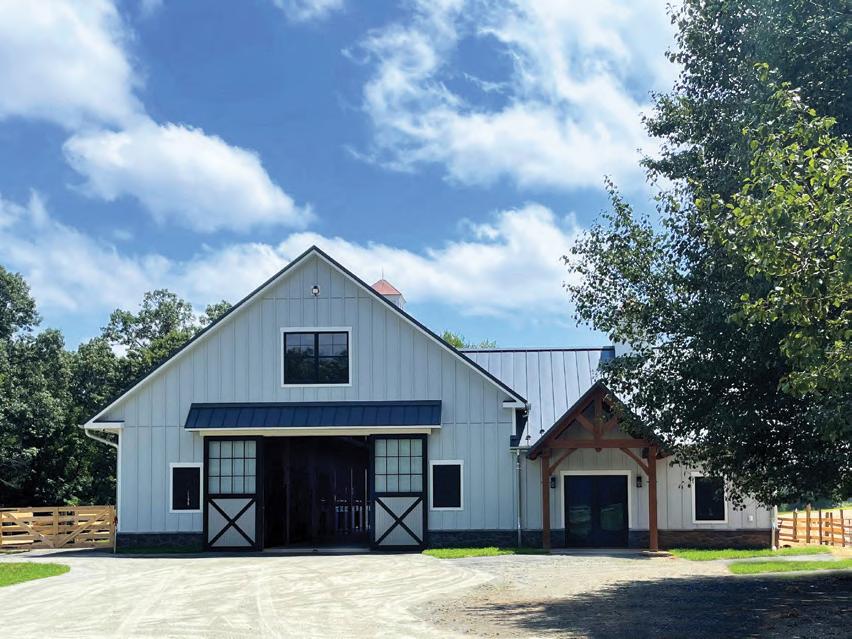
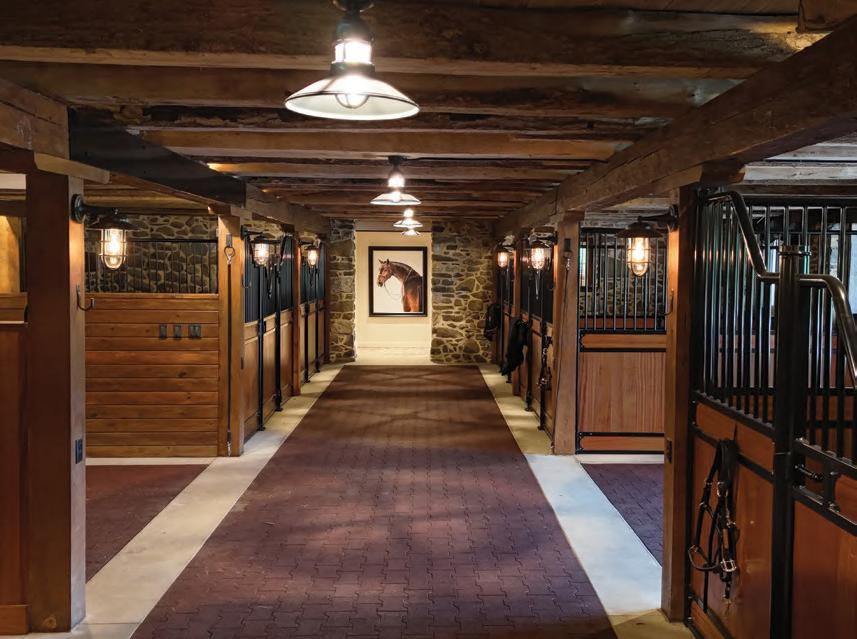
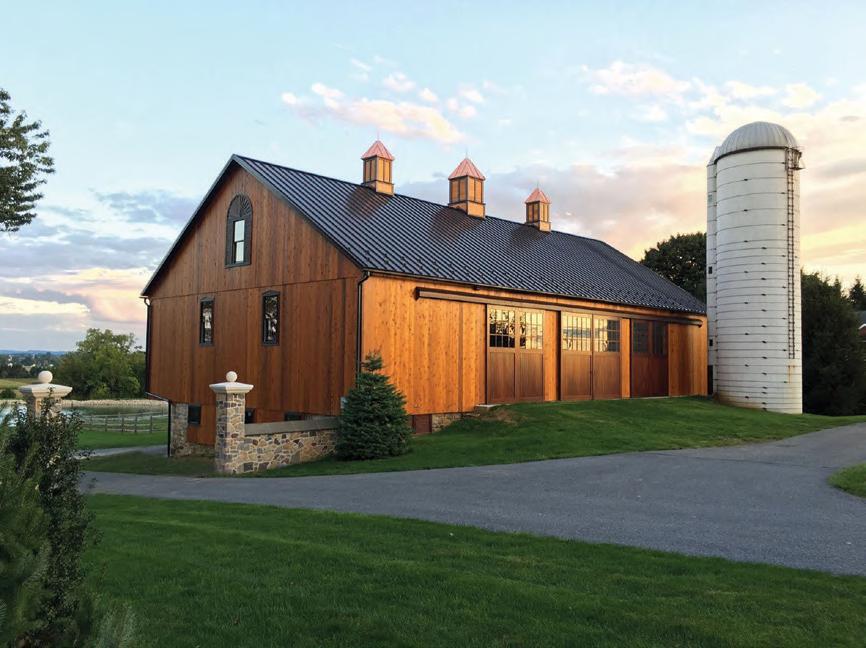
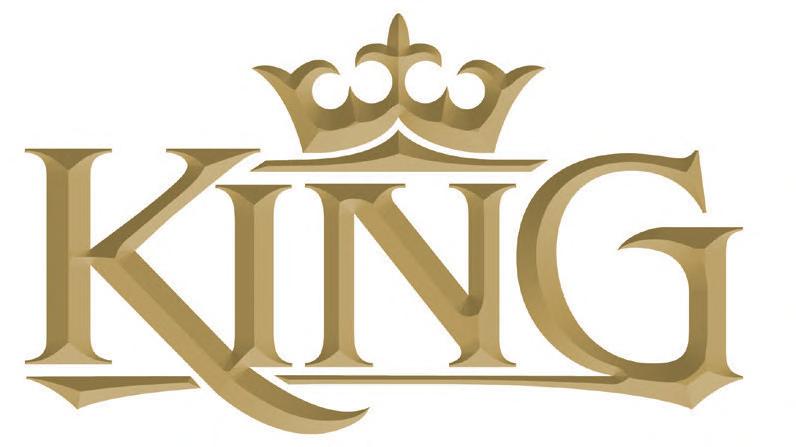

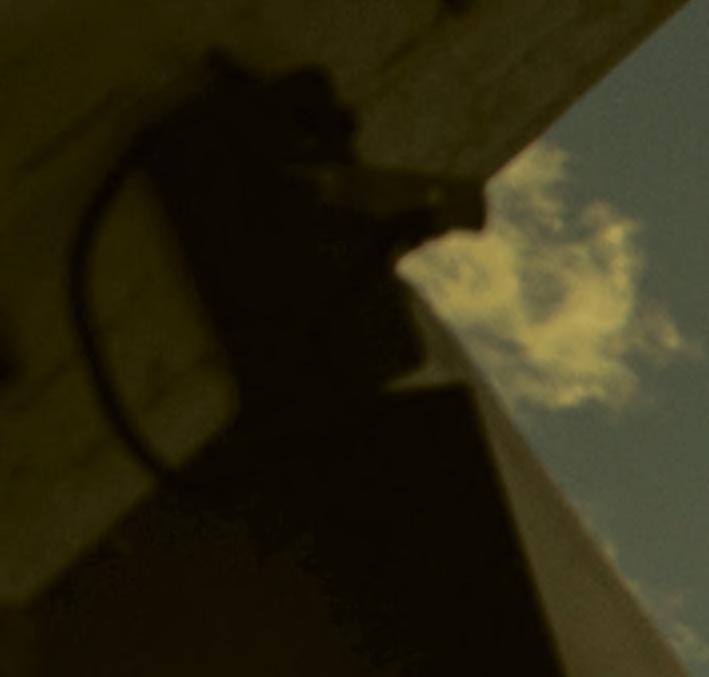




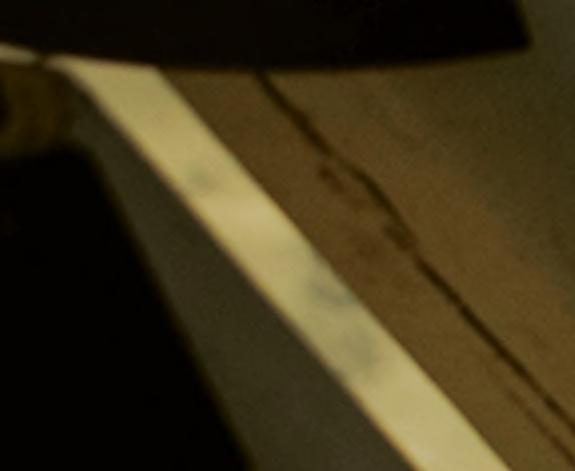




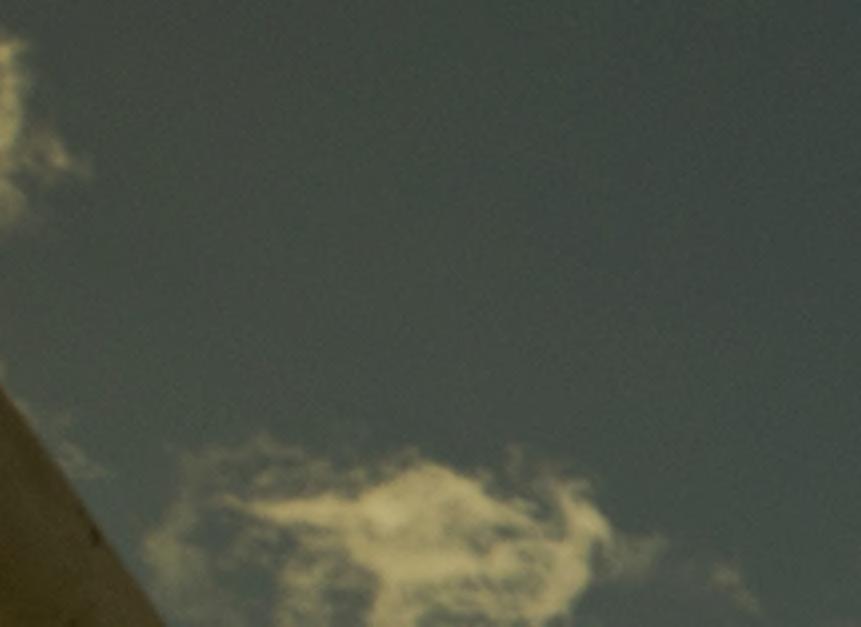











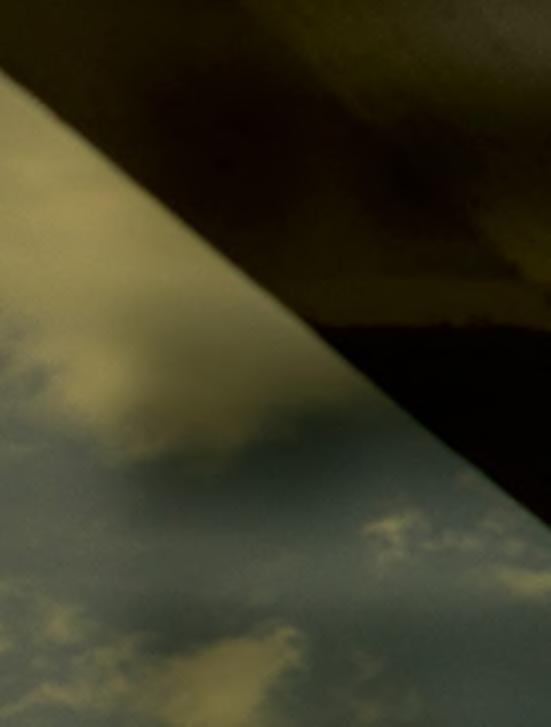








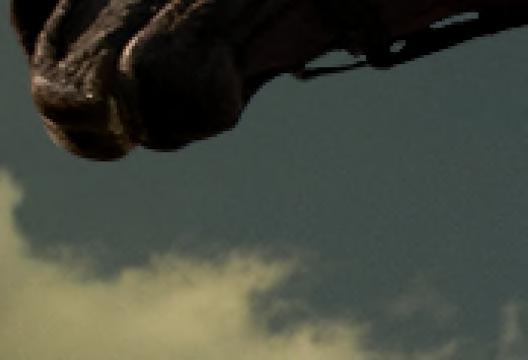
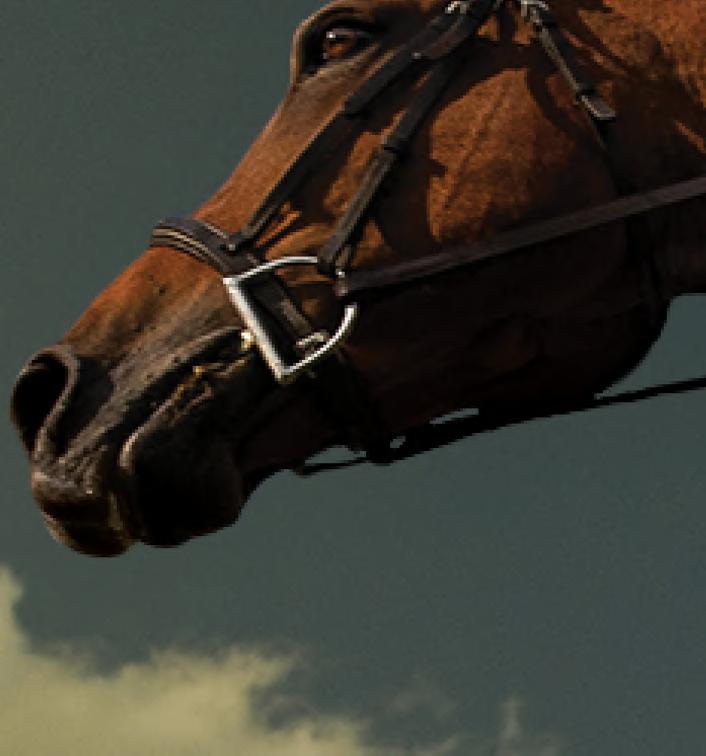
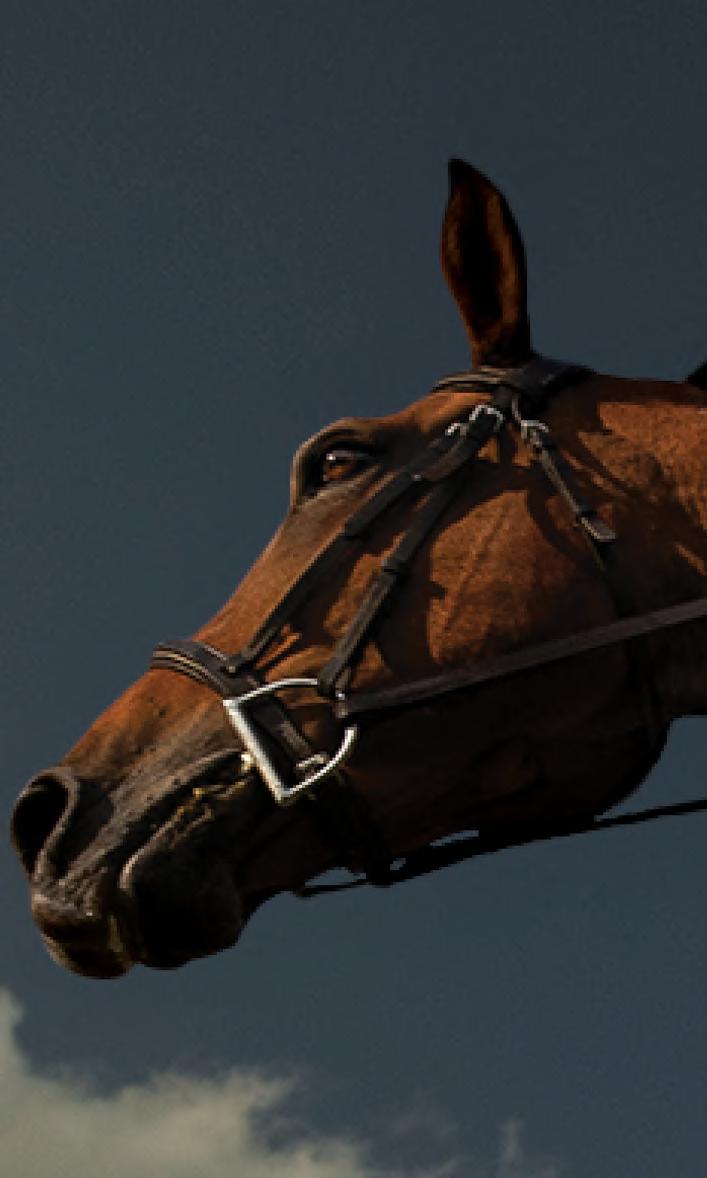















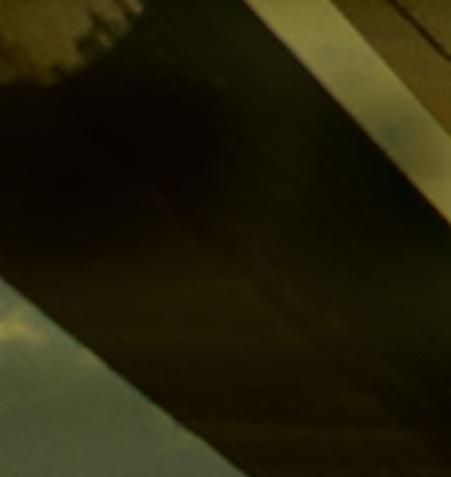













When your horse is your teammate you'll do everything you can to help them perform. Get the performance-proven, research-backed supplements your athlete needs to bring home the win.




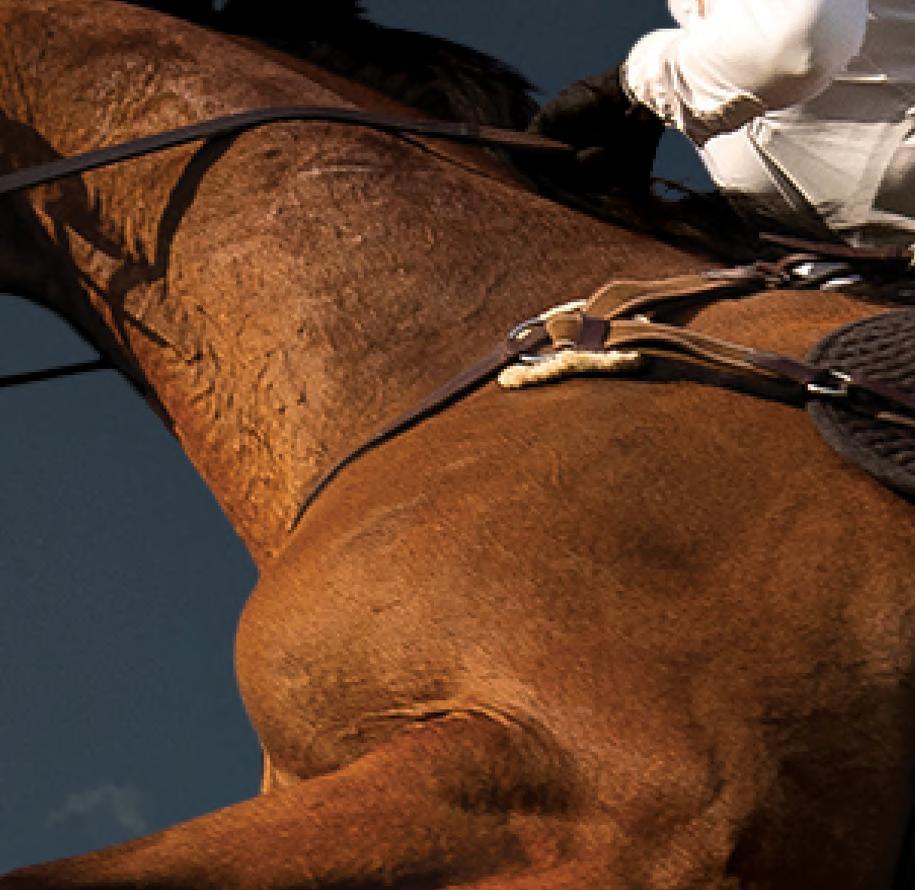
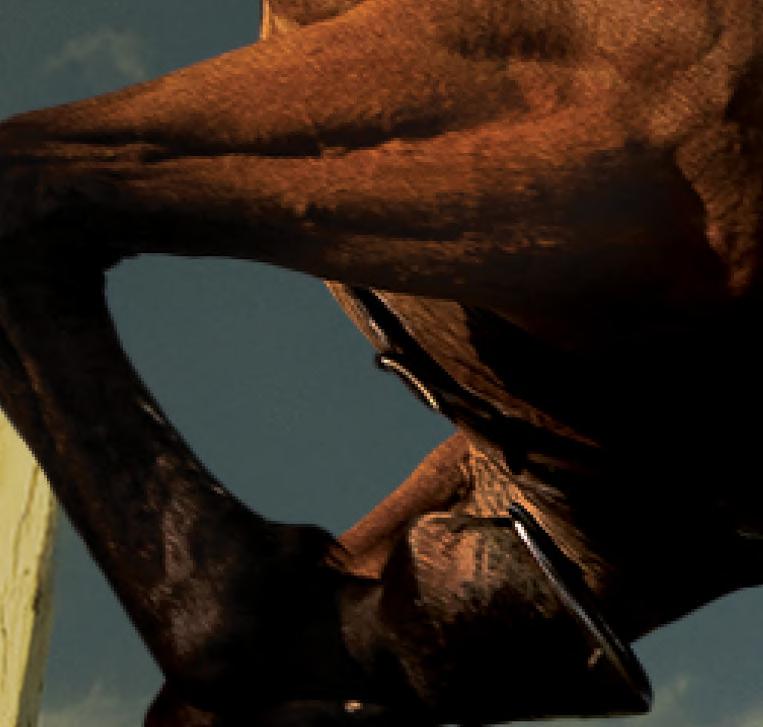

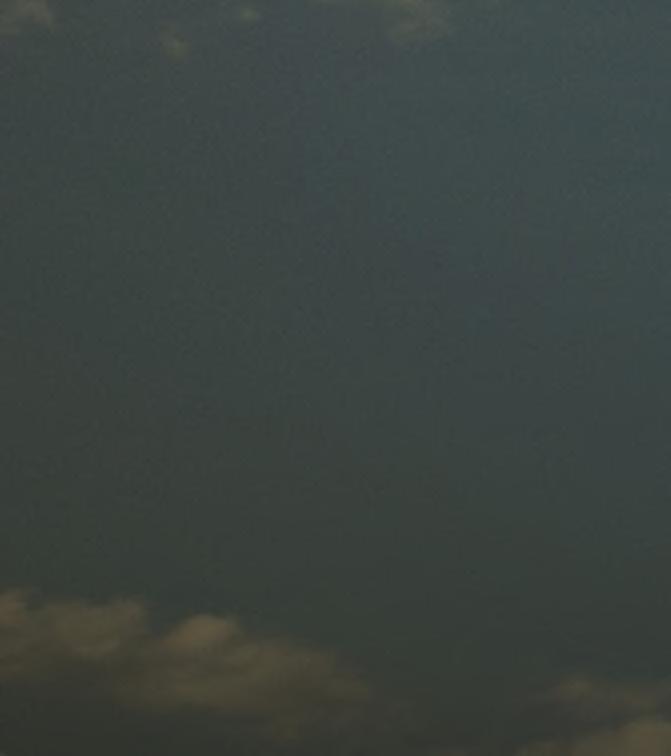




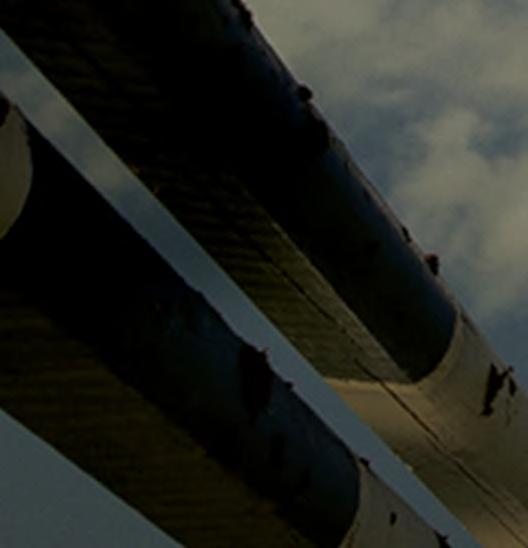

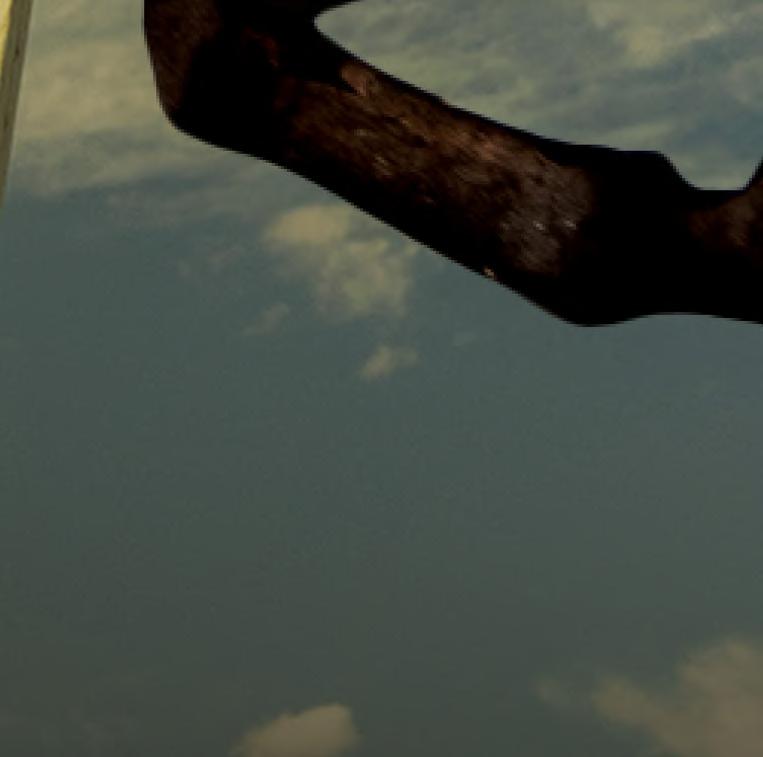
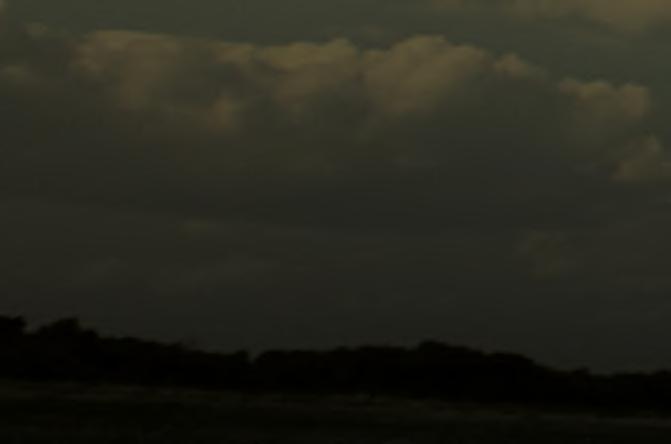
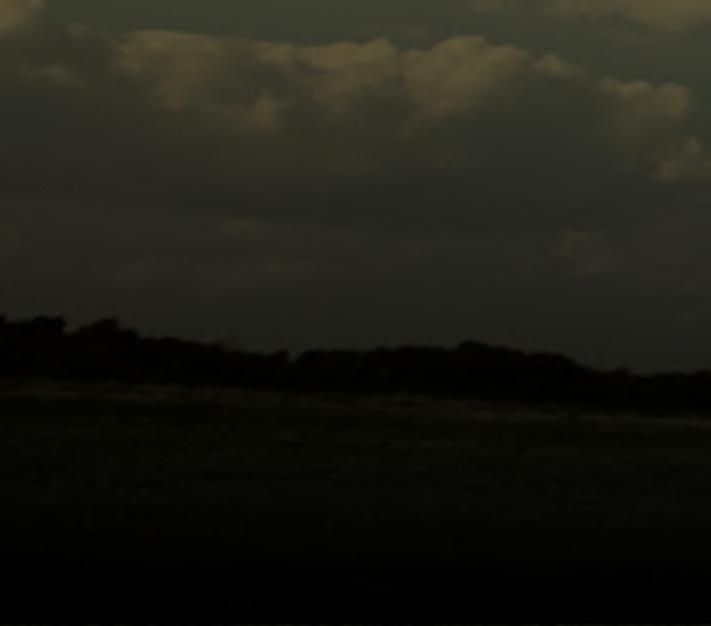










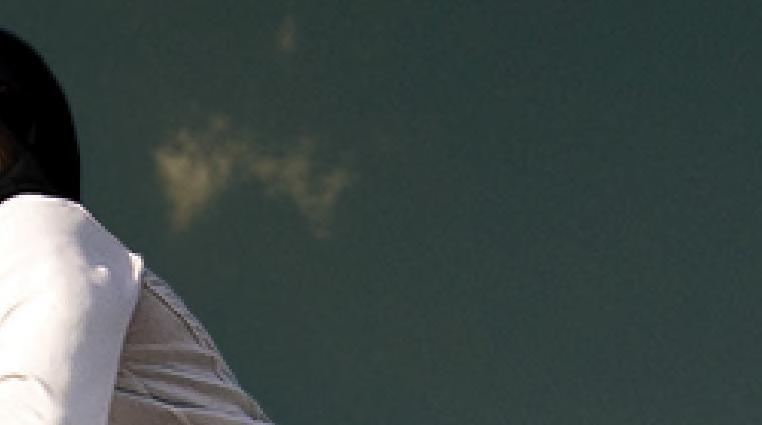







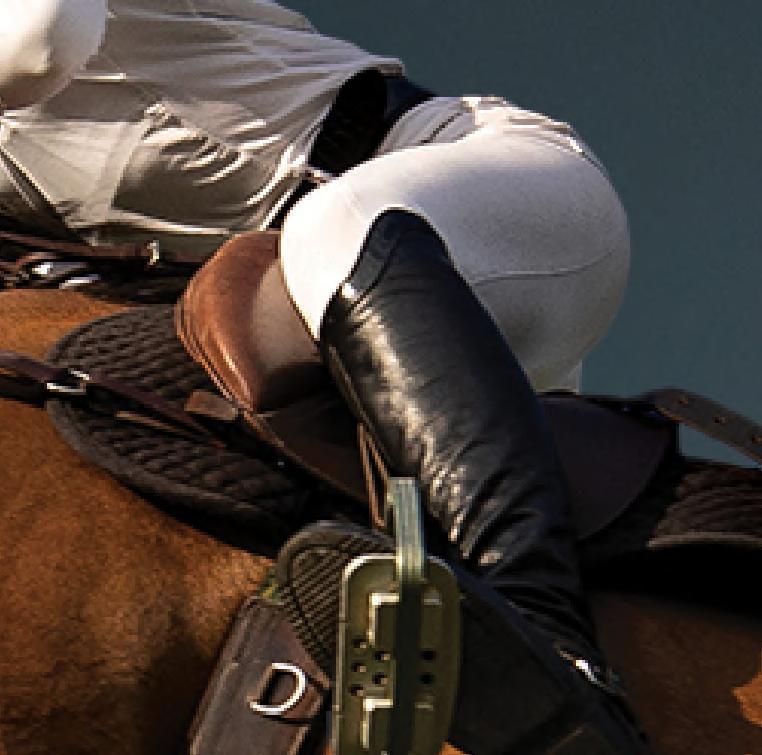


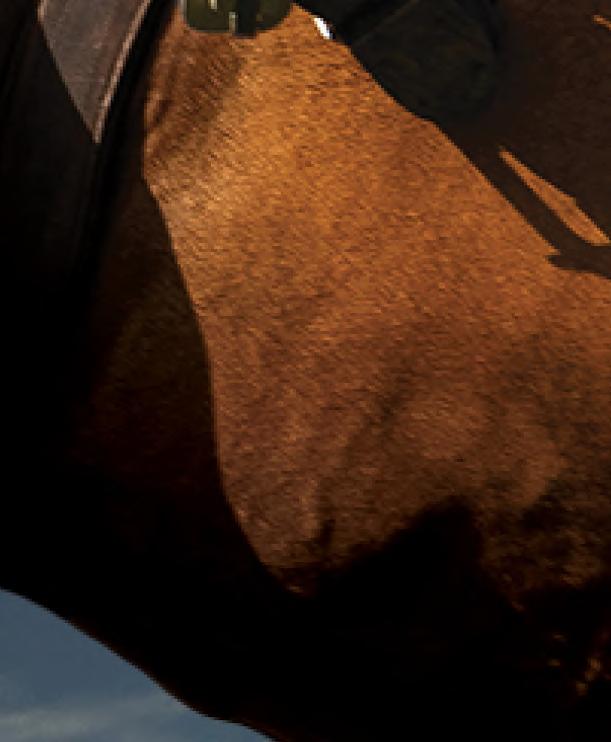
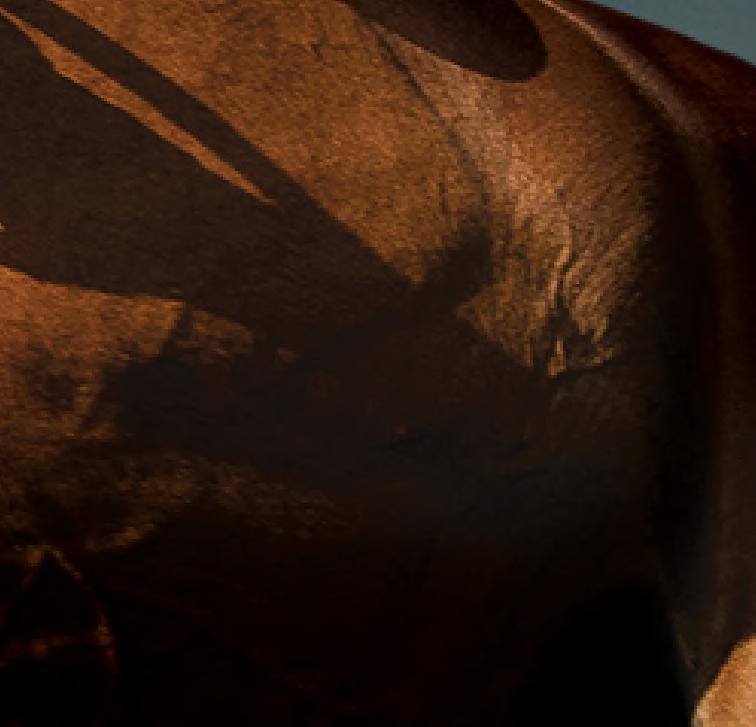






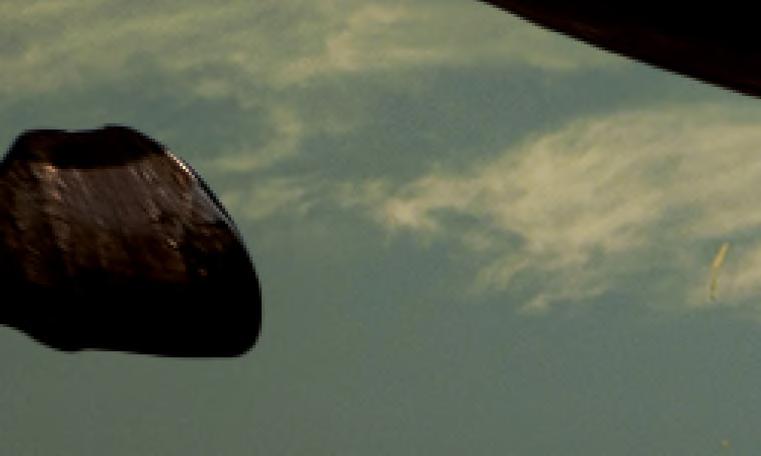
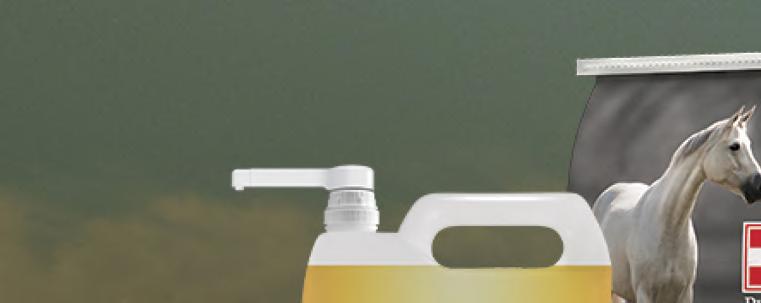
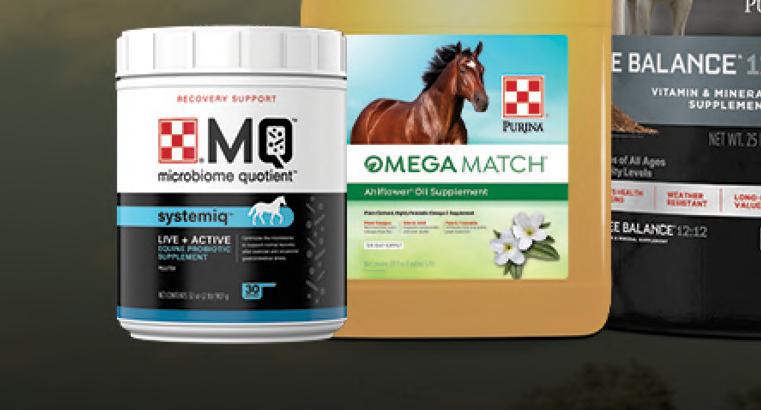

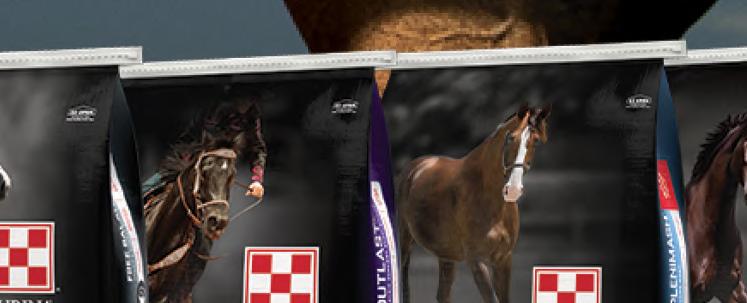
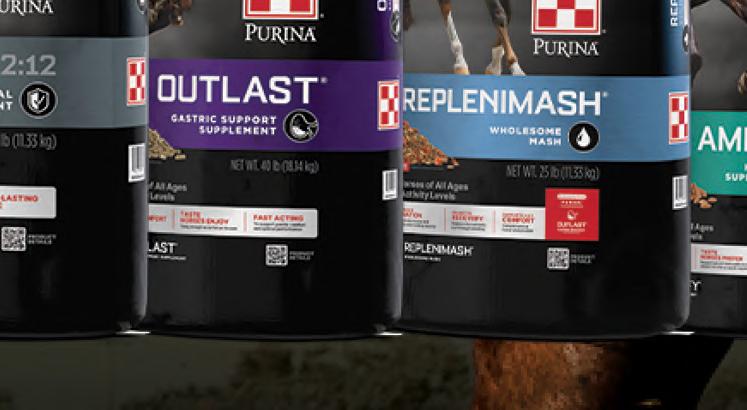


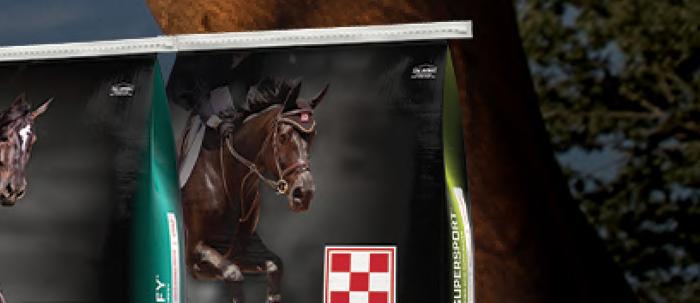
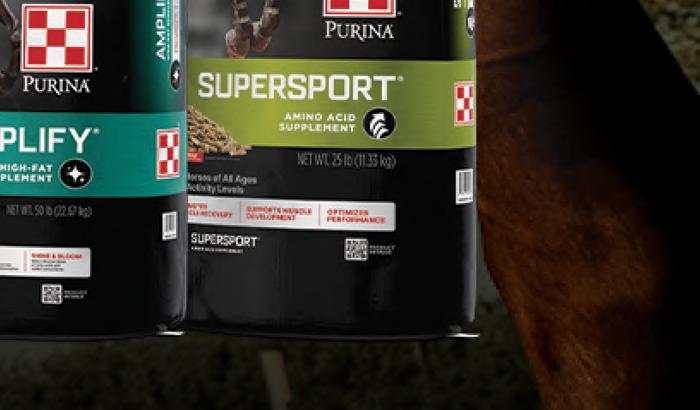


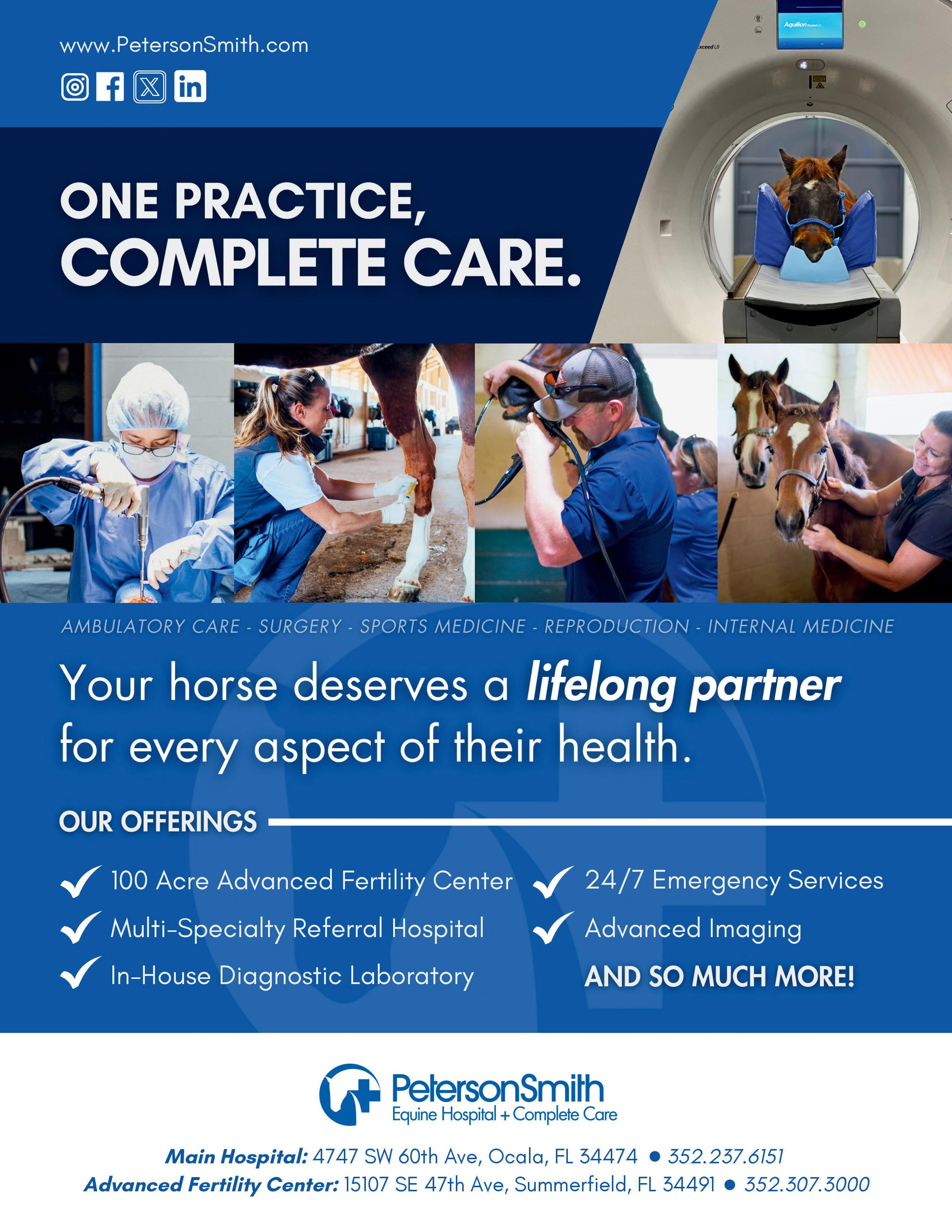

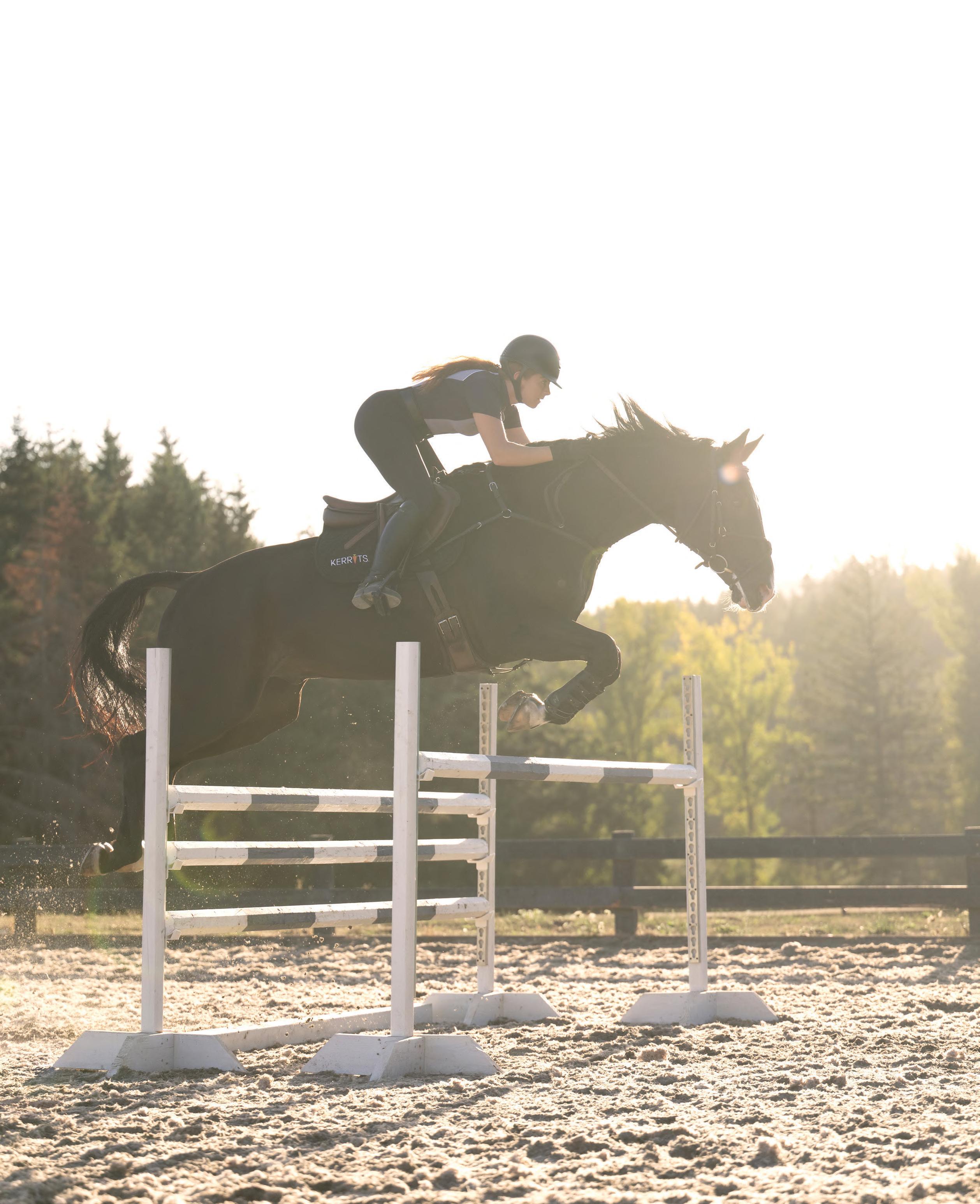
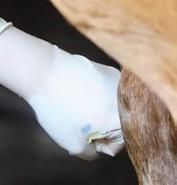
Joint injections for routine maintenance
When we encounter art, or “the unexpected inevitable,” as Elizabeth Gilbert defines it, we might wonder: How did I get so lucky? This is what takes your breath away, allows contemplation, and inspires awe. On the other hand, there’s a lot of life that is pure appliance: Expected, hardware, completely unimagined.
This is your new monthly equine pop culture contribution—think: Where The Onion meets The New Yorker—to rate what we’re seeing out there, from Appliance to Art. Take it with a grain of salt and a hearty sense of humor. For the love of all things horse, don’t @ us. Have an idea for an entry? Email us at editor@theplaidhorse.com and we might include it in our next column.
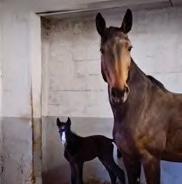
Breeding your own horse due to import tariffs
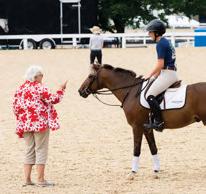
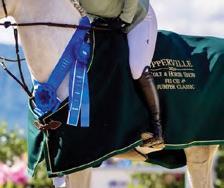
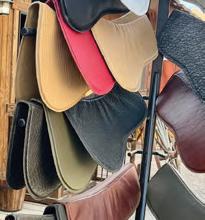

Clicker training your young horse to love the applause at the end of your course


People telling you to stop labeling things as art (keep going)
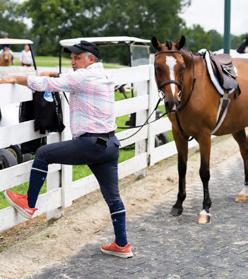
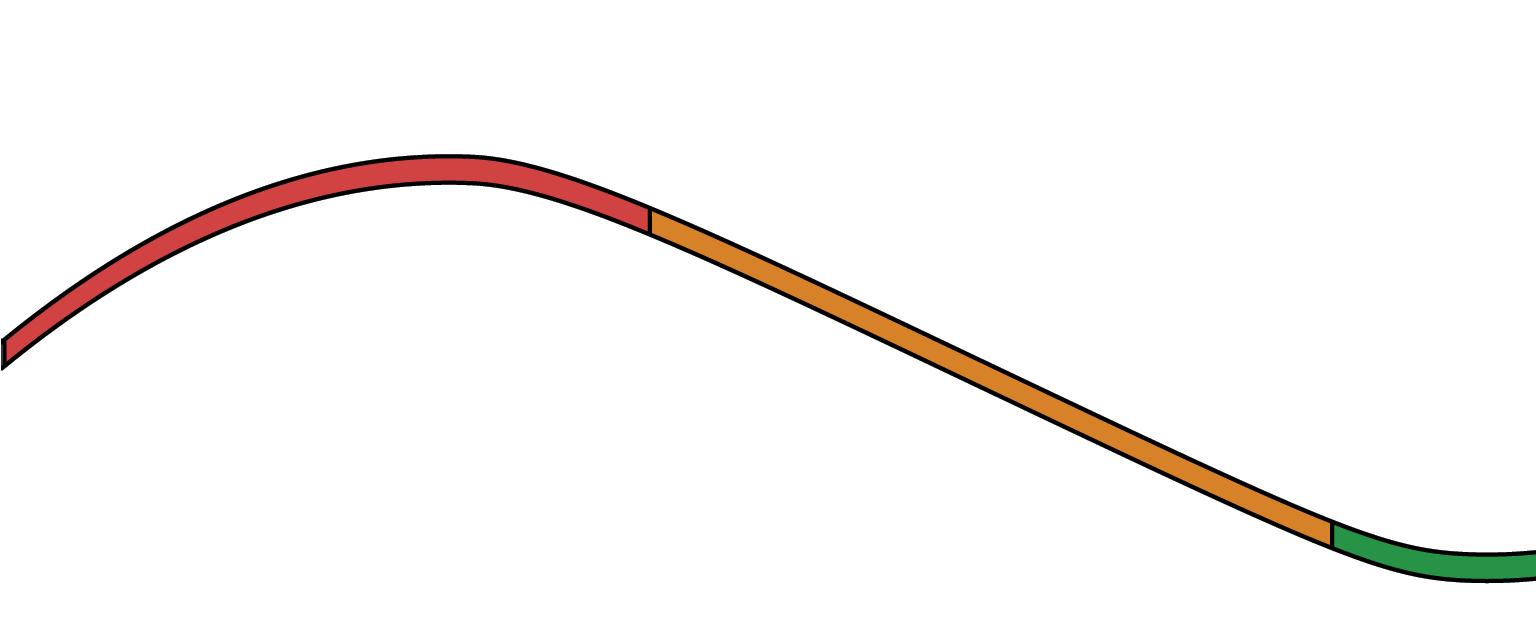
Trick riding for a ribbon (we know your horse is not trained properly)

Going to therapy instead of buying more saddle pads

Avoiding Amazon shopping for one month


GRAPHICS: BIG WILD CREATIVE; PHOTOS: THE PLAID HORSE, HYPERION STUD, FOXHALL EQUINE, UPPERVILLE HORSESHOW, THE WILLING EQUINE



Your trainer telling you to “just ride better”
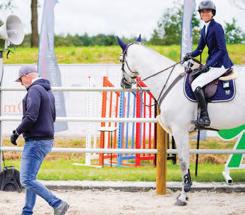

Being inefficient for the sake of fun
learn more, scan the QR code or go to albion.edu/equestrian equestrians@albion.edu Albion, Michigan



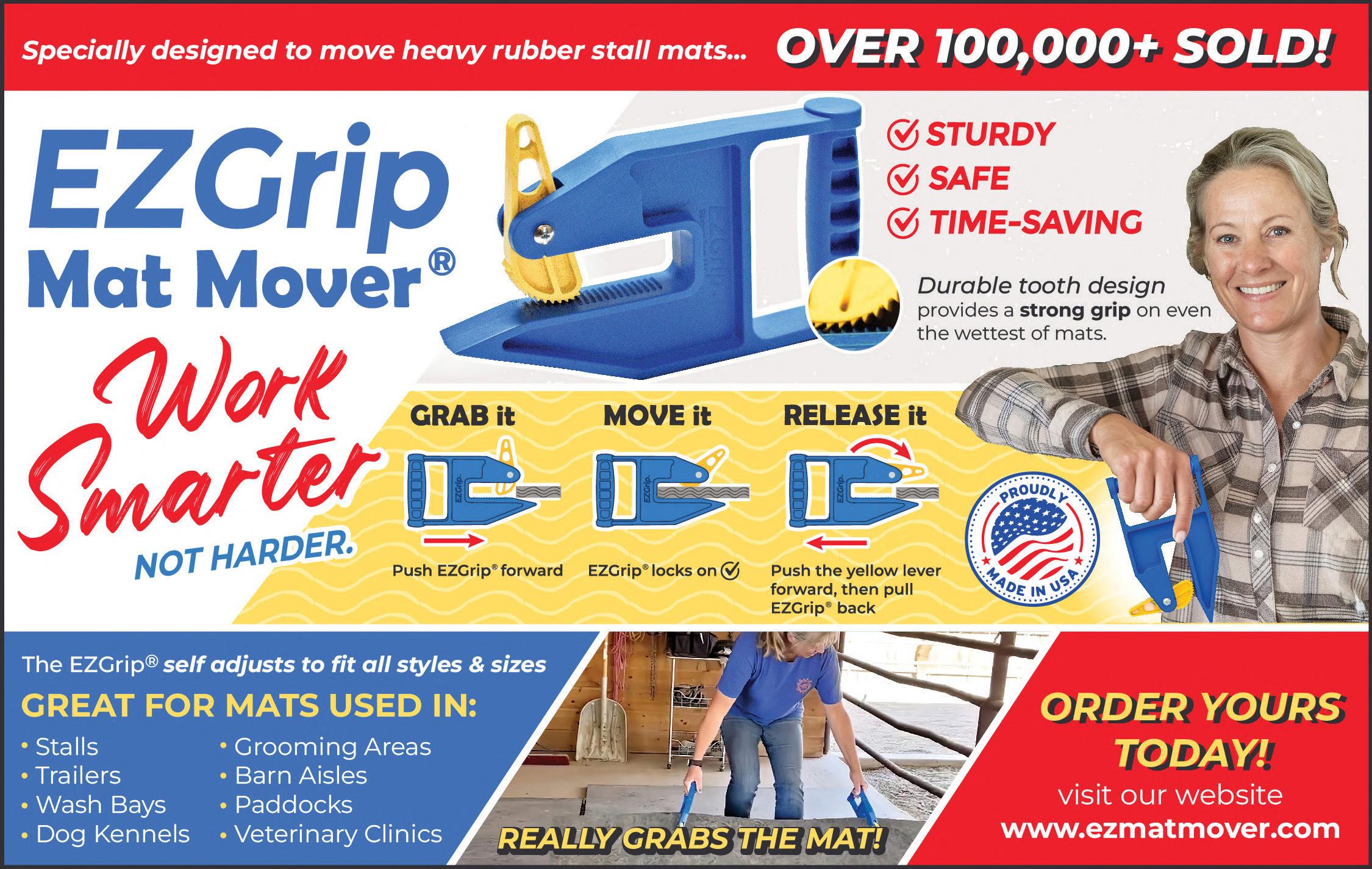
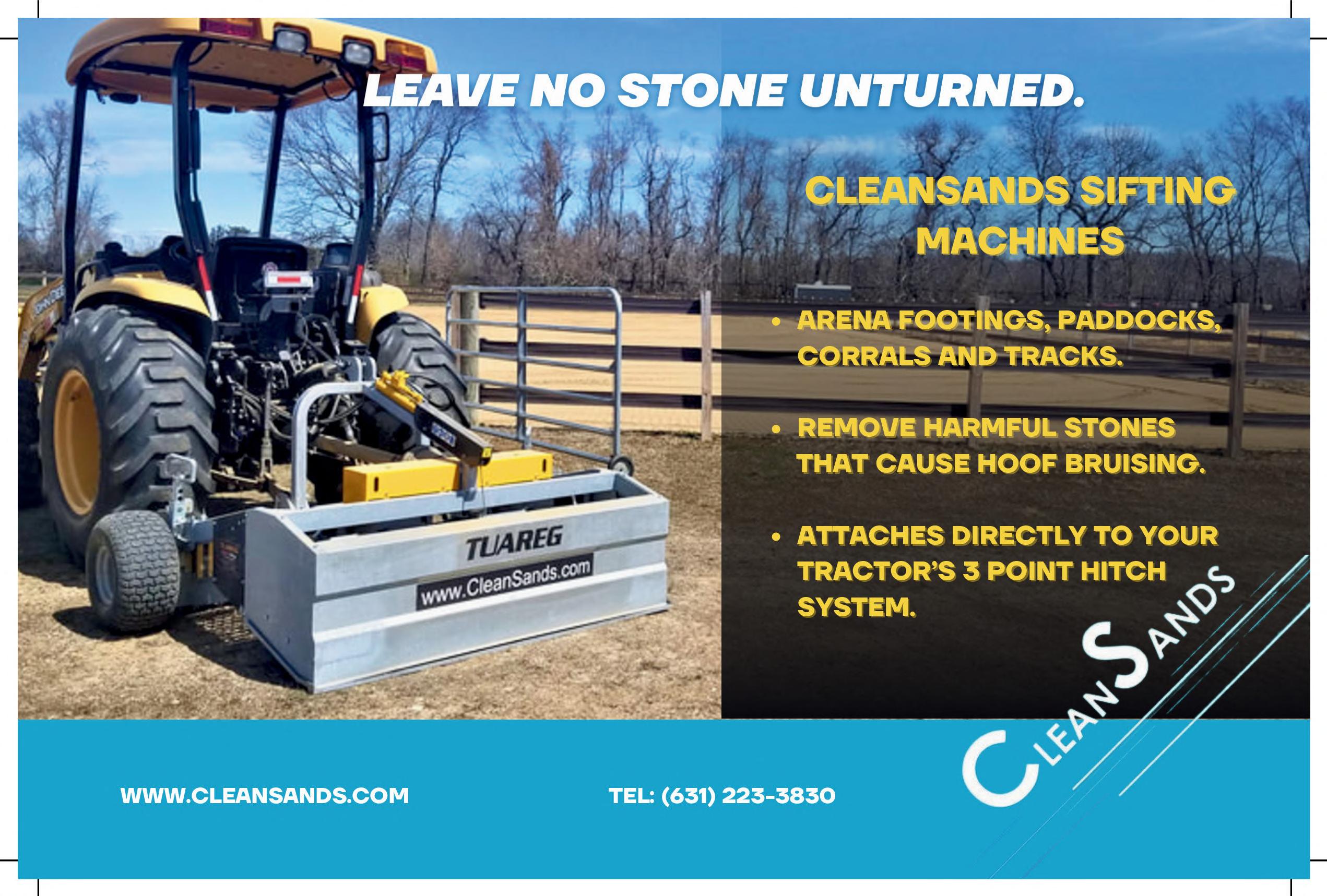
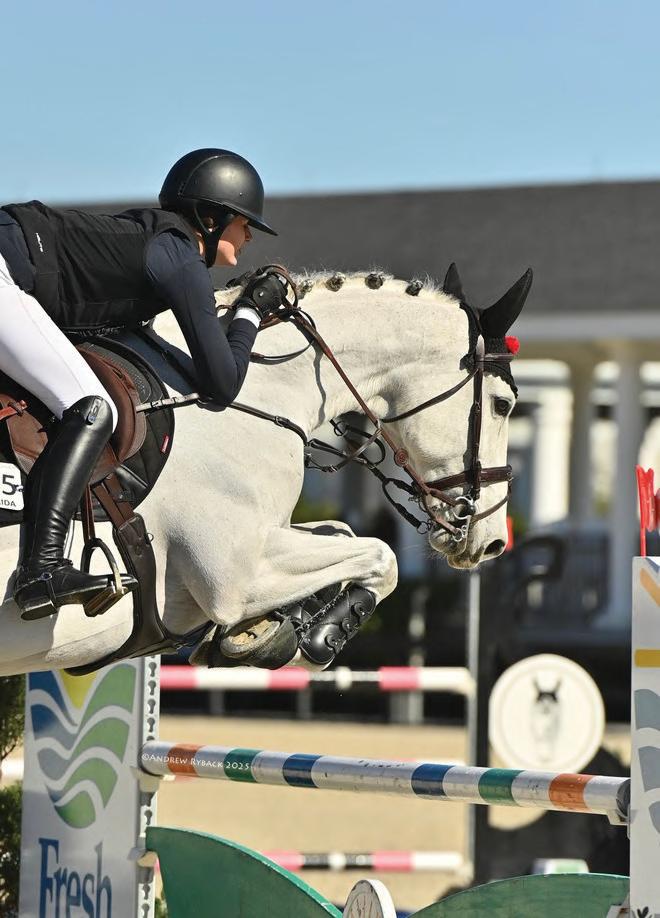
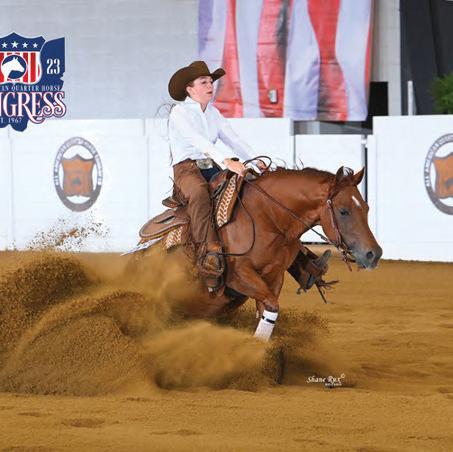

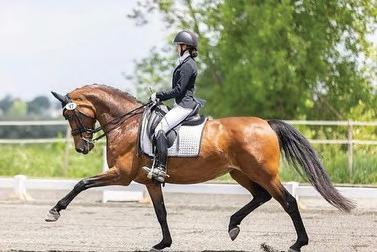
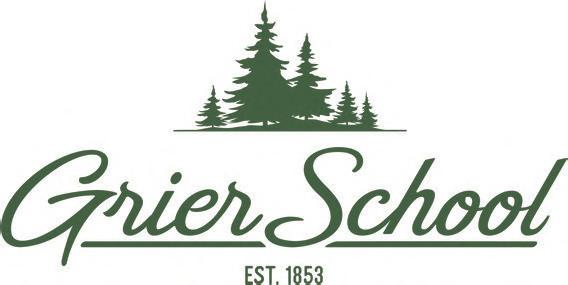
WORDS: PIPER KLEMM, PHD
PHOTOS: GRANDPIX PHOTOGRAPHY
AS THE PASO ROBLES HORSE PARK celebrates its 10-year anniversary, the facility stands as a testament to how vision, community focus, and thoughtful design can create an equestrian venue that serves riders of all levels while maintaining a commitment to accessibility and excellence. Founded by lifelong horsewoman Linda Starkman, the Paso Robles Horse Park has become a “showcation” destination–a combination of high-quality horse shows and a vacation experience.
Lovingly grown by a long-term team–Paso Park director Amanda Diefenderfer has been with the Paso Park since before it opened its gates–Paso Robles Horse Park is committed to creating an environment that serves competitors across all levels in an area of California known for, well, everything.
“Paso Robles is an incredible community–the food downtown is spectacular. There’s wine tasting throughout. You
literally can get a vacation rental amongst the vineyards… and then in 20 minutes be sitting at the beach. No matter what kind of adventure you’re looking for on your showcation, it’s definitely here near the show grounds.”
While many venues focus exclusively on nationally-rated shows due to financial incentives, the Paso Park intentionally maintains what they call their “Pathway Series” –B-rated shows and
Top-level hunter jumper competitions feature grand prix classes, NAYC Zone 10 Trials, National, and International derbies

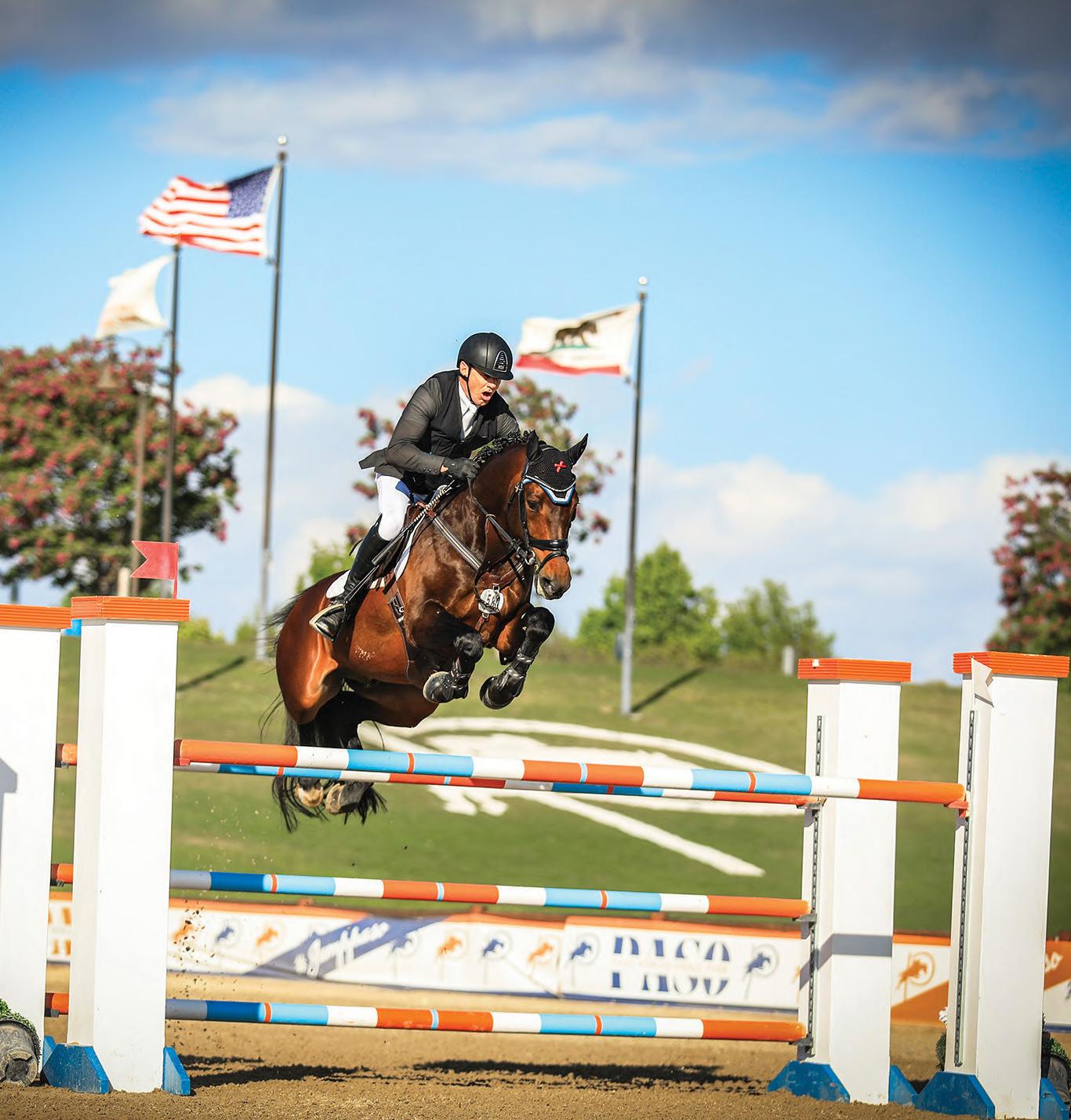
schooling shows that provide affordable stepping stones for riders working their way up the competitive ladder. This commitment to accessibility is evident in their pricing structure. Stalls for their Pathway Series cost just $200, while schooling show stalls will never exceed $100–a point that Diefenderfer notes that Starkman and the Paso team are adamant about maintaining.
The venue also offers innovative programs like the 2EX Young Horse Program, which allows competitors
RESULTS BOX
to build custom divisions for developing horses at all levels, not just those on track for Grand Prix or high-performance hunter careers. Their scholarship program provides financial support for competitors at every competition they host.
As the equestrian show world continues to evolve, Diefenderfer expresses concern about the loss of smaller, boutique shows that offer unique experiences. “I think if we don’t see the sport stand up and fight for the unique
$40,000 Spring Classic Grant Prix
1. Chicharito Bjorn Ikast Skylark Equestrian LLC $12,000
2. Noblesse van’t Roosakker Mattias Fernandez Scotch Bonnet Farms LTC $8,800
3. Wt Leapalong Guy Thomas Willow Tree Farm, Inc $5,200
4. Kentucky Minka Dakoda Mower Beaux Alexander $3,200
5. Jezebel Dakota Mower Kay Boissicat $2,400
6. Garfield Shawn Casady Ann Russo $2,000
7. Exexel Haley Schwab Haley Schwab $1,600
8. Hesmee Tammy Chipko Tammy Chipko $1,200
9. Crespo VDL Bjork Ikast Skylark Equestrian LLC $1,200
10. Contana Wendy Brownle Wendy Brownlee $800
$7,500 USHJA National Hunter Derby
1. A’Int He Special Ray Texel Ray Texel $2,250
2. In Bocca Al Lupo Laura Bowery Mare Eyfee LLC $1650
3. Cassano Patrick Seaton Chloe Freeman $975
4. Galileo Carol Wright Lily Swift $600
5. Gratify Macy Mitchell Leslie Parks-Beyer $450
6. E Quidi Macy Mitchell Danica Faustina $375
7. Continual Soiree Tarrone J. Seaton Kristi Robinson $300
8. Butterfly Rouge Carol Wright KB Equestrian LLC $225
9. Incomparable Stephen Pellett View Point Farms $225 10. Tashi La Wendy Brownlee
experiences, they’ll look back one day and wonder where they went,” she says. “And I think it’s really important that our industry continues to stand up and protect the things that are unique and are not just those that we have to go to but that are the shows we want to go to.”
The Paso Park’s design reflects Starkman’s experience as a competitor, with wide roads, spacious 20-foot barn aisles, and large warm-up arenas that prevent congestion. This thoughtful layout, combined with a commitment to finishing most show days by 5 PM, encourages competitors to enjoy both the competition and the surrounding area.
A strong focus on wellness for both horses and humans is another hallmark of the Paso Park’s philosophy. They maintain exceptional footing as a key contributor to horse health and have a dedicated wellness staff member–a retired trauma ER professional who not only helps with emergency preparedness but also inspects hay quality and monitors other factors affecting horse and human competitor wellbeing.
Community building remains central to the Paso Park’s mission. Staff members are empowered to recognize and reward good sportsmanship, and educational hours bring industry professionals together with riders to break down barriers. Diefenderfer personally makes a point to be visible and accessible during shows, walking the grounds regularly.
Their volunteer program offers opportunities for involvement at all levels, tailored to each individual’s interests and experience. This not only helps with show operations but also provides pathways for those interested in learning more about potential careers in the equestrian industry.
As Paso Robles Horse Park enters its second decade, it continues to embody its founding principle: “If it’s not fun, we’re not doing it.” By maintaining this focus on accessibility, community, and quality experience, the Paso Park is helping preserve what makes horse shows special, ensuring that equestrian sport in California has both a strong foundation and a bright future.
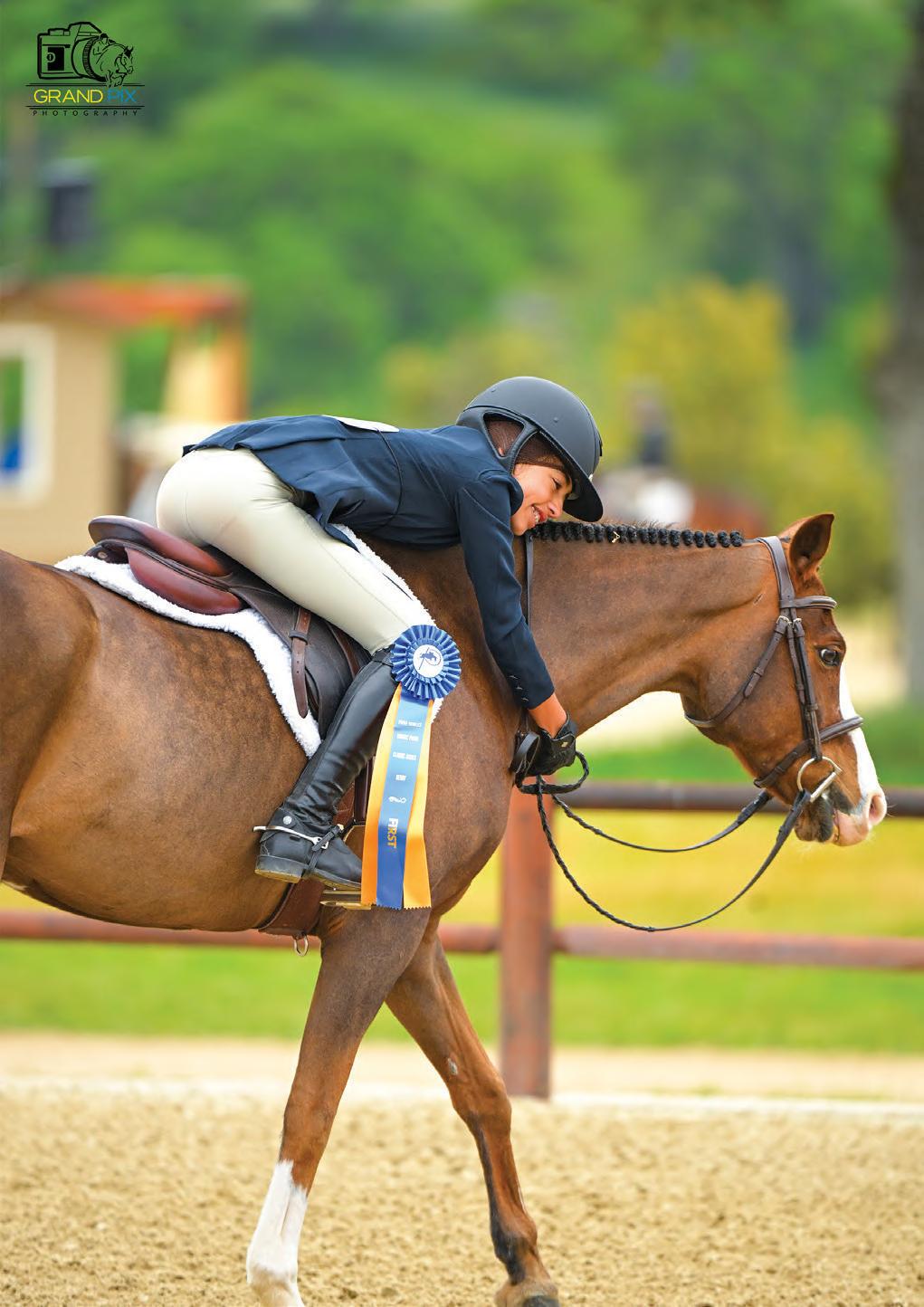
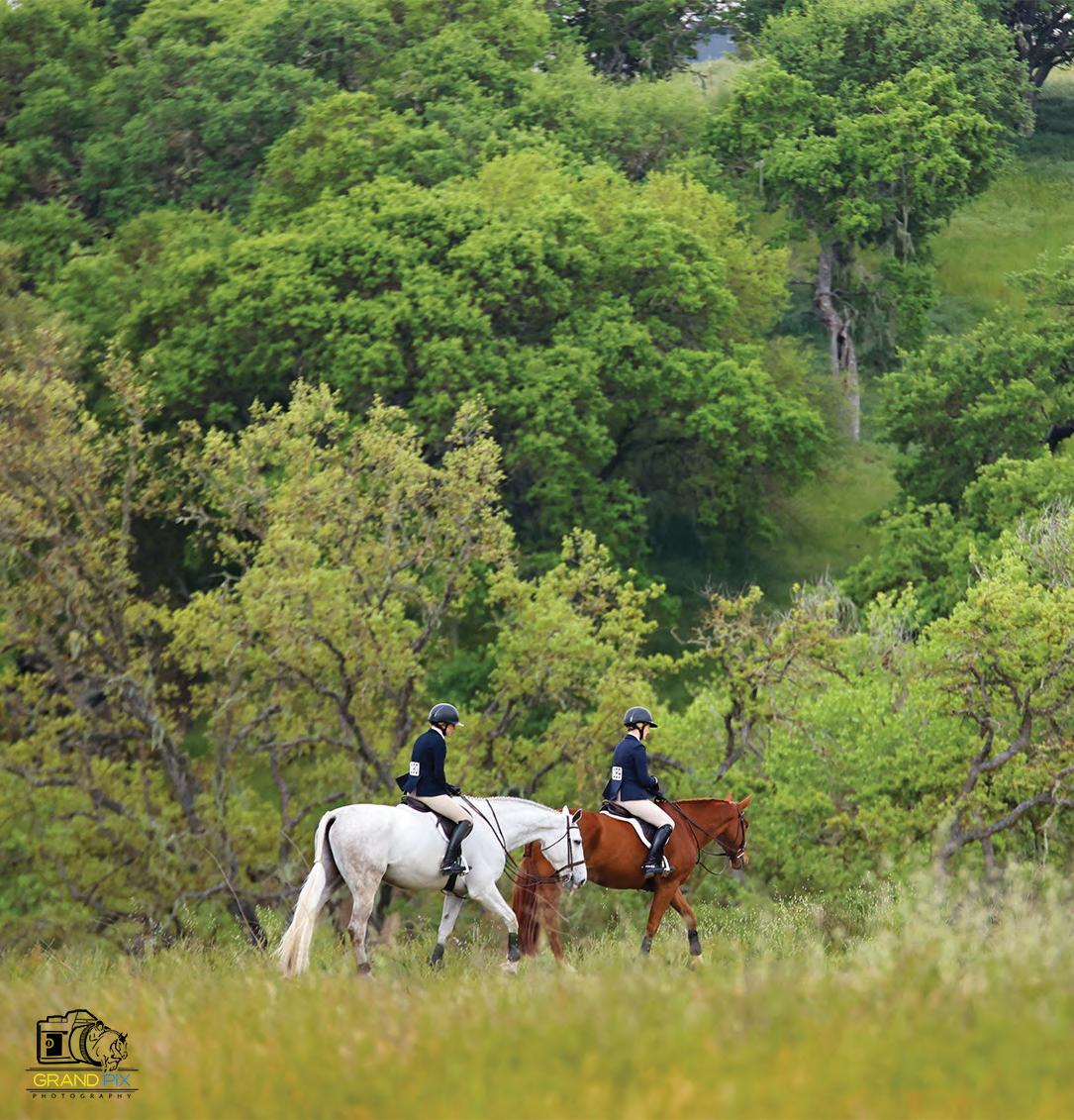

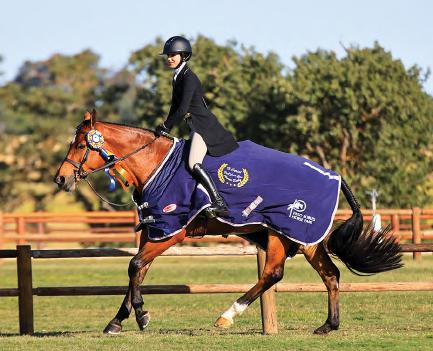
Experiences at the Paso Robles Horse Park are focused on supporting the connection between horse and rider that draws people to this sport (top left)
Beyond the competition rings, the spacious property features ample open space to allow horses to relax (top right)
Pathway and schooling shows include Paso Park-specific programs designed to provide opportunities for developing riders and horses to grow in the sport (bottom right)
Paso Robles Horse Park Founder, Linda Starkman and her grandson Max admiring Linda’s horse Sun Warrior during a recent competition at the Paso Park. Sun Warrior is a homebred jumper now competing in the top levels of FEI sport (bottom left)
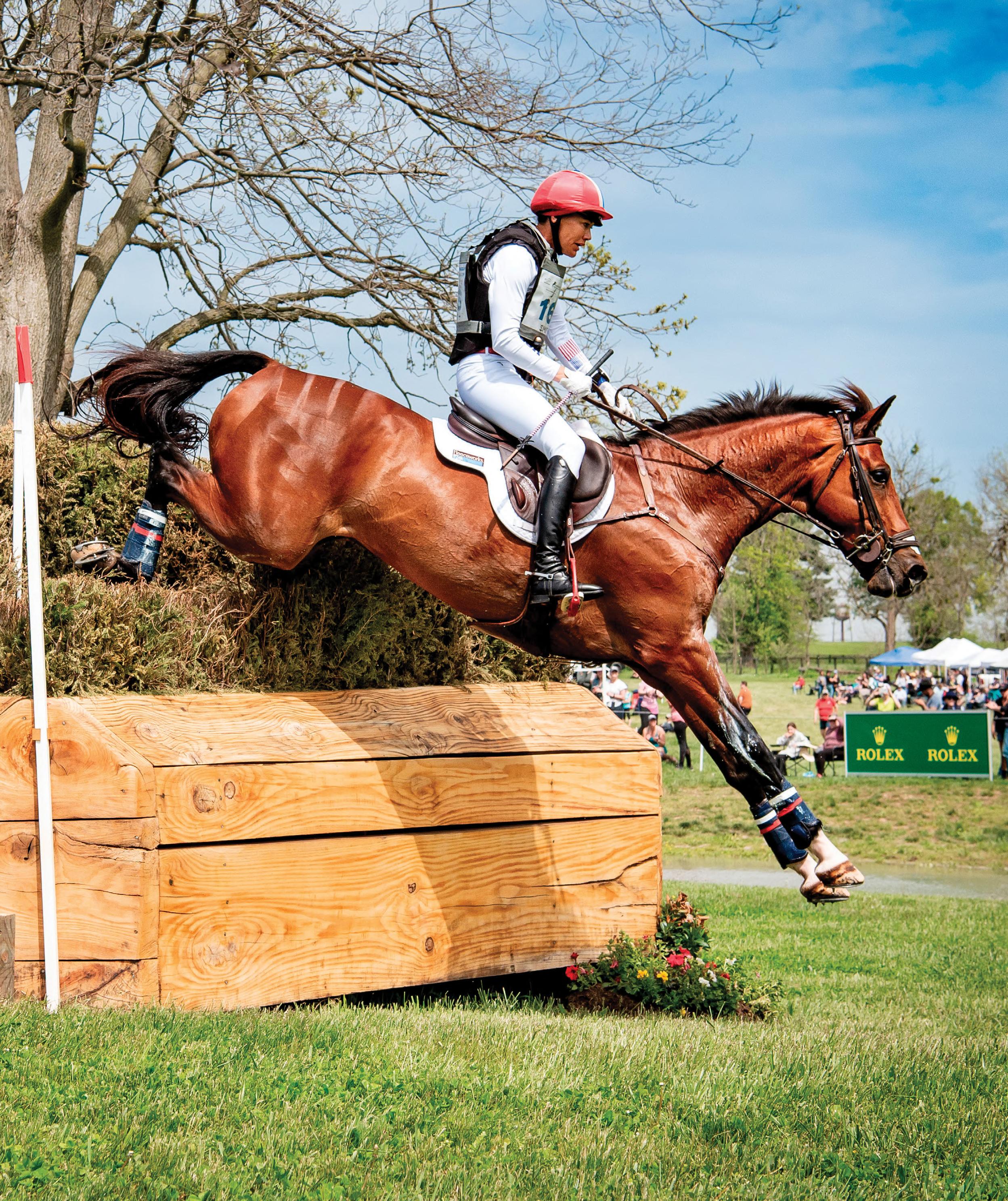


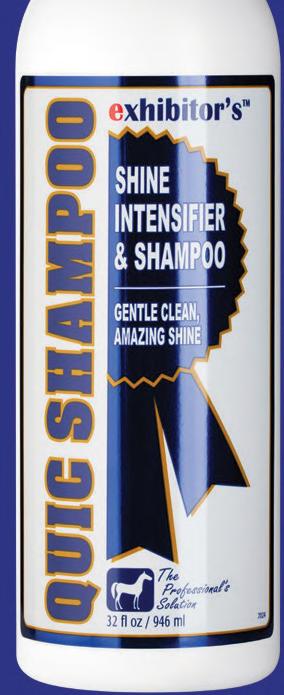




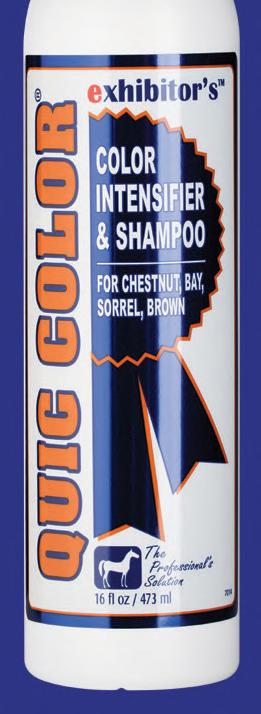


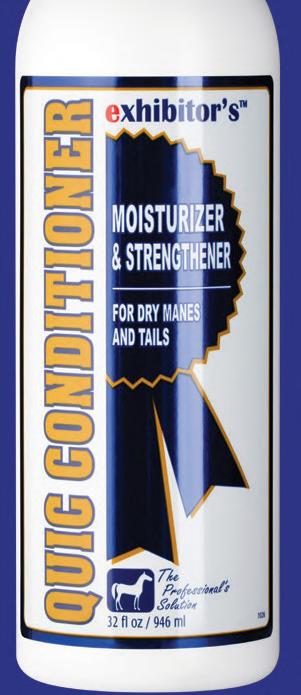





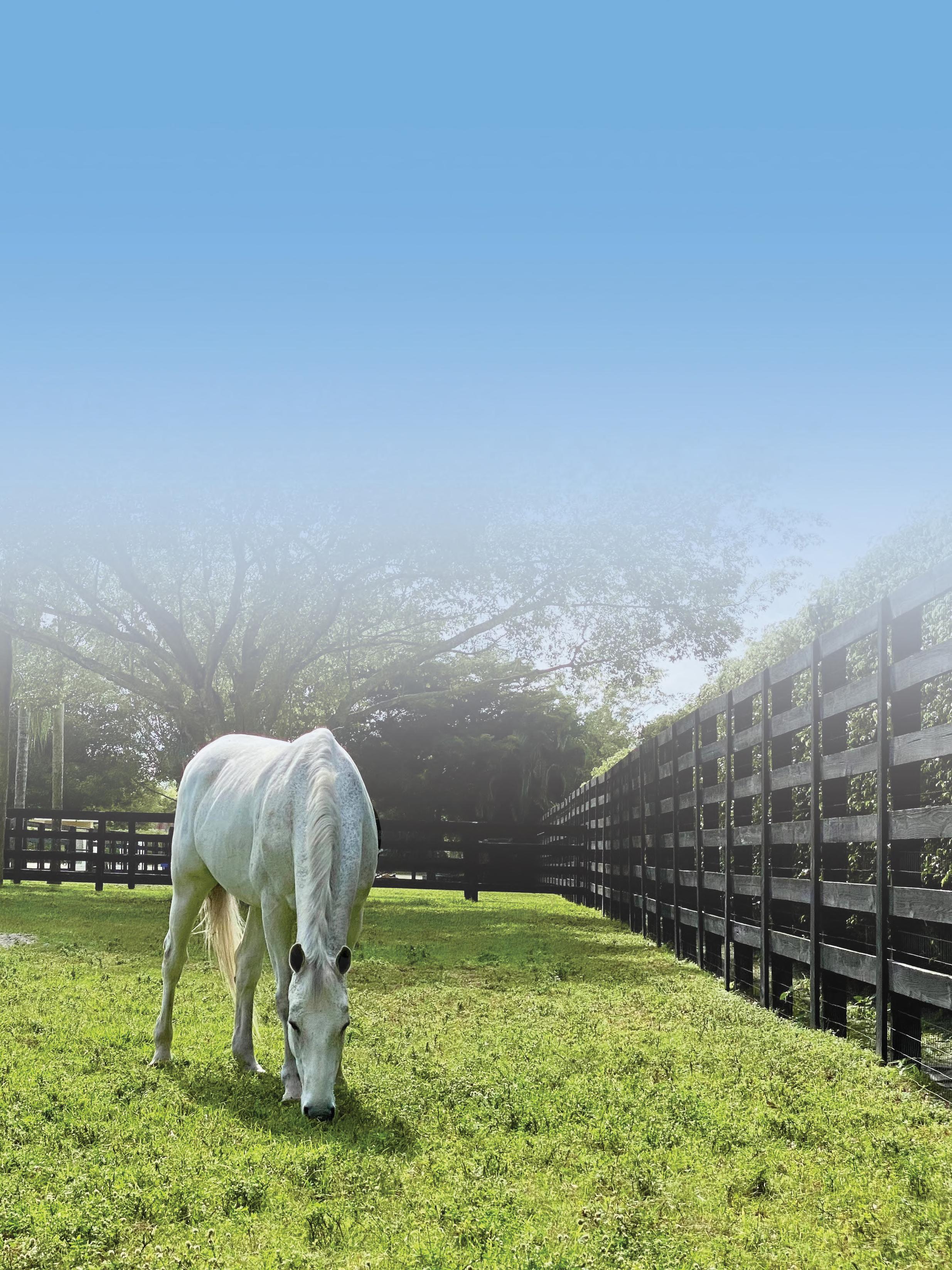

MARCH 20 - APRIL 13, 2025
1 Hunter Breeding classes have returned to Tryon International, allowing breeders to showcase their future stars • 2 Grace Wahlberg all smiles with Tippy Z in Tryon Stadium • 3 Overlooking Tryon Stadium, the brand new Silver Spoon Saloon hosts live music, line dancing, mechanical bull riding, karaoke and more for all competitors to enjoy • 4 Sunday leadline scenes from Tryon Stadium • 5 Wilhelmina Horzepa (Millstone Township, NJ) scored first and second place in Tryon Welcome 2’s $20,000 Tryon International Grand Prix • 6 Pony kid pats!
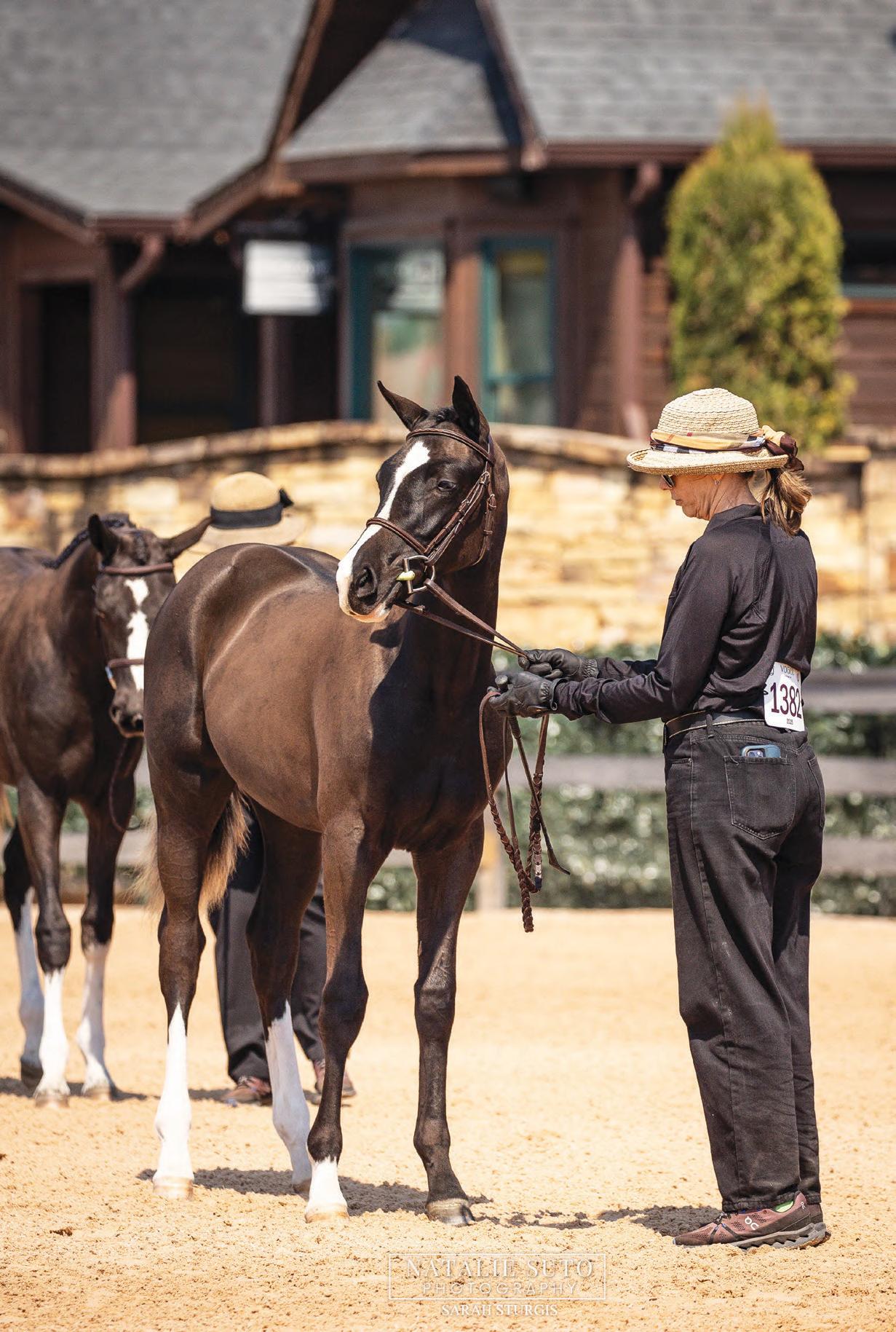
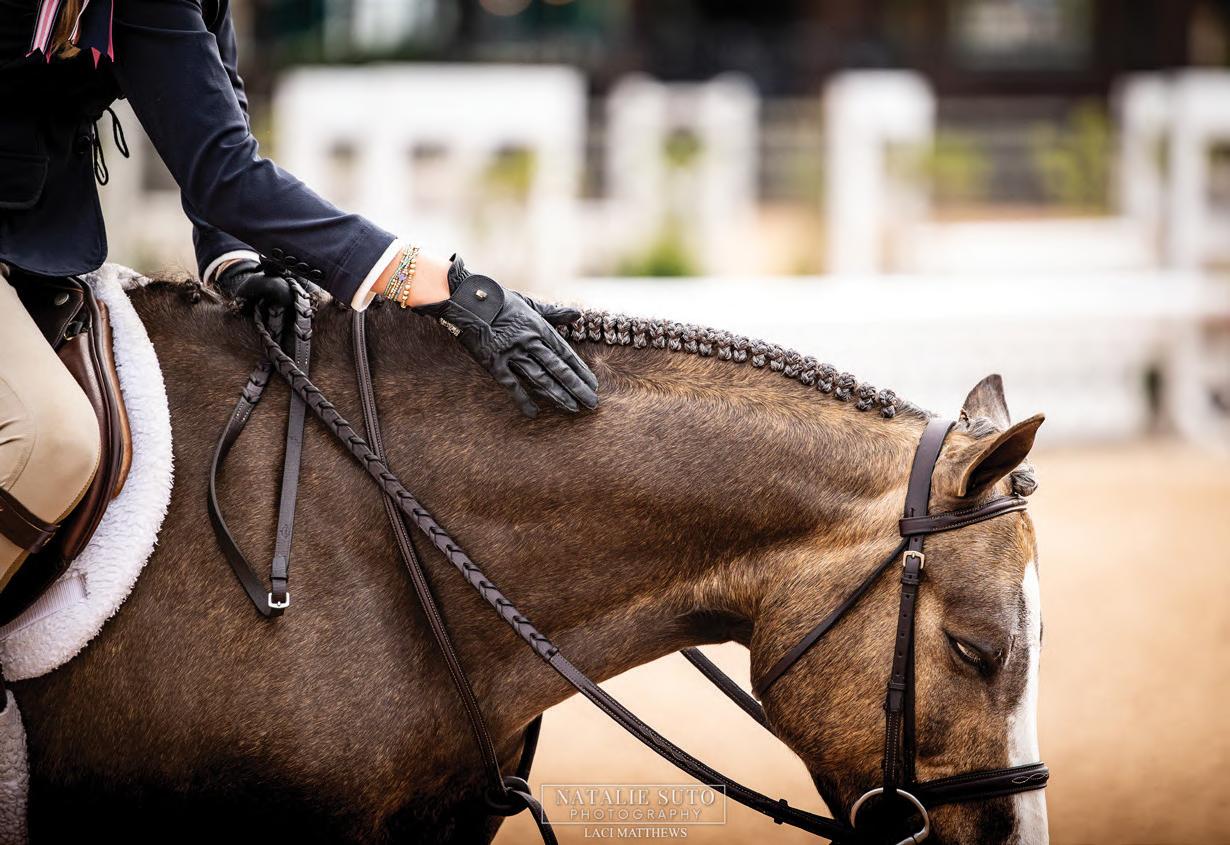


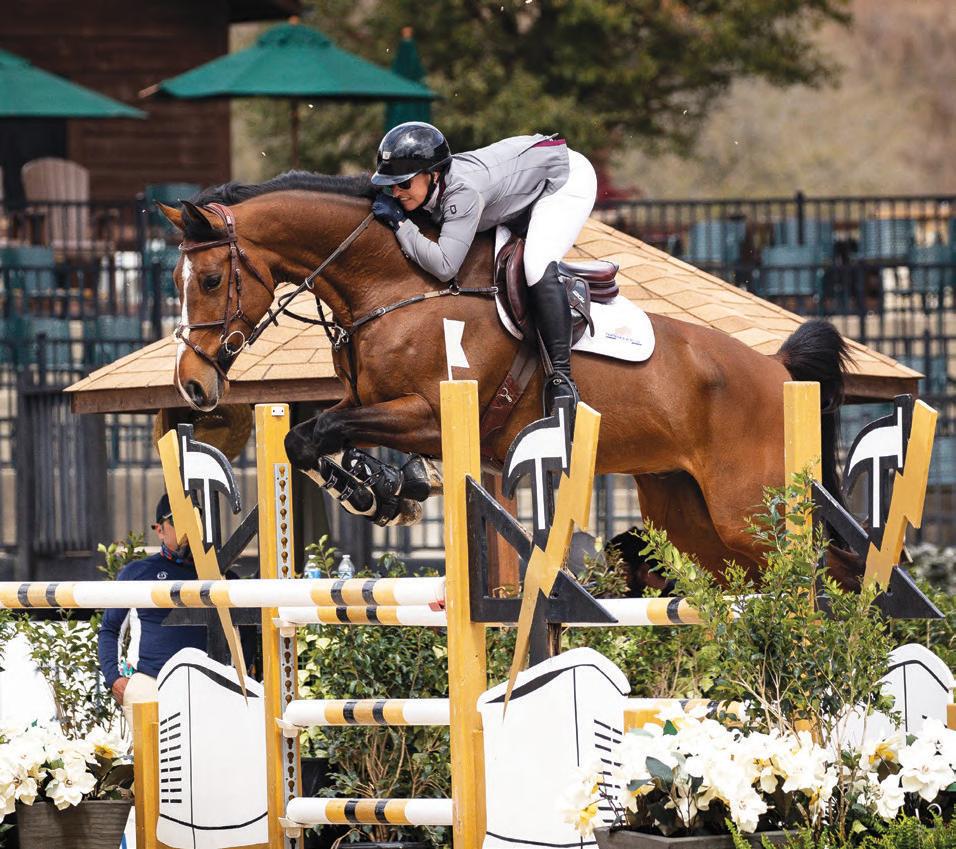
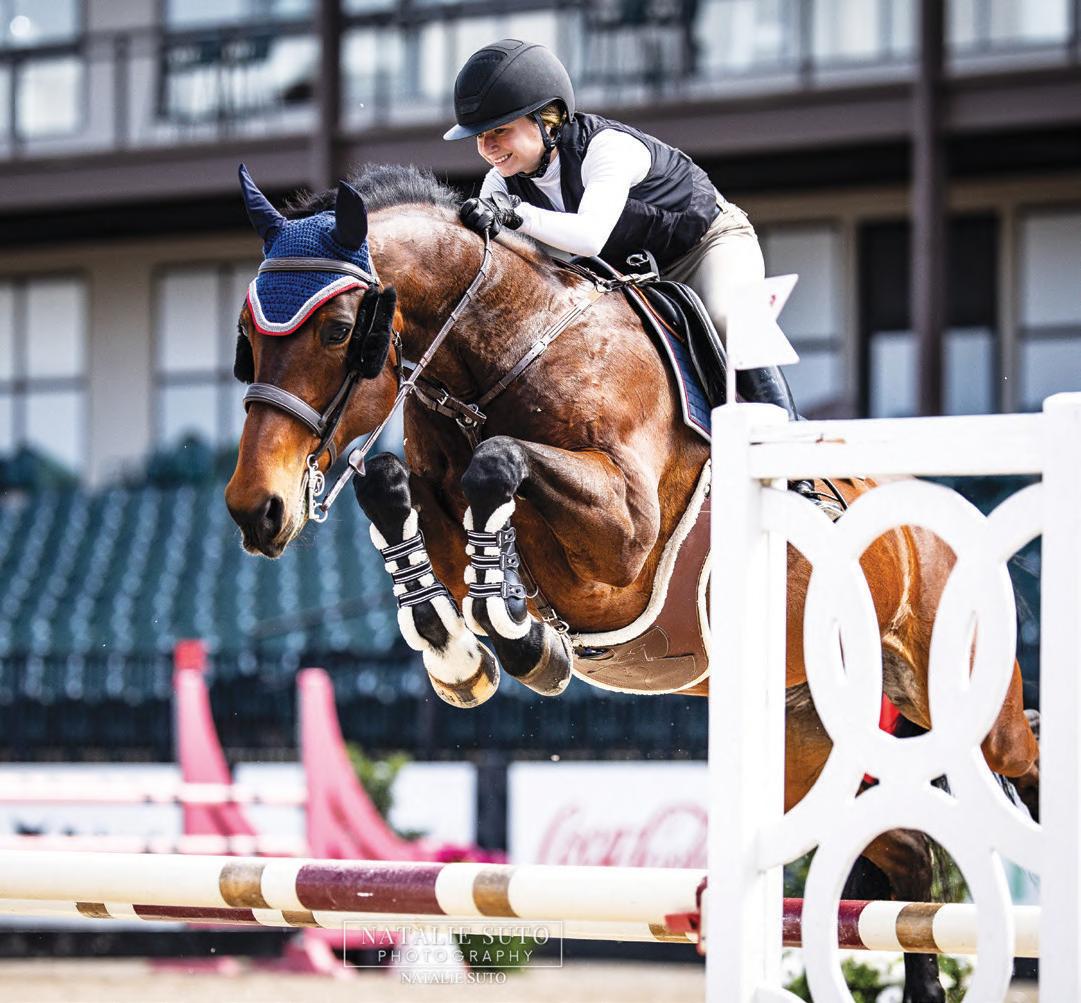
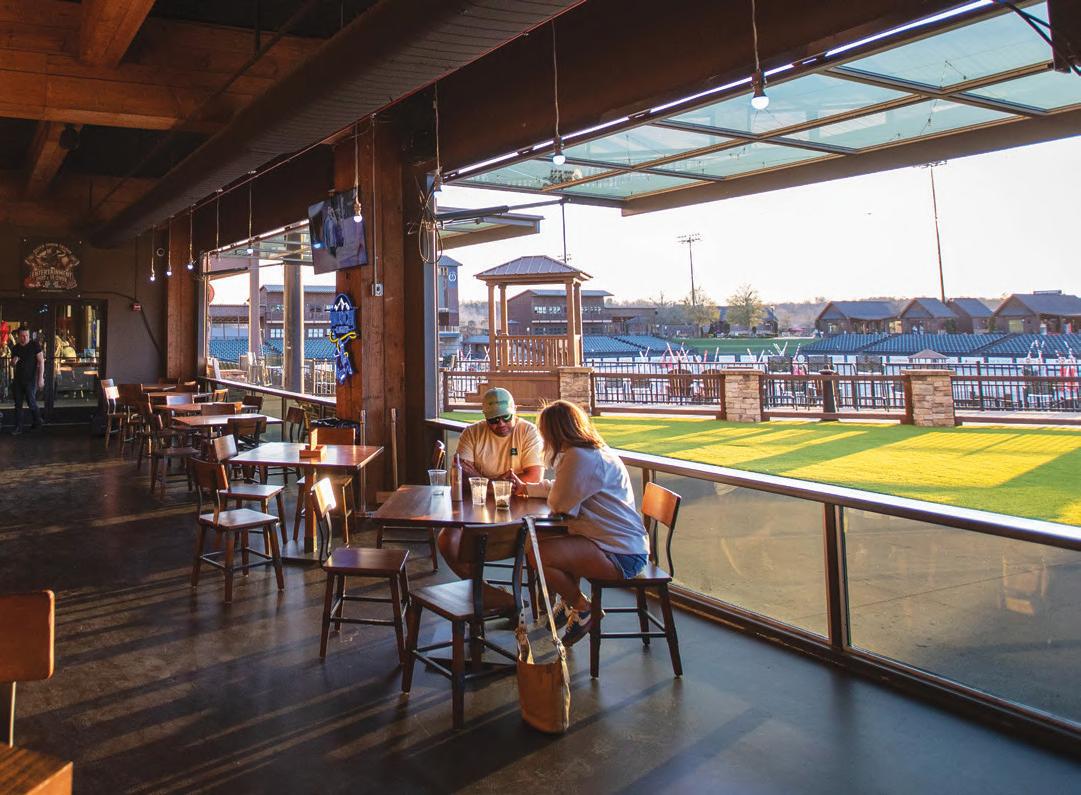
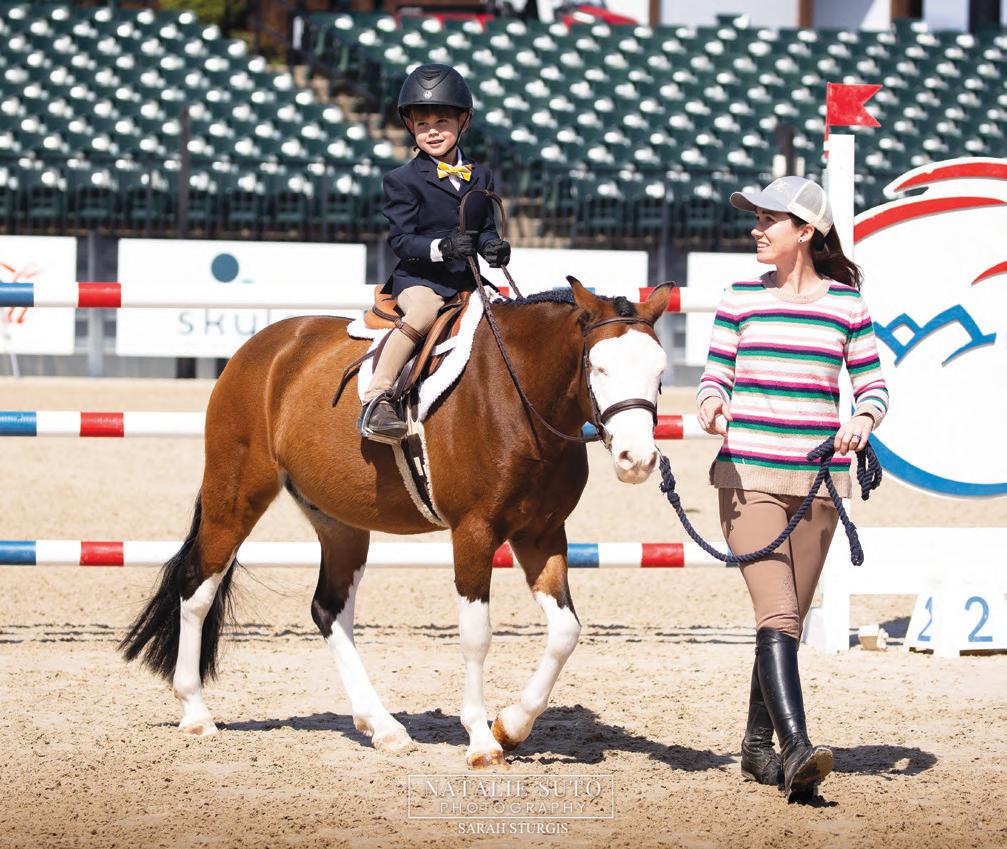
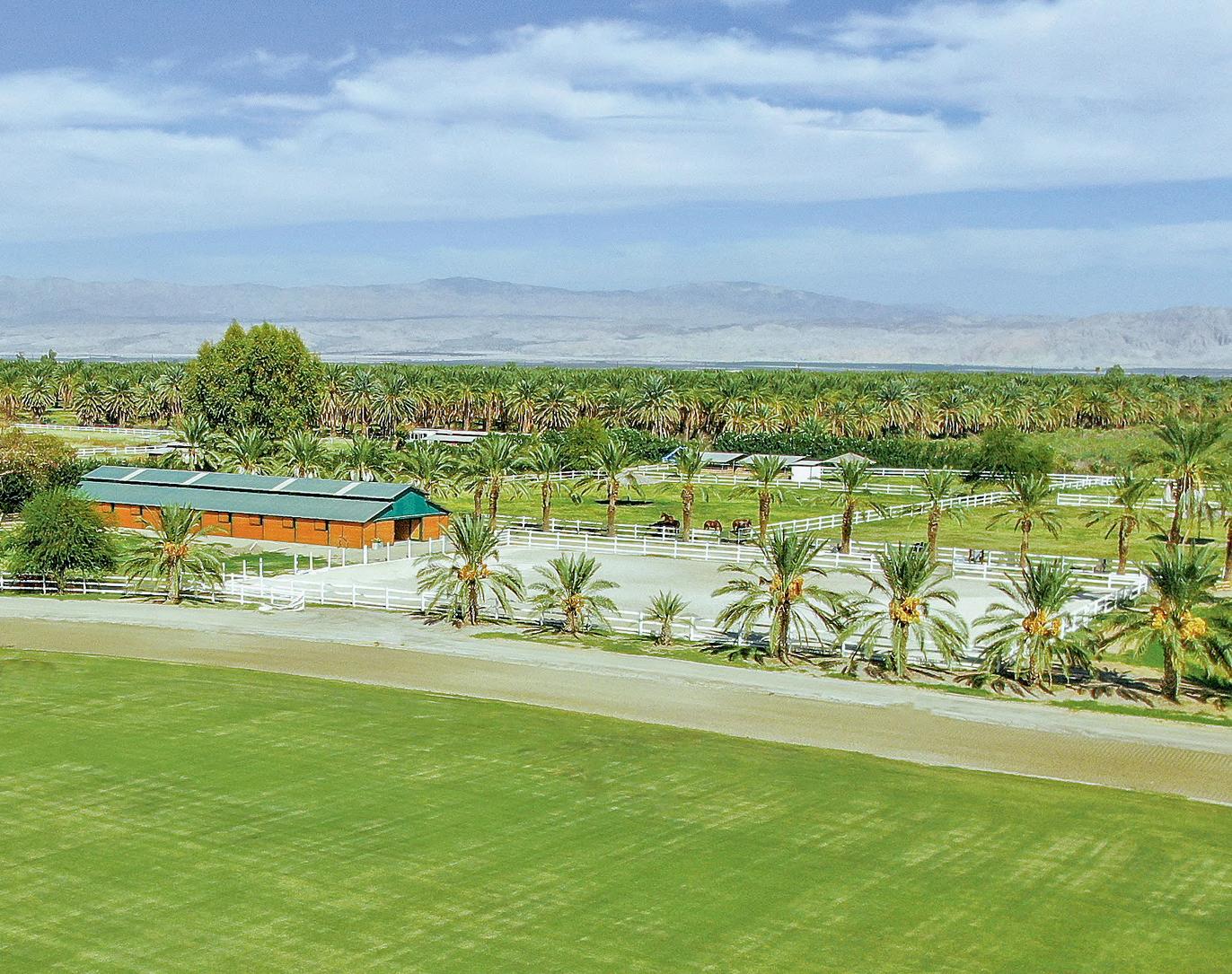


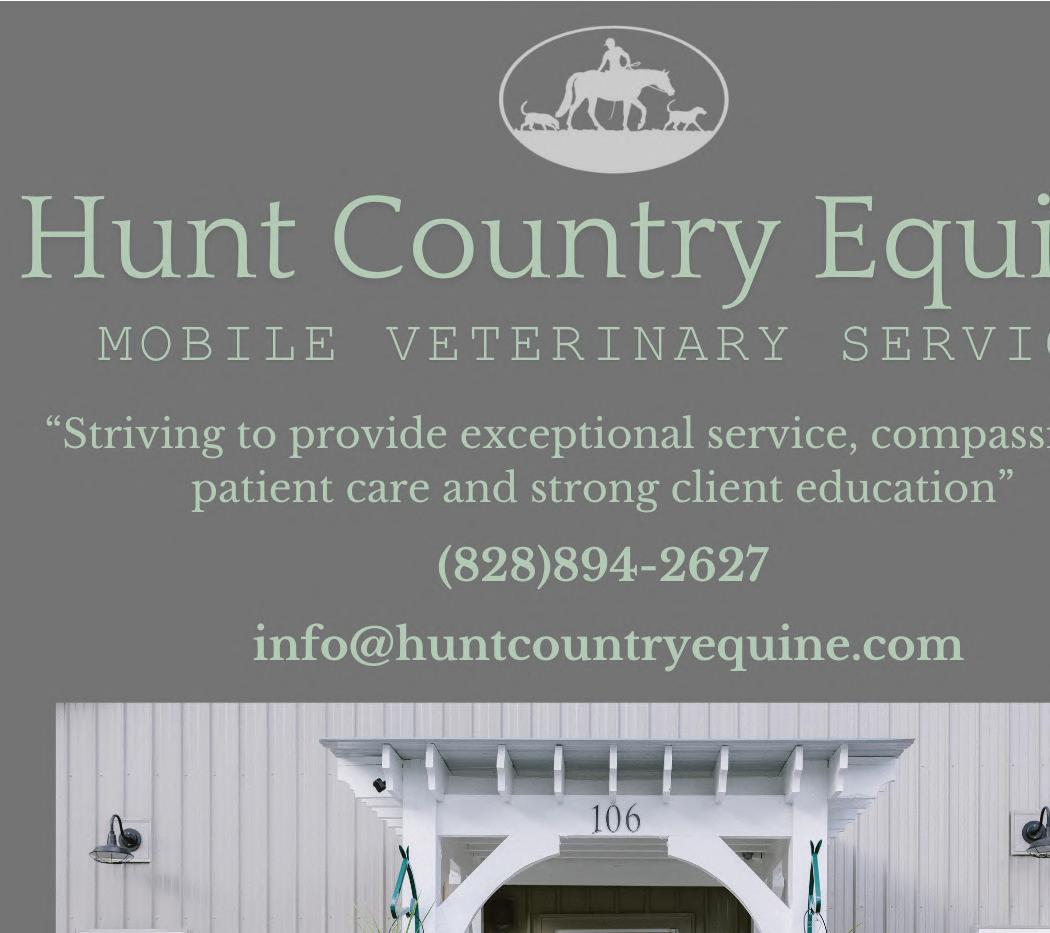
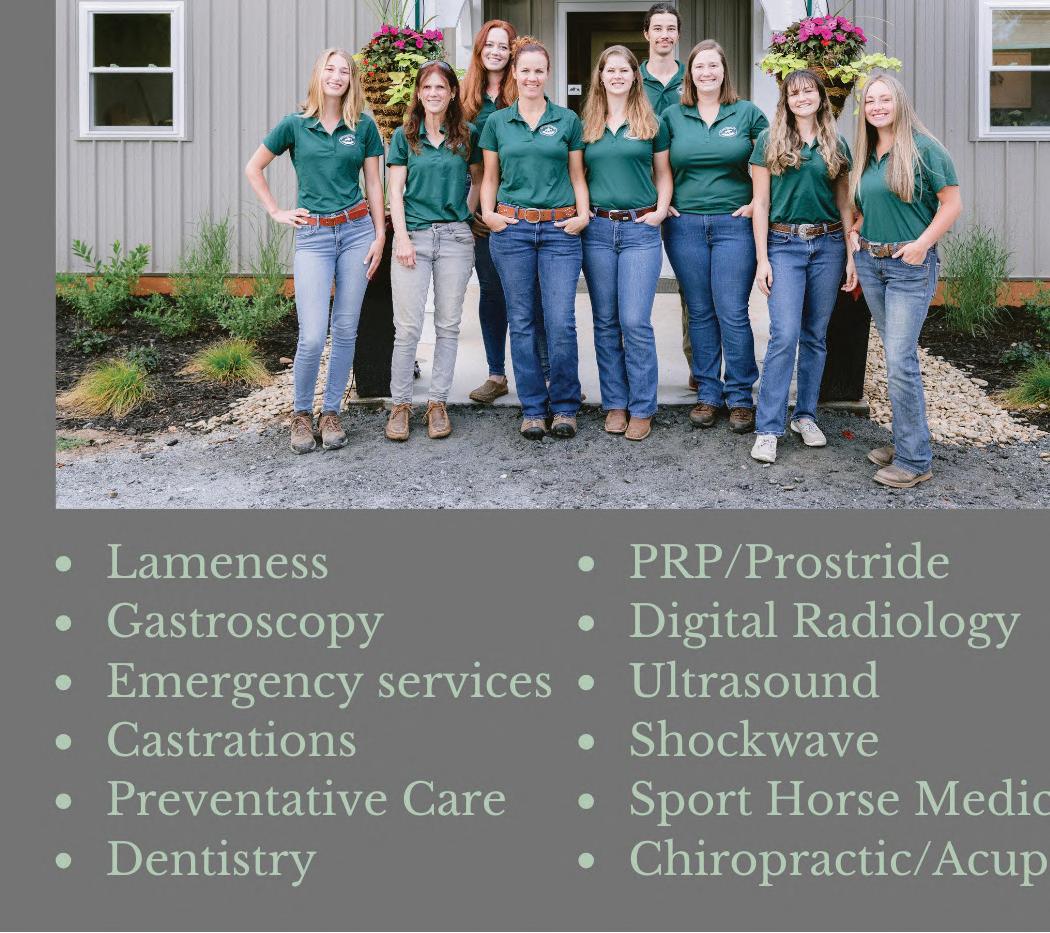


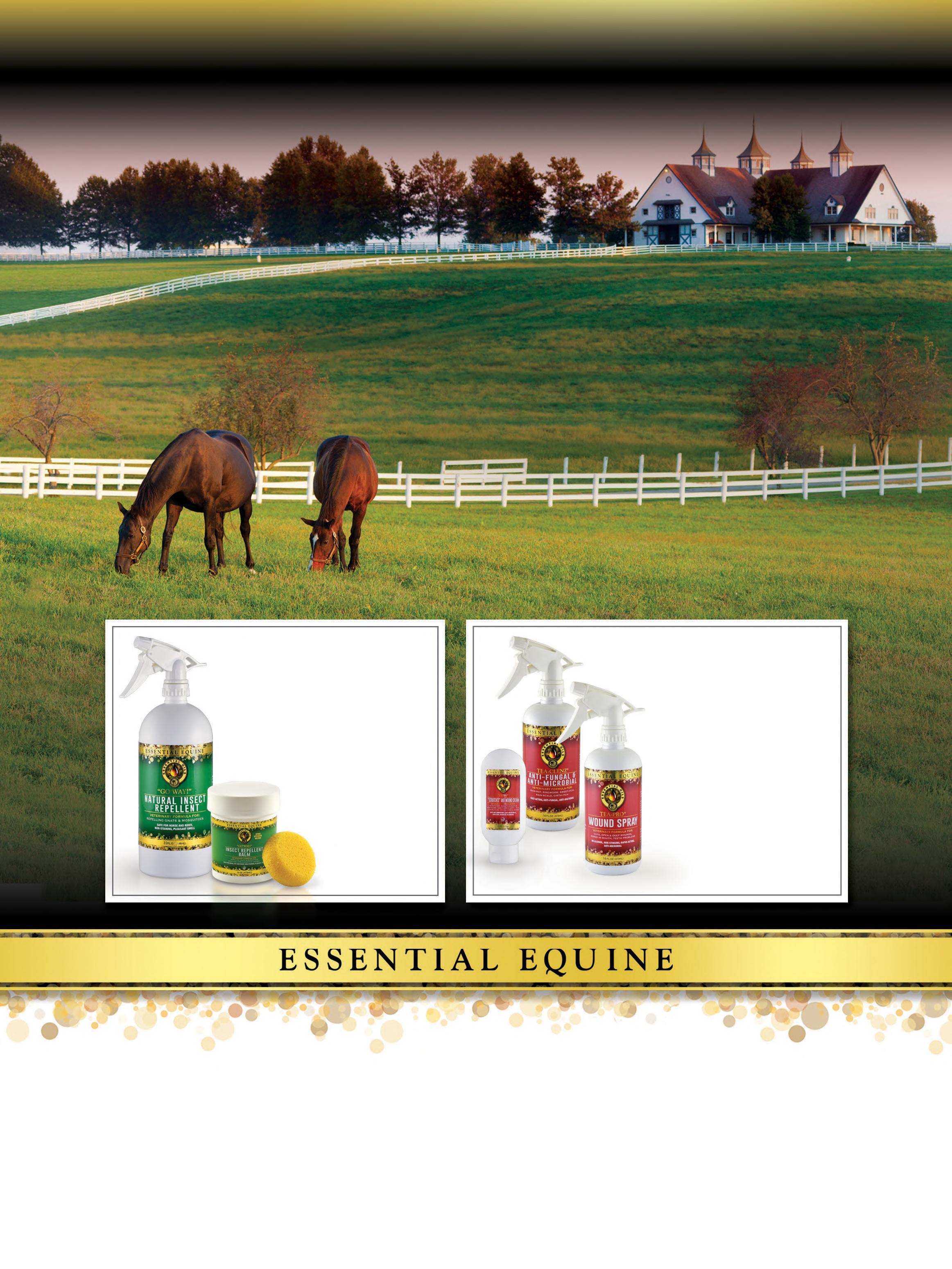
The first to perfect the ‘science’ of combining proven naturopathic ingredients with powerful pharmaceutical agents.
“GO’WAY!”TM is an emulsified blend of essential oils to repel insects naturally. Available in spray and balm forms (with sponge applicator). Non harmful to bees.
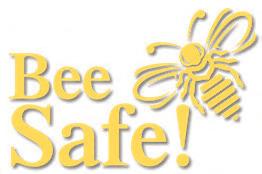
TZoN® Scratches & Wound Cream aids in the treatment of ‘scratches’, girth itch, saddle sores & more.
TEA-CLENZ® is a powerful germicide in the treatment of skin conditions, such as rain-rot & ringworm.
TEA-PRO® Wound Spray aids in the healing of open wounds, cuts, and mouth sores.
Essential oil-based formulas, offering horse owners an alternative approach on caring for horses.
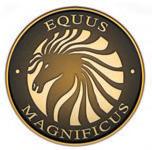
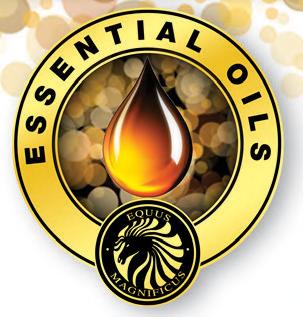

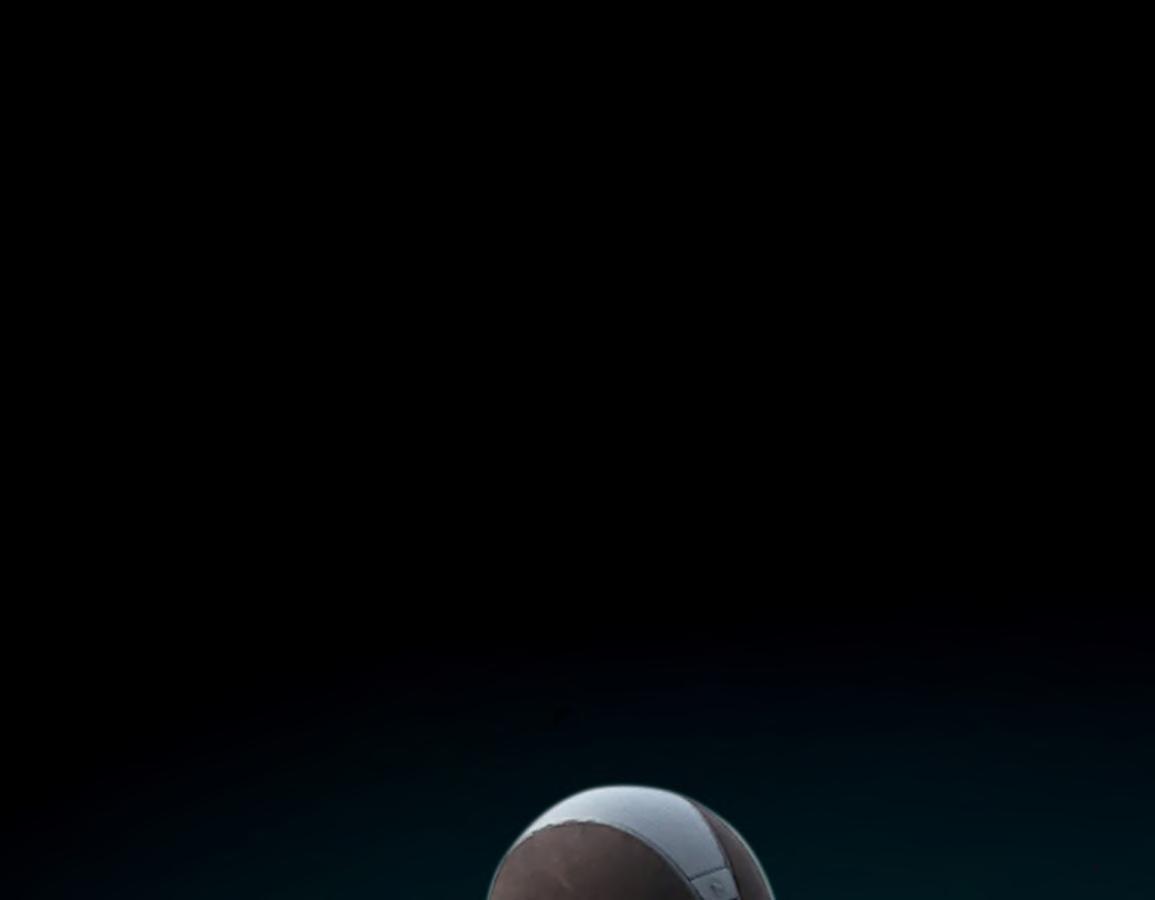
ENJOY THE PREMIER HITS EXPERIENCE FROM COAST TO COAST, with six iconic venues, elite competition opportunities, generous prize money offerings, and unique hospitality. From the dazzling hunters and incredible jumpers to the captivating dressage movements, HITS hosts more than 130 weeks of hunter/jumper and dressage competitions throughout the year.
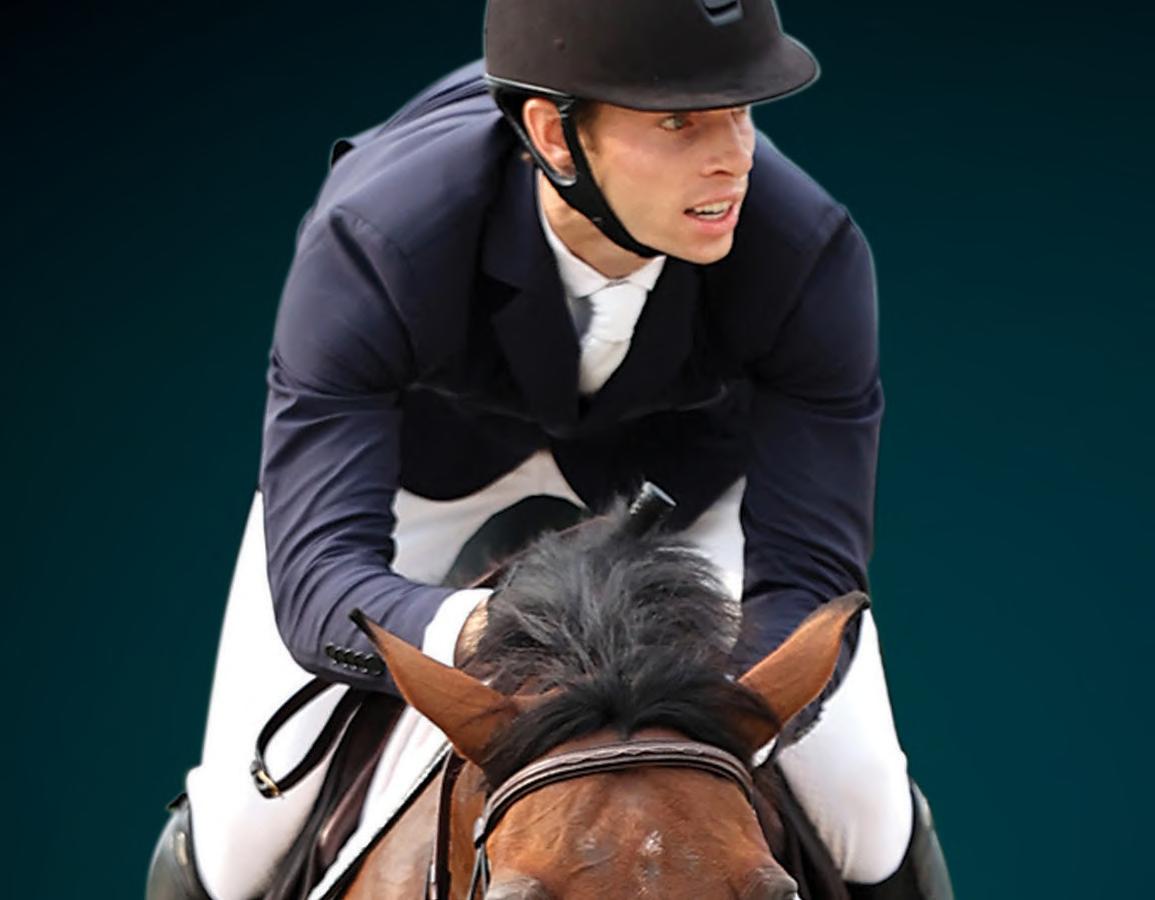
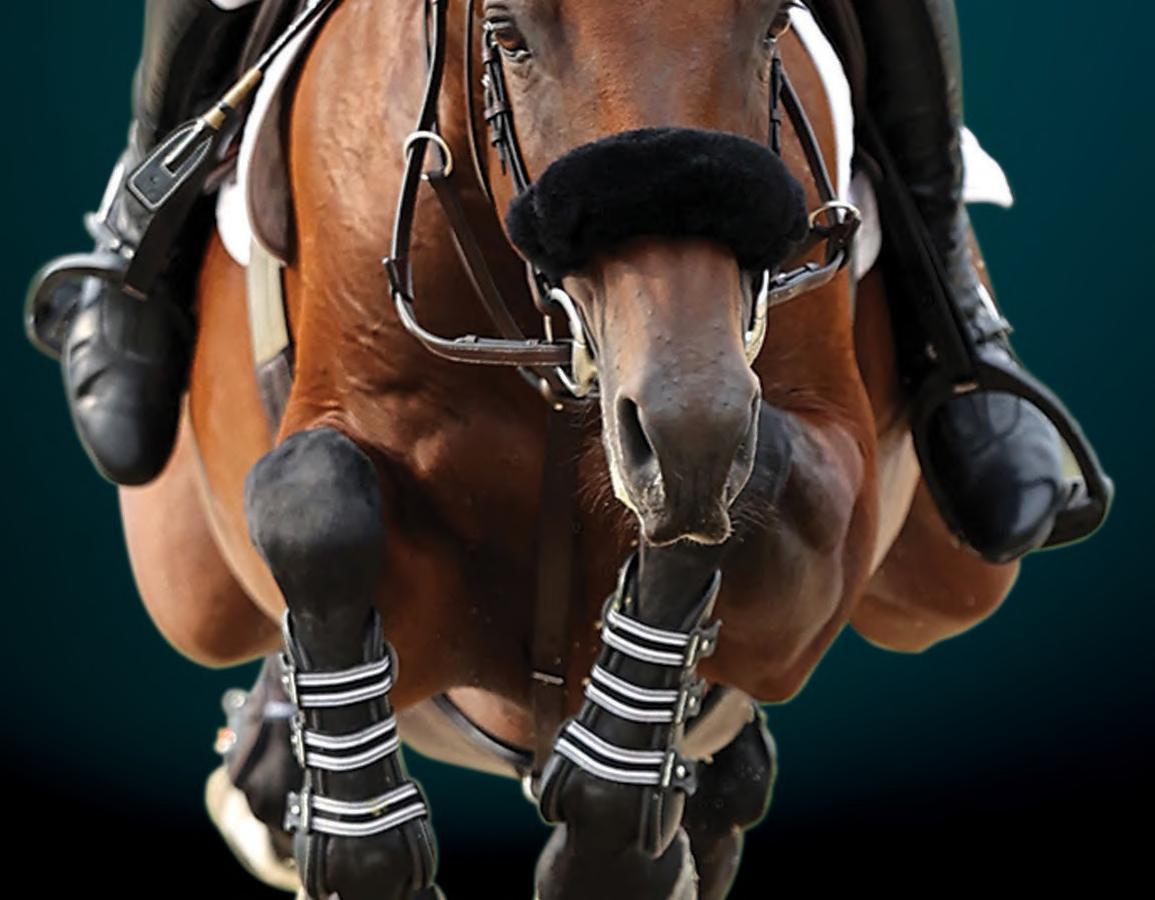
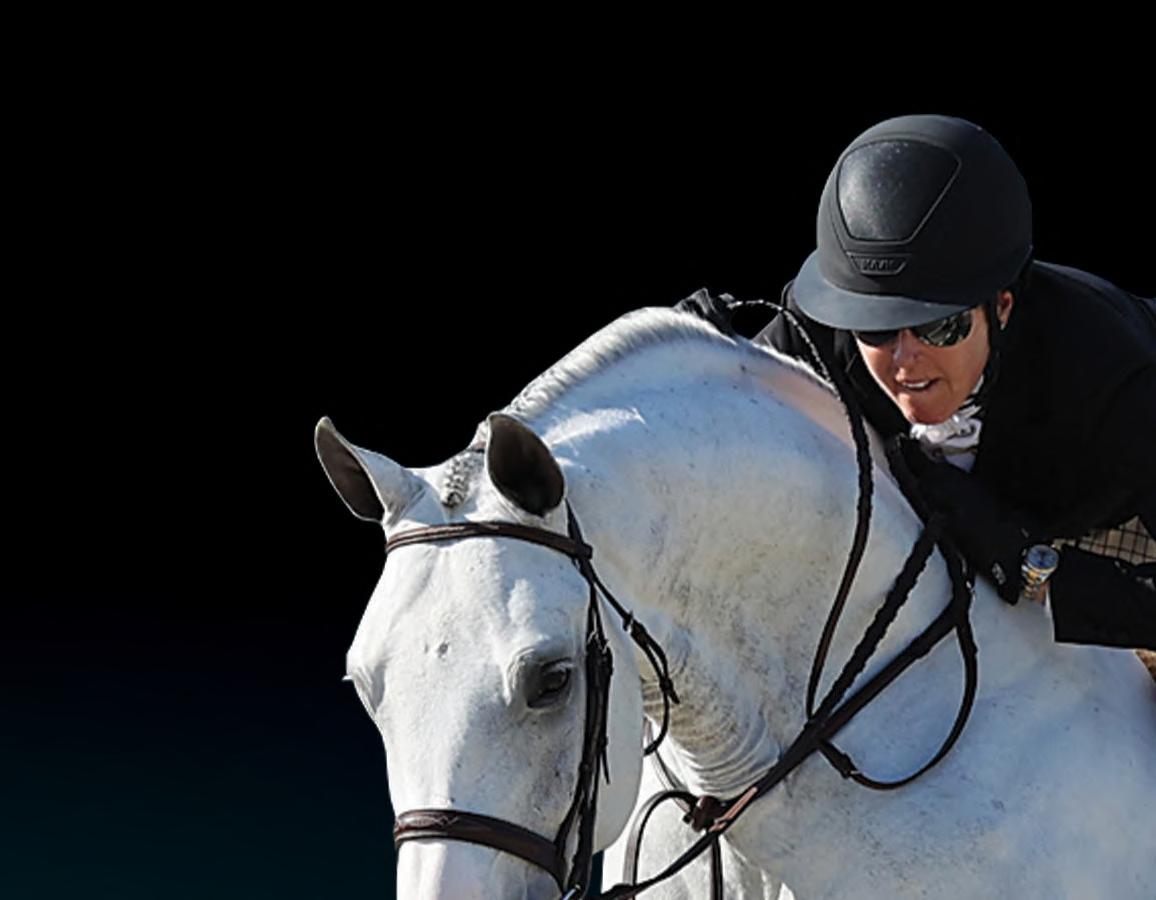
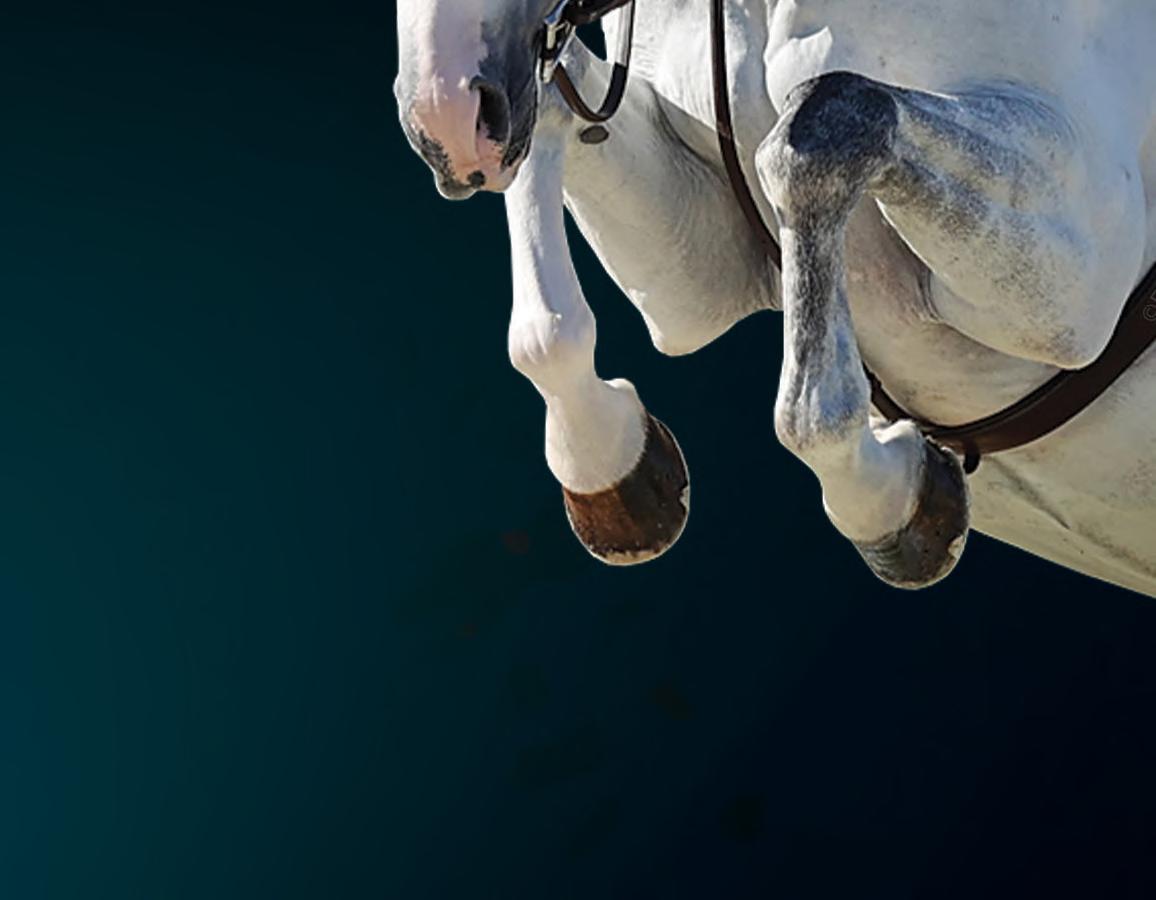
THE ACTION-PACKED HUNTER/JUMPER HORSE SHOW SCHEDULE IN 2025 across HITS Chicago, HITS Culpeper, HITS Del Mar, HITS Hudson Valley, HITS Ocala, and HITS Vermont includes seven weeks of International FEI show jumping competition, as well as five weeks with a World Champion Hunter Rider (WCHR) designation.
Plus, exhibitor-favorite classes exclusive to HITS, such as the STX Open Speed Series, Horseflight Jumper Classic Series, Arion Sellier Equitation Championships, and the ClipMyHorse.tv qualifiers toward the 2025 $200,000 ClipMyHorse.tv Hunter Classic Final, make HITS the place to be all year long.




DRESSAGE RIDERS CAN STRUT DOWN CENTERLINE WITH EXCITING COMPETITION at HITS Chicago, HITS Del Mar, HITS Hudson Valley, and new in 2025, HITS Culpeper. Highlighted by three CDI weeks at HITS Del Mar, the U.S. Dressage Festival of Champions at HITS Chicago, and the Great American Insurance Group/United States Dressage Federation Region 8 Dressage Championship at HITS Hudson Valley, these popular series offer classes for horses and riders of all levels.
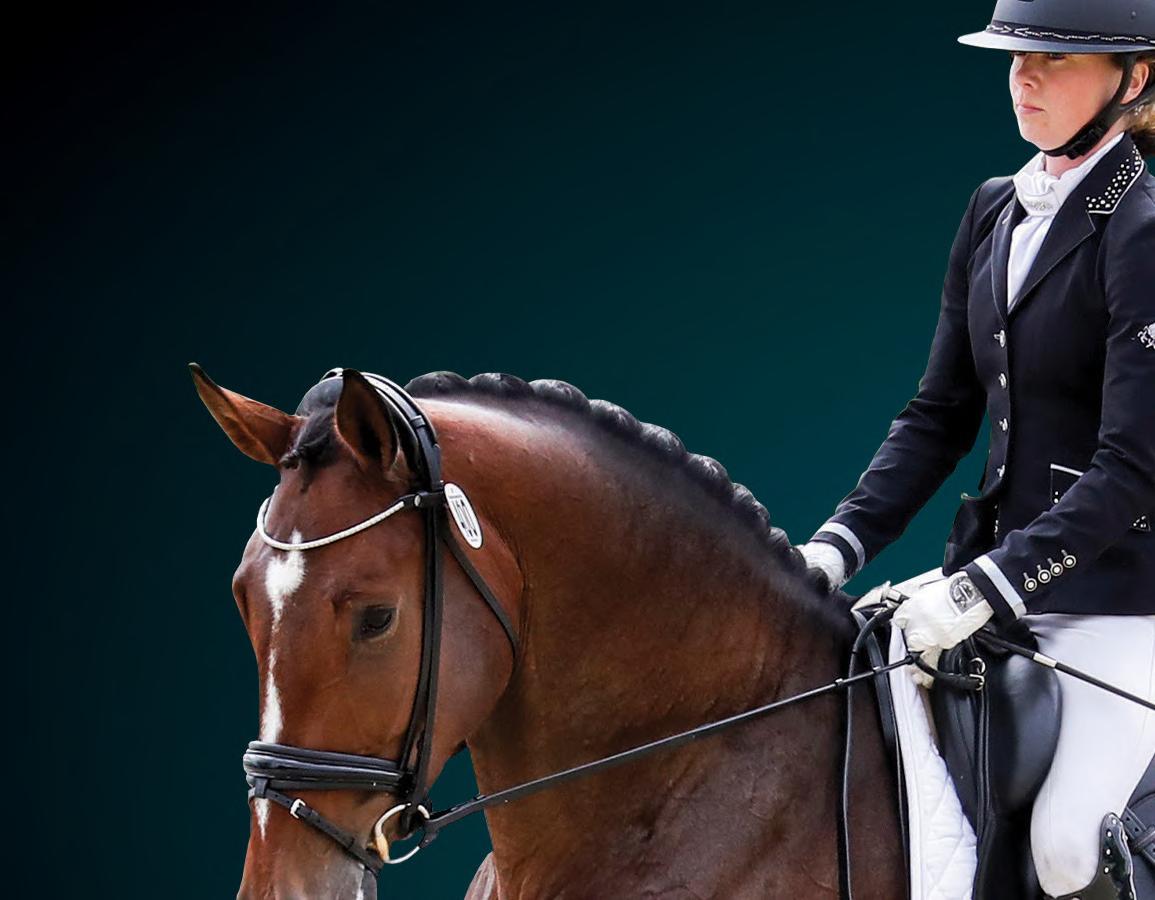


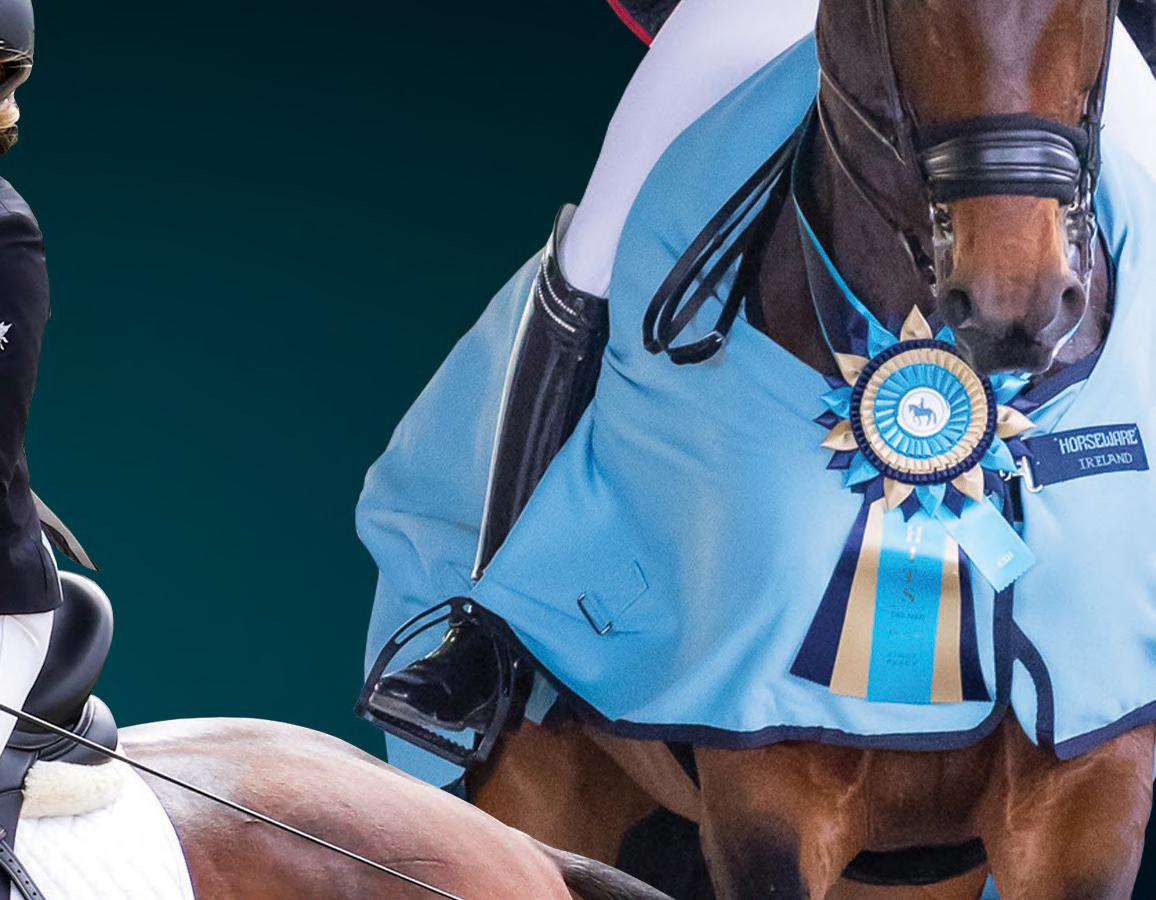
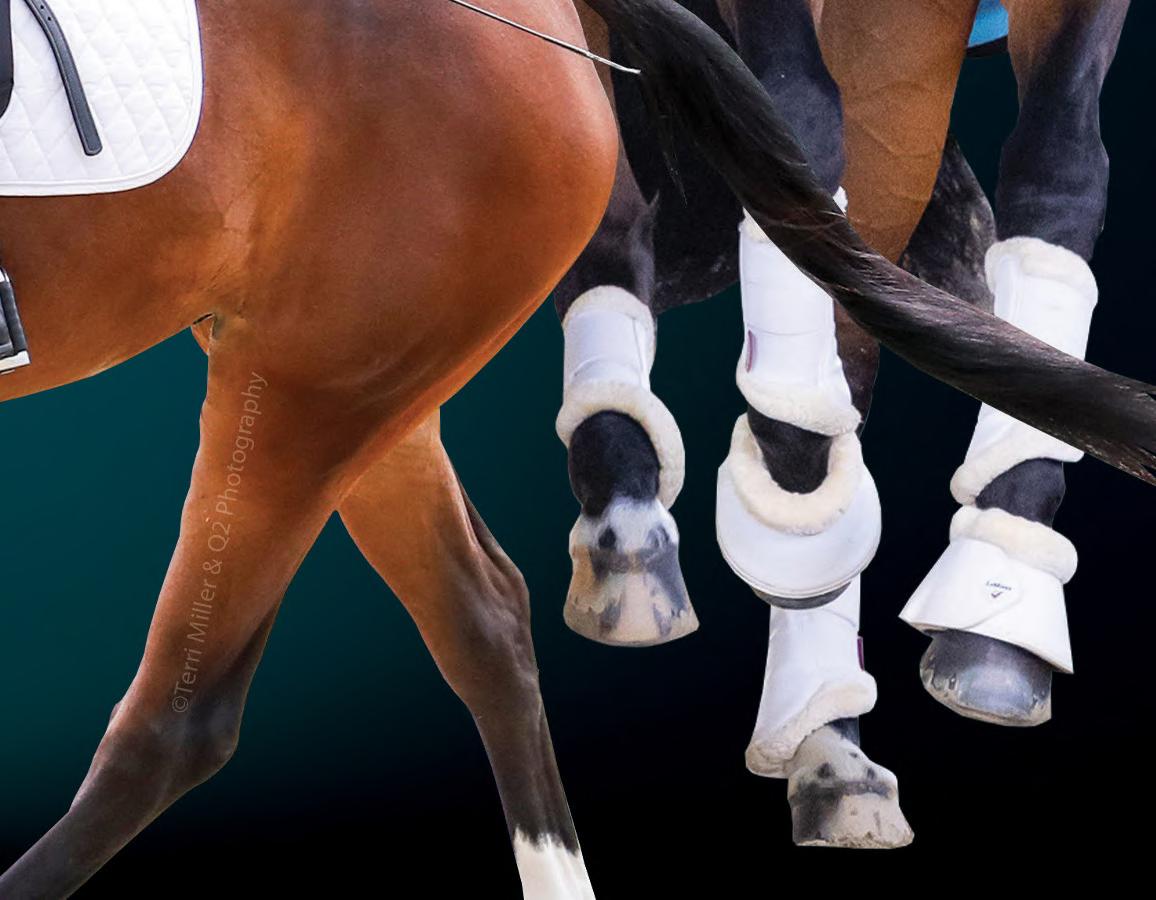
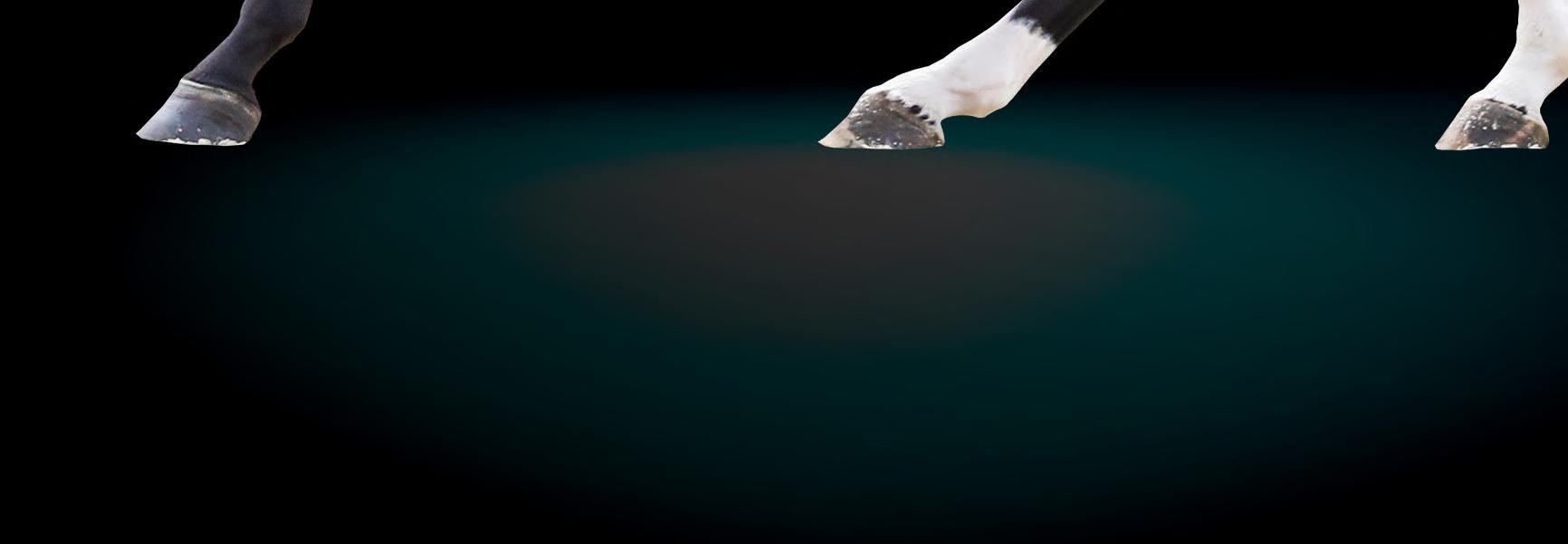

WORDS: PIPER KLEMM, PHD
PHOTOS: JANA BANNAN
IN THE world of equestrian architecture, B&D Builders has emerged as a pioneering force, transforming horse facilities from simple shelters to meticulously designed living spaces. Founded in 2000 by Ben Esh and Daniel Glick, the company has grown from a small shed and pole barn construction business to a nationally recognized leader in equestrian facility design.
The journey began when Daniel Glick and his partner Ben Esh were working at a shed shop, gradually expanding their expertise, when their big breakthrough came at the Fair Hill Training Center in Maryland, where they renovated or rebuilt 12 out of 17 barns. This project became their proving ground, teaching them the unique challenges of designing spaces for demanding thoroughbred horses.

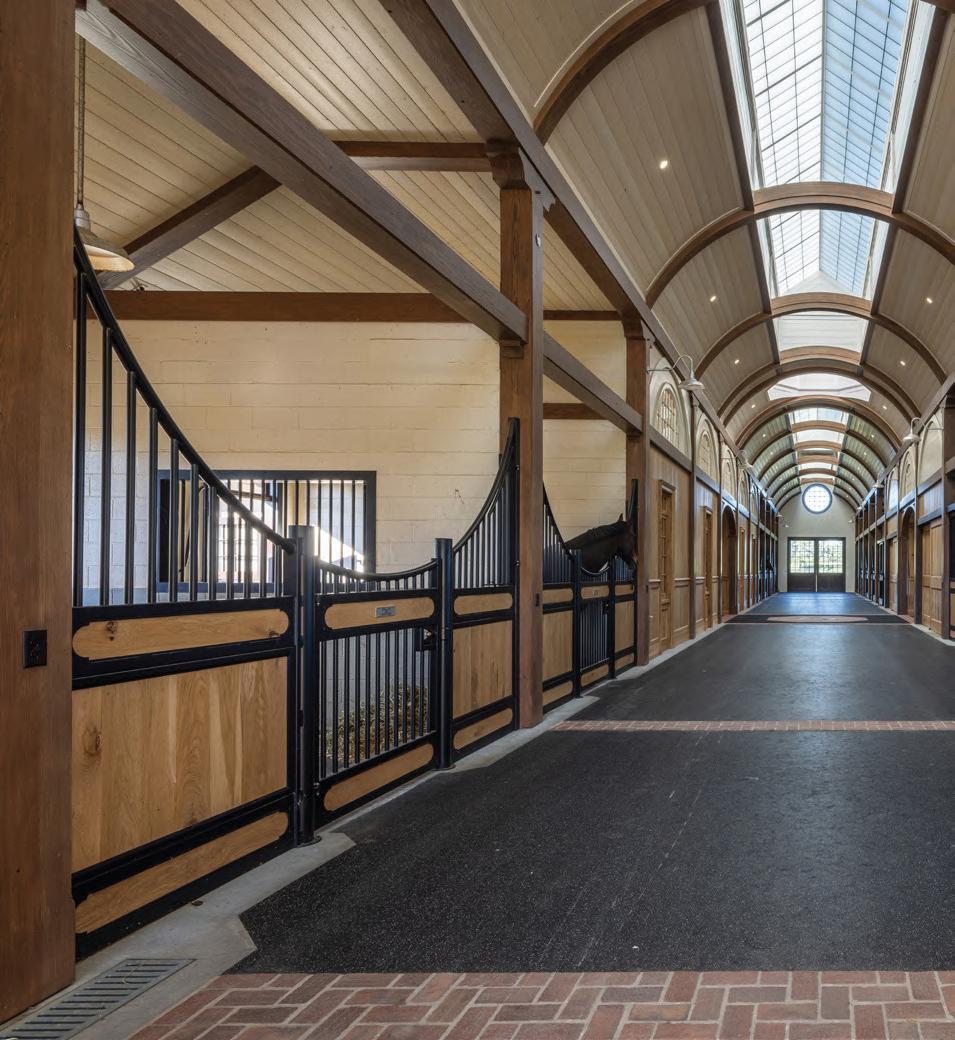

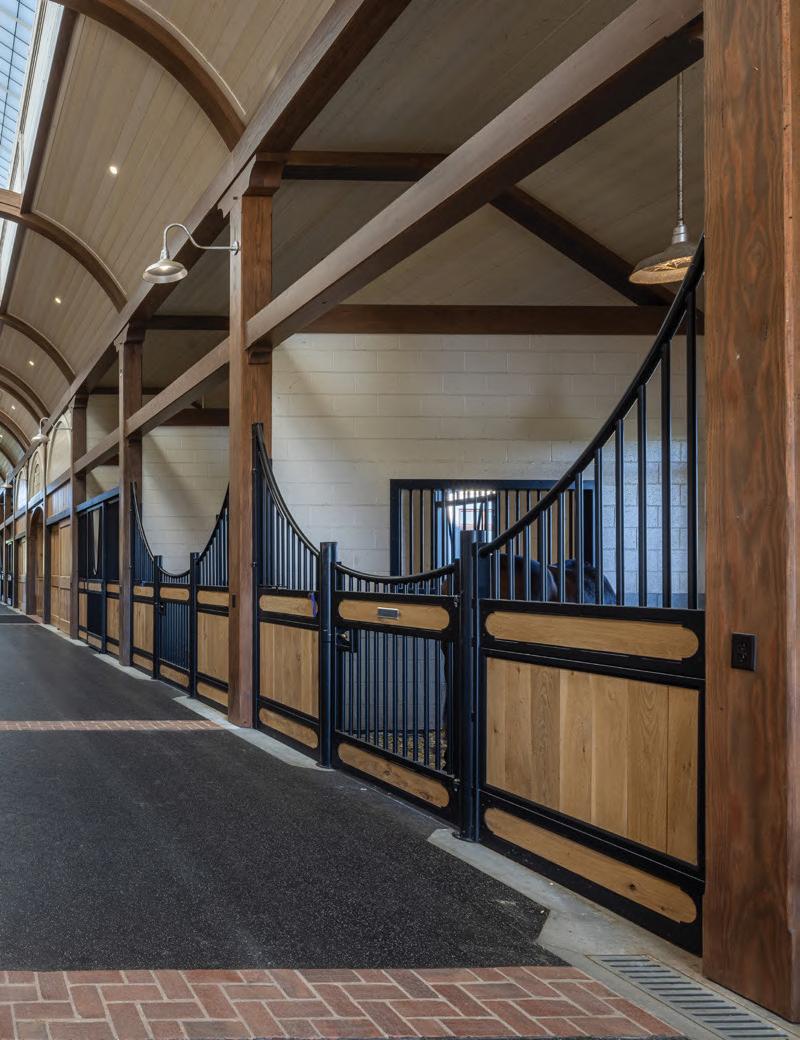
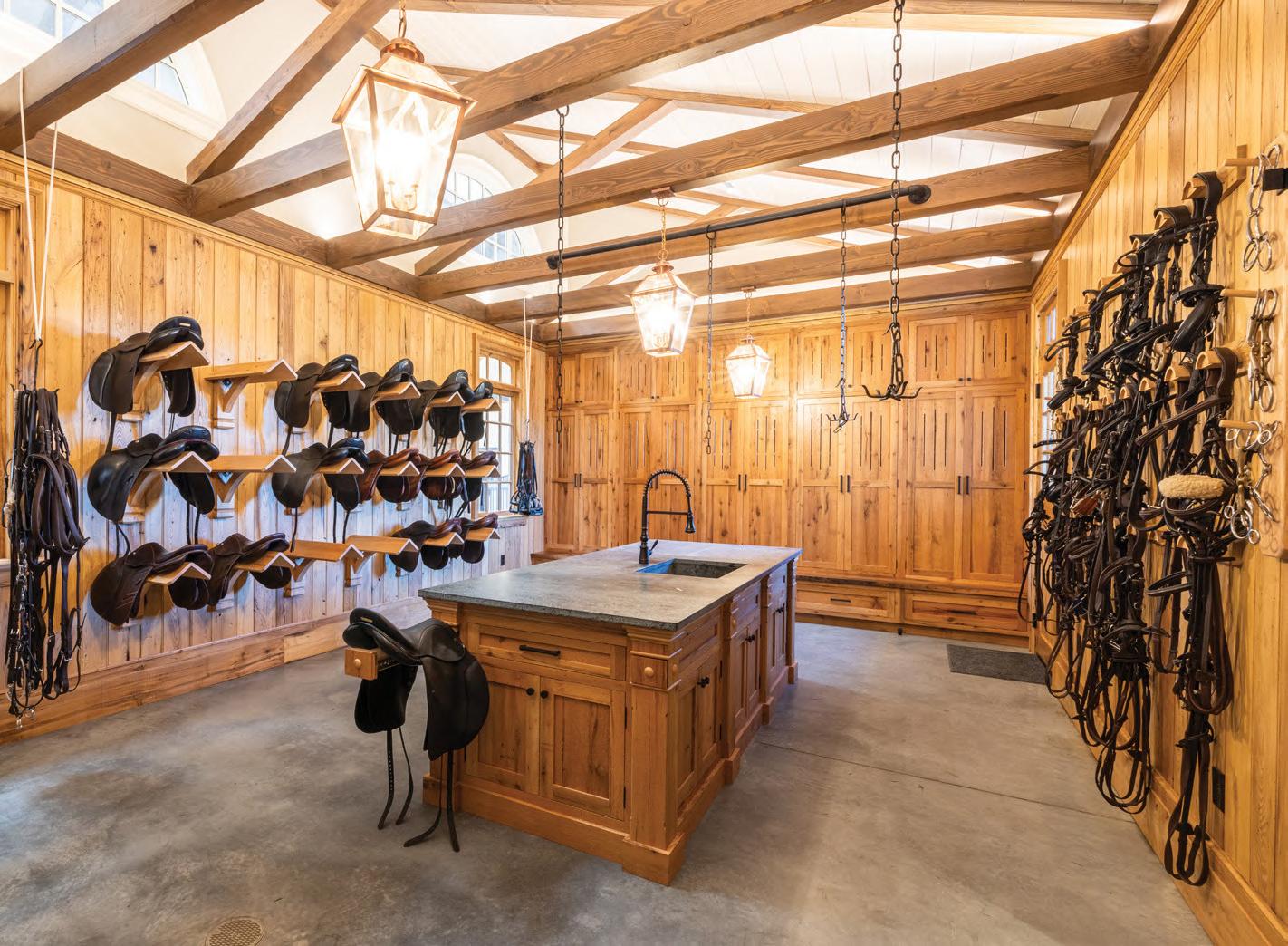

“Two-year-old Thoroughbreds can be rough on barns,” said Glick. “We learned a lot about what materials are durable, what needs a lot of repairs, what works long-term, and, most importantly, how to position barns and design infrastructure to maximize horse health and happiness.
What sets B&D Builders apart is their commitment to creating custom, highly functional spaces that go far beyond traditional barn design. They consider every detail, from natural lighting and wind exposure to drainage and water quality. “Natural lighting is very, very important,” Glick explains. “Don’t build on the north side of a big hill. You’ll get less light, and in northern climates, ice accumulation will last much longer.”
The company’s design philosophy centers on understanding each client’s unique needs. They approach each project collaboratively, considering everything from infrastructure and future expansions to the specific preferences of horse owners. Their expertise extends to complex terrains, including a recent project in New York built into a mountainside that required extensive due diligence and engineering.
Modern equestrian facilities designed by B&D Builders are more than just
functional spaces—they’re carefully crafted environments that prioritize horse and human comfort. They pay special attention to elements like ventilation, spacious tack rooms, and strategic paddock placement. “Don’t try to shoehorn things in,” Glick advises. “Have lots of room for storage, tack, feed—we never have less tack, we always have more.”
“There are so many elements that are second nature to our team. We are constantly thinking about prevailing winds, natural light, and good drainage.”
Recently, the company has been expanding its presence in areas like Traverse City, Michigan, where the climate and landscape offer unique opportunities for equestrian facilities. They’re particularly excited about locations with ideal conditions for horse care, including good soil, ample water, and perfect summer climates.
Whether it’s a small private stable or a large training facility, B&D Builders approach each project with the same level of dedication and attention to detail. Their work isn’t just about building barns—it’s about creating spaces where horses can thrive and owners can realize their equestrian dreams.
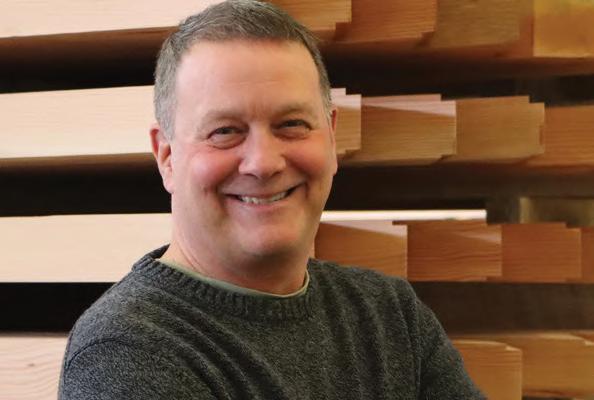
After growing up on a dairy farm in Lancaster County, Amos Ebersol understands the value of hard work and accountability. He spent the last 35 years applying those principles to a career in the construction industry. Beginning as a mason, Ebersol rose through the ranks to foreman, project management, and, later, to executive leadership. He joined B&D Builders in 2023 as preconstruction director, where he focused on developing the design team, refining internal workflows, and improving collaboration between sales, drafting, and estimating. As general manager, Ebersol will refine internal processes, ensure B&D continues to operate with efficiency and transparency, set revenue goals, review contracts, and make sure the team has the resources needed to achieve objectives, keeping the company’s commitment to quality at the forefront.
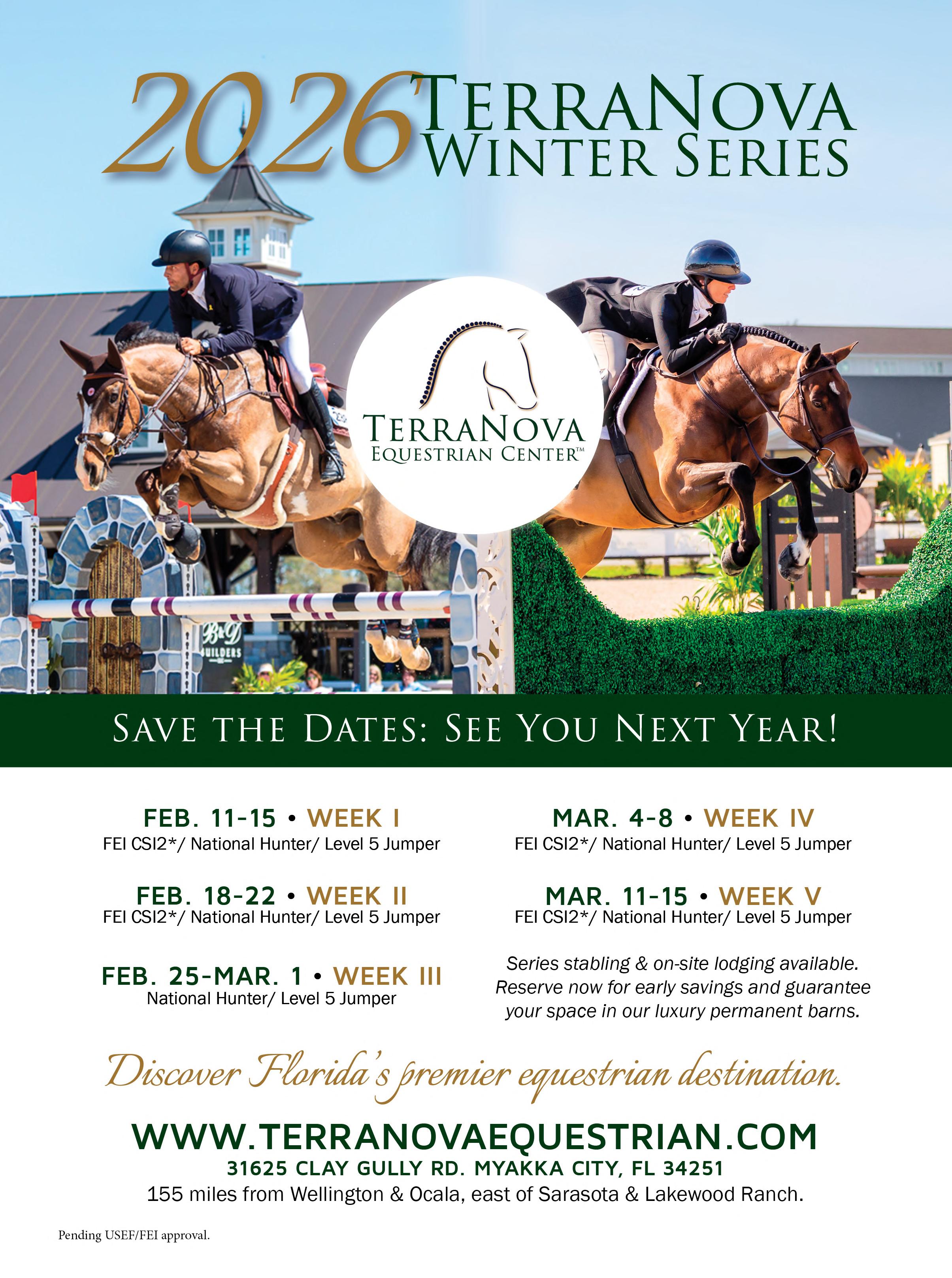
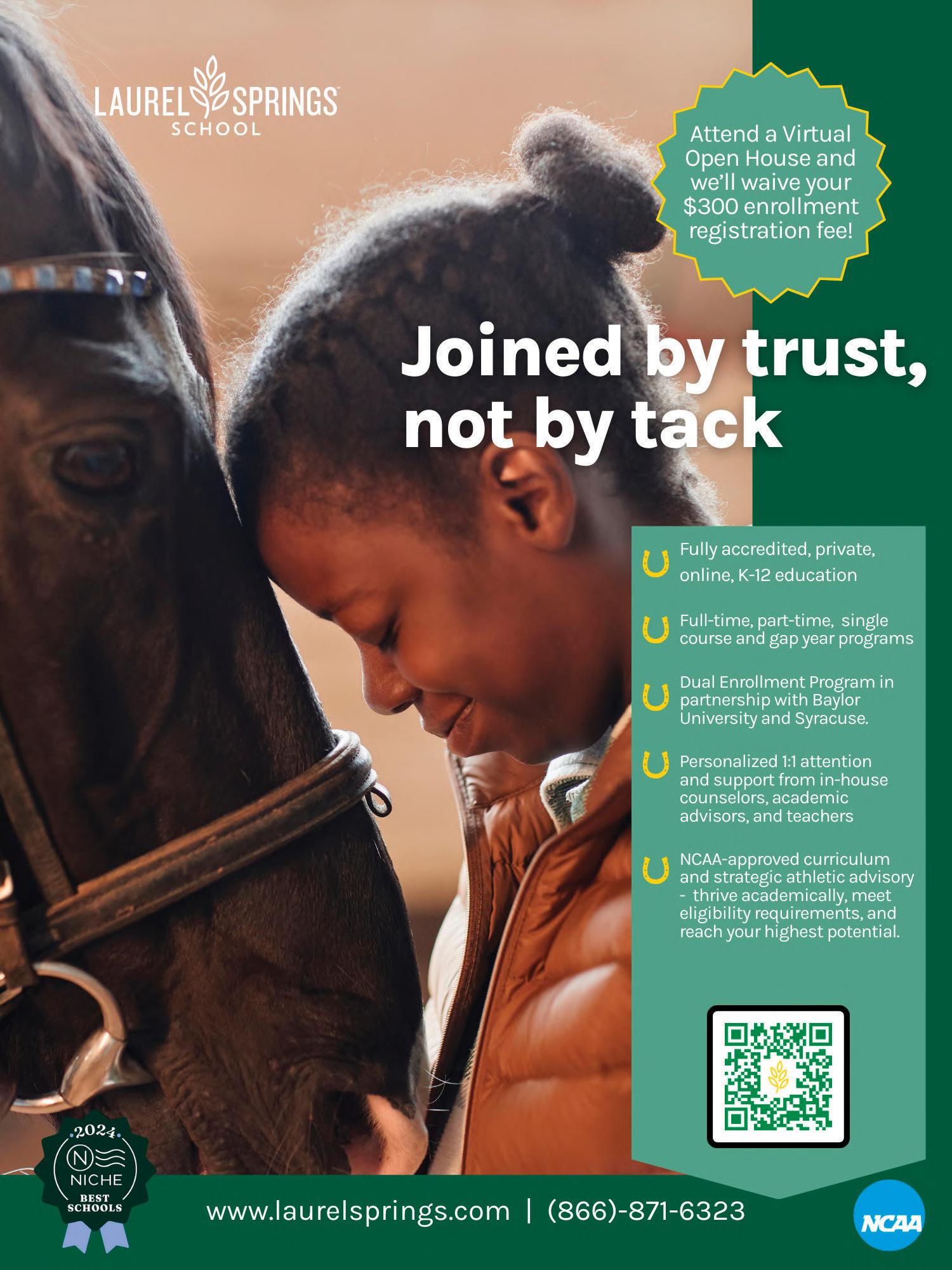
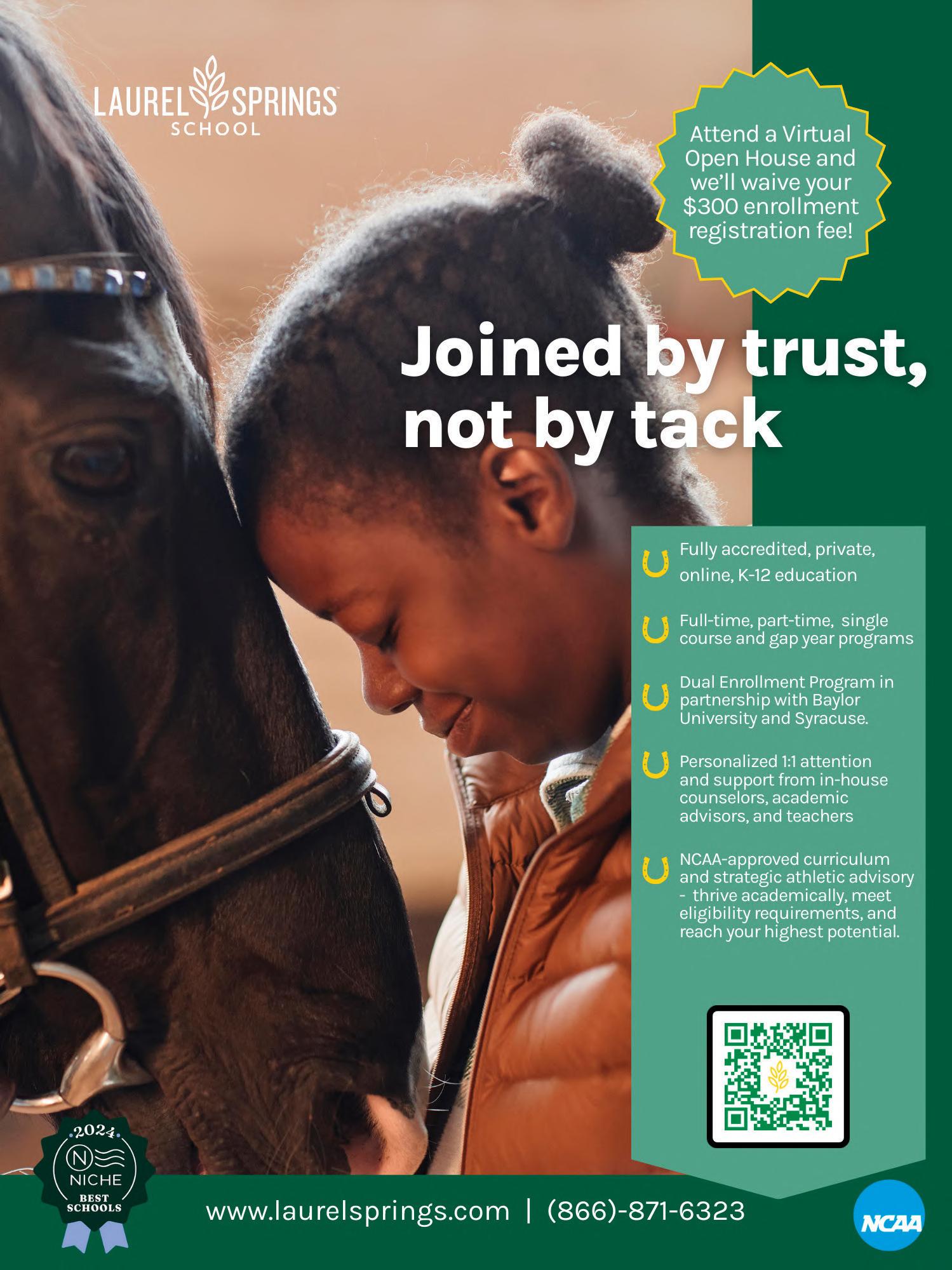









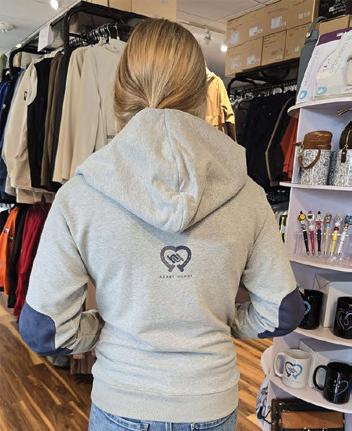

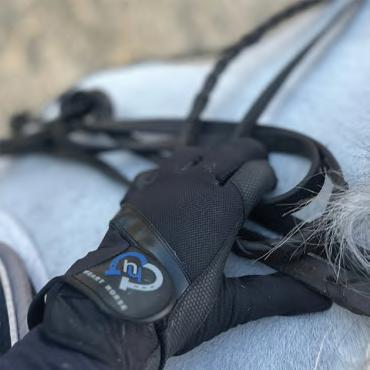
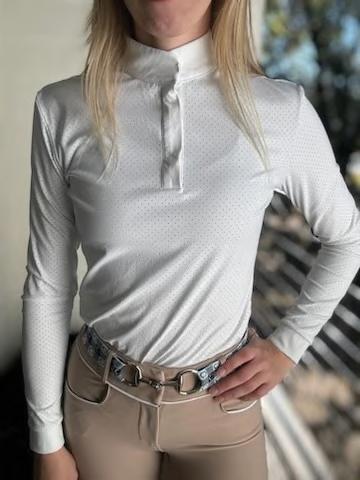
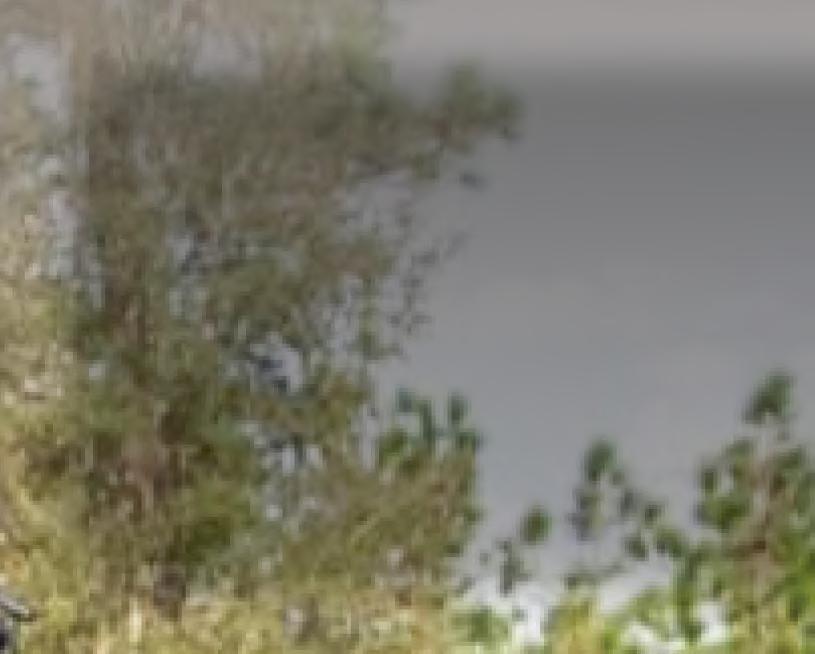

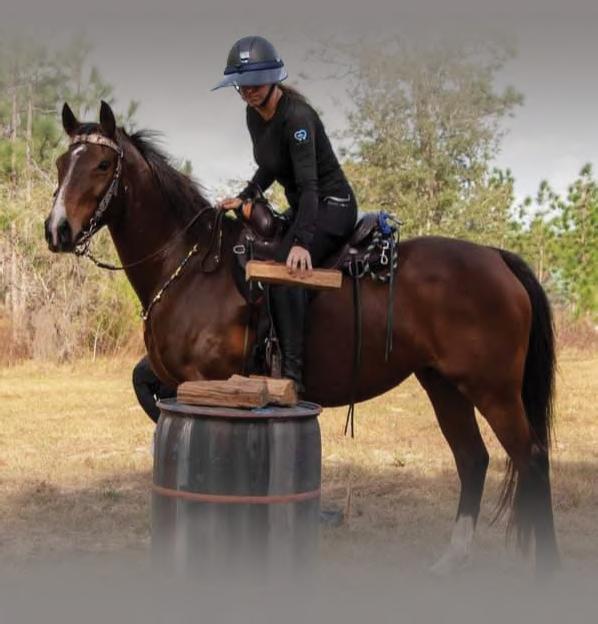
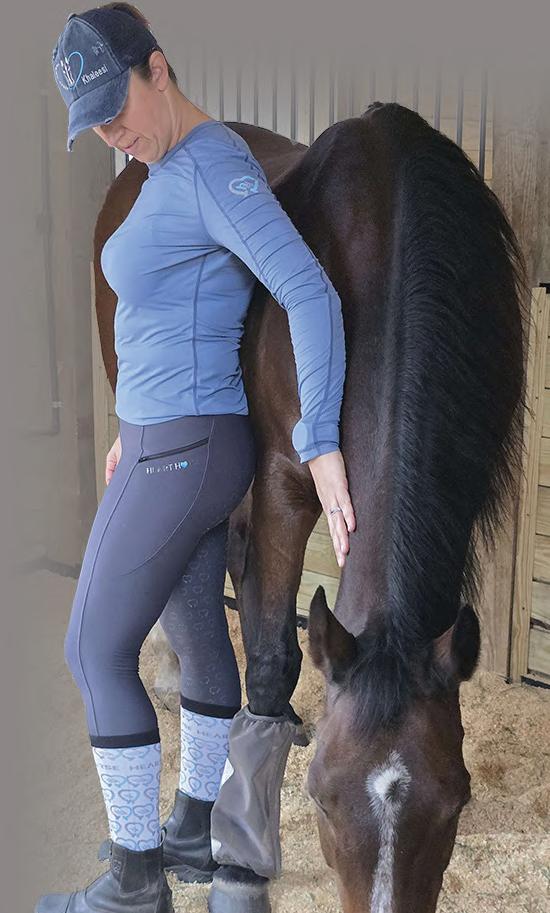
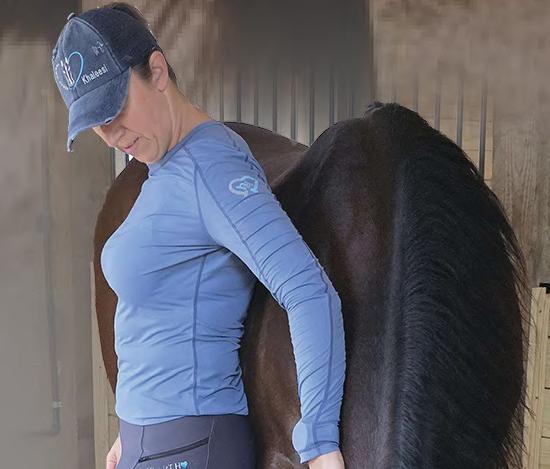

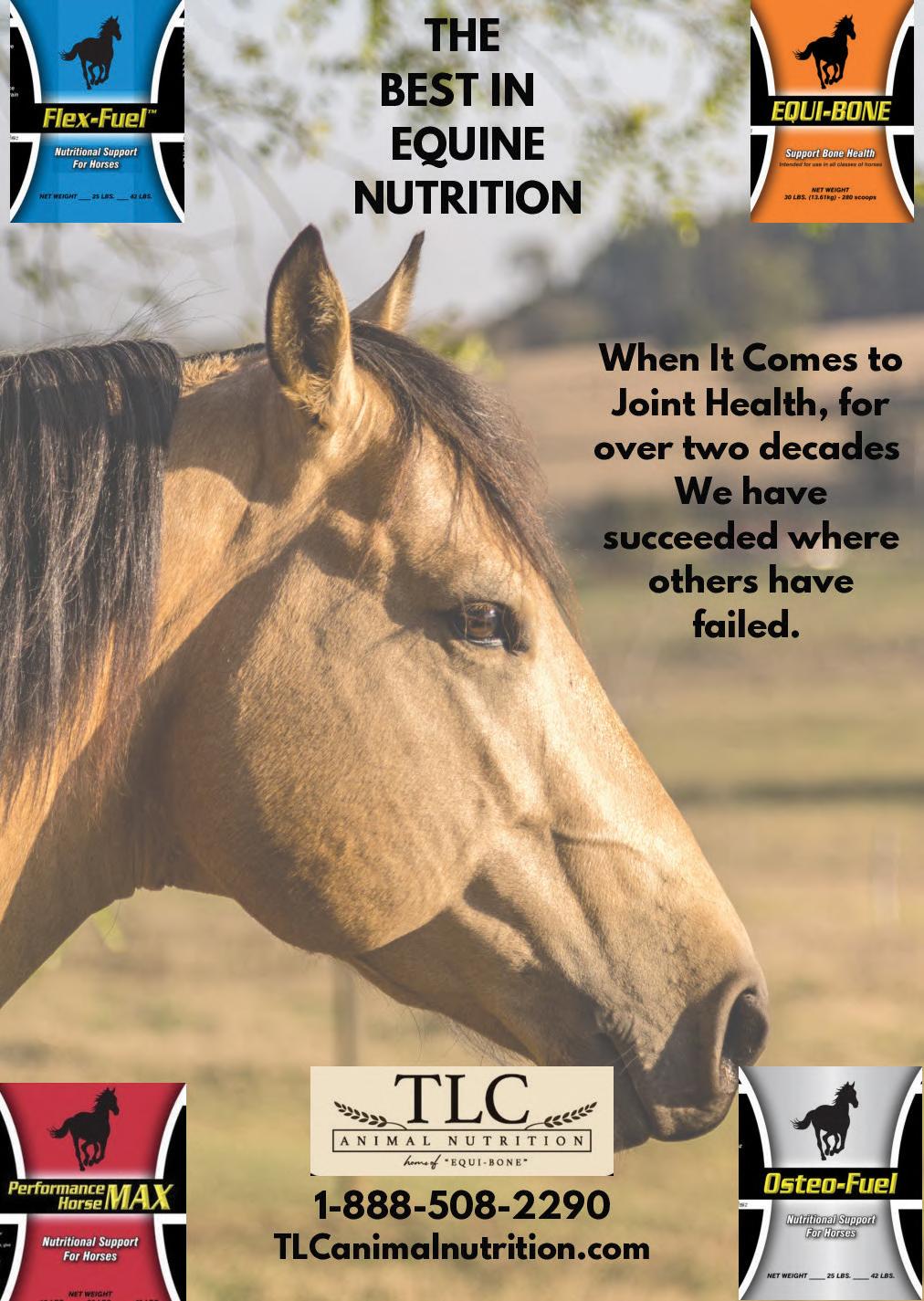
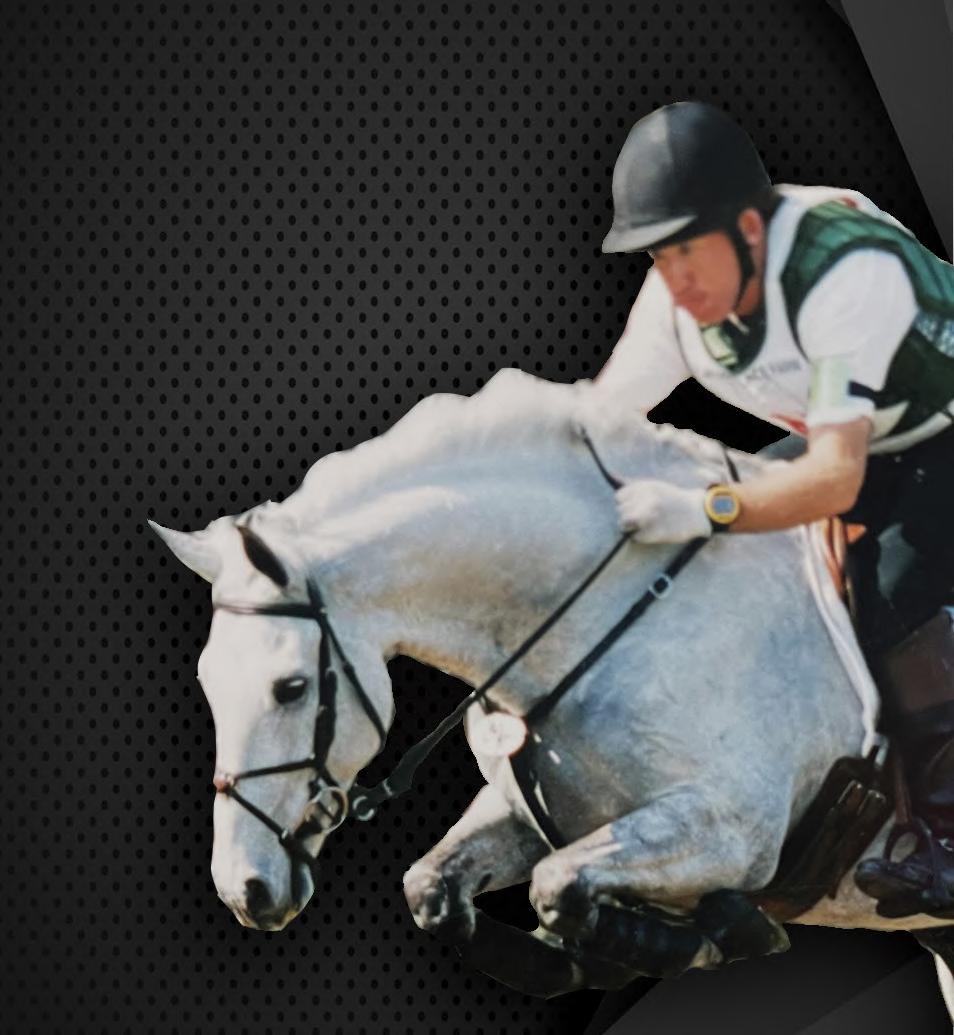

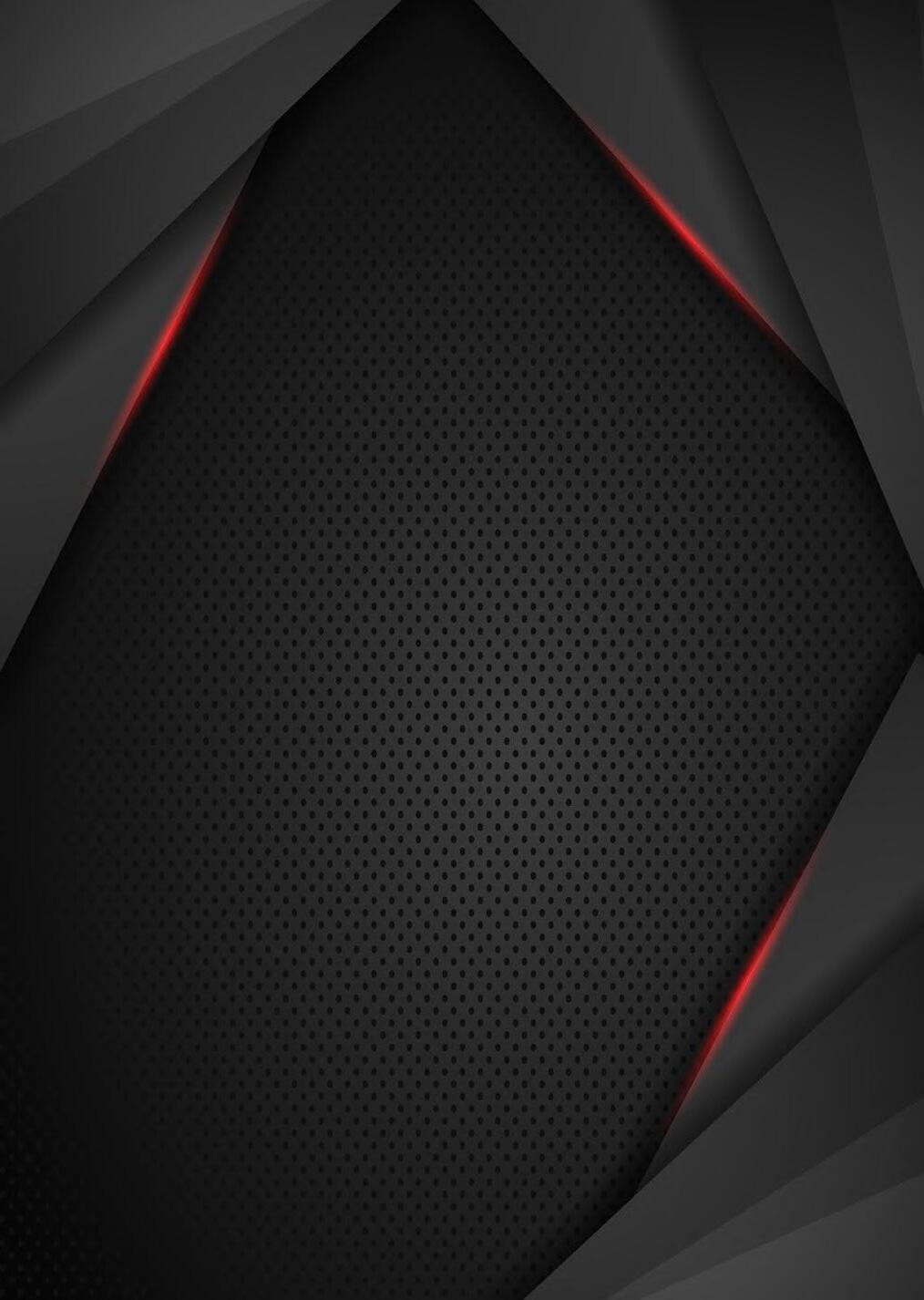
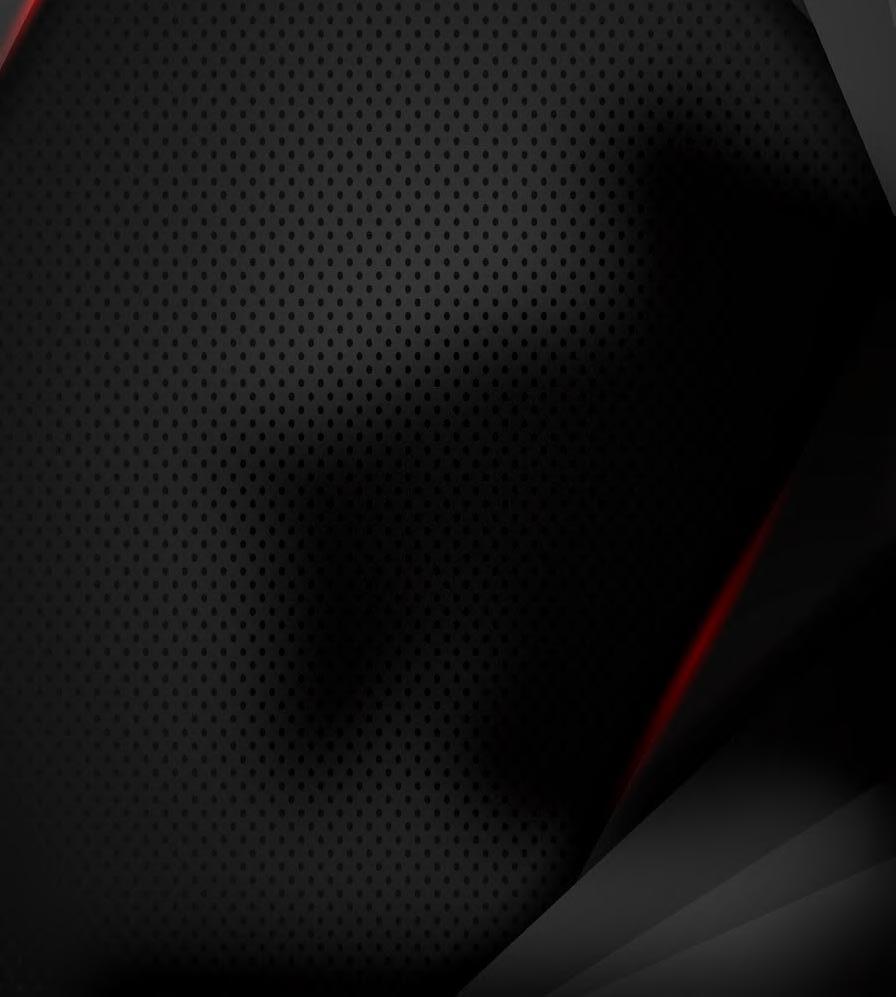
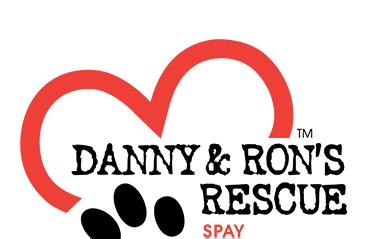



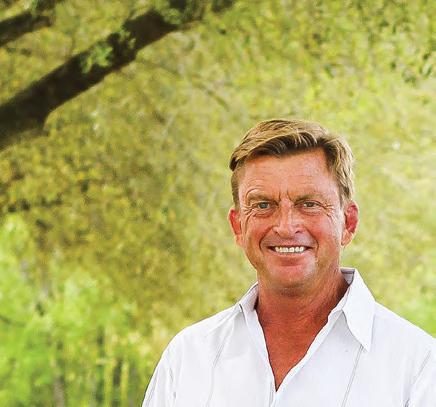

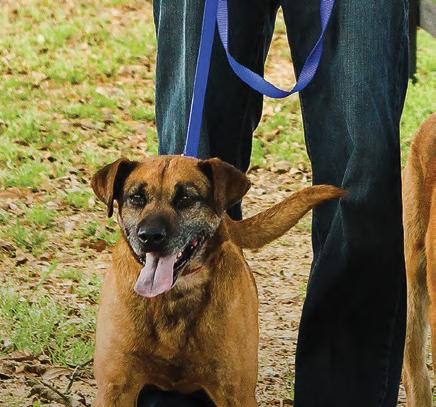
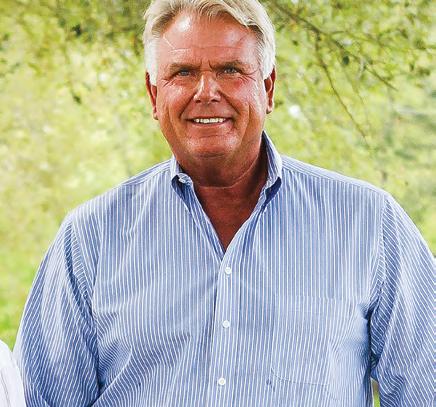

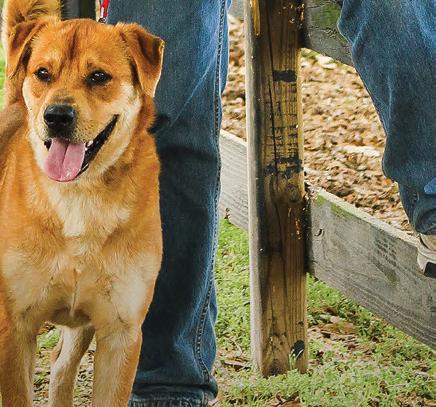

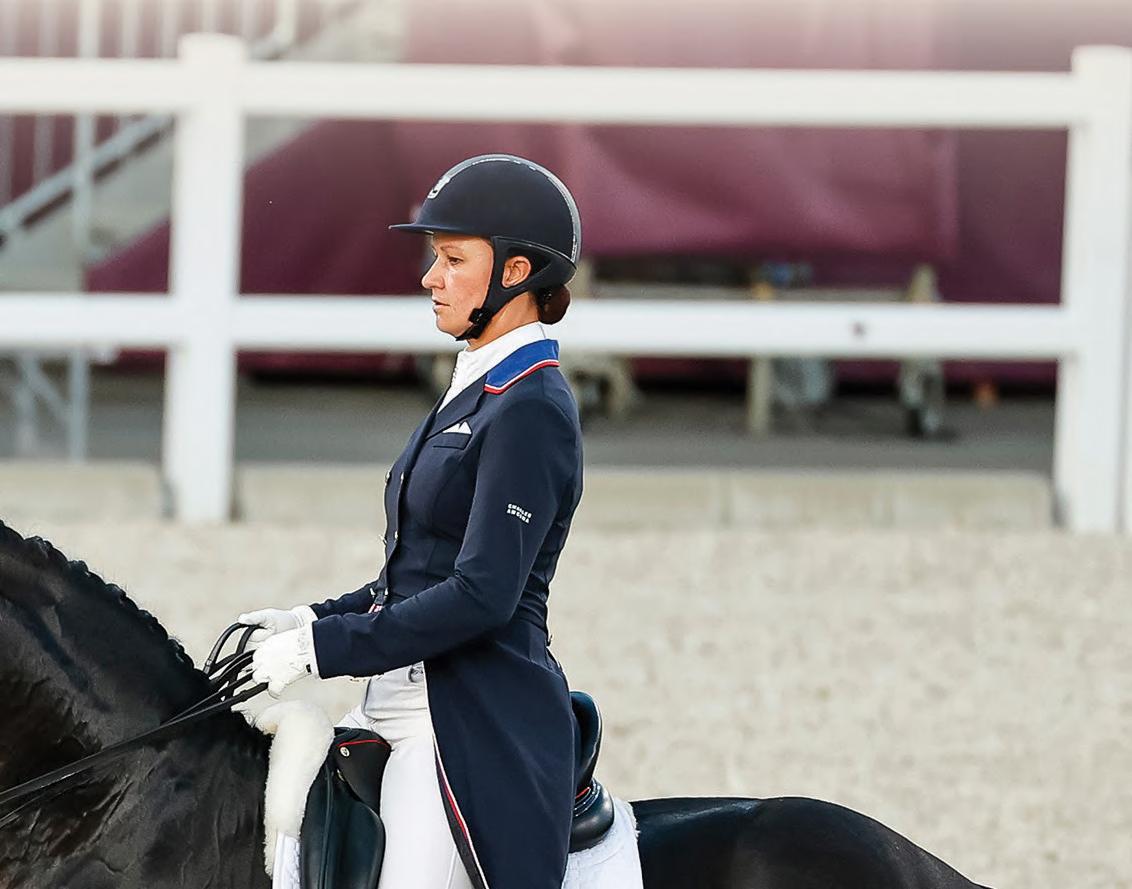


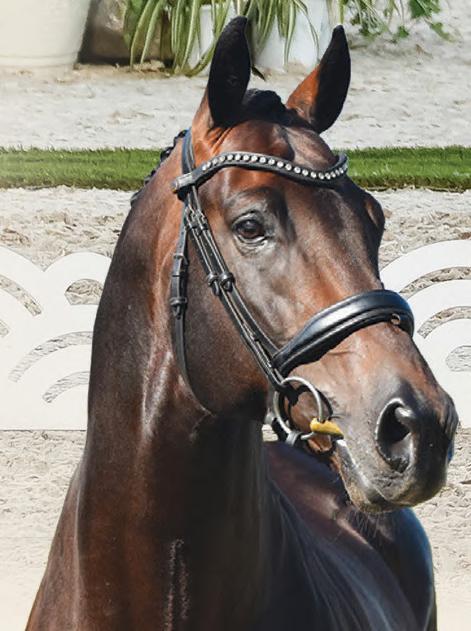
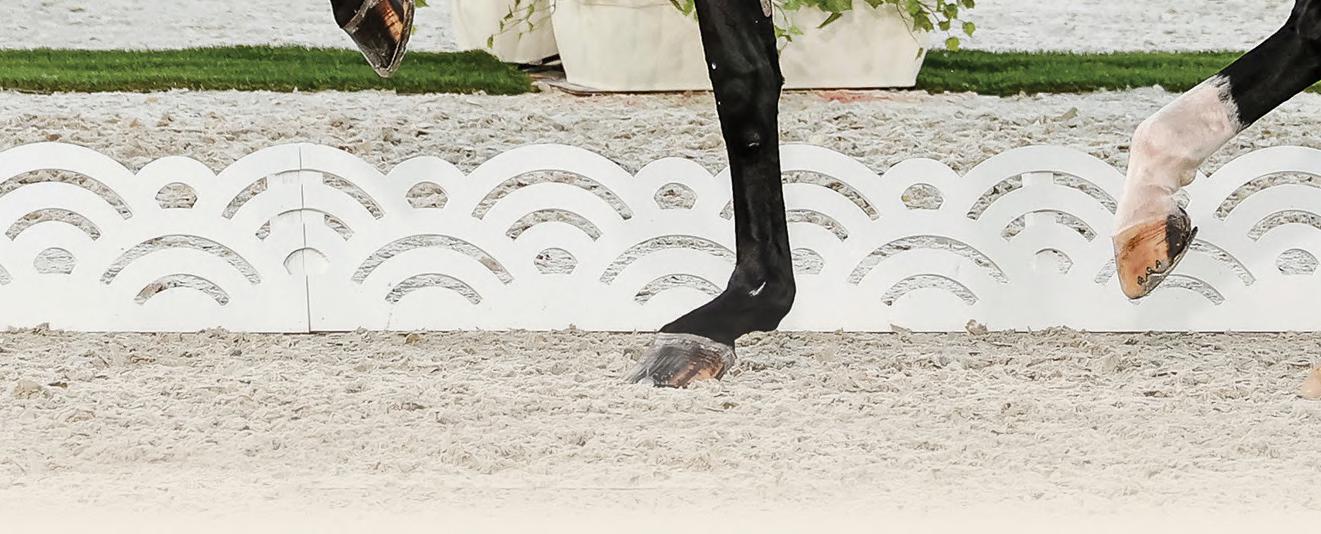

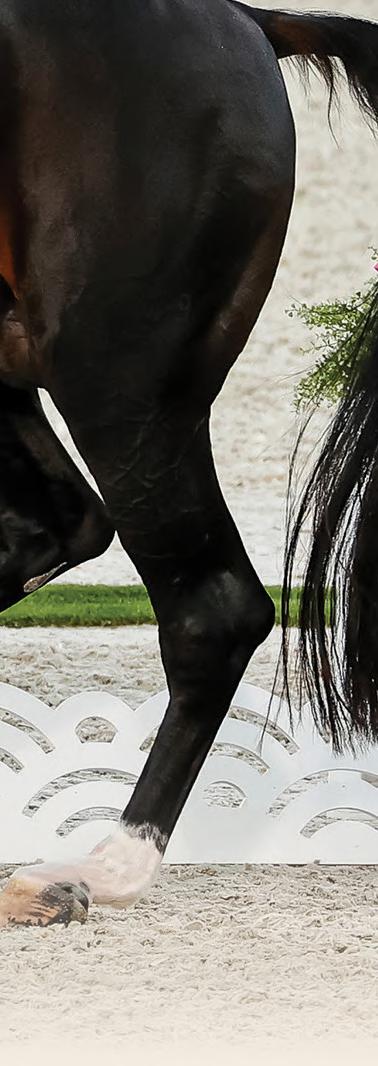
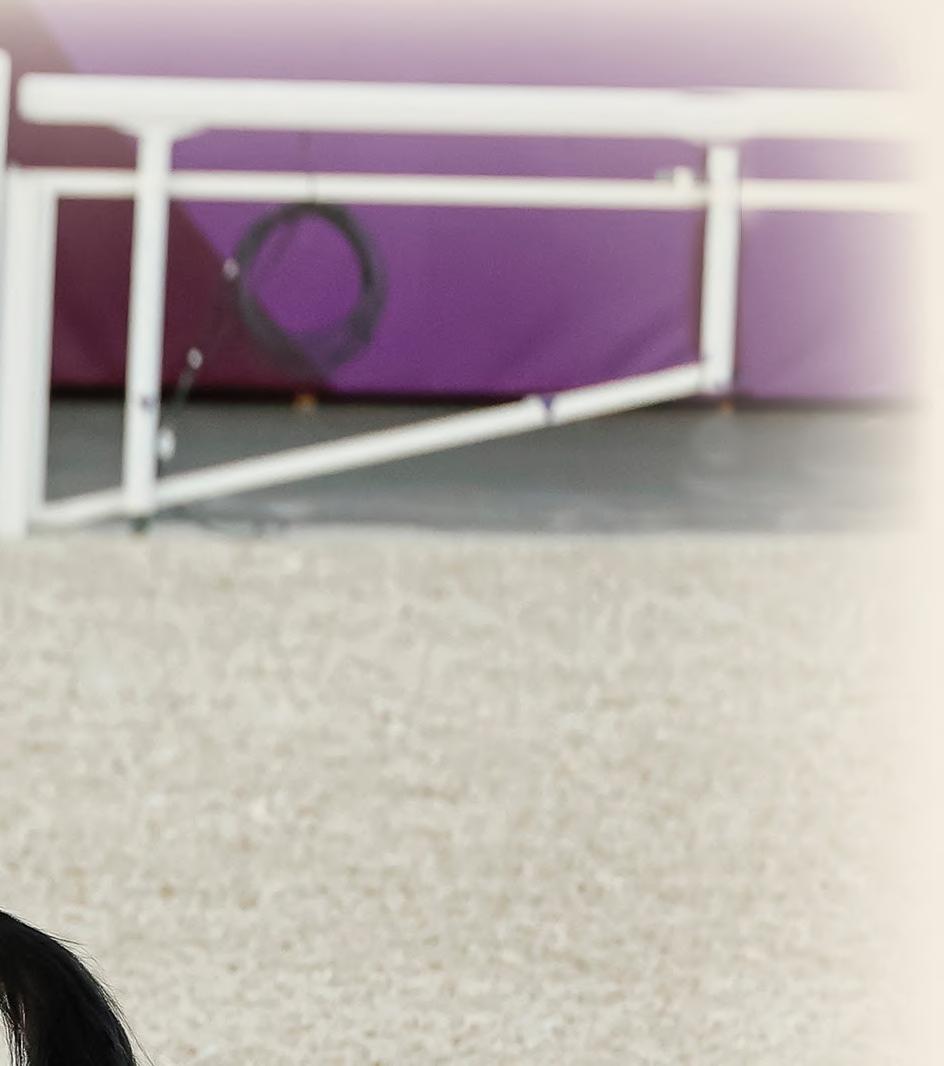
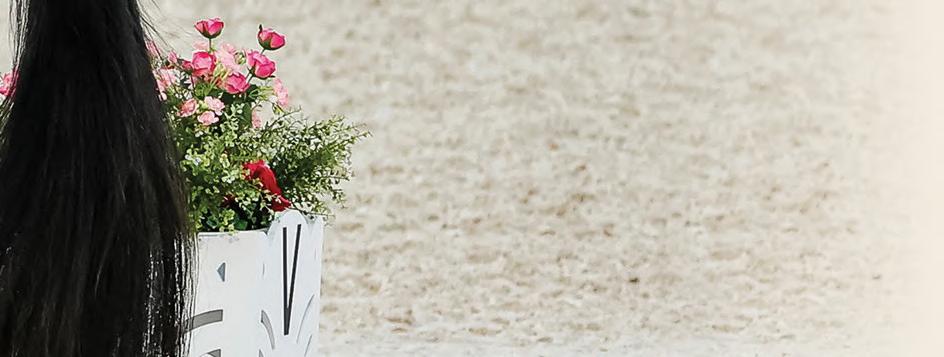
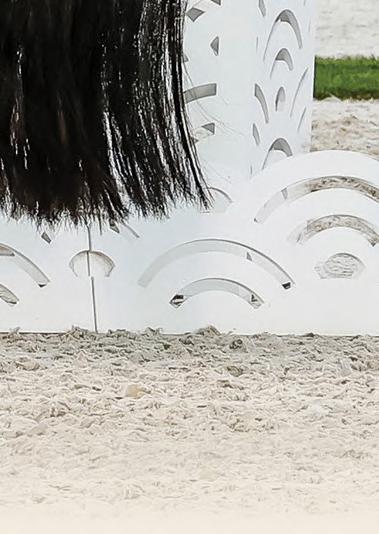









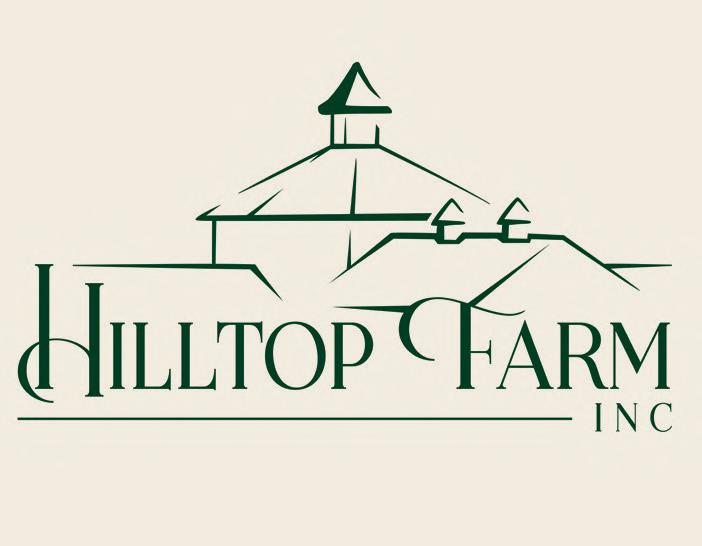
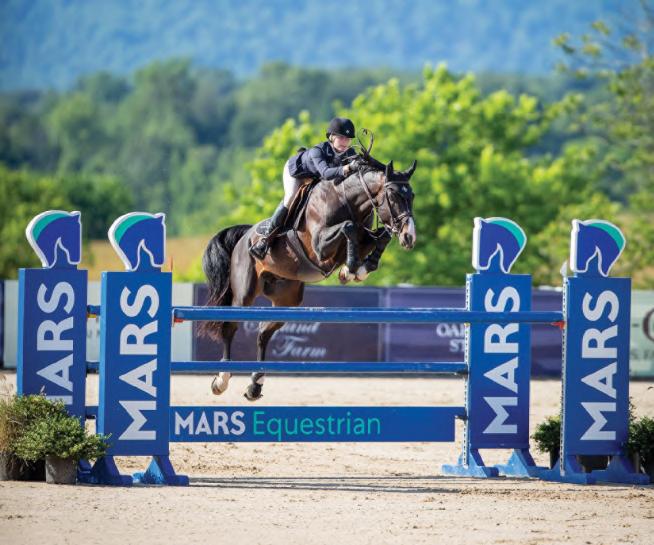
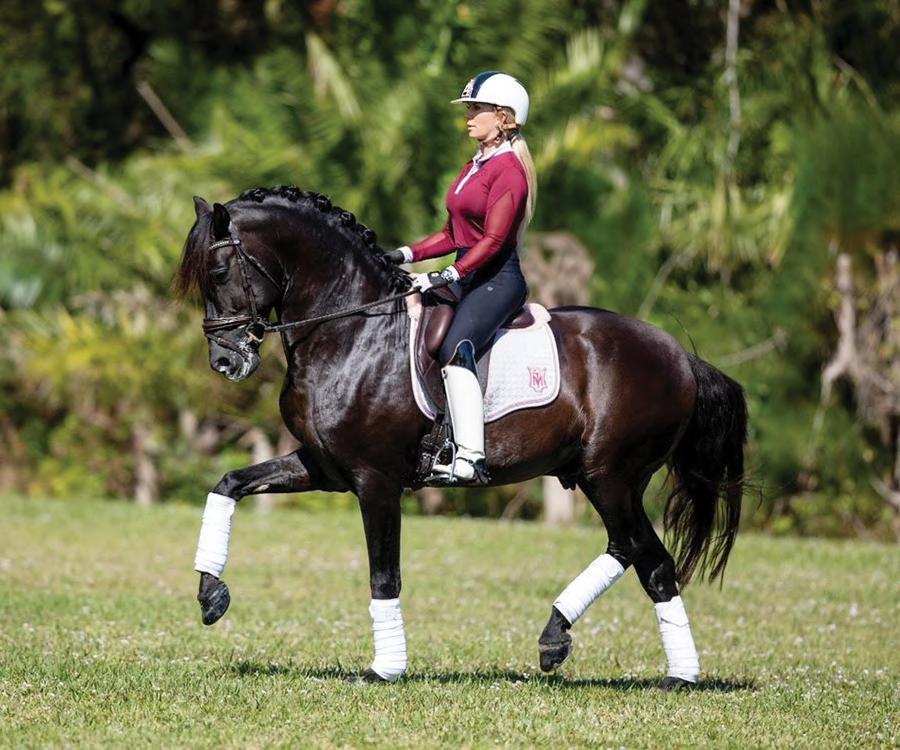
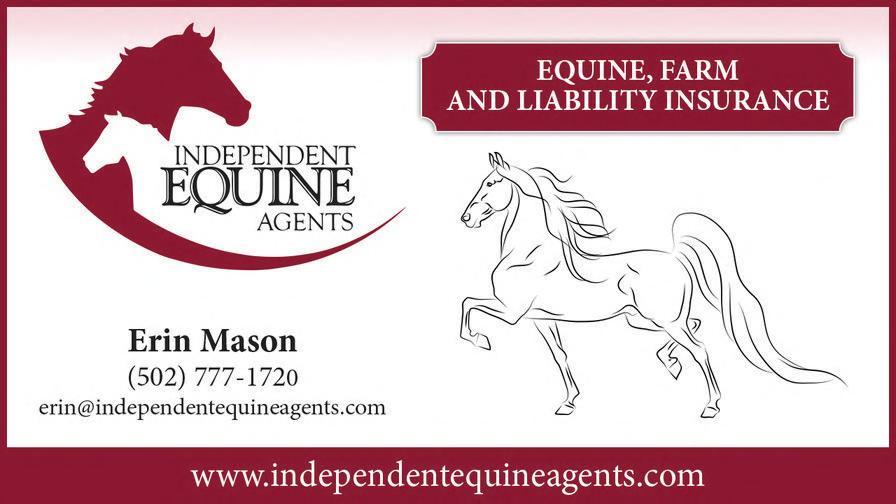
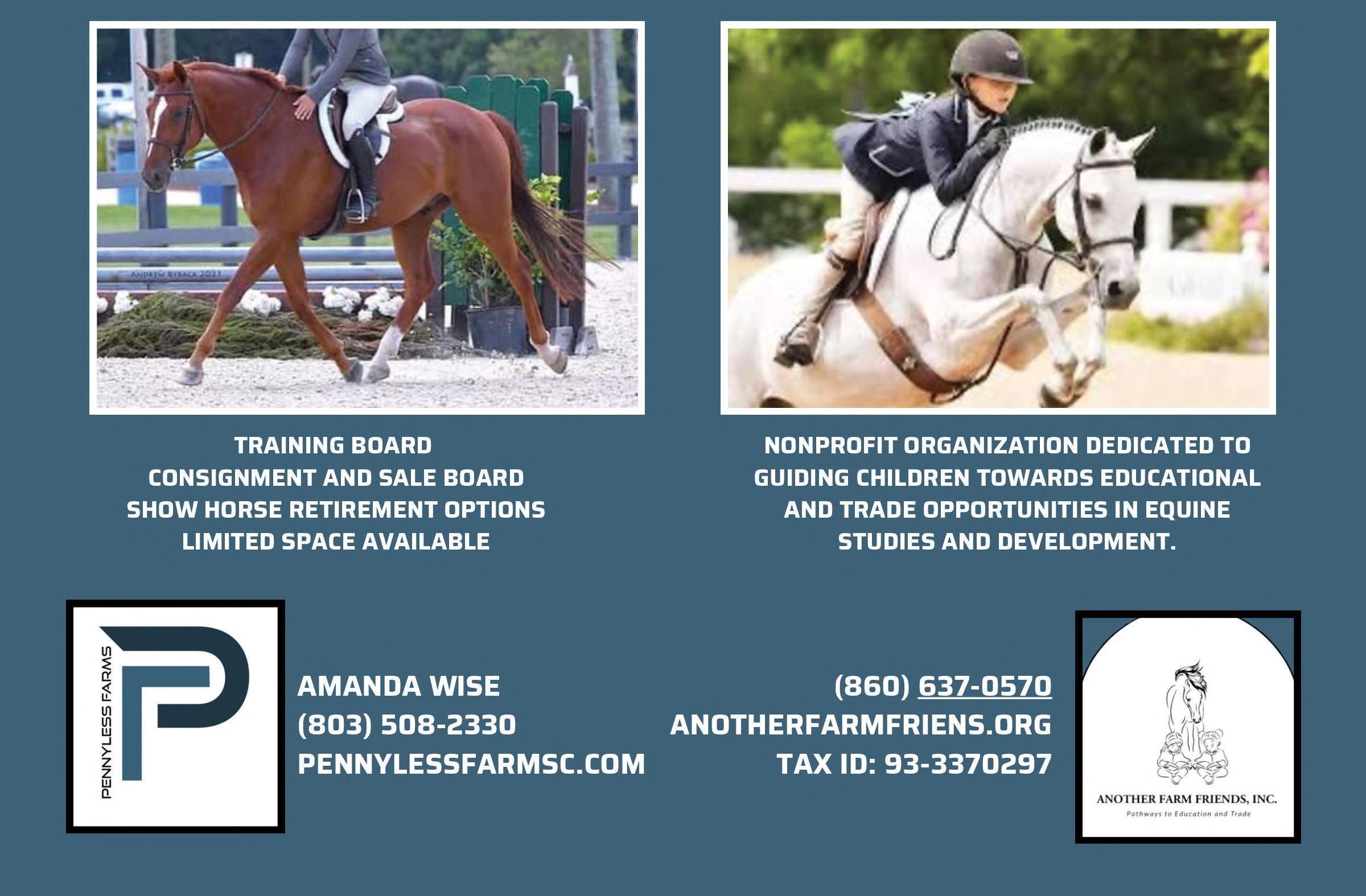





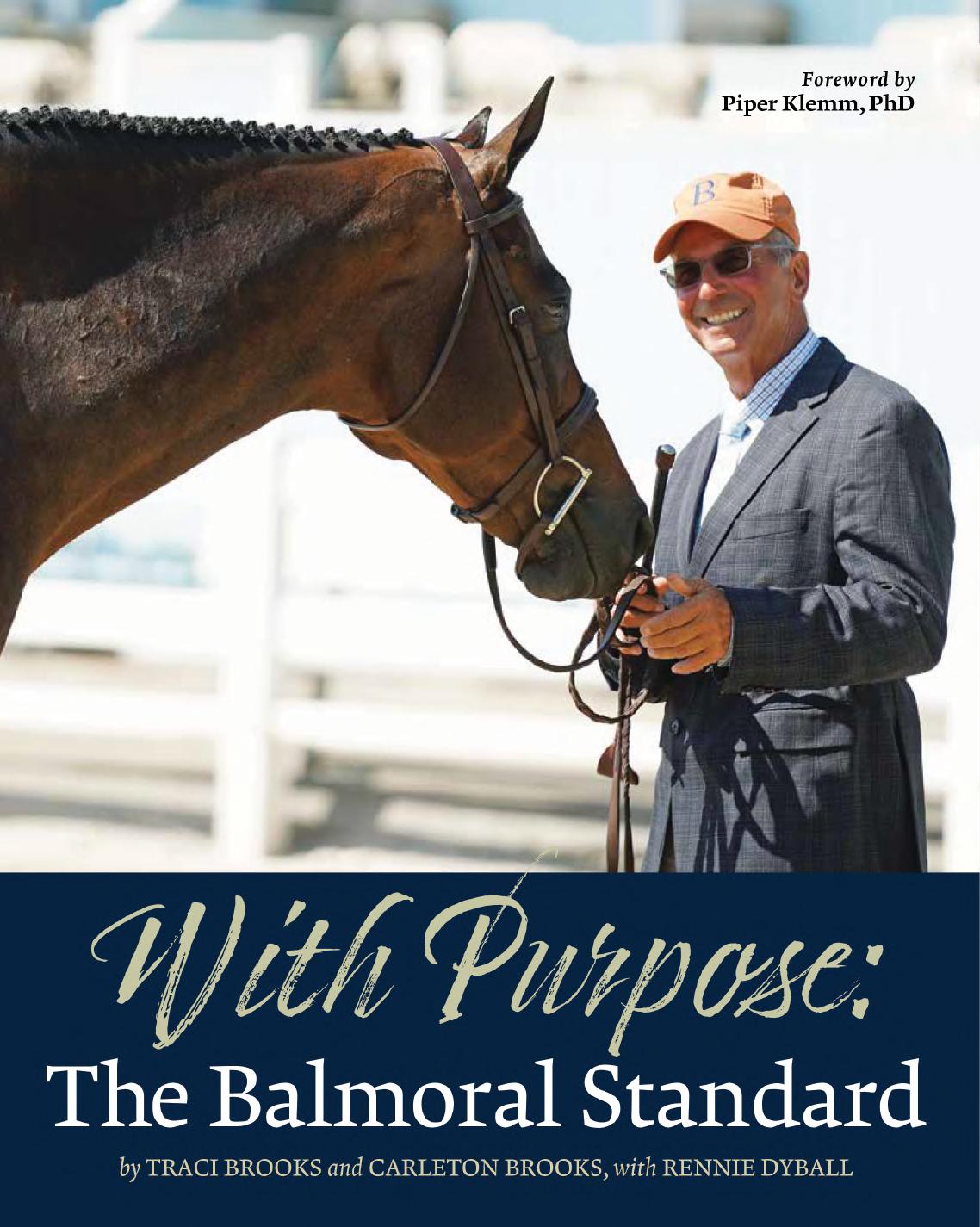

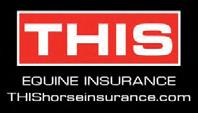
—Susie Schoellkopf, USEF “R” judge
WORDS & PHOTOS: TONYA JOHNSTON, MA
THERE YOU ARE, at the bottom of the list to come back for round two, or last to go for the work-off. What does that mean? In a millisecond it registers in your mind (and the butterflies start racing in your stomach): you’re on top. Fantastic! Exactly where you wanted to be, right? Or is it?
Being in the top spot is a challenge unto itself for a lot of riders, but why? Isn’t it what you worked so hard to achieve? To be sure, coming back under pressure and nailing your round takes mental discipline, focus and strength. Here are some useful suggestions to help you succeed in those moments.
Once you realize you are sitting in the top spot, you may notice a compulsion to start thinking a lot. Making mental notes of what to do, what not to do, what to be careful of, awareness of what others are doing, worrying about the “what-ifs”—the list can be endless. Instead of giving in to this over-thinking, keep your thoughts simple and smart. For example, as you wait in the line-up for your work-off or test, simplify your priorities. Decide your first goal is to wake your horse up and go forward when they call your number for your turn, for example. You may even say, “Forward with purpose” to yourself to keep your mind quiet. Another example of keeping it simple would be to take one thing that you did
“It’s more difficult to stay on top than to get there.”
—MIA HAMM
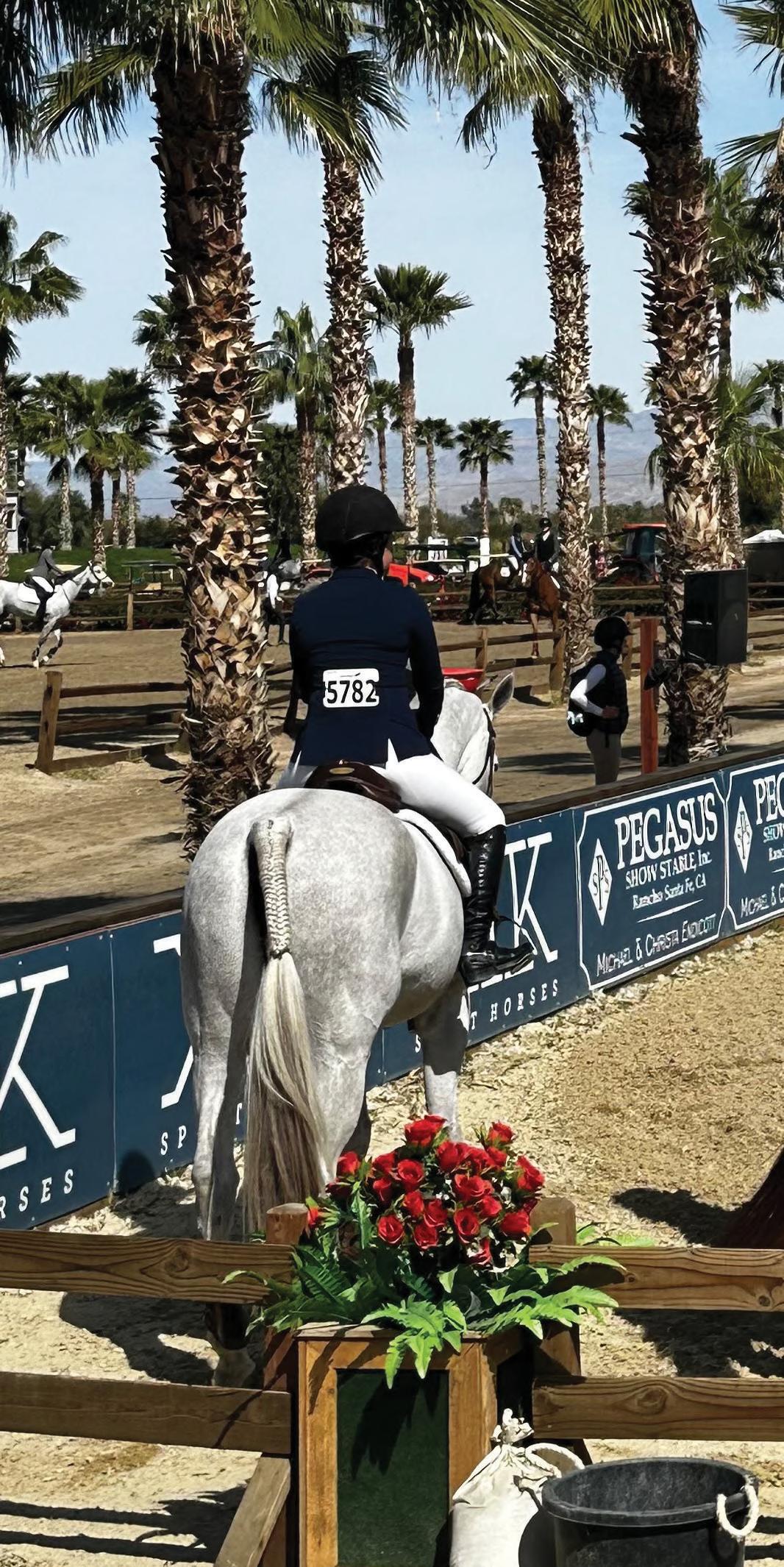
well in the first round of the derby and focus on how to integrate that into your handy round. So, let’s say your trainer gave you feedback that you did a great job of keeping your reins short and your horse’s balance up. After a brief time to reflect, you realize those two things would be great, clear-cut things to focus on in the handy round to keep you riding effectively.
STAY AWARE OF HOW YOU FEEL, THEN USE YOUR BREATH AND POSTURE TO STAY CONFIDENT
Be sure to stay aware of how you feel mentally and physically. Are you energized? Centered? Taking deep breaths? Strong? Hopefully the answer is yes! However, going in “on top” can hinder all these positive factors by putting you in a type of protection mode where you tend to adopt a defensive attitude. You want to “hold on” and keep what you have. When this happens, you go in trying to protect your lead, instead of simply going for it and riding your best. Feeling nervous about the outcome can manifest as tension in your muscles,
curling up or adopting a bit of the ‘fetal position’, excessive worry, self-criticism, and a striving for perfection that can result in doing nothing. (e.g. You may rationalize that if you take your leg off and make no decision—then you won’t have done anything wrong).
To help combat this effect, stay aware of how you feel. Take a couple of minutes to breathe while maintaining a special awareness on your posture. Inhale slowly as you lift your chin and open your chest. Exhale slowly through your mouth and lower your center of gravity so that you feel grounded and weighted at the bottom of your belly. As you wait your turn with these breaths, briefly look at a fixed point such as your horse’s braids or a fixed point ahead of you to direct your attention inwards. As you do this, consciously direct the energy you feel into physical strength, poise, and confidence.
Once you have registered where you are in the standings, be mindful. Take
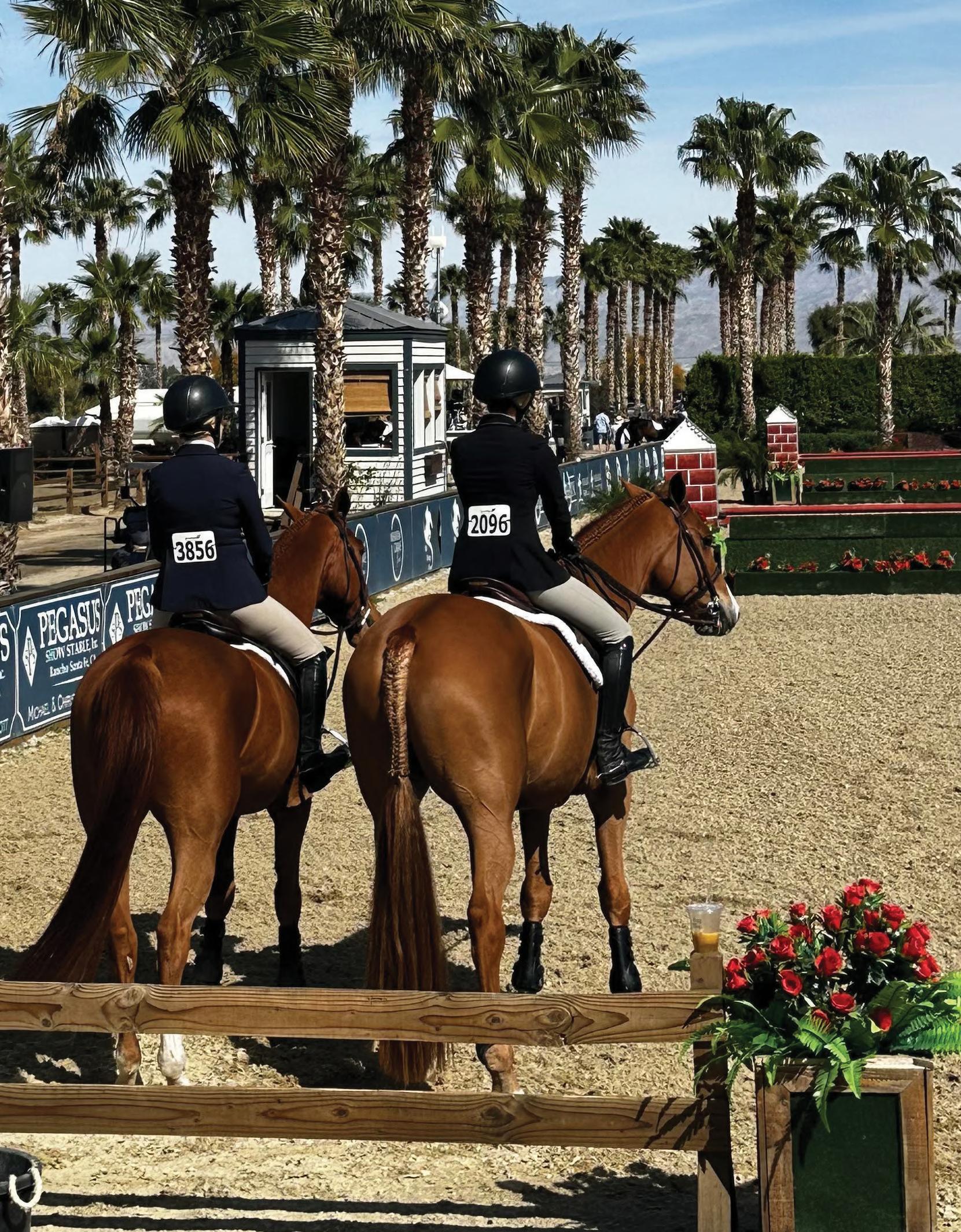
nothing for granted. Truly. Paying careful attention to details in your preparation routine is often what created the great first round ride to begin with, so stay on it. Remain vigilant and careful about your down time the night before, the morning of, and immediately before the next round.
Did you eat an early breakfast? Take your horse on a peaceful hand-walk? Use time alone in the tack room to listen to your playlist? Visualize your round in detail before you got on your horse? To be successful it comes down to the little things, both in and out of the ring. Being mindful to act on your pre-ride routine (making choices that are appropriate for the amount of time you have) will help get you into your groove and enable you to produce a terrific second round.
Sitting on top going into the last round of any final, classic or championship should never lull you into thinking
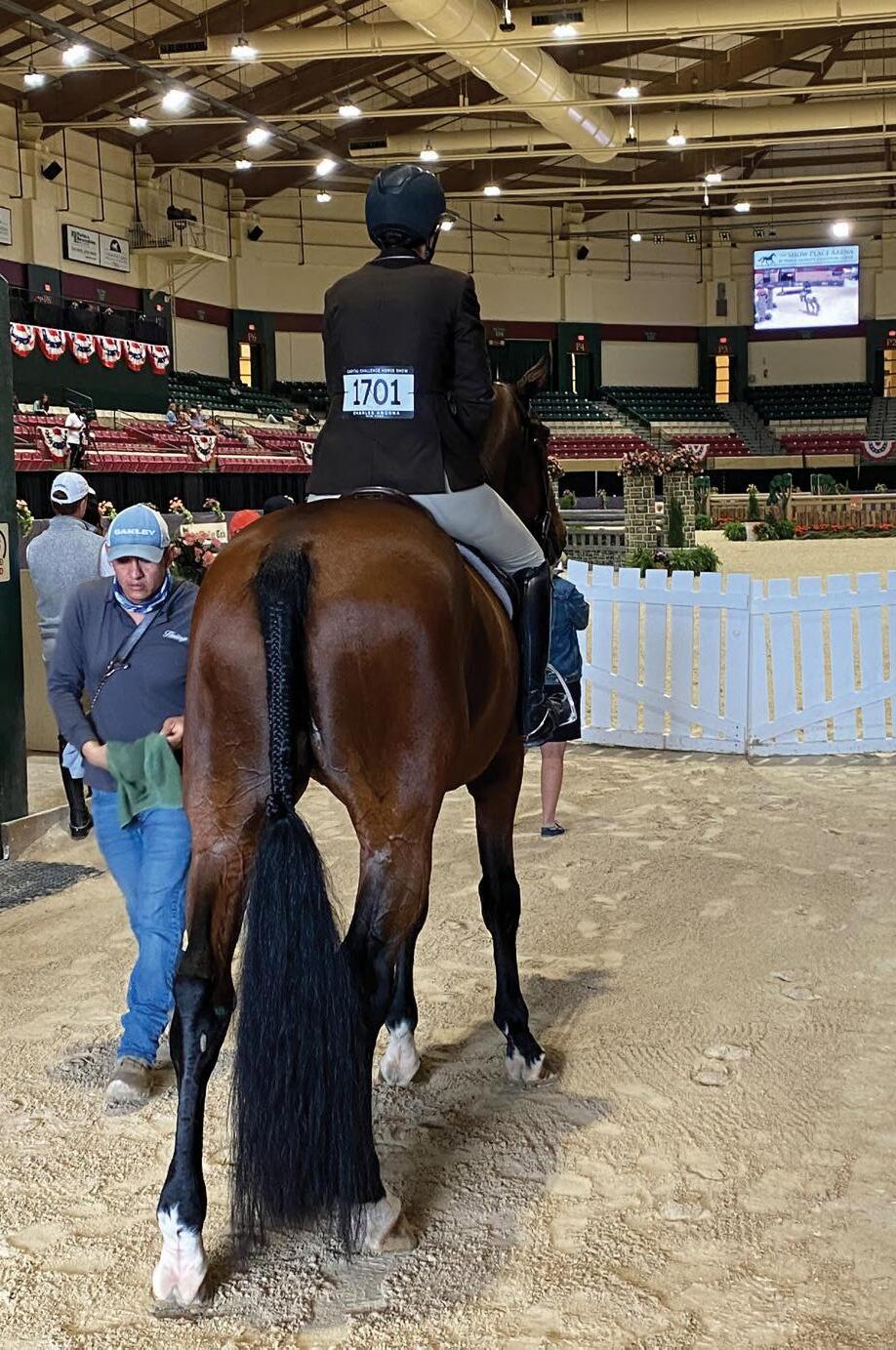
that you should ‘just do exactly what you did in the last round.’ This is a dangerous attitude because: 1) It is impossible, 2) it has you looking backwards instead of forwards, 3) it assumes you can’t possibly ride any better, 4) it does not contain any action or performance cues.
Let’s face it: in any performance there is always room for improvement. Each trip contains things that can be done better, opportunities to fine-tune details and smooth out the overall trip. Remember, it is the assertive ride in which you are not only looking to be effective and ride well, but also striving to improve yourself and your horse that will result in success. Going in hungry to show off what you do well and improve on any specific areas you identified in the last round sets you up to be pro-active and ride your best. Stay process-oriented and do not allow your position in the order to distract you from the very things that helped you get there in the first place. Dig in and believe in yourself—you can do it!
“It isn’t hard to be good from time to time in sports. What is tough is being good every day.”
—WILLIE MAYS
Tonya Johnston, MA, is an equestrian mental skills coach with over 30 years of experience helping riders of all levels be their best. She conducts “Mental Skills for Riders” clinics throughout the country or via Zoom and does phone consultations with individual clients. Her book “Inside Your Ride: Mental Skills for Being Happy and Successful with your Horse” is available on Amazon and Audible. Tonya has a monthly “Inside Your Ride” podcast that is a part of the Plaidcast. Connect with Tonya at 510.418.3664 or www.TonyaJohnston.com.
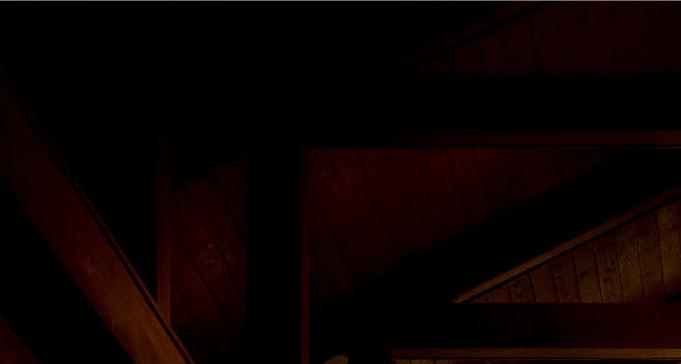
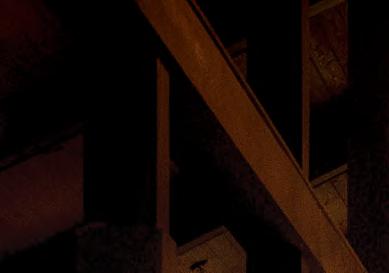
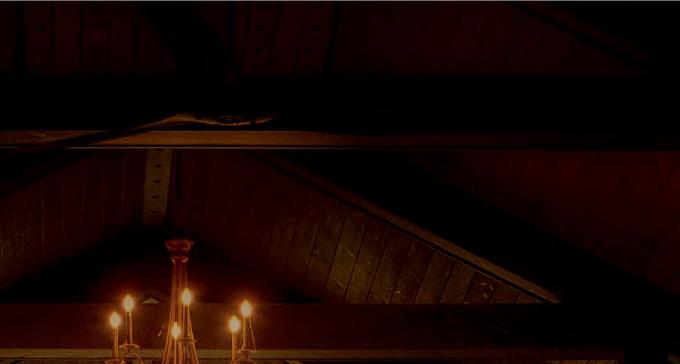



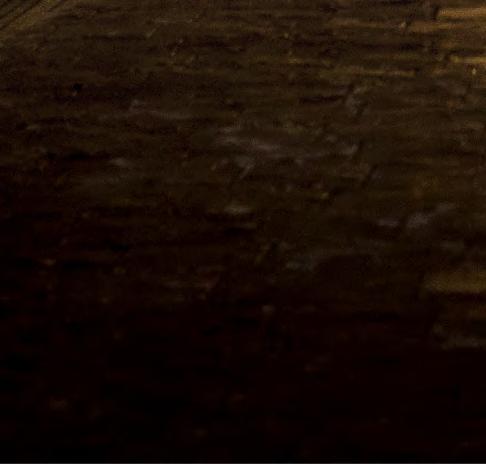
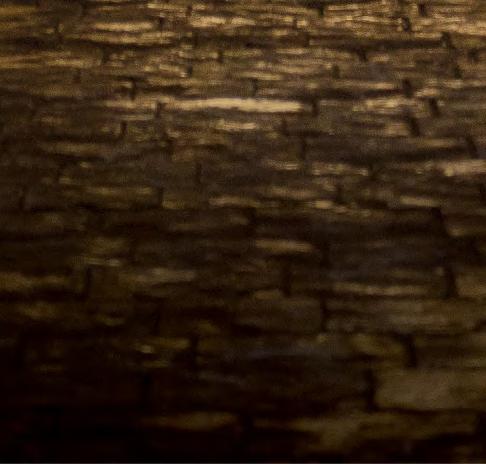


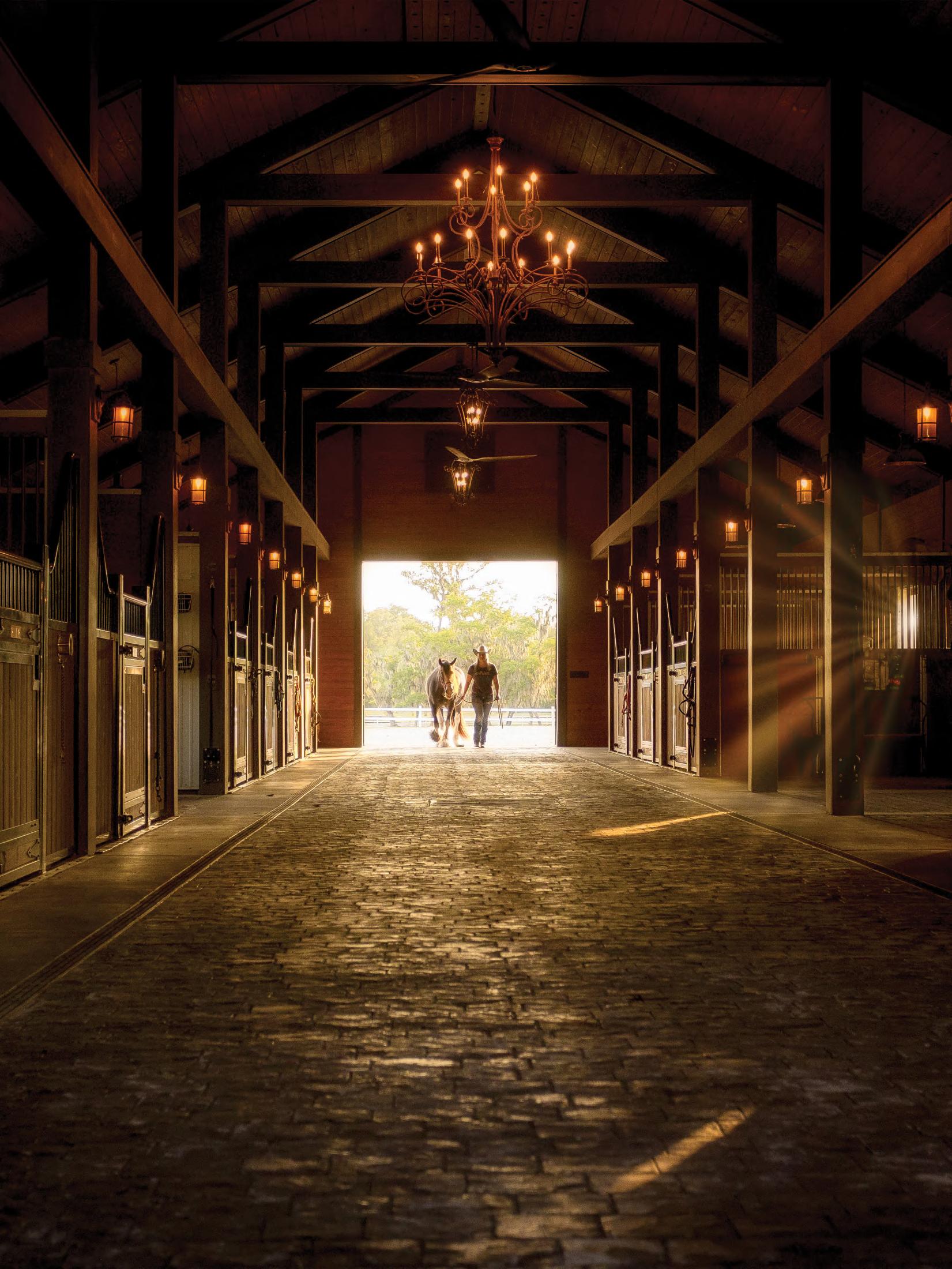

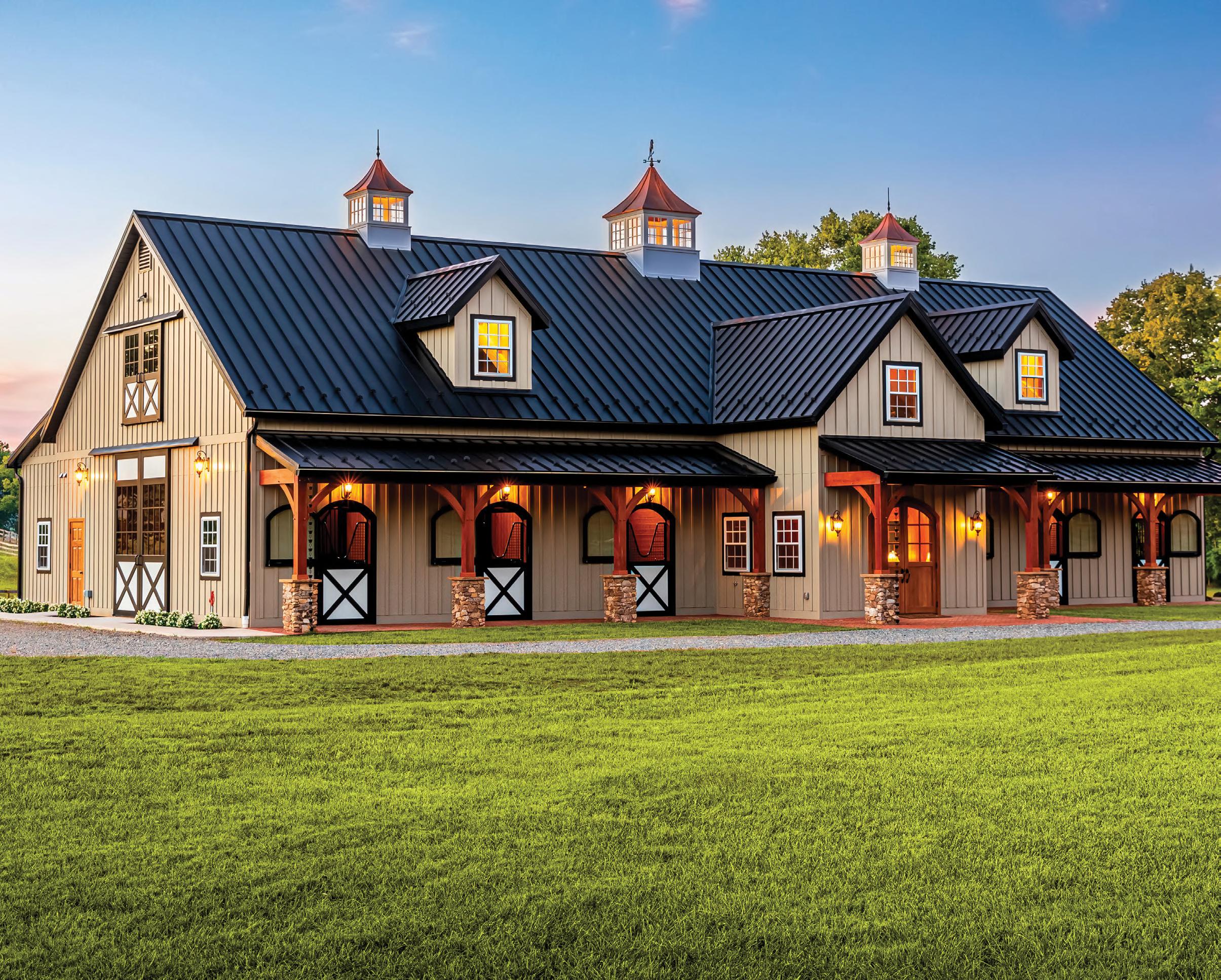



BREEDING CHAMPIONS: Nurturing Young Horses and Ponies. With so many looking more into American breeding, Missy Jo Hollingsworth stands out as a visionary trainer and breeder who sees horse development as an art form that extends far beyond winning ribbons. Managing an incredible scale of large farms in both Kentucky and Florida, Hollingsworth has created a comprehensive system breeding both ponies and horses on US soil over decades that prioritizes horse welfare, genetics, and methodical training.
At the heart of her philosophy is a deep respect for equine genetics and early development. “Genetics is everything,” Hollingsworth explains. “My father always said it did not matter what you drove up to the horse show. It matters what got off the trailer.” Focusing on quality guides her breeding strategy, where she carefully selects the best genetic lines and ensures that only the healthiest, most sound, and most trainable horses are bred.
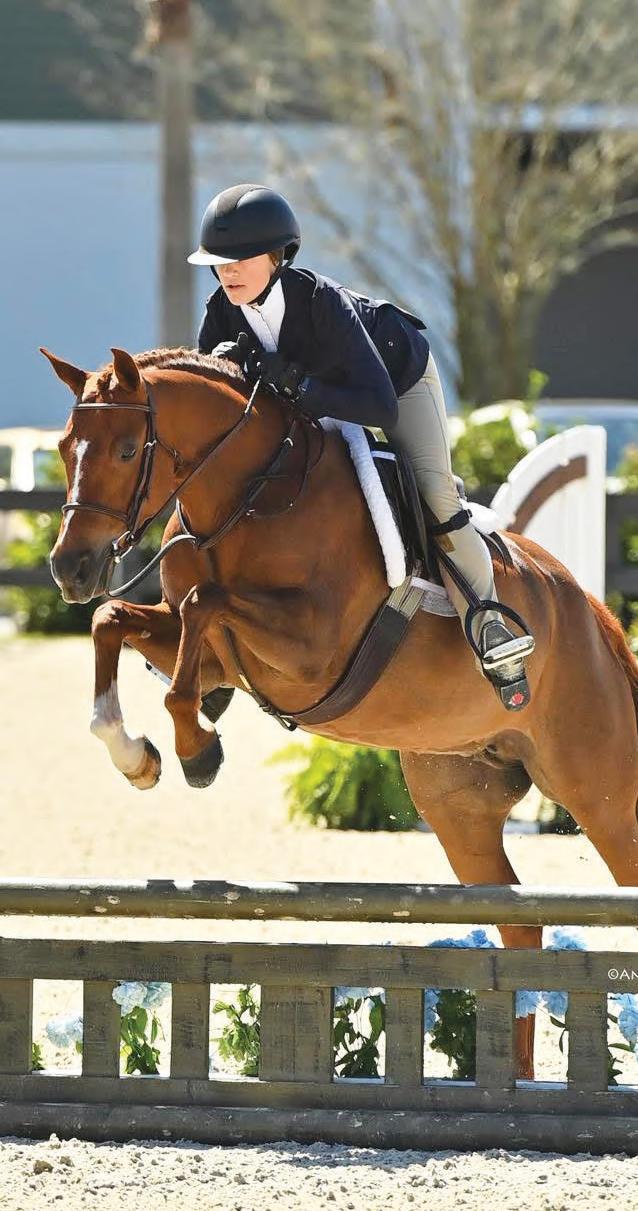
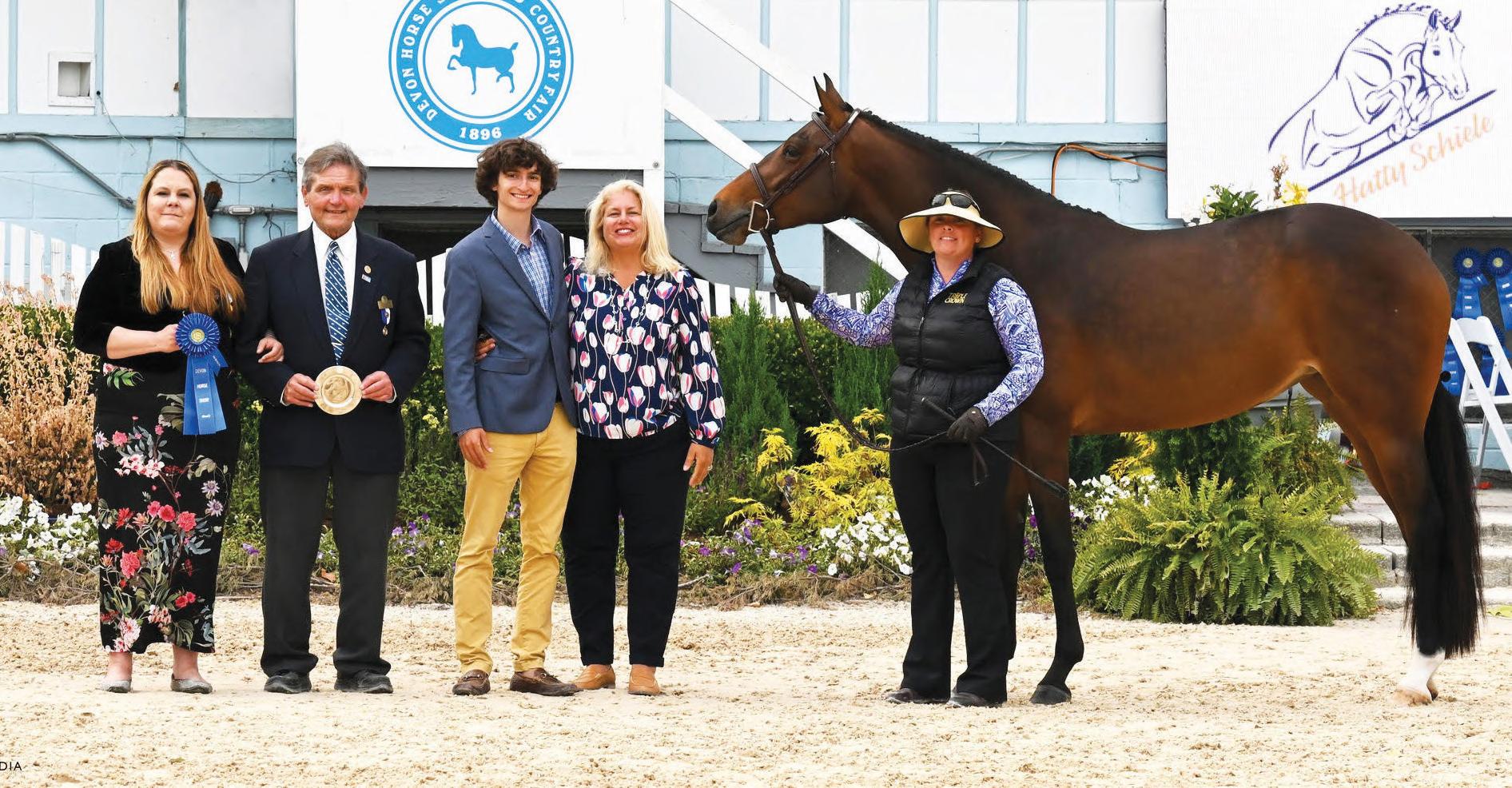

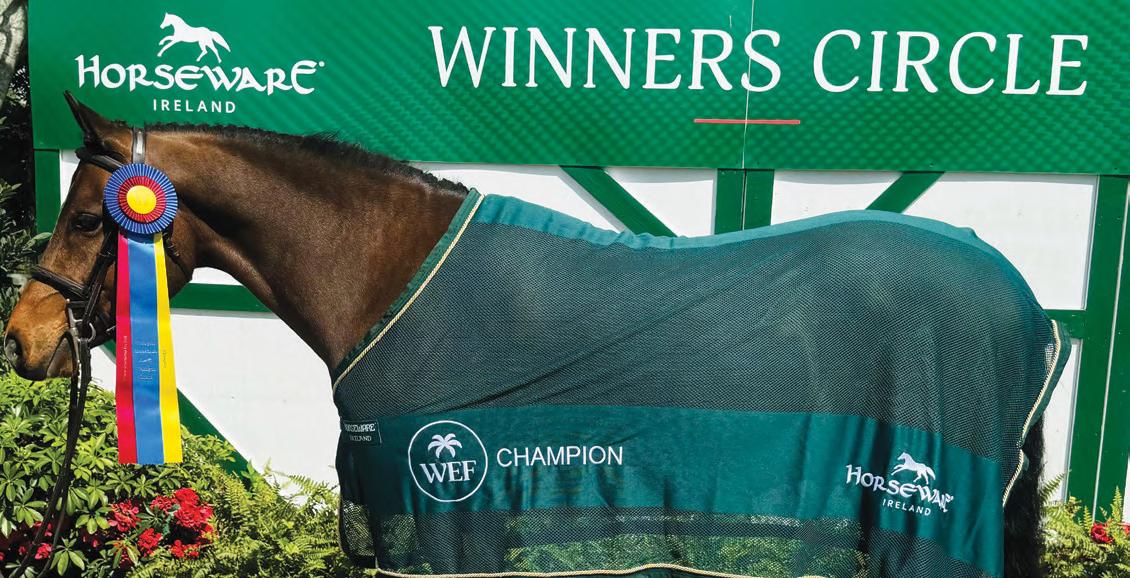
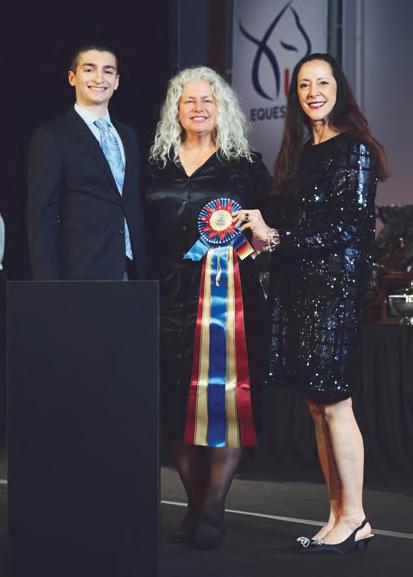

Pascaline, raised at SaddleLake. Winner at Devon and Sallie B Wheeler Hunter Breeding National Championship with handler Emily Anne Belin-McDonnell (top)
Royal Mint Julep bred, owned and raised at Saddle Lake (bottom left)
Royal Monarch bred at SaddleLake, now owned by InGate Farm and Magic Hill Farms. Holds many tri colors in Pony Breeding (left middle)
Missy Jo (middle) and son Preston Hollingsworth (left right)
Hunterville SL bred at SaddleLake. Shown at the Sallie B. Wheeler Hunter Breeding National Championship by handler Drew P Taylor (bottom right)
“Young Horse championships are important because it bridges young horses to the industry and helps manage the cost of participation.”
—MISSY JO
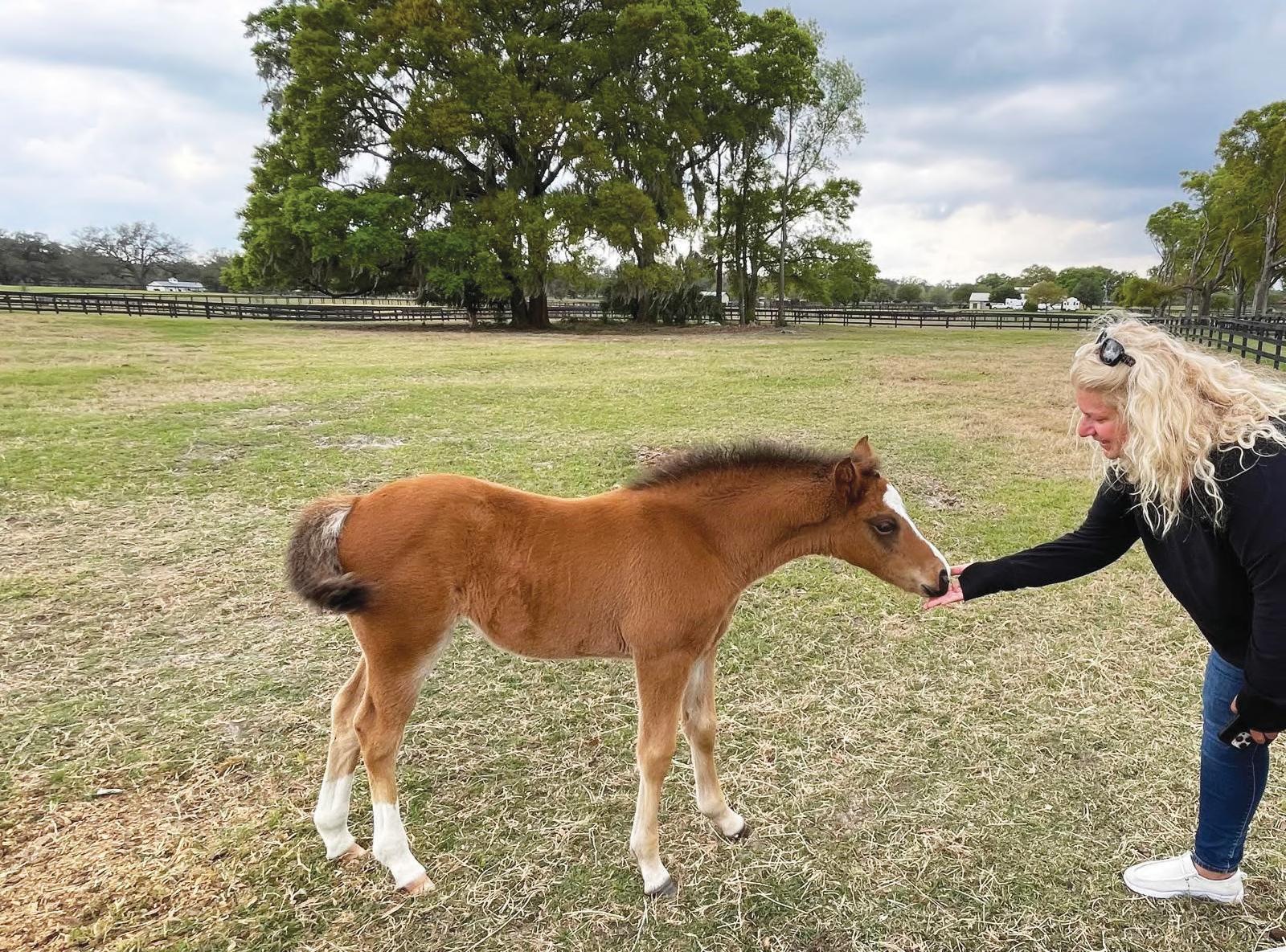
Hollingsworth’s approach to young horse training is equally meticulous. Unlike many modern training facilities, she emphasizes natural environments and gradual skill-building. Horses are kept in age and size-appropriate herds, given ample pasture time, and introduced to handling and riding with remarkable patience from a dedicated staff. Young horses are not rushed; instead, they are allowed to develop naturally, with training protocols by long-term and consistent professionals who respect their physical and mental maturity.
Perhaps most importantly, Hollingsworth understands the critical balance between hard work and rest—both for horses and humans. She intentionally builds downtime into her training schedules, recognizing that mental and physical recovery is crucial
for long-term success.
By integrating sophisticated breeding practices, patient training techniques, and a holistic view of equine and human development, Hollingsworth is not just raising champions—she’s nurturing a new generation of compassionate, dedicated horsemen.
In the competitive world of equestrian sports, Hollingsworth stands out as a trainer who does more than just teach riding—she cultivates horsemen. From her teaching to having horses in all phases of their lives permeating barn culture through osmosis, every student is taught to treat every animal as an individual and how to grow partnerships in every phase
of a student and animal’s life.
Additionally, Hollingsworth uses her rich background spanning multiple equestrian disciplines, to develop a unique approach to training that focuses on building comprehensive skills and character.
Her commitment extends beyond horse training to developing young riders as horsepeople who hang out at the barn and expand their own independent feel and intuition. “The point for me is that we make horsemen,” Hollingsworth says. “You can’t make horsemen if you don’t understand how the horses think.” This philosophy has produced national championships over decades with many ponies she bred, raised, and trained, and with her former students going on to have successful careers both in the equestrian space and also in law, veterinary medicine, and public service.
“I don’t want kids here for entertainment. I want kids who want to be horsemen and to be a true horseperson, you have to manage your own emotions and might have to compartmentalize,” said Hollingsworth. This philosophy drives her training methodology, where she intentionally selects horses that challenge her students and help them grow. Rather than providing easy rides, she seeks out mounts that will appropriately push riders to develop problem-solving skills and adaptability.
Currently, Hollingsworth is also passionate about preserving and growing the equestrian industry and raising successful horses in the United States. She is particularly concerned about the future of youth-focused championships, such as the Young Pony Championships. In response to challenges within the industry, Hollingsworth and her colleagues are exploring innovative solutions to support young riders and young horses.
“Young Horse championships are important because it bridges young horses to the industry and helps manage the cost of participation,” she argues, highlighting the need to keep the sport accessible to average enthusiasts.
Beyond her professional achievements, Hollingsworth remains committed to her core mission: developing not just skilled riders, but comprehensive horsemen who can navigate challenges both in and out of the arena.
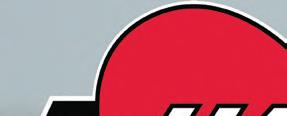
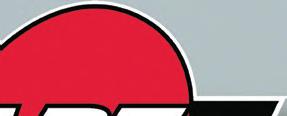
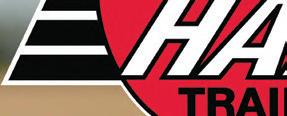
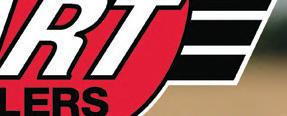
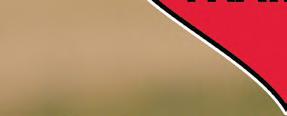

A trailer for now. Since 1968
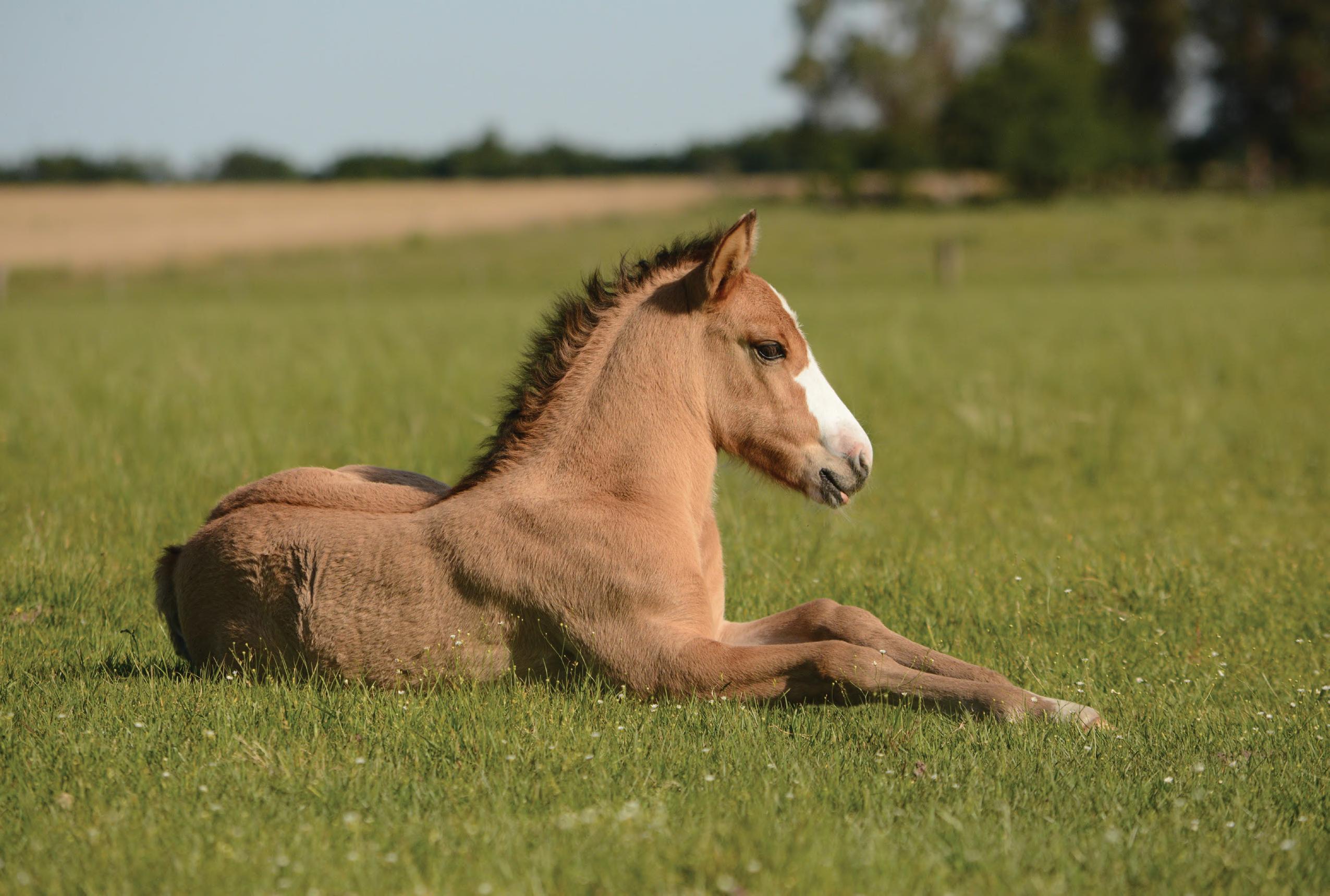
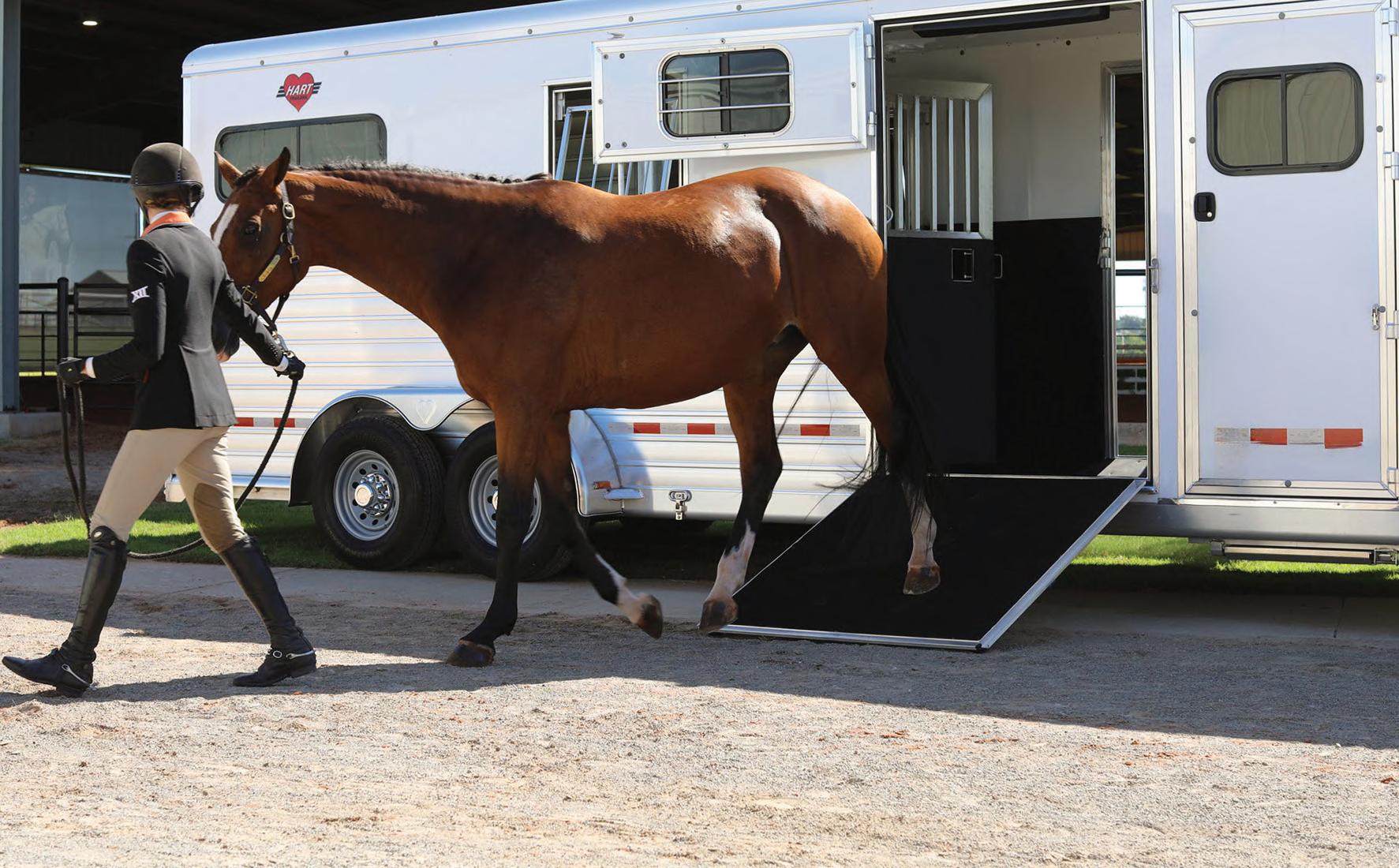

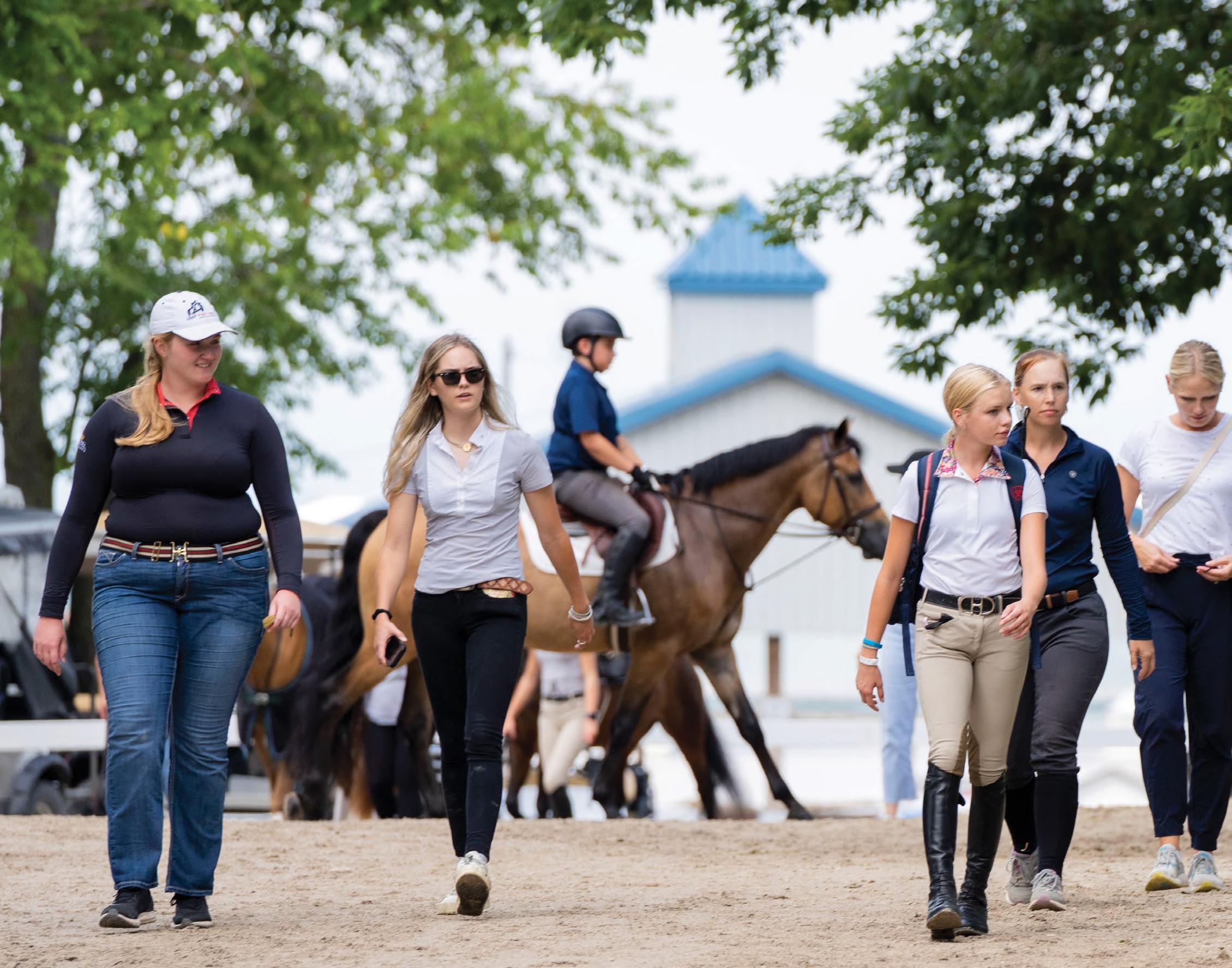
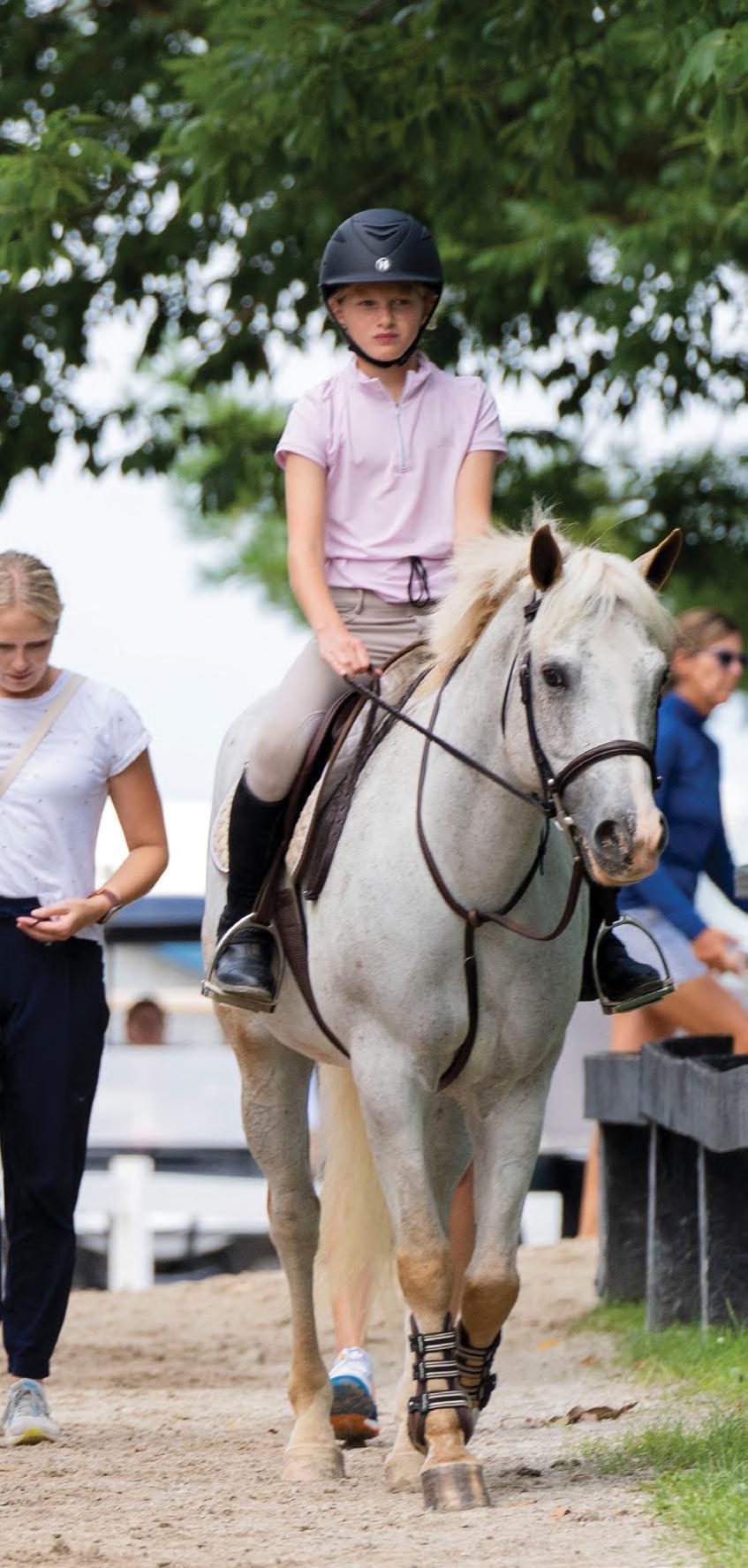
EXCITEMENT HAS been bred into the USHJA Pony Hunter Derby with the 2025 Rule Change to no longer allow Pony Hunter Derby points to count for the USEF Pony Hunter divisions. While the original intention of the creation of pony derbies was to be a standalone feature class, like the USHJA International Hunter Derby, however in practice, the point structure incentivized every show and every competitor to make it happen all the time.
“The Pony Derby program was started to add a special event, held over two rounds in a larger space (when practical) and to emulate the old style course of gallop and jump as well as showing the pony’s rideability. Unfortunately, in my opinion, this became a class used as a point grab and was often held in the same ring over the same jumps as the division. Now that the class no longer receives USEF HOTY points, I am hopeful that the classes will continue and actually get stronger. This program offers a National Final that is held over two beautiful courses with great prize money,” said veteran pony trainer Robin Greenwood.
This change was on the advice of the USHJA Pony Hunter Task Force in an effort to reach many new competitors and usher in a new generation of appreciation for the hunters and the poise and grit they require over challenging courses. Competing for a single title, all ponies-small, medium, and large-compete over their respective heights on a level playing field to determine the overall winner.
Along with the rule changes comes an excitement to open up the USHJA Pony Derby to many more competitors. For example, ponies of age or ability to compete more carefully or sparingly could come to the horse show for the two rounds only and be back home to their normal routine without the ask of completing an entire division on top of that. Top sport showing on a single day opens the sport up to more families and lessens the financial and time burden to be at a competition, saving on stabling off site and hotels for longer periods of time, increasing accessibility and availability.
“A derby pony is a very special animal, like the international derby horse. Those ponies don’t necessarily need to do the division-it is a great place for riders and ponies to rise to a different sort of challenge. Instead of only viewing the derby as more competition, it can also be a great place for teaching an old pony who doesn’t need to do a whole division. Seasoned ponies can show sparingly for special occasions and teach a young rider then go home. As an owner and trainer, I am so protective of our older ponies and many of them still love all the atmosphere of a big class,” said Emily Elek of Stonewall Ponies.
The championships, which are held on both coasts annually, can be qualified for by placing 1-12th in a USHJA Pony Hunter Derby throughout the qualifying period at horse shows including Channel II and standalone events approved for Special Competition. This year, the national champions will be crowned after strong competition held in conjunction with the Loudoun Benefit Horse Show (VA) in March and the Oaks Summer Tour I (CA).
“We have many spaces for people who can devote their lives to the circuit and I envision the future of the USHJA Pony Hunter Derby is a place where I hope we see more local riders, foxhunters, and pony clubbers with brave and athletic ponies learn the finesse of the hunters and utilize their already practiced bravery and gallops to elevate exciting and top notch competition,” said Greenwood.
Interested in running a special class or simply learning more about the USHJA Pony Hunter Derby? Visit www.ushja.org/competition/hunter/ pony-hunter-derby to read current specifications and reach out to USHJA with questions!
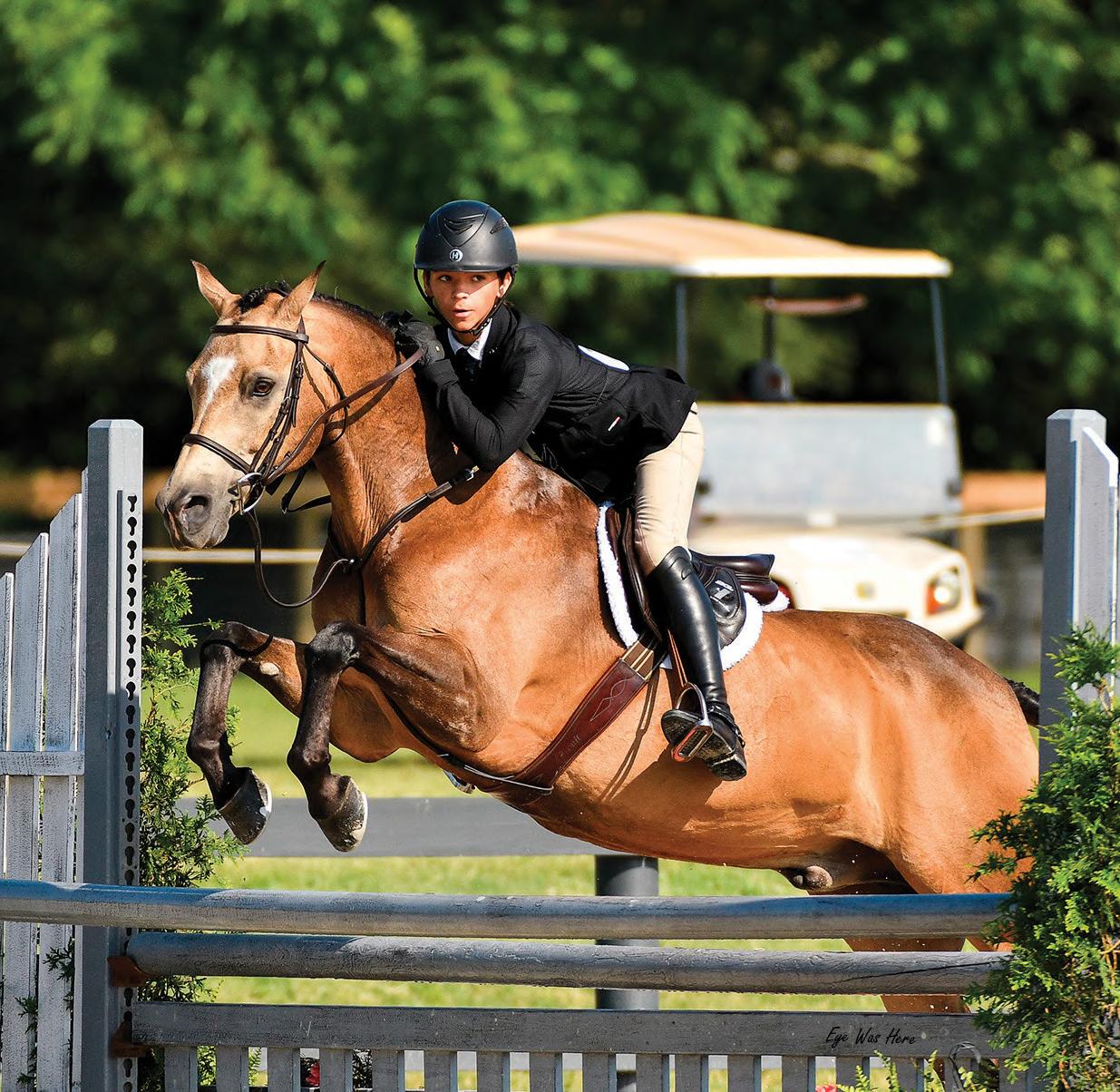
EAST: Loudoun Benefit
June 10-15, 2025
Grafton & Salem Farm Show Grounds, Upperville, VA

WEST: The Oaks Summer Tour 1 June 11-15, 2025
Rancho Mission Viejo Riding Park San Juan Capistrano, CA
USHJA Pony Hunter Derby Program offers:
• Year-end recognition for points earned
• Derby classes for all pony sizes
West Coast qualifying period: April 27, 2024- April 11, 2025
East Coast qualifying period: April 19, 2024-April 11, 2025
For full specifications, visit ushja.org/ponyhunterderby.
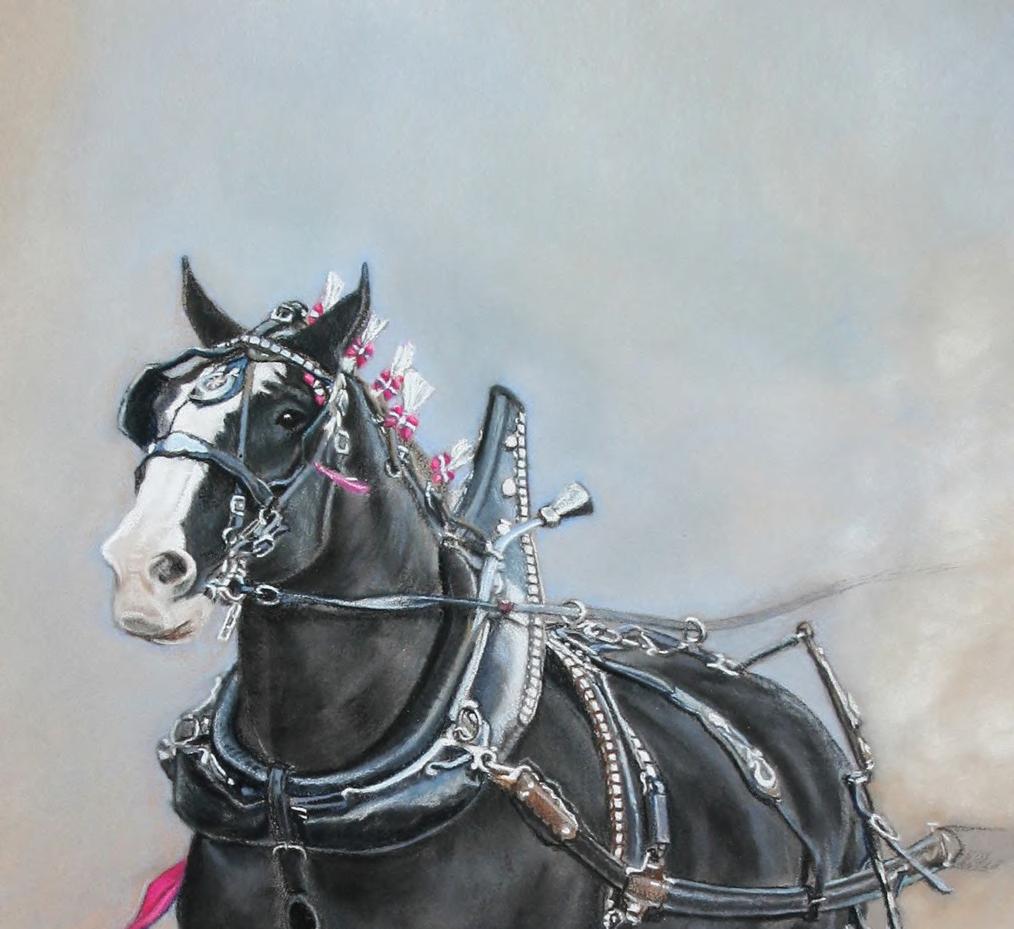

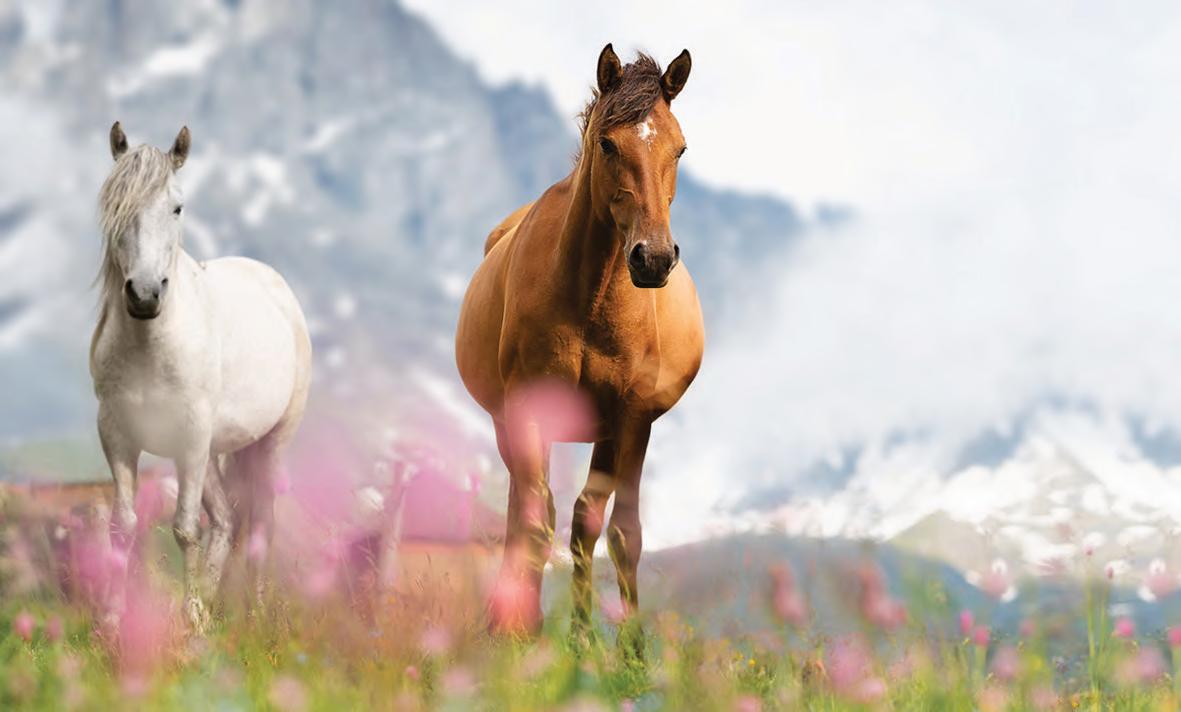
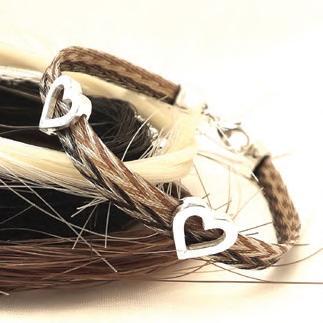
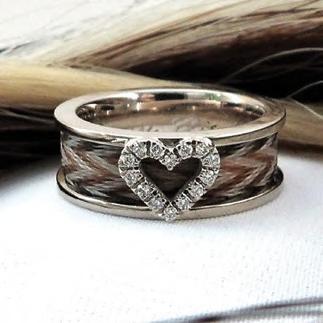
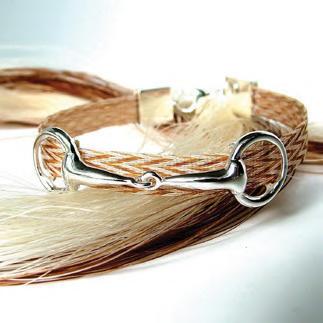
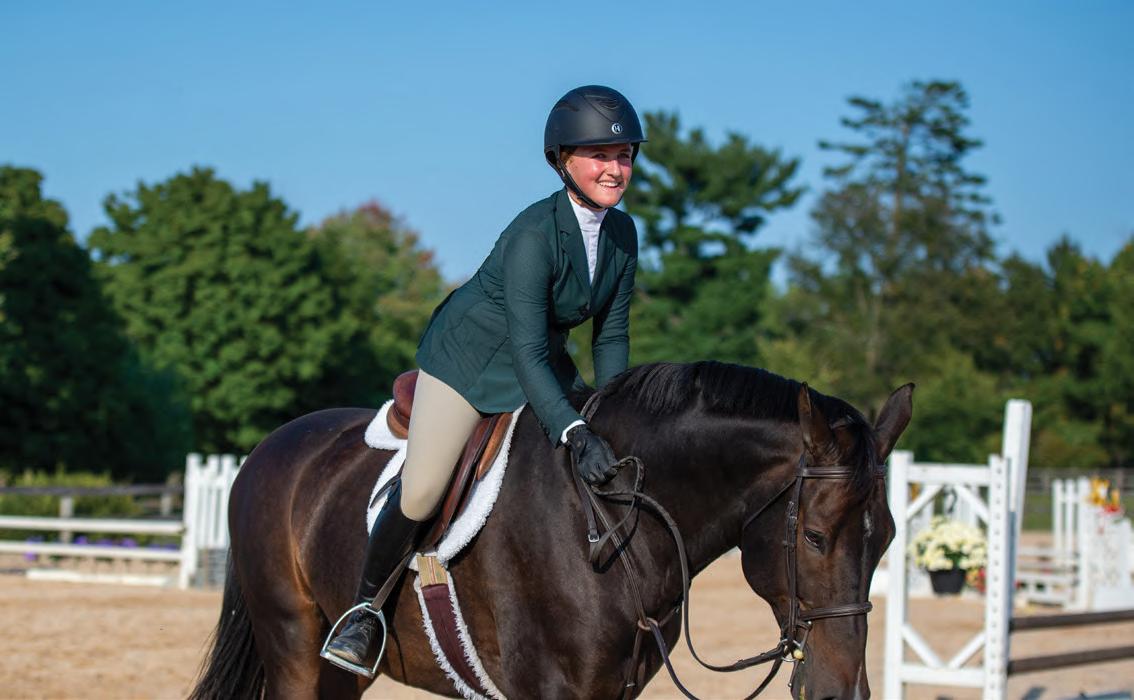
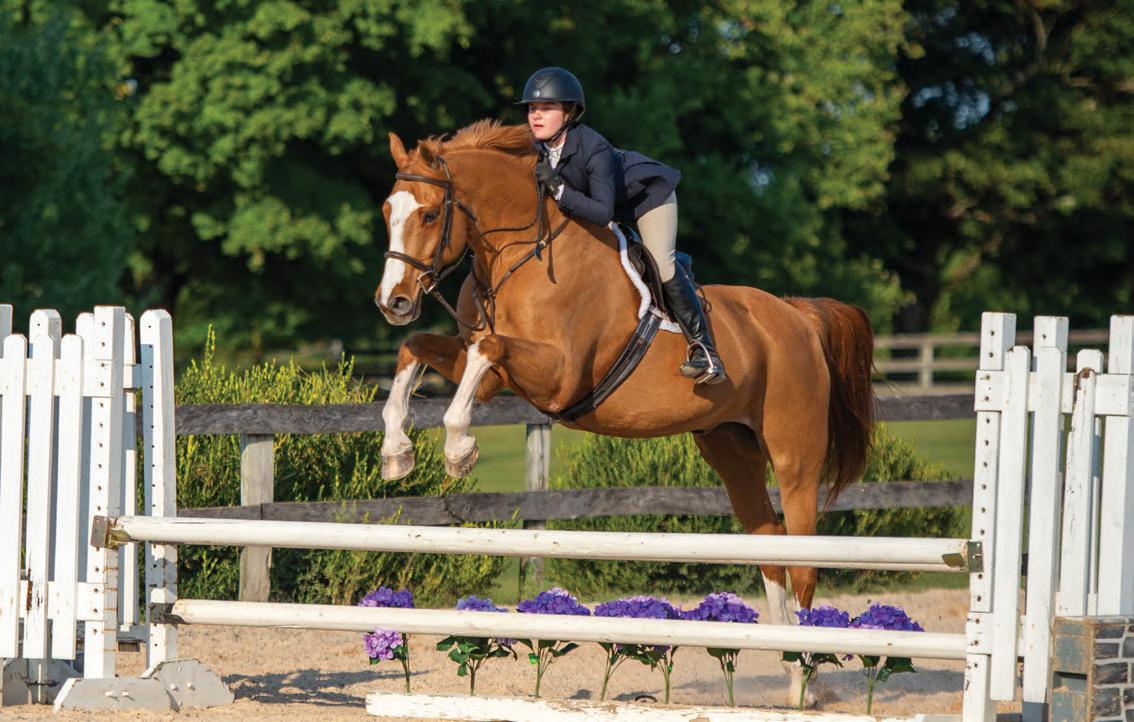
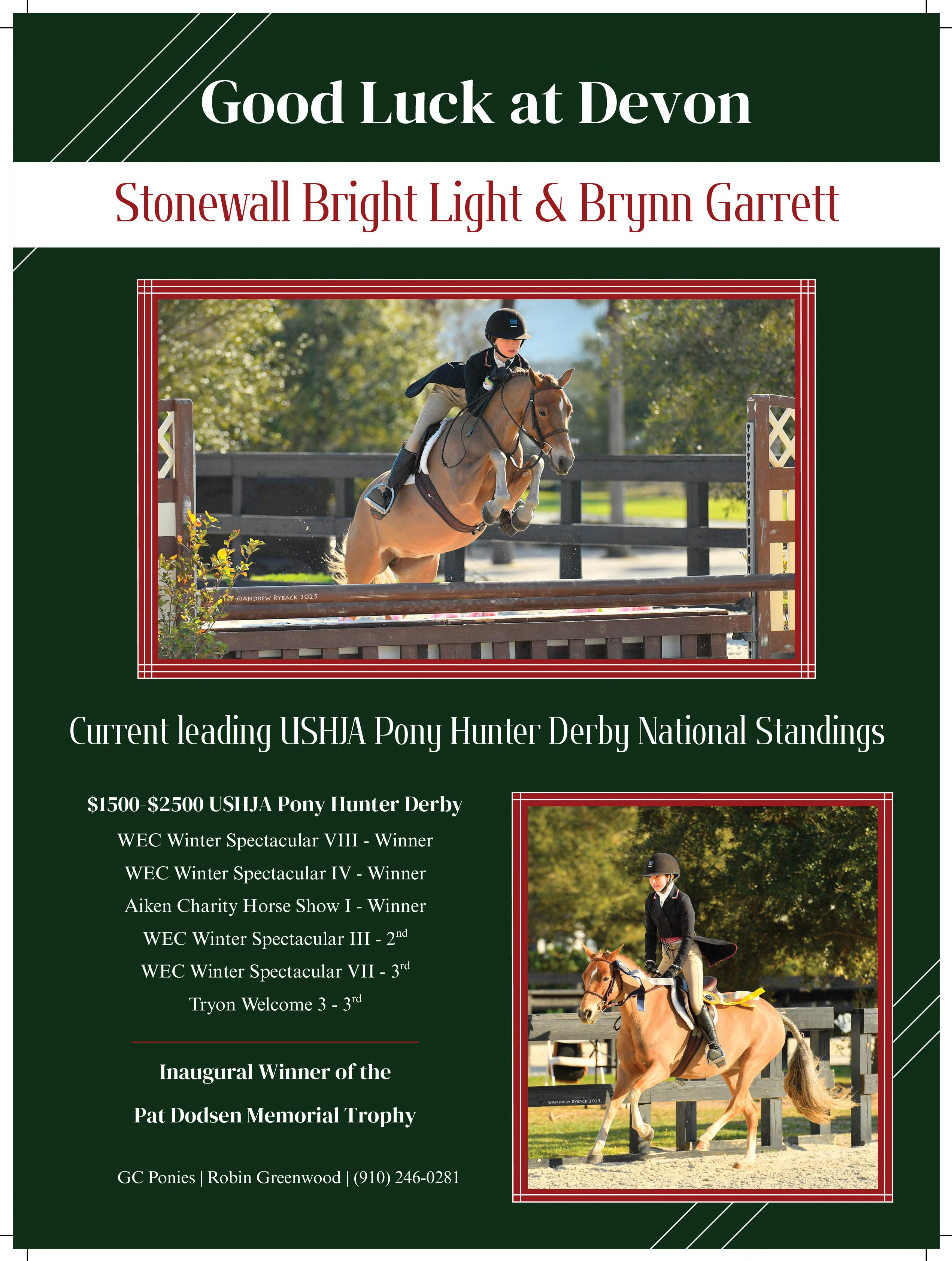

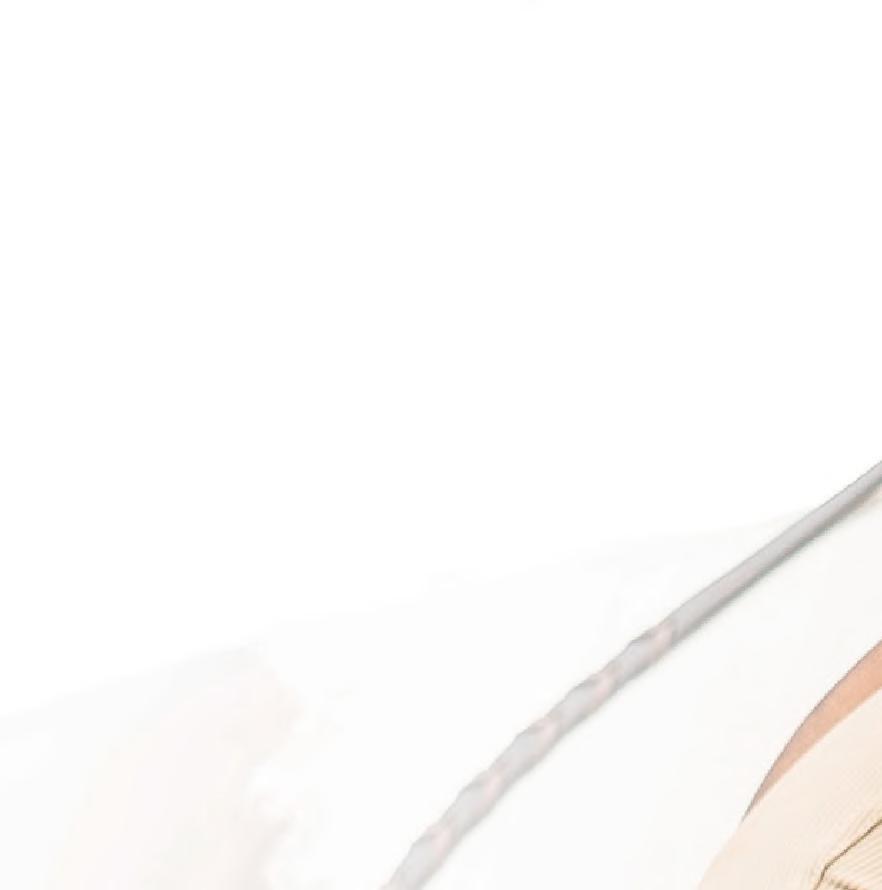
standlee.com








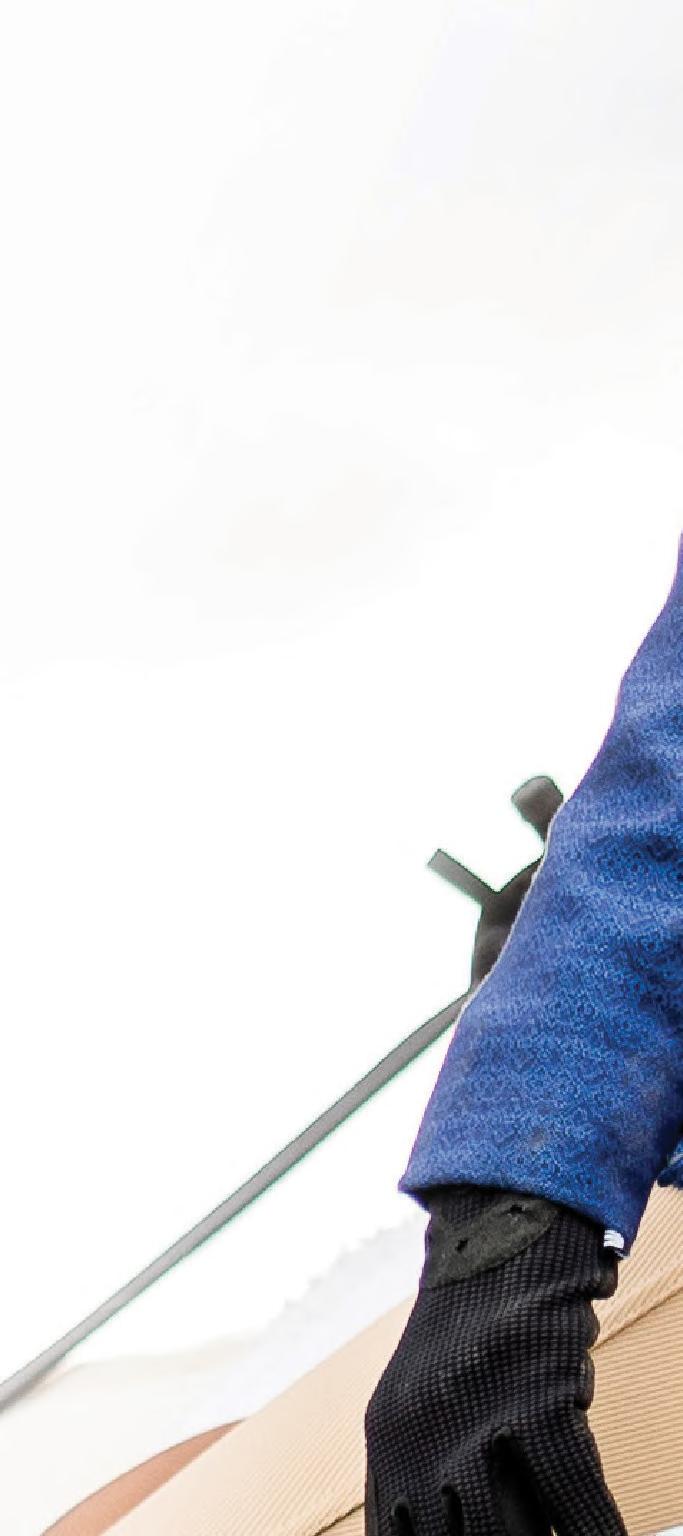
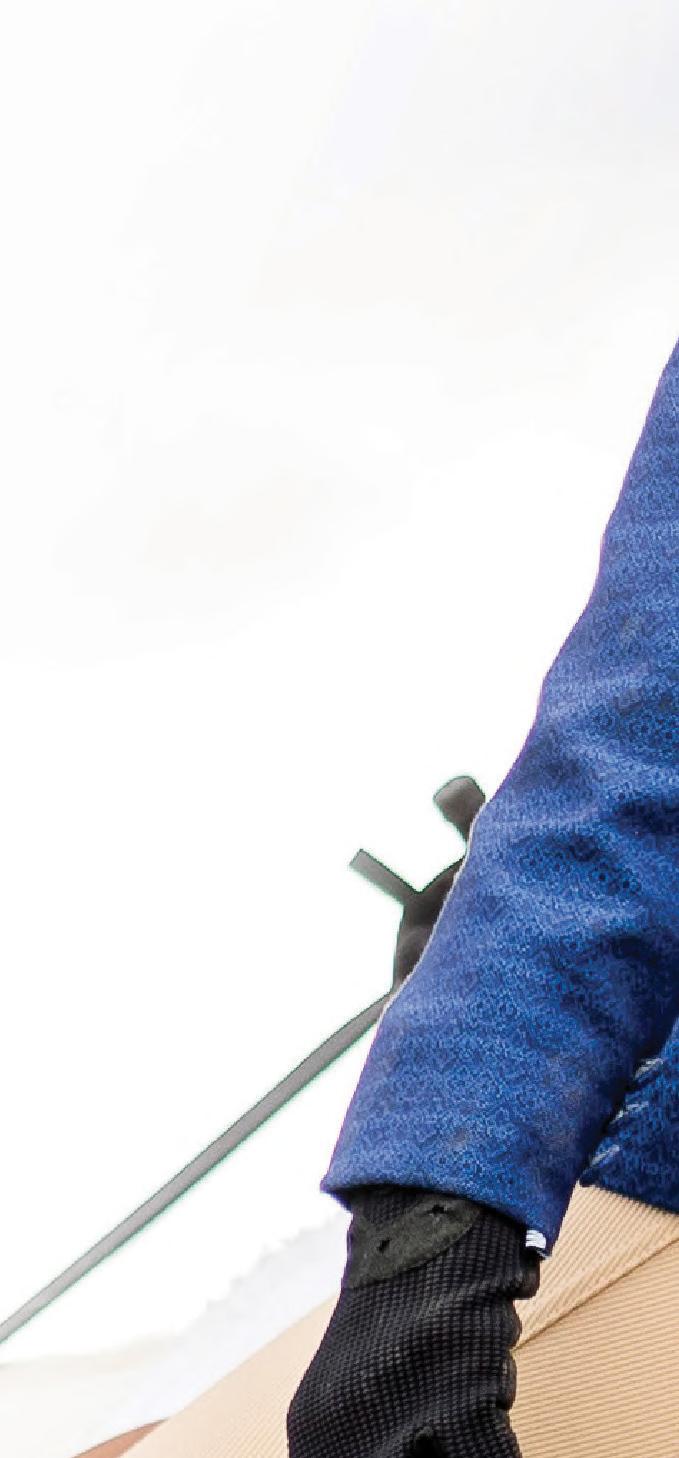
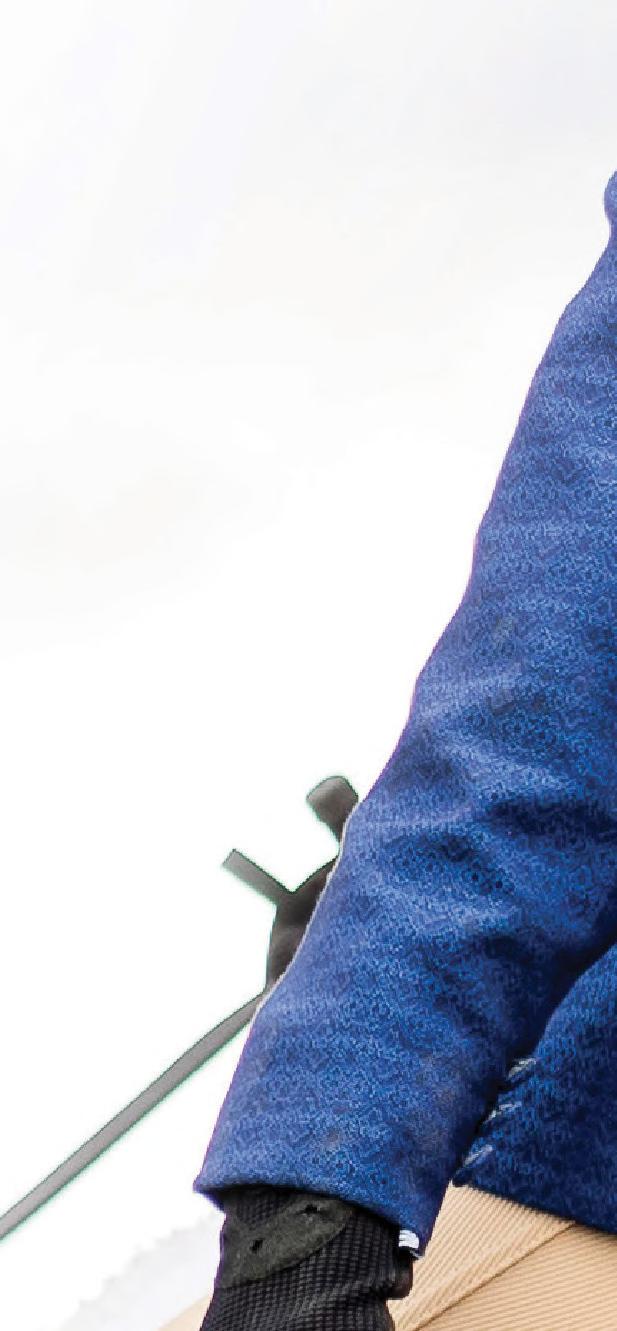
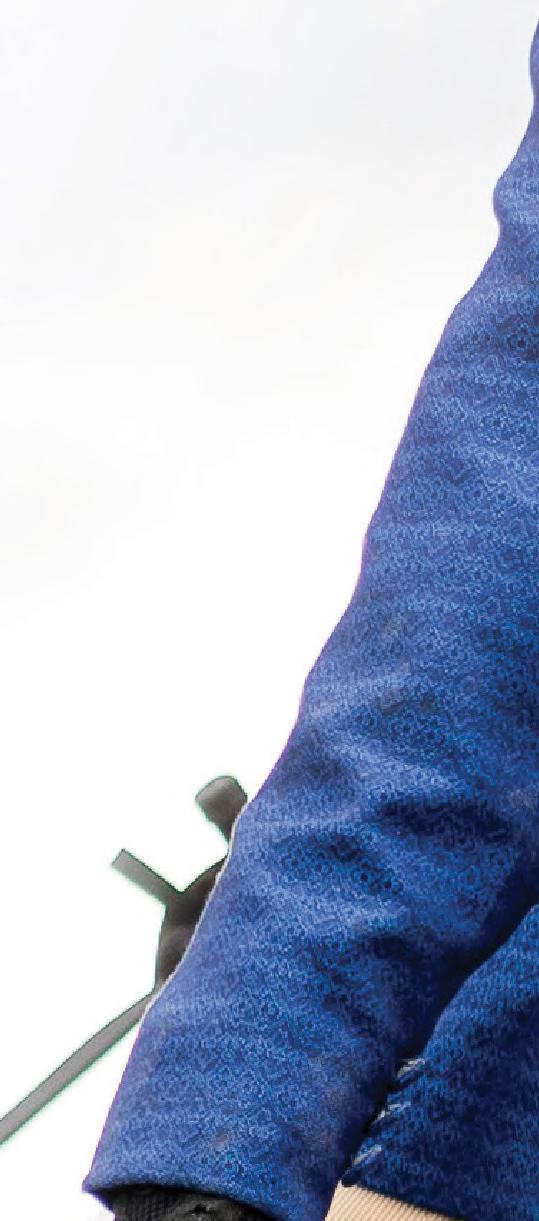
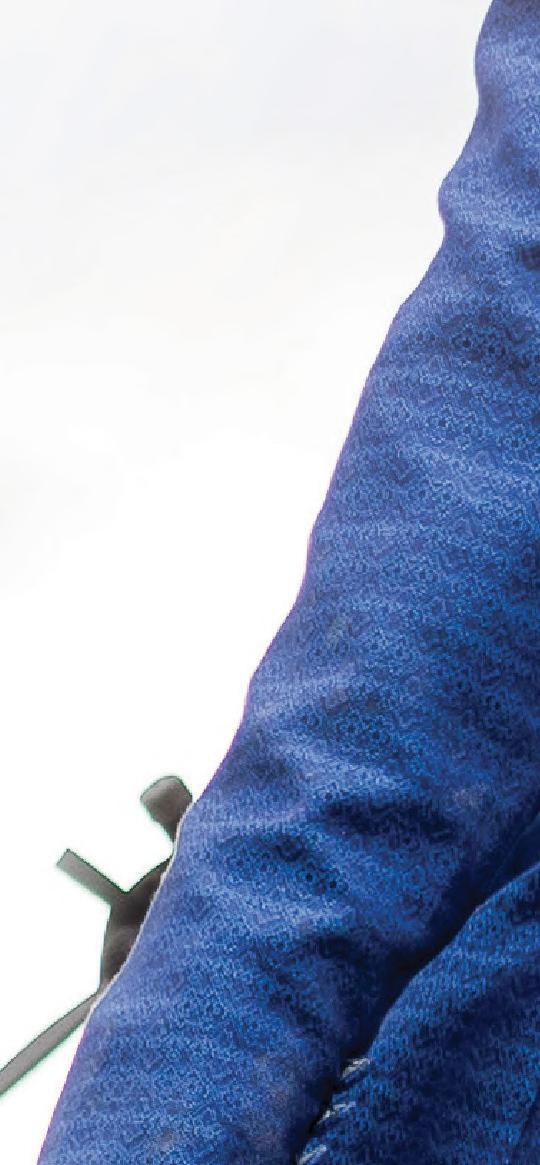


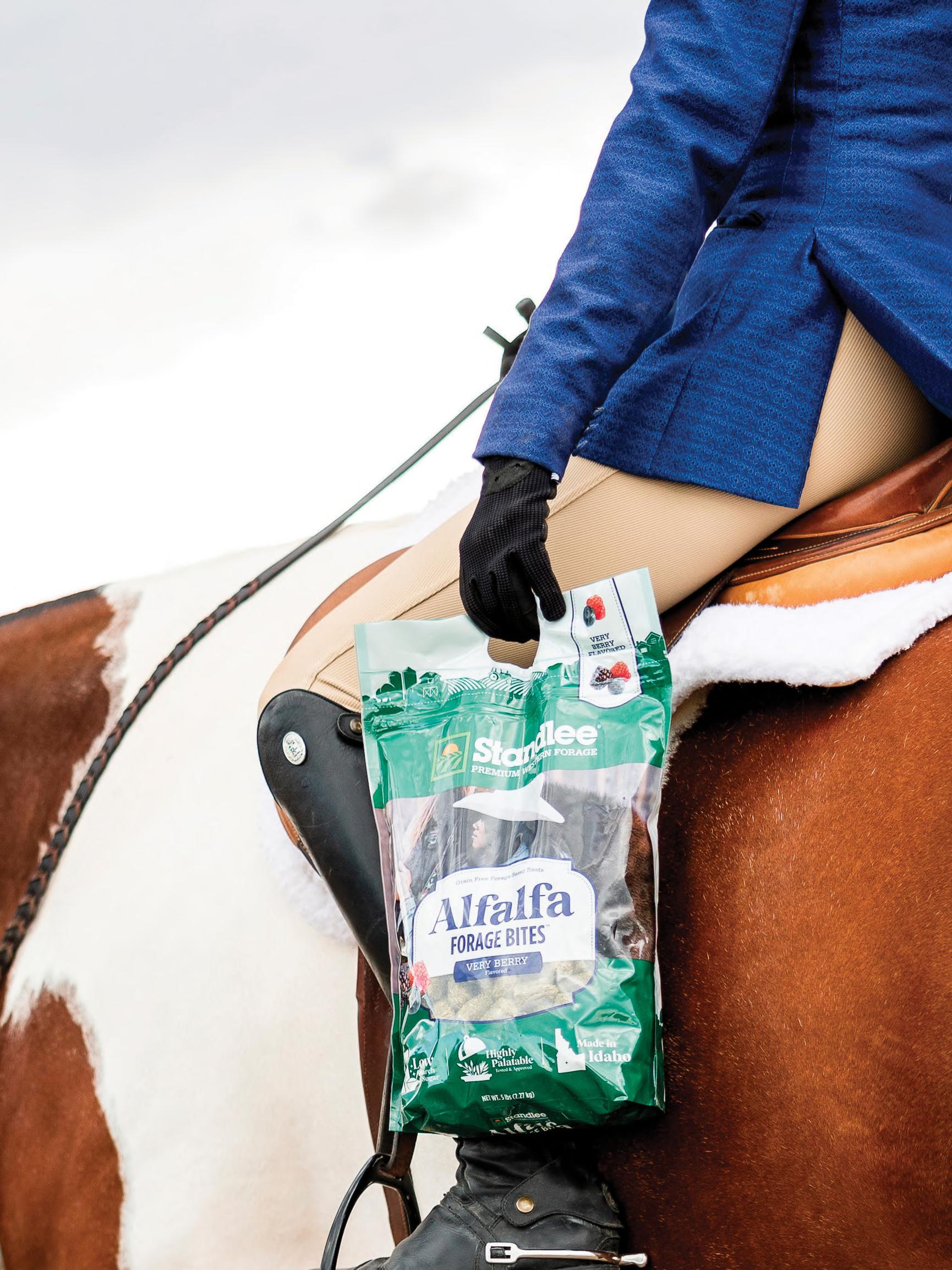








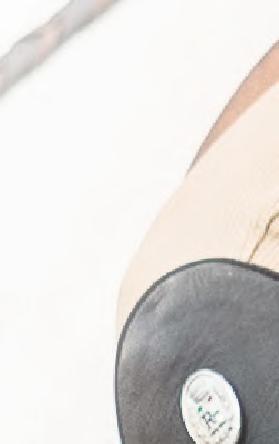
























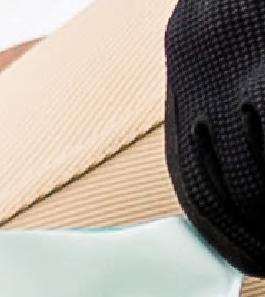

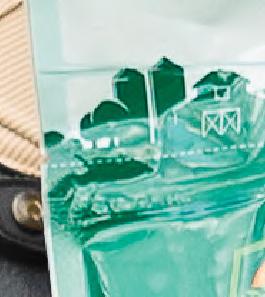
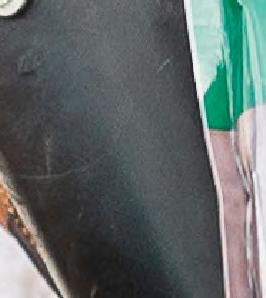





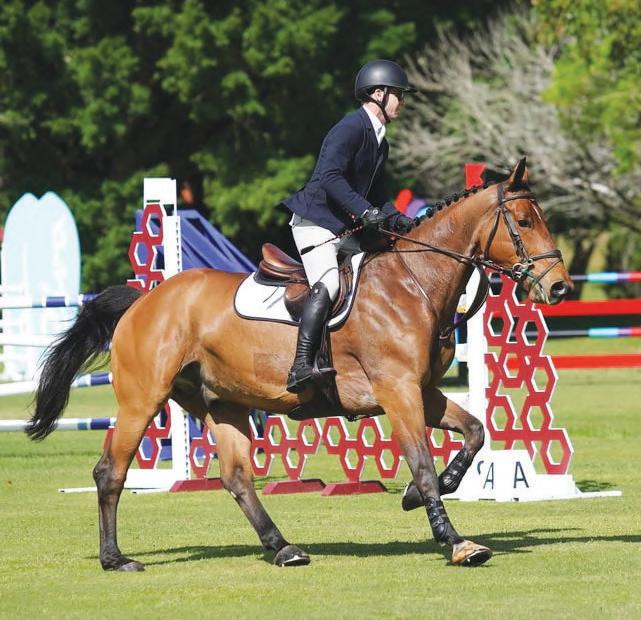
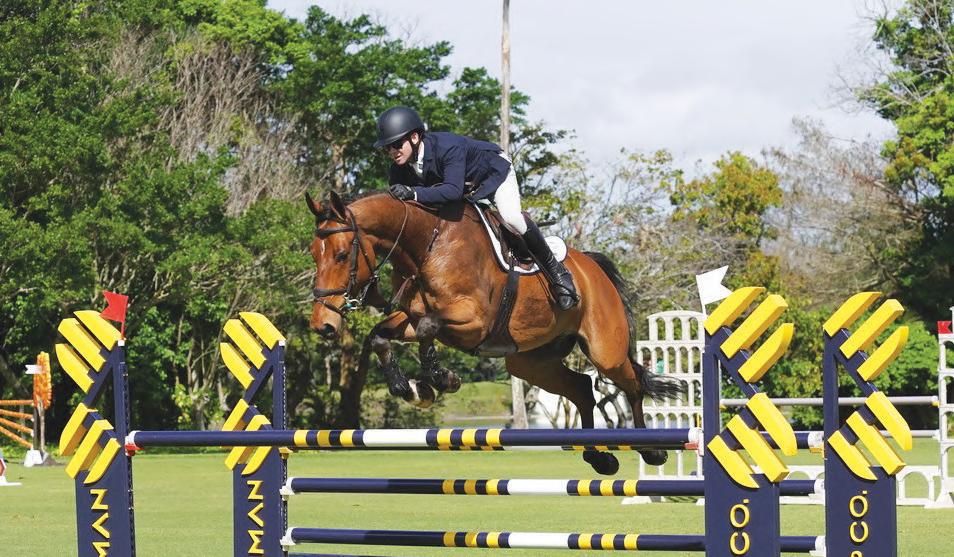
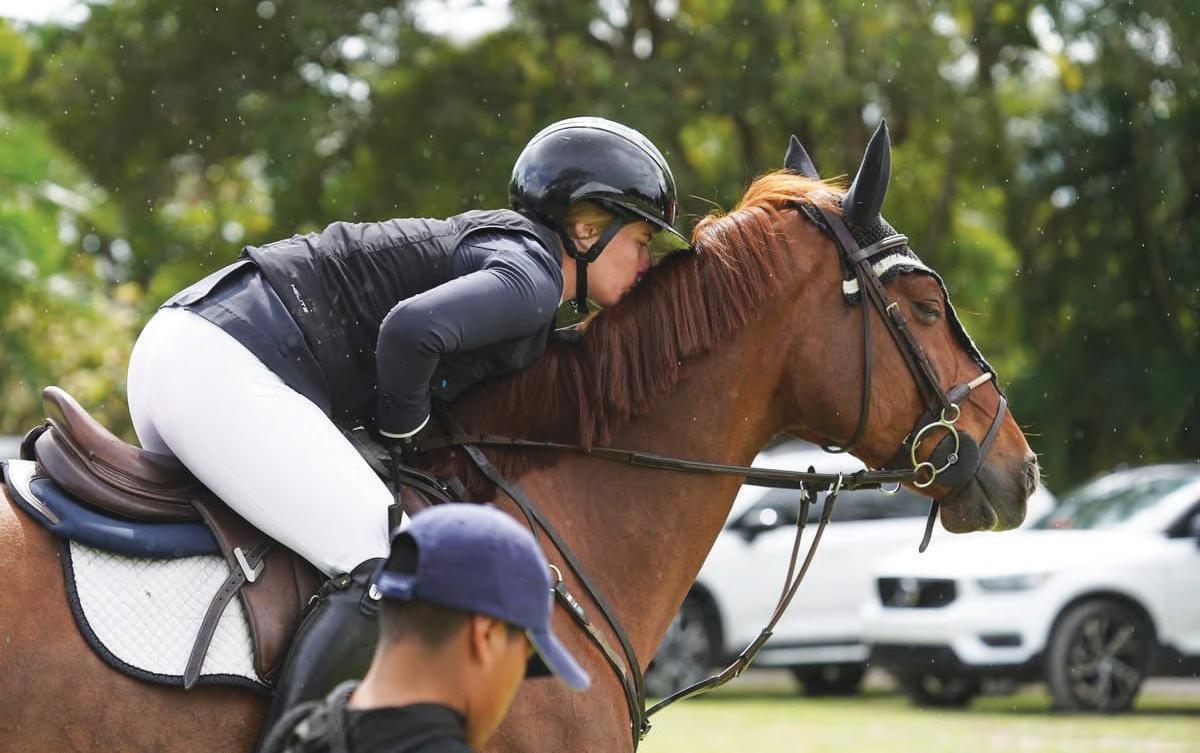
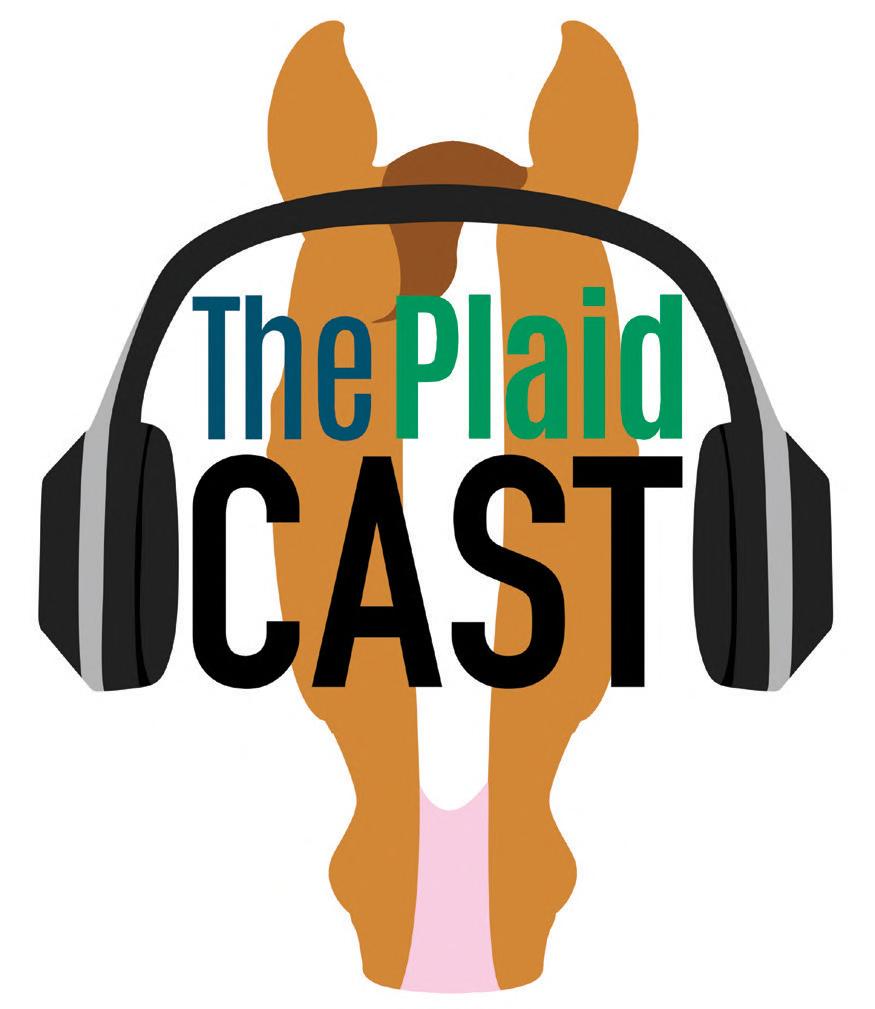
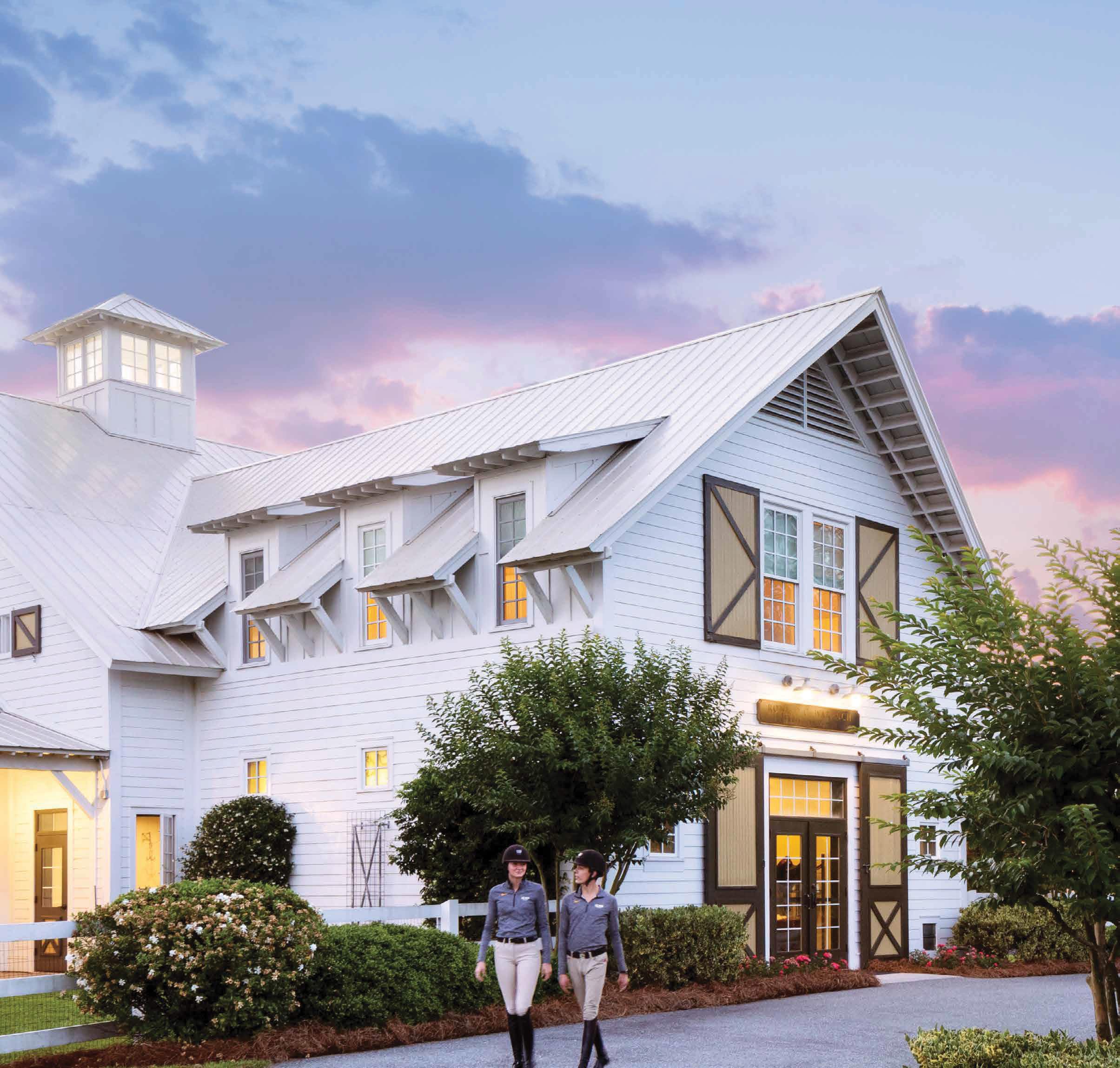
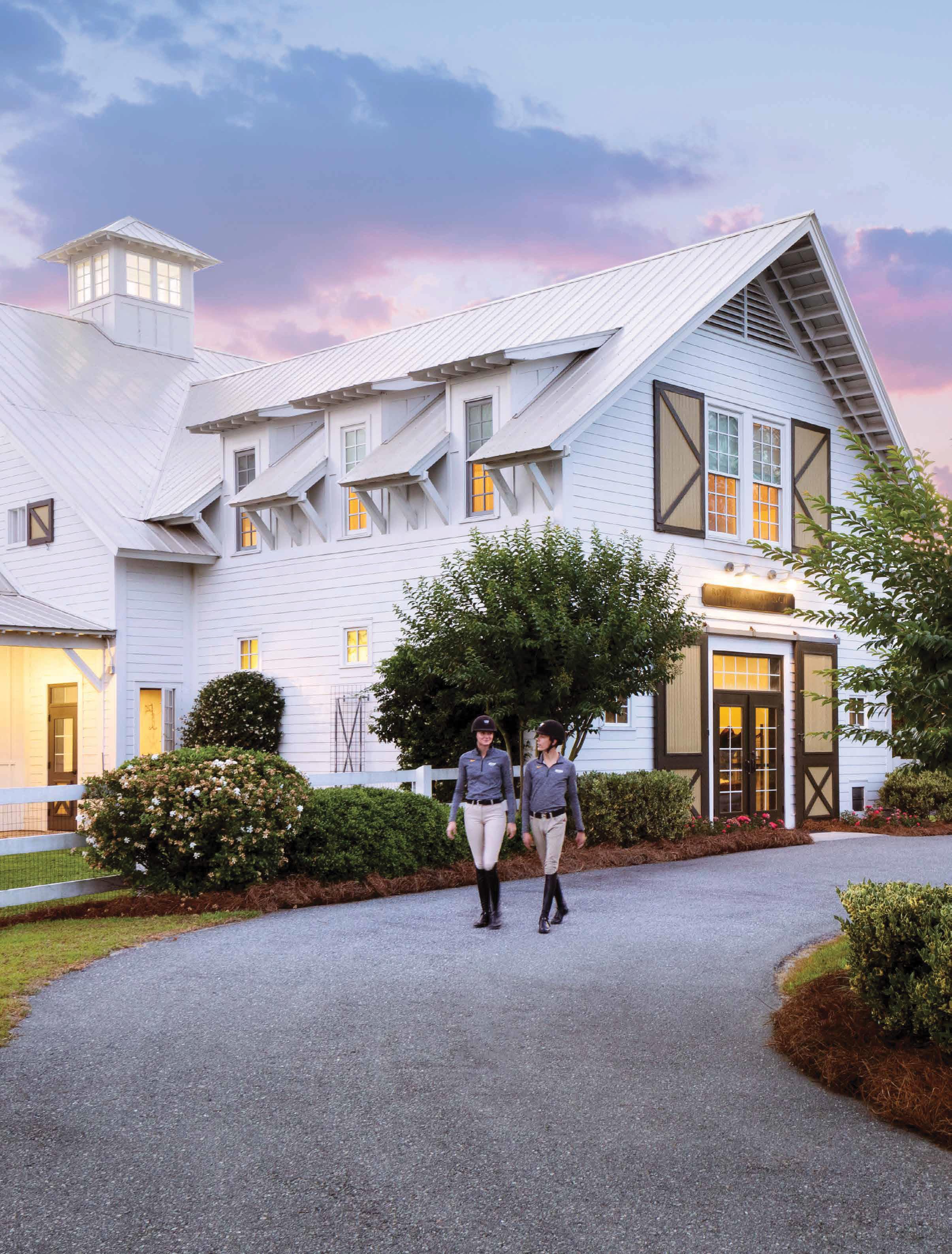
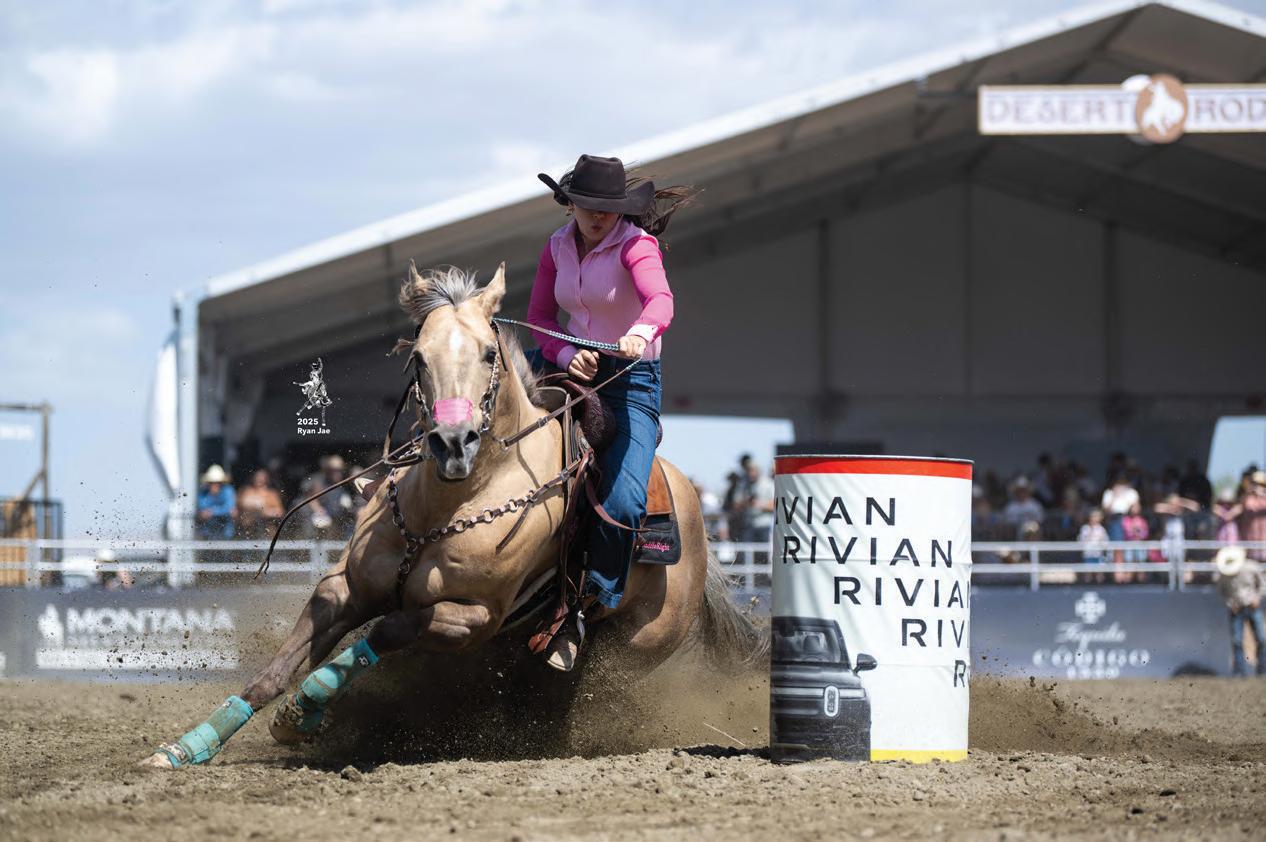
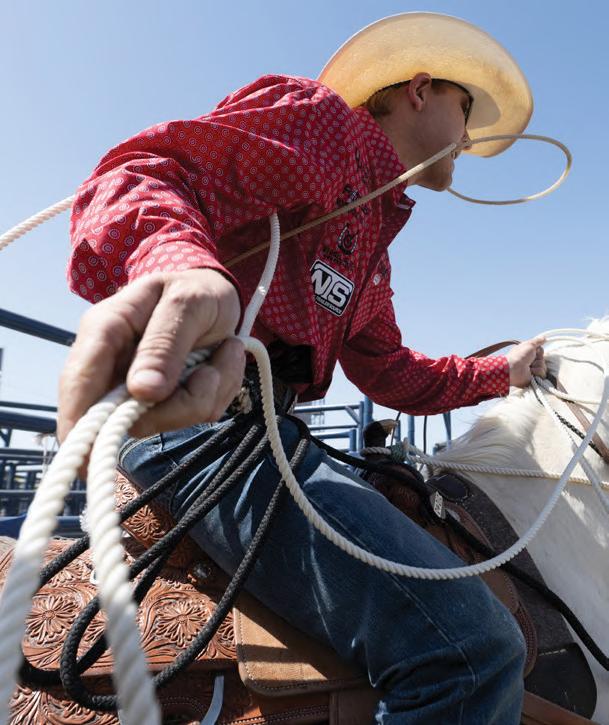

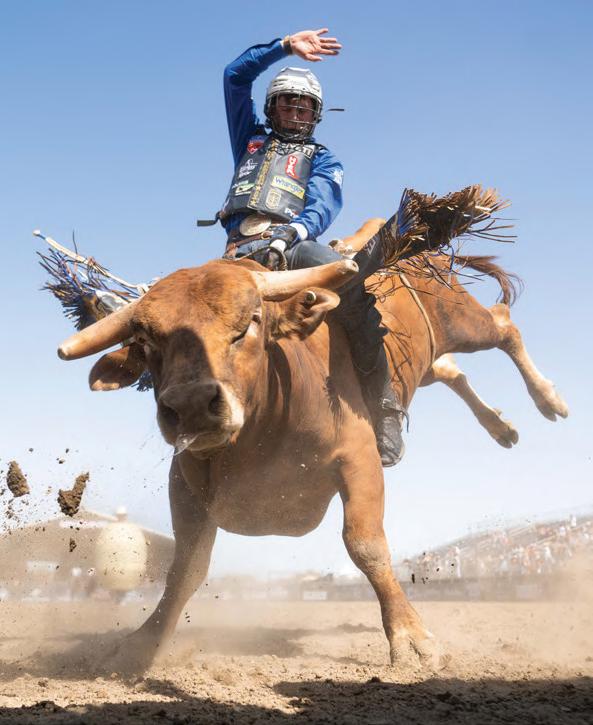
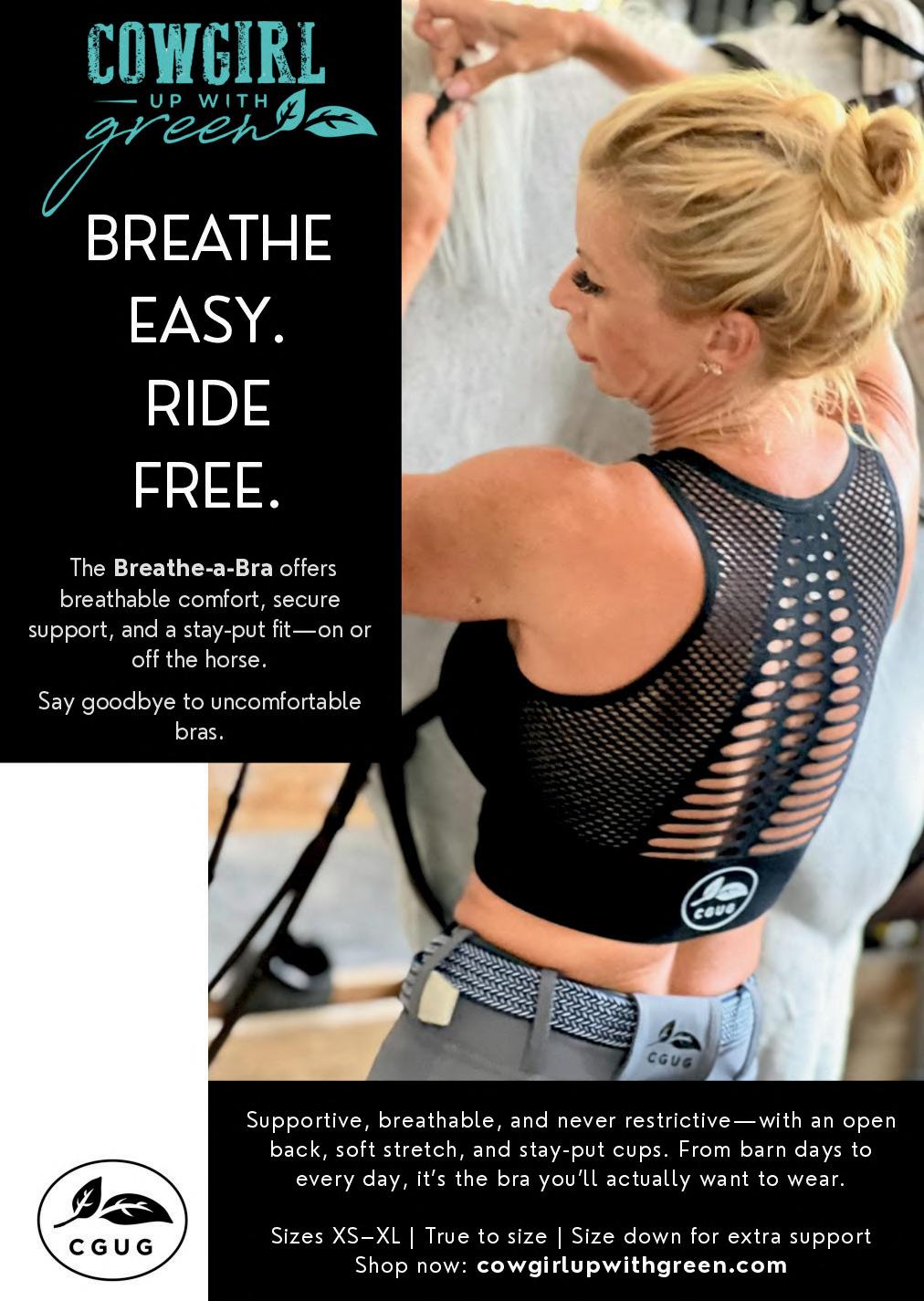

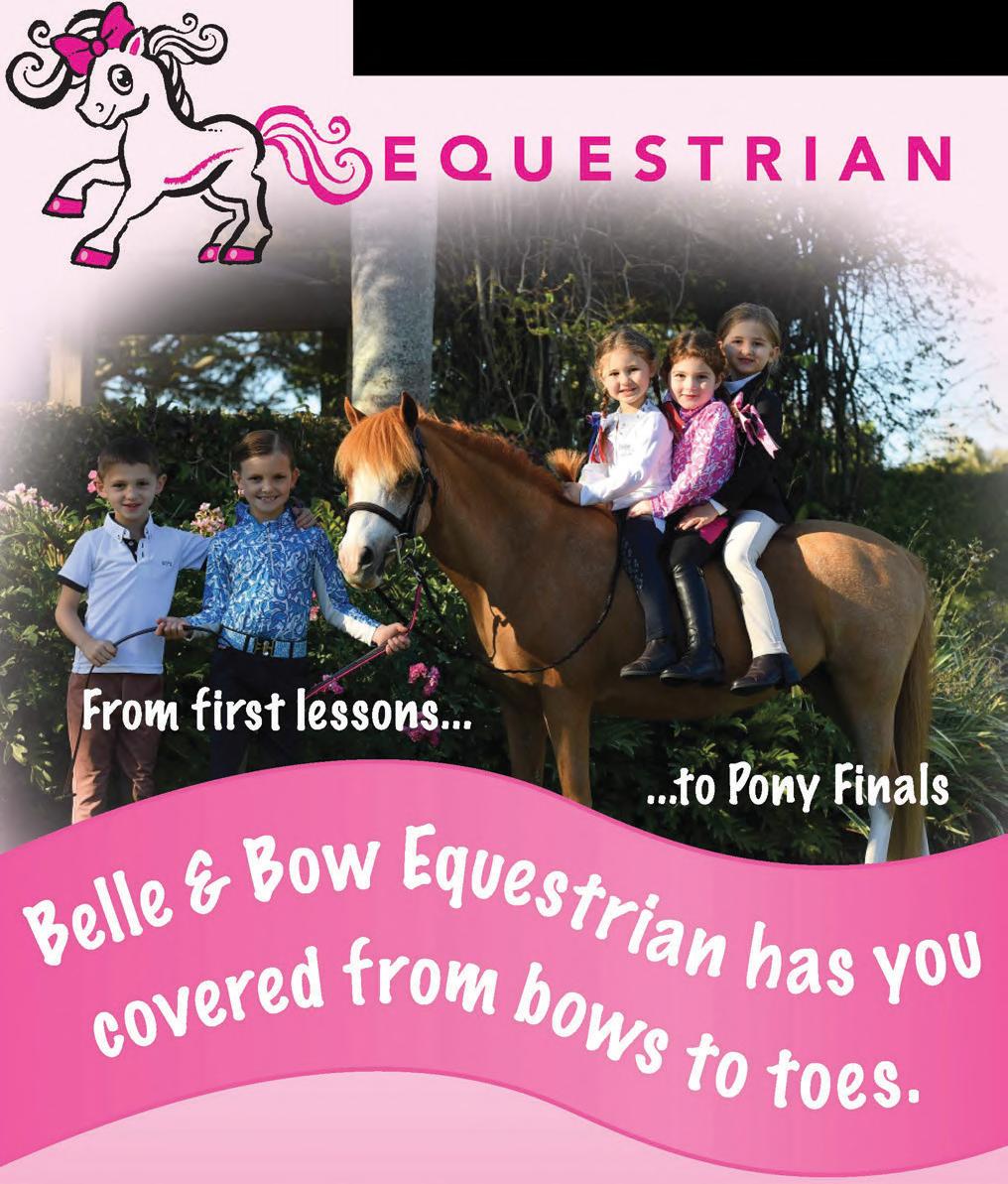
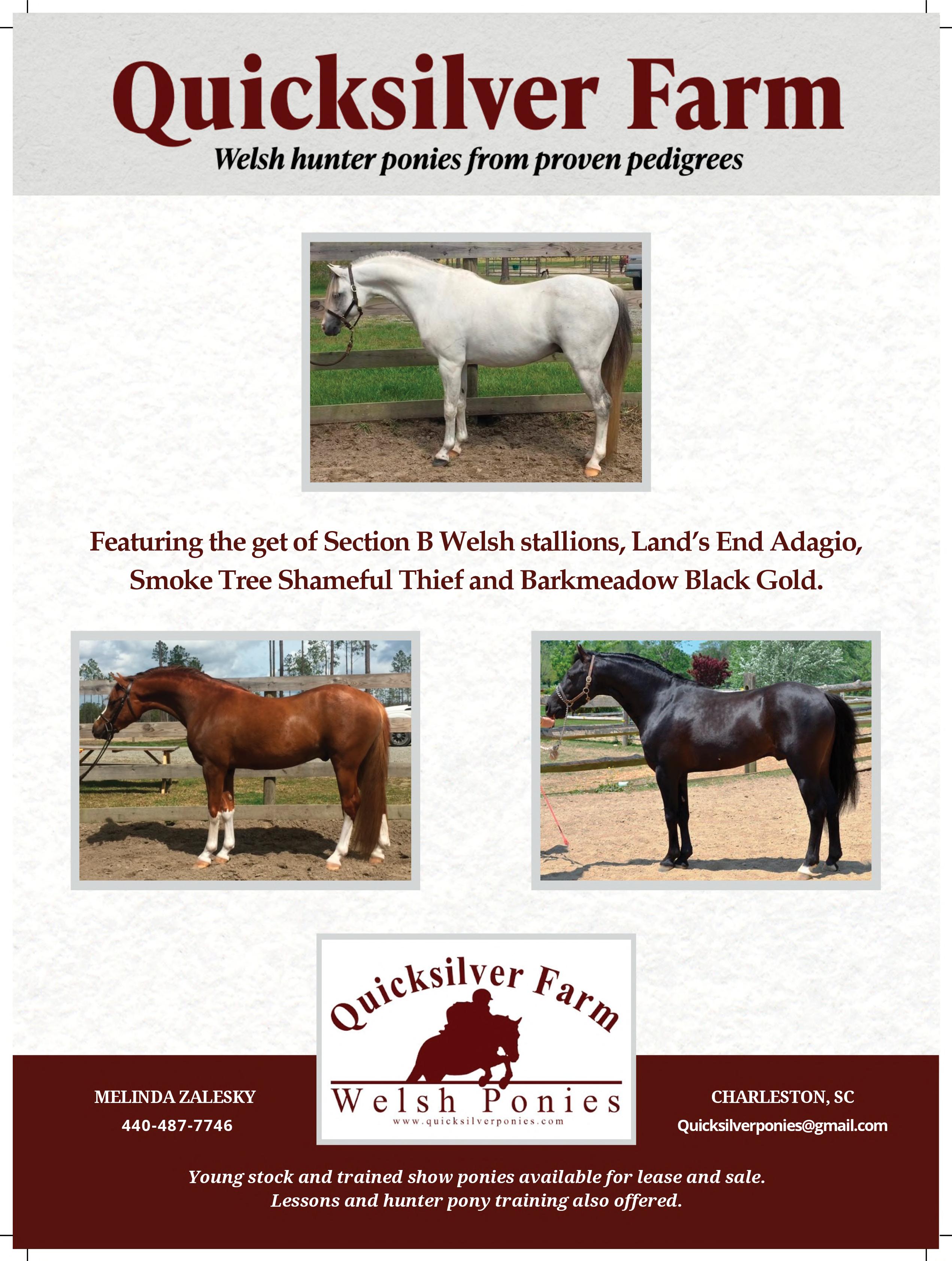


WORDS: KATIE DERER
RECAP: In the last installment of the series, we explored the evolving equine industry. We discussed the industry’s ongoing challenges, particularly around worker compensation, transparency, and working conditions. Drawing from personal experience as a freelance equine professional, I drew upon firsthand accounts with the industry’s outdated practices and advocate for much-needed reforms, including fairer pay, safer work environments, and accountability.
The last article explored the possibility of unionization in the equine industry, noting how labor unions in other sectors have achieved progress in improving worker conditions. By applying some of these principles to the equine world—especially in disciplines like competitions, grooming, and training— unions could offer a powerful tool for improving wages, job security, safety, and work-life balance. In this article, we will dive deep into how industry standards are largely affected by fluctuations in the supply and demand of its laborers.
IT SEEMS THAT most of our industry standards for horses and humans start with the race industry. But why is racing seemingly the only discipline that keeps track of its workers, laborers, and owners accountable for equality practices? I also find it interesting that in the USA, outside of racing, there are zero tolerance policies regarding horse welfare and banning riders or trainers, but there are no repercussions for bad paying employers. Explain to me why the United States of America is one of the only countries without regulatory practices for pay, training, and professional development in equine sport. To me, the arguments are excuses. “America is so big”, “even if you regulate it, people will find a way around it anyway”. If you have similar thoughts, again, this widespread industry brainwashing is how we have become the downcast industry of today. Just because following laws can be dismissed, doesn’t mean that there should be no laws at all. The racing industry has mapped out some potential roads for employment to take in other horse industries. In all the mentioned countries, the general theme is that employers in the horse racing industry must comply with local labor laws, which often include the requirement to pay staff, such as grooms, trainers,
and jockeys, on time. Some jurisdictions explicitly prohibit a horse from competing if there are unresolved employment or payment issues, while others enforce this through licensing or certification requirements. The specifics can vary by country or even state/province, but in all cases, ensuring fair pay for workers is a critical aspect of maintaining ethical and legal racing operations. Just by adapting a few of these principles into other disciplines of equestrian sport, we could certainly make a crucial step in keeping equestrians validated and safeguarded in their jobs.
Our data is only as good as those willing to participate in or collect it. If our governing bodies, American Horse Publications, or other organizations trying to improve the industry send out a survey, please seriously consider answering honestly. While we may not be able to cover every individual perspective, we can certainly take away a more wholesome approach in finding solutions to the current plight of the laborers. At the same time, we must open up about the hard truths in the equine industry. Our aim as industry professionals should be to work towards educating and furthering reform where necessary, to the benefit of the future of the equine industry. These articles are geared to open conversation for those in the equine community with a commitment to change. My sincere hope is that this information will fuel up-and-coming generations, as well as serve as a reminder that progress must be made to keep the interest and integrity within the sport we have all come to love. Ultimately, the article is one of collective action, accountability, and empowerment: the industry will only change if its workers come together to demand transparency, fair pay, and better conditions for everyone involved. We are experiencing a generational shift in how equine professionals view their value and their rights. Let us sit down at the table and encourage ongoing reform in the industry to ensure it is equitable and sustainable for the future.
More often than you think, we come across gaslighting rhetoric similar to the following:
“There’s a hundred where you came from.”
“If you don’t like it, I’ll find someone who does.”
“People would beg for your job.”
The U.S. equine industry faces a growing labor crisis, driven by a high demand for skilled workers and a dwindling supply of seasoned veteran horsemen. Physically demanding work, long hours, and relatively low wages make it difficult to attract domestic workers. Diversity issues notwithstanding, seasonal labor surges such as during breeding or show seasons further strain the workforce. The specialized skills required for roles like grooming, training, and stable management also narrow the pool of qualified candidates, while competing industries like construction, landscaping, and agriculture reduce the availability of workers seeking more monetary value. For those of you witnessing firsthand, what is your next move? I’ve heard from various professionals that some are decidedly shutting their business down or downsizing due to a lack of staff. Is this the industry of the future we wish to see? If not, let us continue the discussion of further possibilities of change.
The truth is that the equine industry’s workforce is heavily reliant on immigrant labor, particularly for positions such as grooms and stable hands. Legal domestic workers often occupy management or specialized roles, leaving immigrant workers to fill the gaps. Many employers turn to the H-2B visa program for temporary labor, but strict caps and processing delays limit its effectiveness. Undocumented workers, despite being vital to daily operations, introduce risks for both workers and employers, including legal penalties and workforce instability. Many frustrations from the legal system, including price and punctuality of these legal procedures, have further divided the workforce from flourishing, so where do we find the compromise?
Employers face numerous challenges, from rising costs of visa compliance to workforce attrition as older workers leave the industry and younger generations show little interest in manual labor roles. This reliance on a shrinking labor pool has not translated into competitive wages or benefits, and policy uncertainty around immigration exacerbates the problem. Does anyone else remember when our teachers asked us to wear our critical thinking caps? It would seem an appropriate time when most of the industry seems to be suffering silently.
1 Expand Visa Programs: Increasing H-2B visa quotas or creating equine-specific programs can address labor shortages legally.
2 Improve Job Conditions: Offering better pay, benefits, and training can make equine jobs more appealing to domestic workers.
3 Mechanization: Limited automation, such as feeding systems, can reduce demand for manual labor.
4 Community Training: Outreach and training initiatives can help build a sustainable, diverse workforce.
By addressing these systemic issues, the equine industry can create a more stable and ethical labor market while ensuring its long-term sustainability.
The supply and demand dynamics for workers in the U.S. equine industry reflect broader trends in agriculture and manual labor-intensive sectors. This industry has historically relied on a mix of domestic and immigrant labor, with varying levels of legal status, to meet its needs. Here’s a detailed look at the situation:
High Demand, Limited Supply:
The equine industry requires skilled labor, including grooms, trainers, stable hands, farriers, and veterinary technicians. The physically demanding nature of the work,
long hours, relatively low pay, and rural locations make it challenging to attract and retain domestic workers.
• Seasonal Variability: Demand for workers often peaks during certain seasons, such as breeding, racing, or show seasons. Temporary labor surges can strain the workforce.
• Skill Requirements: Employers often need workers with specialized skills, such as horse handling, grooming, or riding. This narrows the pool of qualified candidates, especially among domestic workers unfamiliar with the industry.
• Competing Industries: Other industries, such as construction, landscaping, and general agriculture, compete for a similar workforce, further reducing availability for the equine sector.
Legal Domestic Workers: There is a steady but limited supply of legal U.S. workers, often attracted by higher-paying jobs in other industries. Domestic employees in the equine industry tend to occupy management or specialized roles.
• Immigrant Workforce: Immigrant workers form a significant portion of the labor force in the equine industry, especially in lower-skilled positions such as grooms and stable hands.
• Legal Immigrants: Many employers sponsor H-2B visas for temporary, non-agricultural work or H-2A visas (less common for equine jobs). However, the quota for these visas often fills quickly, leaving employers struggling to fill positions legally.
•Undocumented Immigrants: A portion of the workforce consists of undocumented workers, who are often willing to take on physically demanding jobs for lower wages. These workers are typically vital to the day-to-day operations of many barns.
Visa Limitations:
• The H-2B program, which is commonly used for seasonal workers, has strict caps (currently 66,000 visas
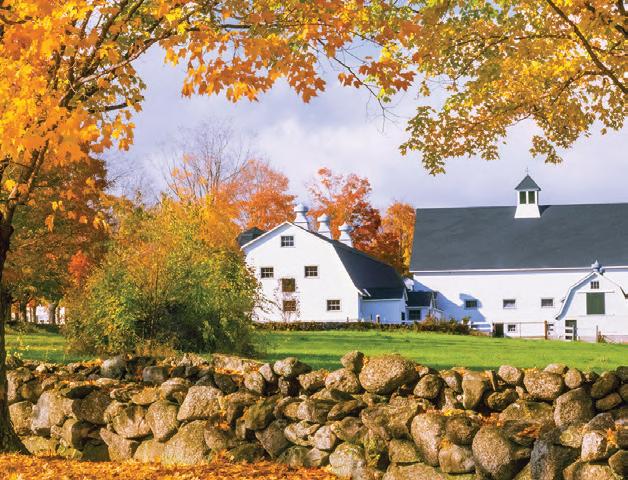

Whether you’re a porch rocker, a crop producer or an adventure seeker, Country Living Loans is the lender who can help make your country life happen. Our mortgage professionals take a personalized approach to every transaction, putting your unique goals and needs first. Because while there’s no right way to live out here, there’s a right way to finance it. Make the country life yours.

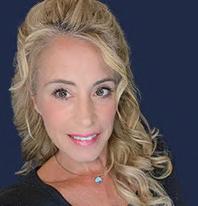
annually) and does not fully meet the industry’s needs. Delays and complexities in obtaining visas exacerbate the labor shortage.
• Reliance on Undocumented Workers: Many equine operations, particularly smaller farms or less-regulated sectors, rely on undocumented workers. These workers may accept jobs with lower wages and fewer benefits, but their legal status presents risks for both the workers and employers, including fines, deportation, and instability.
• Cost of Compliance: Employers seeking to hire legal immigrant workers face high costs for visa processing, legal assistance, and compliance with labor laws. This discourages smaller operations from pursuing legal options.
• Workforce Aging and Attrition: Many domestic and immigrant workers in the equine industry are aging out, while younger generations show less interest in manual labor-intensive roles, creating a growing gap in labor supply.
Wage Pressures: Increased reliance on a shrinking labor pool has led to rising wages in some areas, but not enough to make the industry competitive with other sectors. Employers often struggle to balance affordability with the need to attract reliable workers.
• Policy Uncertainty: Shifts in immigration policy significantly impact workforce availability. Stricter enforcement of immigration laws can create labor shortages, while policy reforms that expand visa programs could alleviate them.
• Ethical and Legal Concerns: There is an ongoing debate within the industry about the ethics and legality of relying on undocumented workers. Advocacy groups call for more inclusive and accessible visa programs to address labor needs without exploitation.
Expanding Visa Programs: Advocacy for expanding H-2B visa quotas or
creating specific programs for the equine industry is essential to addressing labor shortages legally.
Improving Job Conditions: Offering better wages, benefits, and training opportunities can make equine jobs more attractive to domestic workers.
Mechanization: While mechanization is limited in a labor-intensive and skill-specific industry like equine care, some tasks (e.g., feeding systems, manure removal) could benefit from automation and systematic analysis to reduce labor demand.
Community Training Programs: Initiatives to train local workers, including outreach to underrepresented groups, could build a sustainable workforce pipeline.
By addressing these challenges, the industry can better balance its reliance on immigrant labor with efforts to attract and retain a more diverse, stable workforce.
The U.S. equine industry’s labor crisis underscores a complex interplay of challenges rooted in high demand for skilled labor, a shrinking workforce, and a reliance on immigrant workers to fill vital roles. The physically demanding nature of the work, combined with low wages and limited benefits, has made it increasingly difficult to attract and retain domestic employees. Seasonal labor demands, specialized skills, and competition from higher-paying industries exacerbate this issue, leaving employers struggling to maintain operations.
While immigrant workers, both documented and undocumented, have been the backbone of the equine labor force, visa limitations, policy uncertainties, and ethical concerns highlight the urgent need for systemic reform. Expanding visa quotas, improving job conditions, and investing in training programs are essential to creating a stable and sustainable workforce.
As the industry evolves, stakeholders must prioritize balancing economic
viability with workforce welfare. Addressing these challenges holistically will not only secure the future of equine operations but also promote ethical labor practices, ensuring the long-term sustainability and success of this vital sector.
BIBLIOGRAPHY
American Horse Council. “Economic Impact of the U.S. Horse Industry.” [Online resource].
U.S. Department of Labor. “H-2B Temporary Non-Agricultural Worker Program.” [Online resource].
International Labour Organization. Labour Migration in Agriculture: Challenges and Solutions.
The National Immigration Forum. “The Role of Immigrants in the U.S. Agricultural Workforce.” Equine Advocates. “Ethical Labor Practices in the Horse Industry.”

Katie graduated from Delaware Valley University with a Bachelor’s degree in Equine Studies, specializing in Equine Training. She also studied abroad in the UK at Hartpury College, where she found her enthusiasm for research and globalization practices within the equine industry. In 2016, she formed Wilderer Equestrian as a young professional, committed to young horses, sales, and showing on the circuit. After 20+ years in the industry, she continues to document first-hand experiences, including her peers, searching for solution-based policies to bring into practice.
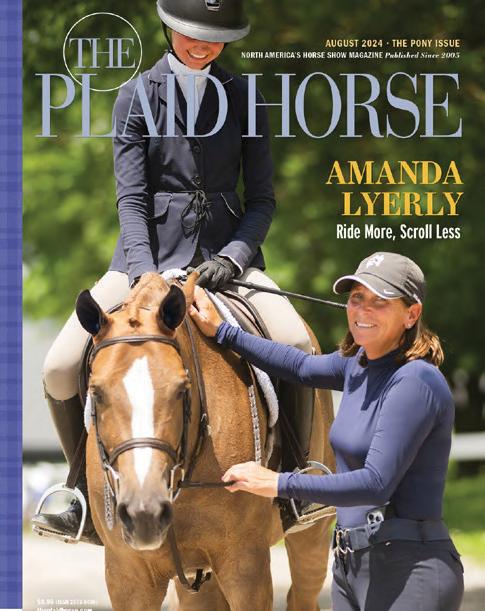



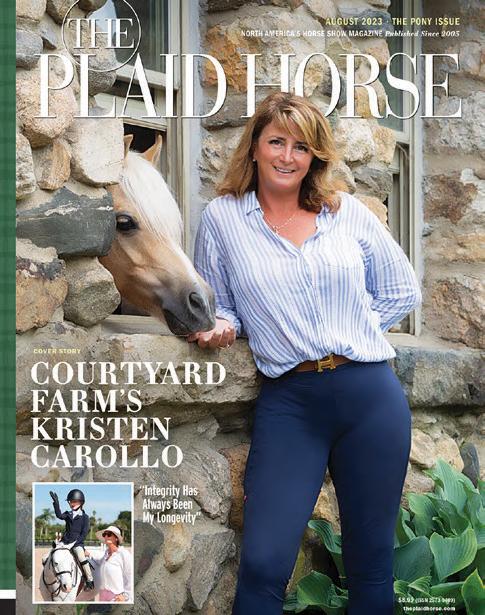



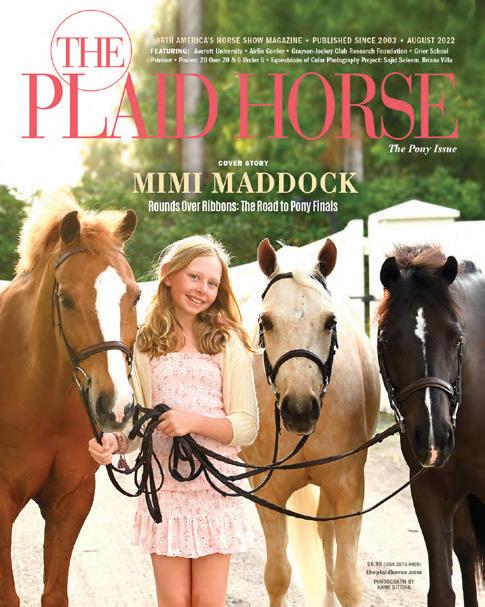


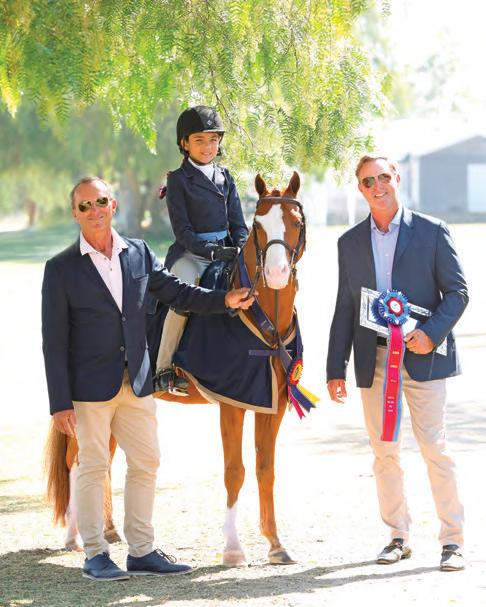




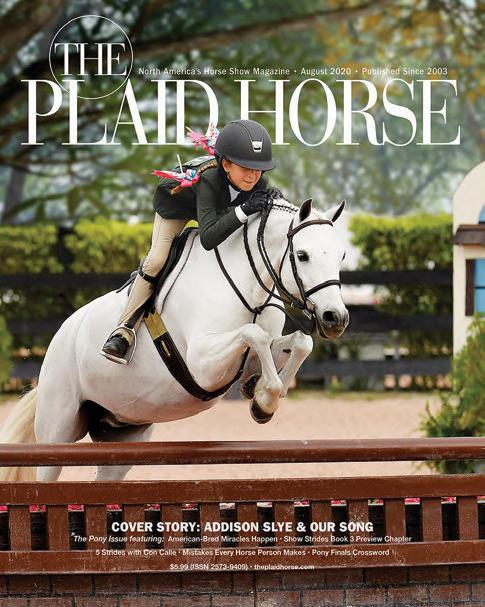



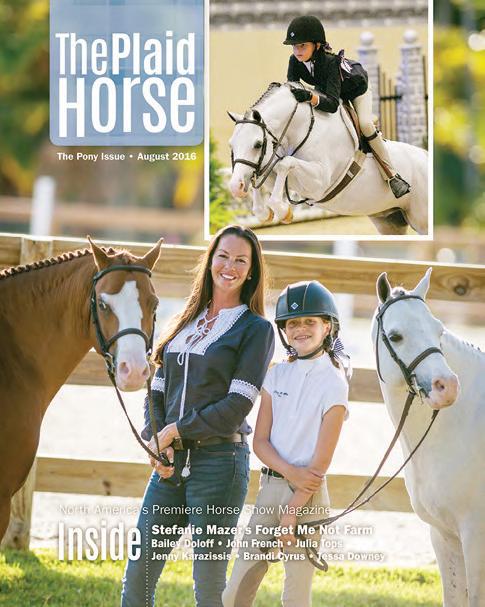


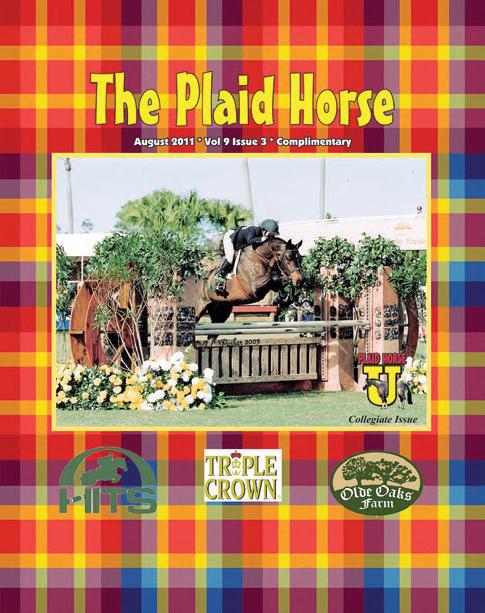




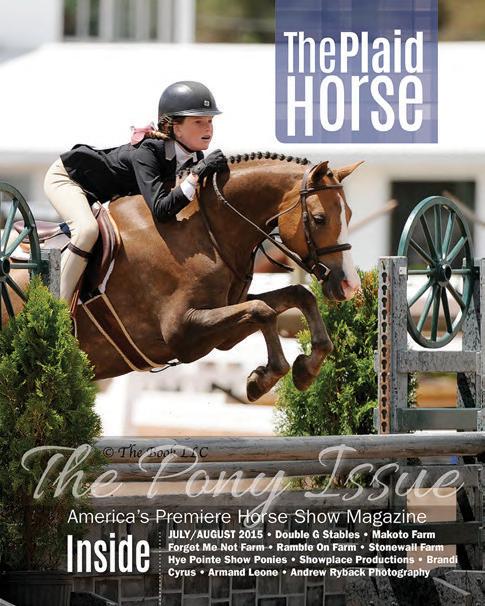





DEADLINE: JULY 1, 2025
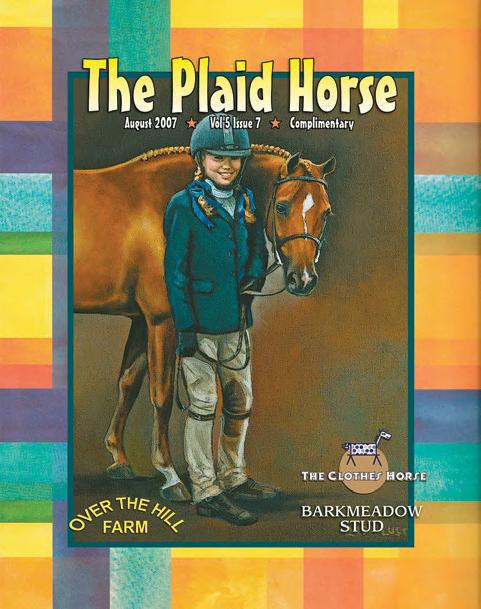










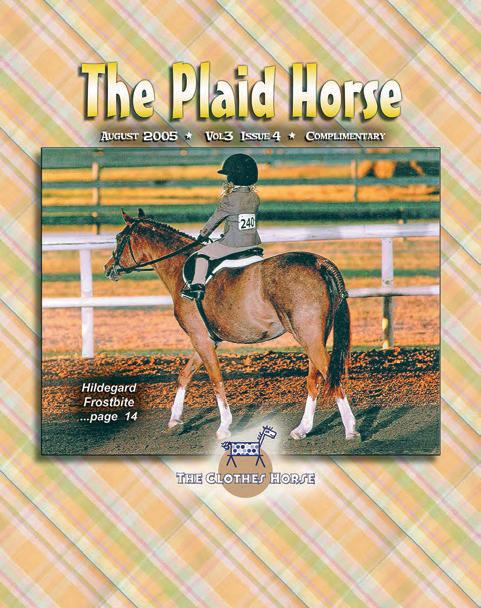
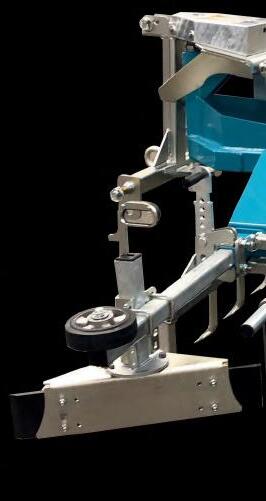

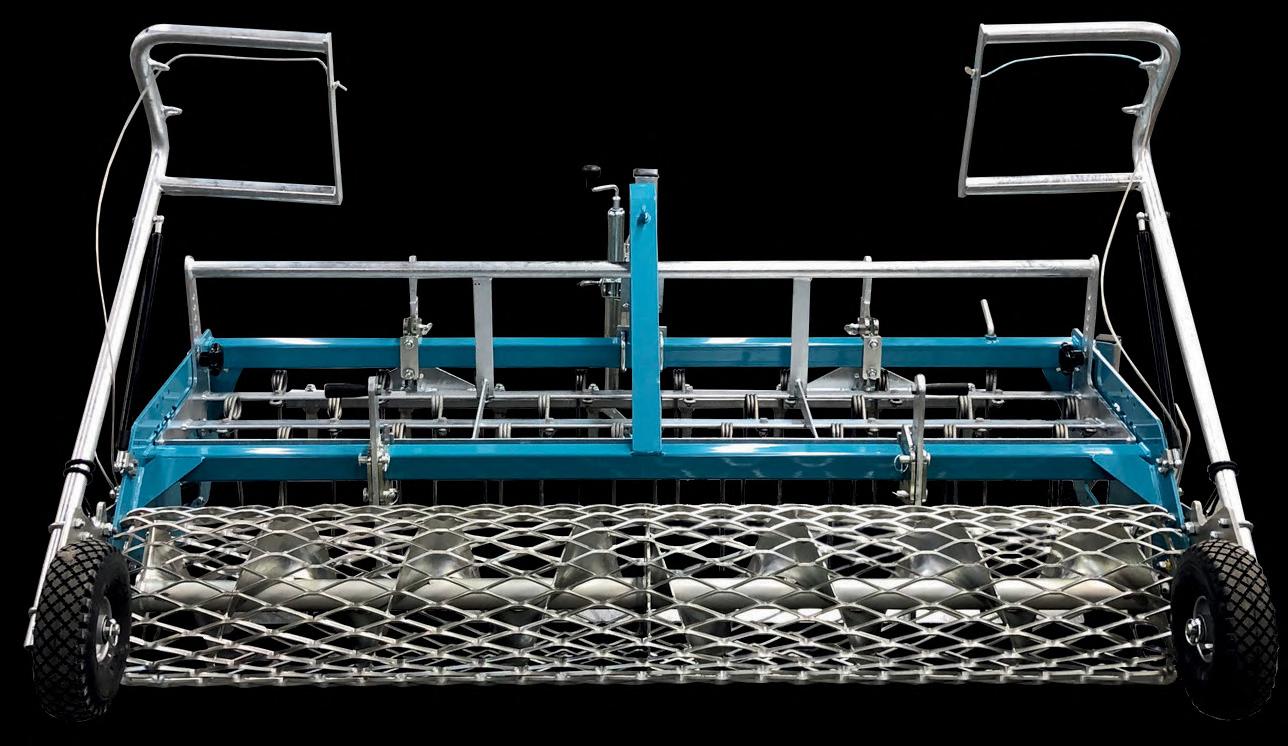
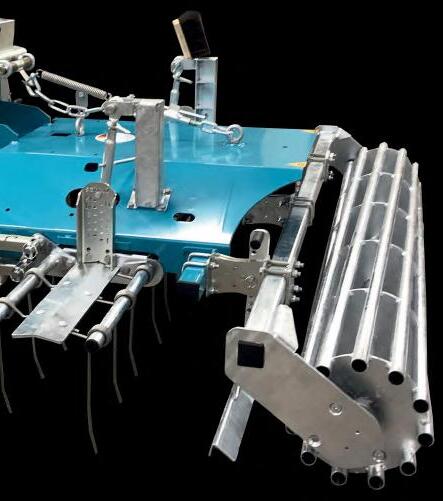


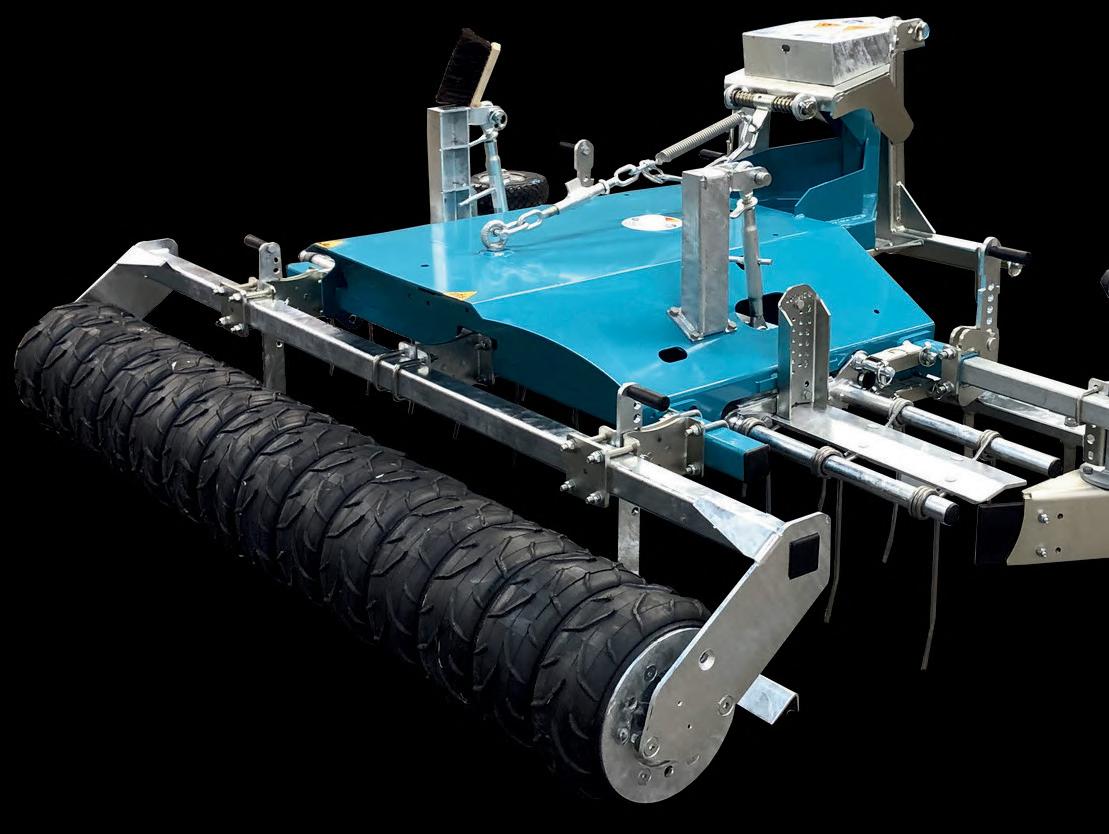



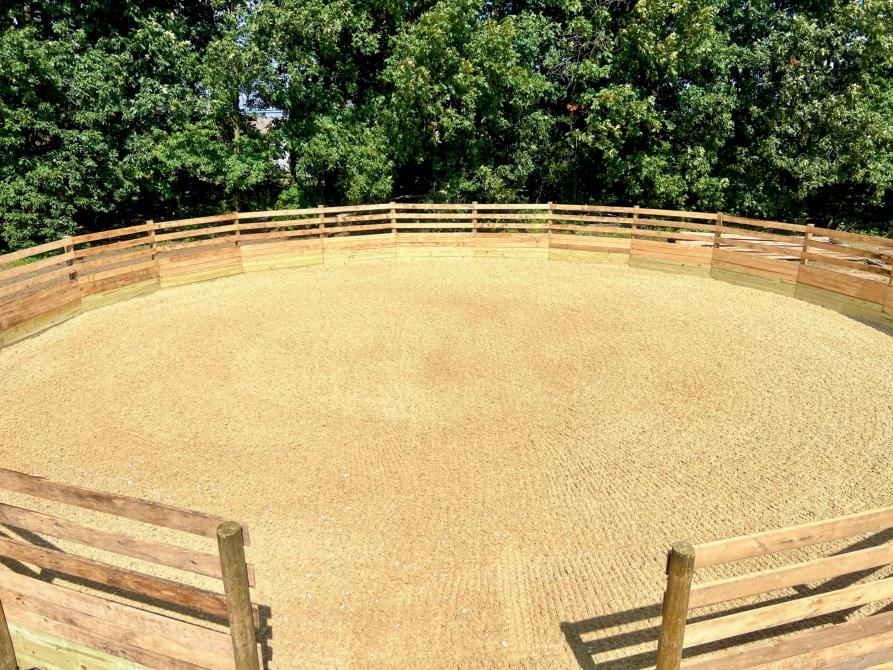
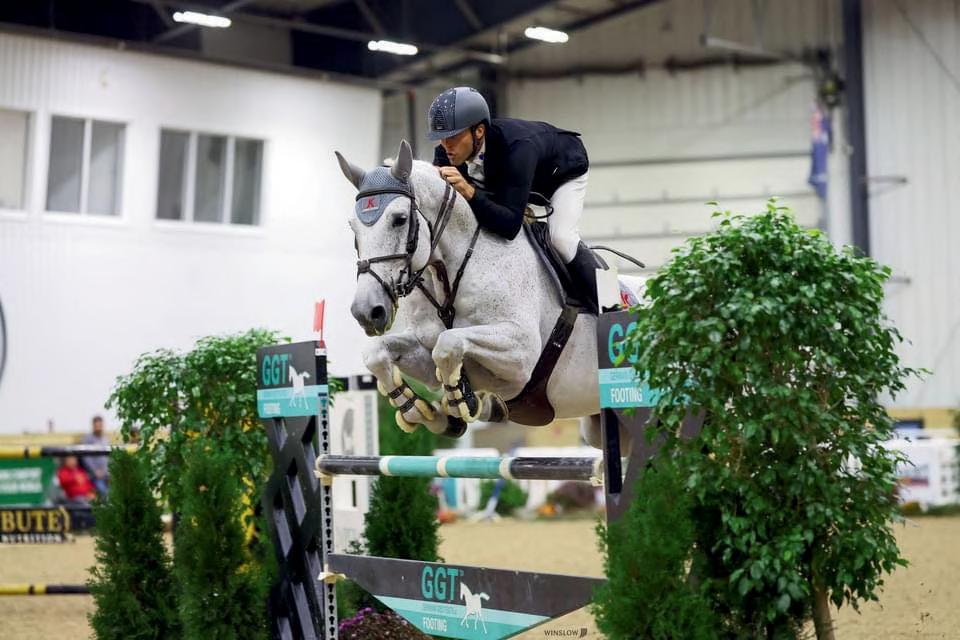














WORDS: ALAN BAZAAR AND ROBERT MCNERNEY
FOR MUCH OF the modern era, the U.S. equestrian sector benefited from relatively smooth international trade. Purebred horses for breeding entered duty-free under Most-Favored Nation (MFN) treatment, and tack and equipment such as saddles and bridles faced low or negligible import duties. Cross-border movement of feed, pharmaceuticals, and veterinary supplies remained seamless under trade agreements like NAFTA, and later the U.S.–Mexico–Canada Agreement (USMCA). That era of stable, low-barrier trade allowed for fluid international breeding programs, well-stocked tack shops, and a healthy import-export ecosystem.
In more recent years, the intersection of global trade policy and the equestrian world has become increasingly difficult to ignore. Moreover, recent tariff announcements have caused global confusion across many industries, and it is not clear the impact that they will have.
Tariffs increase the cost of capital goods, raise ongoing operational expenses, and inject volatility into long-term planning. Riders attending events requiring international travel or transporting horses for sales across borders would face increased costs and administrative burdens. The anticipation of these tariffs alone has delayed shipments and spurred changes in show schedules. Consequently, whether operating a boarding facility or investing in high-end show jumpers, these trade policy changes are more than abstract politics.
To understand how these tariffs will impact equestrians, it is helpful to look at the broader context. The disruption began in 2018 with a significant shift in U.S. trade policy. Under Section 232
of the Trade Expansion Act, the Trump administration imposed 25% tariffs on imported steel and 10% on aluminum, citing national security concerns. These tariffs, implemented on March 23, 2018, directly affected the cost of horse trailers, stall hardware, and arena infrastructure. With trailers being made up primarily of steel or aluminum, prices increased accordingly, burdening horse owners and transport businesses alike.
In parallel, Section 301 tariffs targeting imports from China introduced new headwinds. Saddlery hardware, bits, horseshoes, and grooming products— many of which are manufactured in China—were hit with tariffs in late 2018, which later rose in 2019. These were layered on top of the existing MFN duties. This meant everything from show boots to clippers cost more. In most cases, distributors either passed those costs to consumers or absorbed shrinking margins.
Retaliatory tariffs imposed by trading partners—especially Canada, China, and the European Union—have further complicated matters. China, once the largest importer of U.S. alfalfa hay, levied steep tariffs in response to U.S. moves, causing hay exports to China to drop significantly between 2017 and 2018. This could happen once more in response to recent trade developments.
Most equestrian gear and accessories made in China still carry the tariff, and while some manufacturers have shifted production to countries like India or Vietnam, supply chain realignment is neither cheap nor instant. Temporary product-specific exclusions have come and gone, but uncertainty remains the only constant. And while Section 232 tariffs on EU and UK metals were largely resolved in 2021 via tariff-rate quotas, steel and aluminum from
other countries continue to face full tariffs, meaning U.S. manufacturers of horse trailers and barn equipment still contend with elevated input costs. The recent announcements from the Trump administration increasing the tariffs on China will put even more pressure on this system as the Chinese government will likely respond with their own tariffs on US goods.
Also in early 2025, a proposed blanket 25% tariff on all goods from Canada and Mexico sent a shockwave through the equine world. Though not yet implemented, the threat alone sparked confusion among owners, trainers, and breeders who depend on cross-border partnerships. Canadian hay, lumber, wood shavings and even competition horses temporarily entering the U.S. would fall under this policy. To complicate things further, a ninety-day pause was announced for the reciprocal tariffs—excluding those on goods from China—in early April.
Equine pharmaceuticals and health products have been mostly spared from direct tariffs, but that is not guaranteed to remain the case. President Trump has said that ‘major’ pharmaceutical tariffs are on the way at the time of writing this article.
The question remains: given this context, what can one do to mitigate the risks?
The changes in trade policy incentivize horse buyers to locally source their next horse. Purchasing from American sources such as Spy Coast Farm would eliminate import duties, shorten the supply chain, and reduce paperwork along with ancillary costs. It is also important to consider that banks and insurers will offer lower premiums for domestic purchases in general.
Additionally, horse owners and
riders should factor in higher prices for imported goods and feed, while exploring local suppliers for new sources of saddles, feed, and related equipment to avoid tariff surcharges; second-hand or used materials can also help to ease the financial strain. Furthermore, one should plan carefully when traveling internationally for competitions and make sure to consider any possible border tariffs.
Breeders can help to mitigate certain costs by diversifying their bloodlines and relying less on imports most exposed to the tariffs. For example, restructuring cross-border deals or employing temporary import bonds can help to streamline horse transport and sidestep non-refundable fees. These bonds are especially useful should there be a chance that the horse is re-exported in a short timeframe.
Furthermore, client education
world.
remains essential and can help to retain customers in turbulent times. Promptly and effectively informing customers of rising operational costs tied to tariffs will foster transparency and trust. Communicating pricing changes is equally critical—clearly explaining cost hikes can maintain customer loyalty and mitigate sticker shock. Tariff relief
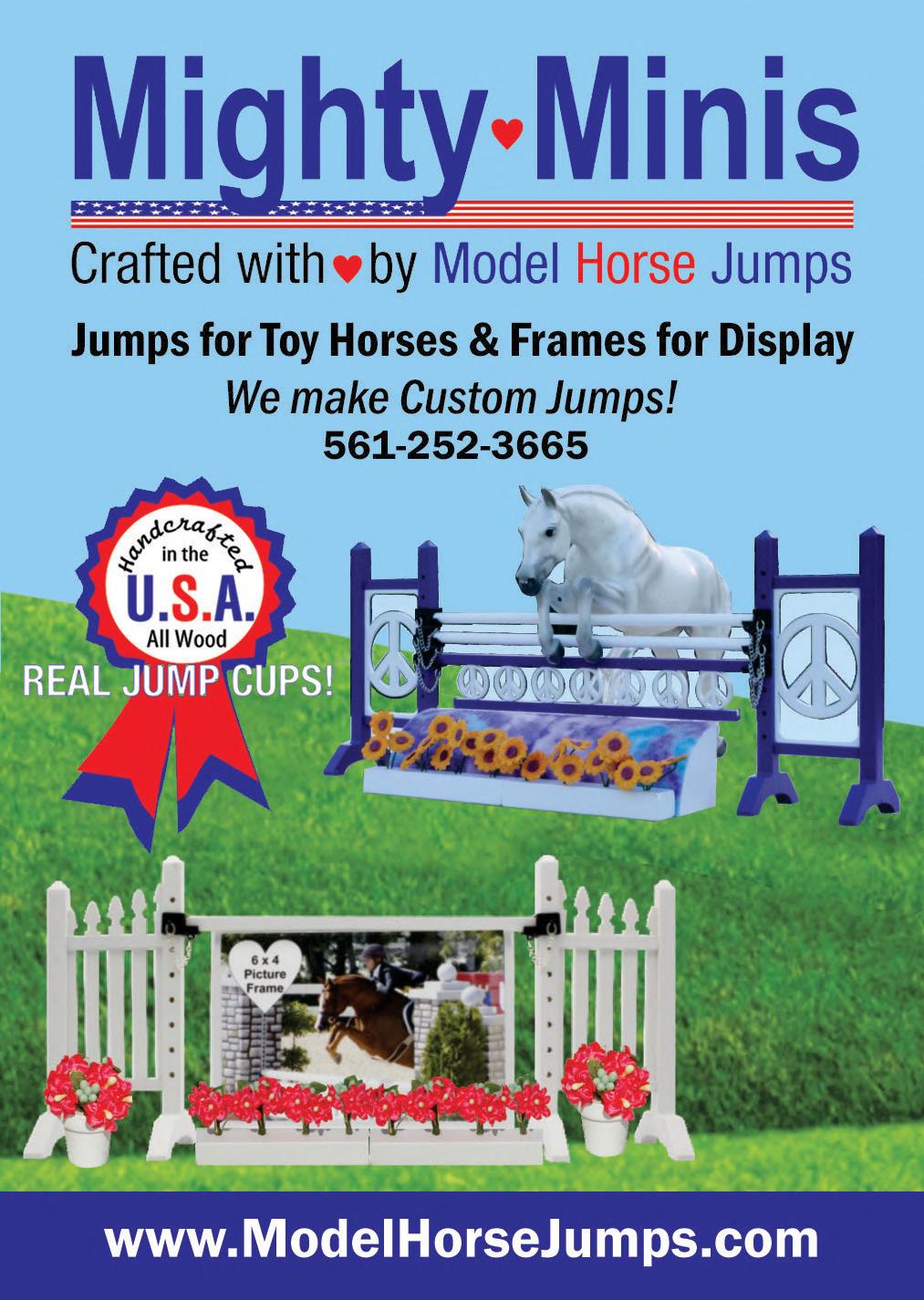
programs, including duty drawbacks and Foreign Trade Zones, may help to offset some expenses as well.
Tariffs may seem like the concern of politicians, but their impact is being felt in show rings and barns across the country. Looking ahead, the equestrian industry is likely to remain entangled in the broader trade dynamics shaping the global economy.
Reaching long-term financial goals starts with matching a clear objective—college funding, legacy planning, or buying a horse—to an investment strategy that can adapt as markets shift. A trusted advisor turns those goals into concrete portfolio actions, manages risk, and keeps investors focused when markets waver. Hollow Brook Wealth Management excels at this intersection of vision and execution through fiduciary advice, tailored asset allocation, and full-scope financial planning.
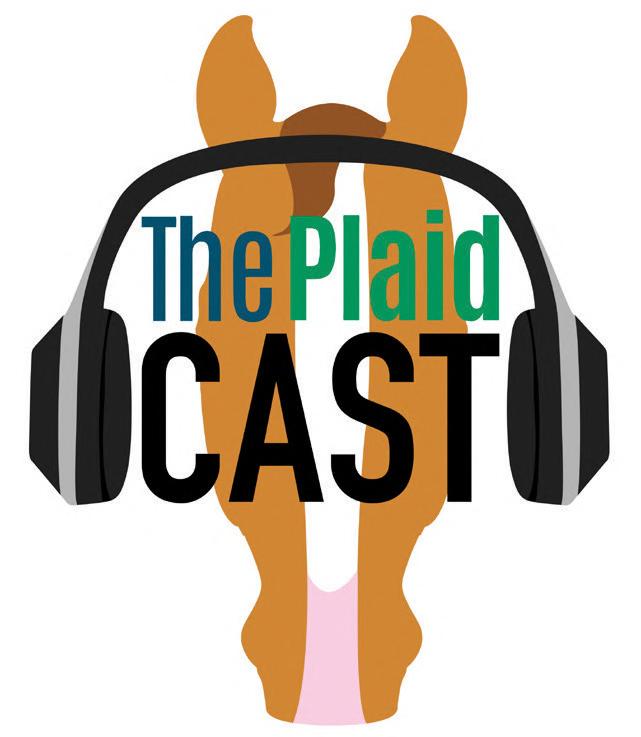




—GEOFF TEALL





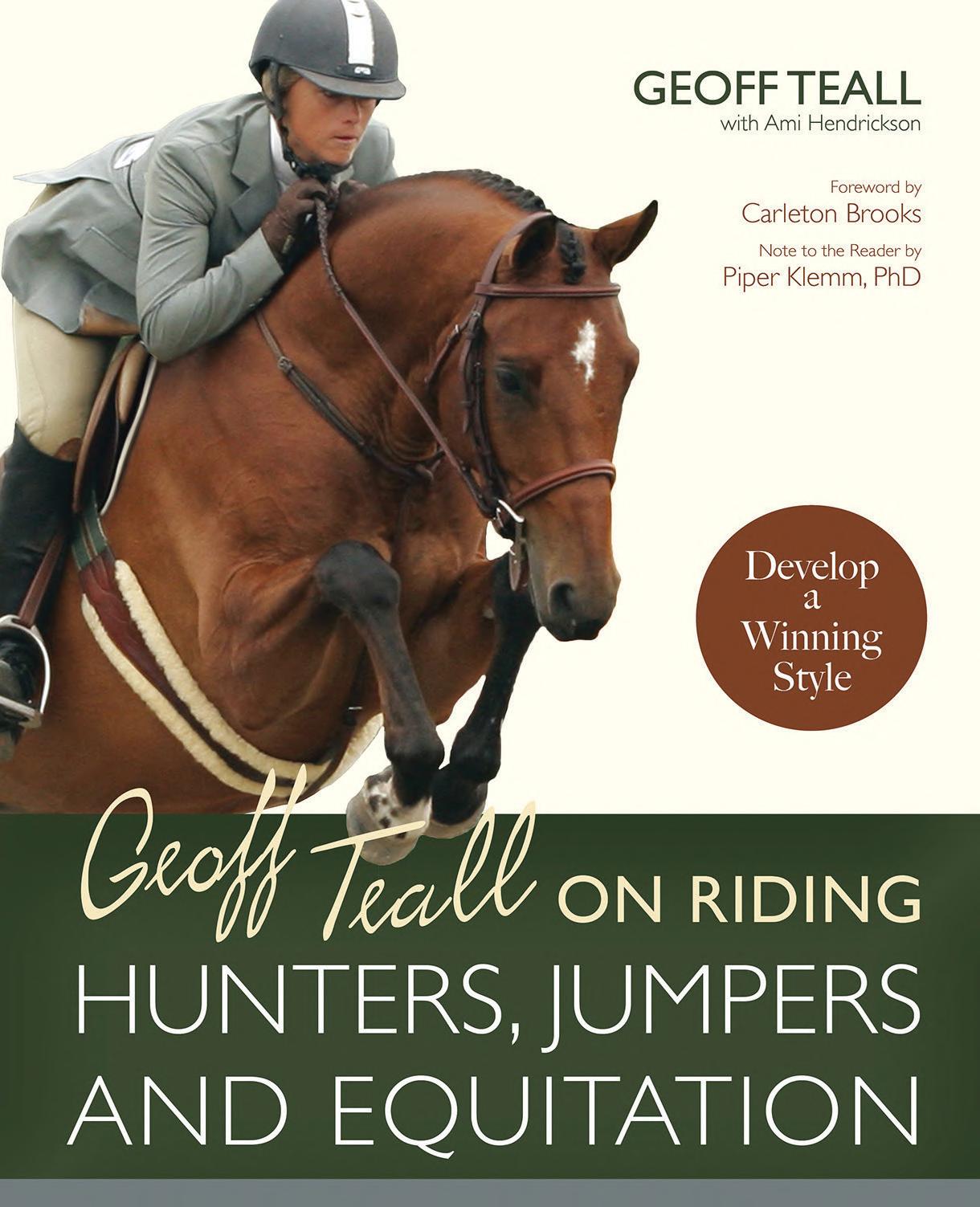






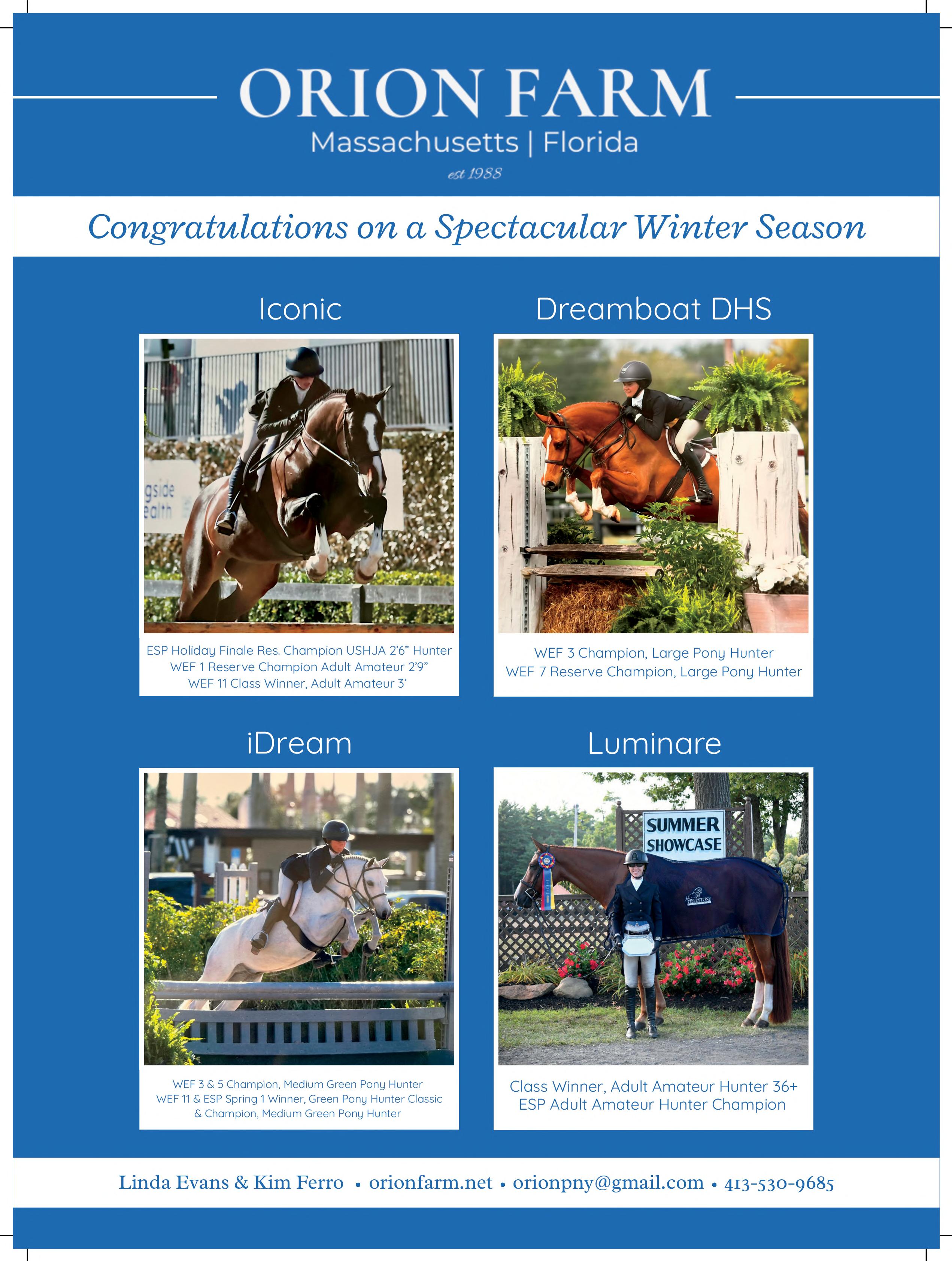
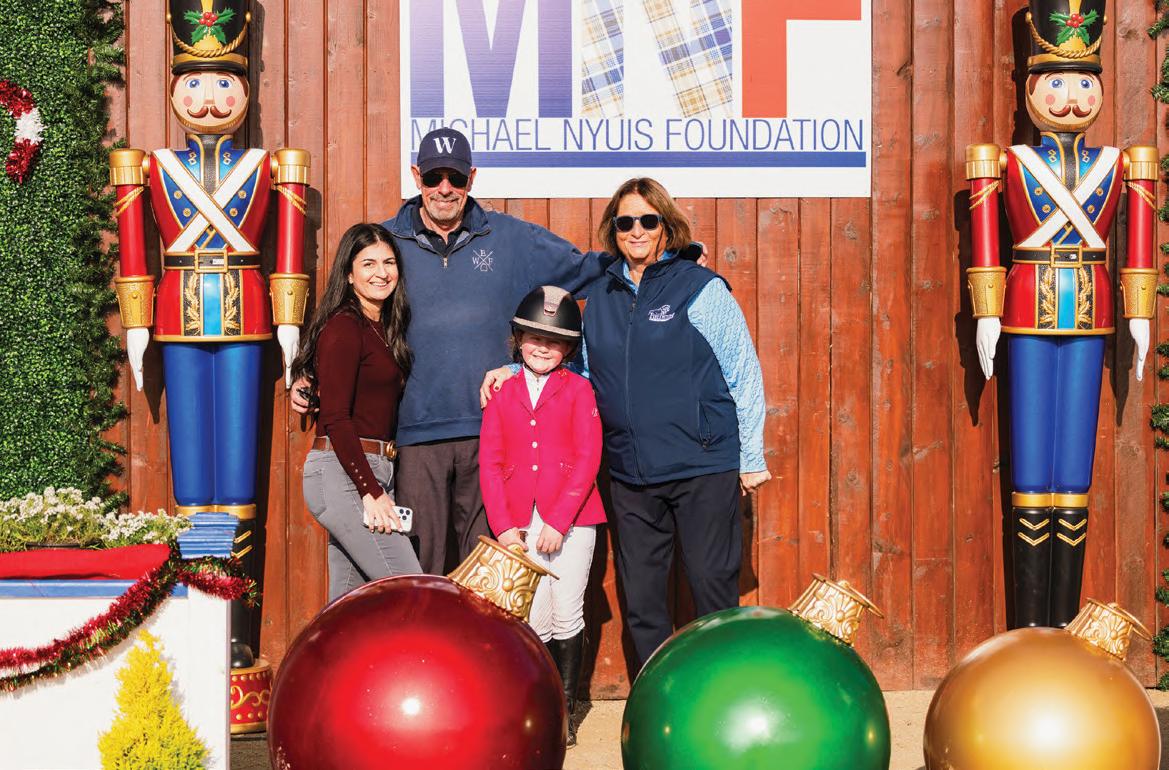

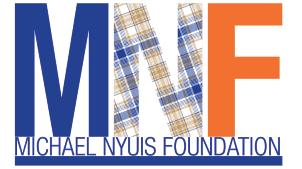


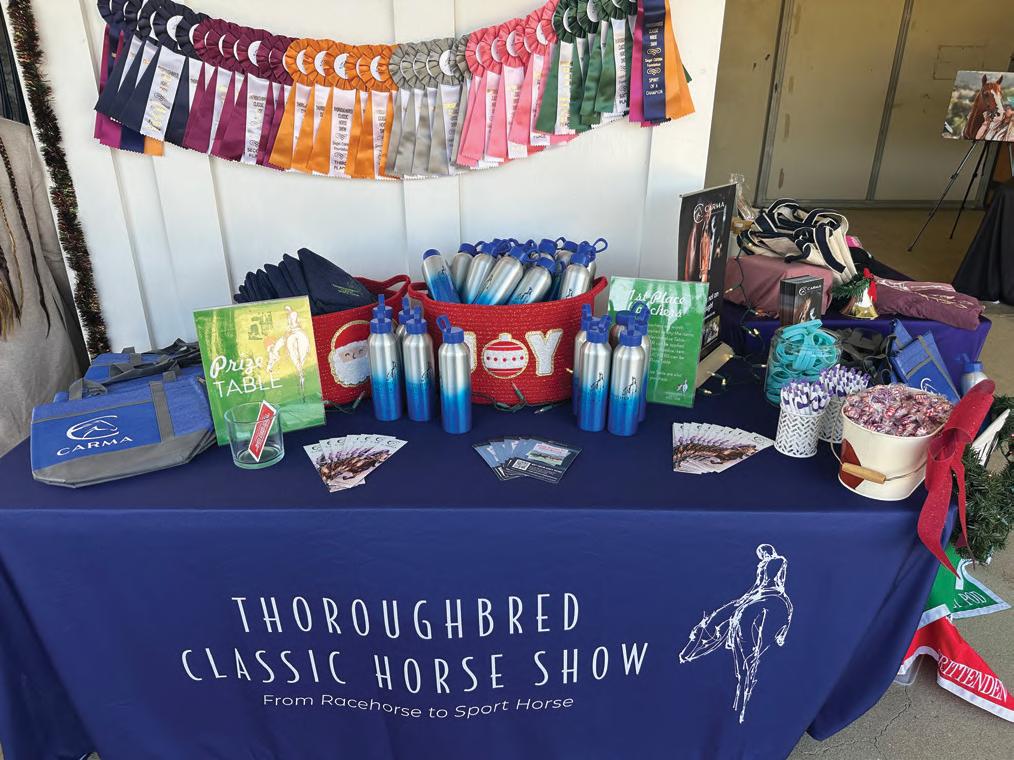

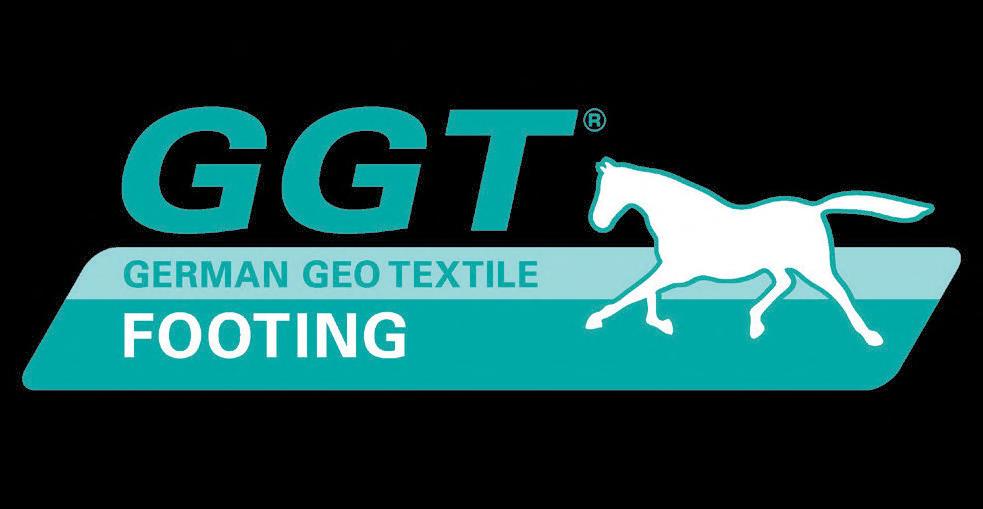

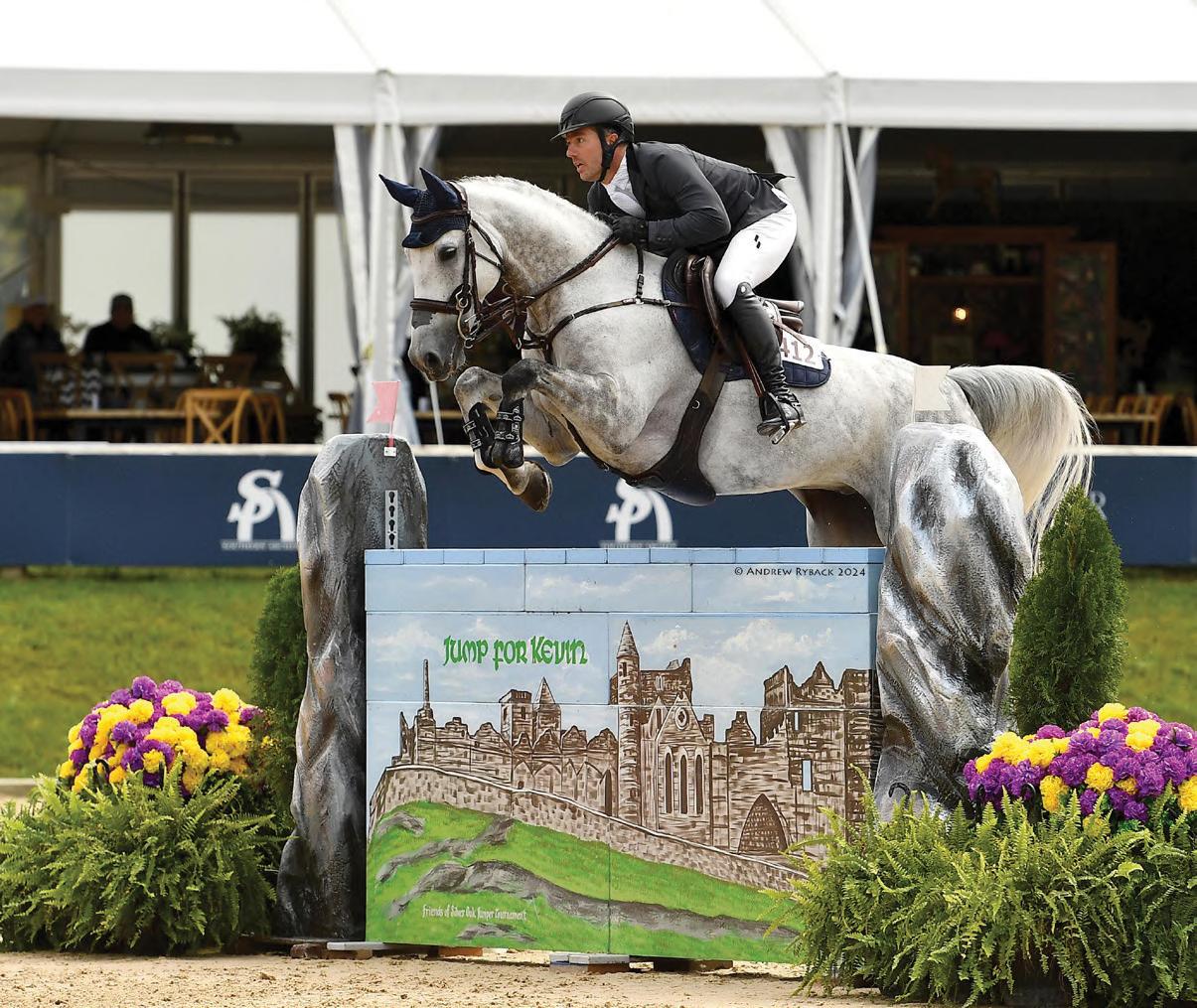

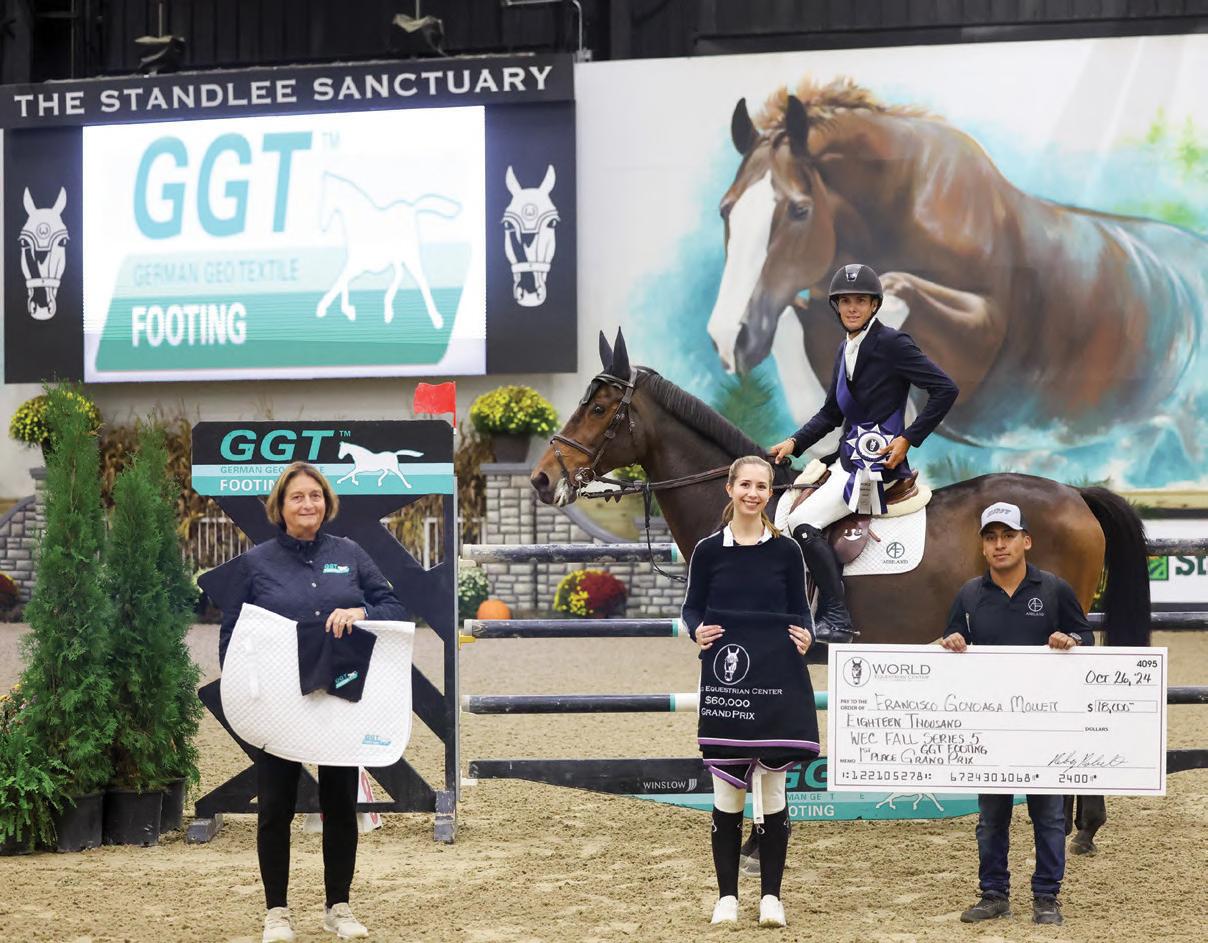
1 Mathijs Van Asten of The Netherlands soars over the open water with Cassina Dior • 2 Team USA’s Mclain Ward celebrates jumping clear with Ilex • 3 Charlie Jones, Harry Charles, and Jessica Mendoza represent Great Britain in the Longines League of Nations’ athletes parade • 4 Lillie Keenan rides Argan De Beliard for the U.S. • 5 U.S. Olympic Gold medalist Mclain Ward walks the Longines League of Nations course• 6 Multi-time Grand Prix champion Aaron Vale (USA) and Carissimo 25 show off their athleticism • 7 Team USA: McLain Ward on Ilex, Laura Kraut riding Dorado 212, Lillie Keenan aboard Argan de Beliard, and Aaron Vale riding Carissimo 25, led by Chef d’Equipe Robert Ridland, earns victory on home soil
ANDREW RYBACK PHOTOGRAPHY
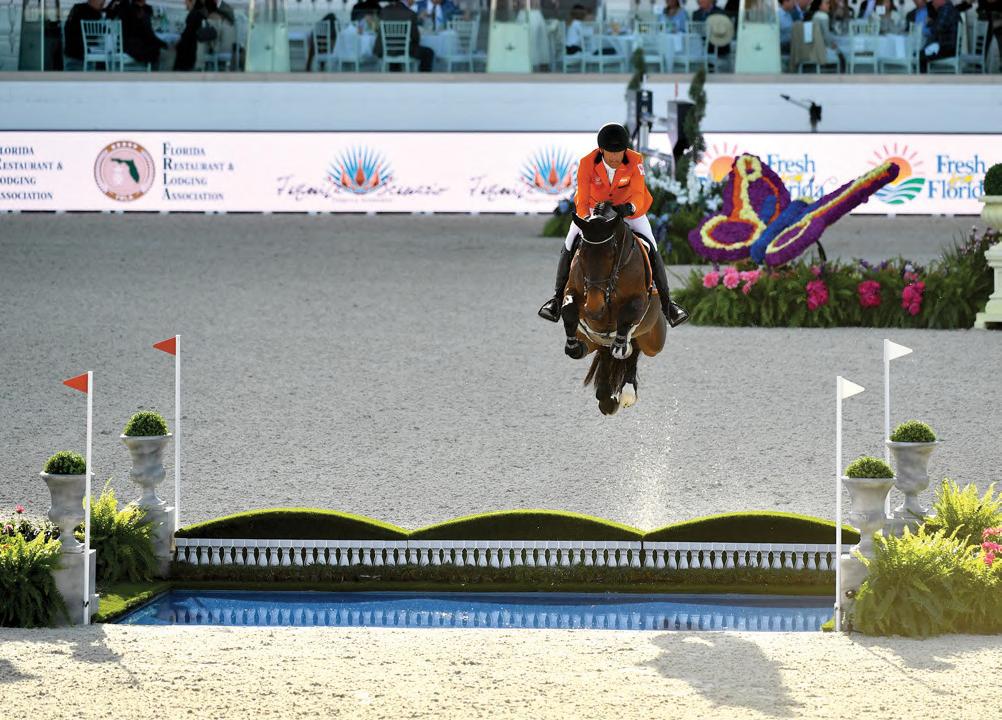
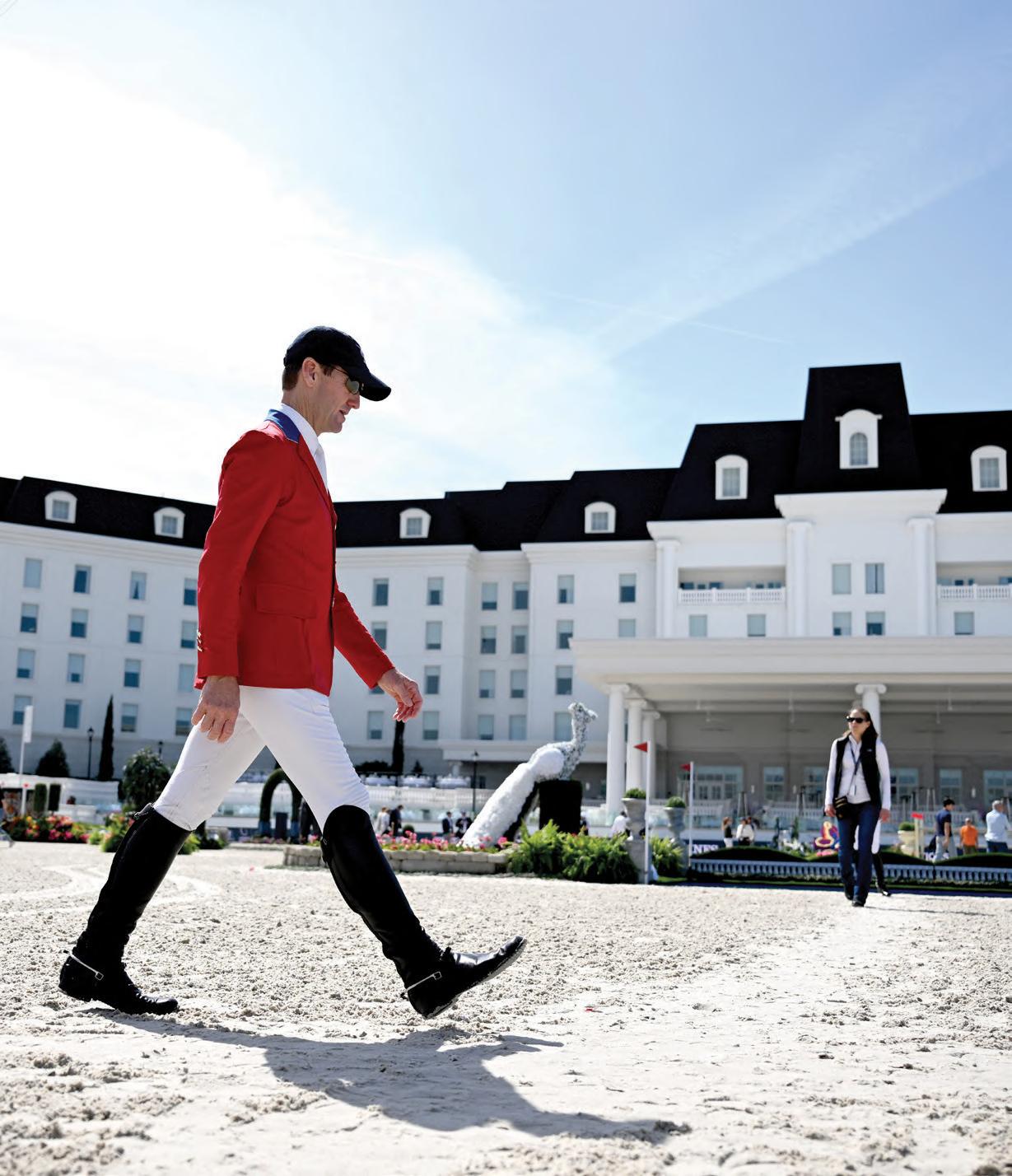
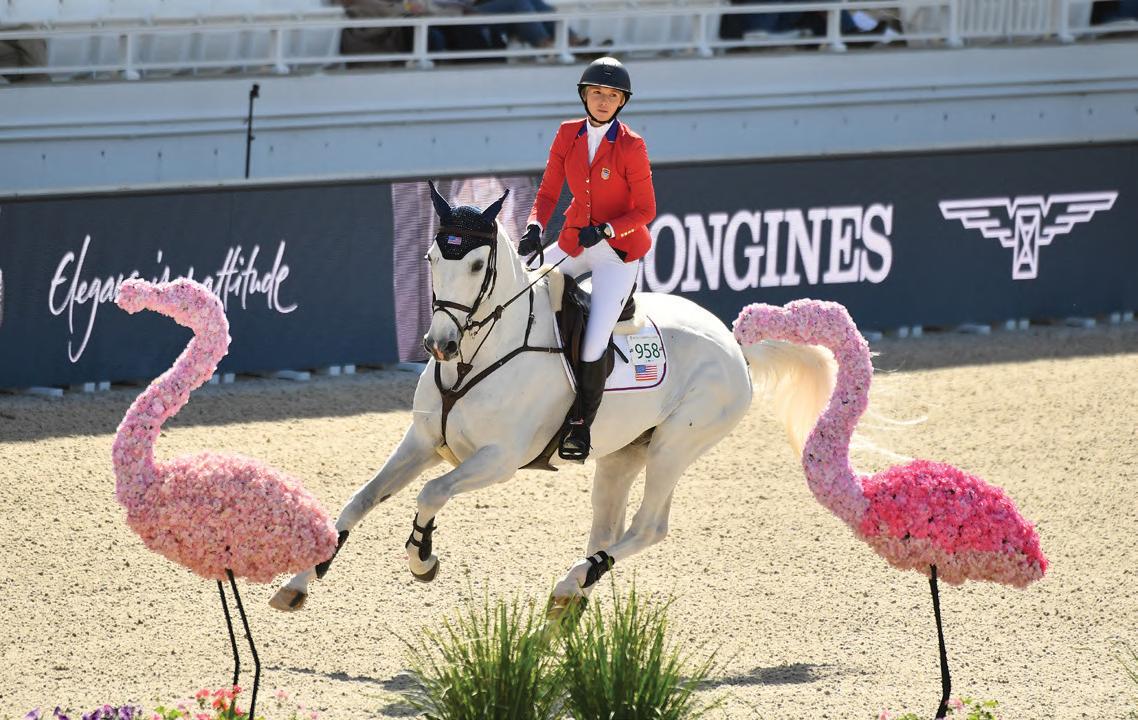
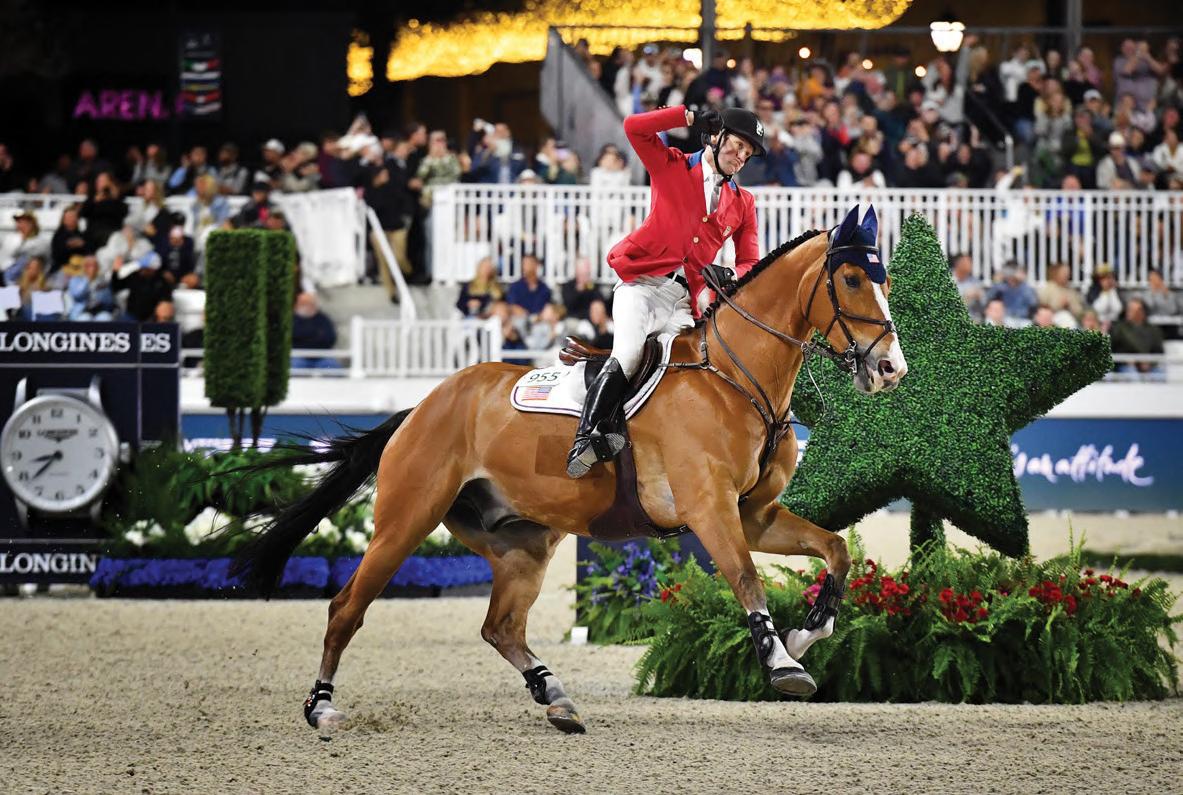


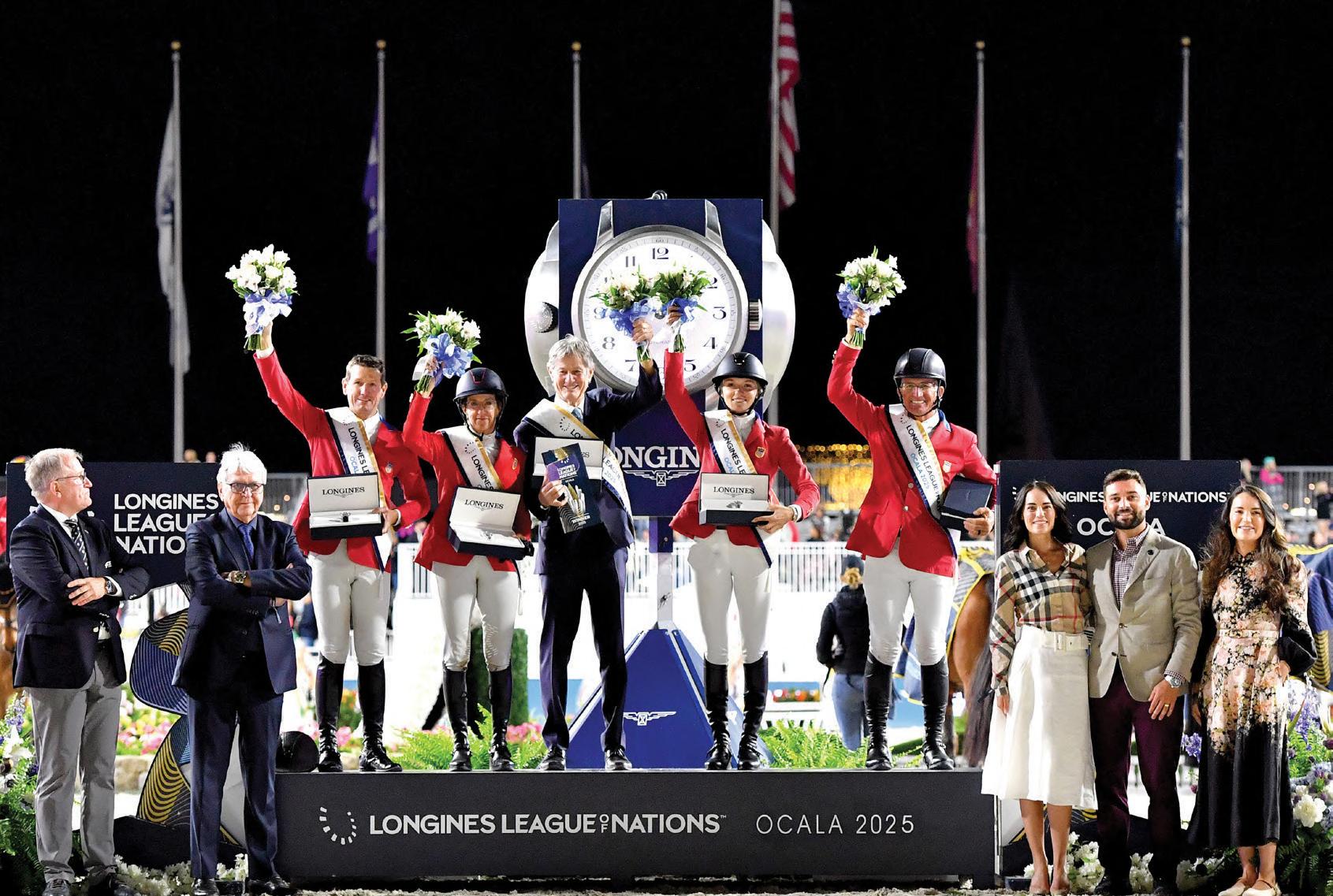

The legends of our sport are all on the Plaidcast. Are you listening?





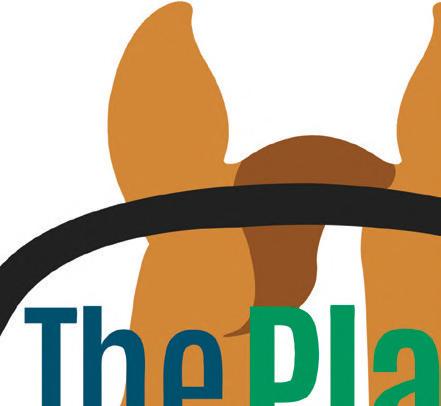






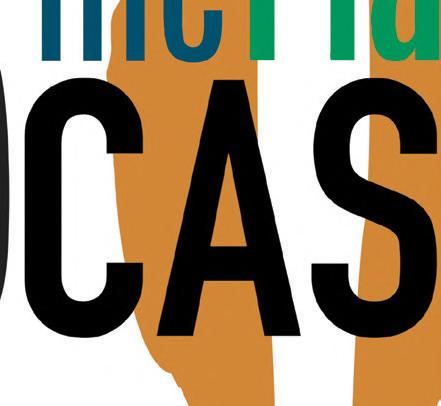
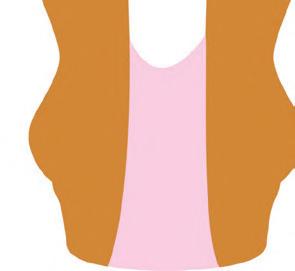












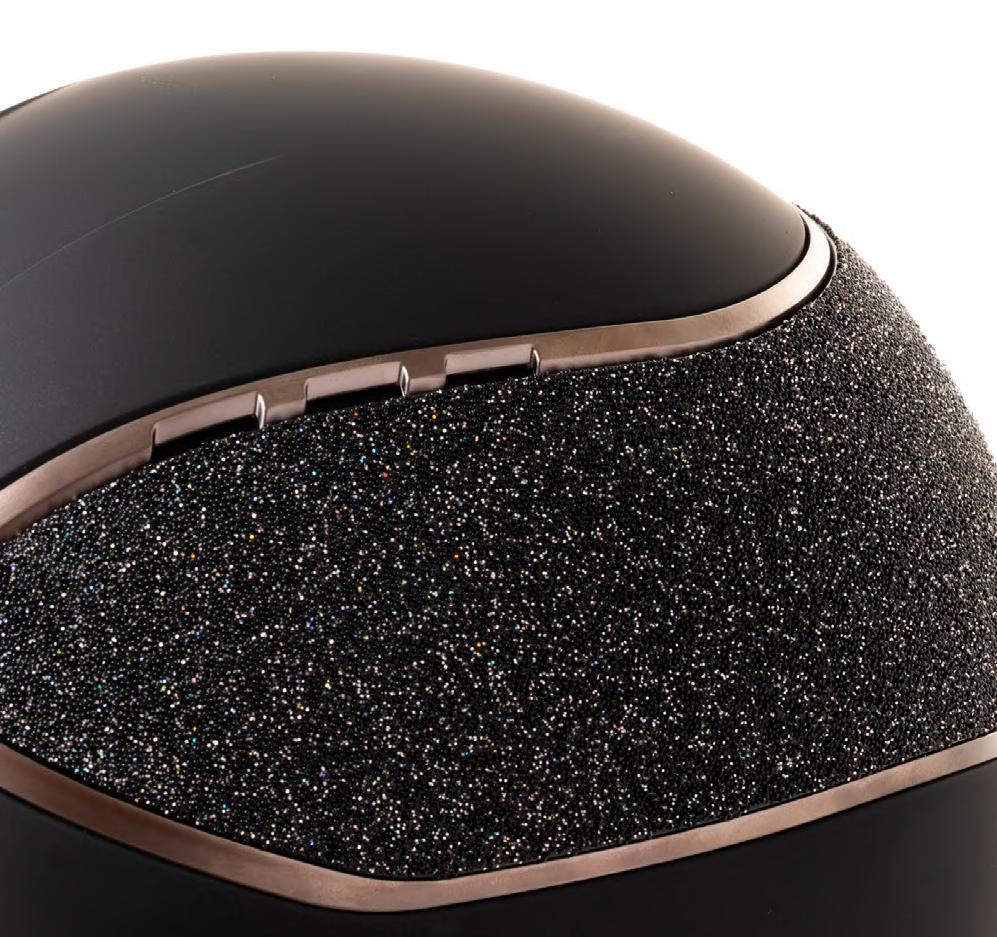



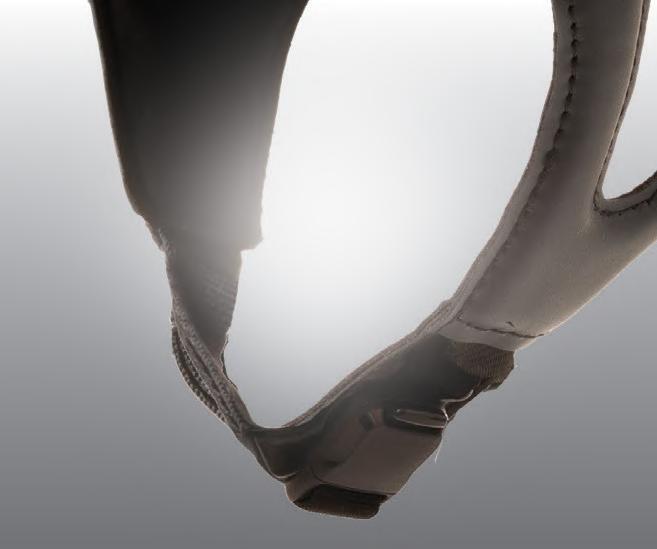

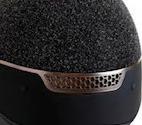
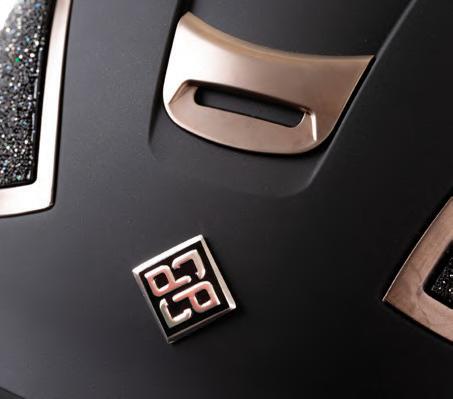


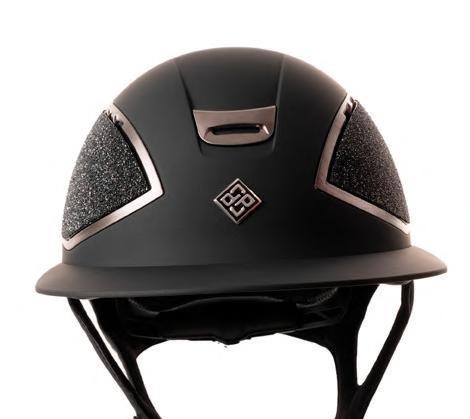
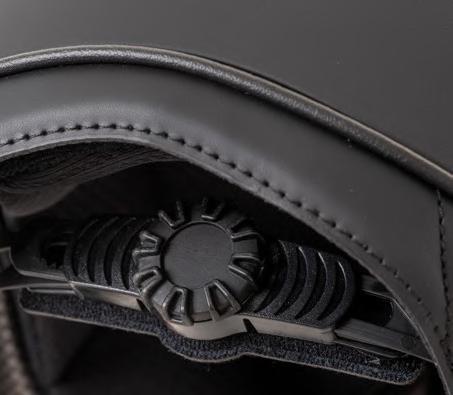


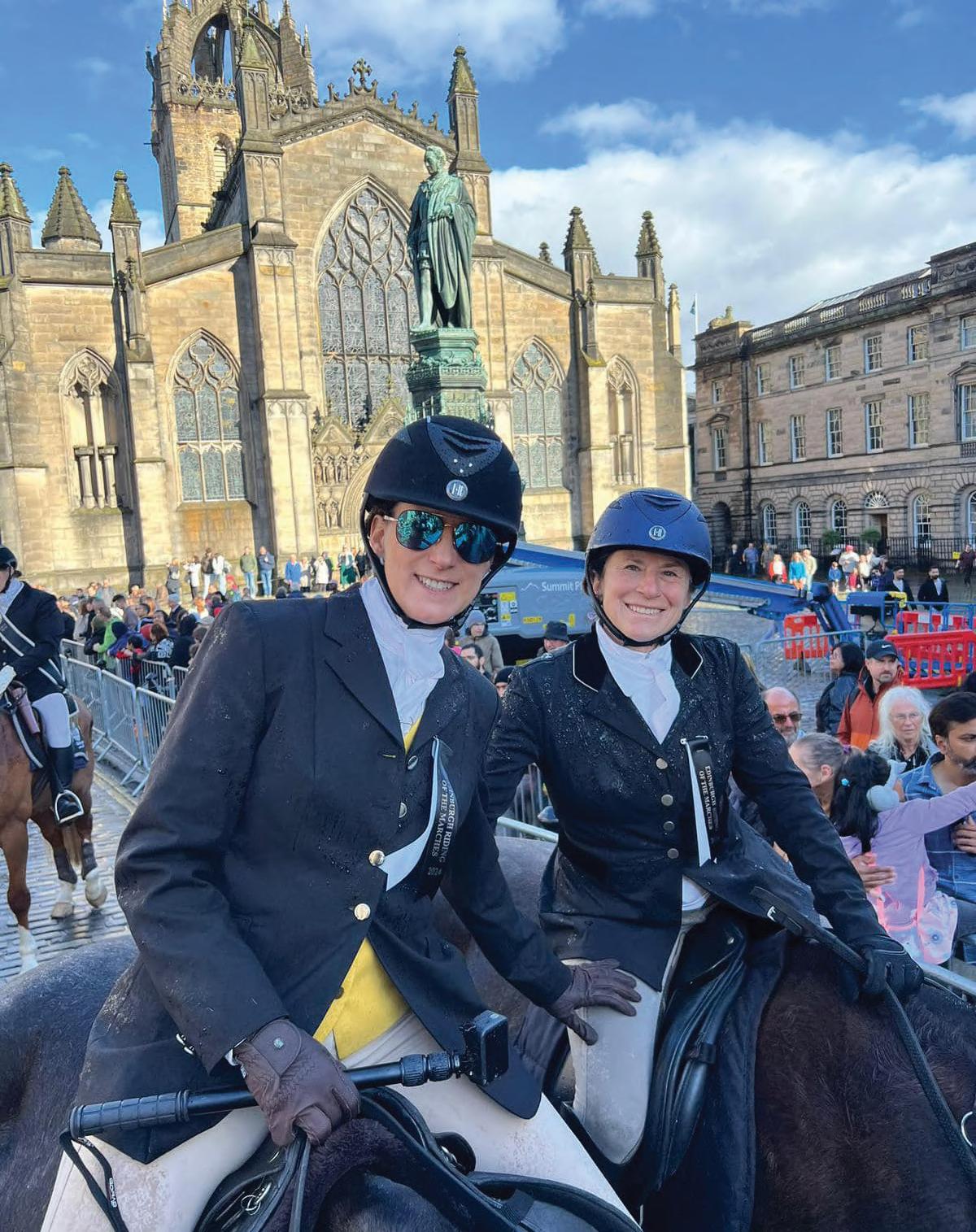

ACTIVE RIDING TRIPS is an equine travel agency committed to the environment, animals, and small businesses while continuing to branch out all over the world. Founder Stacey Adams has just expanded her Stanfordville, NY operation to include o ces in Australia and France, bringing the joy of horses and travel to even more people.
Every experience that Active Riding Trips o ers has been personally visited and evaluated by Adams. Not only does personal investment go into selecting other businesses to partner with, but it is also a personal guarantee that destinations and activities are vetted to the top of safety and wellness standards for both horses and people.
Adams says, “We go places rst to ensure the quality before we ever turn around and send clients there. Of the things that we inspect when we’re on a trip, the most critical piece is the horses.” As a horsewoman rst, Adams knows no vacation is a good vacation if the horses are in poor condition.
“We’re looking at the total body condition and at how the horses act toward us and each other. How do the guides interact with the horses? Are they giving them baths at the end of each day? We’re looking for horses that are 100% taken care of.”
Clients of Active Riding Trips never have to question the welfare of the horses; instead, they can fully embrace and enjoy the equine travel experience. “One of the things that is so nice about getting o ine on a riding vacation is feeling that you have a wonderful, internal, and intrinsic sense of what makes that area so special. Because otherwise, why would you bother leaving home?” says Adams.
Part of that respect for the area is Active Riding Trips’ “Leave No Trace” motto. If guests stop somewhere for lunch or unpack overnight, later, when they leave, it’s as if they were never there at all. Sometimes, that looks like leaving the site in better shape than they found it, which is all tied back to the values of Active Riding Trips: “Bring awareness and invest by visiting responsibly, and come away feeling like you’ve made a di erence in the local community.”
When Active Riding Trips was starting, Adams invested in her local area in New York. Even now, as she’s expanded globally, she focuses on supporting small, local, eco-centric businesses, many of which are women-owned like her own, and fostering a network between them and her clients.
“It’s been incredible to meet other dynamic women out in their areas, all making a di erence. It’s empowering
to know that the people we’re sending to them support them nancially and emotionally because they’re making connections and becoming friends. Everyone’s network is getting bigger,” says Adams.
Active Riding Trips o ers over 95 adventures spanning nearly two dozen countries for various levels of riding, family needs and interests, and climates. Agents are thoroughly invested in each individual’s experience, and o en, once guests travel somewhere with Active Riding Trips, they come back to the agency repeatedly.
“Bring awareness and invest by visiting responsibly, and come away feeling like you’ve made a difference in the local community.”
—STACEY ADAMS, FOUNDER OF ACTIVE RIDING TRIPS
“We’re very particular about staying in touch with clients. We spend a lot of time prepping them before they go. We check in with them to ensure they’ve arrived safely–although we would know if they didn’t. We check in with them midway through their stay, not to interfere, but make sure their expectations are being met,” says Adams.
When guests book solo trips, unshakable bonds are formed. Adams says, “Something magical about the equine travel industry is that people will book a trip on their own, spend a week riding with other people that they didn’t know before, and all of a sudden, they’ve created their own group of travel friends, and they’re making future travel plans together.”
Even friends who met on trips but live across the world from each other still
unite annually on Active Riding Trips adventures. Travel urges people to unite and encourages storytelling–a wonder Adams has seen countless times yet never ceases to amaze her.
For horse people, among which vacations are not common nor o en relaxing, the perspective Active Riding Trips brings them is this: “You can’t be the best and o er the best to your employer, to your family, and even to yourself unless you carve out time to refresh. Women, who are 85% of Active Riding Trip adventurers, feel particularly guilty about taking time o and prioritizing themselves, but when they do, they return as a force.”
Vacation skeptics also worry about the lack of cellular signal in rural destinations. Adams says, “People are terri ed not to have their phones working.” So, she educates people about how liberating being cell phone-free can be.
“Everyone is attached to their electronic leash,” says Adams, “When we help them just take a breath and let that go, it adds a whole amazing, wonderful aspect to the restorativeness of the trip because they have to disconnect. They’ve completely gone on vacation.”
While originally built around bringing established equestrians together, Active Riding Trips also introduces not yet equestrians to the realm of horses through beginner-level adventures. Adams is an integral part of boosting the license and integrity of the sport and also gives back to the community wherever she can.
Active Riding Trips collaborates with True Ranch Collection, a series of ranches across the United States that o er dude ranch experiences, wherein a portion of the booking funds are donated toward the historical preservation of the land. Additionally, Active Riding Trips o ers an exclusive multi-day training program with paralyzed Olympian Kevin Babington at his farm in Florida. Proceeds from that experience go towards the Kevin Babington Foundation.
Adams says, “We’re all part of the community, and giving back as stewards of equestrianism is important. It will always be bene cial for us to continue doing so.”
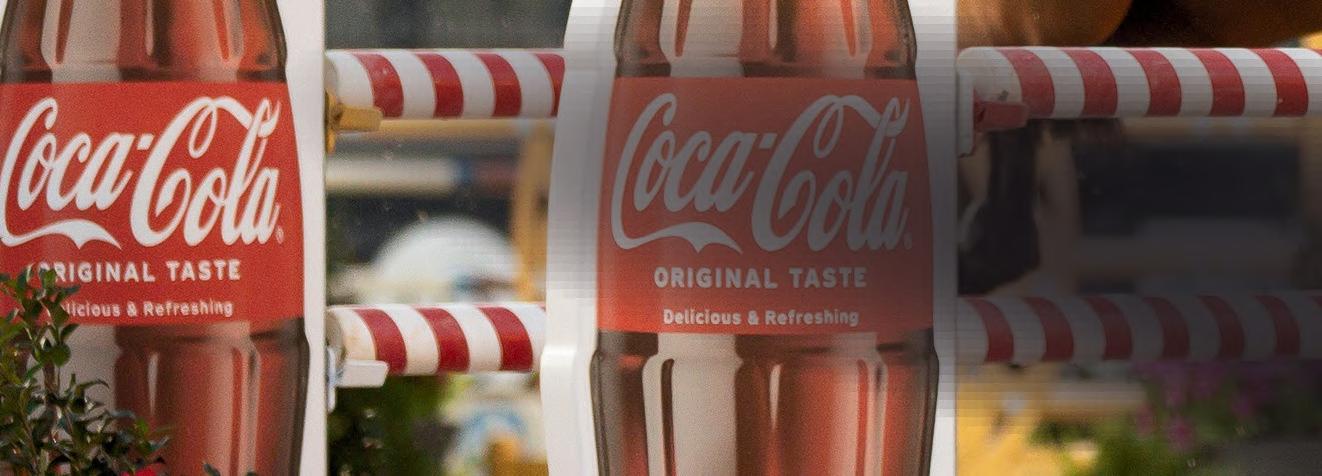


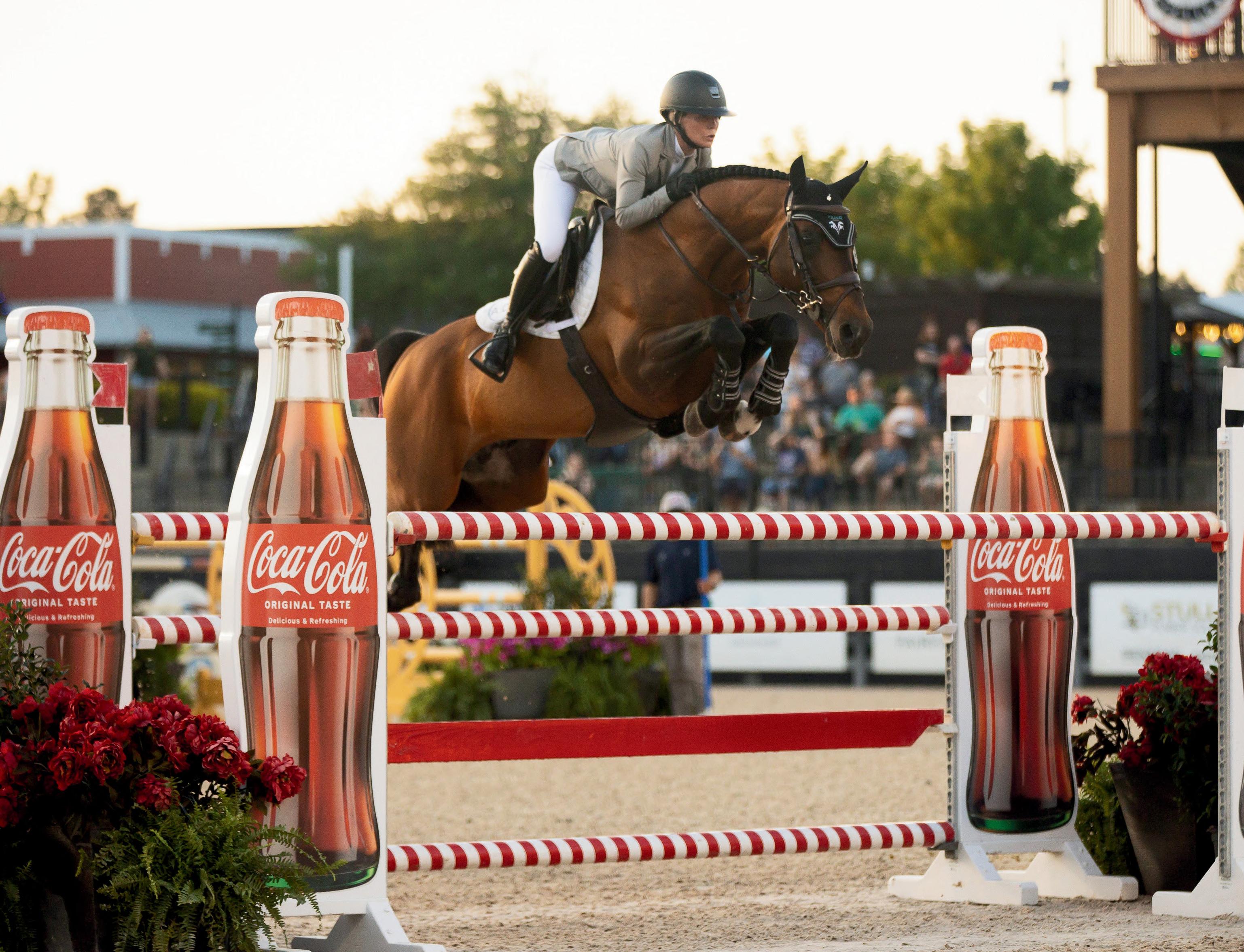




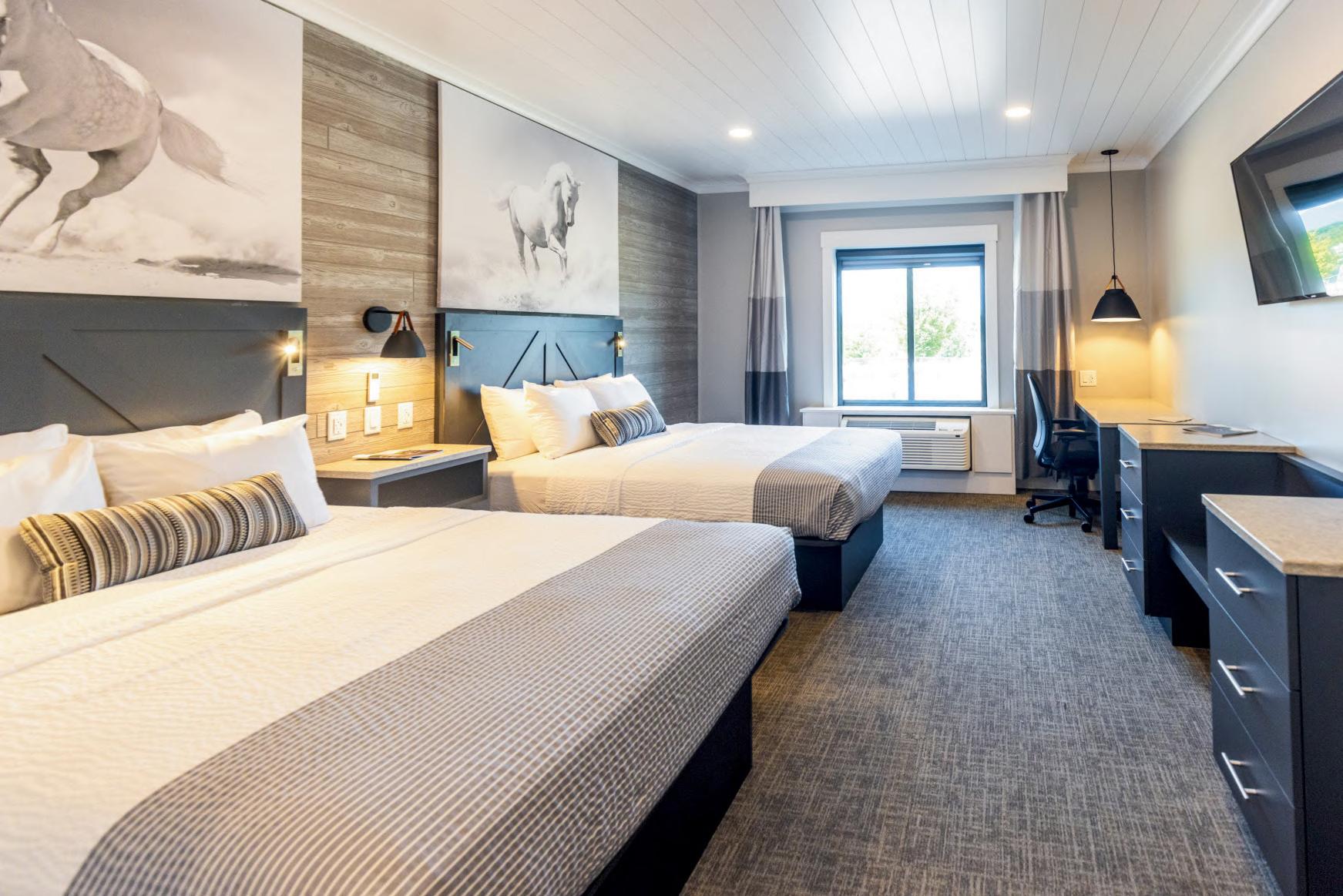
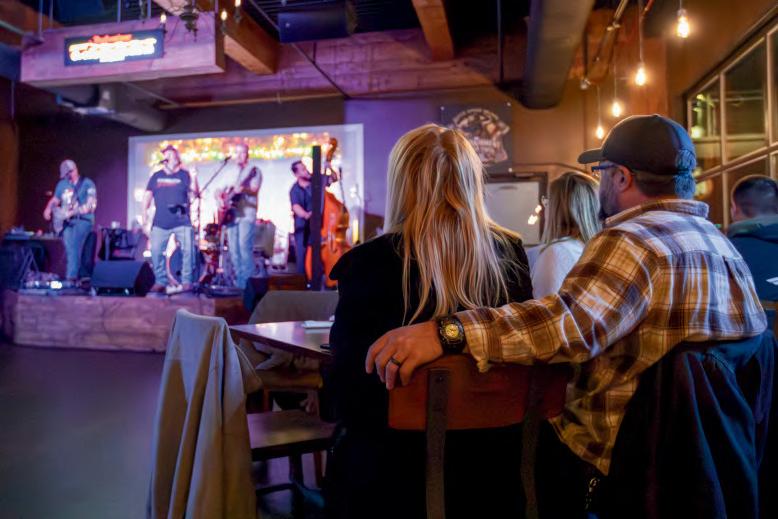
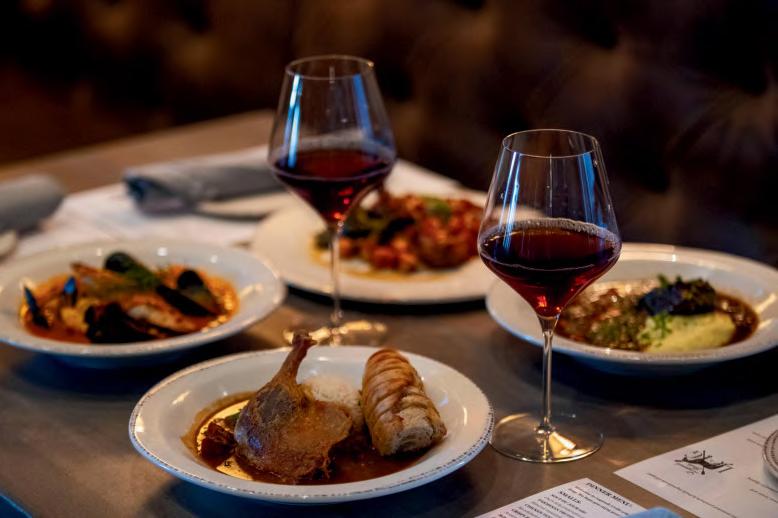
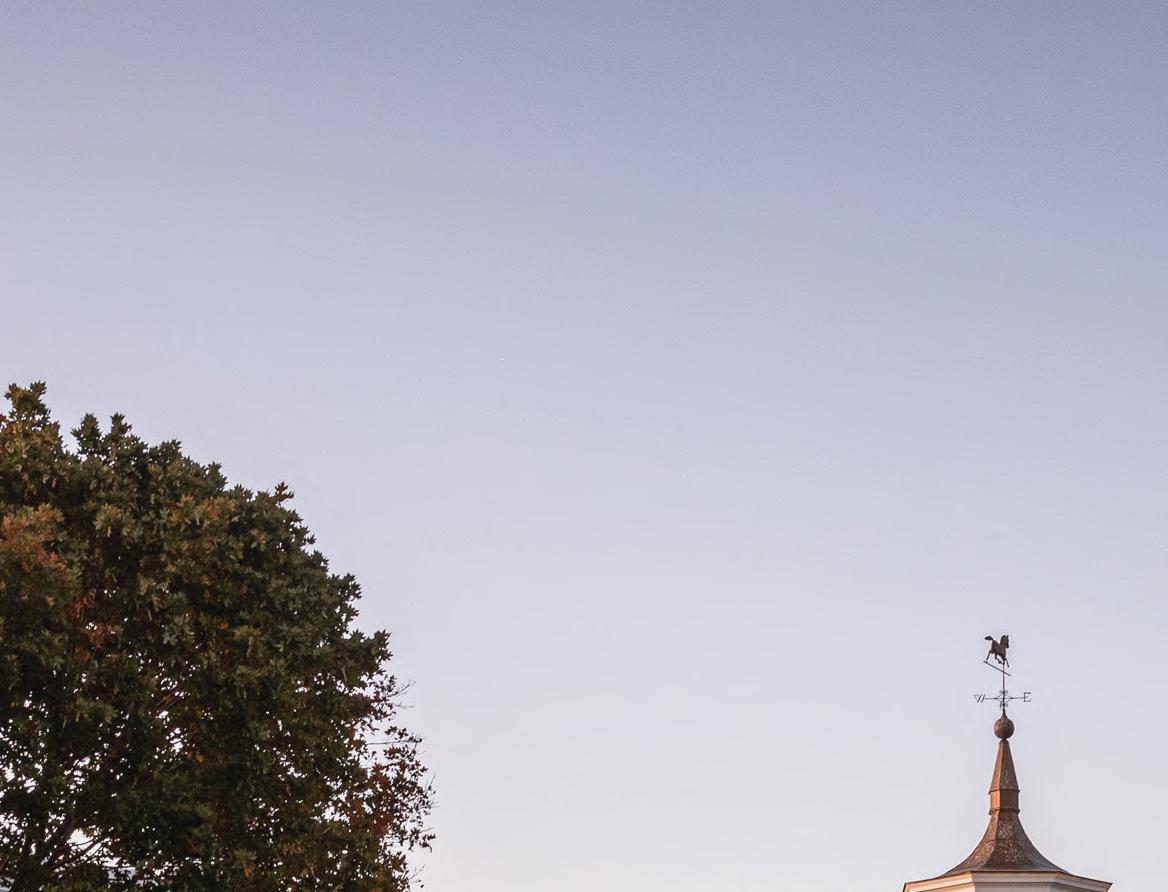


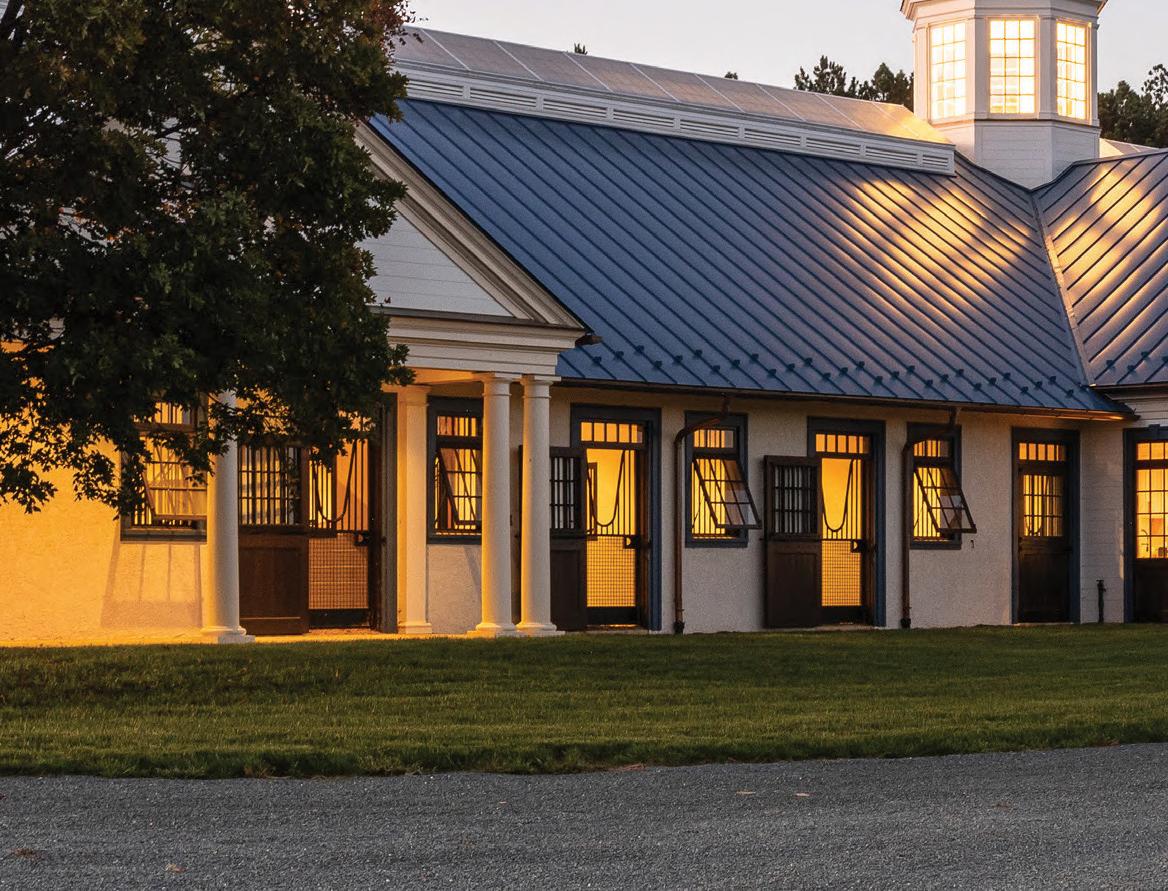
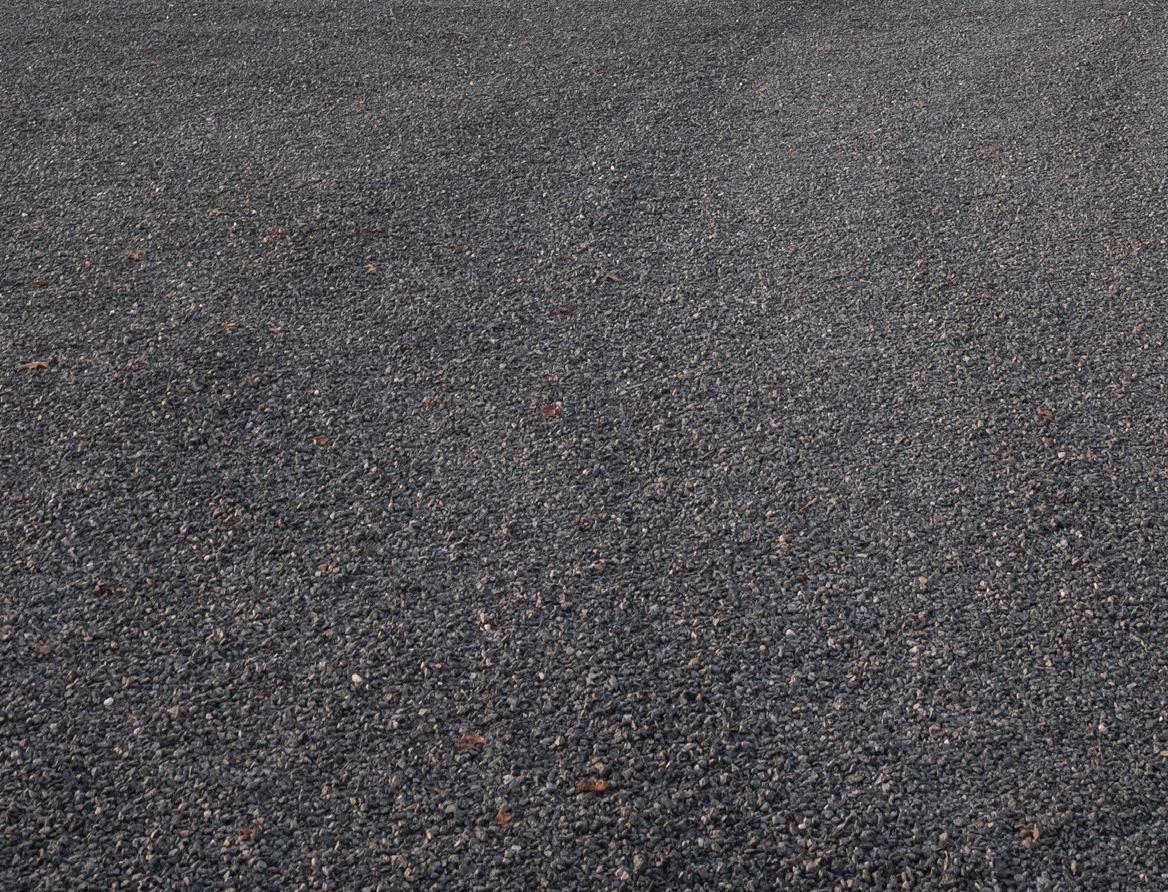
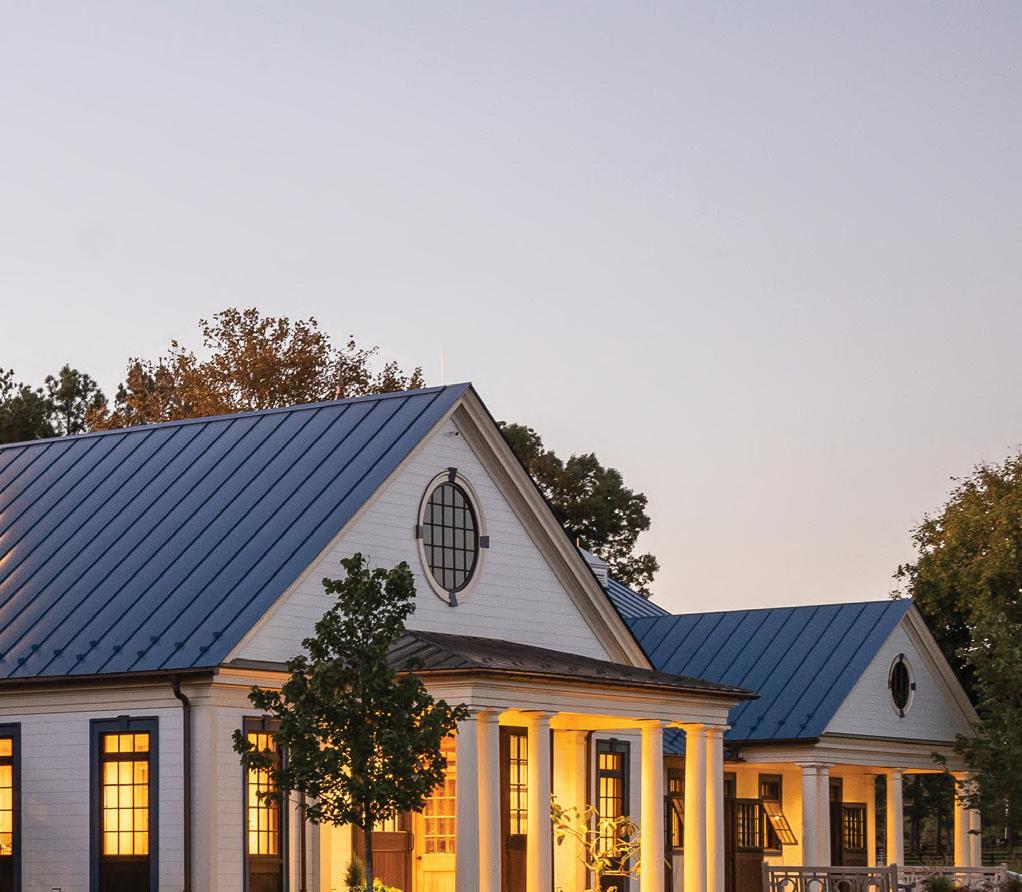
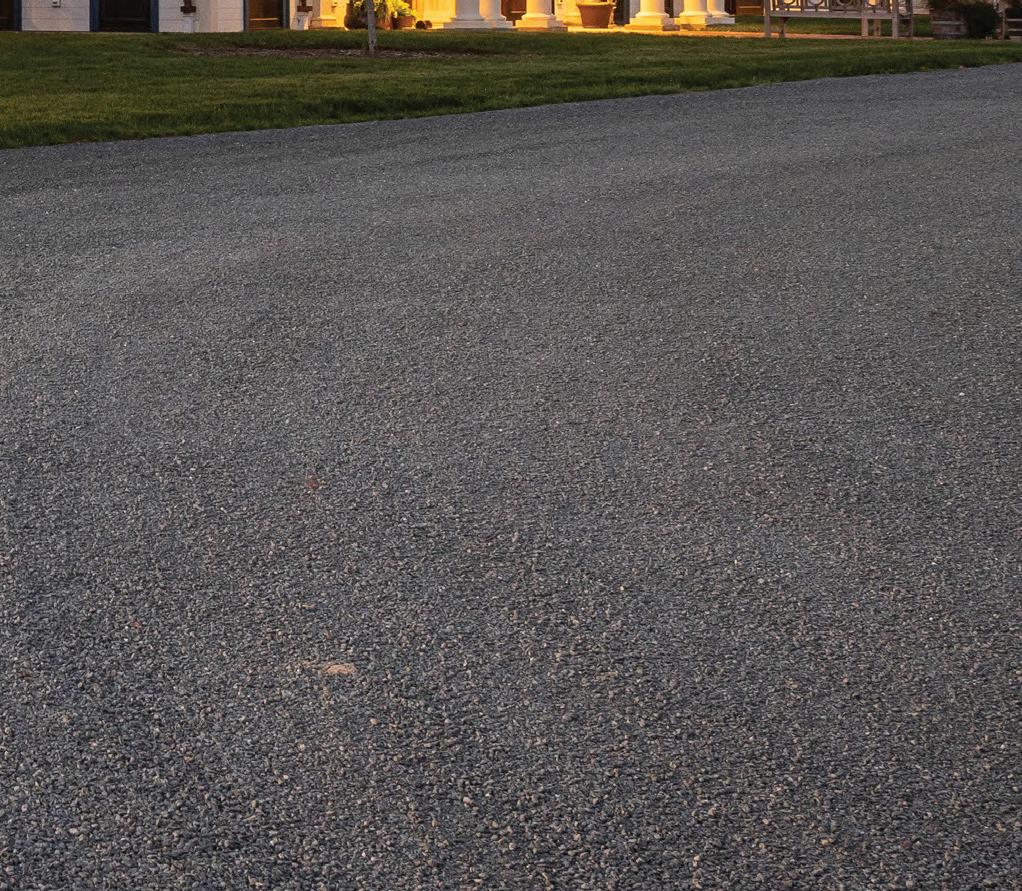
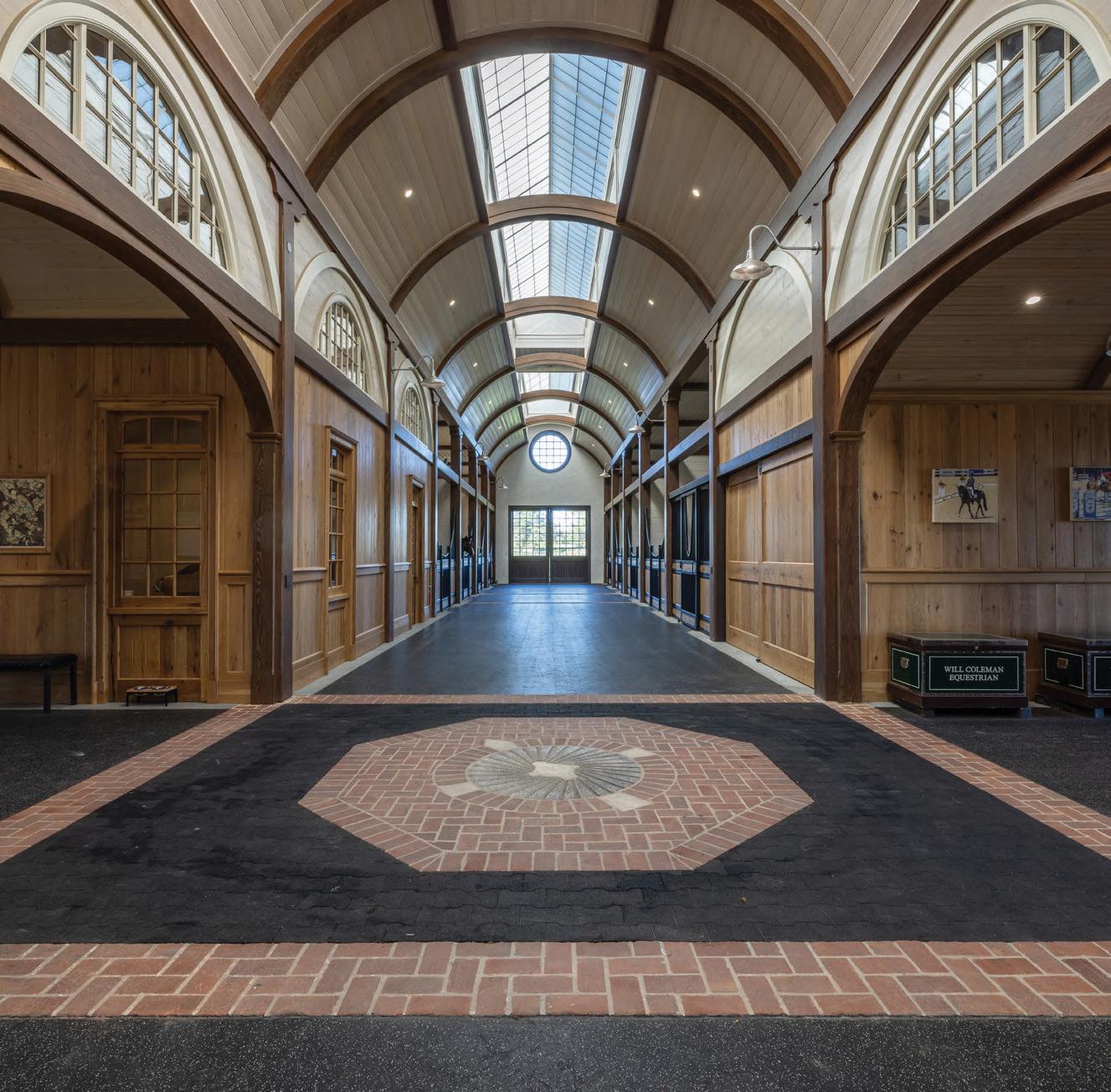

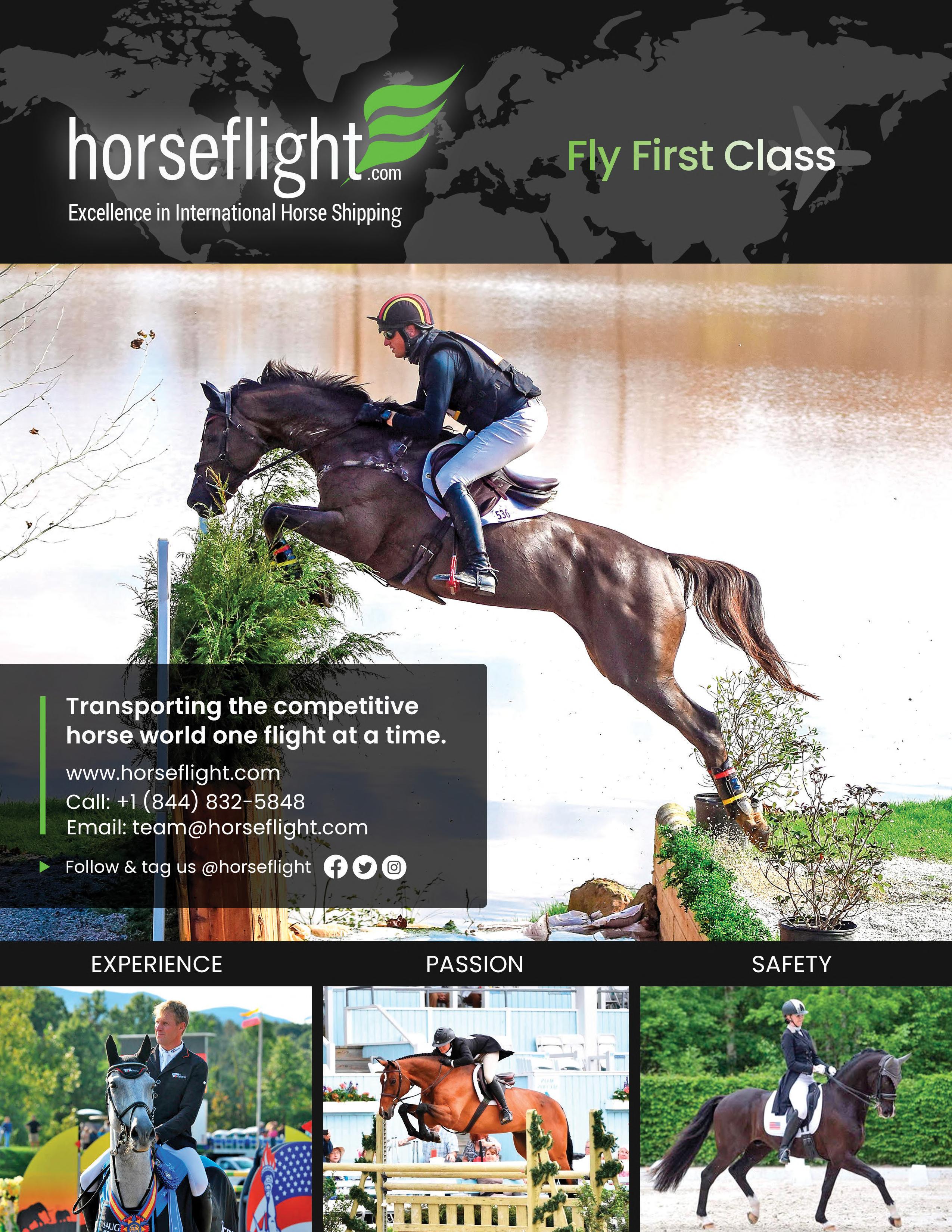
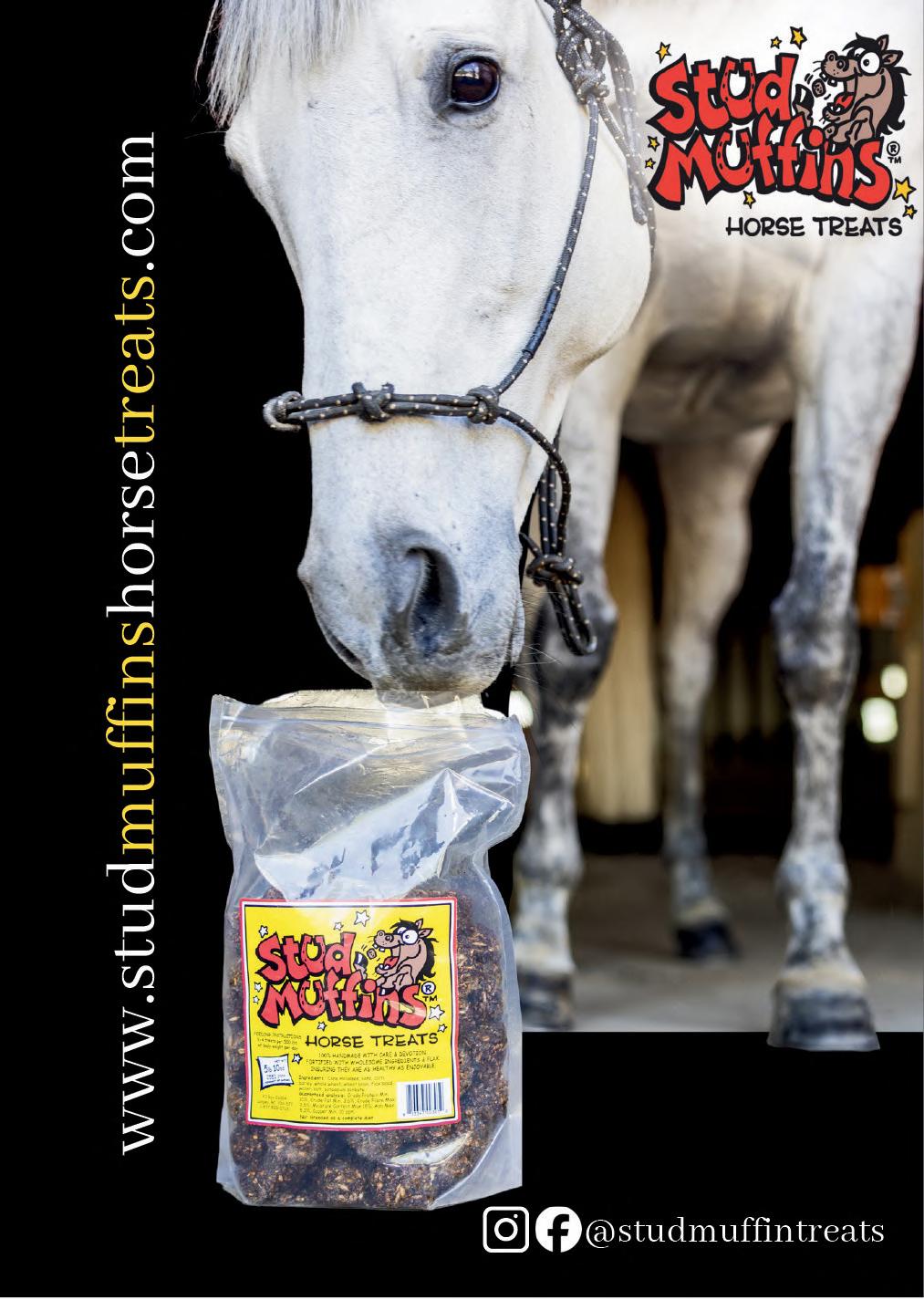
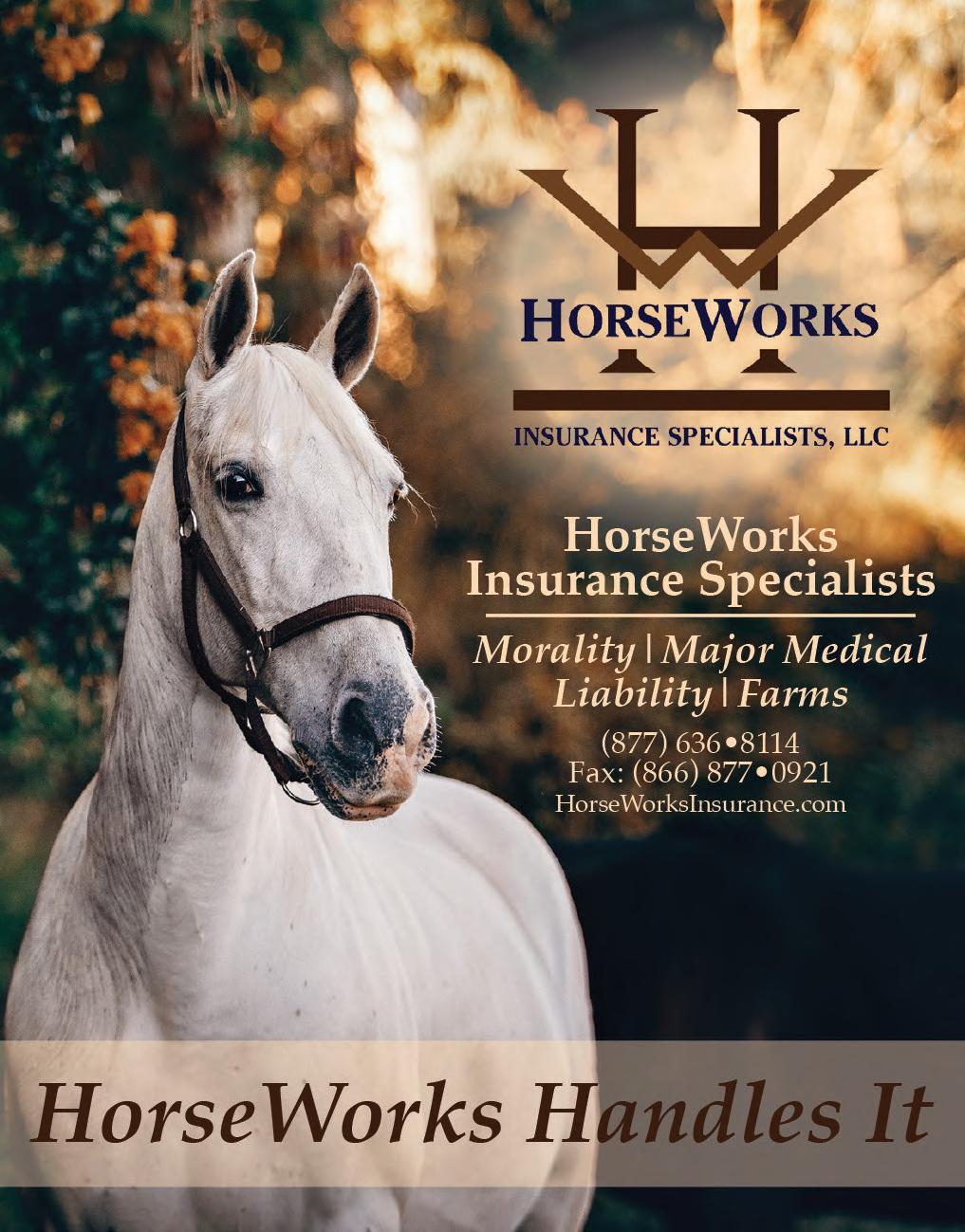
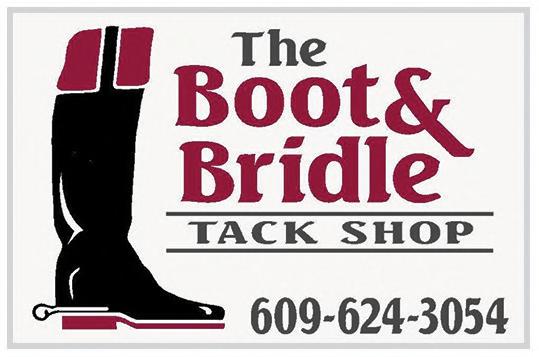



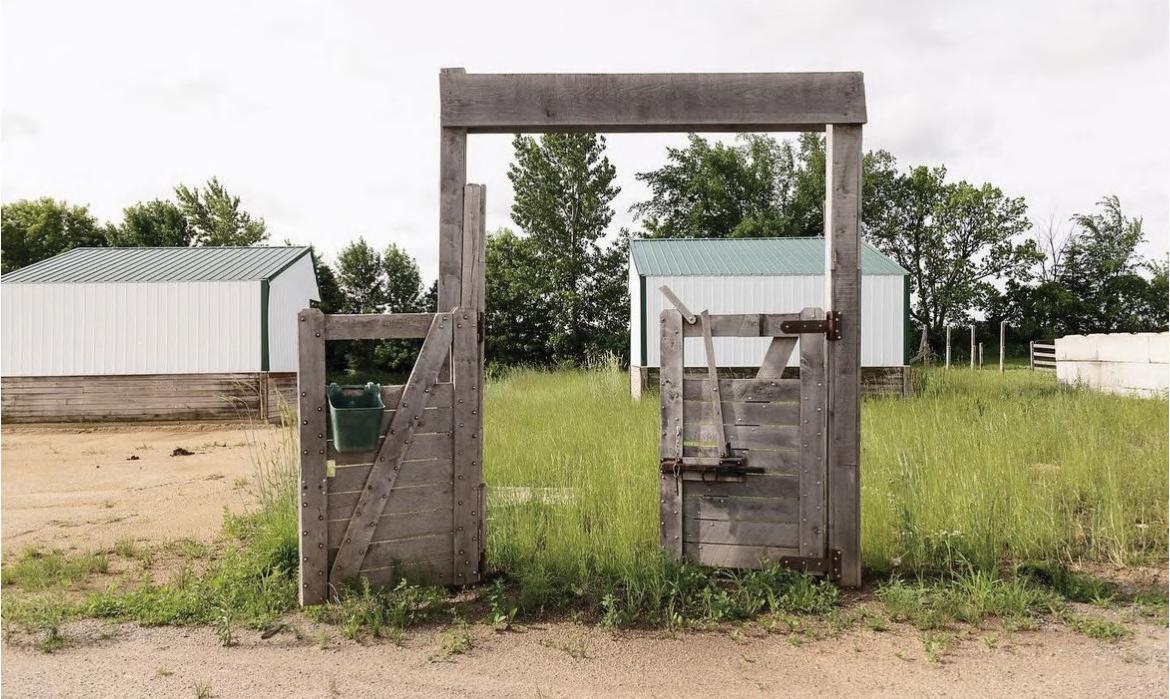

WORDS: MARLEY LIEN-GONZALEZ
PHOTOS: MADISON MONROE
UNLIKE MOST products people sell, Holly Johnson hopes hers is never used. The founder of FireHorse Rescue Kits, Johnson speci cally designed each to combat barn re risk and escape re emergencies when horses are involved–and ideally sit on the shelf forever. In the same way that re ghters wish for uneventful workdays, Johnson wants FireHorse Rescue Kits to serve as peace of mind for equestrians and a symbol of re safety awareness rather than be used as the life-saving instrument it is.

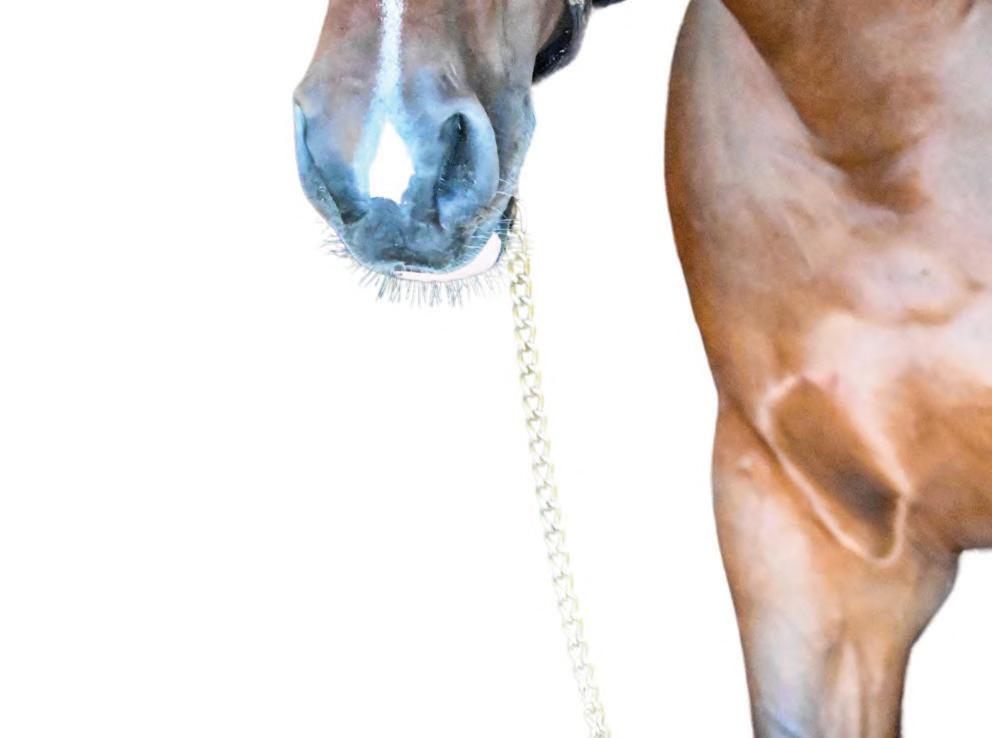
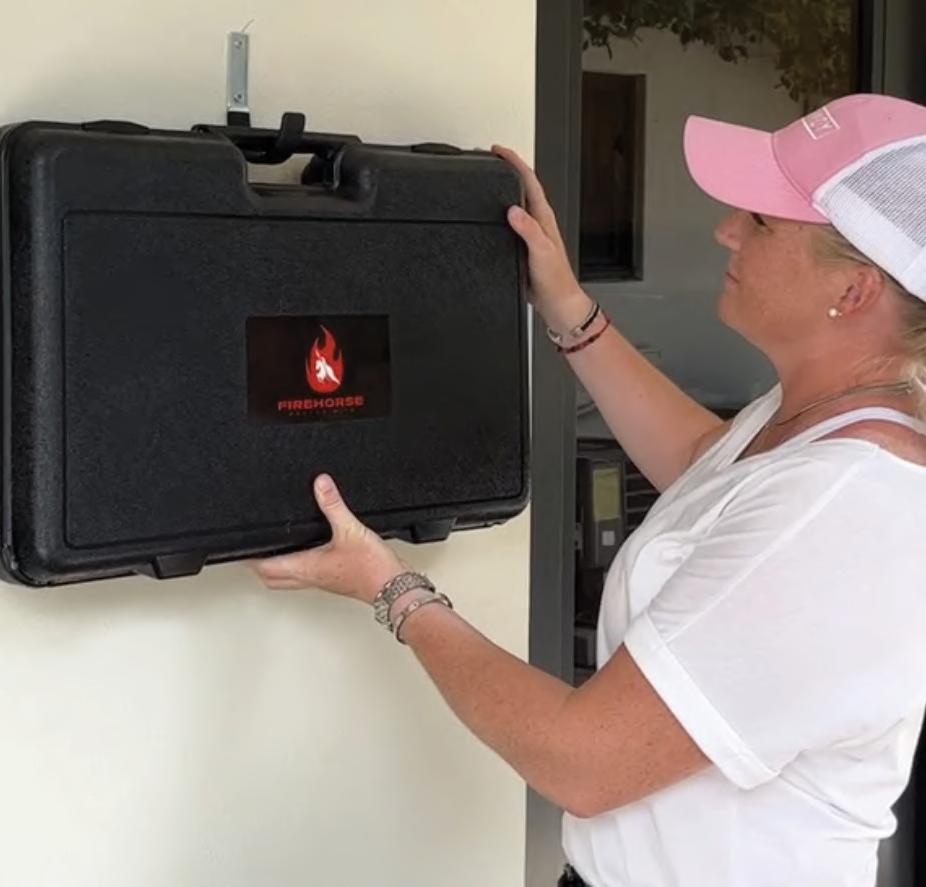
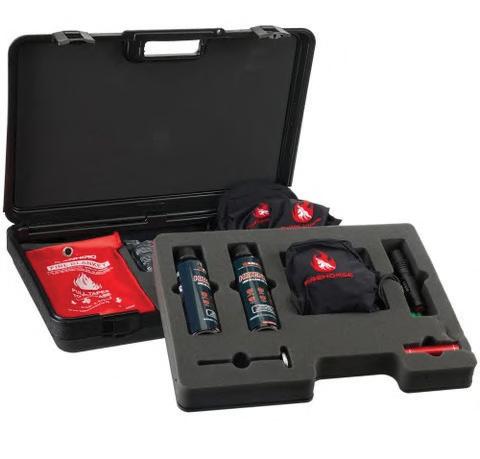
When FireHorse Rescue Kits are called to action, they’re fully equipped with elements carefully designed for barns by a horse professional in collaboration with real re ghters. The kits fortify barn safety and guard over equine lives when faced with unpredictable crises. While many have re safety in their home barns, the kit allows easy portability on the road and extends access to live saving tools when in unfamiliar places.
FireHorse Rescue Kits are in a market of their own–bridging a gap between emergency responders and horse knowledge. Johnson says, “Most re ghters are not horse people. They don’t know anything about horses or have the training to handle them.”
A disconnect that was a problem, Johnson realized, when Johnson brought FireHorse’s co-founder, a re department Battalion Chief with more than 20 years of experience, to the barn for the rst time and the re risks immediately jumped out at him. From fans running to thousands of pounds of ammable materials stored in open air, his natural response to add more re safety to the barn gave birth to the Rescue Kit.
Eye Candy’s Manager Pauline Watterlot installing FireHorse Rescue Kits at their Wellington, FL facility
“Ryan lives in Wellington full time, so he knows how hot it gets, especially in summer, but the fans really threw him o . When fans run 24/7, it’s a huge imposition on the electrical circuits, meaning there’s a re risk,” Johnson explains.
Coupled with the fact that ammable materials like hay are being stored, a barn is a re ghter’s worst nightmare. Factor in that horses don’t always follow the plan, and barn re rescue could unfold as a disaster.
FireHorse Rescue Kits is establishing programs to help train re ghters on what to do when horses get stuck--with the eventual goal of holding seminars as well--grounding a legacy of informedness in areas densely populated with horse farms.
For those who keep horses in more rural areas, who might not get an emergency response as quickly as somewhere like Wellington might, the FireHorse Rescue Kit is designed for ease of use–for anyone to be able to get their horses out of danger.
“You should call the re department as soon as possible, but you don’t always have the luxury of waiting for them,” Johnson says. “FireHorse Rescue Kits can help you evacuate your horses and put out a re that just started. Sometimes, the only person in the barn might be over 60 or a child, and maybe they can’t operate a re extinguisher. Our two extinguishers in the kit are like hair spray cans; they’re super easy to use–point and shoot–and lightweight, single-use cans that are easily replaced.”
Together with Nemesek, Johnson anticipated everything that could go into the kits to make the best outcomes possible–addressing what barns might not have on hand or in a functioning condition. The contents of the FireHorse Rescue Kit are sealed against the elements by its resilient case, promising customers close to a lifetime warranty. Says Johnson, “There’s no chance of you opening the kit and not having the tools you need.”
Cra ed in the USA, the FireHorse Rescue Kit is thoughtfully laid out with items to extinguish small ames and remove and
secure horses. “Our goal was to make a multifaceted kit that addressed several threats, whether it be preparedness for the worst case scenario, to putting out a re, or then a er the re, being able to manage the horses, especially if you don’t have a structure anymore,” says Johnson.
The FireHorse Rescue Kit case is impact-resistant and very sturdy. Johnson says, “It has custom-cut foam inside for every piece, so there’s little intrusion for dust or water. Wind and rain don’t pose any issue.”
Inside the kit, two re extinguisher cans are right on the top for easy access. There’s a 2000-lumen smoke ashlight that pierces even thick smog at nighttime, a hay thermometer that goes up to 220 degrees Fahrenheit (when reached, you’d need to call the re department), and an industrial strength glass breaker.
The innovative re blanket can help put out small res, and Johnson added re gloves to touch hot metal. “There’s a story of one equestrian center, where people rushed to let horses out of their stalls but found the re had melted or superheated the latches,” says Johnson. “Our gloves are designed to open stall doors or touch hot door handles and knobs.”
A tie line might be the most versatile tool in the kit–Johnson’s forethought is that it’s crucial to tie horses up in the absence of a structure or create a makeshi paddock to hold horses if fencing has been destroyed so they don’t run back into the barn or a more dangerous situation.
“We want to make sure barns have everything all in one place,” Johnson says.
When barns have experienced a re, they usually rebuild with stronger re safety skills. That doesn’t have to be the case, explains Johnson–anyone can place preventive measures and have a well-established contingency plan among sta . Tragedy doesn’t have to strike before you prepare for it.
Johnson is planning to release an educational book about barn res and how to prepareprep. She lists sta training, practicing re drills, and planning evacuation routes as helpful options to lay the groundwork for an emergency but stresses that one of the most important
things you can do is reach out to your local re department.
“One great thing to do is to call your local re department on the non-emergency line. They can come out and give you what’s usually a free evaluation–analyze your re risk, make sure you’re storing your hay correctly, and things like that.
Johnson is currently focused on spreading awareness and outreach to the community. Inspired by how the equine community came together during the California wild res, FireHorse Rescue Kits donated $100 from every kit sale starting in January 2025 to the people devastated by the natural disaster.
Their partner facility, the Los Angeles Equestrian Center, took in horses and livestock who sought refuge. Since Johnson sent them a kit, the LA Equestrian Center has strongly advocated for FireHorse Rescue Kits and for spreading re safety awareness.
Handheld Extinguishers: Each kit includes two (2) easy-to-use, point & spray extinguishers for small res, especially hay, shavings, or feed room ames. An excellent alternative to more cumbersome, full-size extinguishers, these also require less maintenance and will be readily available in the case.
Firehorse Equine blindfolds: Specially designed for our Rescue Kits and found nowhere else, these horse blindfolds wear like a y mask and restrict the horse’s vision up to 80%. These blindfolds are intended to allow equestrians or rst responders to remove animals safely and reduce injury risk and panic by removing visual stimulation. Velcro closure, 5 per case.
Across the county, other showgrounds have adopted FireHorse Rescue Kits as their O cial Rescue Kits–”We’re not disparaging anything that these facilities are already doing for re safety, but we’re bringing that next level security and preparedness,” says Johnson.
Wellington International is one, and their sta and night-check teams can quickly locate and are familiar with the kits. At the Kentucky Horse Park, FireHorse Safety Kits hang in the Mounted Police barn and stables with up to 70 horses living in them.
“The Kentucky Horse Park is a staterun facility,” says Johnson, “They don’t take just any sponsor. They have to have a good reason behind it, and they were open to the idea of our kit. It’s been exciting to have a chance to work with them.”
The kit is an investment with the promise to perform up to the power. “We’re just a startup now, but we’re hoping to make
Fire Gloves: Heat resistant to 1472 degrees and ame retardant, these gloves are made of a mix of breathable cotton knitting and double-layered ber with silicone for grip and re resistance. One pair per kit.
2000 Lumens Flashlight: Whether piercing smoke or darkness, this handheld light is easy to operate and lightweight. Constructed of high-quality aluminum alloy and reinforced for exceptional water resistance in inclement weather, this light will shine bright in all conditions. Powered by 4 AAA batteries (included). One per kit.
Fire Blanket: Industry standard safety tool rarely found in barns! These blankets provide easy and safe re suppression when water or water-based extinguishers
aren’t an option (i.e. for electrical res). One per kit.
FireHorse Rescue Kits more a ordable for everyone down the road,” says Johnson.
She’s already working on expanding the product line–on one hand, in partnership with vet clinics and pharmacies to get life-saving medication in the case of an emergency colic, and on the other, making a compact FireHorse Rescue Kit for small barns with just a handful of horses. Johnson says, “We’re pushing hard on the educational side and working to hit every need.”
Being the rst rescue kit to emerge in the horse industry, FireHorse Rescue Kits have endless possibilities to evolve–keeping people, barns, and, most importantly, horses as safe and informed as possible.
Says Johnson, “When you equip your barn with a FireHorse Rescue Kit, you feel more safe seeing our logo in the breezeway, the tack room, or wherever you’re putting them up. In the event of a re, you know exactly where to go, and exactly what to do.”
Hay Thermometer: Stored bales have been known to catch re spontaneously, especially in exceptionally humid conditions. A hay thermometer is a great tool to monitor atrisk bales. This thermometer is constructed of stainless steel, measures between 0-220 degrees, and provides a simple, effective way to check if bales are heating up. Any bales measuring over 175 degrees are at risk, with anything over 200 reason to call the Fire Department. One per kit.
Handheld glass breaker: This handheld glass breaker features a built-in, high-pressure spring that is operated by a single nger pressing the button to shatter window glass quickly and easily. It
also has a U-shaped, stainless steel knife edge, which is safe to touch but will easily cut through fabric. One per kit.
Rescue Rope: This 32’, 1/3 inch rope is composed of nylon rope skin and an inner core designed for durability and lower static elongation, meaning it won’t stretch or fray. Stainless still thimbles are reinforced at each end with easy-to-use, secure snaps. One per kit.
Heavy Duty Hook: Each kit includes a rubber-lined steel hook rated to hold up to 50 lbs and the hardware to mount it. Intended to be highly visible and in an easily accessed part of the barn, use this hook to secure your kit so everyone knows exactly where to go in the event of an emergency. One per kit.”


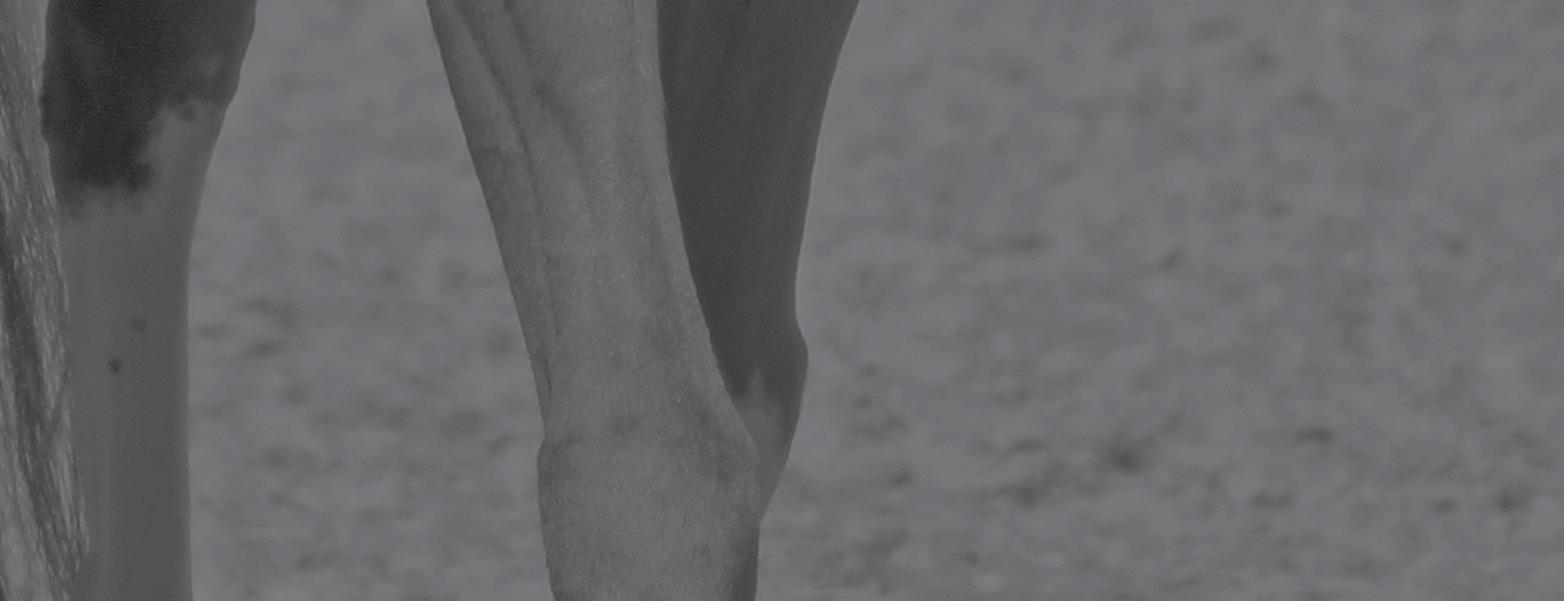

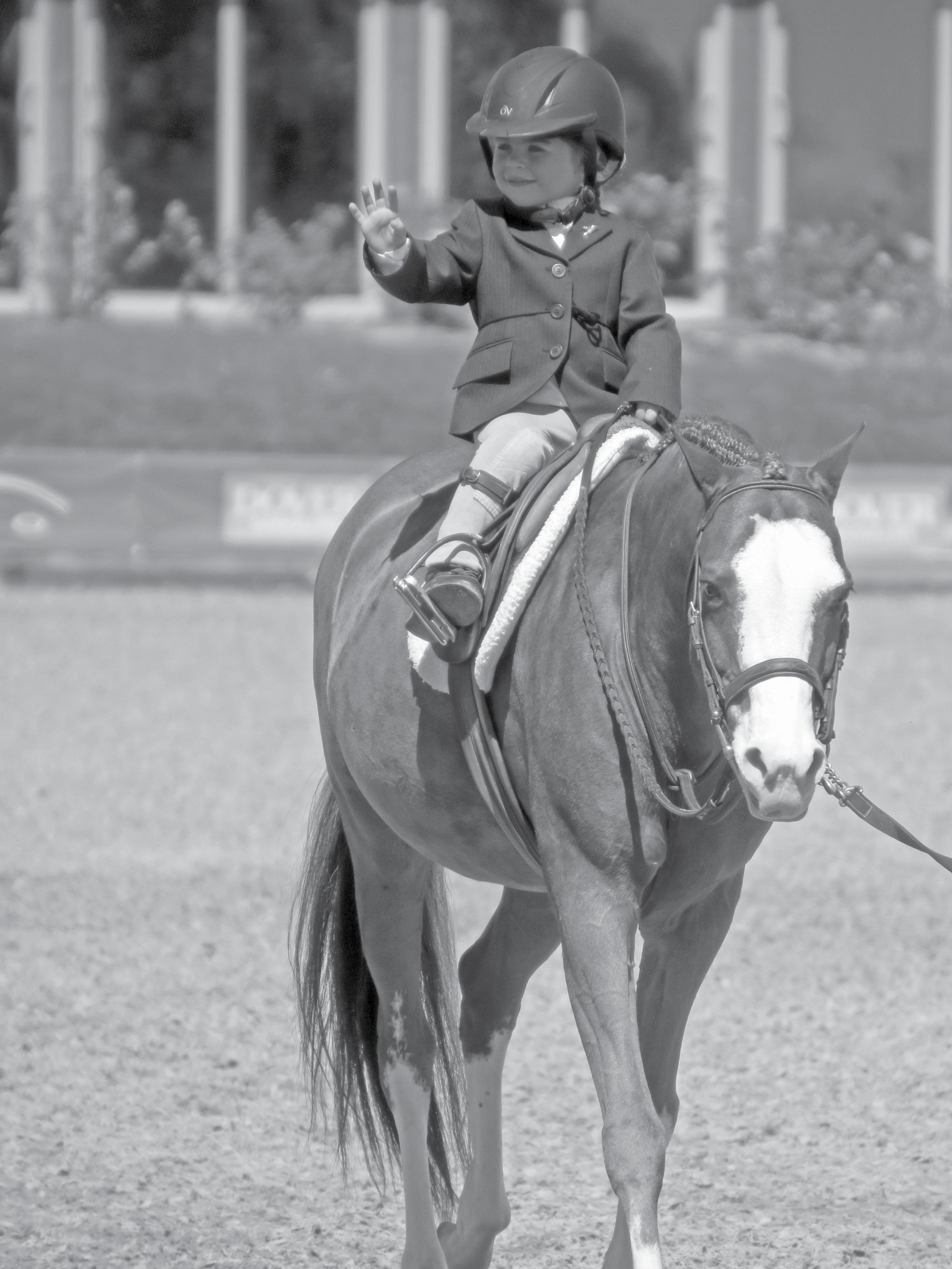
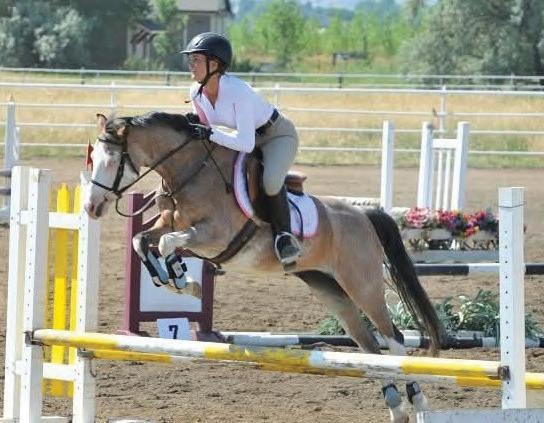

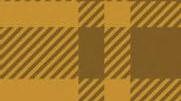
WORDS: MICHAELA MANGUS
“OH, YOUR new pony is coming in today!”
My trainer’s casual statement had me tilting my head, urging her to elaborate. The pony wasn’t mine, of course—my family simply didn’t have the money for a horse. I was a horse-hungry barn rat who worked for hours upon end doing various chores for this local stable, earning both riding time and an education of good horse management. At thirteen, I had already earned a reputation as a scrappy rider with little fear, a sticky seat, and a willingness to sit on just about anything I was o ered. This, along with a small stature, had made me the barn’s go-to “pony jock.”
“She’s coming from Idaho. I have a video.” Eagerly, I took the o ered phone to watch. The pony was a ashy bay roan, equipped with four white stockings and a white face, and standing as a medium at 13.1 hands. She seemed cute enough. My trainer’s next words were the ones to raise the red ag.
“... She was free.”
I was young and didn’t know much, but I had been around smart people in the industry for long enough to know that a free horse —not always, but o en–came with the words, “Okay, so what’s wrong with them?”
Apparently, this pony could be “di cult.” My trainer didn’t know much about the situation; the barn owner had arranged it. Again, the pony was cute enough. How hard could she be? It was worth a shot, anyway. Fiona stepped o the trailer that a ernoon, but I wouldn’t know until later the extraordinary role she would play in teaching me about horses, riding, and life.
From the beginning, Fiona and I had a strange sort of understanding. She liked me, dare I say, even grew to love me. She let me be her person in a way that she wouldn’t let anyone else. This pony was sensitive and reactive, but for whatever reason, she let me be a part of her orbit. What she wouldn’t let other people, she allowed me. When clipping her would have resulted in a full-blown meltdown when done by someone else, she let me do it while standing quietly as a lamb. Some days she would run rings around people trying to catch her in the pasture, only to trot up to me a minute later when I would go to assist. Always touchy about her legs, for a long while, the only way to get shipping or standing wraps on her was if I was the one at the end of the lead rope.
One of the things that very quickly became apparent was that while under saddle, Fiona could be either the most rewarding horse, or the most frustrating horse—no middle ground existed.
Athletic as a cat, with a scopey jump and beautiful form, a practically auto lead change, and naturally oaty, balanced gaits… when she was “on,” Fiona was nothing short of phenomenal. She could have easily been ranked with the best of them, if her “on” days didn’t come with the “o ” days.
Her o days consisted of spooking at the smallest of shadows, or the pile of poop that we had trotted by six times already. Her athleticism, which I welcomed so much on her good days, would haunt me on the bad days; instead of using it to get over a jump in ne form, she used it to pull the most wicked,
dirty stops a kid has ever had to sit. She could go from marching into the show pen and laying down the most clean, professional trip, to the next day, at the same ring, with the same prep, be stalled out and rearing at the in-gate. There was no rhyme or reason to what would result in a good or bad day. We ruled out just about everything: vet checks, saddle t, training load adjustments, you name it. We were so desperate as to even try an animal communicator. Nothing helped. It seemed she either wanted to play, or she didn’t.
She let me be her person in a way that she wouldn’t let anyone else. This pony was sensitive and reactive, but for whatever reason, she let me be a part of her orbit. What she wouldn’t let other people, she allowed me.
I was the only one who really rode her, no one else really wanted to. Her good days were mine, and years later, I still think about the rides with her e ortless, oaty jump that felt more horse than pony. There’s still no doubt in my mind that she was one of the most talented horses that I’ll ever sit on. Her bad days were mine, too—I developed a defensive habit to sit and suck back at the base of jumps, courtesy of Fiona’s abrupt dirty stops. She never did throw me, but this bad habit would haunt me for years before I managed to break it.
Still, my good memories of her and our relationship far outweigh the bad. At one point, she was shipped across the country to a big-time trainer to see if they could “ x” her… but they ultimately unked her
from the program. When she came back, with me standing by to meet the trailer, the hauler made a comment about how hard she had been to catch in the box stall at the layover sites, describing how he could barely get close enough to hook the lead rope to the halter.
“Hi, Fi !” I called out a moment later as the hauler made his way up the ramp to her box stall. “Whoa!” he said, as Fiona practically ran to the stall door before prancing him down the ramp. “She’s never acted like that before!”
Fiona is interesting because she sums up many aspects of my “junior career” extremely well. I was lucky enough to have the opportunities to show some nice horses on the AA circuit and do well, but I really didn’t have a huge presence in the show ring or win a ton of accolades that would make me well-known.
I didn’t go to Pony Finals, or the Maclay. I was o riding the ones like Fiona —the hard, quirky ones that weren’t necessarily always the most fun, but had a lot to teach if you were willing to stick it out and listen. This was more than honing just riding skills; it was also learning how to take life in stride, working hard with what you have, and making the best of the opportunities that come your way. I learned the life lesson of how to deal with disappointment, as well as persistence, grace, and grit. Fiona was also a real-life application of how horses cannot be expected to t the paradigms we have for them.
It doesn’t matter what we think Fiona should have or could have been. Animals don’t perceive things the same way we do, and as such, the animal is never wrong. Our goals or expectations must be uid, and always in consideration of the horse we actually have…not the horse we think we should have.
Fiona was sold when I le for school, but I use the lessons I learned from her every day. I think about her o en, sometimes with a shake of my head a er I catch myself getting too far back in the saddle on the approach to a big oxer. But more o en, I recall her scopey, powerful jump, or the time she trotted o the big hauler ramp to greet me a er hearing my voice.
It makes me smile.

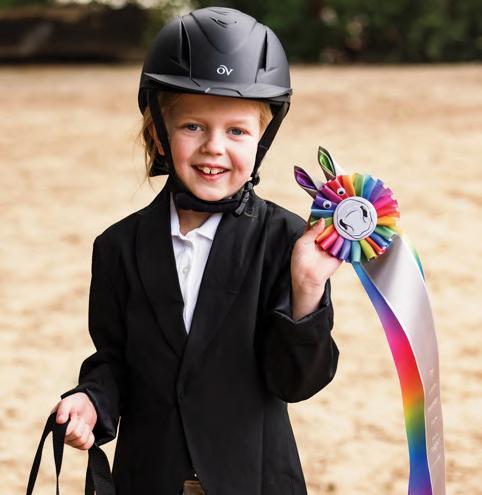
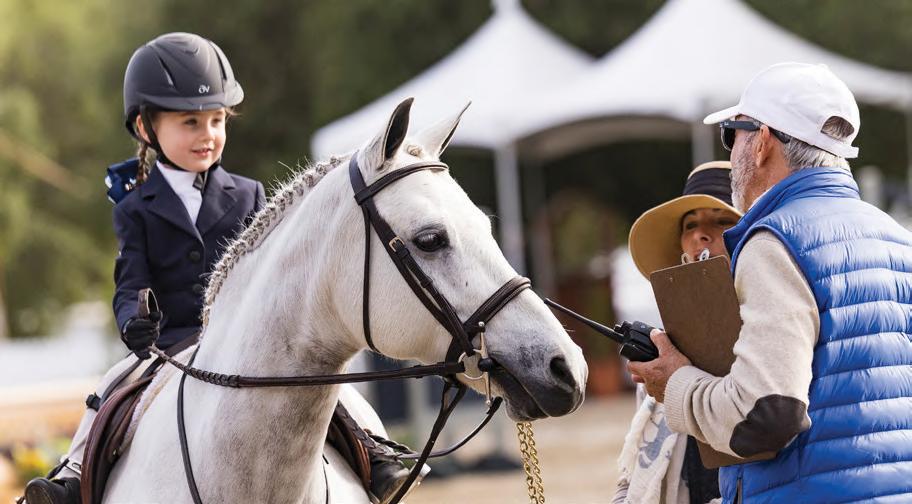
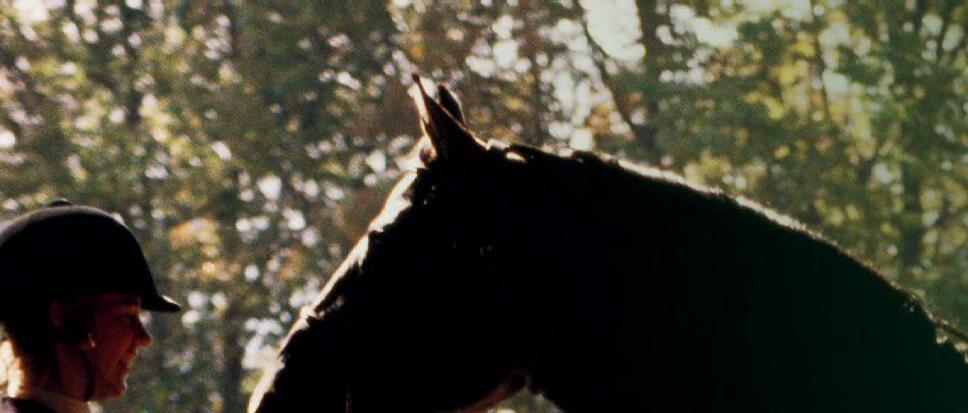
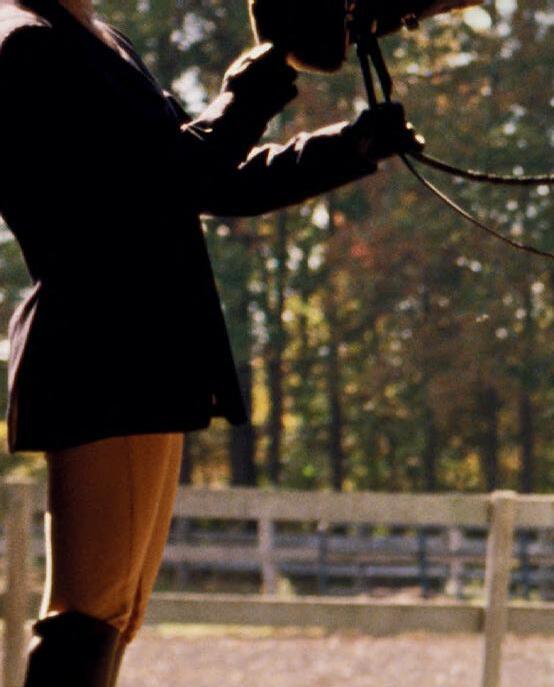


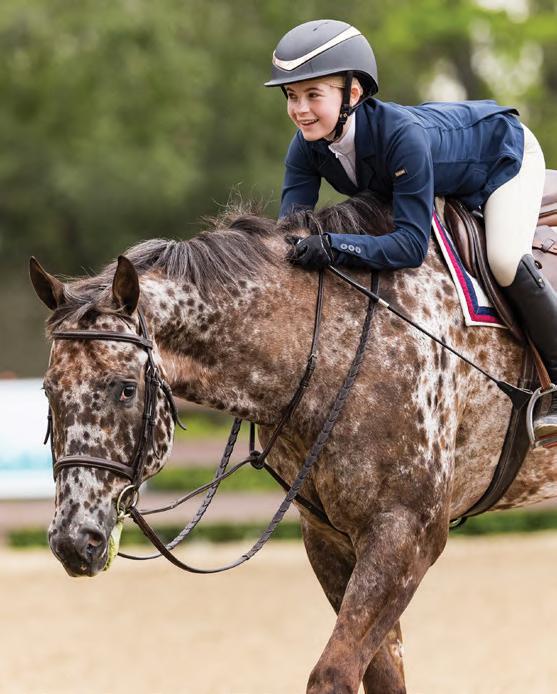

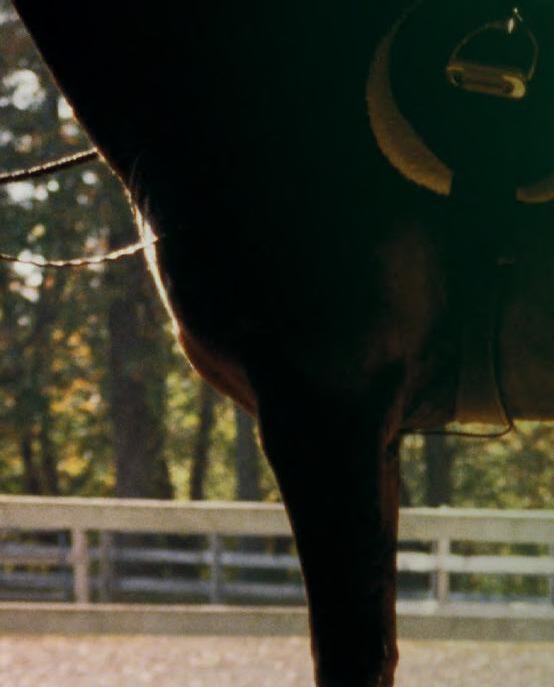





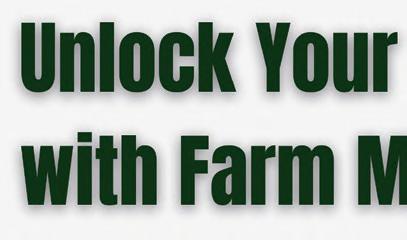






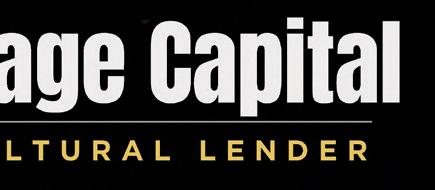











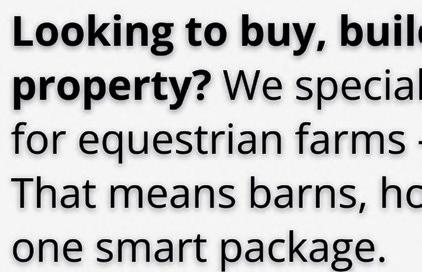

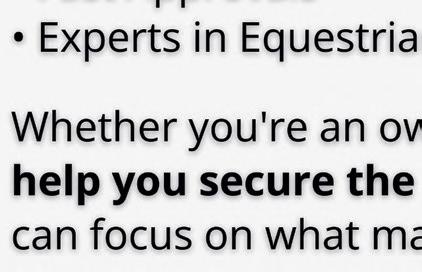

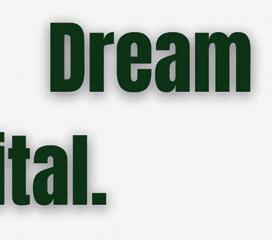
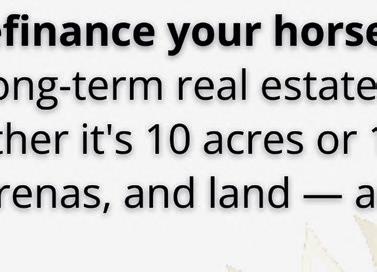

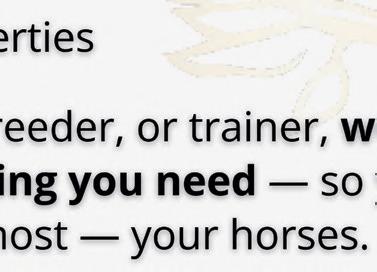



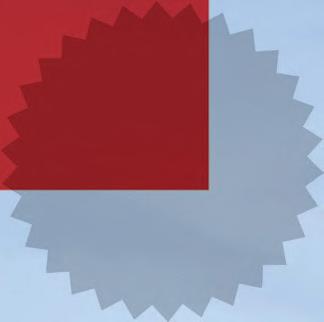

by


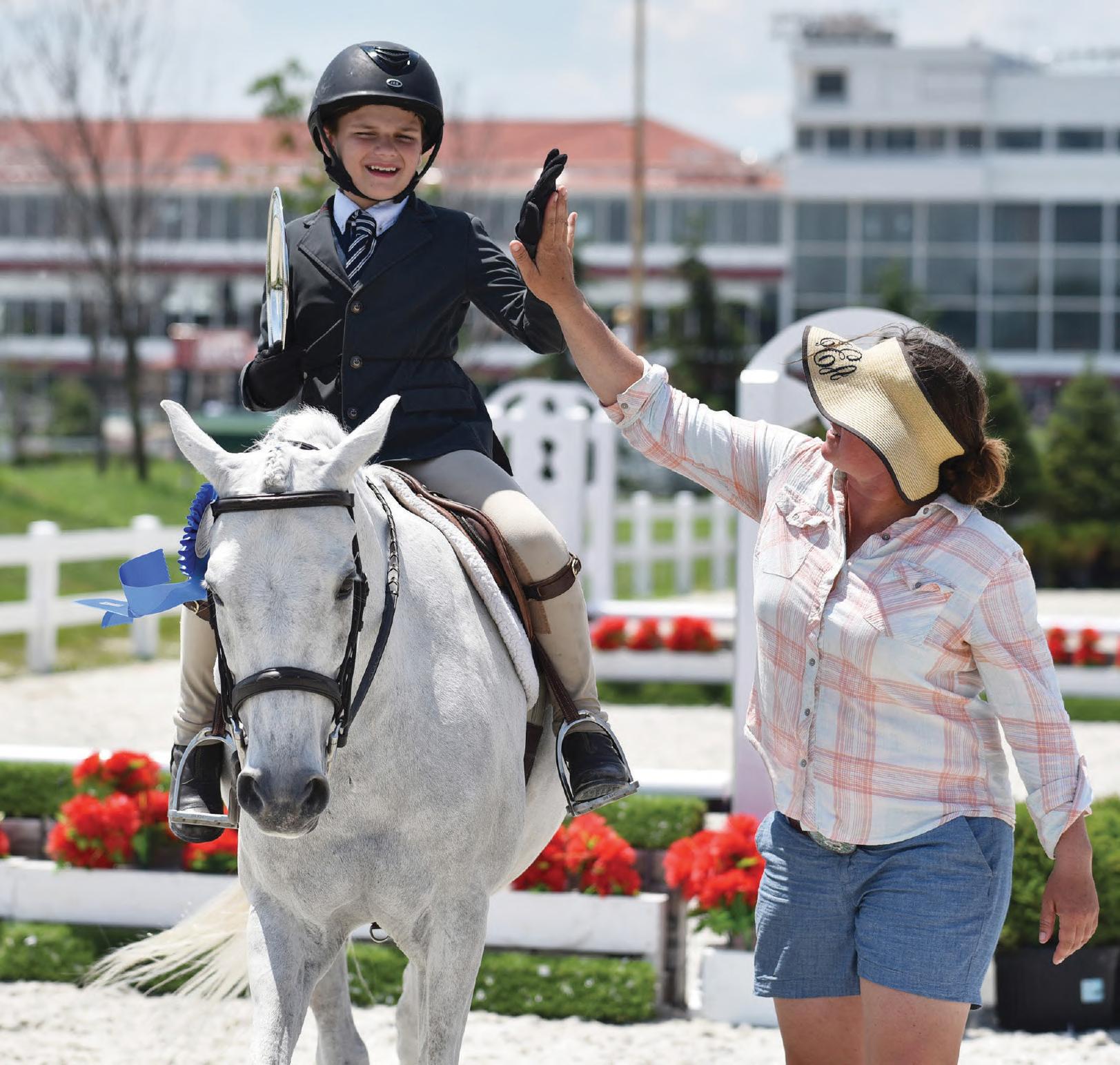


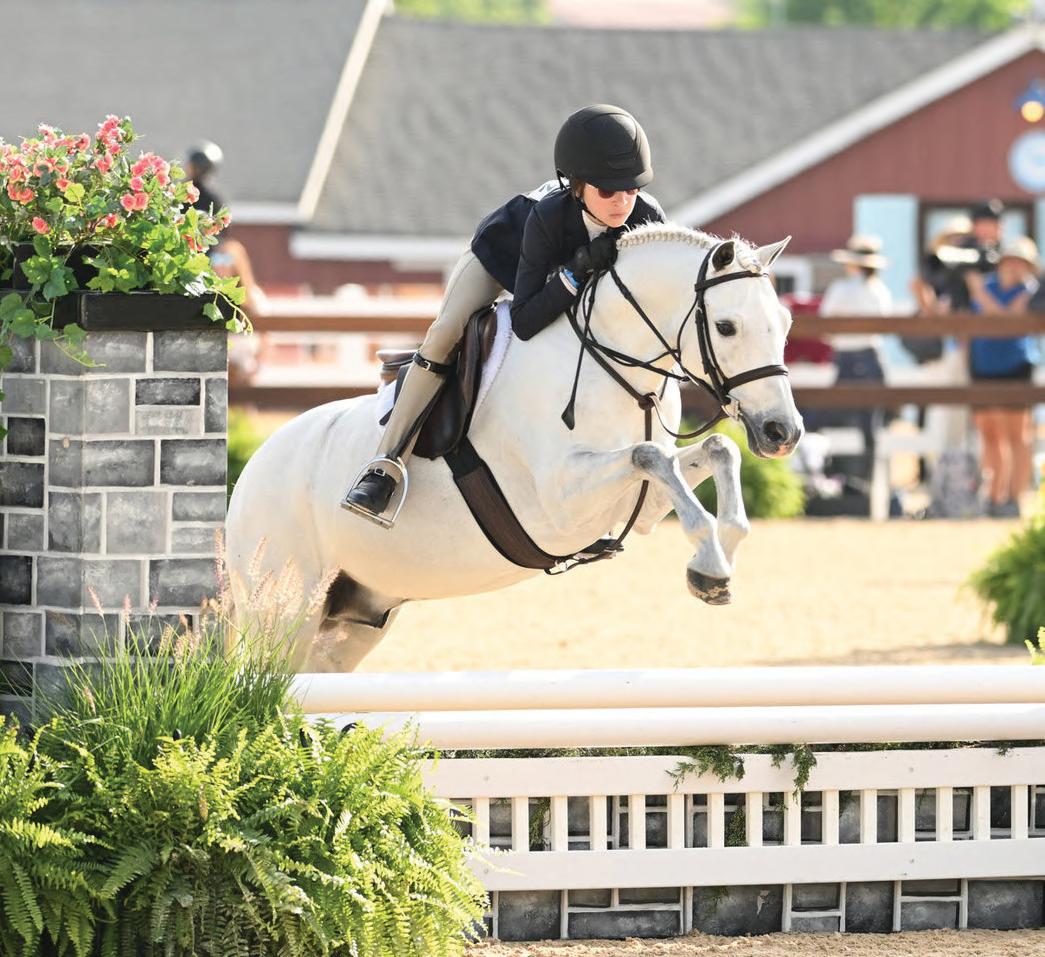


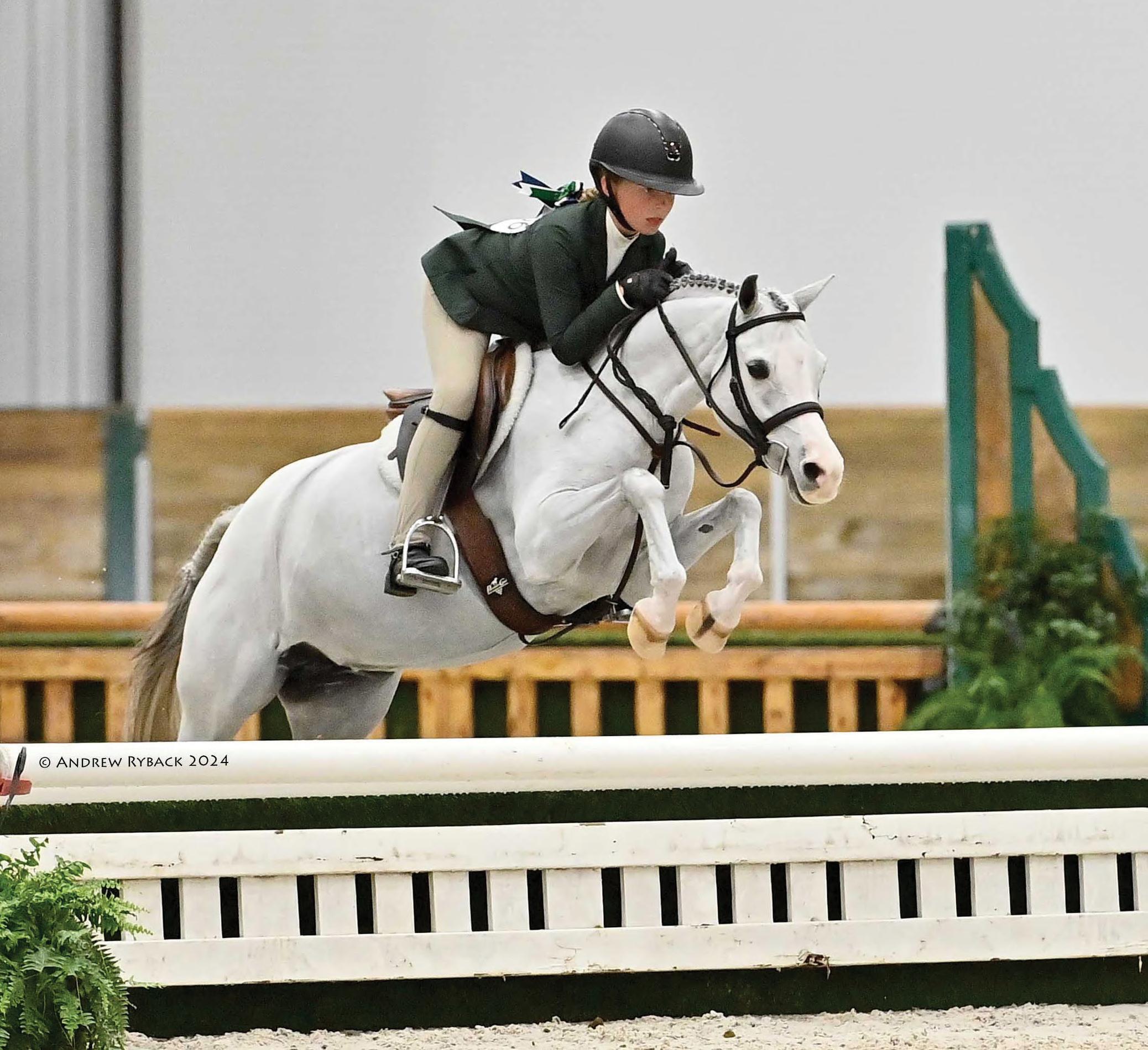


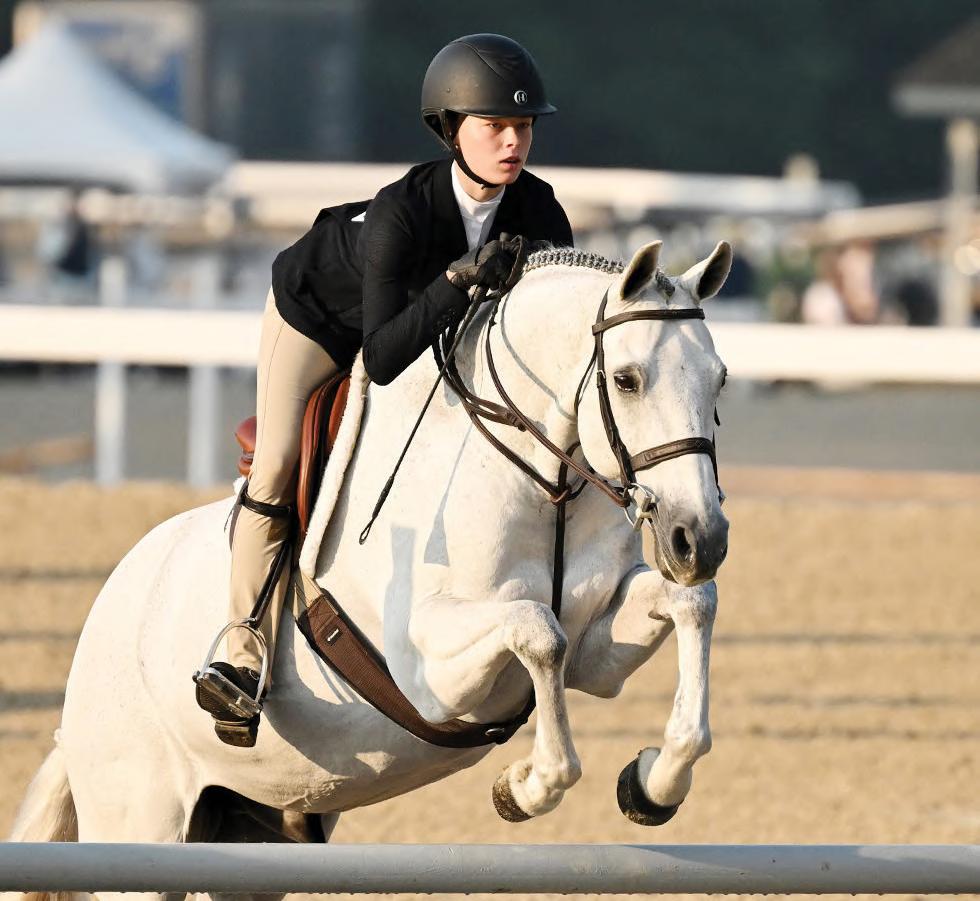














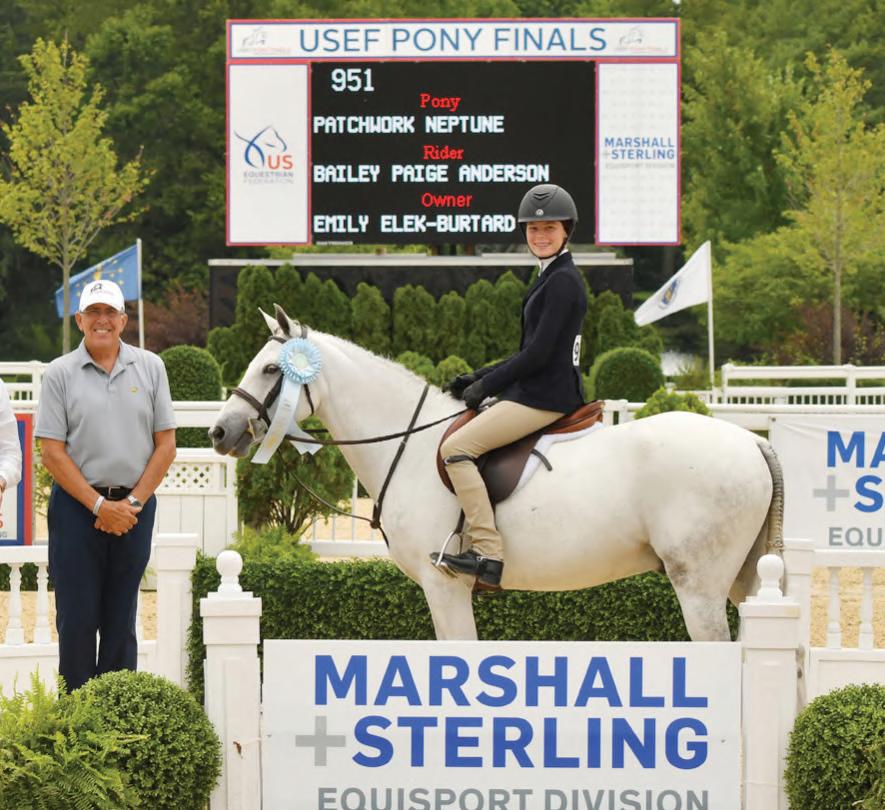





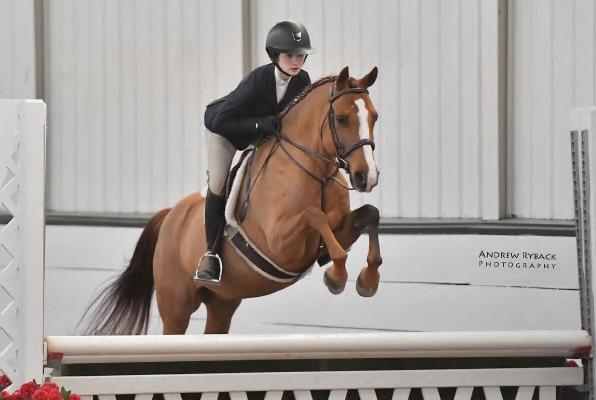
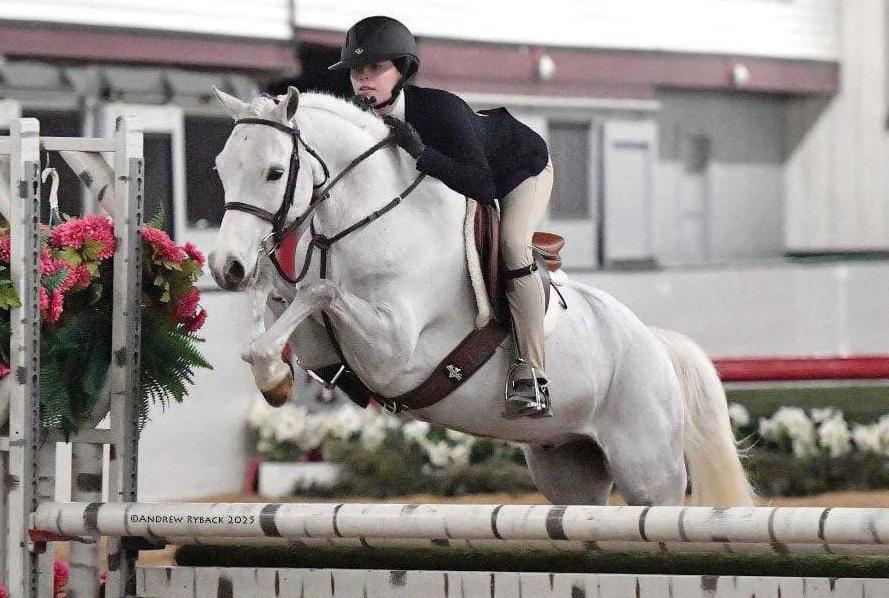
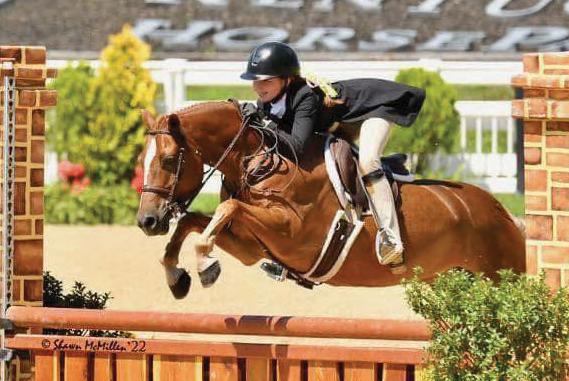
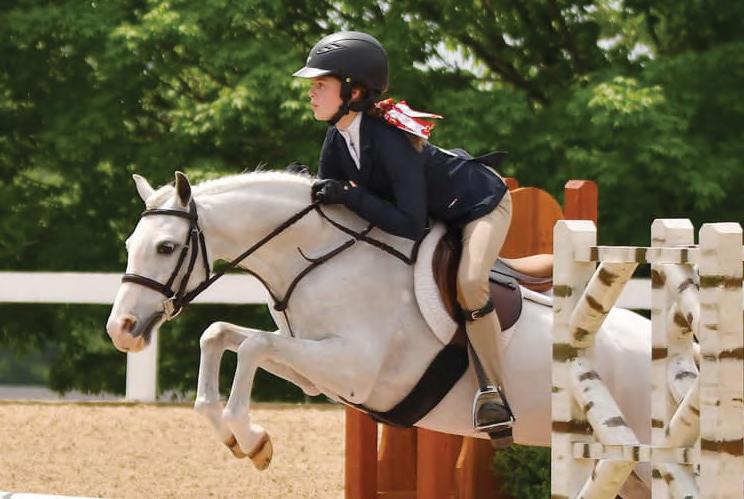


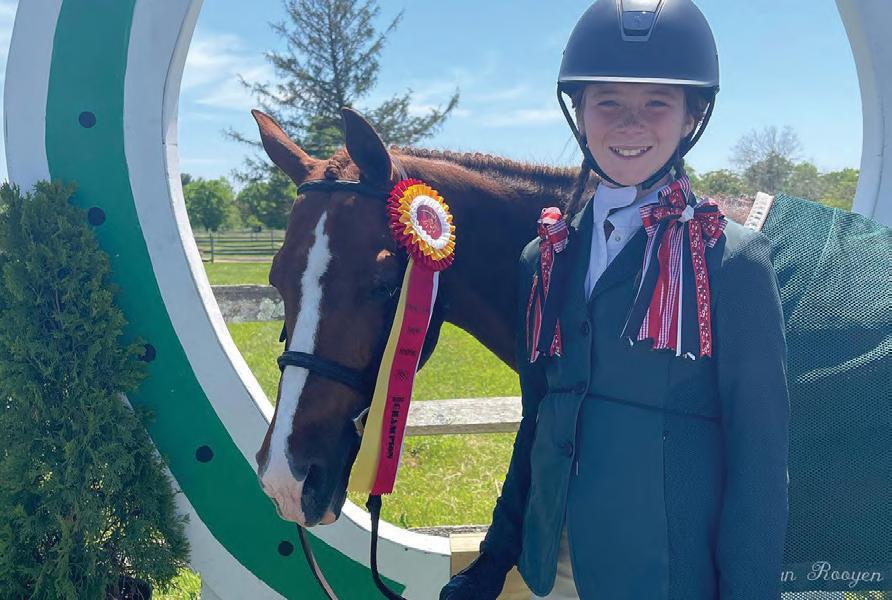

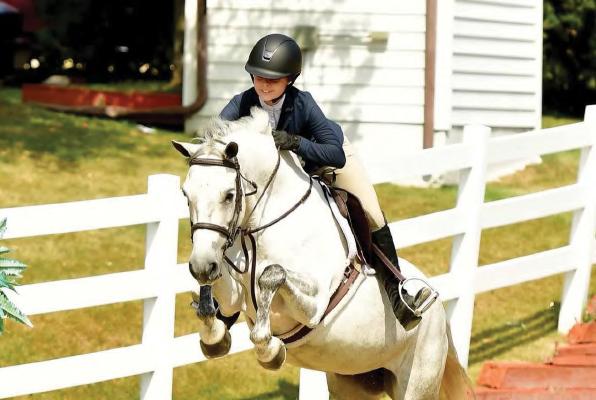
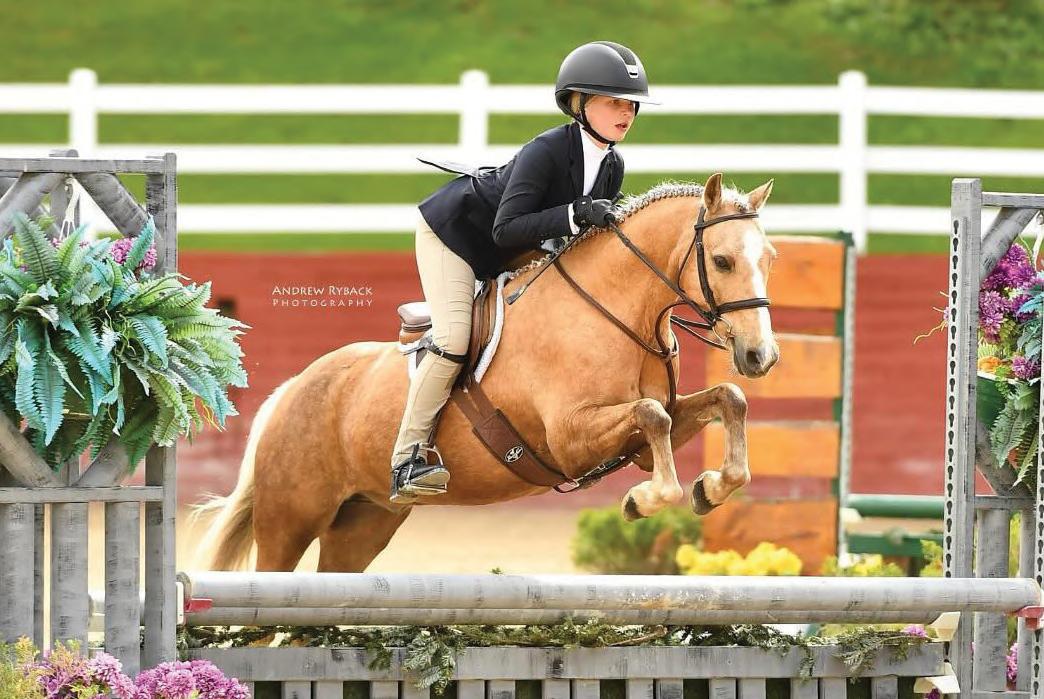



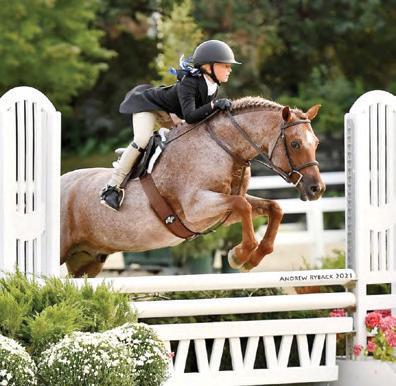
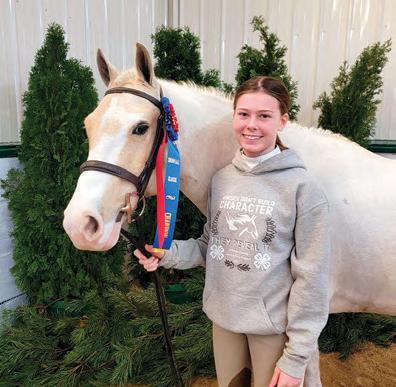
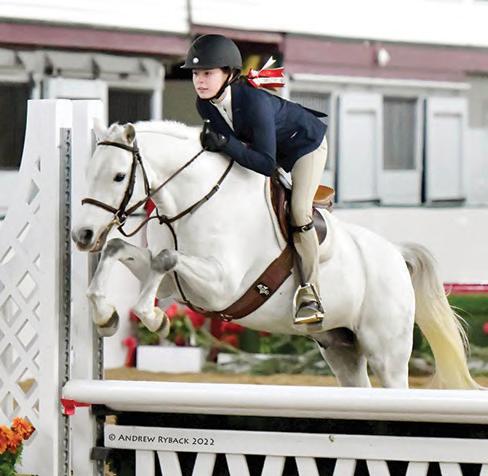
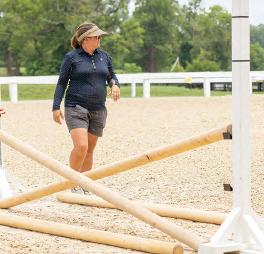



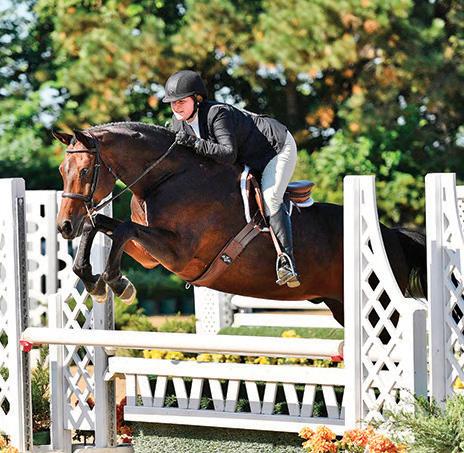
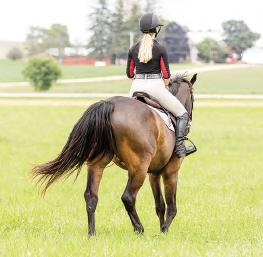
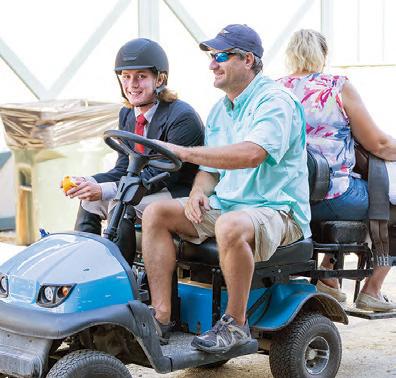
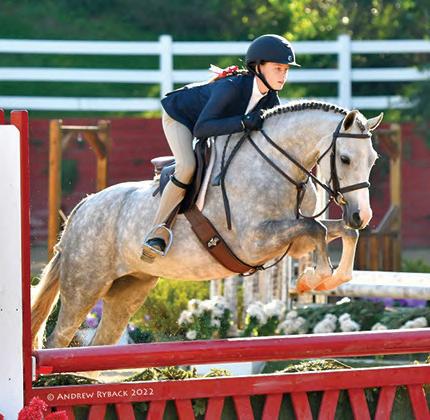

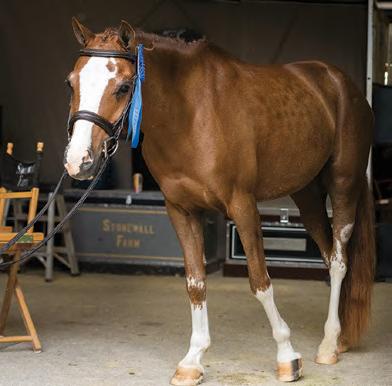
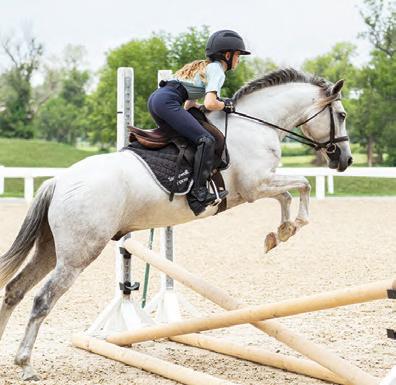
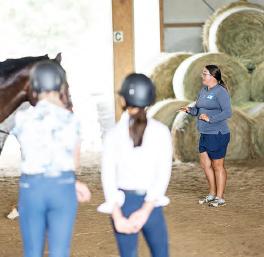
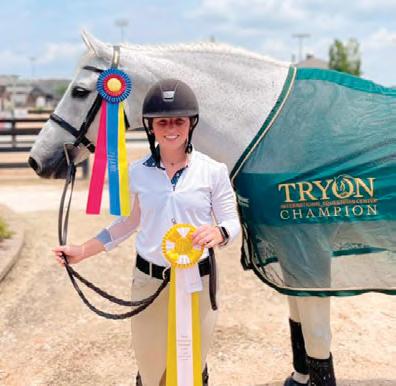
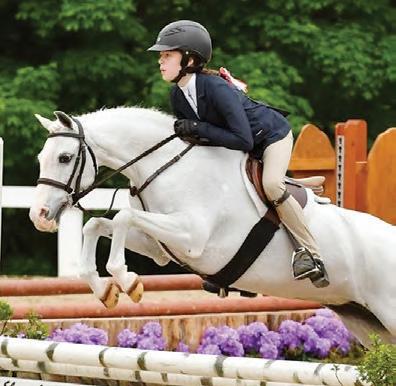

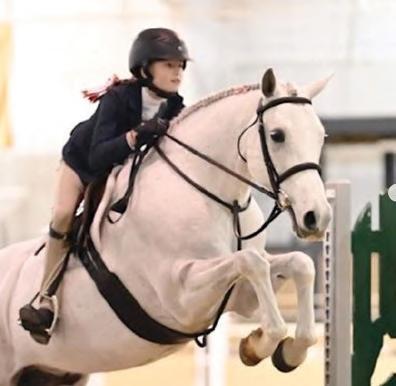
Workers show up. They are ready to learn from the moment they get to the barn. We all get distracted, but a worker is the one who puts in the extra time. They pick up, and help around the farm with whatever is needed. When they ride, they ride with a plan. They do transitions, and figures and have a goal. They ride without stirrups, without reins. They put in days of long, boring fitness rides because it is the right thing for the horses. They do the hard things, because it makes them stronger and better.


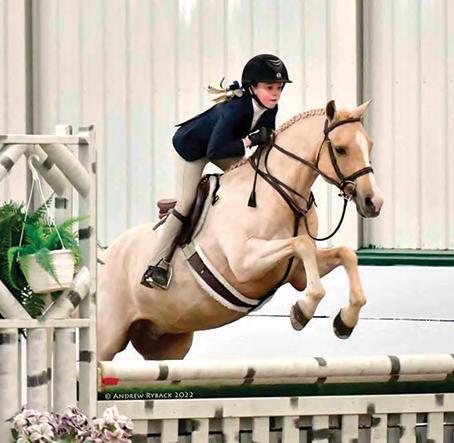
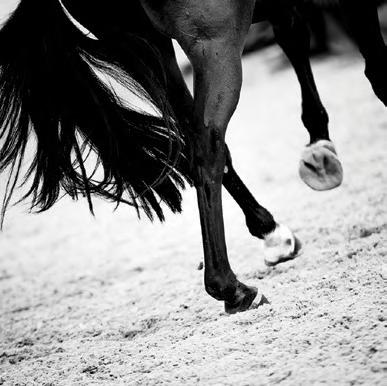
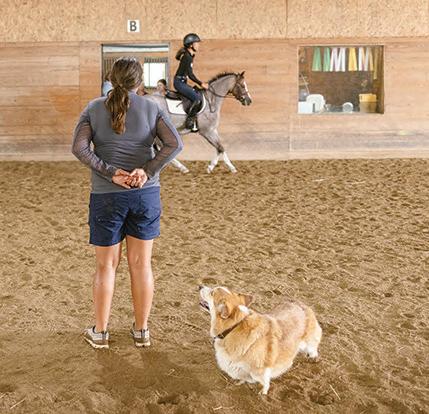

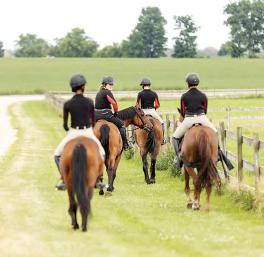
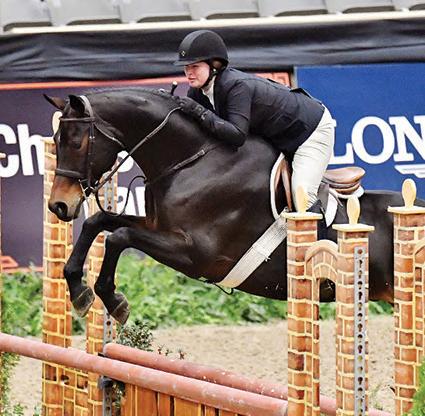
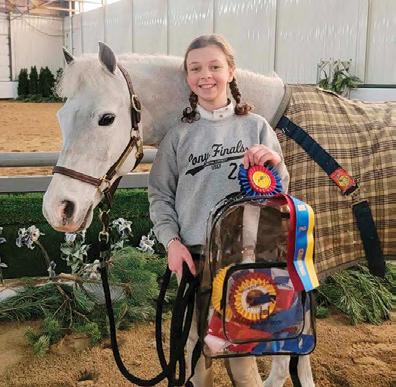
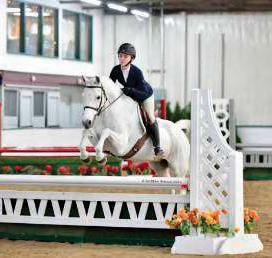
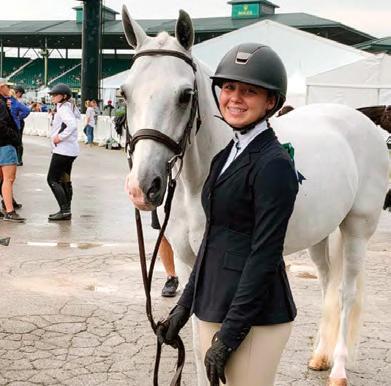
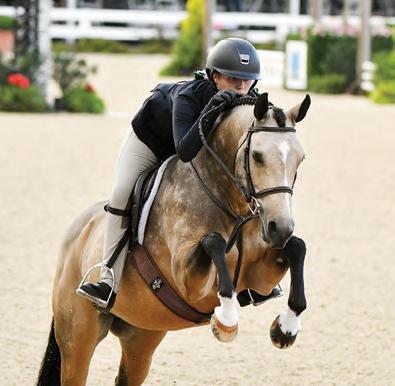
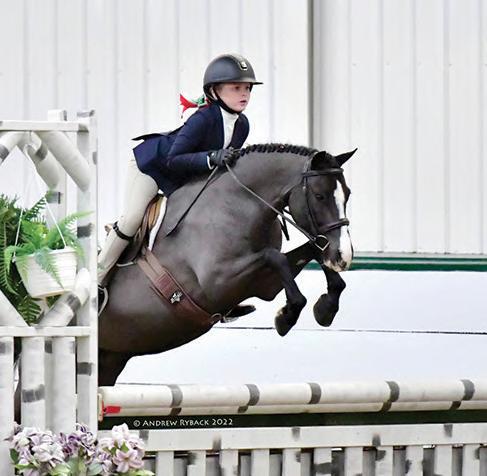
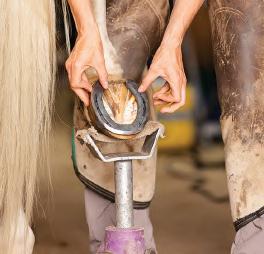


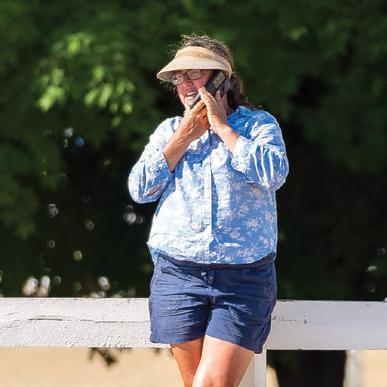
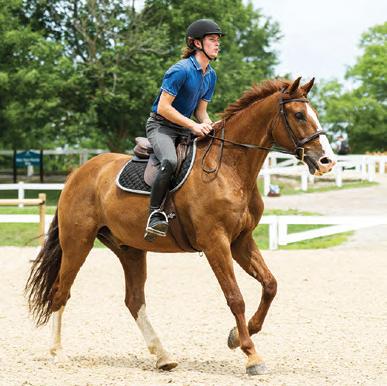

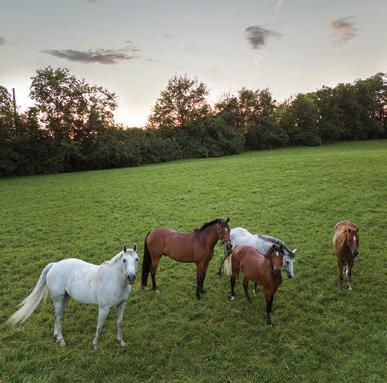

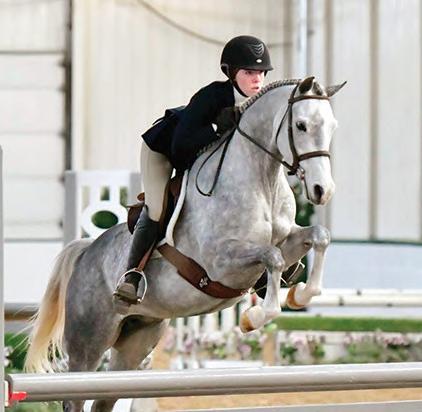
WORDS: MARLEY LIEN-GONZALEZ
DR. BARB Blasko, founder of ShowMD, takes the translation out of treatment. When riders come to her saying that their horse ducked out of a one-stride and they fell right into a standard, or that their back hurts because their horse has an active hind end, she instantly understands. In fact, she might even be in riding clothes herself in the treatment room!
“I’ll watch videos of what happened with patients and know what’s going on. You don’t have to explain to me what chipping in is or leaving long–I know all the lingo!” Blasko tells The Plaid Horse.
In a traditional hospital or physician office setting, white coat-wearing doctors can be intimidating to anyone, not to mention difficult and frustrating in the communication department.
“A lot of times at horse shows when I’m seeing patients, I’m trying to show, too— so I’m there in my breeches and boots, taking care of people, and I think there’s just a different level of comfort. Even if I don’t know them as an individual yet, I know them on an equestrian level, and I think that makes a huge difference.”
MEDICAL SCHOOL
RESIDENT EQUESTRIAN
When Blasko’s peers in medical school saw an abandoned stack of textbooks in the library, they knew she had traded books for boots for a few hours.
“Everyone in my medical school used to laugh at me because I would take a break from studying, go ride, then come back and keep studying,” she recalls. “They all thought I was crazy because even the day before a big test, I’d go ride horses.”
The reason? The same as for many other riders: “When I was in college and medical school, I made it a priority to ride horses because they kept me mentally grounded. They gave me an outlet, it was something I loved to do, and
it really helped me to be able to take my focus off school and on something else.”
Blasko still excelled academically and even managed to lease a horse and ride through residency, the hardest part of a doctor’s life, but she had no idea that she might one day combine her medical profession with her life’s greatest equine passion. If she had known then, she says, “I would have started ShowMD way earlier. That’s my biggest regret.”
Since the organic beginning of ShowMD, Blasko had become known as “the doctor” at the horse show and patching friends up as needed, which snowballed into opening a mobile trailer office on the show grounds to treat all kinds of patients. Since then, Blasko has been expanding not only her business, but equestrian medicine as a whole.
“Probably the most common reason people come in is because they fell off and got injured and need whatever body part examined,” says Blasko. “After about two years of ShowMD, I invested in an X-ray machine because people needed X-rays. It was a big financial investment but worth it because I use my X-ray machine every day. If people come in and they repeatedly ask for a service or
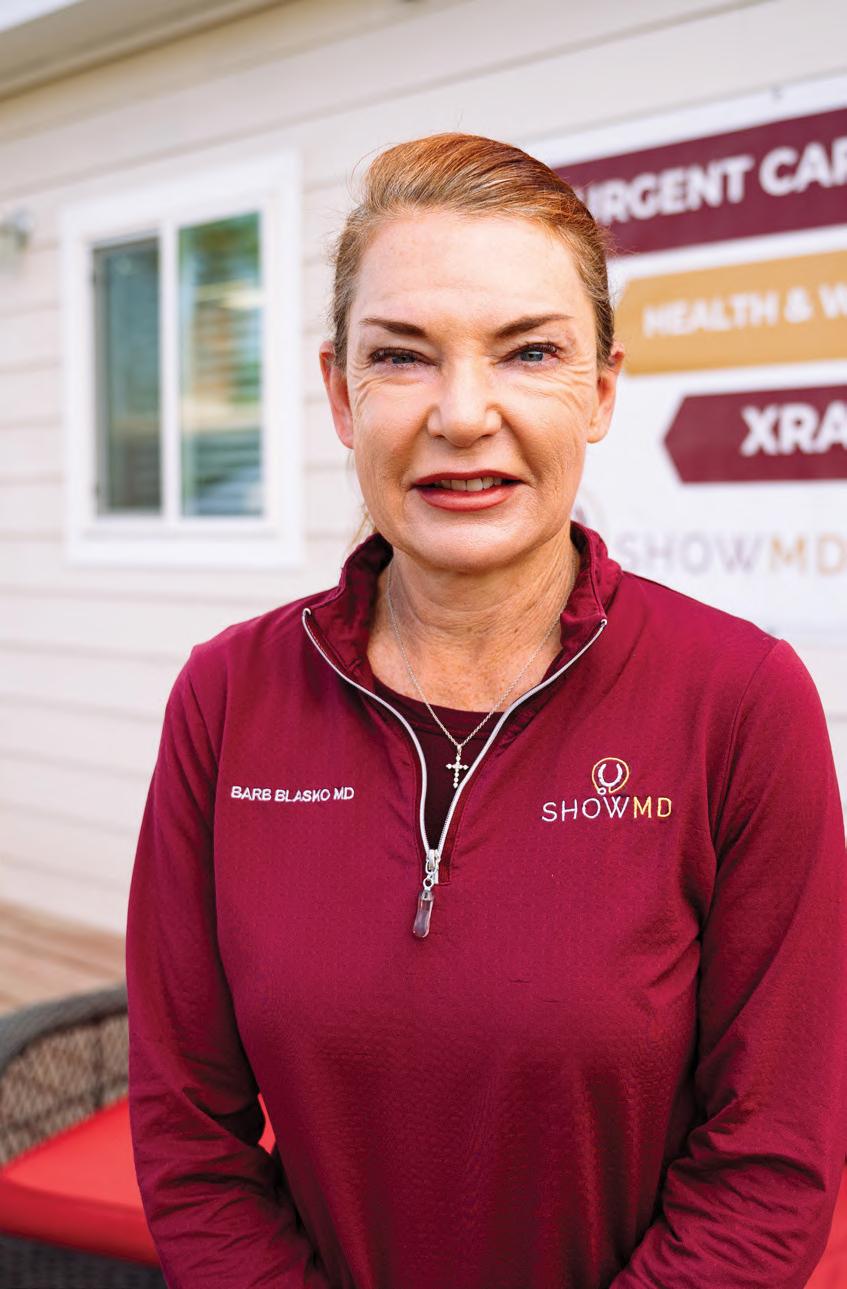
something I don’t have, I feel compelled to try to figure out how I can provide that service.”
That is how ShowMD came to outgrow its original trailer and acquire two mobile offices and a permanent facility at the Desert International Horse Park, complete with IV rooms, treatment rooms, and a lobby. There’s even a pharmacy on-site so patients can go straight from the clinic to pick up their medications.
“It’s like a regular medical office, but I get to walk outside and see horses jumping around, so it’s pretty amazing,” says Blasko.
Understanding the time constraints and scheduling difficulties that come with being an equestrian, ShowMD is a flexible office offering everything from routine healthcare to concierge care and handling emergencies. Some riders in the past have even come in for replenishing IV treatment and then found out their course walk is running early, “So we discontinue the IV and the fluids that are going, and we leave the IV in the person and then they go walk and then they come back and finish,” says Blasko.
“We are athletes, it’s a demanding sport. It’s a lot of physical work, a lot of times we’re outside and face all kinds of

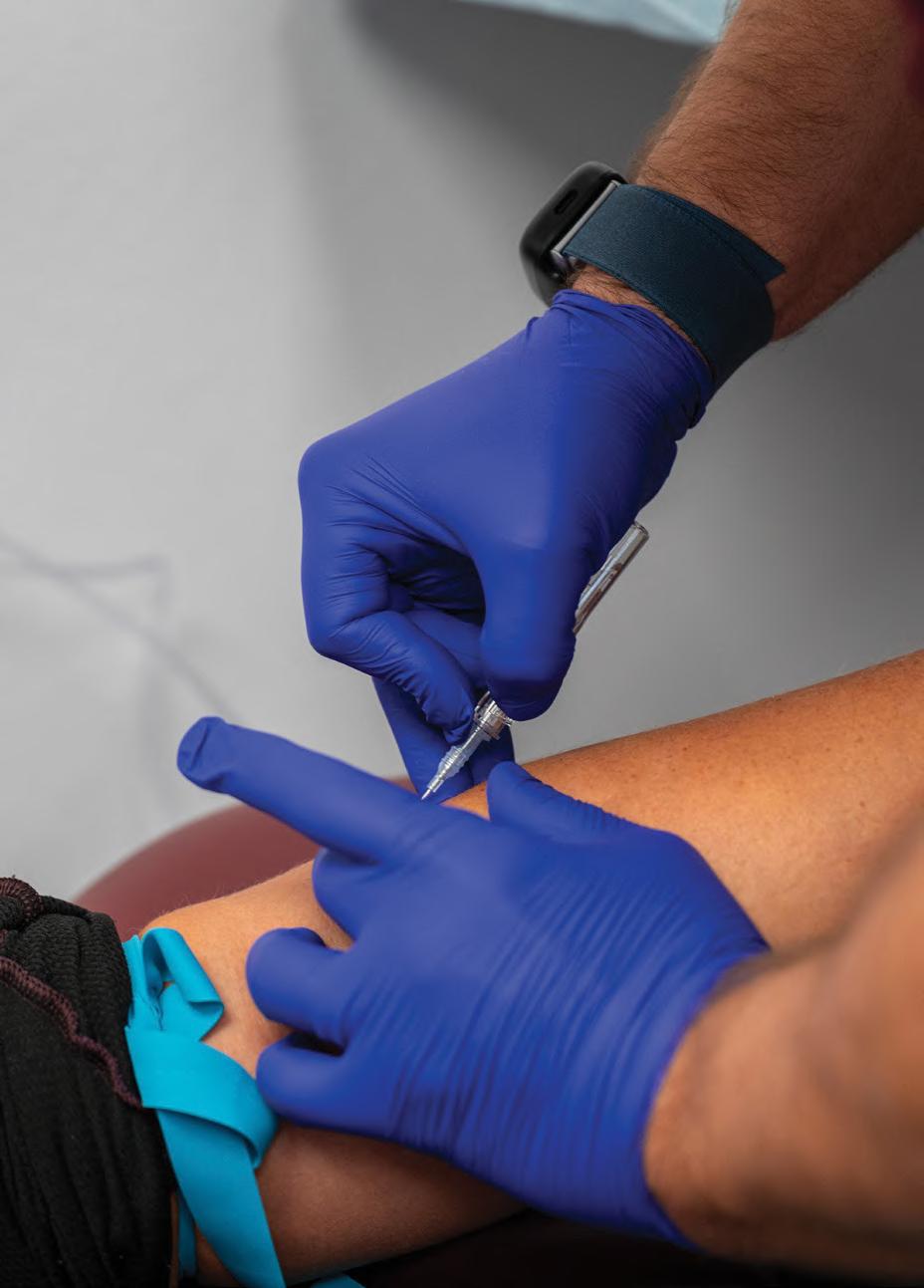
elements,” says Blasko, “ShowMD is multifaceted in terms of getting people feeling better.” If patients need specialty services, like to see a cardiologist or dermatologist, ShowMD arranges those appointments, but in their office, common requests include routine physical examinations, blood work, imaging, MRIs, trigger point injections, ultrasounds, TENS therapy, and even massages.
Riders are not the only patients on Blasko’s chart. “I provide primary care services and coordination of healthcare because a lot of times, trainers work seven days a week and they really just don’t have time to go to the doctor.” Being conveniently located on the horse show grounds means business owners don’t have to miss a day of work or potential customers for their medical needs.
ShowMD looks out for everyone on the showgrounds, especially grooms. “If they get injured by a horse stepping on them, biting them, or something else, there’s a discount I give to the grooms because they work really hard. I groomed for a long time when I was in high school and college to pay expenses, so I know what they do, and it’s a hard job,” says Blasko.
“A lot of them don’t have healthcare insurance. They don’t know where to get care, and sometimes they’re afraid to go to hospitals. A lot of them take horse medication, so part of my job is educating them also on alternatives and where to actually seek medical care,” says Blasko.
“I still work in the ER as an ER doctor, and I see people that are not necessarily documented or don’t have insurance and we care for everybody in the ER and I wanted to bring that to ShowMD.”
To Blasko, the horse community has given her everything so she’s committed to giving back the very best care. Looking into the future, she’s hoping to add a pediatrician to her already impressive team of ‘horse wise’ healthcare professionals and keep expanding operations. Blasko says, “The horse shows have all been so supportive of ShowMD, and the people have been especially wonderful.”
When Blasko sees patients in the ER, they’re often unhappy and bitter about waiting, but when people visit her office at the horse show, they’re impressed with the quality and expanse of care and very appreciative. Says Blasko, “That reaction is what keeps me going and pushes me to reinvest in the business and keep developing different services that I can offer to this community.”
“Barb has been our concierge physician for the past few years. As a rider herself, she totally understands the complexity of our industry and how to best care for us as riders and trainers. ShowMD has helped us navigate the medical system which has become very complex. We are so grateful to know she is always available for us.”
—TRACI AND CARLETON BROOKS, BALMORAL
“Having ShowMD at Desert International Horse Park gives us all a great sense of security knowing there is a board certified Emergency Medicine doctor right on site. Barb treats everyone at the show with the highest level of care and compassion.”
—STEVE HANKIN, PRESIDENT & CEO, DIHP
“Best conversation I’ve ever had with a doctor in my life. She actually listened and actually made sense!”
—MEGAN MCDERMOTT, OWNER, COUNTER BALANCE LLC, WINNER OF MULTIPLE NATIONAL AND FEI GRAND PRIX

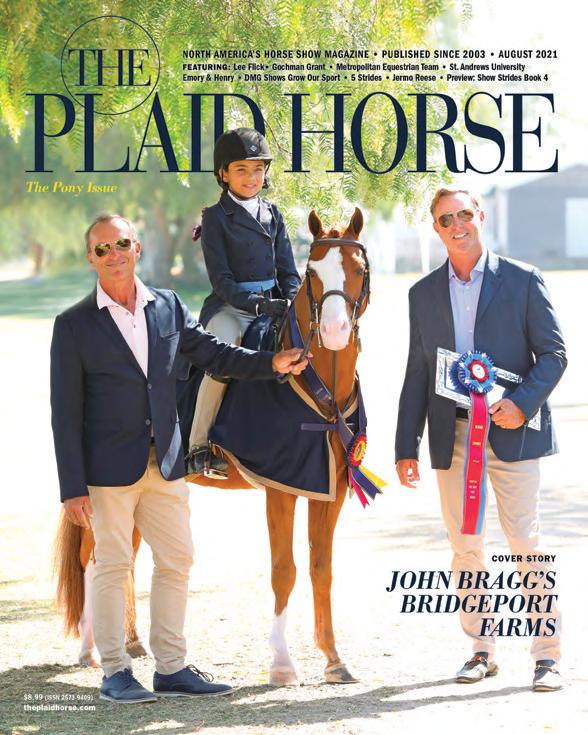

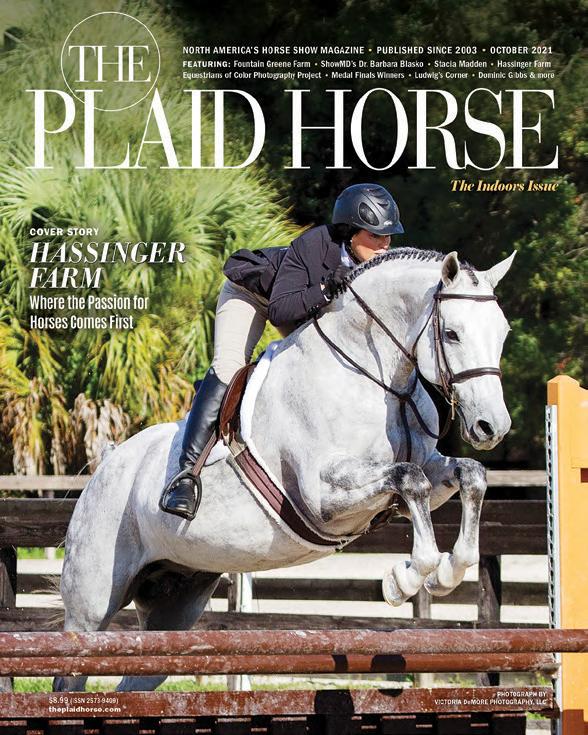
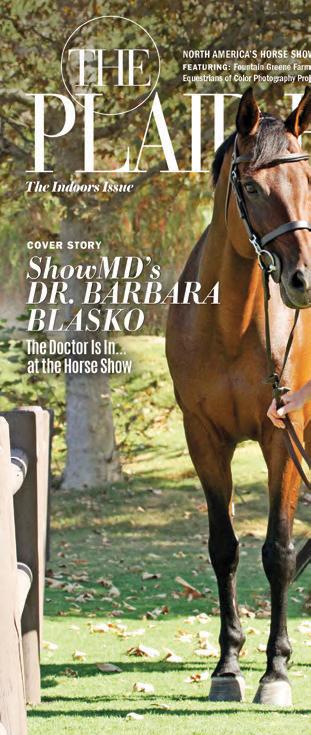

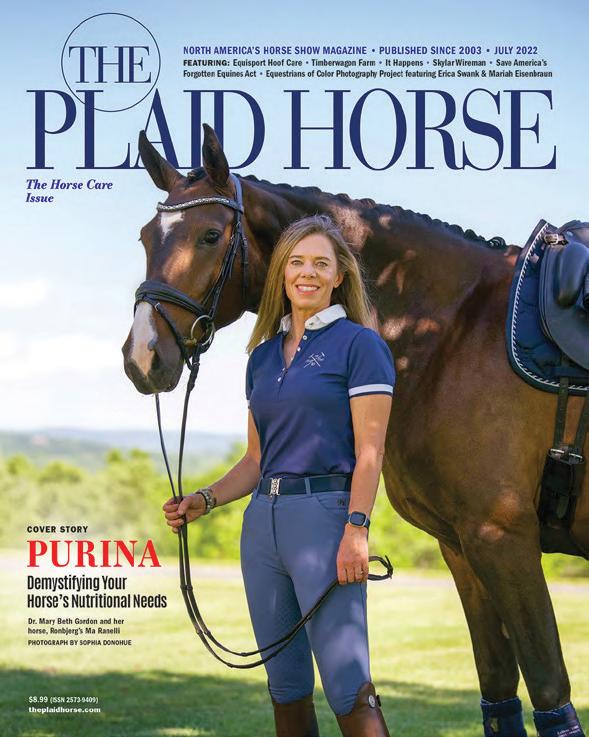
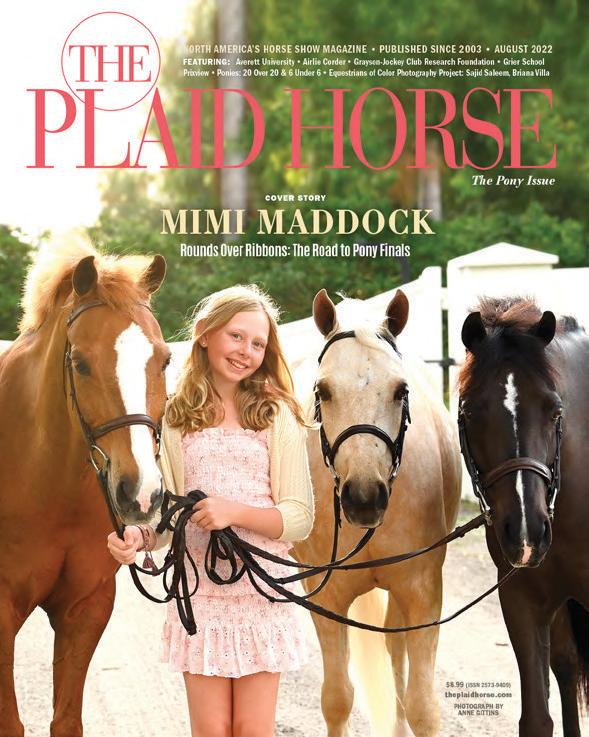
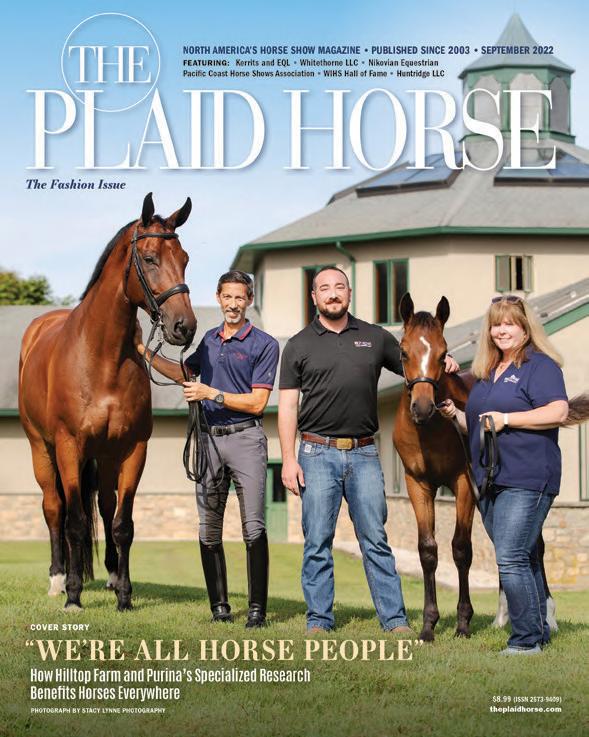
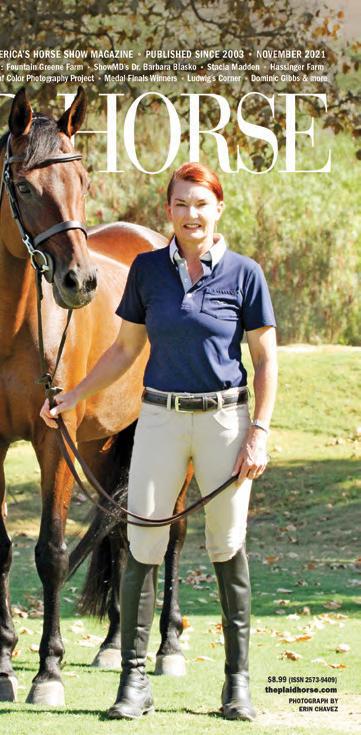

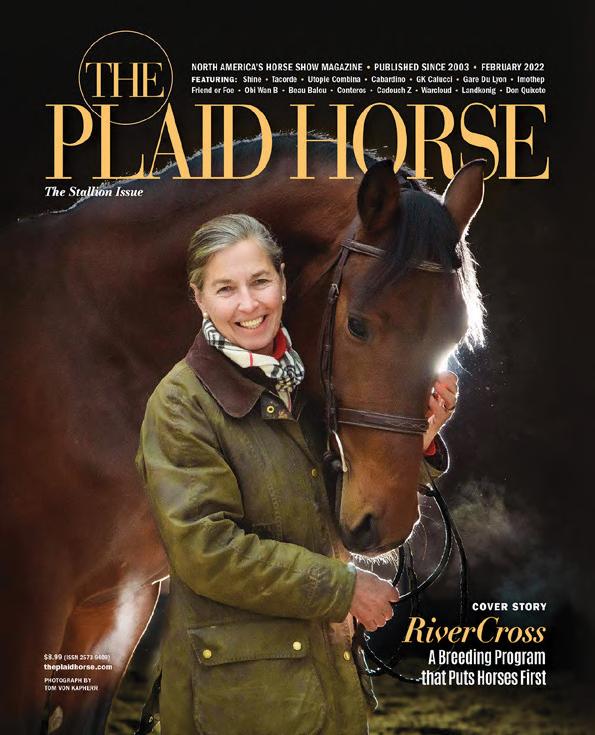
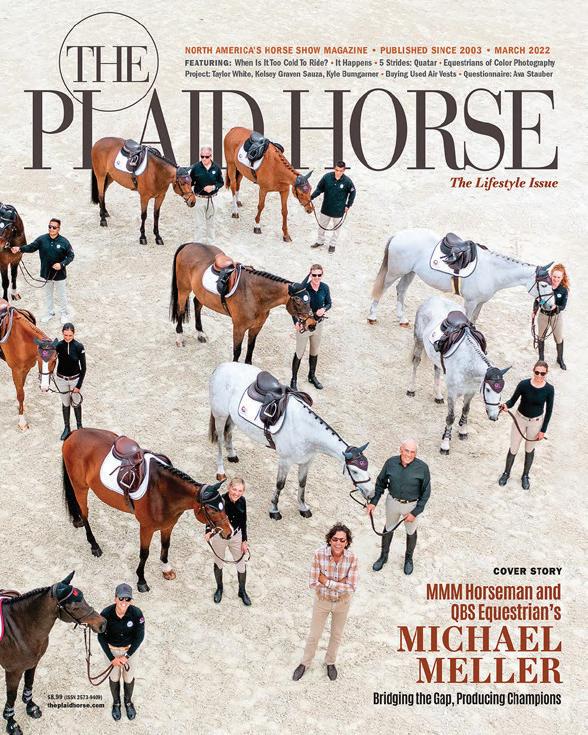



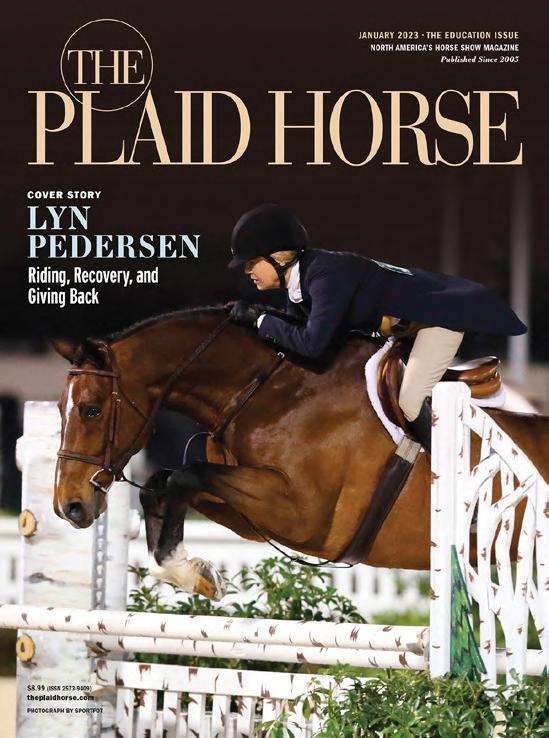
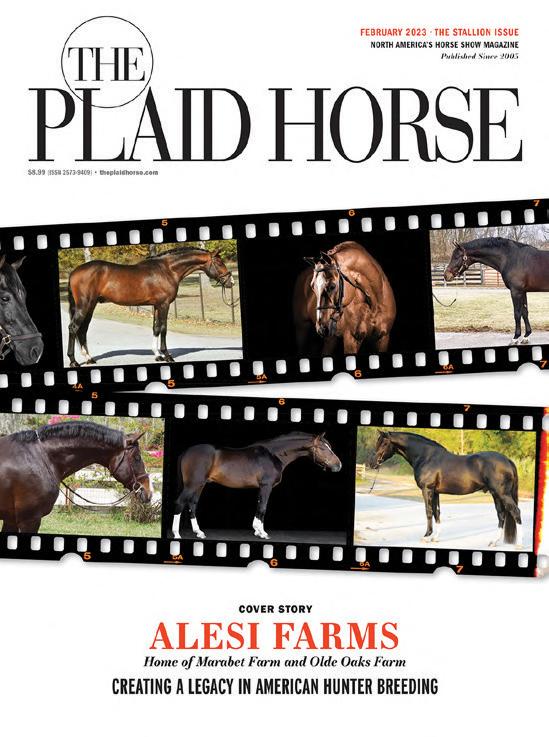
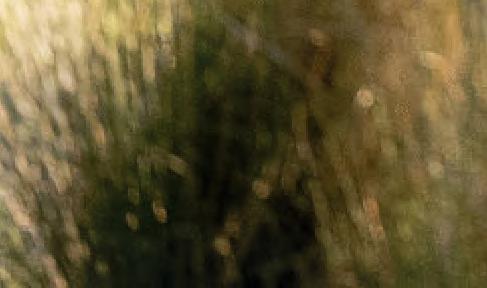
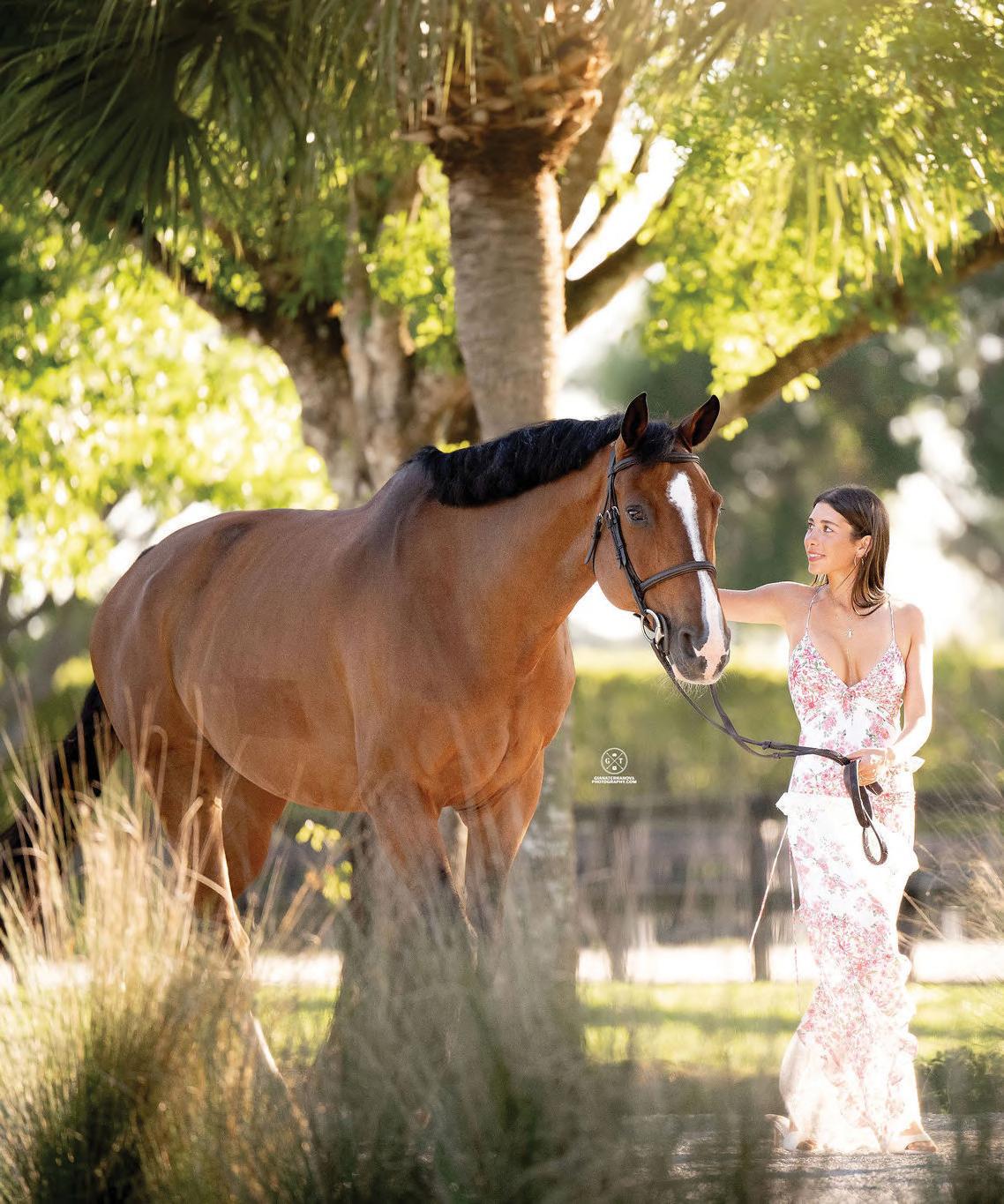
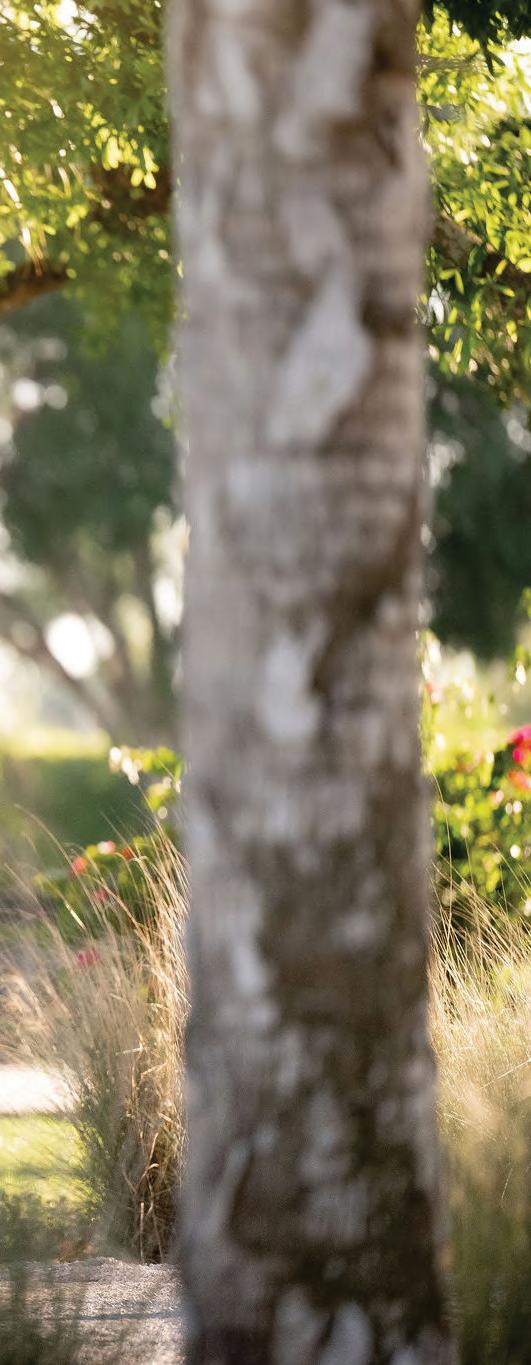
WORDS: PIPER KLEMM PH.D. AND MARLEY LIEN-GONZALEZ
PHOTOS: GIANA TERRANOVA PHOTOGRAPHY
IN HER FINAL junior year, Clara Propp has hung many accolades on the wall-an unprecedented three-time consecutive grand championships at Junior Hunter Finals, 2024 Individual Junior Rider Gold Medal at the North American Youth Championships (NAYC), and at the conclusion of a competitive 2025 WEF season, rising up the U25 ranks and establishing herself in the FEI system.
The Propp sisters, Stella, Juliette, and Clara, who all grew up riding together, shared a show ring, support system, and social media presence long before the term “influencers” became colloquially used in the horse world.
“It was really nice to be able to talk with my sisters and have them to lean on when I had a bad day at the show or if something wasn’t going to plan, which happens all the time. And then, on a more positive side, they would always be the ones to celebrate my successes with me, and vice versa.”
—CLARA PROPP
A SISTER BOND LIKE NO OTHER
Coming from a non-horse family in New York City, a chance pony ride at a birthday party inspired Stella to start taking lessons, which her younger sisters Juliette and Clara quickly joined.
The best part about riding together for the Propp sisters was spending time together. Clara says, “I was three or four when I started riding myself. It was really nice initially because we loved the horses and spending time with them, and then also loved being with each other.”
After school, on trips to the barn for lessons, the girls strengthened their bonds with each other and their parents. As the Propp sisters grew older, they helped each other navigate school, their social lives, and horses.
“I really don’t think I could have gone through school or riding without them,” says Clara of her two older sisters. “We had some of the same teachers in school, and they would give me tips on how to succeed in the class, which was immensely helpful. In general, they always gave me great advice because they have a couple more years under their belt. In riding, it was just so nice for me to have them as a support system because this sport can get a little bit crazy.
In Wellington, FL, where the Propps, their horses, and their trainer, Brianne Goutal, are based out of for the winter competition season, Stella and Clara can be seen buzzing around the Wellington International showgrounds to support each other at their respective rings.
“It was really nice to be able to talk with my sisters and have them to lean on when I had a bad day at the show or if something wasn’t going to plan, which happens all the time. And then, on a more positive side, they would always be the ones to celebrate my successes with me, and vice versa. We try our best to make it to each other’s classes because we know that’s something that’s really important to both of us.”
That support was crucial for Clara in late June of 2023, as she was heading into Junior Hunter Finals off of an extremely successful season with her long-time partner, Arabesque (Furstenball x Sir Donnerhall). Clara and “Annie” had claimed the Grand Champion title at Junior Hunter Finals in the 3’3” category in 2021 and out of the 3’6” group in 2022.
Says Clara, “I felt extreme amounts of pressure coming back to that show for the last time. Not from anyone. Brianne never puts negative pressure on me, and my mom’s very chill. I really don’t feel pressure from anyone on the outside, but I didn’t want to let myself down–and I didn’t want to do worse than I had done the year before.”
Annie and Clara did not disappoint. After executing beautiful rounds, they defended their
title for the third consecutive year–earning Grand Champion in the 3’6” division for the second time. After that, Clara was ready to hang it up.
“Something that’s really hard with success is that once you’ve reached the top, the only way to go is down. And that’s like all I felt. It worked out really well, but after it was over, I was like, ‘Okay, I’m ready to move forward and start something new that I haven’t had as much success in.’”
But Annie, now Stella’s ride in the Amateur Owner Hunters, will forever be cherished by Clara. “I’m so grateful for the time I’ve had with Annie, and I’m so lucky to have been able to have that much success with her at a young age.”
In the past three years, Clara has gone from no interest in the jumper ring to a string of current and prospective jumper talents. “I actually did not always want to do the jumpers,” says Clara, “I did not want to go fast. My first couple of years in the hunters, I was like, ‘This is what I’m going to do forever. I want to do the hunters professionally. I have no desire to do the jumpers.’ Then I felt a push to start something new and challenge myself.”
The adjustment to a different world with different rules was more welcoming than she had expected. “I feel a lot less pressure in the jumpers. I feel like, even if I have one or two fences down and the round was good, I walk away very happy,” says Clara, who often felt in the equitation and hunters that winning was all that mattered, even if that wasn’t the case.
“If I had a little mistake in the other rings, it would completely tank the score, and it made me walk away feeling not good enough and not happy about what I’ve just produced. Whereas in the jumpers, if I add a stride somewhere or get a little deep or a little long, I can still walk away feeling really good about the round.”
In October of 2024, after a season of showing at Indoors, Clara publicly announced on her TikTok account that she was shifting her focus solely to the jumpers, despite having one junior year of competing left.
Roughly halfway through that final year, Clara says, “I’m really happy about my decision to switch completely to the jumpers. I think it will also help me improve a lot just focusing on one thing, because at one point I was doing three rings at once, and that was super difficult.”
While balancing the three rings at once was a challenge, Clara is grateful for the well-rounded skills that come from competing in many different disciplines and is applying everything she knows to ride strong and confident jumper rounds.
“I’m really trying to work on improvising. For
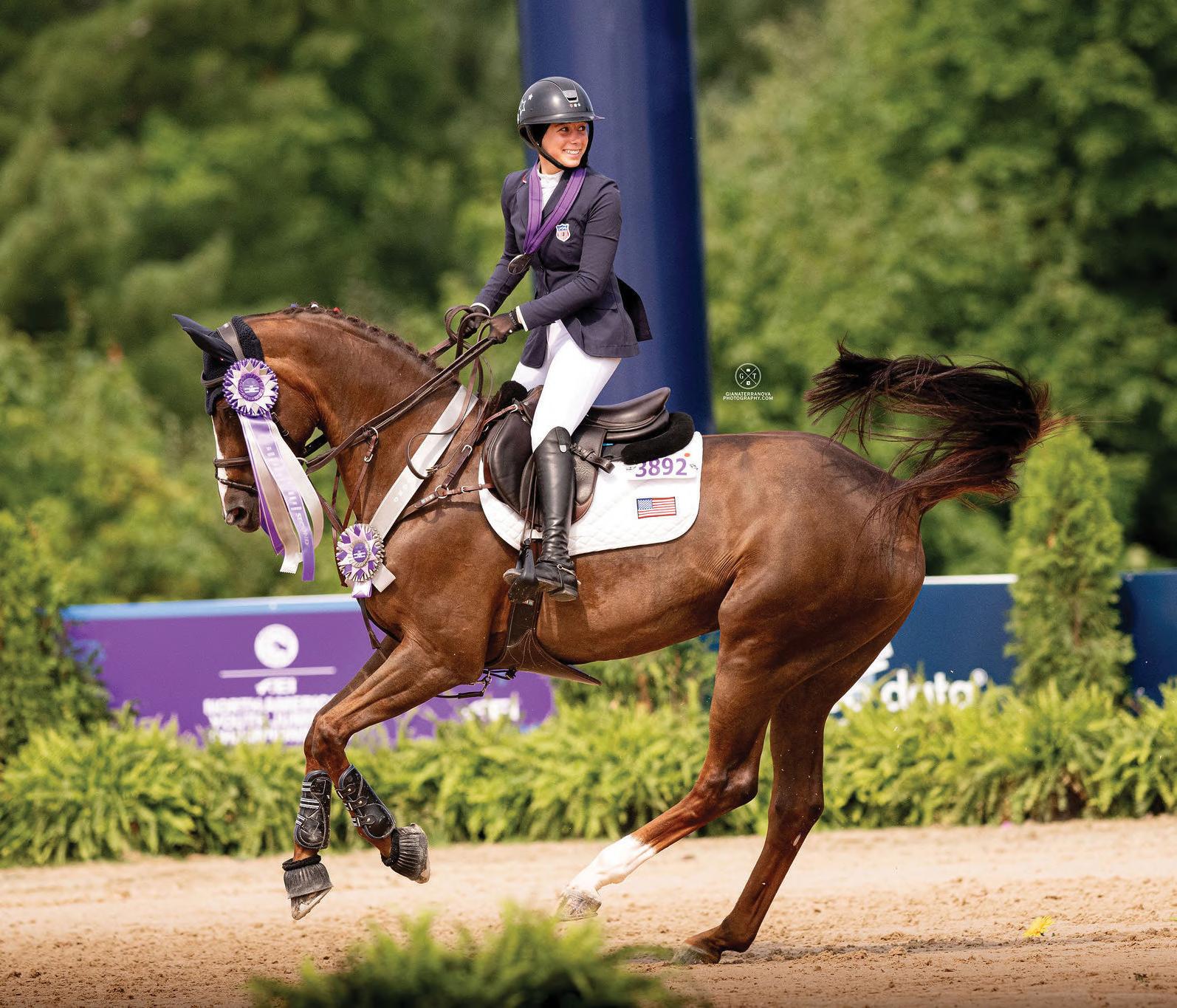
example, if my horse shifts really hard right in a right-leaded bending line, I can adapt to a new plan in that moment and leave out a stride. I think that improvising is so important in the long run. It’s such a good skill to have because, again, things don’t always go to plan, and to just be able to quickly change your plan could be the difference between a clear round and having four faults.
At home and when not showing, the Propps rarely school over jumps. At the encouragement of Goutal, who puts a lot of emphasis on the importance of flatwork, Clara takes a dressage lesson once a week. “You don’t always need to fix your mistakes while jumping. You can fix your jumping mistakes on the flat and with tools such as pole work and ground work.”
Clara also spends a lot of time getting her fitness to a high level outside of the saddle. She started taking pilates classes after hearing that it improves balance and core strength, and believes that strength training is not discussed often enough among female riders. Ultimately, she says, “The stronger you are, the better you’ll ride.”
Last May, in the $20,000 high junior jumper classic at the 2024 Devon Horse Show, with the winning time, Clara experienced a heartbreak rail
Clara and Cocolina (Conthargos X Papillon Rouge) or Coco on their victory gallop after winning the Junior Individual Final at NAYC in 2024
down at the last fence with Cocolina (Conthargos X Papillon Rouge) to finish second.
“That was a really amazing night. I always think that night classes at Devon are such a good experience and an amazing class that they offer. But last year specifically was very special. I left feeling very happy and accomplished because the jumpers just do that for me–even if there’s one mistake, I still feel very satisfied with the round overall.”
When she had the last rail down, the crowd sighed with her. “Devon is exceptionally special. The crowd just adds to the atmosphere. Especially in the night class, there are so many people watching–everyone’s kind of following along with you and riding along with you. It’s one of the only shows that has a crowd like that, especially for juniors, and I just think it’s really cool. It’s one of my favorite horse shows.”
It was also the start of an amazing season for Clara and “Coco”. The pair later went on to capture the gold medal in the Junior Individual Final of the North American Youth Championships (NAYC) at Traverse City Horse Shows in August 2024.
Of Coco, Clara says, “I can really rely on her. I know I just have to do my part because she’s literally always doing hers. She’s always trying 10 out of 10 over every single jump. It took me a little bit to get to know her because she’s a little quirky, and the special ones always are. But once we figured it out, we really trusted each other, and it really showed at Devon last year. She’ll always be a very special horse in my career.”
When competing in the pony divisions together, the sisters formed the face of The Propp Ponies, or theproppponies, as they’re known on Instagram–Bio line: some of us never outgrow the “I love horses” phase.
Now, though only Stella and Clara ride, they remain prominent members of the industry and very active on social media. Clara has over 60 thousand followers on TikTok, where she posts clips of her horse show lifestyle with fitness, health, and routine day-in-the-life focused videos.
“I’m really grateful for my TikTok account. It’s a lot of fun for me, and I’ve met a lot of really cool people and been able to work with really cool brands and collaborate with other really amazing, talented, and nice riders,” says Clara. Though criticism is something she has accepted as part of sharing her life online, when faced with harsh comments, Clara appreciates the overwhelming support and kindness she gets from others.
“I’m just trying to do what’s best for me and do what I think is best and have a really positive platform.”
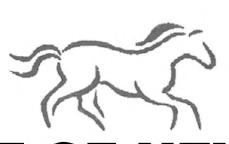
WE OFFER:
Container service to suit your needs
Weekly, biweekly, and monthly service
Various container sizes available
Existing manure pile cleanups
Special event containers
Reasonable rates and reliable service
PLEASE CALL US FOR
Serving Connecticut (Litchfield & Fairfield County), New York (Lower Hudson Valley), and Northern New Jersey
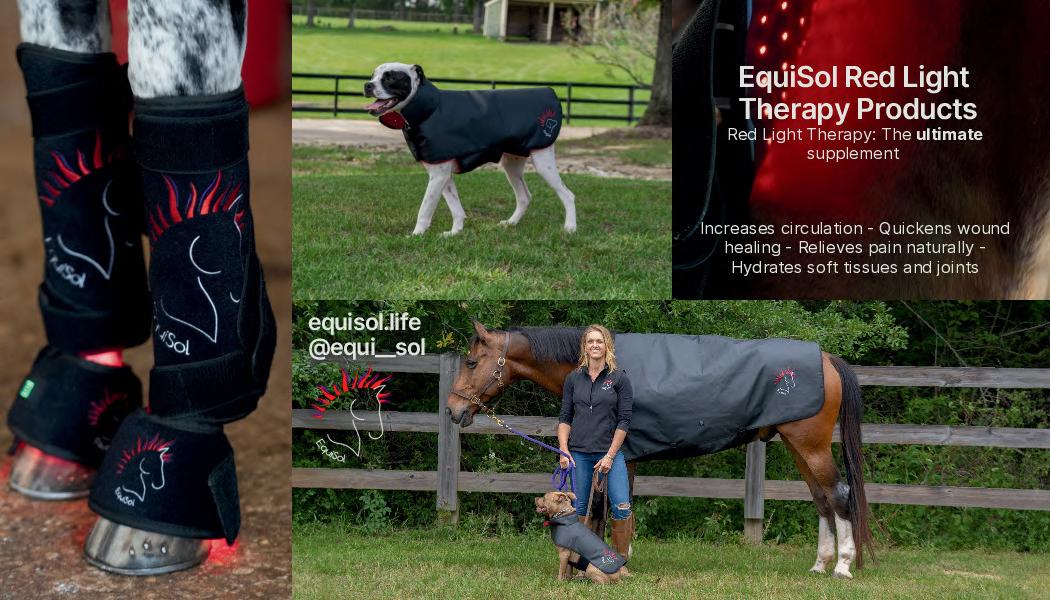
BOOK EXCERPT




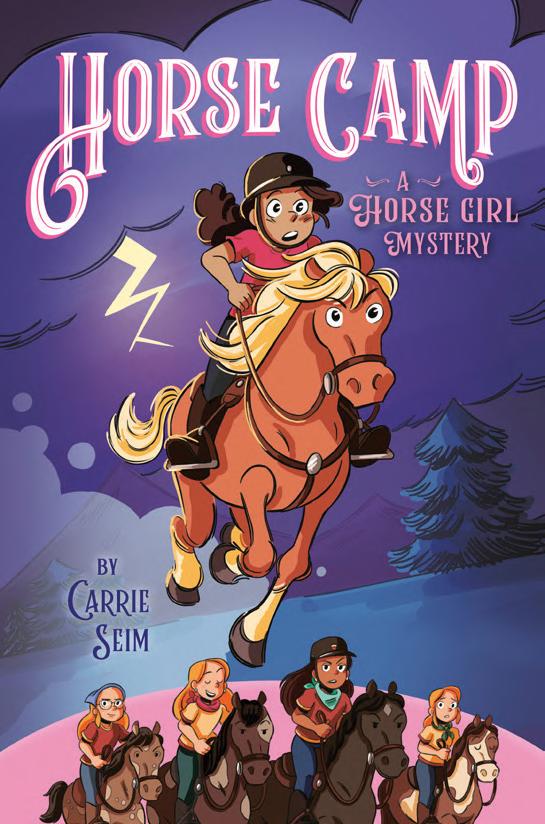
Excerpted from Horse Camp by Carrie Seim. Copyright © 2025
MY HANDS CLING tightly to Bandit’s reins as we bound down the forest path, his swi hooves carrying us farther away from Juniper Ranch.
Galumph, galumph, ga—booooooooom.
Bandit’s ears swivel back, and he screeches to a halt. A deep rumble growls in the distance.
“Too much alfalfa again?” I whisper. Bandit tosses his axen mane, clearly unimpressed by my joke.
“There’s no reason to be nervous, boy,” I say, the words tumbling out of my mouth.
I scan the ground around us with the ashlight my dad forced me to pack. (“Why do I need to bring a ginormous ashlight to summer camp when I already have a phone??” I’d whined. “You’ll thank me later, Willa,” he’d sighed. Ugh, please don’t tell him his dad-tuition was right!) Sweeping the beam of light across the trail, I search frantically for the hoofprints I know must be nearby.
Bandit, my beloved steed for the summer, responds with an indignant p
“Yes, I know we’re not supposed to leave camp. Especially a er dark. Especially alone. Especially without telling anyone. Especially—”
BAAA-BOOOOM!!
We both nearly leap out of our skin as a deafening clap of thunder rattles across the canyon. I feel the muscles in Bandit’s neck tense; he paws at the ground as his ears prick sharply forward, like a bull’s—all sure signs he’s about to spook. I lean forward to stroke his crest, trying to soothe him.
“Especially when a storm might be coming,” I breathe, attempting to sound calm. (Even though I absolutely, positively do not feel calm!) I tuck my ashlight away, then steal a glance at the herd of clouds that are now stampeding across the full moon.


Your key to success in the hunter and equitation ring, from one of the sport’s classic judges and competitors.
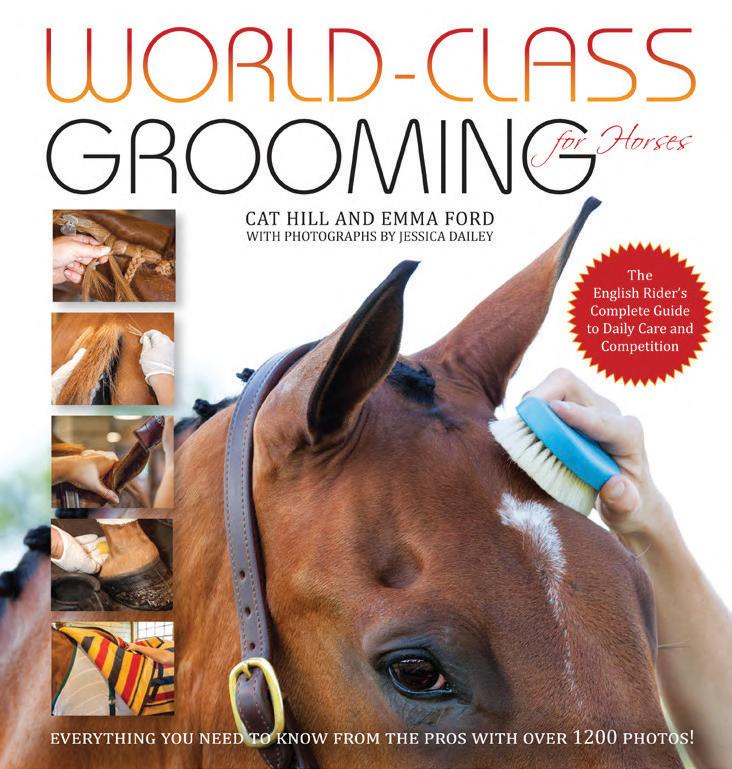

The ultimate modern-day guide for all riders who want their horses to look and feel their best.

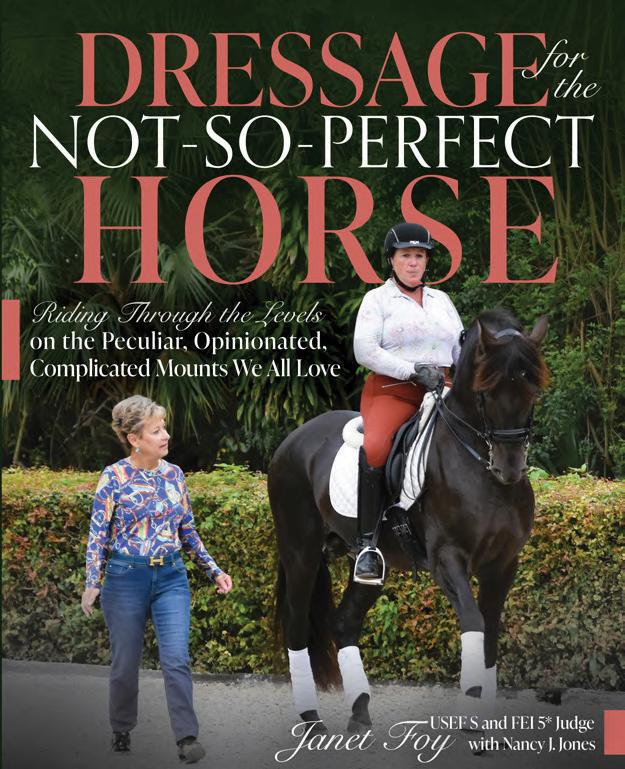
A 5* dressage judge’s practical ways to learn to love your horse’s idiosyncrasies and turn weaknesses into strengths.
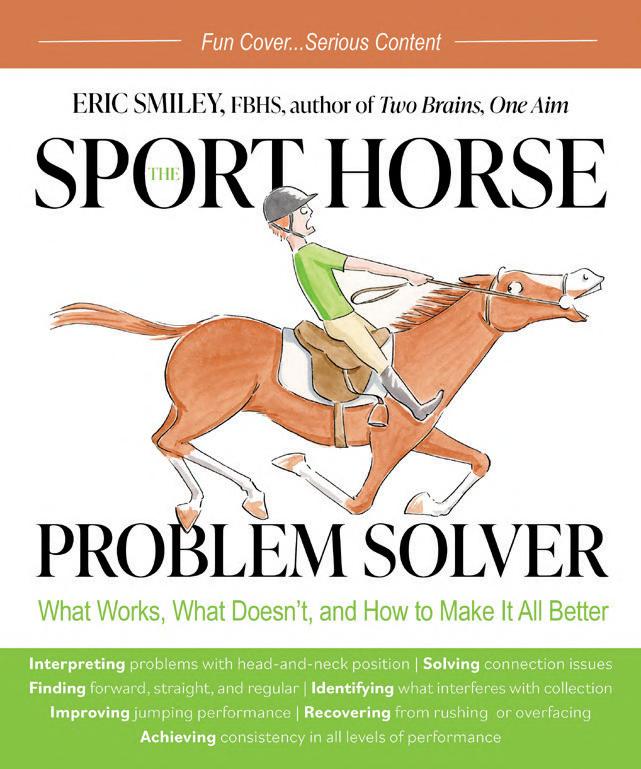

A simple system for figuring out and fixing what’s wrong with a horse’s performance.

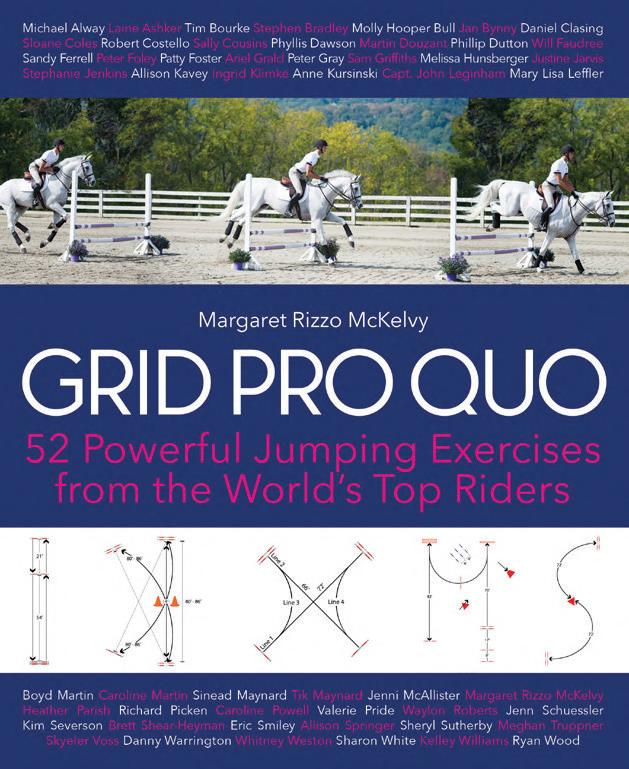
Favorite lessons from the pros to improve your horse’s adjustability, connection, and performance over fences.
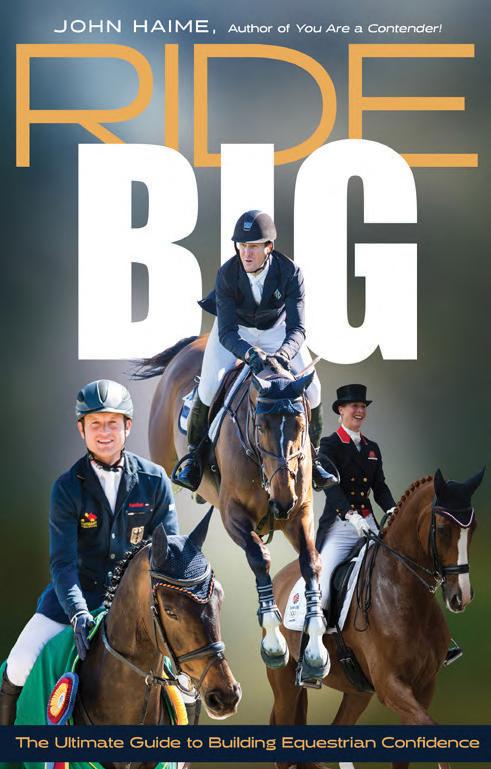

An easy-to-implement framework proven to grow rider confidence, tested by the world’s leading equestrian athletes.
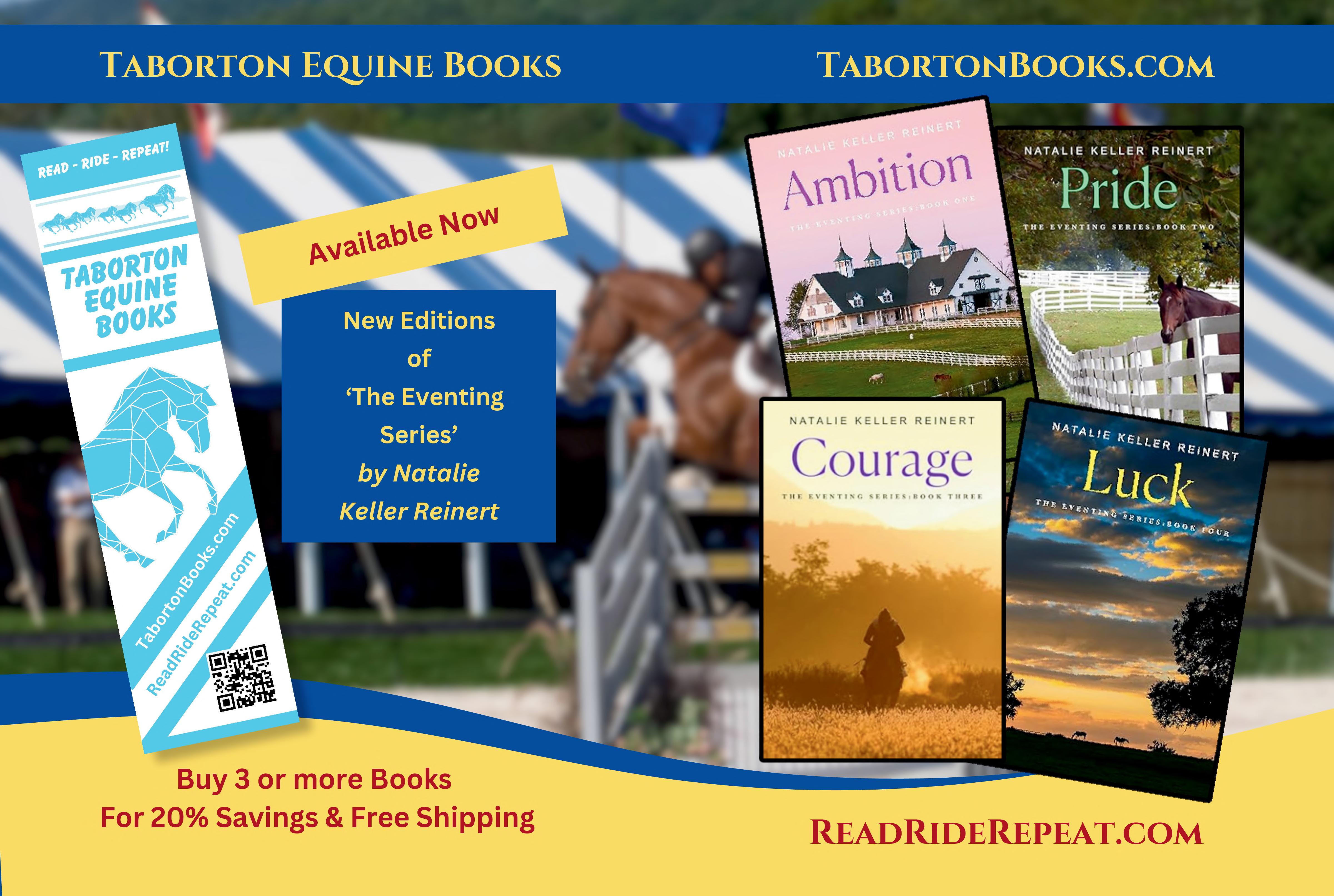

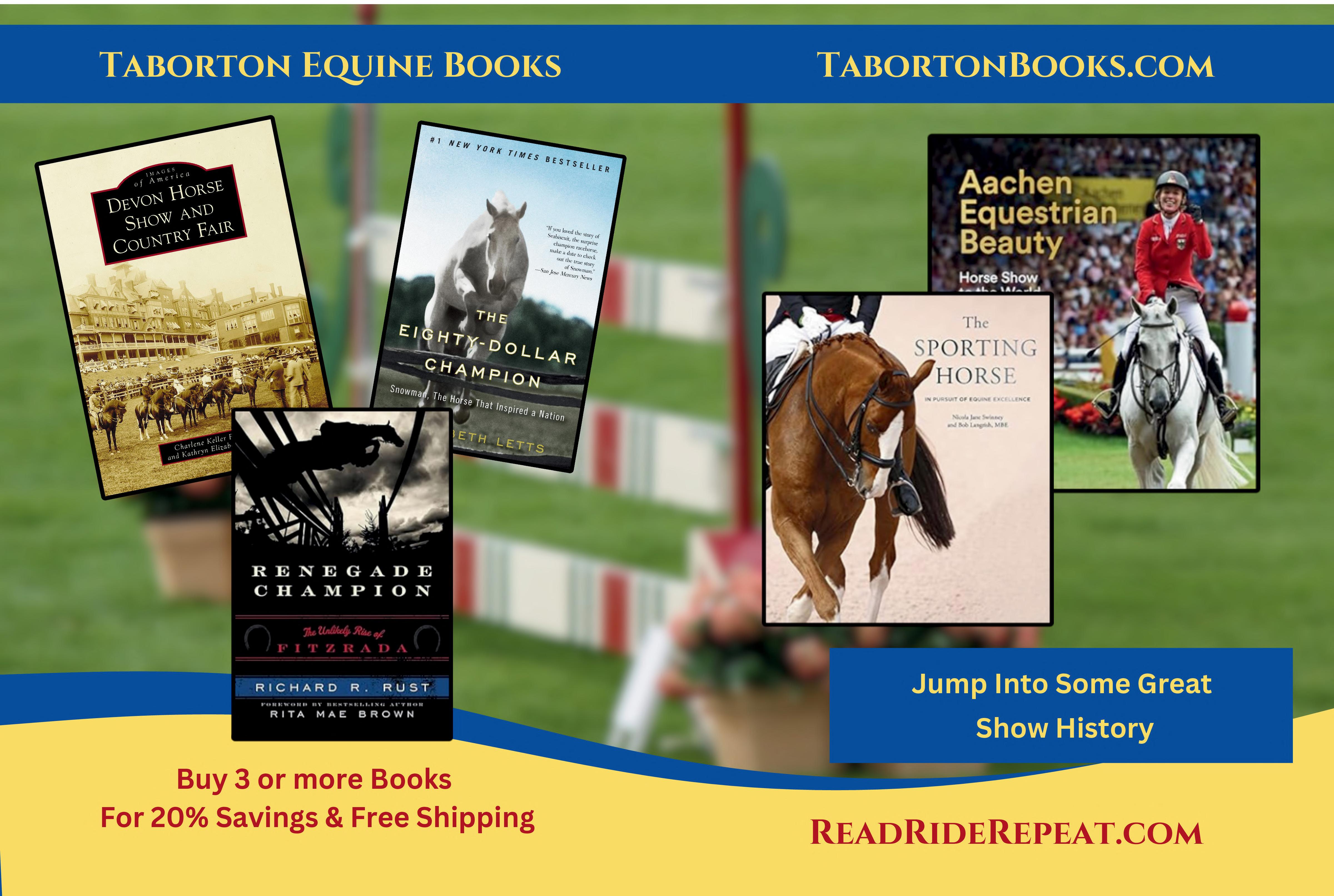





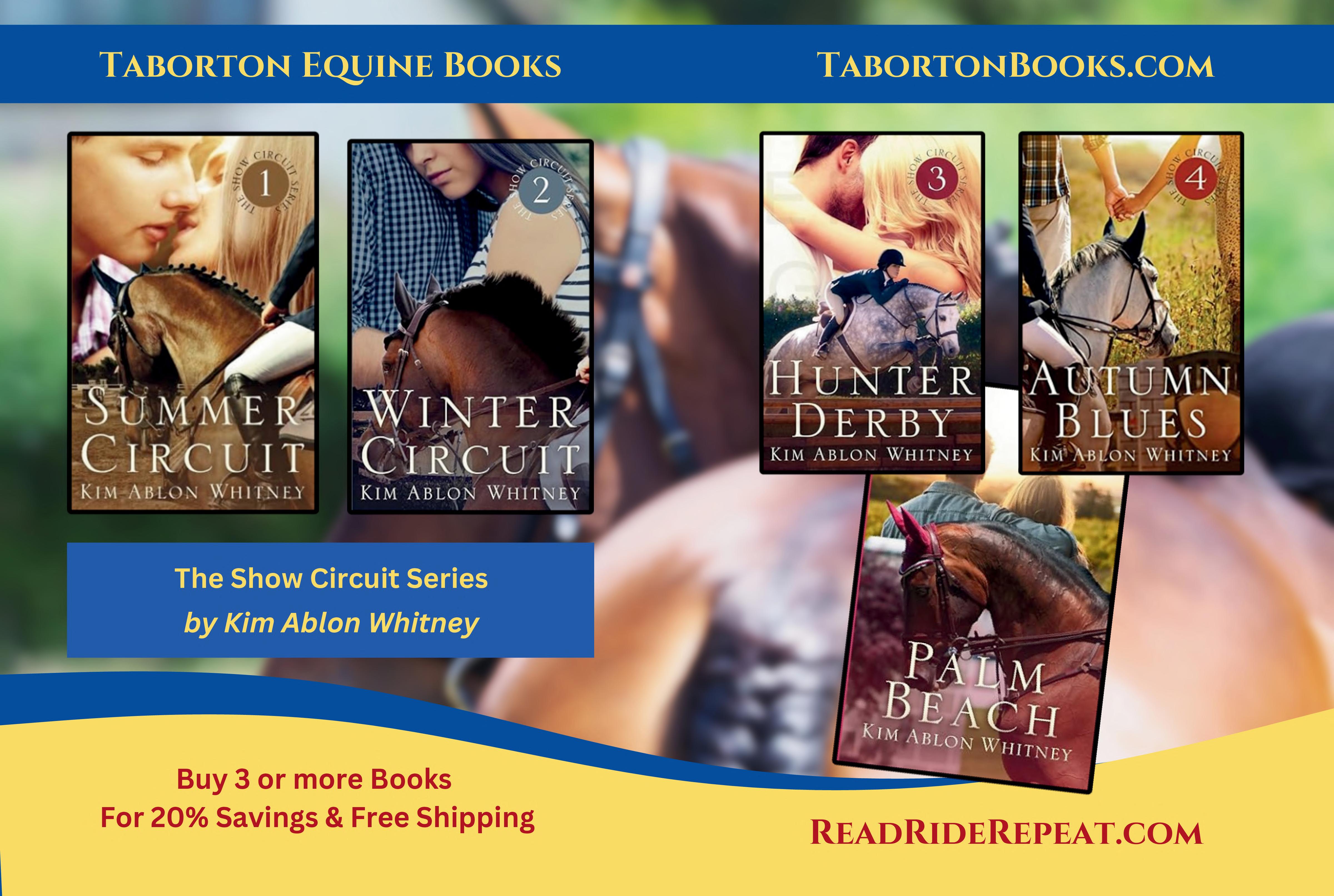

BY JOYCE KRAMER
An excerpt from the recently published book Stable Core Training by certified personal trainer Joyce Kramer.
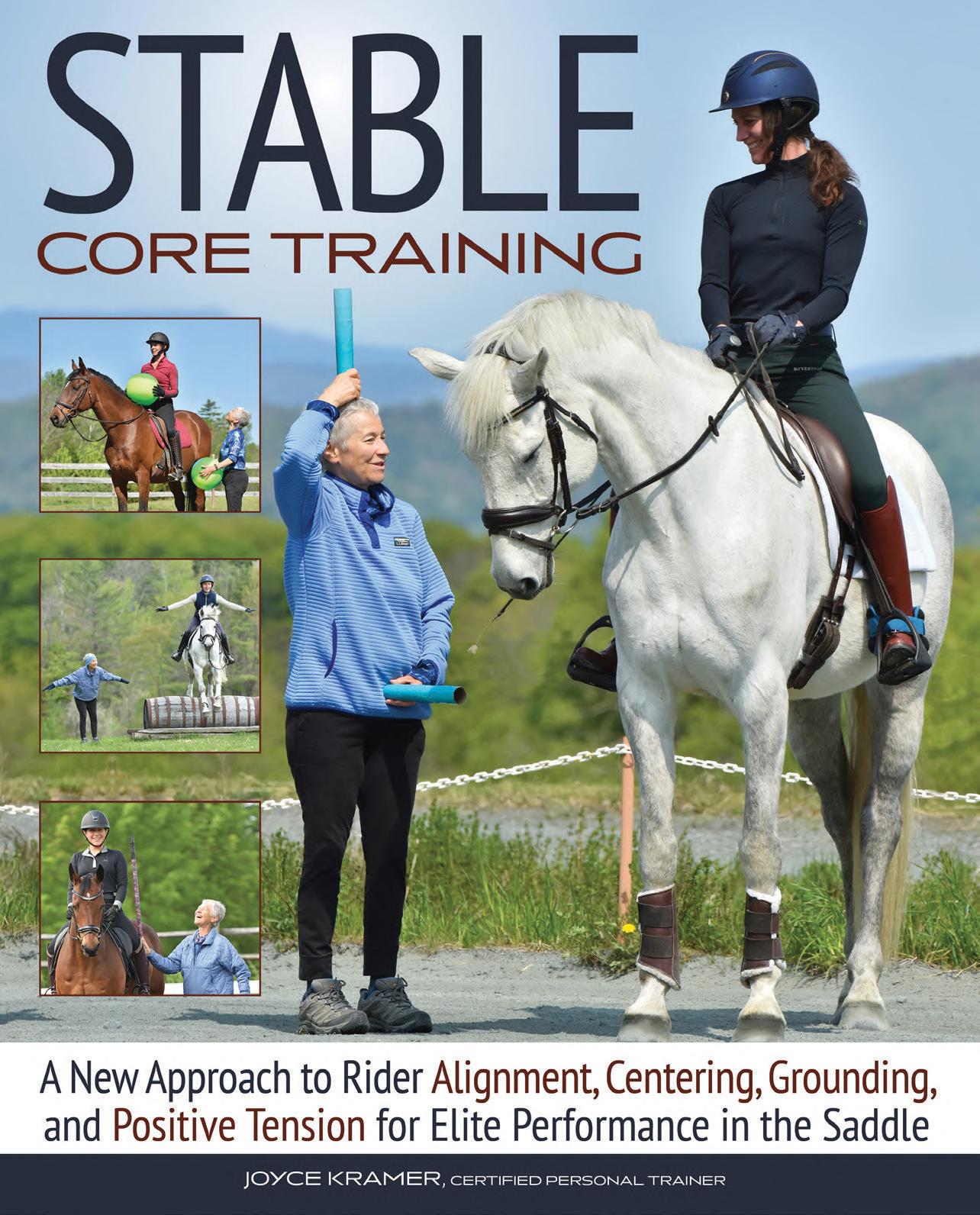

THE SHOULDER COMPLEX
Our shoulders are extremely mobile and struggle for stability. Instead, they tend toward hypermobility as the shoulder muscles, scapulae (shoulder blades), and connective tissue attempt to stabilize them in their sockets. Contrast that to our hips, which have the benefit of being stabilized by the large bones of the pelvis. The muscles surrounding the scapula and shoulder that provide the area with some stability are collectively known as the rotator cuff. These muscles are susceptible to imbalances, injury, and pain. Shoulders are further challenged by our daily activities, which tend to recruit two large and powerful muscles—the pectoralis major (chest) and the latissimus dorsi (sides of the back). The “lats” hook from your back through your armpits and onto your upper arms. When your arms are at your sides, the lats are in their shortest position. When
your arms are stretched overhead, the lats are lengthened. If you consider how often you reach overhead as compared to how often your arms are at your sides, it is not surprising that the lats are apt to get short and tight, pulling the shoulders forward and down.
The shoulder complex (collarbones, shoulder blades, and tops of the arm bones) hangs from suspensory attachments to the head and neck. If you visualize a strong attachment between the shoulder girdle and the head and neck, you will position this area naturally and properly (fig. 16.1). Although the shoulder girdle eventually connects to the spine through the sternum and rib cage, there is no solid spine connection. Note that the shoulder blades can rest lightly on the rib cage, but they don’t sit or sink upon the ribs. It is important to establish this “hanging” notion of the shoulder blades.



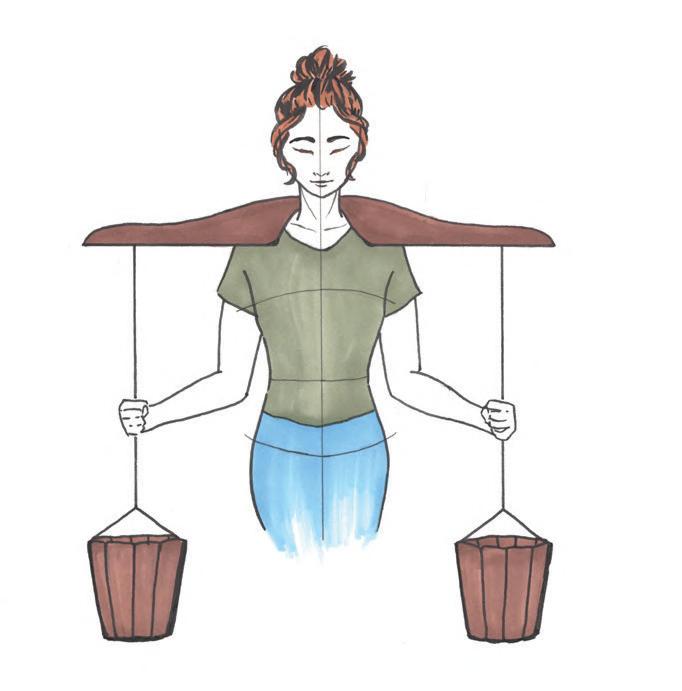
The shoulder girdle is “hung” like a yoke along the top of the thoracic area. The horizontal wooden portion of the yoke represents the collarbones. The shoulder complex is comprised of collarbones, scapulae (shoulder blades), and tops of the arm bones (humerus)

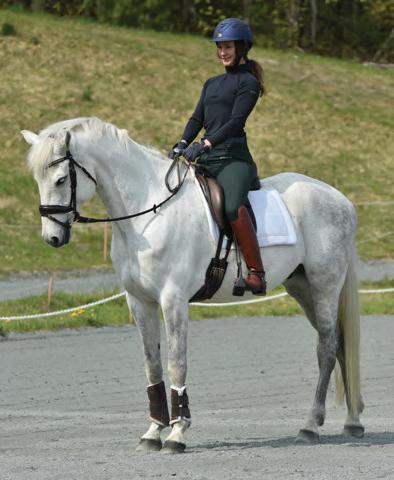
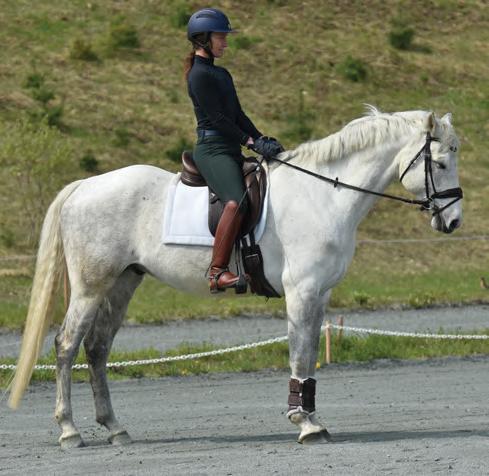
This rider displays a droopy posture, and her shoulder complex is not “hung” from her head and neck (A). She is excessively weighting her horse’s forehand. If you need any proof of the horse’s thoughts, just look at his expression! When the rider overcorrects and “throws” her shoulders back, bringing them behind her ears, she is unstable in her balance, and her spine will suffer—not to mention the ill effects on her horse’s back (B). Correct alignment of the shoulder girdle is accomplished when the head and neck gently move rearward, drawing the shoulder blades rearward as well (C)
If you deliberately hold your shoulders back the “time-honored way”—rolling your shoulders rearward as you stick your chest out in front of you—it sets off a cascade of negative effects on your position in the saddle (figs. 16.2 A–C). First, you throw yourself out of alignment by positioning your shoulders behind your ears. This action also increases your lower back curvature, putting pressure on your spine and sacrum and dissolving their stability and
shock-absorbing qualities. It also tends to slide your legs out of position, jeopardizing your balance. Yikes! So, what to do? You can start by reviewing the last chapter, in which I explain proper neck and head position. But as a quick reminder, when your head is directly over your lengthened neck, you will feel the shoulder blades automatically, softly squeeze together—that is your litmus test for proper shoulder placement. Note this scapular squeeze is not a deliberate action.
Your arms should connect to your horse’s mouth such that you can feel in a sensitive, subtle fashion his mood, attention, acceptance, level of vibrancy, and his degree of love for what he is doing. Riders should strive to feel these qualities energetically, rather than in a tactile fashion. When you are “plugged into” good alignment and are connected to your horse’s mouth with sensitivity, you can read his every move before he makes it, and he can read yours. Keeping your elbows soft and elastic is key to allowing this action. If you start with a neutral pelvis, neutral spine, lengthened neck, and properly aligned head, you will set the stage for excellent hands. Good hands are always supported by an elastic, stable back. If I could pick a one-word description of desirable hands for riding,
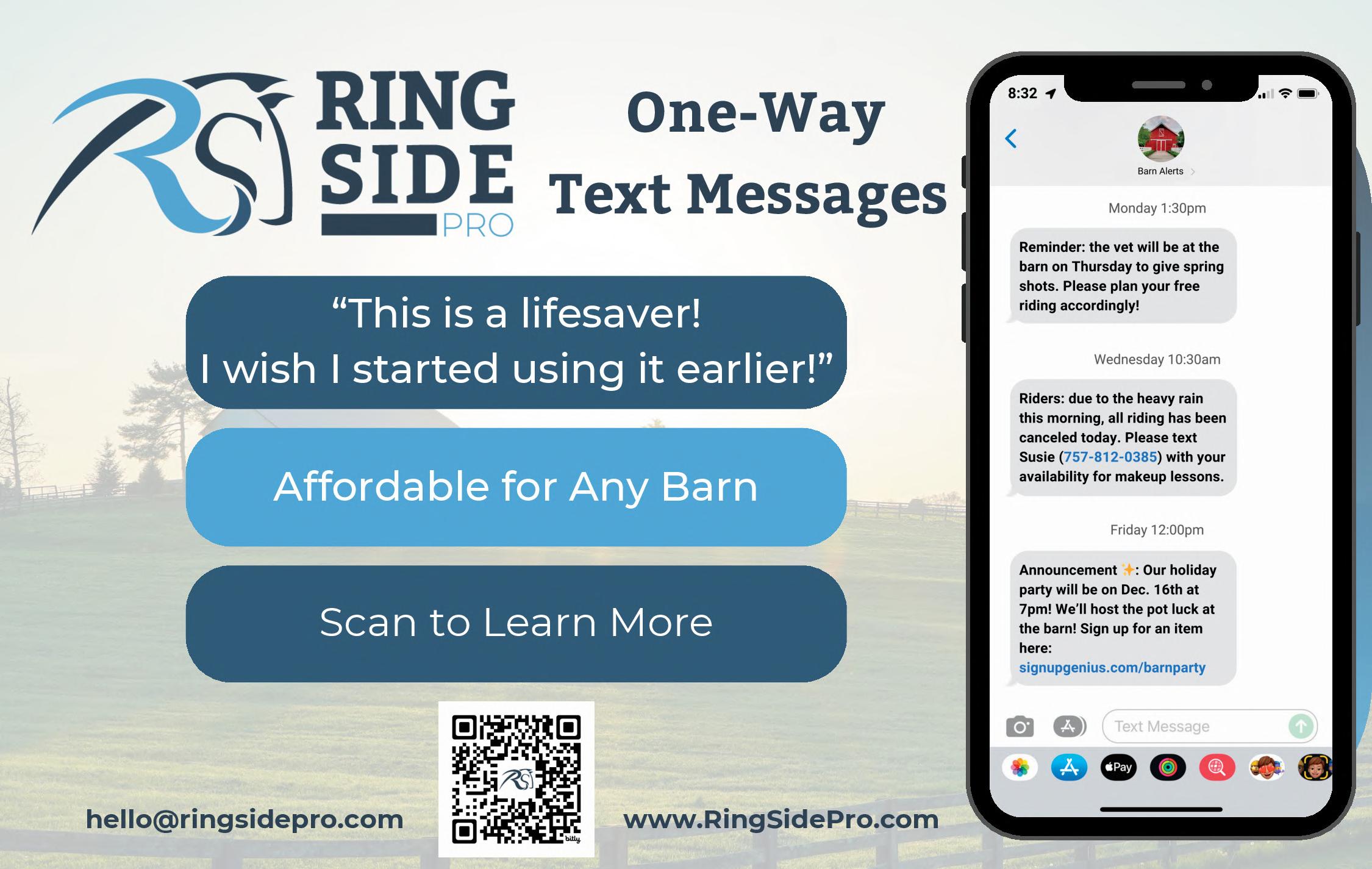
I would select the word receiving. The arms and hands receive energy from the horse; using the hands in any way that blocks the energy flow from the horse has huge—and potentially disastrous— consequences. If there is a lax, “fuzzy” connection, both you and your horse will wonder if the other one is there. If there is a super-tight connection, both you and your horse will be stiff and tense from the input overload. Sally Swift, author of Centered Riding and a master of riding-related imagery, suggested the rider hold the reins like two baby birds you want to keep gently contained in your hands. This image has helped many riders to establish clear, friendly, and inviting communication with their horses. This positive connection allows the horse to understand your rein aids, and you will be able to understand his reactions.
To find a desirable level of grip strength on the reins, visualize your arms as short lengths of garden hoses, with a spray nozzle held in each hand. If you
Our elbows have the critical role of connecting the horse’s mouth to our seat and back. The rider’s elbows should be elastic. I often ask my riders to envision the reins as if they attach directly to the elbows. This image helps riders stay fluid in their arms and allows a more subtle feel of the horse’s mouth and energy.
It can be a bit of a challenge to release tension from elbows. Modern life requires the use of the biceps muscles on the front of our upper arms. But our triceps (located on the back of the upper arm) should match the strength of the biceps. An easy and effective way to weave some triceps work into your daily routine is to deliberately swing your arms behind you more when you walk.
grip the nozzles too softly, you will only get a few drips of water from the nozzle. If you have a superhero grip on them, you will get a strong blast of water. But when you have a middle-of-the-road, “educated,” grip on them, you can get a steady flow at your desired level of water pressure any time. Your horse will feel the most secure with the educated grip—and he will appreciate it!
For riders who struggle with hand issues, I employ a variety of techniques. I have used Braille boards to increase the sensitivity of their fingers by teaching students to use each of their 10 fingers to read the boards. I’ve also had riders hold water balloons in their hands along with the reins, pretending the balloons are Sally Swift’s imaginary baby birds. Some riders have found improvement by rolling small bouncy balls over the palm and back side of each hand to restore and freshen the fascia.
You can give your shoulders, arms, and hands a natural workout by hanging from a beam or tree branch a few times a day. Work up to being able to swing while hanging! Or try some of the following exercises instead.
SHOULDER/ARM/HAND EXERCISE 1: KITCHEN COUNTER STRETCH
As the name implies, Kitchen Counter Stretch is easy to practice at home—but lots of other solid surfaces between waist and chest height will also work. This exercise is a good way to lengthen tight muscles in the chest, shoulder, and back. It can be done either as a resistance stretch (with steady pressure), or you can do tiny bounces for a ballistic effect.

Step One: Place your hands on a counter or other solid surface (like a jump rail!), then back up until your arms straighten.
Step Two: On an exhale, hinge at the hips, dropping and releasing the upper torso.
Step Three: Slowly turn your head to each side, gazing off toward the horizon (fig. 16.4).
SHOULDER/ARM/HAND EXERCISE 2: SCAP PUSHES
Scap Pushes teach the shoulder blades how to work properly with the rib cage. This harmony translates into good self-carriage of the rider’s upper torso in the saddle.
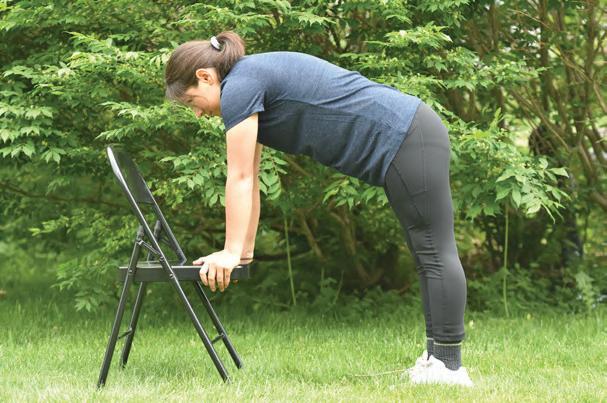

Step One: Hip hinge and place your hands flat on a solid surface like a chair (fig. A). Keep the knees slightly bent. Choose a height to lean on that feels comfortable to you.
Step Two: While keeping your arms straight, push down into the chair until you feel your torso rise higher toward the ceiling (fig. B).
Step Three: Sink the torso back to the height of Step One and repeat the exercise to fatigue.
Stable Core Training is published Trafalgar Square Books, TrafalgarBooks.com

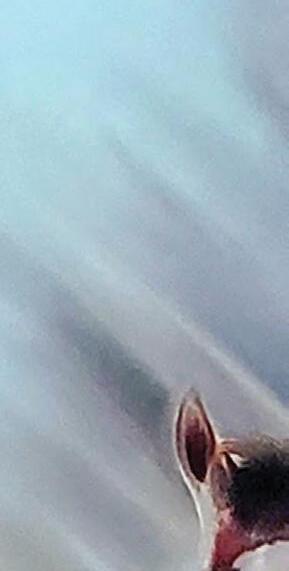




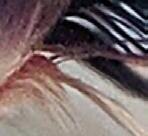
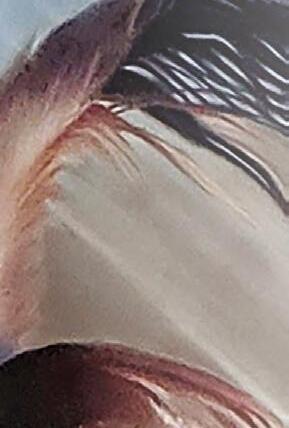





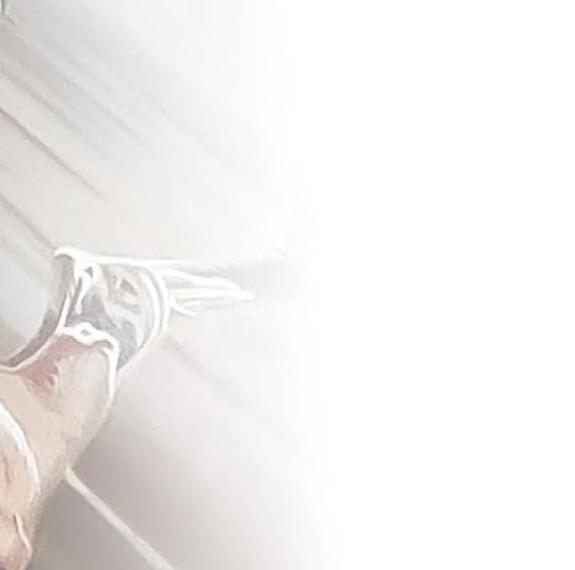
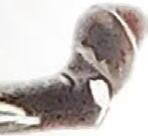





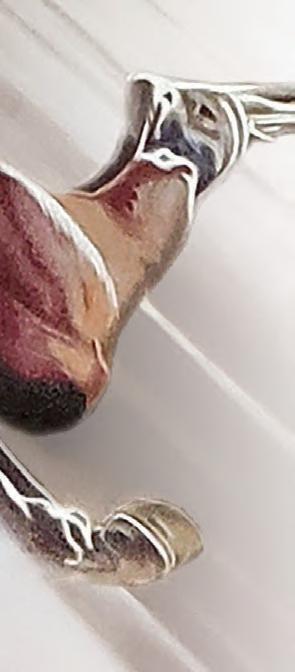
Eastern States Exposition
• An Unparalleled Educational Program.
• The Largest Horse-Related Trade Show in North America.


• The “Marketplace” featuring quality consignments for horse & rider.




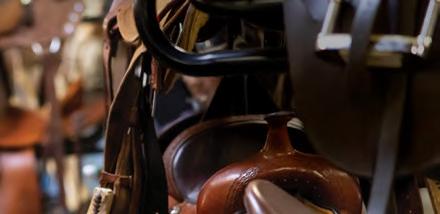
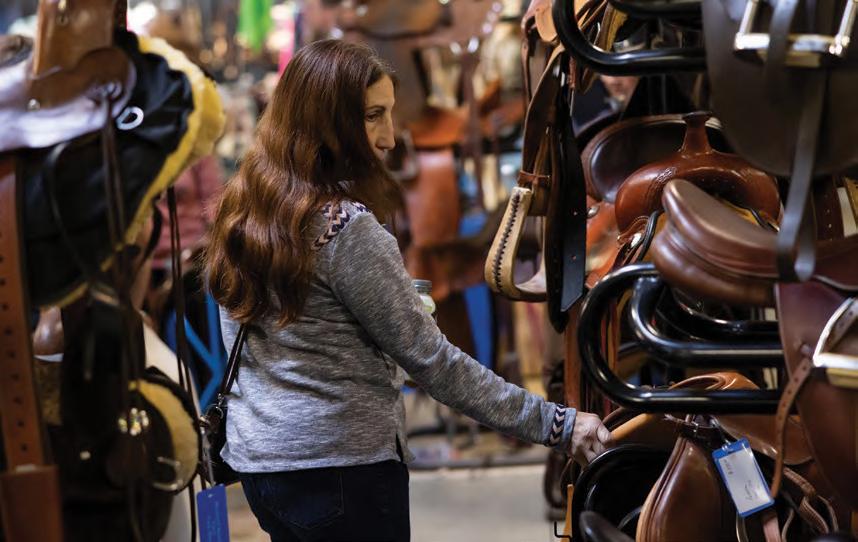
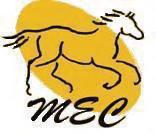
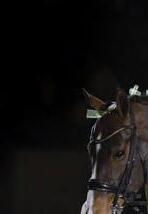


• The Fantasia (sponsored by Myhre Equine Clinic) — Equine Affaire’s signature musical celebration of the horse on Thursday, Friday and Saturday nights.
• Breed Pavilion, Horse & Farm Exhibits, Horses for Sale and Demonstrations — Enjoy meeting horses of all shapes, sizes, breeds, colors, and disciplines!
• Equine Fundamentals Forum — Educational presentations, exhibits, and activities for new riders and horse owners, young & old.
• The Versatile Horse & Rider Competition (sponsored by Chewy) — A fast-paced timed and judged race through an obstacle course with $5,500 at stake!
• Breed Bonanza (sponsored by Sentinel by Kent and Blue Seal) — A unique under saddle class showcasing the best features of horses of all breeds.
• Adoption Affaire — Find and adopt your next horse at the Adoption Affaire.
• Youth Activities and much, much more!
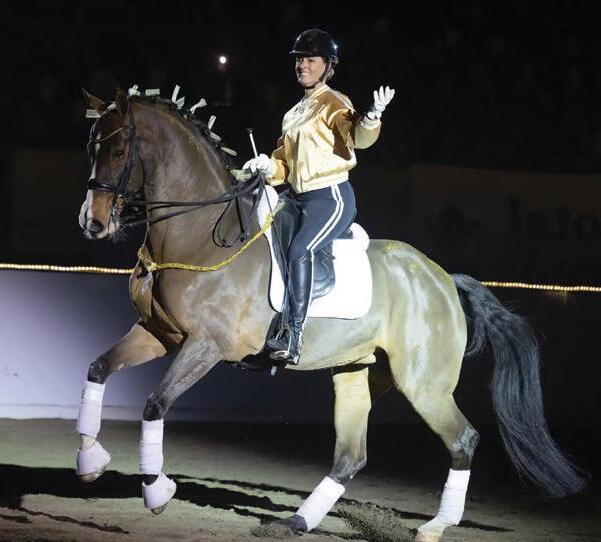

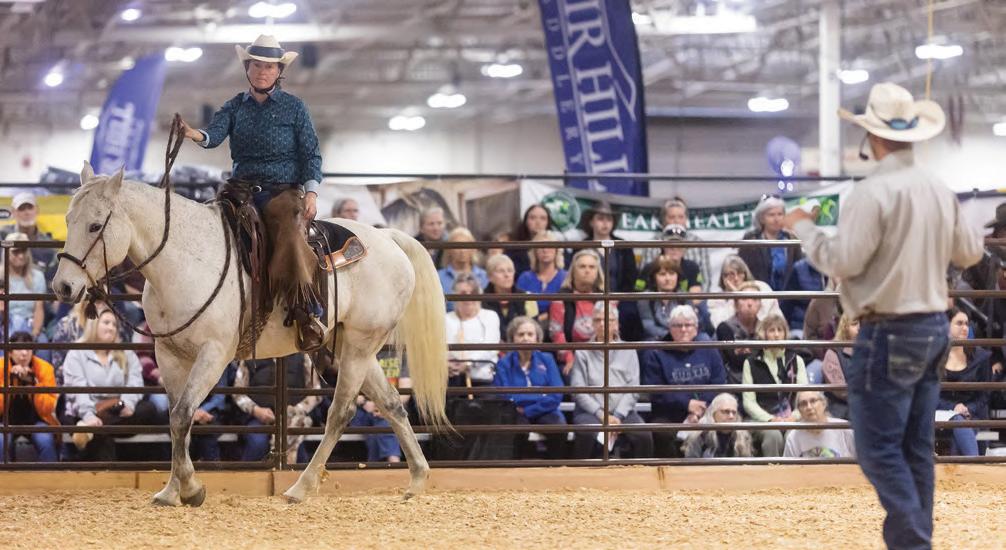





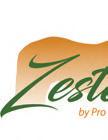
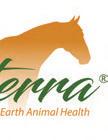

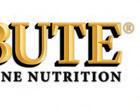
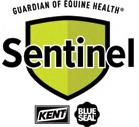
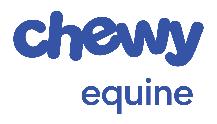
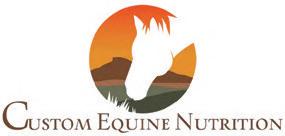
STATUS: Junior PROGRAM: Lifestyle Show Stables TRAINER: Crystal Young
As a horsewoman, I am most proud of … my horsemanship. I understand how much our horses do for us, and never blame my horses. To me, horsemanship is anything from making sure they have clean bits in their mouths to correct riding in the ring. • As a horsewoman, I would most like to improve … my understanding of the way my horses’ brains work. My goal with every horse I get on is to understand and adjust to the way they’re thinking that day as quickly as possible. I want to understand more about why a horse may come out nervous and tense so I can relate and understand what I need to do to help them come back to a calm, relaxed place. • Something I always do when preparing to show is … is get my horses out of their stalls. Whether it’s grazing, hand walking, or flatting, if I have time, I will always try to get the horses out of their stalls before showing. It’s important to let your horses loosen up a little bit before they have to go to work, and it’s mental preparation as they’ve been in their stalls for hours. It’s also great to get a sense of how your horse is feeling in case you need to adjust pre-show plans.
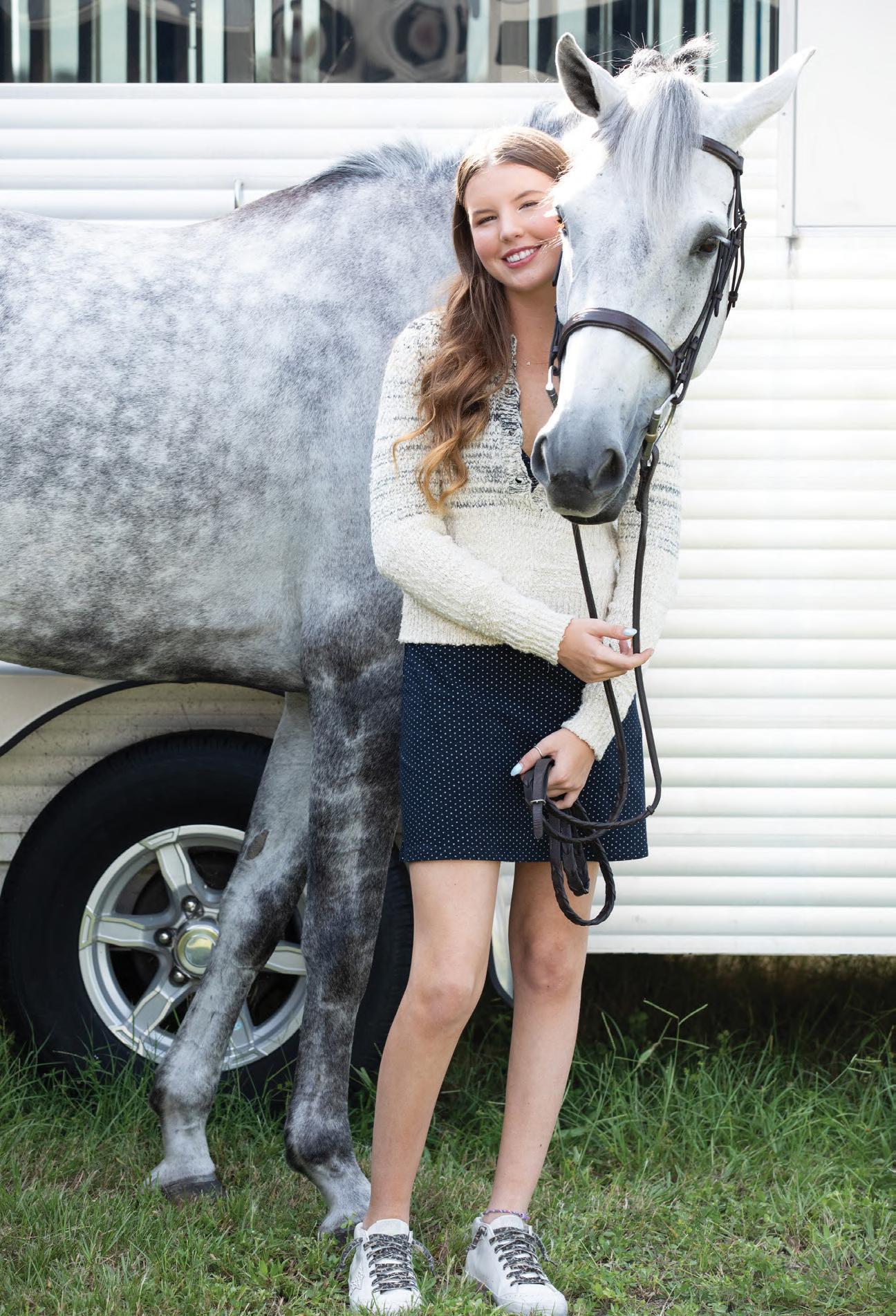
my trainer, Crystal Young.
She’s such an amazing horsewoman in and out of the saddle, and I really look up to her.
• One thing I never take for granted is …the people around me – parents, trainers, and grooms all do so much to get riders in the ring, and I think it’s important to always be grateful and help out whenever you
can. The people at Lifestyle Show Stables truly are family to me, and we always have each other’s backs. • My best piece of advice for younger riders is ... that it gets easier. Just like posting to the trot

seemed so hard at first and now it’s something you don’t even think twice about, everything else will become simple eventually as well. Whether it’s riding anxiety, a bad habit, or a class seeming out of reach, everything becomes easier over time, and you have to trust the process and your trainers. • I’d be lost without... MTM Grateful. He has taught me so much and is always the ride that I look forward to when I am having a hard day at the show. I know I can get on him and have fun. • The best part about living in Ocala is ...is the land. At the farm where we rent stalls there is approximately 40 acres that we can ride out on, and it’s a nice mental break for the riders and horses.
• I’m a sucker for … greys. Over half the horses we’ve had have been grey, and I’ve loved every single one!
• On Mondays, you’ll find me … in bed. I’m usually trying to catch up on sleep and school after a long week.
• My favorite personality trait for a horse to have is... to be cuddly. I love a horse that I can love on, and that loves me back.
I’ve found that being able to bond with a horse outside of the ring majorly translates to the show ring, so when I find a horse that wants its head to be in my lap, I love it. • In my barn routine, something I always do is…clean bridles. I find cleaning tack to be a good opportunity to reflect on my day and think about what I need to do to prepare for tomorrow.
• My absolute favorite show is… the Devon Horse Show because… My first real show horse, Central Park West, had gone to Devon before I had him, and I always watched videos of him there and thought he was so big time for qualifying. Last year, to be able to qualify my horse MTM Grateful was a giant accomplishment for me since I always looked up to horses and riders that made it to Devon. The show atmosphere is also super fun with the fair, special events, lemon sticks, and beautifully decorated rings. • My favorite thing about this sport is ...the horses. To have the privilege to work with these incredible animals every day is truly a blessing and my favorite thing about being an equestrian.
MY MOTTO IS
(where our barn name came from). Riding horses is a way of life!


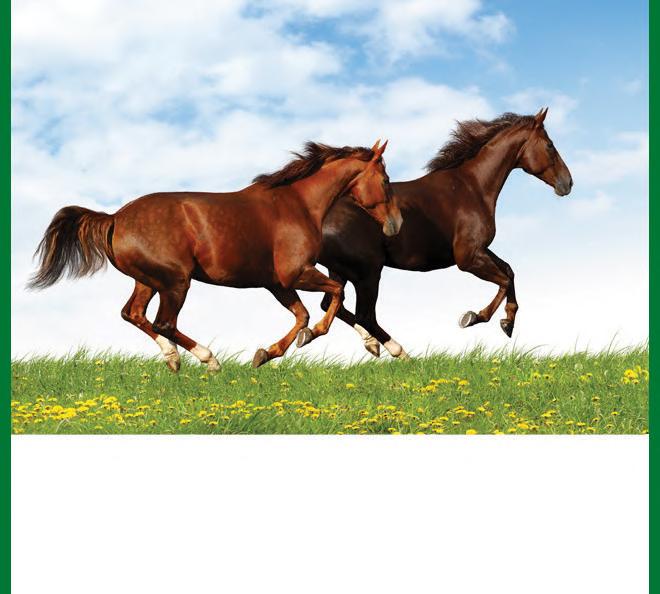







APRIL 2025 • BASEL, SWITZERLAND
